Colon cancer gene expression signatures and methods of use
Harkin , et al. Fe
U.S. patent number 10,196,691 [Application Number 13/981,601] was granted by the patent office on 2019-02-05 for colon cancer gene expression signatures and methods of use. This patent grant is currently assigned to ALMAC DIAGNOSTICS LIMITED. The grantee listed for this patent is Max Bylesjo, Julie Clarke, Timothy Davison, Vadim Farztdinov, Denis Paul Harkin, Robert James Holt, Richard Kennedy, Peter Kerr, Vitali Proutski, Claire Trinder, Andreas Winter. Invention is credited to Max Bylesjo, Julie Clarke, Timothy Davison, Vadim Farztdinov, Denis Paul Harkin, Robert James Holt, Richard Kennedy, Peter Kerr, Vitali Proutski, Claire Trinder, Andreas Winter.

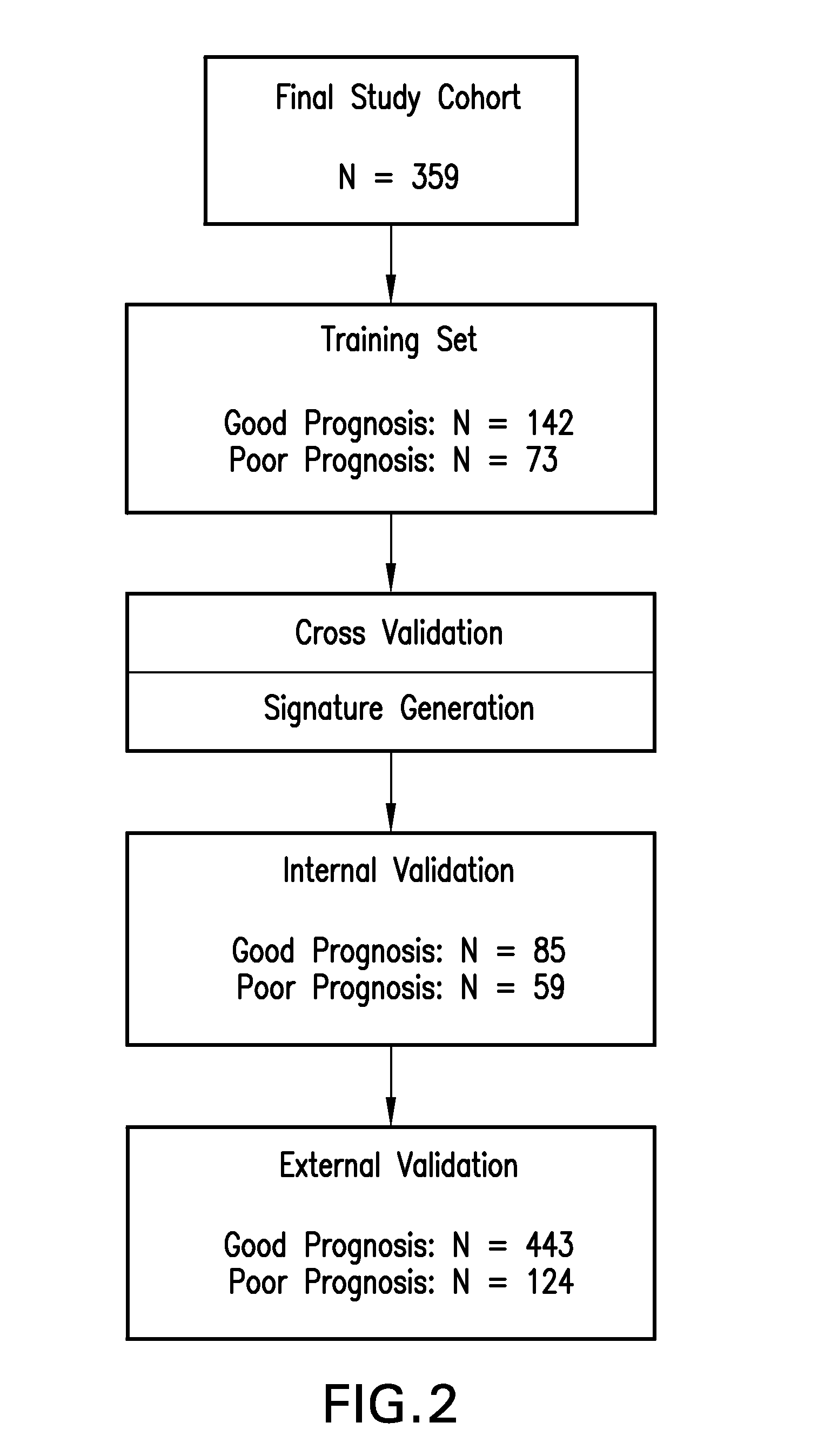
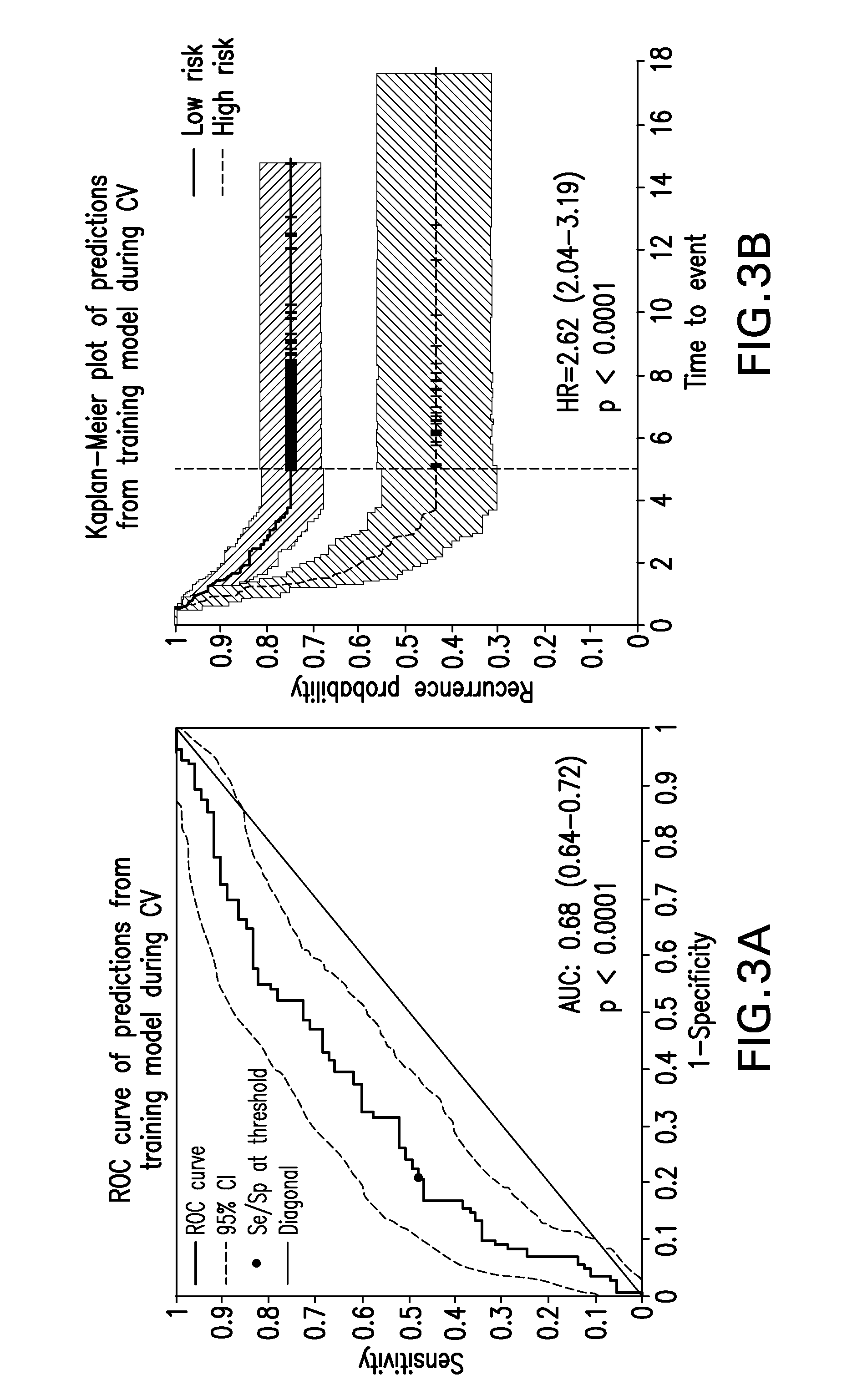
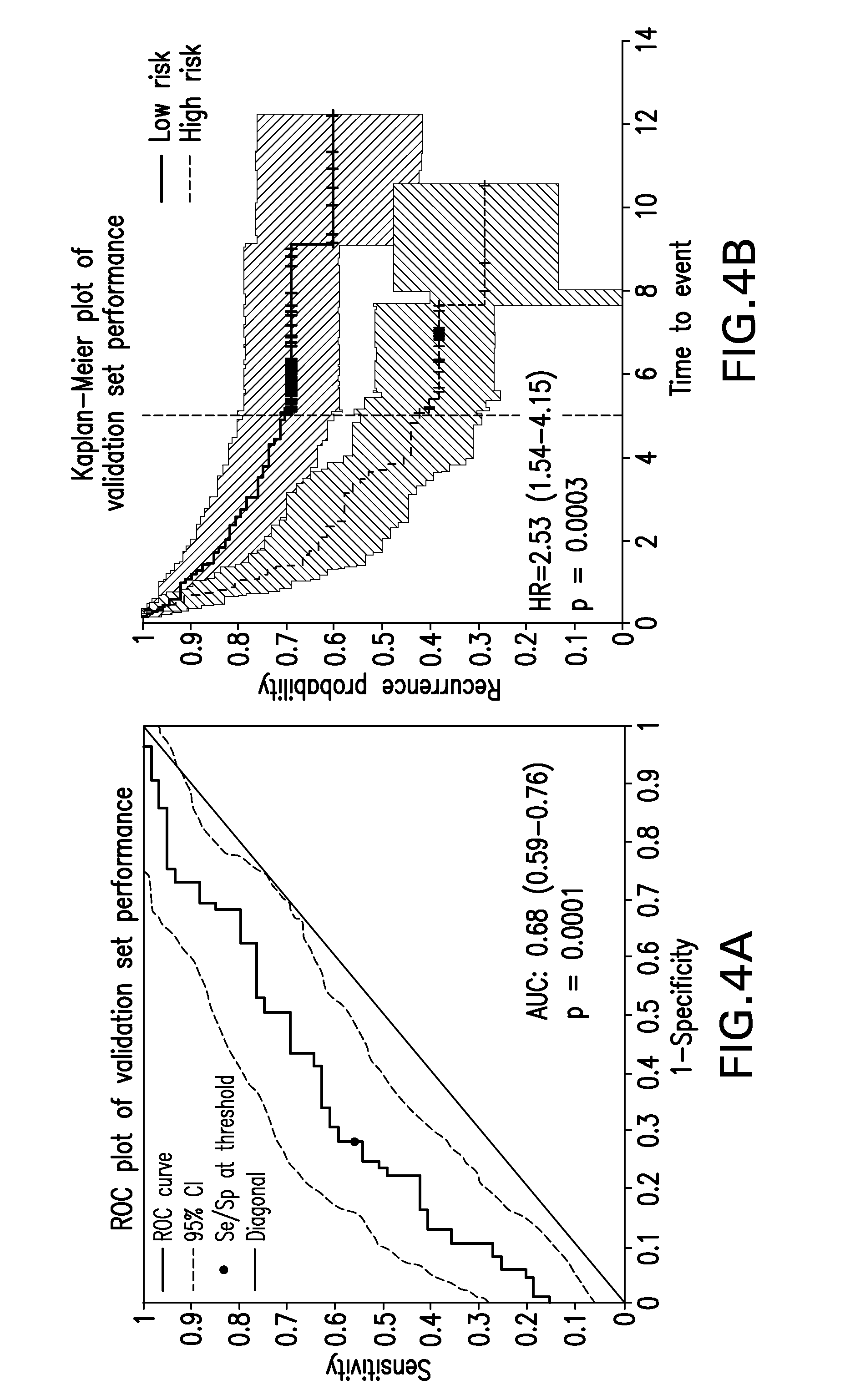
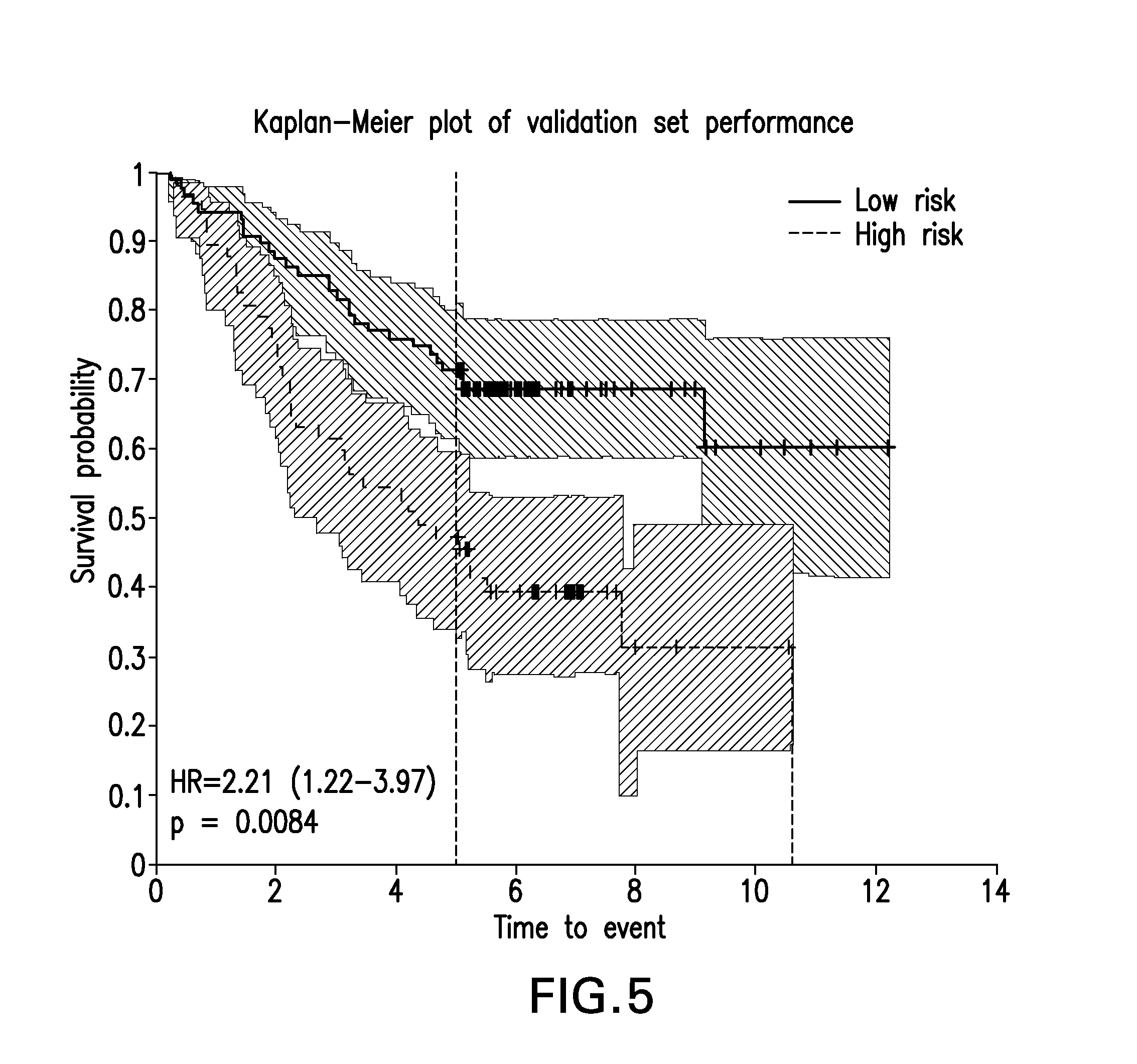

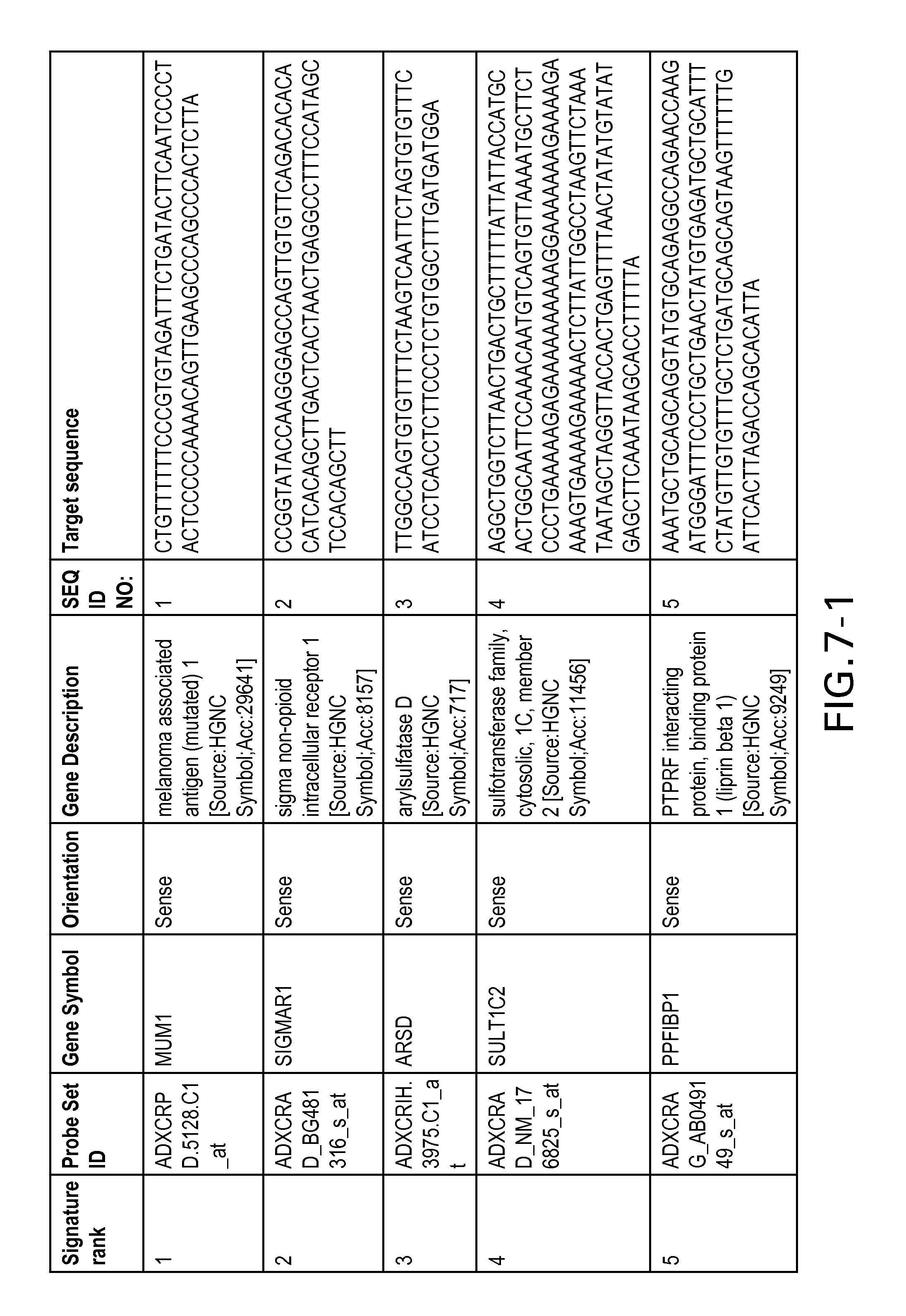
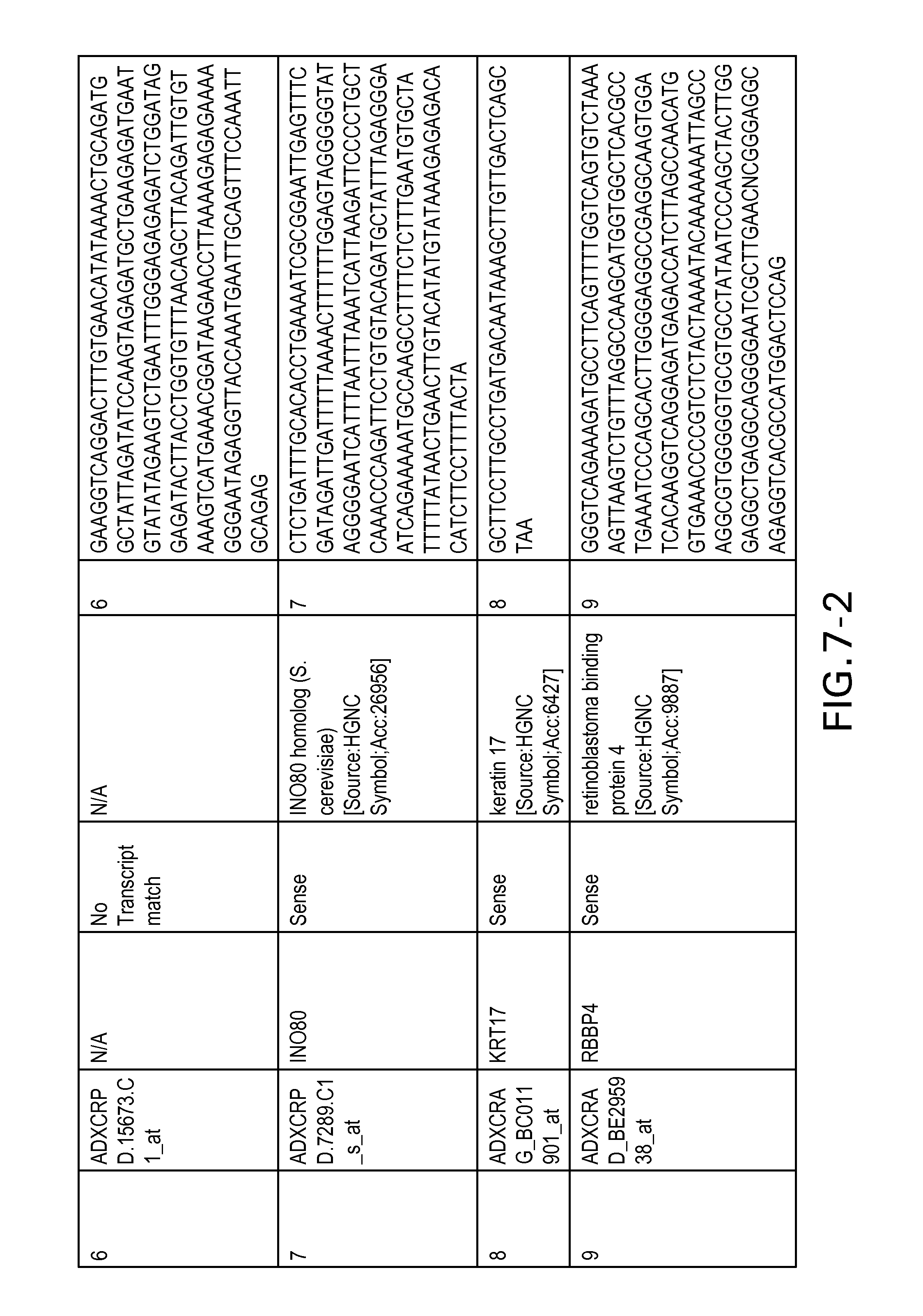
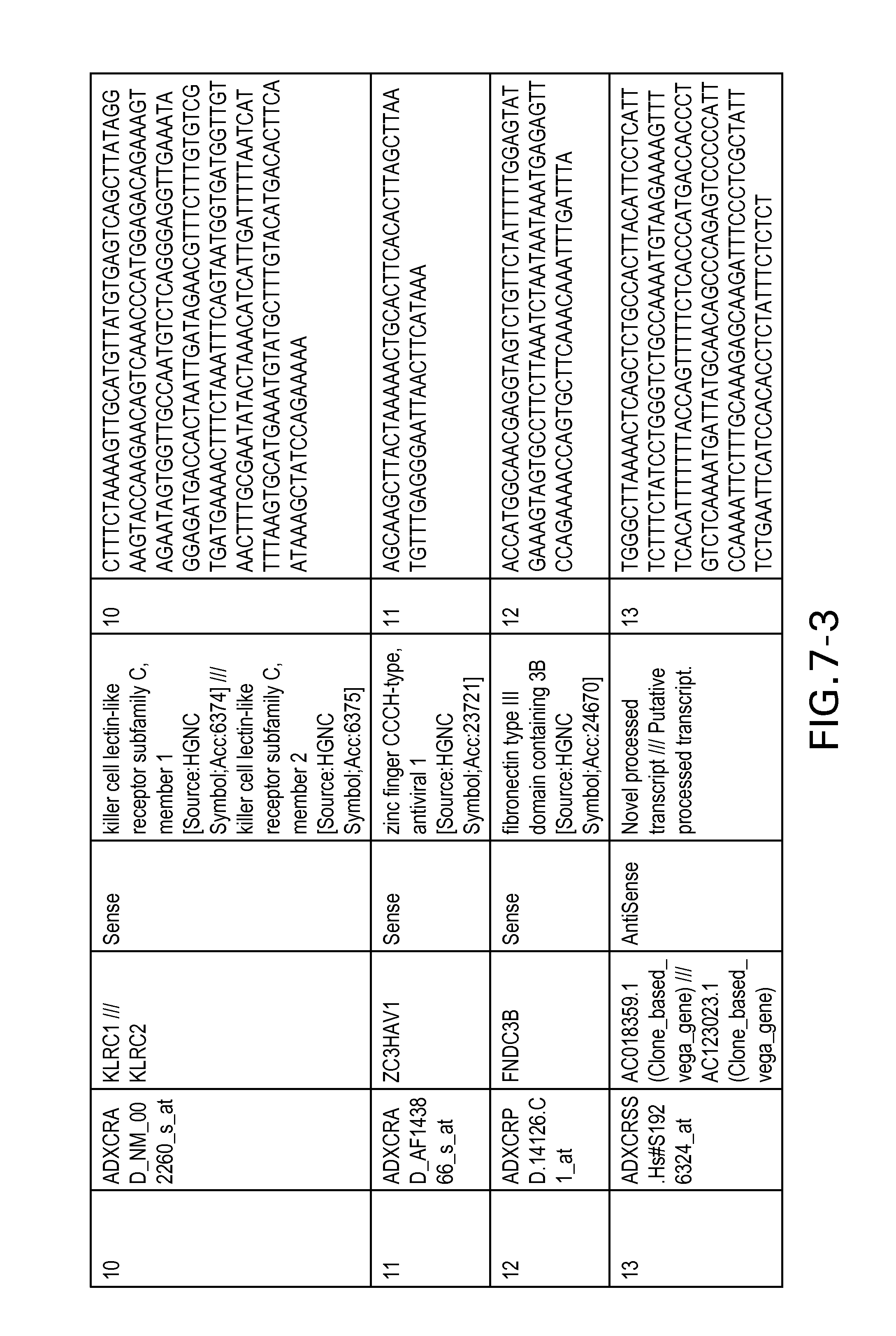
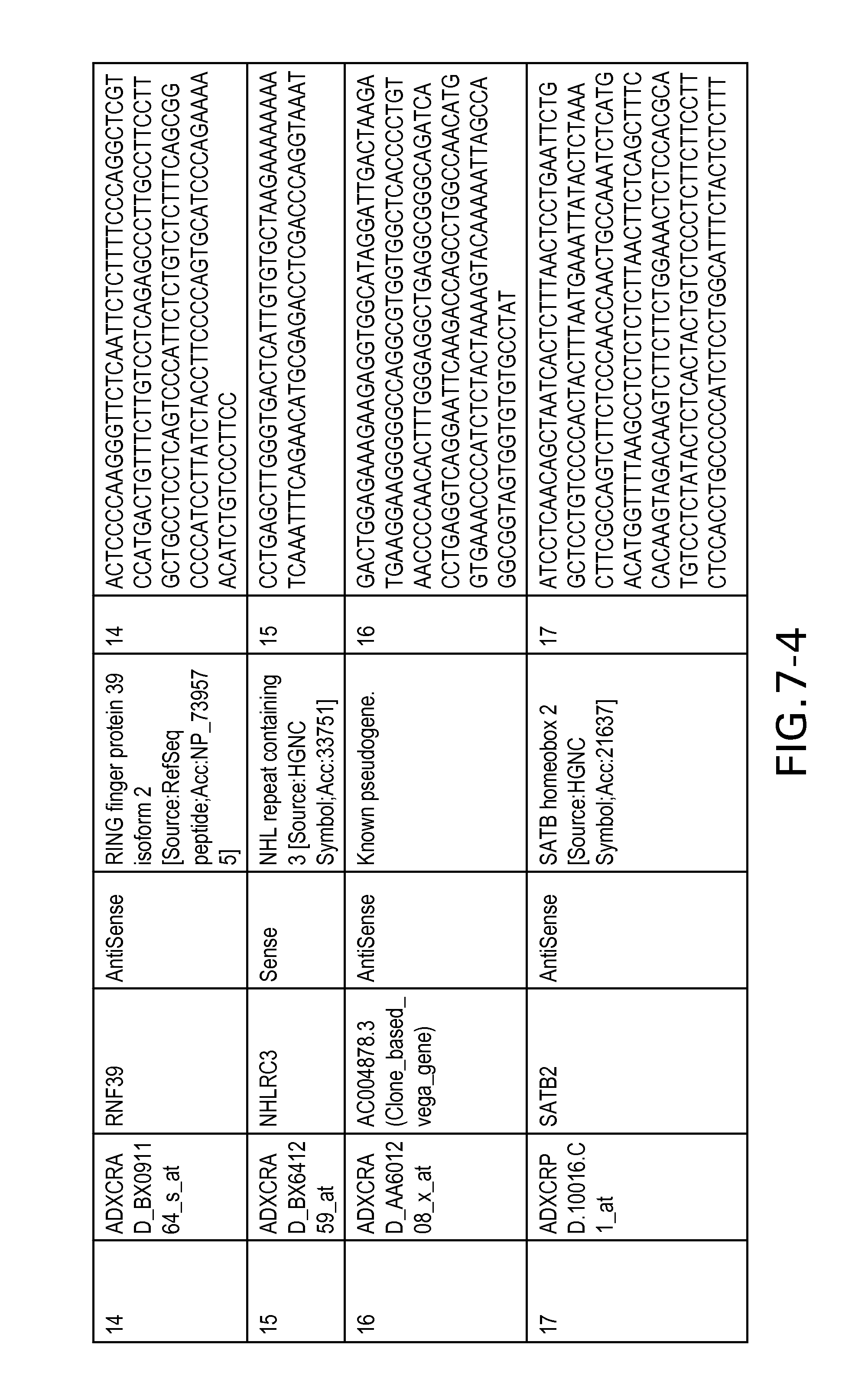
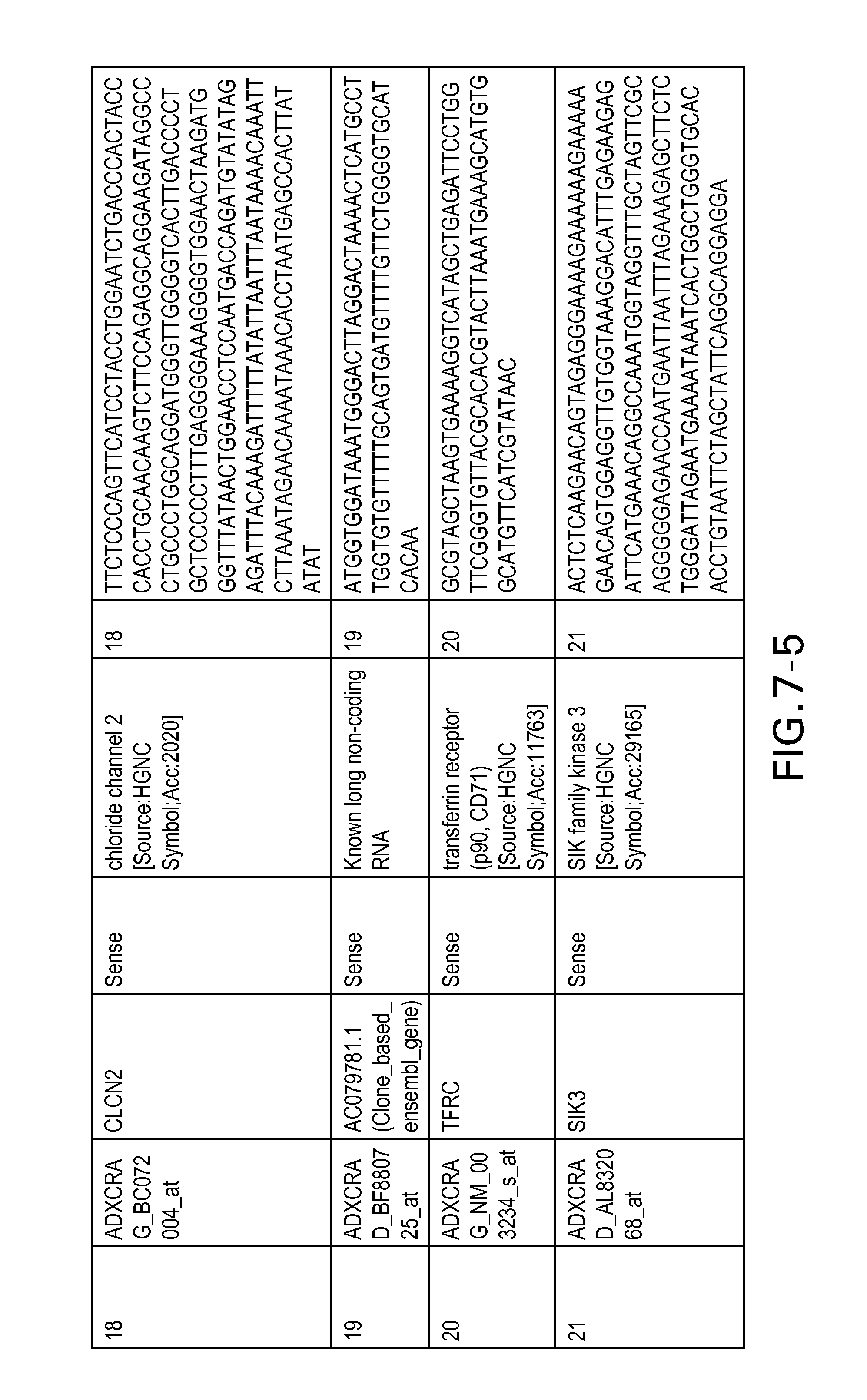
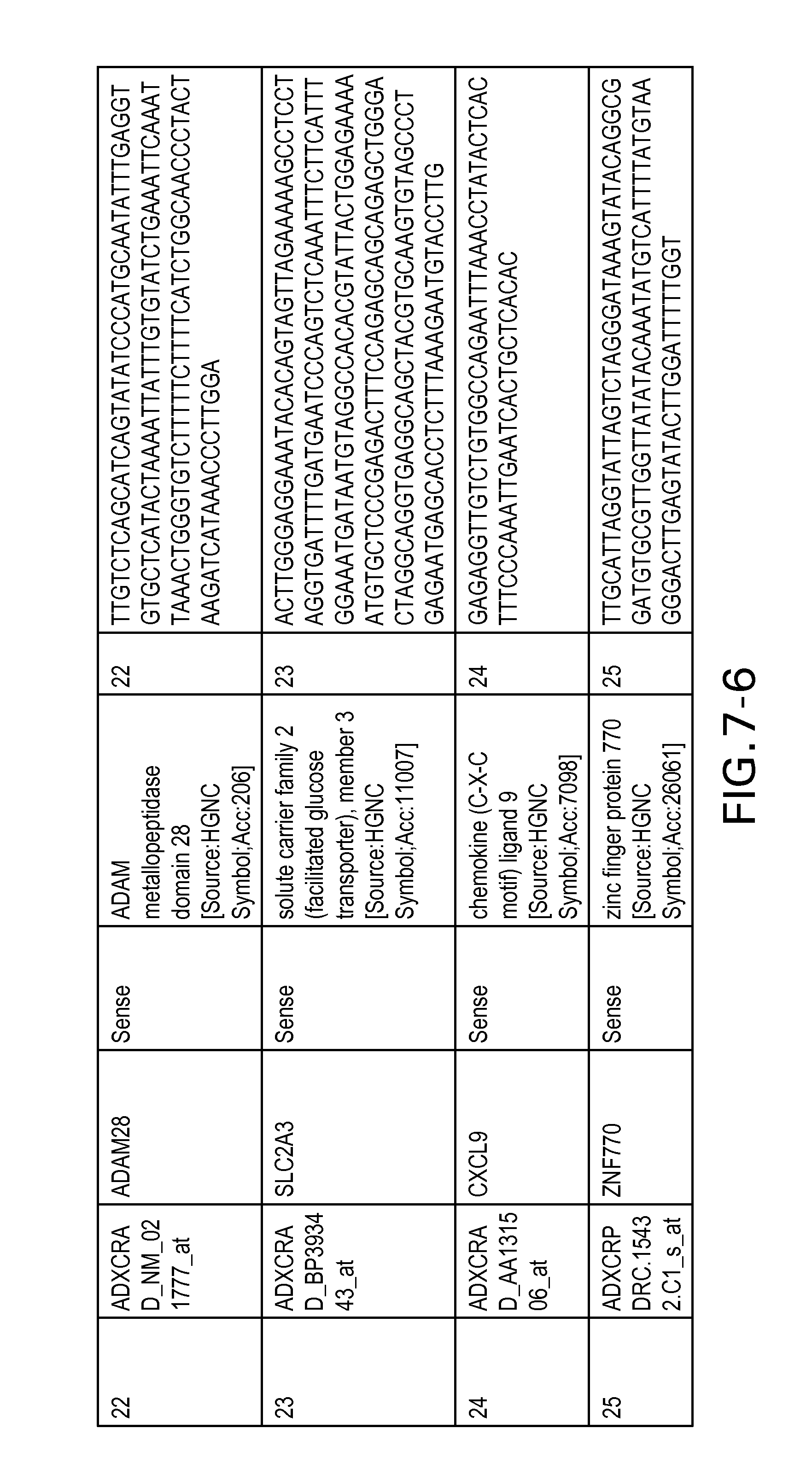
View All Diagrams
| United States Patent | 10,196,691 |
| Harkin , et al. | February 5, 2019 |
Colon cancer gene expression signatures and methods of use
Abstract
A gene expression signature of colon cancer, microarrays including them and methods of using the colon gene expression signature are provided. The gene expression signature is especially useful for determining the prognosis of a patient diagnosed with colon cancer, such as stage II colon cancer. The gene signature described herein is also useful for determining effectiveness of surgical resection with or without adjuvant chemotherapy, and determining possibility of cancer recurrence in patients with colon cancer.
| Inventors: | Harkin; Denis Paul (Dromore, GB), Proutski; Vitali (Oxford, GB), Clarke; Julie (Dromore, GB), Kerr; Peter (Belfast, GB), Kennedy; Richard (Belfast, GB), Winter; Andreas (Gersthofen, DE), Davison; Timothy (Hillsborough, GB), Bylesjo; Max (Glasgow, GB), Farztdinov; Vadim (Franfurt am Main, DE), Trinder; Claire (Statford-upon-Avon, GB), Holt; Robert James (Knutsford, GB) | ||||||||||
|---|---|---|---|---|---|---|---|---|---|---|---|
| Applicant: |
|
||||||||||
| Assignee: | ALMAC DIAGNOSTICS LIMITED
(GB) |
||||||||||
| Family ID: | 46581385 | ||||||||||
| Appl. No.: | 13/981,601 | ||||||||||
| Filed: | January 25, 2012 | ||||||||||
| PCT Filed: | January 25, 2012 | ||||||||||
| PCT No.: | PCT/US2012/022594 | ||||||||||
| 371(c)(1),(2),(4) Date: | October 10, 2013 | ||||||||||
| PCT Pub. No.: | WO2012/103250 | ||||||||||
| PCT Pub. Date: | August 02, 2012 |
Prior Publication Data
| Document Identifier | Publication Date | |
|---|---|---|
| US 20140094379 A1 | Apr 3, 2014 | |
Related U.S. Patent Documents
| Application Number | Filing Date | Patent Number | Issue Date | ||
|---|---|---|---|---|---|
| 61435922 | Jan 25, 2011 | ||||
| Current U.S. Class: | 1/1 |
| Current CPC Class: | C12Q 1/6886 (20130101); A61P 35/00 (20180101); C12Q 2600/158 (20130101); C12Q 2600/118 (20130101); C12Q 2600/112 (20130101) |
| Current International Class: | C12Q 1/6886 (20180101) |
References Cited [Referenced By]
U.S. Patent Documents
| 5427930 | June 1995 | Birkenmeyer et al. |
| 5554501 | September 1996 | Coassin et al. |
| 5744311 | April 1998 | Fraiser et al. |
| 5981185 | November 1999 | Matson et al. |
| 5985567 | November 1999 | Rampal |
| 6013789 | January 2000 | Rampal |
| 6025134 | February 2000 | Sooknanan |
| 6027889 | February 2000 | Barany et al. |
| 6033881 | March 2000 | Himmler et al. |
| 7695913 | April 2010 | Cowens et al. |
| 2001/0055596 | December 2001 | Meagher et al. |
| 2004/0146921 | July 2004 | Eveleigh et al. |
| 2005/0287544 | December 2005 | Bertucci et al. |
| 2006/0003359 | January 2006 | Feinberg et al. |
| 2006/0292572 | December 2006 | Stuart et al. |
| 2007/0134655 | June 2007 | Bentwich |
| 2007/0166704 | July 2007 | Huang et al. |
| 2009/0291434 | November 2009 | Cowens et al. |
| 2010/0261169 | October 2010 | Wallach et al. |
| 0320308 | Jun 1989 | EP | |||
| 2213738 | Nov 2010 | EP | |||
| 2009/512440 | Mar 2009 | JP | |||
| WO 85/01051 | Mar 1985 | WO | |||
| WO 89/10977 | Nov 1989 | WO | |||
| WO 90/01069 | Feb 1990 | WO | |||
| WO 2005/054508 | Jun 2005 | WO | |||
| WO 2005/083128 | Sep 2005 | WO | |||
| WO 2006/048291 | May 2006 | WO | |||
| WO 2006/093507 | Sep 2006 | WO | |||
| WO 2007/048074 | Apr 2007 | WO | |||
| WO 2007/112330 | Oct 2007 | WO | |||
| WO 2009/045115 | Apr 2009 | WO | |||
| WO 2009/147537 | Dec 2009 | WO | |||
| WO 2010/0060055 | May 2010 | WO | |||
| WO 2010/060055 | May 2010 | WO | |||
Other References
|
Coyle et al.( Journal of Clinical Oncology, 2009 ASCO Annual Meeting Proceedings (Post-Meeting Edition); vol. 27, No. 15S (May 20 Supplement), 2009: e14558(Abstract)). cited by examiner . Kerr et al.( Clin Cancer Res Oct. 1, 2007 13; A39(Abstract)). cited by examiner . Simon et al. Journal of Clinical Oncology. 2005. 23(29):7332-7341. cited by examiner . Bertucci et al. Oncogene. 2004. 23:1377-1391. cited by examiner . Perez-Villamil et al. BMC Cancer. 2012. 12:260. cited by examiner . Singapore Search Report and Written Opinion dated Jun. 30, 2014 for co-pending Singapore Application No. 201305625-4, pp. 1-13. cited by applicant . Chinese Office Action and Search Report dated May 16, 2014 for co-pending Chinese Application No. 2012800101232, pp. 1-8. cited by applicant . New Zealand Office Action dated Jan. 27, 2014 for co-pending New Zealand Application No. 612471, pp. 1-3. cited by applicant . Lee et al., "Differential Expression in Normal-Adenoma-Carcinoma Sequence Suggests Complex Molecular Carcinogenesis in Colon," Oncology Reports, 2006, vol. 16, pp. 747-754. cited by applicant . International Search Report and Written Opinion dated Jul. 11, 2012 for PCT/US2012/022594, pp. 1-17. cited by applicant . GENBANK, Accession No. AW168079, Nov. 12, 1999, 2 pages. cited by applicant . GENBANK, Accession No. AW369343, Feb. 4, 2000, 2 pages. cited by applicant . GENBANK, Accession No. BM847988, Mar. 6, 2002, 2 pages. cited by applicant . GENBANK, Accession No. BE178335, Jun. 22, 2000, 2 pages. cited by applicant . Unwala, New Zealand Office Action for co-pending New Zealand Application No. 612471, Dec. 5, 2014, 3 pages. cited by applicant . Abramovitz, et al., A systems approach to clinical oncology: Focus on breast cancer, Proteome Science 2006, Apr. 4, 2006, pp. 1-15, BioMed Central, Montreal, Quebec, Canada. cited by applicant . Altschul, et al., Basic Local Alignment Search Tool, J. Mol. Biol. (1990) 215, pp. 403-410, National Center for Biotechnology Information, Bethesda, MD. cited by applicant . Benson, et al., American Society of Clinical Oncology Recommendations on Adjuvant Chemotherapy for State II Colon Cancer, Journal of Clinical Oncology, Aug. 15, 2004, pp. 3408-3419, vol. 22, No. 16, Alexandria, VA. cited by applicant . Benson, et al., New Approaches to the Adjuvant Therapy of Colon Cancer, The Oncologist, 2006;11:973-980, Robert H. Lurie Comprehensive Cancer Center, Northwestern University, Chicago, Illinois. cited by applicant . Bhattacharjee, et al., Classification of human lung carcinomas by mRNA expression profiling reveals distinct adenocarcinoma subclasses, PNAS, Nov. 20, 2001, vol. 98, No. 24, pp. 13790-13795. cited by applicant . Bishop, et al., Neural Networks for Pattern Recognition, Department of Computer Science and Applied Mathematics, 1995, pp. 1-498, Clarendon Press, Oxford. cited by applicant . Breiman, Random forests, Statistics Department, University of California, Jan. 2001, pp. 1-33, Berkley, California. cited by applicant . Carney, et al., A colorectal cancer patient focus group develops an information package, Surgical Oncology, Ann R. Coll Surg Eng 2006; 88; 447-449, Bristol BS16 1LE, UK. cited by applicant . Colorectal Cancer DSA.TM. Technical Note; Jan. 2007, pp. 1-5; http://www.almacgroup.com/wp-content/uploads/Colorectal_Cancer_DSA_techsh- eet3.pdf (retrieved Jul. 13, 2015). cited by applicant . Corpet, Multiple sequence alignment with hierarchical clustering, Nucleic Acids Research, Laboratoire de Genetique Cellulaire, Oct. 14, 1998, vol. 16 No. 22 1988, Tolosan, France. cited by applicant . Cui, et al, Statistical tests for differential expression in cDNA microarray experiments, Genome Biology, Mar. 17, 2003, pp. 1-10, 4:210, BioMed Central Ltd, Bar Harbor, Maine. cited by applicant . Diaz-Rubio Garcia, A panel discussion of controversies and challenges in the adjuvant treatment of colon cancer, Clin. Transl. Oncol. 2005; 7(1):3-11, Hospital Clinico San Carlos, Madrid, Spain. cited by applicant . Dooley, et al. "Expression Profiling of Human Sultotransferase and Sulfatase Gene Superfamilies in Epithelial Tissues and Cultured Cells", Biochemical and Biophysical Research Communications, 277 (1):236-245; 2000. cited by applicant . Dudoit, Comparison of Discrimination Methods for the Classification of Tumors Using Gene Expression Data, Journal of the American Statistical Association, Mar. 2002; vol. 97, No. 457, American Statistical Association. cited by applicant . Ferguson, et al., High-Density Fiber-Optic DNA Random Microsphere Array, Anal. Chem., Nov. 15, 2000, vol. 22, pp. 5618-5624, American Chemical Society, Medford, Massachusetts. cited by applicant . Fukumura, et al., A sensitive transcriptome analysis method that can detect unknown transcripts, Nucleic Acids Research, 2003, vol. 13, No. 16, Oxford University Press. cited by applicant . Gill, et al., Pooled Analysis of Fluorouracil-Based Adjuvant Therapy for Stage II and III Colon Cancer: Who Benefits and by How Much?, Journal of Clinical Oncology, May 15, 2004, pp. 1797-1806, vol. 22, No. 10, American Society of Clinical Oncology, Chicago, IL. cited by applicant . Godfrey, et al., Quantitative mRNA Expression Analysis from Formalin-Fixed, Paraffin-Embedded Tissues Using 5' Nuclease Quantitative Reverse Transcription-Polymerase Chain Reaction, Journal of Molecular Diagnostics, May 2000, p. 84-91, vol. 2, No. 2, American Society for Investigative Pathology. cited by applicant . Golub, et al., Molecular Classification of Cancer: Class Discovery and Class Prediction by Gene Expression Monitoring, www.sciencemag.org, Science, Oct. 15, 1999, pp. 531-537, vol. 286. cited by applicant . Heid, et al., Real Time Quantitative PCR, Genome Methods, 2006, pp. 986-994, ISSN 1054-9803/96, Cold Spring Harbor Laboratory Press. cited by applicant . Higgins, et al., CLUSTAL: a package for performing multiple sequence alignment on a microcomputer, Gene, pp. 237-244, 73 (1988), Elsevier, Science Publishers B.V. cited by applicant . Higgins, et al., Fast and sensitive multiple sequence alignments on a microcomputer, Cabios Communications, pp. 151-153, vol. 5 No. 2. 1989, IRL Press. cited by applicant . Jemal, et al., Cancer Statistics, 2004, A Cancer Journal for Clinicians, Jan./Feb. 2004, pp. 8-29, vol. 54, No. 1, American Cancer Society. cited by applicant . Johnston, et al., A genetic signature of relapse in stage II colorectal cancer derived from formalin fixed paraffin embedded tissue (FFPE) tissue using a unique disease specific colorectal array, Journal of Clinical Oncology, Jun. 2006, pp. 1-3, vol. 24, No. 18S, American Society of Clinical Oncology. cited by applicant . Kawamoto, et al., Expression Profiling by iAFLP: A PCR-Based Method for Genome-Wide Gene Expression Profiling, Genome Research, 1999, pp. 1305-1312, ISSN 1054-9803/99, Cold Spring Harbor Laboratory Press. cited by applicant . Kennedy, et al., Development and Independent Validation of a Prognostic Assay for Stage II Colon Cancer Using Formalin-Fixed Paraffin-Embedded Tissue, Journal of Clinical Oncology, Dec. 10, 2011, pp. 4620-4626, vol. 29, No. 25, American Society of Clinical Oncology. cited by applicant . Kinney, et al., Genetic Testing for Colorectal Carcinoma Susceptibility, Focus Group Responses of Individuals with Colorectal Carcinoma and First-Degree Relatives, Cancer, Jan. 1, 2001, pp. 57-65; vol. 91, No. 1, American Cancer Society. cited by applicant . Nguyen, et al., Genetic Testing for Colorectal Carcinoma Susceptibility Focus Group Responses of Individuals with Colorectal Carcinoma and First-Degree Relatives, Bioinformatics, 2002, pp. 39-50, vol. 18 No. 1, Oxford University Press. cited by applicant . O'Connell, et al., Relationship Between Tumor Gene Expression and Recurrence in Four Independent Studies of Patients With Stage II/III Colon Cancer Treated With Surgery Alone or Surgery Plus Adjuvant Fluorouracil Plus Leucovorin, Journal of Clinical Oncology, Sep. 1, 2010, pp. 3937-3944, vol. 28, No. 25, American Society of Clinical Oncology. cited by applicant . Oeth, et al., iPLEX.TM. Assay: Increased Plexing Efficiency and Flexibility for MassARRAYSystem Through Single Base Primer Extension with Mass-Modified Terminators, Sequenom Application Note, Apr. 28, 2005, pp. 1-12. cited by applicant . Oliphant, et al., BeadArray.TM. Technology: Enabling an Accurate, Cost-Effective Approach to High-Throughput Genotyping, BioTechniques, Jun. 2002, pp. 56-61, 32, San Diego, CA. cited by applicant . Pearson, et al., Improved tools for biological sequence comparison, Proc. Natl. Acad. Sci. USA, Apr. 1988, pp. 2444-2448, vol. 85. cited by applicant . Pruitt, NCBI Reference Sequence (RefSeq): a curated non-redundant sequence database of genomes, transcripts and proteins, Nucleic Acids Research, 2005, pp. 501-504, vol. 33, Oxford University Press. cited by applicant . Ramaswamy, et al., Multiclass cancer diagnosis using tumor gene expression signatures, PNAS, Dec. 18, 2001, pp. 15149-15154, vol. 98, No. 26. cited by applicant . Rupp, et al., Purification and Analysis of RNA from Paraffin-Embedded Tissues, Research Report, BioTechniques, 1988, pp. 56-60, vol. 6, No. 1, University of Pittsburgh School of Medicine. cited by applicant . Salazar, et al., Gene Expression Signature to Improve Prognosis Prediction of Stage II and III Colorectal Cancer, Journal of Clinical Oncology, Jan. 1, 2011, pp. 17-24; vol. 29, No. 1, American Society of Clinical Oncology. cited by applicant . Salkeld, et al., A matter of trust--patient's views on decision-making in colorectal cancer, Health Expectations, pp. 104-114, 7, Blackwell Publishing Ltd., Australia. Sep. 18, 2003. cited by applicant . Schena, et al., Parallel human genome analysis: Microarray-based expression monitoring of 1000 genes, Proc. Natl. Acad. Sci. USA, Oct. 1996, pp. 10614-10619, vol. 93, Biochemistry. cited by applicant . Smyth, Linear Models and Empirical Bayes Methods for Assessing Differential Expression in Microarray Experiments, Statistical Applications in Genetics and Molecular Biology, Jan. 2004, pp. 1-26, vol. 3, Issue 1, Article 3, Walter and Eliza Hall Institute of Medical Research, Melbourne, Australia. cited by applicant . Sobrero, Should adjuvant chemotherapy become standard treatment for patients with stage II colon cancer?, http://oncology.thelancet.com Jun. 2006, pp. 515-517, vol. 7, Department of Medical Oncology, Ospedale San Martino, Genoa, Italy. cited by applicant . Specht, et al., Technical Advance: Quantitative Gene Expression Analysis in Microdissected Archival Formalin-Fixed and Paraffin-Embedded Tumor Tissue, American Journal of Pathology, Feb. 2001, pp. 419-429, vol. 158, No. 2, American Society for Investigative Pathology. cited by applicant . Tibshirani, et al., Diagnosis of multiple cancer types by shrunken centroids of gene expression, PNAS, May 14, 2002, pp. 6567-6572, vol. 99, No. 10. cited by applicant . Tusher, et al., Significance analysis of microarrays applied to the ionizing radiation response, PNAS, Apr. 24, 2001, pp. 5116-5121, vol. 98, No. 9. cited by applicant . Van'T Veer, et al., Gene expression profiling predicts clinical outcome of breast cancer, Nature, Jan. 31, 2002, pp. 530-536, vol. 415, Macmillan Magazines Ltd. cited by applicant . Velculescu, et al., Characterization of the Yeast Transcriptome, Jan. 2, 1997, pp. 243-251, vol. 88, Cell Press. cited by applicant . Yang, et al., BADGE, BeadsArray for the Detection of Gene Expression, a High-Throughput Diagnostic Bioassay, Genome Research, 2001, pp. 1888-1898, ISSN 1088-9051, Cold Spring Harbor Laboratory Press. cited by applicant . Yeang, et al., BADGE, BeadsArray for the Detection of Gene Expression, a High-Throughput Diagnostic Bioassay, Bioinformatics, Center for Genome Research, 2001, pp. S316-S322, vol. 17 Suppl. 1, Oxford University Press. cited by applicant . Youden, Index for Rating Diagnostic Tests, Cancer, Jan. 1950, pp. 32-35, National Bureau of Standards, Washington D.C. cited by applicant . International Preliminary Report on Patentability for International Patent Application No. PCT/US2012/022594, dated Jul. 30, 2013 (11 pages). cited by applicant . Supplementary Partial European Search of European Patent Application No. EP 12 73 9742, dated Mar. 24, 2015, (7 pages). cited by applicant . Supplementary European Search of European Patent Application No. EP 12 73 9742, dated Jul. 20, 2015 (17 pages). cited by applicant . First Examination Report in European Patent Application No. EP 12 73 9742, dated Jun. 28, 2016 (6 pages). cited by applicant . Patent Examination Report No. 1 in Australian Patent Application No. 2012209074, dated Jan. 8, 2016 (3 pages). cited by applicant . Substantive Examination Report Stage 1, Indonesian Patent Application No. W00 2013 03123, dated Feb. 4, 2016, (4 pages). cited by applicant . Office Action for Eurasian Patent Application No. 201391074/28, dated Apr. 22, 2015, (7 pages). cited by applicant . Written Opinion for Singapore Patent Application No. 2013056254, dated Apr. 15, 2015 (7 pages). cited by applicant . Third Official Action for Mexico Patent Application No. MX/a/2013/008367, dated Sep. 22, 2016, along with letter from foreign counsel dated Oct. 18, 2016 summarizing the office action, (8 pages). cited by applicant . Notification of Reasons for Refusal for Japanese Patent Application No. 2013-551314, dated Nov. 19, 2015, (11 pages). cited by applicant . Allen et al., "The colorectal cancer disease-specific transcriptome may facilitate the discovery of more biologically and clinically relevant information," BMC Cancer (2010) 10:687. cited by applicant . Lee, SK et al., Differential Expression in Normal-Adenoma-Carcinoma Sequence Suggests Complex Molecular Carcinogenesis in Colon. Oncology reports, 16;747-54, 2006. cited by applicant . Smith et al., Comparison of Biosequences, Advances in Applied Mathematics, (1981), pp. 482-489, Academic Press, Inc. cited by applicant. |
Primary Examiner: Dauner; Joseph G.
Attorney, Agent or Firm: Finnegan, Henderson, Farabow, Garrett & Dunner LLP
Parent Case Text
CROSS REFERENCE TO RELATED APPLICATIONS
This application is the U.S. National Stage of International Application No. PCT/US12/22594, filed Jan. 1, 2012, published in English under PCT Article 21(2), which claims the benefit of U.S. Provisional Application No. 61/435,922, filed on Jan. 25, 2011, which is incorporated herein by reference in its entirety.
Claims
We claim:
1. A method of treating a stage II adenocarcinoma colon cancer patient comprising: (a) detecting an expression level of a colon cancer signature comprising sense sequences of ARSD, CXCL9, PCLO, SLC2A3, FCGBP, SLC2A14///SLC2A3, and BCL9L transcripts and antisense sequences of MUC3A, OLFM4 and RNF39 transcripts in a colon cancer sample from the patient; (b) detecting differential expression of the colon cancer signature between the expression of the colon cancer signature in (a) and the expression of the colon cancer signature in colon cancer samples from colon cancer patients known to not be at risk of recurrence of metastatic cancer within 5 years following colon cancer surgical resection; wherein the detected differential expression of the colon cancer signature, or a decision score derived therefrom, indicates the stage II adenocarcinoma colon cancer patient is not at risk of recurrence of metastatic cancer within 5 years following colon cancer surgical resection; and (c) treating based on the detected differential expression in (b) the patient by surgical resection of the colon cancer.
2. A method of treating a stage II adenocarcinoma colon cancer patient, comprising; (a) detecting an expression level of a colon cancer signature comprising sense sequences of ARSD, CXCL9, PCLO, SLC2A3, FCGBP, SLC2A14///SLC2A3, and BCL9L transcripts and antisense sequences of MUC3A, OLFM4 and RNF39 transcripts in a colon cancer sample from the patient; (b) detecting differential expression of the colon cancer signature between the expression of the colon cancer signature in (a) and the expression of the colon cancer signature in colon cancer samples from colon cancer patients known to be at risk of recurrence of metastatic cancer within 5 years following colon cancer surgical resection; wherein the detected differential expression level, or a decision score derived therefrom, indicates the stage II adenocarcinoma colon cancer patient is at risk of recurrence of metastatic cancer within 5 years following colon cancer surgical resection; and (c) treating based on the detected differential expression in (b) the patient by surgical resection of the colon cancer followed by adjuvant therapy comprising chemotherapy, radiation therapy, or a combination thereof.
3. The method of any one of claims 1 or 2, wherein the colon cancer sample obtained from the patient comprises RNA, or comprises cDNA transcribed from RNA extracted from the colon cancer sample obtained from the patient; and optionally wherein the colon cancer sample is a biopsy sample; optionally wherein the colon cancer sample is a fixed and/or paraffin embedded sample.
4. The method of any one of claims 1 or 2, wherein the expression level of the colon cancer signature is normalized against a control gene or control genes; and/or wherein the expression level of the colon cancer signature is determined with PCR and/or microarray-based methods.
5. The method of any one of claims 1 or 2, further comprising detecting the expression levels for: (a) MUM1 and SIGMAR1 transcripts, (b) MUM1, SIGMAR1, SULT1C2 and PPFIBP1 transcripts, and/or (c) the transcripts listed in Table 2.
6. The method of any one of claims 1 or 2, wherein detecting the expression level of the colon cancer signature comprises using a set of nucleic acid probes, wherein each probe comprises a nucleic acid molecule between 20 and 40 nucleotides in length and capable of specifically hybridizing to one of the nucleic acid sequences of SEQ ID NOS: 3, 14, 23, 24, 51, 55, 61, 112, 175 and 272.
7. The method according to claim 6, wherein the nucleic acid probes are labeled, optionally wherein the probe is radiolabeled, fluorescently-labeled, biotin-labeled, enzymatically labeled, or chemically-labeled.
8. The method of claim 6, wherein the set of nucleic acid probes comprises: (a) at least one probe complementary to each of the transcripts having the nucleic acid sequences of SEQ ID NOS: 1-636, or (b) at least one probe complementary to each transcript in a subset of the transcripts having the nucleic acid sequences of SEQ ID NOS: 1-636, wherein the subset of the transcripts comprises at least 5%, 10%, 25%, 50%, 75% or 95% of the transcripts having the nucleic acid sequences of SEQ ID NOS: 1-636.
9. The method of claim 6, wherein the set of probes is comprised in a device comprising a nucleic acid array for detecting the expression level of the colon cancer signature.
10. The method of any one of claim 1 or 2, wherein detecting the expression level of the colon cancer signature comprises using a pair of primers for the amplification, comprising: a forward primer 15 to 40 nucleotides in length comprising a nucleic acid sequence that specifically hybridizes to one of the nucleic acid sequences of SEQ ID NOS: 3, 14, 23, 24, 51, 55, 61, 112, 175 and 272; and a reverse primer 15 to 40 nucleotides in length comprising a nucleic acid sequence that specifically hybridizes to one of the nucleic acid sequences of SEQ ID NOS: 3, 14, 23, 24, 51, 55, 61, 112, 175 and 272, wherein the set of primers is capable of directing the amplification of the transcripts of the colon cancer signature.
11. The method of claim 2, wherein the patient is treated with chemotherapy.
12. The method of claim 2, wherein the patient is treated with radiation therapy.
13. The method of claim 2, wherein the patient is treated with a combination of surgical resection, chemotherapy, and radiation therapy.
14. The method of any one of claims 1, 2 and 11-13, wherein detecting an expression level of a colon cancer signature a colon cancer sample from the patient comprises detecting the expression levels of each of the transcripts having the nucleic acid sequences of SEQ ID NOS; 1-634.
Description
FIELD OF THE INVENTION
The present disclosure relates to gene expression profiling in colon tissues, such as colon cancer tissues. In particular, the present disclosure concerns sensitive methods to measure mRNA levels in biopsied colon tumor tissues, including archived paraffin-embedded biopsy material. In addition, the disclosure provides sets of expressed transcripts forming gene expression signatures for the prognosis, diagnosis and treatment of colon cancer.
BACKGROUND OF THE INVENTION
Approximately 30% of all colon cancer patients are diagnosed with stage II disease. (Jemal et al., CA Cancer J. Clin., 2004). The 5-year survival for patients with stage II colon cancer treated by surgery is approximately 75-80%, demonstrating that the majority of patients are cured by surgery alone. (Benson, The Oncologist, 2006; Nauta et al., Arch. Surg., 1989.) Nevertheless, approximately 20-25% of these patients will develop recurrent disease within their lifetime. (Benson, The Oncologist, 2006; Gill et al., J. Clin. Oncol., 2004). In theory, these patients should benefit from adjuvant chemotherapy. However, only around 3-4% of patients have an absolute improvement in survival at 5-years with the use of adjuvant chemotherapy in stage II colon cancer. (Benson, The Oncologist, 2006; Andre et al., Annals of Surgical Oncology 2006). As a consequence, the American Society of Clinical Oncology guidelines recommend that these patients should not be routinely treated with adjuvant chemotherapy. (Benson et al., J. Clin. Oncol., 2004). Despite this, it is clear that approximately 20% of stage II colon cancer patients, at higher risk of relapse, may be candidates for adjuvant treatment. (Benson, The Oncologist, 2006; Nauta et al., Arch. Surg., 1989; Gill et al., J. Clin. Oncol., 2004; Andre et al., Annals of Surgical Oncology 2006.)
In diseases such as colon cancer, the first treatment is often the most important and offers the greatest chance of success, so there exists a need to use the treatment most effective for a patient's particular stage of colon cancer as the first treatment. This has traditionally been impossible because no method was available for predicting which drug treatment would be the most effective for a particular individual's physiology. Many times patients would needlessly undergo toxic drug therapy. For example, in Stage II tumor node metastasis (TNM) colon cancer, there has been no method of determining which patients will respond to adjuvant chemotherapy after surgery. Only one third of the 20% of stage II patients at risk for relapse after surgery derive any benefit from chemotherapy. This means that prescribing adjuvant chemotherapy exposes some patients to treatment that is unnecessary. Alternatively, a decision to withholding adjuvant chemotherapy at this stage will expose some patients to a higher risk of cancer relapse.
Currently, diagnostic tests used in clinical practice are based on a single analyte test, and therefore do not capture the potential value of knowing relationships between dozens of different markers. Moreover, diagnostic tests are frequently not quantitative, relying on immunohistochemistry. This method often yields different results in different laboratories, in part because the reagents are not standardized, and in part because the interpretations can be subjective and may not be easily quantified. RNA-based tests have not often been used because of the problem of RNA degradation over time and the fact that it is difficult to obtain fresh tissue samples from patients for analysis. Fixed paraffin-embedded tissue is more readily available and methods have been established to detect RNA in fixed tissue. However, these methods typically do not allow for the study of large numbers of genes (DNA or RNA) from small amounts of material. Thus, traditionally fixed tissue has been rarely used other than for immunohistochemical detection of proteins.
Recently, several groups have published studies concerning the classification of various cancer types by microarray gene expression analysis (see, e.g. Golub et al., Science 286:531 537 (1999); Bhattacharjae et al., Proc. Natl. Acad. Sci. USA 98:13790 13795 (2001); Chen-Hsiang et al., Bioinformatics 17 (Suppl. 1):S316 S322 (2001); Ramaswamy et al., Proc. Natl. Acad. Sci. USA 98:15149 15154 (2001), Salazar et al., Journal of Clinical Oncology 29: 17-24 (2010), O'Conneell et al., Journal of Clinical Oncology 28: 3937-3944 (2010) and Kerr et al., Journal of Clinical Oncology 27 (suppl) 15s (2009)). However, these studies mostly focus on improving and refining the already established classification of various types of cancer, and generally do not provide new insights into the relationships of the differentially expressed genes, and do not link the findings to treatment strategies in order to improve the clinical outcome of cancer therapy. In addition, cancer treatment and colon cancer clinical trials are still being pursued on the basis of the availability of new active compounds rather than the integrated approach of pharmacogenomics, which utilizes the genetic makeup of the tumor and the genotype of the patient to establish a personalized medication regime.
Although modern molecular biology and biochemistry have revealed more than 100 genes whose activities influence the behavior of tumor cells, state of their differentiation, and their sensitivity or resistance to certain therapeutic drugs, with a few exceptions, the status of these genes has not been exploited for the purpose of routinely making clinical decisions about drug treatments.
SUMMARY OF THE INVENTION
There is a need to identify biomarkers useful for predicting prognosis of patients with colon cancer. The ability to classify patients as high risk (poor prognosis) or low risk (favorable prognosis) would enable selection of appropriate therapies for these patients. For example, high-risk patients are likely to benefit from aggressive therapy, whereas therapy may have no significant advantage for low risk patients. However, in spite of this need, a solution to this problem has not been available.
Therefore, microarray-based prognostic technologies are needed that provide a physician with information on the likelihood of recovery or relapse following administration of a particular treatment regimen, such as resection with or without chemotherapy. Technologies are also needed that can accurately diagnose a colon disease, particularly the diagnosis of a particular stage of colon cancer, or can predict a colon disease patient's response to a particular therapy. Specific knowledge regarding a tumor in a cancer patient would be extremely useful in prolonging remission, increasing the quality of patient life, and reducing healthcare costs. Such technologies may also be used to screen patient candidates for clinical trials for novel therapeutic compounds and methods to facilitate the regulatory approval process.
Disclosed are expression signatures from colon cancer that meet these needs. The disclosed signatures can be used for applications in prognosis of colon cancer, diagnosis of colon cancer and classifying patient groups. In some embodiments, these results permit assessment of genomic evidence of the efficacy of surgery alone, or in combination with adjuvant chemotherapy for treatment of colon cancer. The signatures described herein may be significant in, and capable of, discriminating between two diagnoses or prognostic outcomes. An important aspect of the present disclosure is to use the measured expression of certain genes in colon cancer tissue to match patients to the most appropriate treatment, and to provide prognostic information. Thus, disclosed are methods of using such colon cancer signatures. The disclosed methods include detecting an expression level of at least 2 colon cancer-related nucleic acid molecules listed in Table 6 in a sample comprising nucleic acids obtained from a subject and comparing the expression level of the at least 2 colon cancer-related nucleic acid molecules, or a decision score derived therefrom to a control threshold. Depending of the prediction requested, the control threshold can be indicative of a diagnosis of colon cancer, indicative of known classification of colon cancer, indicative of a known response to treatment, indicative of having a history of long term survival, indicative of a history of recurrence and the like.
In various embodiments, RNA is isolated from a colon tissue sample, and used for preparing a gene expression profile. In certain embodiments involving prognosis of cancer, the sample is a colorectal tumor specimen, such as a colon cancer sample. In certain embodiments, the gene expression profile involves detecting the expression of at least 50 transcripts listed in Table 6, and which may also be listed in Table 1 and/or Table 2. The total number of transcripts detected in the gene expression profile can vary. For example, in some embodiments the total number of transcripts detected in the profile is from about 200 to about 1000, or from about 400 to about 800, or in other embodiments, the number of transcripts is from about 500 to about 700, or from about 550 to about 650. In various embodiments, at least about 50, at least about 100, at least about 200, at least about 300, at least about 400, at least about 500, at least about 600, or all transcripts, listed in Table 6 are detected as part of the total number of transcripts. Where additional transcripts are detected (in addition to those of Table 6), they may be optionally selected from signal or expression level controls, and in some embodiments, are transcripts known to be expressed in colon cancer, such as those determined by Colorectal Cancer DSA.TM.. In certain embodiments, the additional transcripts may also be indicative of colon cancer prognosis.
The patient's expression profile is scored against an expression signature based on expression levels of the transcripts listed in Table 6 in high risk and low risk patient groups, such as patient with a high or low risk of clinical relapse, and the results may be used to determine a course of treatment. For example, a patient determined to be a high risk patient may be treated with adjuvant chemotherapy after surgery. For a patient deemed to be a low risk patient, adjuvant chemotherapy may be withheld after surgery. Accordingly, the invention provides, in certain aspects, a method for preparing a gene expression profile of a colon cancer tumor that is indicative of risk of recurrence.
The disclosure further provides a method for prognosing colon cancer. The method according to this aspect comprises preparing a gene expression profile of a colon cancer specimen (e.g., as described herein). The gene expression profile is then classified or scored against a gene expression signature described herein. In various embodiments, the gene expression signature is based on the expression level of at least 50 transcripts listed in Table 6, and which may also be listed in Table 1 and/or Table 2. In some embodiments, the total number of transcripts on which the signature is based is less than about 800, less than about 700, less than about 600, less than about 500, less than about 400, less than about 300, less than about 200, or less than about 100 transcripts, and which includes transcripts from Table 6. For example, the signature may be based on the expression levels of at least about 400, at least about 500, or at least about 600 transcripts from Table 6. Optionally, the transcripts from Table 6 include the transcripts listed in Table 1.
Also disclosed are methods of preparing a personalized colon cancer genomics profile for a subject. The methods include detecting an expression level of at least 2 colon cancer-related nucleic acid molecules listed in Table 6 in a sample comprising nucleic acids obtained from a subject and creating a report summarizing the data obtained by the gene expression analysis.
In some examples, of the disclosed methods, expression levels are determined from nucleic acids obtained from the subject that comprise RNA and/or cDNA transcribed from RNA extracted from a sample of colorectal tissue obtained from the subject, such as colon cancer sample.
Also disclosed are nucleic acid probes and primers (as well as sets of such probes and primers) for detecting a gene expression signature for colon cancer. In some examples the probes are part of an array for use in the detection of a colon cancer signature.
The foregoing and other features and advantages of the disclosure will become more apparent from the following detailed description of several embodiments, which proceeds with reference to the accompanying figures.
BRIEF DESCRIPTION OF THE DRAWINGS
FIG. 1 provides a flow chart showing an exemplary procedure used to derive a colon cancer transcript expression signature.
FIG. 2 provides a flow chart showing an exemplary outline of the stage II colon cancer prognostic signature generation and validation, using the Colorectal Cancer DSA.TM..
FIG. 3A provides a graph of the receiver operating characteristic (ROC) curve of the 636 transcript prognostic signature in the training set.
FIG. 3B provides a Kaplan-Meier plot of recurrence from training data from the candidate model.
FIG. 4A provides a graph of the receiver operating characteristic (ROC) curve of the 636 transcript prognostic signature in the validation set.
FIG. 4B provides a Kaplan-Meier plot of recurrence from validation data from the candidate model.
FIG. 5 provides a Kaplan-Meier plot of overall survival from validation data from the candidate model.
FIG. 6 is Table 3 as described below.
FIG. 7 is Table 6 as described below.
BRIEF DESCRIPTION OF THE TABLES
Table 1 provides a list of 10 candidate transcripts included in a core colon signature. These transcripts have been identified as having the highest impact on the classification of samples into poor and good prognosis groups
Table 2 provides a list 178 unique transcripts included in the colon signature. This table includes the weight rank of the transcript in the 636 transcript signature as well as the orientation of the transcript expressed in colon tissue.
Table 3 provides key patient and tumor characteristics in the study to identify the 636 transcript signature.
Table 4 provides performance metrics for the cross-validated training set and validation set used to identify the transcript signature.
Table 5 provides results of the statistical analysis showing Hazards Ratio for patient age, patient gender, pT-stage, tumor grade, tumor location and mucinous/non-mucinous subtype status.
Table 6 provides a list of the transcripts included in the 636-transcript colon signature.
SEQUENCE LISTING
The nucleic and amino acid sequences listed in the accompanying sequence listing are shown using standard letter abbreviations for nucleotide bases, as defined in 37 C.F.R. .sctn. 1.822. Only one strand of each nucleic acid sequence is shown, but the complementary strand is understood as included by any reference to the displayed strand. In the accompanying sequence listing:
SEQ ID NOs: 1-636 are oligonucleotide transcripts from human colon cancer.
The Sequence Listing is submitted as an ASCII text file in the form of the file named ADL-0311_Sequence_Listing.txt, which was created on Jan. 25, 2012, and is 232,154 bytes, which is incorporated by reference herein.
DETAILED DESCRIPTION
I. Summary of Terms
Unless defined otherwise, technical and scientific terms used herein have the same meaning as commonly understood by one of ordinary skill in the art to which this disclosure belongs. Definitions of common terms in molecular biology may be found in Benjamin Lewin, Genes IX, published by Jones and Bartlet, 2008 (ISBN 0763752223); Kendrew et al. (eds.), The Encyclopedia of Molecular Biology, published by Blackwell Science Ltd., 1994 (ISBN 0632021829); Robert A. Meyers (ed.), Molecular Biology and Biotechnology: a Comprehensive Desk Reference, published by VCH Publishers, Inc., 1995 (ISBN 9780471185710); Singleton et al., Dictionary of Microbiology and Molecular Biology 2nd ed., J. Wiley & Sons (New York, N.Y. 1994), and March, Advanced Organic Chemistry Reactions, Mechanisms and Structure 4th ed., John Wiley & Sons (New York, N.Y. 1992).
The singular terms "a," "an," and "the" include plural referents unless context clearly indicates otherwise. Similarly, the word "or" is intended to include "and" unless the context clearly indicates otherwise. The term "comprises" means "includes." In case of conflict, the present specification, including explanations of terms, will control.
To facilitate review of the various embodiments of this disclosure, the following explanations of terms are provided:
Amplifying a nucleic acid molecule: To increase the number of copies of a nucleic acid molecule, such as a gene or fragment of a gene, for example a transcript shown in Table 6. The resulting products are called amplification products.
An example of in vitro amplification is the polymerase chain reaction (PCR). Other examples of in vitro amplification techniques include quantitative real-time PCR, strand displacement amplification (see U.S. Pat. No. 5,744,311); transcription-free isothermal amplification (see U.S. Pat. No. 6,033,881); repair chain reaction amplification (see International Patent Publication No. WO 90/01069); ligase chain reaction amplification (see EP-A-320 308); gap filling ligase chain reaction amplification (see U.S. Pat. No. 5,427,930); coupled ligase detection and PCR (see U.S. Pat. No. 6,027,889); and NASBA.TM. RNA transcription-free amplification (see U.S. Pat. No. 6,025,134).
Array: An arrangement of molecules, such as biological macromolecules (such nucleic acid molecules) or biological samples (such as tissue sections), in addressable locations on or in a substrate. In some examples an array is an array of polynucleotide probes (such as probes that hybridize to the nucleic acids sequences shown in Table 6, or the complement thereof), bound to a solid substrate so as not to be substantially dislodged during a hybridization procedure. A "microarray" is an array that is miniaturized so as to require or be aided by microscopic examination for evaluation or analysis. Arrays are sometimes called DNA chips or biochips.
The array of molecules ("features") makes it possible to carry out a very large number of analyses on a sample at one time. In certain example arrays, one or more molecules (such as an oligonucleotide probe) will occur on the array a plurality of times (such as twice), for instance to provide internal controls.
In particular examples, an array includes nucleic acid molecules, such as oligonucleotide sequences. The polynucleotides used on an array may be cDNAs ("cDNA arrays") that are typically about 500 to 5000 bases long, although shorter or longer cDNAs can also be used. Alternatively, the polynucleotides can be oligonucleotides, which are typically about 20 to 80 bases long, although shorter and longer oligonucleotides are also suitable. In one example, the molecule includes oligonucleotides attached to the array via their 5'- or 3'-end.
Within an array, each arrayed sample is addressable, in that its location can be reliably and consistently determined within the at least two dimensions of the array. The number of addressable locations on the array can vary, for example from at least four, to at least 9, at least 10, at least 14, at least 15, at least 20, at least 30, at least 50, at least 75, at least 100, at least 150, at least 200, at least 300, at least 500, least 550, at least 600, at least 800, at least 1000, at least 10,000, or more. The feature application location on an array can assume different shapes. For example, the array can be regular (such as arranged in uniform rows and columns) or irregular. Thus, in ordered arrays the location of each sample is assigned to the sample at the time when it is applied to the array, and a key may be provided in order to correlate each location with the appropriate target or feature position. Often, ordered arrays are arranged in a symmetrical grid pattern, but samples could be arranged in other patterns (such as in radially distributed lines, spiral lines, or ordered clusters). Addressable arrays usually are computer readable, in that a computer can be programmed to correlate a particular address on the array with information about the sample at that position (such as hybridization or binding data, including for instance signal intensity). In some examples of computer readable formats, the individual features in the array are arranged regularly, for instance in a Cartesian grid pattern, which can be correlated to address information by a computer.
Binding or stable binding: An association between two substances or molecules, such as the association of a nucleic acid to another nucleic acid (such as the binding of a probe to a transcript shown in Table 6 or its complement), or the association of a protein with another protein or nucleic acid molecule. Binding can be detected by any procedure known to one skilled in the art, for example in the case of a nucleic acid, such as by physical or functional properties of the target:oligonucleotide complex.
Physical methods of detecting the binding of complementary strands of nucleic acid molecules, include but are not limited to, such methods as DNase I or chemical footprinting, gel shift and affinity cleavage assays, Northern blotting, dot blotting and light absorption detection procedures. For example, one method involves observing a change in light absorption of a solution containing an oligonucleotide (or an analog) and a target nucleic acid at 220 to 300 nm as the temperature is slowly increased. If the oligonucleotide or analog has bound to its target, there is a sudden increase in absorption at a characteristic temperature as the oligonucleotide (or analog) and target disassociate from each other, or melt. In another example, the method involves detecting a signal, such as a detectable label, present on one or both nucleic acid molecules (or antibody or protein as appropriate).
The binding between an oligomer and its target nucleic acid is frequently characterized by the temperature (T.sub.m) at which 50% of the oligomer is melted from its target. A higher (T.sub.m) means a stronger or more stable complex relative to a complex with a lower (T.sub.m).
cDNA (complementary DNA): A piece of DNA lacking internal, non-coding segments (introns) and regulatory sequences which determine transcription. cDNA can be synthesized by reverse transcription from messenger RNA (mRNA) extracted from cells and/or tissue samples, such a colon samples, including colon cancer samples.
Clinical outcome: Refers to the health status of a patient following treatment for a disease or disorder, or in the absence of treatment. Clinical outcomes include, but are not limited to, an increase in the length of time until death, a decrease in the length of time until death, an increase in the chance of survival, an increase in the risk of death, survival, disease-free survival, chronic disease, metastasis, advanced or aggressive disease, disease recurrence, death, and favorable or poor response to therapy.
Colon cancer: Cancer that forms in the tissues of the colon (the longest part of the large intestine). Most colon cancers are adenocarcinomas (cancers that begin in cells that make line internal organs and have gland-like properties). Cancer progression is characterized by stages, or the extent of cancer in the body. Staging is usually based on the size of the tumor, whether lymph nodes contain cancer, and whether the cancer has spread from the original site to other parts of the body. Stages of colon cancer include stage I, stage II, stage III and stage IV. Unless otherwise specified, the term colon cancer refers to colon cancer at Stage 0, Stage I, Stage II (including Stage IIA or IIB), Stage III (including Stage IIIA, IIIB or IIIC), or Stage IV. In some embodiments herein, the colon cancer is from any stage. In other embodiments, the colon cancer is a stage II colon cancer.
Chemotherapeutic agents: Any chemical agent with therapeutic usefulness in the treatment of diseases characterized by abnormal cell growth. Such diseases include tumors, neoplasms, and cancer as well as diseases characterized by hyperplastic growth such as psoriasis. In one embodiment, a chemotherapeutic agent is an agent of use in treating colon cancer. In one embodiment, a chemotherapeutic agent is a radioactive compound. One of skill in the art can readily identify a chemotherapeutic agent of use (see for example, Slapak and Kufe, Principles of Cancer Therapy, Chapter 86 in Harrison's Principles of Internal Medicine, 14th edition; Perry et al., Chemotherapy, Ch. 17 in Abeloff, Clinical Oncology 2nd ed., 2000 Churchill Livingstone, Inc; Baltzer and Berkery. (eds): Oncology Pocket Guide to Chemotherapy, 2nd ed. St. Louis, Mosby-Year Book, 1995; Fischer Knobf, and Durivage (eds): The Cancer Chemotherapy Handbook, 4th ed. St. Louis, Mosby-Year Book, 1993). Chemotherapeutic agents used for treating colon cancer include small molecules such as 5-fluorourcil, leuvocorin, irinotecan, oxaliplatin, and capecitabine, and antibodies such bevacuzimab and cetuximab. Combination chemotherapy is the administration of more than one agent to treat cancer.
Contacting: Placement in direct physical association; includes both in solid and liquid form. Contacting includes contact between one molecule and another molecule, for example; contacting a sample with a nucleic acid probe, such as a probe for any of the sequences shown in Table 6.
Control: A "control" refers to a sample or standard used for comparison with an experimental sample, such as a tumor sample obtained from a patient with colon cancer. In some embodiments, the control is a sample obtained from a healthy patient or a non-cancerous tissue sample obtained from a patient diagnosed with colon cancer, such as a non-cancerous tissue sample from the same organ in which the tumor resides (e.g., non-cancerous colon tissue can serve as a control for a colon cancer). In some embodiments, the control is a historical control or standard value (i.e., a previously tested control sample or group of samples that represent baseline or normal values).
Controls or standards for comparison to a sample, for the determination of differential expression, include samples believed to be normal (in that they are not altered for the desired characteristic, for example a sample from a subject who does not have colon cancer) as well as laboratory values, even though possibly arbitrarily set. Laboratory standards and values may be set based on a known or determined population value and can be supplied in the format of a graph or table that permits comparison of measured, experimentally determined values.
Detecting expression: Determining of a level expression in either a qualitative or quantitative manner can detect nucleic acid. Exemplary methods include microarray analysis, RT-PCR, and Northern blot. In some examples, detecting expression includes detecting the expression of one or more of the transcripts in Table 6.
Differential expression or altered expression: A difference, such as an increase or decrease, in the conversion of the information encoded in a gene (such as any of the genes from Table 1, 2, and/or nucleic acid transcripts in Table 6) into messenger RNA, the conversion of mRNA to a protein, or both. In some examples, the difference is relative to a control or reference value, such as an amount of expression of a nucleic acid transcript in tissue not affected by a disease, such as colon cancer, from the same subject, or an amount expected in a different subject who does not have colon cancer. The difference can also be in a non-cancerous tissue from a subject (that has the cancer in the same organ) as compared to tissue from a different subject not afflicted with colon cancer. Detecting differential expression can include measuring a change in gene or protein expression, such as a change in expression of one or more of the genes listed in Table 1, 2, and/or the expression one or more transcripts shown in Table 6.
Downregulated or decreased: When used in reference to the expression of a nucleic acid molecule, refers to any process that results in a decrease in production of the nucleic acid. A gene product can be RNA (such as mRNA, rRNA, tRNA, and structural RNA) or protein. Therefore, gene downregulation or deactivation includes processes that decrease transcription of a gene or translation of mRNA.
Gene downregulation includes any detectable decrease in the production of a gene product. In certain examples, production of a gene product decreases by at least 1.2 fold, such as at least 2-fold, at least 3-fold or at least 4-fold, as compared to a control (such an amount of gene expression, such as a normalized gene expression in a normal cell). In several examples, a control is a relative amount of gene expression or protein expression in one or more subjects who do not have colon cancer, such as the relative amount of gene expression or protein expression in "cancer-free" subjects who do not have any known cancer.
Exon: In theory, a segment of an interrupted gene that is represented in the messenger RNA product. In theory the term "intron" refers to any segment of DNA that is transcribed but removed from within the transcript by splicing together the exons on either side of it. Operationally, exon sequences occur in the mRNA sequence of a gene as defined by Ref. Seq ID numbers. Operationally, intron sequences are the intervening sequences within the genomic DNA of a gene, bracketed by exon sequences and having GT and AG splice consensus sequences at their 5' and 3' boundaries.
Expression: The process by which the coded information of a gene is converted into an operational, non-operational, or structural part of a cell, such as the synthesis of nucleic acid or a protein. Gene expression can be influenced by external signals. For instance, exposure of a cell to a hormone may stimulate expression of a hormone-induced gene. Different types of cells can respond differently to an identical signal. Expression of a gene also can be regulated anywhere in the pathway from DNA to RNA to protein. Regulation can include controls on transcription, translation, RNA transport and processing, degradation of intermediary molecules such as mRNA, or through activation, inactivation, compartmentalization or degradation of specific protein molecules after they are produced.
The expression of a nucleic acid molecule can be altered, for example relative to expression in a normal (e.g., non-cancerous) sample. An alteration in gene expression, such as differential expression, includes but is not limited to: (1) overexpression; (2) underexpression; or (3) suppression of expression. Alternations in the expression of a nucleic acid molecule can be associated with, and in fact cause, a change in expression of the corresponding protein. "Expression" and/or "relative expression" can be considered the expression value after normalization of a specific transcript with respect to a threshold value, which is defined in the context of the expression of all other transcripts in an expression signature, such as a colon cancer expression signature. The overall expression data for a given sample is normalized using methods known to those skilled in the art in order to correct for differing amounts of starting material, varying efficiencies of the extraction and amplification reactions etc. Using a linear classifier on the normalized data to make a diagnostic or prognostic call (e.g. good or poor prognosis) effectively means to split the data space, i.e. all possible combinations of expression values for all genes in the signature, into two disjoint halves by means of a separating hyperplane. This split is empirically derived on a large set of training examples, for example from patients with good and poor prognosis. Without loss of generality, one can assume a certain fixed set of values for all but one genes, which would automatically define a threshold value for this remaining gene where the decision would change from, for example, good to poor prognosis. Expression values above this dynamic threshold would then either indicate good (for a gene with a negative weight) or poor prognosis (for a gene with a positive weight). The precise value of this threshold depends on the actual measured expression profile of all other genes within the signature, but the general indication of certain genes remains fixed, i.e. high values or "relative over-expression" always contributes to either a poor prognosis decision (genes with a positive weight) or good prognosis decision (genes with a negative weights). Therefore, in the context of the overall gene expression signature relative expression can indicate if either up- or down-regulation of a certain transcript is indicative of good or poor prognosis.
Gene amplification: A process by which multiple copies of a gene or gene fragment are formed in a particular cell or cell line. The duplicated region (a stretch of amplified DNA) is often referred to as an "amplicon." Usually, the amount of the messenger RNA (mRNA) produced, i.e., the level of gene expression, also increases in the proportion of the number of copies made of the particular gene expressed.
Expression profile (or fingerprint or signature): A pattern of gene expression, which is characteristic of, or correlated with, a specific disease stage or a specific prognostic outcome. The gene expression signature may be represented by a set of informative genes, or transcripts thereof, coding or non-coding or both. The expression levels of the transcripts within the signatures can be evaluated to make a prognostic determination with, but not limited to, the methods provided herein. Gene expression levels may be used to distinguish between two clinical conditions or outcomes such as normal and diseased tissue for diagnosis, or responsiveness compared to non-responsiveness for prognostic methods and recurring compared to non-recurring for predictive methods. Differential or altered gene expression can be detected by changes in the detectable amount of gene expression (such as cDNA or mRNA) or by changes in the detectable amount of proteins expressed by those genes. A distinct or identifiable pattern of gene expression, for instance a pattern of high and low expression of a defined set of genes or gene-indicative nucleic acids such as ESTs; in some examples, as few as one or two genes provides a profile, but more genes can be used in a profile, for example at least 2, at least 3, at least 4, at least 5, at least 6, at least 7, at least 9, at least 10 or at least 11 and so on. In some embodiments, the profile comprises at least about 200 genes (or "transcripts") and up to about 1000 transcripts, such as from about 400 transcripts to about 800 transcripts, or about 500 transcripts to about 700 transcripts. The profile comprises transcripts from Table 6 (e.g., at least 100, at least 200, at least 300, at least 400, at least 500, or at least 600 transcripts from Table 6), including in some embodiments the 636 transcripts listed in Table 6. As used herein, the term "gene" refers to an expressed transcript, which may be a characterized gene, or may be an expressed transcript such as an EST. In some embodiments, the detection platform is a microarray, and each probe is considered as determining the expression of a separate "gene" or "transcript."
A gene expression profile (also referred to as a fingerprint or signature) can be linked to a tissue or cell type (such as colon tissue), to a particular stage of normal tissue growth or disease progression (such as colon cancer), or to any other distinct or identifiable condition that influences gene expression in a predictable way. Gene expression profiles can include relative as well as absolute expression levels of specific genes, and can be viewed in the context of a test sample compared to a baseline or control sample profile (such as a sample from a subject who does not have colon cancer). In one example, a gene expression profile in a subject is read on an array (such as a nucleic acid array).
Hybridization: To form base pairs between complementary regions of two strands of DNA, RNA, or between DNA and RNA, thereby forming a duplex molecule, for example a duplex formed between a probe and any of the nucleic acid sequences shown in Table 6 or the complement thereof. Hybridization conditions resulting in particular degrees of stringency will vary depending upon the nature of the hybridization method and the composition and length of the hybridizing nucleic acid sequences. Generally, the temperature of hybridization and the ionic strength (such as the Na.sup.+ concentration) of the hybridization buffer will determine the stringency of hybridization. Calculations regarding hybridization conditions for attaining particular degrees of stringency are discussed in Sambrook et al., (1989) Molecular Cloning, second edition, Cold Spring Harbor Laboratory, Plainview, N.Y. (chapters 9 and 11). The following is an exemplary set of hybridization conditions and is not limiting:
Very High Stringency (Detects Sequences that Share at Least 90% Identity)
Hybridization: 5.times.SSC at 65.degree. C. for 16 hours
Wash twice: 2.times.SSC at room temperature (RT) for 15 minutes each
Wash twice: 0.5.times.SSC at 65.degree. C. for 20 minutes each
High Stringency (detects sequences that share at least 80% identity)
Hybridization: 5.times.-6.times.SSC at 65.degree. C.-70.degree. C. for 16-20 hours
Wash twice: 2.times.SSC at RT for 5-20 minutes each
Wash twice: 1.times.SSC at 55.degree. C.-70.degree. C. for 30 minutes each
Low Stringency (Detects Sequences that Share at Least 60% Identity)
Hybridization: 6.times.SSC at RT to 55.degree. C. for 16-20 hours
Wash at least twice: 2.times.-3.times.SSC at RT to 55.degree. C. for 20-30 minutes each
Isolated: An "isolated" biological component (such as a nucleic acid molecule, protein, or cell) has been substantially separated or purified away from other biological components in the cell of the organism, or the organism itself, in which the component naturally occurs, such as other chromosomal and extra-chromosomal DNA and RNA, proteins and cells. The term also embraces nucleic acid molecules prepared by recombinant expression in a host cell as well as chemically synthesized nucleic acid molecules. For example, an isolated cell, such as a colon cancer cell, is one that is substantially separated from other types of cells.
Label: An agent capable of detection, for example by ELISA, spectrophotometry, flow cytometry, or microscopy or other visual techniques. For example, a label can be attached to a nucleic acid molecule or protein, thereby permitting detection of the nucleic acid molecule or protein. For example a nucleic acid molecule or an antibody that specifically binds to a target molecule, such as a target nucleic acid molecule. Examples of labels include, but are not limited to, radioactive isotopes, enzyme substrates, co-factors, ligands, chemiluminescent agents, fluorophores, haptens, enzymes, and combinations thereof. Methods for labeling and guidance in the choice of labels appropriate for various purposes are discussed for example in Sambrook et al. (Molecular Cloning: A Laboratory Manual, Cold Spring Harbor, N.Y., 1989) and Ausubel et al. (In Current Protocols in Molecular Biology, John Wiley & Sons, New York, 1998).
Long term survival: Disease-free survival for at least 3 years, more preferably for at least 5 years, even more preferably for at least 8 years following surgery or other treatment (e.g., chemotherapy) for colon cancer.
More aggressive: As used herein, a "more aggressive" form of a colon cancer is a colon cancer with a relatively increased risk of metastasis or recurrence (such as following surgical removal of the tumor). A "more aggressive" colon cancer can also refer to a colon cancer that confers an increased likelihood of death, or a decrease in the time until death, upon a subject with the colon cancer. A subject having a "more aggressive" form of a colon cancer is considered high risk (poor prognosis).
Nucleic acid molecules representing genes: Any nucleic acid, for example DNA (intron or exon or both), cDNA, or RNA (such as mRNA), of any length suitable for use as a probe or other indicator molecule, and that is informative about the corresponding gene, such as those listed in Tables 1, or 2, for example the transcripts listed in Table 6.
Oligonucleotide: A relatively short polynucleotide, including, without limitation, single-stranded deoxyribonucleotides, single- or double-stranded ribonucleotides, RNA:DNA hybrids and double-stranded DNAs. Oligonucleotides, such as single-stranded DNA probe oligonucleotides, are often synthesized by chemical methods, for example using automated oligonucleotide synthesizers that are commercially available. However, oligonucleotides can be made by a variety of other methods, including in vitro recombinant DNA-mediated techniques and by expression of DNAs in cells and organisms.
Patient: As used herein, the term "patient" includes human and non-human animals. The preferred patient for treatment is a human. "Patient" and "subject" are used interchangeably herein.
Patient response: can be assessed using any endpoint indicating a benefit to the patient, including, without limitation, (1) inhibition, to some extent, of tumor growth, including slowing down and complete growth arrest; (2) reduction in the number of tumor cells; (3) reduction in tumor size; (4) inhibition (i.e., reduction, slowing down or complete stopping) of tumor cell infiltration into adjacent peripheral organs and/or tissues; (5) inhibition (i.e. reduction, slowing down or complete stopping) of metastasis; (6) enhancement of anti-tumor immune response, which may, but does not have to, result in the regression or rejection of the tumor; (7) relief, to some extent, of one or more symptoms associated with the tumor; (8) increase in the length of survival following treatment; and/or (9) decreased mortality at a given point of time following treatment.
Polynucleotide: When used in singular or plural, generally refers to any polyribonucleotide or polydeoxribonucleotide, which may be unmodified RNA or DNA or modified RNA or DNA, or even combinations thereof. Thus, for instance, polynucleotides as defined herein include, without limitation, single- and double-stranded DNA, DNA including single- and double-stranded regions, single- and double-stranded RNA, and RNA including single- and double-stranded regions, hybrid molecules comprising DNA and RNA that may be single-stranded or, more typically, double-stranded or include single- and double-stranded regions. The term "polynucleotide" also includes DNAs and RNAs that contain one or more modified bases. Thus, DNAs or RNAs with backbones modified for stability or for other reasons are "polynucleotides" as that term is intended herein. Moreover, DNAs or RNAs comprising unusual bases, such as inosine, or modified bases, such as tritiated bases, are included within the term "polynucleotides" as defined herein. In general, the term "polynucleotide" embraces all chemically, enzymatically and/or metabolically modified forms of unmodified polynucleotides, as well as the chemical forms of DNA and RNA characteristic of viruses and cells, including simple and complex cells.
Probes and primers: A probe comprises an isolated nucleic acid capable of hybridizing to a target nucleic acid (such one of the nucleic acid sequences shown in Table 6 or the complement thereof). A detectable label or reporter molecule can be attached to a probe. Typical labels include radioactive isotopes, enzyme substrates, co-factors, ligands, chemiluminescent or fluorescent agents, haptens, and enzymes. Methods for preparing and using nucleic acid probes and primers are described, for example, in Sambrook et al. (In Molecular Cloning: A Laboratory Manual, CSHL, New York, 1989), Ausubel et al. (ed.) (In Current Protocols in Molecular Biology, John Wiley & Sons, New York, 1998), and Innis et al. (PCR Protocols, A Guide to Methods and Applications, Academic Press, Inc., San Diego, Calif., 1990). Methods for labeling and guidance in the choice of labels appropriate for various purposes are discussed, for example in Sambrook et al. (In Molecular Cloning: A Laboratory Manual, CSHL, New York, 1989) and Ausubel et al. (In Current Protocols in Molecular Biology, John Wiley & Sons, New York, 1998).
Probes are generally at least 12 nucleotides in length, such as at least 12, at least 13, at least 14, at least 15, at least 16, at least 17, at least 18, at least 19, least 20, at least 21, at least 22, at least 23, at least 24, at least 25, at least 26, at least 27, at least 28, at least 29, at least 30, at least 31, at least 32, at least 33, at least 34, at least 35, at least 36, at least 37, at least 38, at least 39, at least 40, at least 45, at least 50, or more contiguous nucleotides complementary to the target nucleic acid molecule, such as a primer of 15-50 nucleotides, 20-50 nucleotides, or 15-30 nucleotides. In some examples, a probe is even longer, such as a cDNA probe, which can be from about 500 to more than 5000 nucleotides in length.
Primers are short nucleic acid molecules, for instance DNA oligonucleotides 10 nucleotides or more in length, which can be annealed to a complementary target nucleic acid molecule by nucleic acid hybridization to form a hybrid between the primer and the target nucleic acid strand. A primer can be extended along the target nucleic acid molecule by a polymerase enzyme. Therefore, primers can be used to amplify a target nucleic acid molecule (such as a nucleic acid sequence shown in Table 6).
The specificity of a primer and/or a probe increases with its length. Thus, for example, a primer that includes 30 consecutive nucleotides will anneal to a target sequence with a higher specificity than a corresponding primer of only 15 nucleotides. Thus, to obtain greater specificity, probes and primers can be selected that include at least 15, 20, 25, 30, 35, 40, 45, 50 or more consecutive nucleotides. In particular examples, a primer is at least 15 nucleotides in length, such as at least 15 contiguous nucleotides complementary to a target nucleic acid molecule. Particular lengths of primers that can be used to practice the methods of the present disclosure include primers having at least 15, at least 16, at least 17, at least 18, at least 19, at least 20, at least 21, at least 22, at least 23, at least 24, at least 25, at least 26, at least 27, at least 28, at least 29, at least 30, at least 31, at least 32, at least 33, at least 34, at least 35, at least 36, at least 37, at least 38, at least 39, at least 40, at least 45, at least 50, or more contiguous nucleotides complementary to the target nucleic acid molecule to be amplified, such as a primer of 15-50 nucleotides, 20-50 nucleotides, or 15-30 nucleotides. One of most important factors considered in PCR primer design include primer length, melting temperature (Tm), and GC content, specificity, complementary primer sequences, and 3'-end sequence. In general, optimal PCR primers are generally 17-30 bases in length, and contain about 20-80%, such as, for example, about 50-60% G+C bases. Tm's between 50.degree. C. and 80.degree. C., e.g. about 50.degree. C. to 70.degree. C. are typically preferred.
Primer pairs can be used for amplification of a nucleic acid sequence, for example, by PCR, real-time PCR, or other nucleic-acid amplification methods known in the art. An "upstream" or "forward" primer is a primer 5' to a reference point on a nucleic acid sequence. A "downstream" or "reverse" primer is a primer 3' to a reference point on a nucleic acid sequence. In general, at least one forward and one reverse primer are included in an amplification reaction.
Nucleic acid probes and primers can be readily prepared based on the nucleic acid molecules provided herein, for example, by using computer programs intended for that purpose such as Primer (Version 0.5, .COPYRGT. 1991, Whitehead Institute for Biomedical Research, Cambridge, Mass.) or PRIMER EXPRESS.RTM. Software (Applied Biosystems, AB, Foster City, Calif.).
Further guidelines for PCR primer and probe design may be found in Dieffenbach et al., General Concepts for PCR Primer Design in: PCR Primer, A Laboratory Manual, Cold Spring Harbor Laboratory Press, New York, 1995, pp. 133 155; Innis and Gelfand, Optimization of PCRs in: PCR Protocols, A Guide to Methods and Applications, CRC Press, London, 1994, pp. 5 11; and Plasterer, Primerselect: Primer and probe design. Methods Mol. Biol. 70:520 527, 1997.
Prognosis: The likelihood of the clinical outcome for a subject afflicted with a specific disease or disorder. With regard to cancer, the prognosis is a representation of the likelihood (probability) that the subject will survive (such as for one, two, three, four or five years) and/or the likelihood (probability) that the tumor will metastasize. The term "prediction" is used herein to refer to the likelihood that a patient will respond either favorably or unfavorably to a drug or set of drugs, and also the extent of those responses. The predictive methods of the present invention can be used clinically to make treatment decisions by choosing the most appropriate treatment modalities for any particular patient. The predictive methods of the present disclosure are valuable tools in predicting if a patient is likely to respond favorably to a treatment regimen, such as surgical intervention, chemotherapy with a given drug or drug combination, and/or radiation therapy.
Purified: The term "purified" does not require absolute purity; rather, it is intended as a relative term. Thus, for example, a purified oligonucleotide preparation is one in which the oligonucleotide is more pure than in an environment including a complex mixture of oligonucleotides.
Sample: A biological specimen containing genomic DNA, RNA (including mRNA and microRNA), protein, or combinations thereof, obtained from a subject. Examples include, but are not limited to, peripheral blood, urine, saliva, tissue biopsy, aspirate, surgical specimen, and autopsy material, and includes fixed and/or paraffin embedded samples. In one example, a sample includes a biopsy of a colon (such as colon cancer tumor), a sample of noncancerous tissue, or a sample of normal tissue (from a subject not afflicted with a known disease or disorder, such as a cancer-free subject).
Sequence identity/similarity: The identity/similarity between two or more nucleic acid sequences, or two or more amino acid sequences, is expressed in terms of the identity or similarity between the sequences. Sequence identity can be measured in terms of percentage identity; the higher the percentage, the more identical the sequences are. Sequence similarity can be measured in terms of percentage similarity (which takes into account conservative amino acid substitutions); the higher the percentage, the more similar the sequences are.
Methods of alignment of sequences for comparison are well known in the art. Various programs and alignment algorithms are described in: Smith & Waterman, Adv. AppL Math. 2:482, 1981; Needleman & Wunsch, J. Mol. Biol. 48:443, 1970; Pearson & Lipman, Proc. Natl. Acad. Sci. USA 85:2444, 1988; Higgins & Sharp, Gene, 73:237-44, 1988; Higgins & Sharp, CABIOS 5:151-3, 1989; Corpet et al., Nuc. Acids Res. 16:10881-90, 1988; Huang et al. Computer Appls. in the Biosciences 8, 155-65, 1992; and Pearson et al., Meth. Mol. Bio. 24:307-31, 1994. Altschul et al., J. Mol. Biol. 215:403-10, 1990, presents a detailed consideration of sequence alignment methods and homology calculations.
The NCBI Basic Local Alignment Search Tool (BLAST) (Altschul et al., J. Mol. Biol. 215:403-10, 1990) is available from several sources, including the National Center for Biotechnology (NCBI, National Library of Medicine, Building 38A, Room 8N805, Bethesda, Md. 20894) and on the Internet, for use in connection with the sequence analysis programs blastp, blastn, blastx, tblastn and tblastx. Additional information can be found at the NCBI web site.
BLASTN is used to compare nucleic acid sequences, while BLASTP is used to compare amino acid sequences. If the two compared sequences share homology, then the designated output file will present those regions of homology as aligned sequences. If the two compared sequences do not share homology, then the designated output file will not present aligned sequences.
Once aligned, the number of matches is determined by counting the number of positions where an identical nucleotide or amino acid residue is presented in both sequences. The percent sequence identity is determined by dividing the number of matches either by the length of the sequence set forth in the identified sequence, or by an articulated length (such as 100 consecutive nucleotides or amino acid residues from a sequence set forth in an identified sequence), followed by multiplying the resulting value by 100. For example, a nucleic acid sequence that has 1166 matches when aligned with a test sequence having 1554 nucleotides is 75.0 percent identical to the test sequence (1166/1554*100=75.0). The percent sequence identity value is rounded to the nearest tenth. For example, 75.11, 75.12, 75.13, and 75.14 are rounded down to 75.1, while 75.15, 75.16, 75.17, 75.18, and 75.19 are rounded up to 75.2. The length value will always be an integer. In another example, a target sequence containing a 20-nucleotide region that aligns with 20 consecutive nucleotides from an identified sequence as follows contains a region that shares 75 percent sequence identity to that identified sequence (that is, 15/20*100=75).
One indication that two nucleic acid molecules are closely related is that the two molecules hybridize to each other under stringent conditions, as described above. Nucleic acid sequences that do not show a high degree of identity may nevertheless encode identical or similar (conserved) amino acid sequences, due to the degeneracy of the genetic code. Changes in a nucleic acid sequence can be made using this degeneracy to produce multiple nucleic acid molecules that all encode substantially the same protein. Such homologous nucleic acid sequences can, for example, possess at least about 60%, 70%, 80%, 90%, 95%, 98%, or 99% sequence identity to a molecule listed in Table 6 determined by this method.
One of skill in the art will appreciate that the particular sequence identity ranges are provided for guidance only; it is possible that strongly significant homologs could be obtained that fall outside the ranges provided.
Splicing or RNA splicing: An RNA processing that removes introns and joins exons to produce mature mRNA with continuous coding sequence that moves into the cytoplasm of a eukaryotic cell.
Transcript or gene product: An RNA molecule that is generated or derived through the process of transcription from its corresponding DNA or a cDNA template. Transcripts include coding and non-coding RNA molecules such as, but not limited to, messenger RNAs (mRNA), alternatively spliced mRNAs, ribosomal RNA (rRNA), transfer RNAs (tRNAs) in addition to a large range of other transcripts, which are not translated into protein such as small nuclear RNAs (snRNAs), antisense molecules such as short interfering RNA (siRNA) and microRNA (miRNA) and other RNA transcripts of unknown function. In some embodiments, a transcript is a nucleic acid sequence shown in Table 6.
Therapeutic: A generic term that includes both diagnosis and treatment.
Treatment: Includes both therapeutic treatment and prophylactic or preventative measures, wherein the object is to prevent or slow down (lessen) the targeted pathologic condition or disorder. Those in need of treatment include those already with the disorder as well as those prone to have the disorder or those in whom the disorder is to be prevented. In tumor (e.g. cancer) treatment, a treatment such as surgery, chemotherapy or radiation may directly decrease the pathology of tumor cells, or render the tumor cells more susceptible to further treatment.
Tumor, neoplasia, malignancy or cancer: Neoplastic cell growth and proliferation, whether malignant or benign, and all pre-cancerous and cancerous cells and tissues and the result of abnormal and uncontrolled growth of cells. The terms "cancer" and "cancerous" refer to or describe the physiological condition in mammals that is typically characterized by unregulated cell growth. Neoplasia, malignancy, cancer and tumor are often used interchangeably and refer to abnormal growth of a tissue or cells that results from excessive cell division. The amount of a tumor in an individual is the "tumor burden" which can be measured as the number, volume, or weight of the tumor. A tumor that does not metastasize is referred to as "benign." A tumor that invades the surrounding tissue and/or can metastasize is referred to as "malignant." A "non-cancerous tissue" is a tissue from the same organ wherein the malignant neoplasm formed, but does not have the characteristic pathology of the neoplasm. Generally, noncancerous tissue appears histologically normal. A "normal tissue" is tissue from an organ, wherein the organ is not affected by cancer or another disease or disorder of that organ. A "cancer-free" subject has not been diagnosed with a cancer of that organ and does not have detectable cancer.
The "pathology" of cancer includes all phenomena that compromise the well-being of the patient. This includes, without limitation, abnormal or uncontrollable cell growth, metastasis, interference with the normal functioning of neighboring cells, release of cytokines or other secretory products at abnormal levels, suppression or aggravation of inflammatory or immunological response, neoplasia, premalignancy, malignancy, invasion of surrounding or distant tissues or organs, such as lymph nodes, etc.
Tumor-Node-Metastasis (TNM): The TNM classification of malignant tumors is a cancer staging system for describing the extent of cancer in a patient's body. T describes the size of the primary tumor and whether it has invaded nearby tissue; N describes any lymph nodes that are involved; and M describes metastasis. TNM is developed and maintained by the International Union Against Cancer to achieve consensus on one globally recognized standard for classifying the extent of spread of cancer.
Upregulated or activation: When used in reference to the expression of a nucleic acid molecule, refers to any process that results in an increase in production of a gene product. A gene product can be RNA (such as mRNA, rRNA, tRNA, and structural RNA) or protein. Therefore, gene upregulation or activation includes processes that increase transcription of a gene or translation of mRNA, such as an inflammatory gene.
Examples of processes that increase transcription include those that facilitate formation of a transcription initiation complex, those that increase transcription initiation rate, those that increase transcription elongation rate, those that increase processivity of transcription and those that relieve transcriptional repression (for example by blocking the binding of a transcriptional repressor). Gene upregulation can include inhibition of repression as well as stimulation of expression above an existing level. Examples of processes that increase translation include those that increase translational initiation, those that increase translational elongation and those that increase mRNA stability.
Gene upregulation includes any detectable increase in the production of a gene product, such as an inflammatory gene. In certain examples, production of a gene product increases by at least 1.2 fold, such as at least 2-fold, at least 3-fold, at least 4-fold, at least 5-fold, at least 8-fold, at least 10-fold, or at least 15-fold, as compared to a control (such an amount of gene expression and/or normalized gene expression in a normal cell).
Weight: With reference to the gene signatures disclosed herein, refers to the relative importance of an item in a statistical calculation, for example the relative importance of a Transcript in Table 6. The weight of each transcript in a gene expression signature may be determined on a data set of patient samples using analytical methods known in the art. Exemplary procedures are described below.
Suitable methods and materials for the practice or testing of this disclosure are described below. Such methods and materials are illustrative only and are not intended to be limiting. Other methods and materials similar or equivalent to those described herein can be used. For example, conventional methods well known in the art to which this disclosure pertains are described in various general and more specific references, including, for example, Sambrook et al., Molecular Cloning: A Laboratory Manual, 2d ed., Cold Spring Harbor Laboratory Press, 1989; Sambrook et al., Molecular Cloning: A Laboratory Manual, 3d ed., Cold Spring Harbor Press, 2001; Ausubel et al., Current Protocols in Molecular Biology, Greene Publishing Associates, 1992 (and Supplements to 2000); Ausubel et al., Short Protocols in Molecular Biology: A Compendium of Methods from Current Protocols in Molecular Biology, 4th ed., Wiley & Sons, 1999; Harlow and Lane, Antibodies: A Laboratory Manual, Cold Spring Harbor Laboratory Press, 1990; Harlow and Lane, Using Antibodies: A Laboratory Manual, Cold Spring Harbor Laboratory Press, 1999 Oligonucleotide Synthesis, (M. J. Gait, ed., 1984); Animal Cell Culture, Freshney, ed., 1987; Methods in Enzymology, Academic Press, Inc.); Handbook of Experimental Immunology, 4.sup.th ed., D. M. Weir & C. C. Blackwell, eds., Blackwell Science Inc., 1987; Gene Transfer Vectors for Mammalian Cells, J. M. Miller & M. P. Calos, eds., 1987); and PCR: The Polymerase Chain Reaction, Mullis et al., eds., 1994. In addition, the materials, methods, and examples are illustrative only and not intended to be limiting.
II. Description of Several Embodiments
A. Colon Cancer Expression Signature and Methods of Use
Disclosed herein are expression signatures from colon cancer. The disclosed signatures can be used for applications in prognosis of colon cancer, diagnosis of colon cancer and classifying patient groups. In some embodiments, a sample obtained from a subject, such as a patient, is processed into a set of polynucleotide binding targets that represent transcripts expressed in the tissue sample. The polynucleotide binding targets are probed with complementary polynucleotide probes representing, or corresponding to the signatures described herein in order to obtain information on expression levels of the transcripts. A decision score is optionally calculated that represents the expression levels of the transcripts in the signature. The decision score is then compared to a control, such as a patient population, and genetically similar samples are correlated with known patient response or clinical outcomes. For example, sensitive methods are also provided to predict patient response to, and prognosis after, treatment for colon cancer, such as surgical resection and/or chemotherapy. Generally, historical patient population data and tissue samples are analyzed to create genetic profiles for patients having a past history of colon cancer. In some embodiments, the genetic profile of a patient sample is converted to a decision score. The clinical outcomes of each patient are correlated to the genetic profile, or decision score derived mathematically from the genetic profile for each patient's individual cancer.
In some embodiments, a mathematical algorithm is generated using the known historical patient data and applied to the predictive methods for new patients with colon cancer. In some embodiment, the algorithm creates a threshold that separates two groups of patients depending on selection criteria, for example patient outcome, response to therapy and recurrence, and the like. In some examples, the mathematical algorithm or threshold is validated using further historical patient population data before being used in the predictive methods described herein. The mathematical algorithm or threshold may then be used as a reference, for example as a control, to compare decision scores derived from genetic profiling of patients desirous of predictive methods of colon cancer. In some embodiments, these results permit assessment of genomic evidence of the efficacy of surgery alone, or in combination with adjuvant chemotherapy for treatment of colon cancer.
The signatures described herein may be significant in, and capable of, discriminating between two diagnoses or prognostic outcomes. An important aspect of the present disclosure is to use the measured expression of certain genes in colon cancer tissue to match patients to the most appropriate treatment, and to provide prognostic information.
In some embodiments, the signatures are developed using a colorectal cancer-focused microarray research tool. In a specific embodiment, this research tool is a colorectal cancer transcriptome-focused research array developed by Almac Diagnostics, Ltd. (Almac Diagnostics, Ltd., N. Ireland) capable of delivering accurate expression data.
The Colorectal Cancer DSA.TM. research tool contains 61,528 probe sets and encodes 52,306 transcripts confirmed as being expressed in colon cancer and normal tissue. Comparing the Colorectal Cancer DSA.TM. research tool against the National Center for Biotechnology Information (NCBI) human Reference Sequence (RefSeq) RNA database (available on the world wide web at ncbi.nlm.nih.gov/RefSeq/) using BLAST analysis, 21,968 (42%) transcripts are present and 26,676 (51%) of transcripts are absent from the human RefSeq database. Furthermore 7% of the content represents expressed antisense transcripts to annotated genes. (Johnston et al., J. Clin. Oncol. 24: 3519, 2006; Pruitt et al., Nucleic Acids Research 33: D501-D504, 2005). In addition, probe-level analysis of the Colorectal Cancer DSA.TM. compared with leading generic arrays, highlighted that approximately 20,000 (40%) transcripts are not contained on the leading generic microarray platform (Affymetrix) and are unique to the Colorectal Cancer DSA.TM.. Thus, the Colorectal Cancer DSA.TM. research tool includes transcripts that have not been available in hitherto performed gene expression studies.
In some embodiments, the expression of a transcript in a gene expression signature is considered informative if expression levels are increased or decreased between the conditions of interest. Increases or decreases in gene expression can be assessed by methods known to those skilled in the art that include, but are not limited to, using fold changes, t-tests, F-tests, Wilcoxon rank-sum tests, ANOVA (Cui et al., Genome Biology 4:210, 2003)) or dedicated methods for detecting differential expression such as Significance Analysis of Microarrays (Tusher et al., Proc. Natl. Acad. Sci. USA 98:5116-21, 2001)) or LIMMA (Smyth, Stat. Appl. Genet. Mol. Biol., 3:Art.3, 2004)).
In some embodiments, the transcripts in the signature are used to form a weighted sum of their signals, where individual weights can be positive or negative. The resulting sum ("decisive function") is compared with a pre-determined reference point. The comparison with the reference point may be used to diagnose, or predict a clinical condition or outcome.
One of ordinary skill in the art will appreciate that the transcripts included in the signature provided in Table 1, 2, and/or 6 will carry unequal weights in a signature for diagnosis or prognosis of colon cancer. Therefore, while as few as 1 sequence may be used to diagnose or predict an outcome, the specificity and sensitivity or diagnosis or prediction accuracy may increase using more sequences. Table 6 ranks the transcripts in order of decreasing weight in the signature, defined as the rank of the average weight in the compound decision score function measured under cross-validation. The weight rank also corresponds to the SEQ ID NO: in the accompanying sequence listing thus the transcript with the greatest weight is SEQ ID NO: 1.
In some embodiments, a signature includes at least 2, such as at least 3, at least 4, at least 5, at least 6, at least 7, at least 8, at least 9, at least 10, at least 11, at least 12, at least 13, at least 14, at least 15, at least 20, at least 25, at least 30, at least 35, at least 40, at least 45, at least 50, at least 55, at least 60, at least 65, at least 70, at least 75, at least 80, at least 85, at least 90, at least 95, at least 100, at least 125, at least 150, at least 175, at least 200, at least 225, at least 250, at least 275, at least 300, at least 325, at least 350, at least 375, at least 400, at least 425, at least 450, at least 475, at least 500, at least 525, at least 550, at least 575, at least 600, at least 634, or even all 636 of the transcripts in Table 6 that carry the greatest weight, defined as the rank of the average weight in the compound decision score function measured under cross-validation, and still have prognostic value. In some embodiments, a signature includes the top 10 weighted transcripts, the second top 10 weighted transcripts, the third top 10 weighted transcripts, the fourth top 10 weighted transcripts, the fifth top 10 weighted transcripts, the sixth top 10 weighted transcripts, the seventh top 10 weighted transcripts, the eighth top 10 weighted transcripts, the ninth top 10 weighted transcripts, or the tenth top 10 weighted transcripts listed in Table 6. In yet further embodiments, a signature includes the 636, 634, 620, 610, 600, 590, 580, 570, 560, 550, 540, 530, 520, 510, 500, 490, 480, 470, 460, 450, 440, 430, 420, 410, 400, 390, 380, 370, 360, 350, 340, 330, 320, 310, 300, 290, 280, 270, 260, 250, 240, 230, 220, 210, 200, 190, 180, 170, 160, 150, 140, 130, 120, 110, 100, 90, 80, 70, 60, 50, 40, 30, 20, or 10 transcripts having the greatest weight listed in Table 6. In some embodiments, the signature is based on expression levels of from about 200 to about 1000 transcripts, such as from about 400 to about 800 transcripts, such as from about 500 to about 700 transcripts, or in some embodiments, from about 550 to about 650 transcripts, including those from Table 6 (e.g., at least about 50, at least about 100, at least about 200, at least about 300, at least about 400, at least about 500, or at least about 600, or all transcripts from Table 6) as described above.
In one embodiment, a specific signature may be used for the methods disclosed herein that includes transcripts for MUM1 and SIGMAR1. In another embodiment, a signature may be used for the methods disclosed herein that includes transcripts for MUM1, SIGMAR1, ARSD, SULT1C2 and PPFIBP1. In yet another embodiment, a signature may be used for the methods disclosed herein that includes transcripts for ARSD, CXCL9, PCLO, SLC2A3, FCGBP, SLC2A14, SLC2A3, BCL9L and antisense sequences of MUC3A, OLFM4 and RNF39. This signature is represented by Table 1 below.
TABLE-US-00001 TABLE 1 10 candidate core transcripts within the 636 transcript signature Weight Rank in 636 transcript DAUC Gene Name signature (Univariate) Orientation ARSD 3 -0.0109 Sense CXCL9 24 -0.0103 Sense PCLO 272 -0.0095 Sense SLC2A3 23 -0.0087 Sense FCGBP 416 -0.0062 Sense SLC2A14 /// 55 -0.0061 Sense SLC2A3 BCL9L 175 -0.0059 Sense MUC3A 112 -0.0084 AntiSense OLFM4 61 -0.0083 AntiSense RNF39 14 -0.0064 AntiSense
In some embodiments, a core set of gene transcripts in colon cancer signature is provided that is identified through a separate study to determine the contribution that each of the 636 probesets makes to the performance of the signature. In this embodiment, ten probesets from the 636 probeset signature were removed and a new signature was created based on 636 probesets, using the training dataset. The new signature was then used to predict the validation dataset (without threshold) and the AUC was measured. The difference in AUC from the 636 probeset signature was recorded. This process was repeated 0.5 million times and the average difference in AUC that occurred for signatures lacking said probeset was recorded. The probesets with the largest negative .DELTA.AUC are recorded in Table 1. In this embodiment, this set of 10 transcripts represents a candidate core set of genes whose absence from the signature significantly impairs the predictive performance of the signature. Thus in certain embodiments, the transcripts representing the genes in Table 1 are included in a colon cancer signature. In Table 1, the DAUC represents the drop in validation AUC if this transcript is omitted from the signature. The orientation describes the orientation of the transcript expressed in colon tissue. Three transcripts in this signature are expressed as antisense transcripts of MUC3A, OLFM4 and RNF39.
In some embodiments, the signature includes a combination of 626-636 transcripts from Table 6, that include ARSD, CXCL9, PCLO, SLC2A3, FCGBP, SLC2A14, SLC2A3, BCL9L, MUC3A, OLFM4 and RNF39. In yet another embodiment, the signature includes transcripts 10-636, 10-50, 50-636, 100-636, listed in Table 6 which includes ARSD, CXCL9, PCLO, SLC2A3, FCGBP, SLC2A14, SLC2A3, BCL9L, MUC3A, OLFM4 and RNF39 where the transcript orientation is noted in Table 6.
Notably, 176 transcripts have been identified as being unrepresented by the leading generic array by probe-level analysis (i.e. they are "unique" to the Colorectal Cancer DSA.TM. tool described above). This group of 176 transcripts listed in Table 2 are described herein as transcripts that are unique to the colon gene signatures and methods of use herein. Probe-sequence-level homology searches have identified these transcripts as not being contained on the leading generic array (Affymetrix) (i.e. they are "unique" to the Colorectal Cancer DSA.TM. research tool described above). A number of these transcripts are antisense transcripts not previously reported to be expressed. These 176 transcripts are presented in Table 2 below, where the weight rank corresponds to the numbers shown in Table 6. Thus the sequence of these unique transcripts can be found in Table 6.
TABLE-US-00002 TABLE 2 Unique transcripts in 636 transcript signature Weight Rank in 636 Transcript Signature Gene Symbol Orientation Gene Description 424 AC068491.1 Sense non-protein coding RNA 152 (Clone_based_vega_gene) (NCRNA00152), transcript variant 2, non-coding RNA [Source: RefSeq DNA; Acc: NR_024205] 214 AC004968.2 Sense Known long non-coding RNA (Clone_based_ensembl_gene) 50 AC010522.1 AntiSense cDNA FLJ52732, moderately similar (Clone-based to Zinc finger protein 418 (Ensembl) /// ZNF418 /// [Source: UniProtKB/TrEMBL; Acc: ZNF814 B4DR41] /// zinc finger protein 418 [Source: HGNC Symbol; Acc: 20647] /// zinc finger protein 814 [Source: HGNC Symbol; Acc: 33258] 13 AC018359.1 AntiSense Novel processed transcript /// (Clone_based_vega_gene) /// Putative processed transcript. AC123023.1 (Clone_based_vega_gene) 559 AC069513.3 AntiSense Novel processed transcript. (Clone_based_vega_gene) 242 AC130352.2 AntiSense Novel miRNA. (Clone_based_ensembl_gene) 593 AC138128.1 Sense Novel long non-coding RNA. (Clone_based_ensembl_gene) 488 AC138128.1 Sense Novel long non-coding RNA. (Clone_based_ensembl_gene) 177 ACTN4 AntiSense actinin, alpha 4 [Source: HGNC Symbol; Acc: 166] 427 AL354822.1 Sense Putative uncharacterized protein (Clone_based_ensembl_gene) /// ENSP00000383640 AC145212.2 [Source: UniProtKB/TrEMBL; Acc: B (Clone_based_ensembl_gene) 7WNX9] /// Known protein coding. 290 AL604028.2 Sense Known protein coding. (Clone_based_ensembl_gene) 498 AMAC1L1 Sense acyl-malonyl condensing enzyme 1-like 1 [Source: HGNC Symbol; Acc: 31043] 93 ANGPTL6 Sense angiopoietin-like 6 [Source: HGNC Symbol; Acc: 23140] 73 APBB2 AntiSense amyloid beta (A4) precursor protein- binding, family B, member 2 [Source: HGNC Symbol; Acc: 582] 250 ARHGAP26 AntiSense Rho GTPase activating protein 26 [Source: HGNC Symbol; Acc: 17073] 81 ARHGEF1 AntiSense Rho guanine nucleotide exchange factor (GEF) 1 [Source: HGNC Symbol; Acc: 681] 326 ARHGEF2 /// RP11-336K24.6 Sense Rho/Rac guanine nucleotide exchange (Clone_based_vega_gene) factor (GEF) 2 [Sourcc: HGNC Symbol; Acc: 682] /// Known nncoding transcript with no ORF. 391 ASPH AntiSense aspartate beta-hydroxylase [Source: HGNC Symbol; Acc: 757] 435 ATP2B4 Sense ATPase, Ca++ transporting, plasma membrane 4 [Source: HGNC Symbol; Acc: 817] 108 AXIN2 AntiSense axin 2 [Source: HGNC Symbol; Acc: 904] 217 BIRC6 Sense baculoviral IAP repeat-containing 6 [Source: HGNC Symbol; Acc: 13516] 224 BLCAP /// RP11-425M5.5 AntiSense bladder cancer associated protein (Clone_based_vega_gene) [Source: HGNC Symbol; Acc: 1055] /// Putative processed transcript. 373 BMPR1A AntiSense bone morphogenetic protein receptor, type IA [Source: HGNC Symbol; Acc: 1076] 384 BMPR1A AntiSense bone morphogenetic protein receptor, type IA [Source: HGNC Symbol; Acc: 1076] 552 C2orf89 Sense UPF0632 protein C2orft9 Precursor [Source: UniProtKB/Swiss-Prot; Acc: Q86V40] 486 C6orf203 Sense Uncharacterized protein C6orf203 [Source: UniProtKB/Swiss-Prot; Acc: Q9P0P8] 436 C8orf38 Sense UPF0551 protein C8orf38, mitochondrial Precursor (Putative phytoene synthase) [Source: UniProtKB/Swiss-Prot; Acc: Q330K2] 256 CAMK1D Sense calcium/calmodulin-dependent protein kinase ID [Source: HGNC Symbol; Acc: 19341] 400 CAPN12 Sense calpain 12 [Source: HGNC Symbol; Acc: 13249] 87 CCND2 AntiSense cyclin D2 [Source: HGNC Symbol; Acc: 1583] 82 CCND2 AntiSense cyclin D2 [Source: HGNC Symbol; Acc: 1583] 289 CD200 Sense CD200 molecule [Source: HGNC Symbol; Acc: 7203] 281 CDC42SE2 AntiSense CDC42 small effector 2 [Source: HGNC Symbol; Acc: 18547] 510 CEACAM5 AntiSense carcinoembryonic antigen-related cell adhesion molecule 5 [Source: HGNC Symbol; Acc: 1817] 159 CHD2 AntiSense chromodomain helicase DNA binding protein 2 [Source: HGNC Symbol; Acc: 1917] 309 CHD2 Sense chromodomain helicase DNA binding protein 2 [Source: HGNC Symbol; Acc: 1917] 531 COMMD10 AntiSense COMM domain containing 10 [Source: HGNC Symbol; Acc: 30201] 429 CPEB2 Sense cytoplasmic polyadenylation clement binding protein 2 [Source: HGNC Symbol; Acc: 21745] 505 CSNK1A1 Sense casein kinase 1, alpha 1 [Source: HGNC Symbol; Acc: 2451] 466 CTBP2 AntiSense C-terminal binding protein 2 [Source: HGNC Symbol; Acc: 2495] 522 DDX17 AntiSense DEAD (Asp-Glu-Ala-Asp) box polypeptide 17 [Source: HGNC Symbol; Acc: 2740] 63 DEDD Sense death effector domain containing [Source: HGNC Symbol; Acc: 2755] 407 DHRS11 AntiSense dehydrogenase/reductase (SDR family) member 11 [Source: HGNC Symbol; Acc: 28639] 300 DLG5 Sense discs, large homolog 5 (Drosophila) [Source: HGNC Symbol; Acc: 2904] 344 DSP AntiSense desmoplakin [Source: HGNC Symbol; Acc: 3052] 378 ECE1 Sense endothelin converting enzyme 1 [Source: HGNC Symbol; Acc: 3146] 151 EEF2K AntiSense eukaryotic elongation factor-2 kinase [Source: HGNC Symbol; Acc: 24615] 587 EGFR AntiSense epidermal growth factor receptor (erythroblastic leukemia viral (v-erb-b) oncogene homolog, avian) [Source: HGNC Symbol; Acc: 3236] 274 EPHB4 AntiSense EPH receptor B4 [Source: HGNC Symbol; Acc: 3395] 588 FAM190A /// SEPP1 /// AntiSense family with sequence similarity 190, UBTD1 /// UTY member A [Source: HGNC Symbol; Acc: 29349] /// selenoprotein P, plasma, 1 [ Source: HGNC Symbol; Acc: 10751] /// ubiquitin domain containing 1 [Source: HGNC Symbol; Acc: 25683] /// ubiquitously transcribed tetratricopeptide repe 192 FAM60A AntiSense family with sequence similarity 60, member A [Source: HGNC Symbol; Acc: 30702] 229 FANCD2 Sense Fanconi anemia, complementation group D2 [Source: HGNC Symbol; Acc: 3585] 625 FAT1 AntiSense FAT tumor suppressor homolog 1 (Drosophila) [Source: HGNC Symbol; Acc: 3595] 12 FNDC3B Sense fibronectin type III domain containing 3B [Source: HGNC Symbol; Acc: 24670] 446 FNDC3B Sense fibronectin type III domain containing 3B [Source: HGNC Symbol; Acc: 24670] 183 GCC2 Sense GRIP and coiled-coil domain containing 2 [Source: HGNC Symbol; Acc: 23218] 395 GFPT1 AntiSense glutamine--fructose-6-phosphate transaminase 1 [Source: HGNC Symbol; Acc: 4241] 623 GLB1 AntiSense galactosidase, beta 1 [Source: HGNC Symbol; Acc: 4298] 332 GMDS Sense GDP-mannose 4,6-dehydratase [Source: HGNC Symbol; Acc: 4369] 363 GNL1 Sense guanine nucleotide binding protein-like 1 [Source: HGNC Symbol; Acc: 4413] /// Guanine nucleotide-binding protein- like 1 (GTP-binding protein HSR1) [Source: UniProtKB/Swiss-Prot; Acc: P36915] 512 GPRC5A AntiSense G protein-coupled receptor, family C, group 5, member A [Source: HGNC Symbol; Acc: 9836] 206 GPT2 AntiSense glutamic pyruvate transaminase (alanine aminotransferase) 2 [Source: HGNC SymbokAcc: 18062] 341 GRB7 Sense growth factor receptor-bound protein 7 [Source: HGNC Symbol; Acc: 4567] 62 GRHL2 Sense grainyhead-like 2 (Drosophila) [Source: HGNC Symbol; Acc: 2799] 49 GSTO2 Sense glutathione S-transferase omega 2 [Source: HGNC Symbol; Acc: 23064] 56 GSTO2 Sense glutathione S-transferase omega 2 [Source: HGNC Symbol; Acc: 23064] 533 HELZ Sense helicase with zinc finger [Source: HGNC Symbol; Acc: 16878] 412 HNRNPL AntiSense heterogeneous nuclear ribonucleoprotein L [Source: HGNC Symbol; Acc: 5045] 198 HSPD1 Sense heat shock 60 kDa protein 1 (chaperonin) [Source: HGNC Symbol; Acc: 5261] 114 IGLL5 Sense immunoglobulin lambda-like polypeptide 5 [Source: HGNC Symbol; Acc: 38476] 495 IL32 AntiSense interleukin 32 [Source: HGNC Symbol; Acc: 16830] 394 INPP4B Sense inositol polyphosphate-4-phosphatase, type II, 105 kDa [Source: HGNC Symbol; Acc: 6075] 165 ITGA6 AntiSense integrin, alpha 6 [Source: HGNC Symbol; Acc: 6142] 166 ITGA6 AntiSense integrin, alpha 6 [Source: HGNC Symbol; Acc: 6142] 287 KANK1 AntiSense KN motif and ankyrin repeat domains 1 [Source: HGNC Symbol; Acc: 19309] 226 KANK1 AntiSense KN motif and ankyrin repeat domains 1 [Source: HGNC Symbol; Acc: 19309] 179 KCNK1 AntiSense potassium channel, subfamily K, member 1 [Source: HGNC Symbol; Acc: 6272] 513 KIAA0319L Sense KIAA0319-like [Source: HGNC Symbol; Acc: 30071] 126 KIF24 Sense kinesin family member 24 [Source: HGNC Symbol; Acc: 19916] 278 KLRAQ1 AntiSense KLRAQ motif containing 1 [Source: HGNC Symbol; Acc: 30595] 237 LRRC37B AntiSense leucine rich repeat containing 37B [Source: HGNC Symbol; Acc: 29070] 519 MACC1 Sense metastasis associated in colon cancer 1 [Source: HGNC Symbol; Acc: 30215] 301 MACF1 AntiSense microtubule-actin crosslinking factor 1 [Source: HGNC Symbol; Acc: 13664] 238 MAVS AntiSense mitochondrial antiviral signaling protein [Source: HGNC Symbol; Acc: 29233] 336 MEF2A Sense myocyte enhancer factor 2A [Source: HGNC Symbol; Acc: 6993] 567 MIR612 AntiSense hsa-mir-612 [Source: miRBase; Acc: MI0003625] 431 MMP1 AntiSense matrix metallopeptidase 1 (interstitial collagenase) [Source: HGNC Symbol; Acc: 7155] 397 MMP25 Sense matrix metallopeptidase 25 [Source: HGNC Symbol; Acc: 14246] 72 MORC3 Sense MORC family CW-type zinc finger 3 [Source: HGNC Symbol; Acc: 23572] 506 MORC3 Sense MORC family CW-type zinc finger 3 [Source: HGNC Symbol; Acc: 23572] 634 MUC2 AntiSense mucin 2, oligomeric mucus/gel-forming [Source: HGNC Symbol; Acc: 7512]
110 MUC6 Sense mucin 6, oligomeric mucus/gel-forming [Source: HGNC Symbol; Acc: 7517] 133 MUC6 Sense mucin 6, oligomeric mucus/gel-forming [Source: HGNC Symbol; Acc: 7517] 1 MUM1 Sense melanoma associated antigen (mutated) 1 [Source: HGNC Symbol; Acc: 29641] 385 MYO10 Sense myosin X [Source: HGNC Symbol; Acc: 7593] 599 MYO1E AntiSense myosin IE [Source: HGNC Symbol; Acc: 7599] 448 N/A No Transcript N/A match 57 N/A No Transcript N/A match 628 N/A No Transcript N/A match 370 N/A Sense non-protein coding RNA 152 (NCRNA00152), transcript variant 2, non-coding RNA [Source: RefSeq DNA; Acc: NR_024205] 6 N/A No Transcript N/A match 66 N/A No Genome N/A match 610 N/A No Transcript N/A match 308 N/A No Transcript N/A match 439 N/A No Genome N/A match 131 N/A No Genome N/A match 359 NAA50 AntiSense N(alpha)-acetyltransferase 50, NatE catalytic subunit [Source: HGNC Symbol; Acc: 29533] 333 NAA50 AntiSense N(alpha)-acetyltransferase 50, NatE catalytic subunit [Source: HGNC Symbol; Acc: 29533] 356 NBN AntiSense nibrin [Source: HGNC Symbol; Acc: 7652] 137 NCAPD2 Sense non-SMC condensin I complex, subunit D2 [Source:HGNC Symbol; Acc:24305] 348 NCRNA00188 AntiSense small nucleolar RNA, C/D box 65 [Source: HGNC Symbol; Acc: 32726] 297 NCRNA00262 No Transcript non-protein coding RNA 262 match [Source: HGNC Symbol; Acc: 26785] 606 NDUFA13 /// YJEFN3 AntiSense NADH dehydrogenase (ubiquinone) 1 alpha subcomplex, 13 [Source: HGNC Symbol; Acc: 17194] /// YjeF N-terminal domain containing 3 [Source: HGNC Symbol; Acc: 24785] 502 NR6A1 AntiSense nuclear receptor subfamily 6, group A, member 1 [Source: HGNC Symbol; Acc: 7985] 420 NR6A1 AntiSense nuclear receptor subfamily 6, group A, member 1 [Source: HGNC Symbol; Acc: 7985] 61 OLFM4 AntiSense olfactomedin 4 [Source: HGNC Symbol; Acc: 17190] 129 PARP14 AntiSense poly (ADP-ribose) polymerase family, member 14 Source: [HGNC Symbol; Acc: 29232] 515 PML AntiSense promyelocytic leukemia [Source: HGNC Symbol; Acc: 9113] 323 POSTN AntiSense periostin, osteoblast specific factor [Source: HGNC Symbol; Acc: 16953] 554 PPDPF Sense pancreatic progenitor cell differentiation and proliferation factor homolog (zebrafish) Source: HGNC Symbol; Acc: 16142] 381 PPFIBP1 Sense PTPRF interacting protein, binding protein 1 (liprin beta 1) [Source: HGNC Symbol; Acc: 9249] 504 PPP3CA Sense protein phosphatase 3, catalytic subunit, alpha isozyme [Source: HGNC Symbol; Acc: 9314] 382 PRKDC AntiSense protein kinase, DNA-activated, catalytic polypeptide [Source: HGNC Symbol; Acc: 9413] 450 PRPF40A AntiSense PRP40 pre-mRNA processing factor 40 homolog A (S. cerevisiae) [Source: HGNC Symbol; Acc: 16463] 525 PTK2 AntiSense PTK2 protein tyrosine kinase 2 [Source: HGNC Symbol; Acc: 9611] 215 PTP4A1 AntiSense protein tyrosine phosphatase type IVA, member 1 [Source: HGNC Symbol; Acc: 9634] 298 RABGAP1 AntiSense RAB GTPasc activating protein 1 [Source: HGNC Symbol; Acc: 17155] 194 RBM47 Sense RNA binding motif protein 47 [Source: HGNC Symbol; Acc: 30358] 461 RERE AntiSense arginine-glutamic acid dipeptide (RE) repeats [Source: HGNC Symbol; Acc: 9965] 355 RHBDD1 Sense rhomboid domain containing 1 [Source: HGNC Symbol; Acc: 23081] 454 RNF145 AntiSense ring finger protein 145 [Source: HGNC Symbol; Acc: 20853] 171 RNF43 Sense ring finger protein 43 [Source: HGNC Symbol; Acc: 18505] 496 RP11-357H14.7 Sense Novel processed transcript. (Clone_based_vega_gene) 573 RP11-460N11.2 AntiSense Known pseudogene. (Clone_based_vega_gene) 172 RP11-460N11.2 AntiSense Known pseudogene. (Clone_based_vega_gene) 155 RP11-460N11.2 AntiSense Known pseudogene. (Clone_based_vega_gene) 247 RP11-706O15.1 AntiSense HCG1981372, isoform CRA_cNovel (Clone_based_vega_gene) protein; [Source: UniProtKB/TrEMBL; Acc: B 1B108] 251 RP11-761E20.1 Sense Novel processed transcript. (Clone_based_vega_gene) 307 RP11-86H7.1 Sense Novel processed transcript. (Clone_based_vega_gene) 575 RP4-717123.3 Anti Sense Novel processed transcript. (Clone_based_vega_gene) 209 RUNX1 AntiSense runt-related transcription factor 1 [Source: HGNC Symbol; Acc: 10471] 95 SAMD4B AntiSense sterile alpha motif domain containing 4B [Source: HGNC Symbol; Acc: 25492] 17 SATB2 AntiSense SATB homcobox 2 [Source: HGNC Symbol; Acc: 21637] 264 SH3D19 AntiSense SH3 domain containing 19 [Source: HGNC Symbol; Acc: 30418] 235 SH3GLB1 AntiSense SH3-domain GRB2-like endophilin B1 [Source: HGNC Symbol; Acc: 10833] 388 SIPA1L3 Sense signal-induced proliferation-associated 1 like 3 [Source: HGNC Symbol; Acc: 23801] 157 SLC6A6 Sense solute carrier family 6 (neurotransmitter transporter, taurine), member 6 [Source: HGNC Symbol; Acc: 11052] 259 SLC6A6 Sense solute carrier family 6 (neurotransmitter transporter, taurine), member 6 [Source: HGNC Symbol; Acc: 11052] 462 SMURF2 Sense SMAD specific E3 ubiquitin protein ligase 2 [Source: HGNC Symbol; Acc: 16809] 377 SND1 Sense staphylococcal nuclease and tudor domain containing 1 [Source: HGNC Symbol; Acc: 30646] 335 SNTB2 AntiSense syntrophin, beta 2 (dystrophin-associated protein A1, 59 kDa, basic component 2) [Source: HGNC Symbol; Acc: 11169] 329 SOD2 AntiSense superoxide dismutase 2, mitochondrial [Source: HGNC Symbol; Acc: 11180] 263 SP100 Sense SP100 nuclear antigen [Source: HGNC Symbol; Acc: 11206] 243 SPDYE2 AntiSense speedy homolog E2 (Xenopus laevis) [Source: HGNC Symbol; Acc: 33841] 594 SPDYE2 AntiSense speedy homolog E2 (Xenopus laevis) [Source: HGNC Symbol; Acc: 33841] 636 SRSF1 AntiSense serine/arginine-rich splicing factor 1 [Source: HGNC Symbol; Acc: 10780] 561 SSFA2 Sense sperm specific antigen 2 [Source: HGNC Symbol; Acc: 11319] 369 TBL1XR1 AntiSense transducin (beta)-like 1 X-linked receptor 1 [Source: HGNC Symbol; Acc: 29529] 605 TEX10 AntiSense testis expressed 10 [Source: HGNC Symbol; Acc: 25988] 453 TFAM AntiSense transcription factor A, mitochondrial [Source: HGNC Symbol; Acc: l 1741] 629 TLCD2 AntiSense TLC domain containing 2 [Source: HGNC Symbol; Acc: 33522] 470 TLCD2 AntiSense TLC domain containing 2 [Source: HGNC Symbol; Acc: 33522] 35 TMEM87A Sense transmembrane protein 87A [Source: HGNC Symbol; Acc: 24522] 624 TMPRSS4 AntiSense transmembrane protease, serine 4 [Source: HGNC Symbol; Acc: 11878] 102 TRIM5 Sense tripartite motif-containing 5 [Source: HGNC Symbol; Acc: 16276] 44 TRPS1 AntiSense trichorhinophalangeal syndrome I [Source: HGNC Symbol; Acc: 12340] 221 TSPAN1 Sense tetraspanin 1 [Source: HGNC Symbol; Acc: 20657] 543 TTC39B AntiSense tetratricopeptide repeat domain 39B [Source: HGNC Symbol; Acc: 23704] 342 U6 (RFAM) Sense U6 spliceosomal RNA [Source: RFAM; Acc: RF00026] 288 WSB1 AntiSense WD repeat and SOCS box-containing 1 [Source: HGNC Symbol; Acc: 19221] 523 YLPM1 AntiSense YLP motif containing 1 [Source: HGNC Symbol; Acc: 17798] 386 YPEL5 AntiSense yippee-like 5 (Drosophila) [Source: HGNC Symbol; Acc: 18329] 612 ZFAND3 Sense zinc finger, AN1-type domain 3 [Source: HGNC Symbol; Acc: 18019] 76 ZHX2 AntiSense zinc fingers and homeoboxes 2 [Source: HGNC Symbol; Acc: 18513] 161 ZNF75A AntiSense zinc finger protein 75a [Source: HGNC Symbol; Acc: 13146] 409 ZXDC AntiSense ZXD family zinc finger C [Source: HGNC Symbol; Acc: 28160]
In some embodiments, a signature includes at least 2, such as at least 3, at least 4, at least 5, at least 6, at least 7, at least 8, at least 9, at least 10, at least 11, at least 12, at least 13, at least 14, at least 15, at least 20, at least 25, at least 30, at least 35, at least 40, at least 45, at least 50, at least 55, at least 60, at least 65, at least 70, at least 75, at least 80, at least 85, at least 90, at least 95, at least 100, at least 125, at least 150, or even all 176 of the transcripts listed in Table 2, for example those that carry the greatest weight, defined as the rank of the average weight in the compound decision score function measured under cross-validation, and still have prognostic value. In some embodiments, a signature includes the top 10 weighted transcripts, the second top 10 weighted transcripts, the third top 10 weighted transcripts, the fourth top 10 weighted transcripts, the fifth top 10 weighted transcripts, the sixth top 10 weighted transcripts, the seventh top 10 weighted transcripts, the eighth top 10 weighted transcripts, the ninth top 10 weighted transcripts, or the tenth top 10 weighted transcripts listed in Table 2. In yet further embodiments, a signature includes the 176, 160, 150, 140, 130, 120, 110, 100, 90, 80, 70, 60, 50, 40, 30, 20, or transcripts having the greatest weight listed in Table 2.
In some embodiments, the methods described herein include subjecting RNA isolated from a patient to gene expression profiling. Thus, the gene expression profile may be completed for a set of genes that includes at least two of the transcripts listed in Table 6, which in some examples are normalized as described below. In particular embodiments of the methods disclosed herein, the expression level of at least 2, such as at least 3, at least 4, at least 5, at least 6, at least 7, at least 8, at least 9, at least 10, at least 11, at least 12, at least 13, at least 14, at least 15, at least 20, at least 25, at least 30, at least 35, at least 40, at least 45, at least 50, at least 55, at least 60, at least 65, at least 70, at least 75, at least 80, at least 85, at least 90, at least 95, at least 100, at least 125, at least 150, at least 175, at least 200, at least 225, at least 250, at least 275, at least 300, at least 325, at least 350, at least 375, at least 400, at least 425, at least 450, at least 474, at least 500, at least 525, at least 550, at least 575, at least 600, at least 634, or even all 636 of the transcripts in Table 6 or their expression products, and/or complement is determined, for example the transcripts in Table 6 that carry the greatest weight, defined as the rank of the average weight in the compound decision score function measured under cross-validation, and still have prognostic value. In some embodiments of this method, the expression level of at least at least 2, such as at least 3, at least 4, at least 5, at least 6, at least 7, at least 8, at least 9, at least 10, at least 11, at least 12, at least 13, at least 14, at least 15, at least 20, at least 25, at least 30, at least 35, at least 40, at least 45, at least 50, at least 55, at least 60, at least 65, at least 70, at least 75, at least 80, at least 85, at least 90, at least 95, at least 100, at least 125, at least 150, or even all 176 of the transcripts in Table 2 or their expression products, and/or complement is determined, for example those that carry the greatest weight, defined as the rank of the average weight in the compound decision score function measured under cross-validation, and still have prognostic value. In the methods described herein, the combination of transcripts may be referred to as a signature or expression signature.
The relative expression levels of transcripts in a colon tissue are measured to form a gene expression profile. In one embodiment, the gene expression profile of a set of transcripts from a patient tissue sample is summarized in the form of a compound decision score and compared to a control threshold, such a threshold that is mathematically derived from a training set of patient data. The threshold separates a patient group based on different characteristics such as, but not limited to, good/poor prognosis, responsiveness/non-responsiveness to treatment, cancer detection/diagnosis and cancer classification. The patient training set data is preferably derived from colon tissue samples having been characterized by prognosis, likelihood of recurrence, or long term survival, diagnosis, cancer classification, personalized genomics profile, clinical outcome, treatment response. Expression profiles, and corresponding decision scores from patient samples may be correlated with the characteristics of patient samples in the training set that are on the same side of the mathematically derived decision threshold. In this embodiment, the threshold of the linear classifier compound decision score was optimized to maximize the sum of sensitivity and specificity under cross-validation applied within the training dataset. These methods are also useful for determining prognosis of colon cancer and in a particular embodiment a patient with stage II colon cancer. In some examples, the disclosed methods are predictive of poor clinical outcome, which can be measured, for example, in terms of shortened survival or increased risk of cancer recurrence, e.g. following surgical removal of the cancer, or following surgical removal of the cancer in combination with adjuvant chemotherapy.
Methods are provided for diagnosing colon cancer in a sample obtained from a subject. Such methods include detecting the expression level of at least 2 colon cancer-related nucleic acid molecules listed in Table 6 in a sample comprising nucleic acids obtained from the subject and comparing the expression level of the at least 2 colon cancer-related nucleic acid molecules, or a decision score derived therefrom to a control threshold indicative of a diagnosis of colon cancer, wherein the expression level, or a decision score derived therefrom, on the same side of the threshold indicates a diagnosis of colon cancer. In some examples, a control threshold is a threshold derived from corresponding transcripts from colon cancer-related nucleic acid molecules listed in Table 6 in a known colon cancer sample (or samples.
Methods are provided for classifying a colon cancer sample. Such methods include detecting the expression level of at least 2 colon cancer-related nucleic acid molecules listed in Table 6 in a sample comprising nucleic acids obtained from a subject and comparing the expression level of the at least 2 colon cancer-related nucleic acid molecules, or a decision score derived therefrom, to a control threshold indicative of known classification, wherein the expression level, or a decision score derived therefrom, on the same side of the threshold permits classification of the colon cancer sample. In some examples, a control threshold is a threshold derived from corresponding transcripts from colon cancer-related nucleic acid molecules listed in Table 6 in a colon cancer sample (or samples) of known classification. In some examples, the colon cancer sample is classified as stage I, stage II, stage III and stage IV. In some examples the method further includes choosing a treatment plan that will be effective for the classified colon cancer, for example surgical resection, chemotherapy, radiation or any combination thereof.
Methods are provided for predicting a response to a treatment for colon cancer, such as a subject with stage II colon cancer. Such methods include detecting the expression level of at least 2 colon cancer-related nucleic acid molecules listed in Table 6 in a sample comprising nucleic acids obtained from a subject and comparing the expression level of the at least 2 colon cancer-related nucleic acid molecules, or a decision score derived therefrom, to a control threshold indicative of a known response to treatment, wherein the expression level, or a decision score derived therefrom, on the same side of the threshold indicates a similar response to treatment, thereby predicting response to treatment. In some examples, a control threshold is a threshold derived from corresponding transcripts from colon cancer-related nucleic acid molecules listed in Table 6 in a colon cancer sample (or samples) having a known response to treatment. In some embodiments, the method is a method of predicting response from surgical resection, chemotherapy, radiation or any combination thereof.
Methods are provided for predicting long term survival of a subject with colon cancer, such as a subject diagnosed with stage II colon cancer. These methods include detecting the expression level of at least 2 colon cancer-related nucleic acid molecules listed in Table 6 in a sample comprising nucleic acids obtained from a subject and comparing the expression level of the at least 2 colon cancer-related nucleic acid molecules, or a decision score derived therefrom, to a control threshold indicative of having a history of long term survival, wherein the expression level, or a decision score derived therefrom, on the same side of the threshold indicates long term survival of the subject, thereby predicting long term survival of a subject. In some examples, the control threshold is a threshold derived from corresponding transcripts from colon cancer-related nucleic acid molecules listed in Table 6 in a colon cancer sample (or samples) obtained from a subject (or subjects) having a history of long term survival.
Also provided are methods for predicting of recurrence of colon cancer in a subject, such as subject diagnosed as having stage II colon cancer. These methods include detecting the expression level of at least 2 colon cancer-related nucleic acid molecules listed in Table 6 in a sample comprising nucleic acids obtained from a subject and comparing the expression level of the at least 2 colon cancer-related nucleic acid molecules, or a decision score derived therefrom to a control threshold indicative of a history of recurrence, wherein the expression level, or a decision score derived therefrom, on the same side of the threshold indicates a recurrence in the subject. In some examples, a control threshold is a threshold derived from corresponding transcripts from colon cancer-related nucleic acid molecules listed in Table 6 in a colon cancer sample (or samples) having a history of recurrence.
Methods are provided for preparing a personalized colon cancer genomics profile for a subject. The methods include detecting an expression level of at least 2 colon cancer-related nucleic acid molecules listed in Table 6 in a sample comprising nucleic acids obtained from a subject and creating a report summarizing the data obtained by the gene expression analysis.
In particular embodiments of the methods disclosed herein, the expression levels for at least 2, such as at least 3, at least 4, at least 5, at least 6, at least 7, at least 8, at least 9, at least 10, at least 11, at least 12, at least 13, at least 14, at least 15, at least 20, at least 25, at least 30, at least 35, at least 40, at least 45, at least 50, at least 55, at least 60, at least 65, at least 70, at least 75, at least 80, at least 85, at least 90, at least 95, at least 100, at least 125, at least 150, at least 175, at least 200, at least 225, at least 250, at least 275, at least 300, at least 325, at least 350, at least 375, at least 400, at least 425, at least 450, at least 474, at least 500, at least 525, at least 550, at least 575, at least 600, at least 634, or even all 636 of the transcripts in Table 6 or their expression products is determined and compared with a control threshold. In other embodiment of these methods the expression levels for MUM1 and SIGMAR1 or their expression products is determined and compared with a control threshold. In another embodiment, the expression levels for MUM1, SIGMAR1, ARSD, SULT1C2 and PPFIBP1 or their expression products is determined and compared with the control threshold. In additional embodiments, the expression levels for ARSD, CXCL9, PCLO, SLC2A3, FCGBP, SLC2A14, SLC2A3, BCL9L and antisense sequences of MUC3A, OLFM4 and RNF39 or their expression products is determined and compared with a control threshold. In still other embodiments, expression levels for substantially all the transcripts listed in one of Tables 1, 2, and/or 6 are determined in step and compared with a control threshold.
In some embodiments of the disclosed methods, the RNA levels are corrected for (normalize away) both differences in the amount of RNA assayed and variability in the quality of the RNA used. Control transcripts may be included in assays as positive or negative controls and to normalize readings and ensure reliable measurement data, but are preferably omitted for performing the actual prognosis. The exact identity of the former is typically unimportant and a very broad variety of transcripts could be envisaged for all of the purposes disclosed herein. For the normalization controls, a broad variety of transcripts could be envisaged, although they have to fulfill the basic requirements of approximately constant and stable expression between a broad variety of subjects or conditions for the target tissue of interest, in particular between the prognostic groups under consideration. Similarly the RNA degradation controls have to show intensity behavior, suitable for indicating (overly) degraded RNA. This may or may not include RNA controls, which show a stable intensity regardless of the overall RNA degradation of a sample as positive controls. In relation to these controls the intensity pattern for suitable other RNA controls would be analyzed for which an intensity dependency on the RNA degradation stage is observed. This may or may not include specific analyses depending on varying positions of probe sequences with respect to the 3' end of a transcript.
In some embodiments of the disclosed methods, where a microarray is used for quantifying gene expression, one or more of the following controls can be used:
(a) Alignment controls, which are specific transcripts spiked in labeled form, which bind to specific positions on an array and ensure a proper grid alignment in the image processing of a scanned array.
(b) Amplification controls, which are specific unlabeled transcripts, e.g. poly-A control transcripts, spiked in before any amplification is performed, so undergoing the same processing as the sample mRNA to ensure an appropriate performance of the cDNA synthesis and subsequent amplification reactions.
(c) Labeling and hybridization controls, which are specific controls spiked in before the labeling and hybridization to the chip for controlling the efficiency of these two steps separately from the prior amplification reaction.
(d) Background controls, which are probe sequences on the microarray for which no corresponding target sequences should be available in the sample. Thus, in principle no specific target binding should occur. These controls are used to establish background or cross-hybridization intensities. They would potentially be characterized by different GC-contents and a suitable spatial distribution over an entire microarray.
(e) Normalization controls, which are probe sequences detecting specifically chosen target sequences from the sample which are used to correct for varying input mRNA amounts, varying yield of amplification reactions and varying overall sensitivity of the measurement device. They are used to correct the measured intensity values and would thus ensure an increased analytical precision of the overall measurement device including the preparatory laboratory steps.
(f) RNA quality and degradation control, which are probe sequences from various positions with respect to the 3' position of their respective genes designed to indicate the RNA quality and detect RNA degradation. Corresponding probes or probe sets from multiple genes might represent differing RNA degradation behavior from different RNA species.
Whereas controls a)-d) can purely be derived based on sequence considerations and should not be naturally present in the tissue and condition of interest, controls e) and f) can be chosen by suitable analyses of prior patient data. This may or may not be the same training data on which the prognostic gene signature has been derived.
It should be understood that the above controls are only provided as example and that other embodiments of this disclosure could be envisaged (such as qPCR) in which different controls, with similar functionality would be used.
B. Probes, Primers and Arrays
Disclosed are probes and primers specific for the disclosed colon cancer gene signatures. Also disclosed are arrays, which include probes for the disclosed colon cancer signatures. In some embodiments, a probe specific for the disclosed colon cancer gene signature includes a nucleic acid sequence that specifically hybridizes one of SEQ ID NOs: 1-636 or the complement thereof. In some embodiments, a probe set for a disclosed colon cancer signature includes probes that specifically hybridize to at least 2, such as at least 3, at least 4, at least 5, at least 6, at least 7, at least 8, at least 9, at least 10, at least 11, at least 12, at least 13, at least 14, at least 15, at least 20, at least 25, at least 30, at least 35, at least 40, at least 45, at least 50, at least 55, at least 60, at least 65, at least 70, at least 75, at least 80, at least 85, at least 90, at least 95, at least 100, at least 125, at least 150, at least 175, at least 200, at least 225, at least 250, at least 275, at least 300, at least 325, at least 350, at least 375, at least 400, at least 425, at least 450, at least 474, at least 500, at least 525, at least 550, at least 575, at least 600, at least 634, or even all 636 of the transcripts in Table 6, that carry the greatest weight, defined as the rank of the average weight in the compound decision score function measured under cross-validation, and still have prognostic value, such as a probe that specifically hybridizes to any one of SEQ ID NOs: 1-636 or the complement thereof. In some embodiments, a probe set for a disclosed colon cancer signature includes probes that specifically hybridize to the top 10 weighted transcripts, the second top 10 weighted transcripts, the third top 10 weighted transcripts, the fourth top 10 weighted transcripts, the fifth top 10 weighted transcripts, the sixth top 10 weighted transcripts, the seventh top 10 weighted transcripts, the eighth top 10 weighted transcripts, the ninth top 10 weighted transcripts, or the tenth top 10 weighted transcripts listed in Table 6. In yet further embodiments, a probe set for a disclosed colon cancer signature includes probes that specifically hybridize to 636, 634, 620, 610, 600, 590, 580, 570, 560, 550, 540, 530, 520, 510, 500, 490, 480, 470, 460, 450, 440, 430, 420, 410, 400, 390, 380, 370, 360, 350, 340, 330, 320, 310, 300, 290, 280, 270, 260, 250, 240, 230, 220, 210, 200, 190, 180, 170, 160, 150, 140, 130, 120, 110, 100, 90, 80, 70, 60, 50, 40, 30, 20, or 10 transcripts having the greatest weight listed in Table 6 or the complement thereof. In some embodiments, a probe set for a disclosed cancer signature comprises about 200 to about 1000 probes, such as from about 400 to about 800 probes, such as from about 500 to about 700 probes, such as from about 550 to about 650 probes, where the probes detect transcripts from Table 6. The additional probes may be optionally selected from those that detect transcripts that are expressed in colon cancer, or which function as signal controls or expression level controls. Such optional probes can be selected from those included on the Colorectal Cancer DSA.TM. tool.
In some embodiments, a probe set for a disclosed colon cancer signature includes probes that specifically hybridize to transcripts for MUM1 and SIGMAR1. In other embodiments, a probe set for a disclosed colon cancer signature includes probes that specifically hybridize to transcripts for MUM1, SIGMAR1, ARSD, SULT1C2 and PPFIBP1. In yet other embodiments, a probe set for a disclosed colon cancer signature includes probes that specifically hybridize to transcripts for ARSD, CXCL9, PCLO, SLC2A3, FCGBP, SLC2A14, SLC2A3, BCL9L and antisense sequences of MUC3A, OLFM4 and RNF39. A set of probes or primers can be prepared that is substantially representative of the gene expression signature. "Substantially representative of the gene expression signature" refers to probe sets that specifically hybridize to at least 50%, 60%, 70%, 80%, 90%, 95%, 99%, or 100% of the coding or non-coding transcripts in the gene expression signature, for example at least 50%, 60%, 70%, 80%, 90%, 95%, 99%, or 100% of the coding or non-coding transcripts in the gene expression signatures shown in Table 1, 2, or 6 or the complement thereof.
It is advantageous to use probes which bind to the 3' regions of transcripts in the gene expression signature, specifically where the patient tissue to be analyzed for gene expression is RNA extracted from paraffin embedded tissue. Typically each probe will be capable of hybridizing to a complementary sequence in the respective transcript, which occurs within 1 kb, or 500 bp, or 300 bp, or 200 bp, or 100 bp of the 3' end of the transcript. In the case of mRNA, the "3' end of the transcript" is defined herein as the polyadenylation site, not including the poly(A) tail.
In one embodiment, a pool of probes making up 30% of the total absolute weight of the signature is used. In alternate embodiments, a pool of probes making up 40%, 60%, 70%, 80%, 90%, 95% or 100% of the total absolute weight of the signature is used in the methods described herein. The basis for inclusion of markers, as well as the clinical significance of mRNA level variations with respect to the reference set, is indicated below. In some embodiments, the disclosed probes are part of an array, for example the probes are bound to a solid substrate. Exemplary nucleic acid array and methods of making such arrays are discussed in Section D below.
In some embodiments, a probe specific for the disclosed colon cancer gene signature is part of a nucleic acid array, such as a microarray. In some examples, such arrays include a nucleic acid sequence that specifically hybridizes one of SEQ ID NOs: 1-636 or the complement thereof. In some embodiments, a nucleic acid array, such as a microarray, includes probes that specifically hybridize to at least 2, such as at least 3, at least 4, at least 5, at least 6, at least 7, at least 8, at least 9, at least 10, at least 11, at least 12, at least 13, at least 14, at least 15, at least 20, at least 25, at least 30, at least 35, at least 40, at least 45, at least 50, at least 55, at least 60, at least 65, at least 70, at least 75, at least 80, at least 85, at least 90, at least 95, at least 100, at least 125, at least 150, at least 175, at least 200, at least 225, at least 250, at least 275, at least 300, at least 325, at least 350, at least 375, at least 400, at least 425, at least 450, at least 474, at least 500, at least 525, at least 550, at least 575, at least 600, at least 634, or even all 636 of the transcripts in Table 6. In some embodiments, a nucleic acid array for a disclosed colon cancer signature includes probes that specifically hybridize to the top 10 weighted transcripts, the second top 10 weighted transcripts, the third top 10 weighted transcripts, the fourth top 10 weighted transcripts, the fifth top 10 weighted transcripts, the sixth top 10 weighted transcripts, the seventh top 10 weighted transcripts, the eighth top 10 weighted transcripts, the ninth top 10 weighted transcripts, or the tenth top 10 weighted transcripts listed in Table 6. In yet further embodiments, a nucleic acid array for a disclosed colon cancer signature includes probes that specifically hybridize to 636, 634, 620, 610, 600, 590, 580, 570, 560, 550, 540, 530, 520, 510, 500, 490, 480, 470, 460, 450, 440, 430, 420, 410, 400, 390, 380, 370, 360, 350, 340, 330, 320, 310, 300, 290, 280, 270, 260, 250, 240, 230, 220, 210, 200, 190, 180, 170, 160, 150, 140, 130, 120, 110, 100, 90, 80, 70, 60, 50, 40, 30, 20, or 10 transcripts having the greatest weight listed in Table 6 or the complement thereof. In some embodiments, a nucleic acid array for a disclosed colon cancer signature comprises about 200 to about 1000 probes, such as from about 400 to about 800 probes, such as from about 500 to about 700 probes, such as from about 550 to about 650 probes, where the probes detect transcripts from Table 6. The additional probes may be optionally selected from those that detect transcripts that are expressed in colon cancer, or which function as signal controls or expression level controls. Such optional probes can be selected from those included on the Colorectal Cancer DSA.TM. tool. In some embodiments, a nucleic acid array for a disclosed colon cancer signature comprises more than about 1000 probes.
Also disclosed are primer pairs for the amplification of a gene expression signature for colon cancer nucleic acid. In some examples a primer pair includes a forward primer 15 to 40 nucleotides in length comprising a nucleic acid sequence that specifically hybridizes to any one of the nucleic acid sequences set forth as SEQ ID NOs: 1-636 or its complement and a reverse primer 15 to 40 nucleotides in length comprising a nucleic acid sequence that specifically hybridizes to any one of the nucleic acid sequences set forth as SEQ ID NOs: 1-636 or its complement, wherein the set of primers is capable of directing the amplification of the nucleic acid.
Set of primer pairs for the amplification of a gene expression signature for colon cancer nucleic acids are also disclosed. In some embodiments, a primer set for a disclosed colon cancer signature includes primers that specifically hybridize to and are capable of amplifying at least 2, such as at least 3, at least 4, at least 5, at least 6, at least 7, at least 8, at least 9, at least 10, at least 11, at least 12, at least 13, at least 14, at least 15, at least 20, at least 25, at least 30, at least 35, at least 40, at least 45, at least 50, at least 55, at least 60, at least 65, at least 70, at least 75, at least 80, at least 85, at least 90, at least 95, at least 100, at least 125, at least 150, at least 175, at least 200, at least 225, at least 250, at least 275, at least 300, at least 325, at least 350, at least 375, at least 400, at least 425, at least 450, at least 474, at least 500, at least 525, at least 550, at least 575, at least 600, at least 634, or even all 636 of the transcripts in Table 6 that carry the greatest weight, defined as the rank of the average weight in the compound decision score function measured under cross-validation, and still have prognostic value such as primers that specifically hybridize to and are capable of amplifying any one of SEQ ID NOs: 1-636 or the complement thereof. In some embodiments, a primer set for a disclosed colon cancer signature includes primers that specifically hybridize to and are capable of amplifying the top 10 weighted transcripts, the second top 10 weighted transcripts, the third top 10 weighted transcripts, the fourth top 10 weighted transcripts, the fifth top 10 weighted transcripts, the sixth top 10 weighted transcripts, the seventh top 10 weighted transcripts, the eighth top 10 weighted transcripts, the ninth top 10 weighted transcripts, or the tenth top 10 weighted transcripts listed in Table 6. In yet further embodiments, a primer set for a disclosed colon cancer signature includes primers that specifically hybridize to and are capable of amplifying 636, 634, 620, 610, 600, 590, 580, 570, 560, 550, 540, 530, 520, 510, 500, 490, 480, 470, 460, 450, 440, 430, 420, 410, 400, 390, 380, 370, 360, 350, 340, 330, 320, 310, 300, 290, 280, 270, 260, 250, 240, 230, 220, 210, 200, 190, 180, 170, 160, 150, 140, 130, 120, 110, 100, 90, 80, 70, 60, 50, 40, 30, 20, or 10 transcripts having the greatest weight listed in Table 6 or the complement thereof.
In some embodiments, a primer set for a disclosed colon cancer signature includes primers that specifically hybridize to and are capable of amplifying transcripts for MUM1 and SIGMAR1. In another embodiment, a primer set for a disclosed colon cancer signature includes primers that specifically hybridize to and are capable of amplifying transcripts for MUM1, SIGMAR1, ARSD, SULT1C2 and PPFIBP1. In yet another embodiment, a probe set for a disclosed colon cancer signature includes probes that specifically hybridize to transcripts for ARSD, CXCL9, PCLO, SLC2A3, FCGBP, SLC2A14, SLC2A3, BCL9L and antisense sequences of MUC3A, OLFM4 and RNF39. A set of probes or primers can be prepared that is substantially representative of the gene expression signature. "Substantially representative of the gene expression signature" refers to probe sets that specifically hybridize to at least 50%, 60%, 70%, 80%, 90%, 95%, 99%, or 100% of the coding or non-coding transcripts in the gene expression signature, for example at least 50%, 60%, 70%, 80%, 90%, 95%, 99%, or 100% of the coding or non-coding transcripts in the gene expression signatures shown in Table 1, 2, or 6 or the complement thereof.
C. Statistical Determination of Colon Cancer Signatures
The disclosed colon cancer signatures can be evaluated by statistical methods. In some embodiments, the gene expression profile of a patient tissue sample is evaluated by a linear classifier. As used herein, a linear classifier refers to a weighted sum of the individual gene intensities into a compound decision score ("decision function"). The decision score is then compared to a pre-defined cut-off threshold, corresponding to a certain set point in terms of sensitivity and specificity, which indicates if a sample, is above the threshold (decision function positive) or below (decision function negative).
Effectively, this means that the data space, i.e. the set of all possible combinations of gene expression values, is split into two mutually exclusive halves corresponding to different clinical classifications or predictions, e.g. one corresponding to good prognosis and the other to poor prognosis. In the context of the overall signature, relative over-expression of a certain gene can either increase the decision score (positive weight) or reduce it (negative weight) and thus contribute to an overall decision of, for example, either poor or good prognosis.
The interpretation of this quantity, i.e. the cut-off threshold for good versus poor prognosis, is derived in the development phase ("training") from a set of patients with known outcome. The corresponding weights and the good/poor prognosis cut-off threshold for the decision score are fixed a priori from training data by methods known to those of ordinary skill in the art. In a preferred embodiment of the present method, Partial Least Squares Discriminant Analysis (PLS-DA) is used for determining the weights. (Stahle, J. Chemom. 1 185-196, 1987; Nguyen and Rocke, Bioinformatics 18 39-50, 2002). Other methods for performing the classification, known to those skilled in the art, may also be with the methods described herein when applied to the transcripts of a colon cancer signature.
Different methods can be used to convert quantitative data measured on these genes or their products into a prognosis or other predictive use. These methods include, but not limited to pattern recognition (Duda et al. Pattern Classification, 2.sup.nd ed., John Wiley, New York 2001), machine learning (Scholkopf et al. Learning with Kernels, MIT Press, Cambridge 2002, Bishop, Neural Networks for Pattern Recognition, Clarendon Press, Oxford 1995), statistics (Hastie et al. The Elements of Statistical Learning, Springer, New York 2001), bioinformatics (Dudoit et al., J. Am. Statist. Assoc. 97:77-87, 2002; Tibshirani et al., Proc. Natl. Acad. Sci. USA 99:6567-6572, 2002) or chemometrics (Vandeginste, et al., Handbook of Chemometrics and Qualimetrics, Part B, Elsevier, Amsterdam 1998).
In some embodiments, in a training step a set of patient samples for both good and poor prognosis cases are measured and the prediction method is optimised using the inherent information from this training data to optimally predict the training set or a future sample set. In this training step the used method is trained or parameterised to predict from a specific intensity pattern to a specific prognostic call. Suitable transformation or pre-processing steps might be performed with the measured data before it is subjected to the prognostic method or algorithm.
In some embodiments, a weighted sum of the pre-processed intensity values for each transcript is formed and compared with a threshold value optimised on the training set (Duda et al. Pattern Classification, 2.sup.nd ed., John Wiley, New York 2001). The weights can be derived by a multitude of linear classification methods, including but not limited to Partial Least Squares (PLS, (Nguyen et al., 2002, Bioinformatics 18 (2002) 39-50)) or Support Vector Machines (SVM, (Scholkopf et al. Learning with Kernels, MIT Press, Cambridge 2002)).
In some embodiments, the data is transformed non-linearly before applying a weighted sum, for example as described above. This non-linear transformation might include increasing the dimensionality of the data. The non-linear transformation and weighted summation might also be performed implicitly, e.g. through the use of a kernel function. (Scholkopf et al. Learning with Kernels, MIT Press, Cambridge 2002).
In some embodiments, a new data sample is compared with two or more class prototypes, being either real measured training samples or artificially created prototypes. This comparison is performed using suitable similarity measures for example but not limited to Euclidean distance (Duda et al. Pattern Classification, 2.sup.nd ed., John Wiley, New York 2001), correlation coefficient (van't Veer, et al., Nature 415:530, 2002) etc. A new sample is then assigned to the prognostic group with the closest prototype or the highest number of prototypes in the vicinity.
In some embodiments, decision trees (Hastie et al. The Elements of Statistical Learning, Springer, New York 2001) or random forests (Breiman, 2001Random Forests, Machine Learning 45:5) are used to make a prognostic call from the measured intensity data for the transcript set or their products.
In some embodiments, neural networks (Bishop, Neural Networks for Pattern Recognition, Clarendon Press, Oxford 1995) are used to make a prognostic call from the measured intensity data for the transcript set or their products.
In some embodiments, discriminant analysis (Duda et al. Pattern Classification, 2.sup.nd ed., John Wiley, New York 2001), comprising but not limited to linear, diagonal linear, quadratic and logistic discriminant analysis, is used to make a prognostic call from the measured intensity data for the transcript set or their products.
In some embodiments, Prediction Analysis for Microarrays (PAM, (Tibshirani et al., Proc. Natl. Acad. Sci. USA 99:6567-6572, 2002)) is used to make a prognostic call from the measured intensity data for the transcript set or their products.
In some embodiments, Soft Independent Modelling of Class Analogy (SIMCA, (Wold, 1976, Pattern Recogn. 8:127-139)) is used to make a prognosis from the measured intensity data for the transcript set or their products.
D. Methods for Detection of mRNA
Gene expression can be evaluated by detecting mRNA encoding the gene of interest. Thus, the disclosed methods can include evaluating mRNA. RNA can be isolated from a sample of a tumor (for example, a colon cancer tumor) from a subject, a sample of adjacent non-tumor tissue from the subject, a sample of tumor-free tissue from a normal (healthy) subject, or combinations thereof, using methods well known to one of ordinary skill in the art, including commercially available kits.
General methods for mRNA extraction are well known in the art and are disclosed in standard textbooks of molecular biology, including Ausubel et al., Current Protocols of Molecular Biology, John Wiley and Sons (1997). Methods for RNA extraction from paraffin embedded tissues are disclosed, for example, in Rupp and Locker, Biotechniques 6:56-60, 1988, and De Andres et al., Biotechniques 18:42-44, 1995. In one example, RNA isolation can be performed using purification kit, buffer set and protease from commercial manufacturers, such as QIAGEN.RTM.(Valencia, Calif.), according to the manufacturer's instructions. For example, total RNA from cells in culture (such as those obtained from a subject) can be isolated using QIAGEN.RTM. RNeasy.RTM. mini-columns. Other commercially available RNA isolation kits include MASTERPURE.RTM. Complete DNA and RNA Purification Kit (EPICENTRE.RTM. Madison, Wis.), and Paraffin Block RNA Isolation Kit (Ambion, Inc.). Total RNA from tissue samples can be isolated using RNA Stat-60 (Tel-Test). RNA prepared from tumor or other biological sample can be isolated, for example, by cesium chloride density gradient centrifugation.
The present signatures and methods described herein accommodate the use of archived paraffin-embedded biopsy material for assay of all markers in the set, and therefore are compatible with the most widely available type of biopsy material. The expression level of transcripts in a colon tissue sample may be determined using RNA obtained from a formalin-fixed, paraffin-embedded tissue sample, fresh frozen tissue or fresh tissue that has been stored in solutions such as RNAlater.RTM.. The isolation of RNA can, for example, be carried out following any of the procedures described above or throughout the application, or by any other method known in the art. While all techniques of gene expression profiling, as well as proteomics techniques, are suitable for use in performing the methods described herein, the gene expression levels are often determined by DNA microarray technology.
If the source of the tissue is a formalin-fixed, paraffin embedded tissue sample, the RNA may be fragmented, resulting in loss of information. The signatures provided herein are derived from pools of transcripts sequenced from their 3' end thereby providing an accurate representation of the transcriptome of the tissue. Thus the signatures provided herein are useful for both fresh frozen and fixed paraffin-embedded tissues.
In some embodiments, RNA samples used in the methods described herein may be prepared from a fixed, wax-embedded colon tissue specimen, by using one or more of the following steps, such as all of the following steps:
(a) deparaffinizing using conventional methods and with multiple wash steps in organic solvent;
(b) air drying and treating with protease to break inter- and intracellular bonds, resulting the release of RNA from the tissue;
(c) removing contaminating genomic DNA;
(d) washing in organic solvent; and eluting in a suitable RNase-free elution buffer.
The RNA-extraction methods may also include incubation of the tissue in a highly denaturing lysis buffer, which has the additional function of reversing much of the formalin crosslinking that occurs in tissues preserved this way to improve RNA yield and quality for performance in downstream assays.
Following RNA recovery, the RNA may optionally be further purified resulting in RNA that is substantially free from contaminating DNA or proteins. Further RNA purification may be accomplished by any of the aforementioned techniques for RNA recovery or with the use of commercially available RNA cleanup kits, such as RNeasy.RTM. MinElute.RTM. Cleanup Kit (QIAGEN.RTM.). The tissue specimen may, for example, be obtained from a tumor, and the RNA may be obtained from a microdissected portion of the tissue specimen enriched for tumor cells.
Methods of gene expression profiling include methods based on hybridization analysis of polynucleotides and methods based on sequencing of polynucleotides. In some examples, mRNA expression in a sample is quantified using Northern blotting or in situ hybridization (Parker & Barnes, Methods in Molecular Biology 106:247-283, 1999); RNAse protection assays (Hod, Biotechniques 13:852-4, 1992); and PCR-based methods, such as reverse transcription polymerase chain reaction (RT-PCR) (Weis et al., Trends in Genetics 8:263-4, 1992). Alternatively, antibodies can be employed that can recognize specific duplexes, including DNA duplexes, RNA duplexes, and DNA-RNA hybrid duplexes or DNA-protein duplexes. Representative methods for sequencing-based gene expression analysis include Serial Analysis of Gene Expression (SAGE), and gene expression analysis by massively parallel signature sequencing (MPSS). In one example, RT-PCR can be used to compare mRNA levels in different samples, to characterize patterns of gene expression, to discriminate between closely related mRNAs, and to analyze RNA structure. In specific examples, the disclosed colon cancer signatures are analyzed by nucleic acid microarray techniques, PCR techniques or combinations there of
1. Gene Expression Profiling with Microarray Methods
In some embodiments, the expression profile of colon cancer-associated genes and/or transcripts, such as those shown in Table 6, can be measured in either fresh or paraffin-embedded tumor tissue, using microarray technology. In this method, polynucleotide sequences of interest, such as polynucleotide sequences that specifically hybridize to the nucleic acid sequences shown in Table 6 or a complement thereof, are plated, or arrayed, on a microchip substrate. The arrayed sequences are then hybridized with nucleic acids from cells or tissues of interest.
Just as in RT-PCR methods (see below), the source of mRNA typically is total RNA isolated from human tumors or tumor cell lines, and corresponding normal tissues or cell lines. Thus RNA can be isolated from a variety of primary tumors or tumor cell lines. If the source of mRNA is a primary tumor, mRNA can be extracted, for example, from frozen or archived paraffin-embedded and/or fixed (e.g. formalin-fixed) tissue samples, which are routinely prepared and preserved in everyday clinical practice.
In specific embodiments of the microarray technique, PCR amplified inserts of cDNA clones or oligonucleotides are applied to a substrate in a dense array. Short oligonucleotides may also be synthesized directly on a substrate using, for example, a combination of semiconductor-based photolithography and solid phase chemical synthesis technologies. (Affymetrix, Inc., Santa Clara, Calif.). In one embodiment, at least 10,000 nucleotide sequences are present on the substrate. The microarrayed transcripts, immobilized on the substrate are suitable for hybridization under stringent conditions. Fluorescently labeled nucleotide probes may be generated through incorporation of fluorescent nucleotides by reverse transcription of RNA extracted from tissues of interest. Labeled probes applied to the array hybridize with specificity to each nucleotide on the array. After washing to remove non-specifically bound probes, the array is scanned by confocal laser microscopy or by another detection method, such as a CCD camera. Quantitation of hybridization of each arrayed element allows for assessment of corresponding transcript abundance.
With dual color fluorescence, separately labeled nucleotide probes generated from two sources may be hybridized pairwise to the array. The miniaturized scale of the hybridization affords a convenient and rapid evaluation of the expression pattern for large numbers of genes. Such methods have been shown to have the sensitivity required to detect rare transcripts, which are expressed at a few copies per cell, and to reproducibly detect at least approximately two-fold differences in the expression levels (Schena et al., Proc. Natl. Acad. Sci. USA 93(2):106 149 (1996)). Microarray analysis can also be performed by commercially available equipment, following manufacturer's protocols, such as by using the Affymetrix GeneChip.RTM. technology (Affymetrix, Inc., Santa Clara, Calif.), or Agilent microarray technology (Agilent Technologies, Inc., Santa Clara, Calif.).
The development of microarray methods for large-scale analysis of gene expression makes it possible to search systematically for molecular markers of cancer classification and outcome prediction in a variety of tumor types, such as colon cancer tumors.
In particular embodiments provided herein, arrays can be used to evaluate a colon cancer gene expression profile, for example to prognose or diagnose a patient with colon cancer. When describing an array that consists essentially of probes or primers specific for the genes listed in Table 1, Table 2, and/or the transcripts listed in Table 6, such an array includes probes or primers specific for these colon cancer associated genes, and can further include control probes (for example to confirm the incubation conditions are sufficient). Exemplary control probes include GAPDH, .beta.-actin, and 18S RNA.
i. Array Substrates
The solid support of the array can be formed from inorganic material (such as glass) or an organic polymer. Suitable materials for the solid support include, but are not limited to: polypropylene, polyethylene, polybutylene, polyisobutylene, polybutadiene, polyisoprene, polyvinylpyrrolidine, polytetrafluroethylene, polyvinylidene difluroide, polyfluoroethylene-propylene, polyethylenevinyl alcohol, polymethylpentene, polycholorotrifluoroethylene, polysulformes, hydroxylated biaxially oriented polypropylene, aminated biaxially oriented polypropylene, thiolated biaxially oriented polypropylene, ethyleneacrylic acid, thylene methacrylic acid, and blends of copolymers thereof (see U.S. Pat. No. 5,985,567).
In general, suitable characteristics of the material that can be used to form the solid support surface include: being amenable to surface activation such that upon activation, the surface of the support is capable of covalently attaching a biomolecule such as an oligonucleotide thereto; amenability to "in situ" synthesis of biomolecules; being chemically inert such that at the areas on the support not occupied by the oligonucleotides are not amenable to non-specific binding, or when non-specific binding occurs, such materials can be readily removed from the surface without removing the oligonucleotides.
In another example, a surface activated organic polymer is used as the solid support surface. One example of a surface activated organic polymer is a polypropylene material aminated via radio frequency plasma discharge. Other reactive groups can also be used, such as carboxylated, hydroxylated, thiolated, or active ester groups.
ii. Array Formats
A wide variety of array formats can be employed in accordance with the present disclosure. One example includes a linear array of oligonucleotide bands, generally referred to in the art as a dipstick. Another suitable format includes a two-dimensional pattern of discrete cells (such as 4096 squares in a 64 by 64 array). As is appreciated by those skilled in the art, other array formats including, but not limited to slot (rectangular) and circular arrays are equally suitable for use (see U.S. Pat. No. 5,981,185). In some examples, the array is a multi-well plate. In one example, the array is formed on a polymer medium, which is a thread, membrane or film. An example of an organic polymer medium is a polypropylene sheet having a thickness on the order of about 1 mil (0.001 inch) to about 20 mil, although the thickness of the film is not critical and can be varied over a fairly broad range. The array can include biaxially oriented polypropylene (BOPP) films, which in addition to their durability, exhibit low background fluorescence.
The array formats of the present disclosure can be included in a variety of different types of formats. A "format" includes any format to which the solid support can be affixed, such as microtiter plates (e.g., multi-well plates), test tubes, inorganic sheets, dipsticks, and the like. For example, when the solid support is a polypropylene thread, one or more polypropylene threads can be affixed to a plastic dipstick-type device; polypropylene membranes can be affixed to glass slides. The particular format is, in and of itself, unimportant. All that is necessary is that the solid support can be affixed thereto without affecting the functional behavior of the solid support or any biopolymer absorbed thereon, and that the format (such as the dipstick or slide) is stable to any materials into which the device is introduced (such as clinical samples and hybridization solutions).
The arrays of the present disclosure can be prepared by a variety of approaches. In one example, oligonucleotide or protein sequences are synthesized separately and then attached to a solid support (see U.S. Pat. No. 6,013,789). In another example, sequences are synthesized directly onto the support to provide the desired array (see U.S. Pat. No. 5,554,501). Suitable methods for covalently coupling oligonucleotides and proteins to a solid support and for directly synthesizing the oligonucleotides or proteins onto the support are known to those working in the field; a summary of suitable methods can be found in Matson et al., Anal. Biochem. 217:306-10, 1994. In one example, the oligonucleotides are synthesized onto the support using conventional chemical techniques for preparing oligonucleotides on solid supports (such as PCT applications WO 85/01051 and WO 89/10977, or U.S. Pat. No. 5,554,501).
A suitable array can be produced using automated means to synthesize oligonucleotides in the cells of the array by laying down the precursors for the four bases in a predetermined pattern. Briefly, a multiple-channel automated chemical delivery system is employed to create oligonucleotide probe populations in parallel rows (corresponding in number to the number of channels in the delivery system) across the substrate. Following completion of oligonucleotide synthesis in a first direction, the substrate can then be rotated by 90.degree. to permit synthesis to proceed within a second set of rows that are now perpendicular to the first set. This process creates a multiple-channel array whose intersection generates a plurality of discrete cells.
The oligonucleotides can be bound to the polypropylene support by either the 3' end of the oligonucleotide or by the 5' end of the oligonucleotide. In one example, the oligonucleotides are bound to the solid support by the 3' end. However, one of skill in the art can determine whether the use of the 3' end or the 5' end of the oligonucleotide is suitable for bonding to the solid support. In general, the internal complementarity of an oligonucleotide probe in the region of the 3' end and the 5' end determines binding to the support.
In particular examples, the oligonucleotide probes on the array include one or more labels that permit detection of oligonucleotide probe:target sequence hybridization complexes.
2. Gene Expression Profiling with Microarray Methods
One of the most sensitive and most flexible quantitative methods is RT-PCR, which can be used to compare mRNA levels in different sample populations, in normal and tumor tissues, with or without drug treatment, to characterize patterns of gene expression, to discriminate between closely related mRNAs, and to analyze RNA structure.
The first step is the isolation of RNA from a target sample such as human tumors or tumor cell lines, and corresponding normal tissues or cell lines, respectively. If the source of RNA is a primary tumor, RNA can be extracted, for example, from frozen or archived paraffin-embedded and/or fixed (e.g. formalin-fixed) tissue samples.
A variation of RT-PCR is real time quantitative RT-PCR, which measures PCR product accumulation through a dual-labeled fluorogenic probe (e.g., TaqMan.RTM. probe). Real time PCR is compatible both with quantitative competitive PCR, where internal competitor for each target sequence is used for normalization, and with quantitative comparative PCR using a normalization gene contained within the sample, or a housekeeping gene for RT-PCR (see Heid et al., Genome Research 6:986-994, 1996). Quantitative PCR is also described in U.S. Pat. No. 5,538,848. Related probes and quantitative amplification procedures are described in U.S. Pat. No. 5,716,784 and U.S. Pat. No. 5,723,591. Instruments for carrying out quantitative PCR in microtiter plates are available from PE Applied Biosystems (Foster City, Calif.).
In other examples, mRNA levels are measured using TaqMan.RTM. RT-PCR technology. TaqMan.RTM. RT-PCR can be performed using commercially available equipment. The system can include a thermocycler, laser, charge-coupled device (CCD) camera, and computer. In some examples, the system amplifies samples in a 96-well format on a thermocycler. During amplification, laser-induced fluorescent signal is collected in real-time through fiber optics cables for all 96 wells, and detected at the CCD. The system includes software for running the instrument and for analyzing the data.
To minimize errors and the effect of sample-to-sample variation, RT-PCR can be performed using an internal standard. The ideal internal standard is expressed at a constant level among different tissues, and is unaffected by an experimental treatment. RNAs commonly used to normalize patterns of gene expression are mRNAs for the housekeeping genes GAPDH, .beta.-actin, and 18S ribosomal RNA.
The steps of a representative protocol for quantitating gene expression using fixed, paraffin-embedded tissues as the RNA source, including mRNA isolation, purification, primer extension and amplification are given in various published journal articles (see Godfrey et al., J. Mol. Diag. 2:84 91, 2000; Specht et al., Am. J. Pathol. 158:419-29, 2001). Briefly, a representative process starts with cutting about 10 .mu.m thick sections of paraffin-embedded tumor tissue samples. The RNA is then extracted, and protein and DNA are removed. Alternatively, RNA is isolated directly from a tumor sample or other tissue sample. After analysis of the RNA concentration, RNA repair and/or amplification steps can be included, if necessary, and RNA is reverse transcribed using gene specific promoters followed by RT-PCR and/or hybridization to a nucleic acid array.
In alternate embodiments, commonly used methods known in the art for the quantification of mRNA expression in a sample may be used with the colon signatures provided herein. Such methods include, but are not limited to, northern blotting and in situ hybridization (Parker & Barnes, Methods in Molecular Biology 106:247 283 (1999)); RNase protection assays (Hod, Biotechniques 13:852 854 (1992)). Alternatively, antibodies may be employed that can recognize specific duplexes, including DNA duplexes, RNA duplexes, and DNA-RNA hybrid duplexes or DNA-protein duplexes.
Further PCR-based techniques include, for example, differential display (Liang and Pardee, Science 257:967 971 (1992)); amplified fragment length polymorphism (iAFLP) (Kawamoto et al., Genome Res. 12:1305 1312 (1999)); BeadArray.TM. technology (Illumina, San Diego, Calif.; Oliphant et al., Discovery of Markers for Disease (Supplement to Biotechniques), June 2002; Ferguson et al., Analytical Chemistry 72:5618 (2000)); BeadsArray for Detection of Gene Expression (BADGE), using the commercially available Luminex100 LabMAP system and multiple color-coded microspheres (Luminex Corp., Austin, Tex.) in a rapid assay for gene expression (Yang et al., Genome Res. 11:1888 1898 (2001)); Competitive PCR and MassARRAY (Oeth et al., 2004, SEQUONOME Application Note); and high coverage expression profiling (HiCEP) analysis (Fukumura et al., Nucl. Acids. Res. 31(16) e94 (2003)).
The primers used for the amplification are selected so as to amplify a unique segment of the gene of interest (such as the genes listed in Table 1, Table and Table 6. Primers that can be used to these are commercially available or can be designed and synthesized according to well known methods using the sequences of these genes as available for example in GENBANK.RTM..
An alternative quantitative nucleic acid amplification procedure is described in U.S. Pat. No. 5,219,727. In this procedure, the amount of a target sequence in a sample is determined by simultaneously amplifying the target sequence and an internal standard nucleic acid segment. The amount of amplified DNA from each segment is determined and compared to a standard curve to determine the amount of the target nucleic acid segment that was present in the sample prior to amplification.
In some examples, gene expression is identified or confirmed using the microarray technique. Thus, the expression profile can be measured in either fresh or paraffin-embedded tumor tissue, using microarray technology. In this method, colon cancer signature nucleic acid sequences of interest (including cDNAs and oligonucleotides) are plated, or arrayed, on a microchip substrate. The arrayed sequences are then hybridized with isolated nucleic acids (such as cDNA or mRNA) from cells or tissues of interest. Just as in the RT-PCR method, the source of mRNA typically is total RNA isolated from human tumors, and optionally from corresponding noncancerous tissue and normal tissues or cell lines.
In a specific embodiment of the microarray technique, PCR amplified inserts of cDNA clones are applied to a substrate in a dense array. In some examples, the array includes probes specific to at least two of the colon cancer signature genes in Tables 1, 2, and 6. The microarrayed nucleic acids are suitable for hybridization under stringent conditions. Fluorescently labeled cDNA probes may be generated through incorporation of fluorescent nucleotides by reverse transcription of RNA extracted from tissues of interest. Labeled cDNA probes applied to the chip hybridize with specificity to each spot of DNA on the array. After stringent washing to remove non-specifically bound probes, the chip is scanned by confocal laser microscopy or by another detection method, such as a CCD camera. Quantitation of hybridization of each arrayed element allows for assessment of corresponding mRNA abundance. With dual color fluorescence, separately labeled cDNA probes generated from two sources of RNA are hybridized pairwise to the array. The relative abundance of the transcripts from the two sources corresponding to each specified gene is thus determined simultaneously. The miniaturized scale of the hybridization affords a convenient and rapid evaluation of the expression pattern for colon cancer signature genes in Tables 1, 2, and 6. Microarray analysis can be performed by commercially available equipment, following manufacturer's protocols, such as are supplied with Affymetrix GeneChip.RTM. technology (Affymetrix, Santa Clara, Calif.), or Agilent's microarray technology (Agilent Technologies, Santa Clara, Calif.).
3. Additional Methods of Gene Expression Analysis
Serial analysis of gene expression (SAGE) is another method that allows the simultaneous and quantitative analysis of a large number of gene transcripts, without the need of providing an individual hybridization probe for each transcript. First, a short sequence tag (about 10-14 base pairs) is generated that contains sufficient information to uniquely identify a transcript, provided that the tag is obtained from a unique position within each transcript. Then, many transcripts are linked together to form long serial molecules that can be sequenced, revealing the identity of the multiple tags simultaneously. The expression pattern of any population of transcripts can be quantitatively evaluated by determining the abundance of individual tags, and identifying the gene corresponding to each tag (see, for example, Velculescu et al., Science 270:484-7, 1995; and Velculescu et al., Cell 88:243-51, 1997).
In situ hybridization (ISH) is another method for detecting and comparing expression of genes of interest. ISH applies and extrapolates the technology of nucleic acid hybridization to the single cell level, and, in combination with the art of cytochemistry, immunocytochemistry and immunohistochemistry, permits the maintenance of morphology and the identification of cellular markers to be maintained and identified, and allows the localization of sequences to specific cells within populations, such as tissues and blood samples. ISH is a type of hybridization that uses a complementary nucleic acid to localize one or more specific nucleic acid sequences in a portion or section of tissue (in situ), or, if the tissue is small enough, in the entire tissue (whole mount ISH). RNA ISH can be used to assay expression patterns in a tissue, such as the expression of cancer survival factor-associated genes.
Sample cells or tissues are treated to increase their permeability to allow a probe, such as a cancer survival factor-associated gene-specific probe, to enter the cells. The probe is added to the treated cells, allowed to hybridize at pertinent temperature, and excess probe is washed away. A complementary probe is labeled so that the probe's location and quantity in the tissue can be determined, for example, using autoradiography, fluorescence microscopy or immunoassay. The sample may be any sample as herein described, such as a non-tumor sample or a breast or lung tumor sample. Since the sequences of the cancer survival factor-associated genes of interest are known, probes can be designed accordingly such that the probes specifically bind the gene of interest.
In situ PCR is the PCR-based amplification of the target nucleic acid sequences prior to ISH. For detection of RNA, an intracellular reverse transcription step is introduced to generate complementary DNA from RNA templates prior to in situ PCR. This enables detection of low copy RNA sequences.
Prior to in situ PCR, cells or tissue samples are fixed and permeabilized to preserve morphology and permit access of the PCR reagents to the intracellular sequences to be amplified. PCR amplification of target sequences is next performed either in intact cells held in suspension or directly in cytocentrifuge preparations or tissue sections on glass slides. In the former approach, fixed cells suspended in the PCR reaction mixture are thermally cycled using conventional thermal cyclers. After PCR, the cells are cytocentrifuged onto glass slides with visualization of intracellular PCR products by ISH or immunohistochemistry. In situ PCR on glass slides is performed by overlaying the samples with the PCR mixture under a coverslip, which is then sealed to prevent evaporation of the reaction mixture. Thermal cycling is achieved by placing the glass slides either directly on top of the heating block of a conventional or specially designed thermal cycler or by using thermal cycling ovens.
Detection of intracellular PCR products is generally achieved by one of two different techniques, indirect in situ PCR by ISH with PCR-product specific probes, or direct in situ PCR without ISH through direct detection of labeled nucleotides (such as digoxigenin-11-dUTP, fluorescein-dUTP, .sup.3H-CTP or biotin-16-dUTP), which have been incorporated into the PCR products during thermal cycling.
In some embodiments of the detection methods, the expression of one or more "housekeeping" genes or "internal controls" can also be evaluated. These terms include any constitutively or globally expressed gene (or protein, as discussed below) whose presence enables an assessment of cancer survival factor-associated gene (or protein) levels. Such an assessment includes a determination of the overall constitutive level of gene transcription and a control for variations in RNA (or protein) recovery.
The disclosure is further illustrated by the following non-limiting Examples.
EXAMPLES
Example 1
This example describes the generation and validation of an exemplary predictive tool for the categorization of colon cancer samples using the methods and reagents disclosed herein. This example includes materials published by inventors of the subject technology in Kennedy et al, J. Clin. Oncol., 29(35) 4620-4626, 2011, which is specifically incorporated herein by reference in its entirety.
A colorectal cancer transcriptome focused research array was developed (Colorectal Cancer DSA.TM. (Almac Diagnostics, N. Ireland; which can be found on the world wide web at almac-diagnostics.com)) capable of delivering accurate expression data from FFPE derived RNA (Johnston et al., J. Clin. Oncol. 24: 3519, 2006).
The Colorectal Cancer DSA.TM. research tool contains 61,528 probe sets and encodes 52,306 transcripts confirmed as being expressed in colon cancer and normal tissue. Comparing the Colorectal Cancer DSA.TM. research tool against the National Center for Biotechnology Information (NCBI) human Reference Sequence (RefSeq) RNA database (which can be found on the world wide web at ncbi.nlm.nih.gov/RefSeq/) using BLAST analysis, 21,968 (42%) transcripts are present and 26,676 (51%) of transcripts are absent from the human RefSeq database. Furthermore 7% of the content represents expressed antisense transcripts to annotated genes. (Johnston et al., J. Clin. Oncol. 24: 3519, 2006; Pruitt et al., Nucleic Acids Research 33: D501-D504, 2005). In addition, probe-level analysis of the Colorectal Cancer DSA.TM. compared with leading generic arrays, highlighted that approximately 20,000 (40%) transcripts are not contained on the leading generic microarray platform (Affymetrix) and are unique to the Colorectal Cancer DSA.TM.. Thus, the Colorectal Cancer DSA.TM. research tool includes transcripts that have not been available in hitherto performed gene expression studies. Finally, because the transcript information used to design the Colorectal Cancer DSA.TM. was generated in part by a high throughput sequencing approach, it has been possible to generate probes closer to the 3' end of the transcripts than are contained on other generic microarrays. The combination of relevant disease specific content and 3' based probe design has yielded a unique product capable of robust profiling from FFPE derived RNA.
The aim of this study was to assess the use of the Colorectal Cancer DSA.TM. research array, using FFPE derived tumor material to generate and independently validate a prognostic gene signature capable of accurately classifying stage II colon cancer patients as being at low or high risk of relapse, post surgery. Stage II colon cancer as used in this example is AJCC T3 or T4 node negative (NO) non metastatic (MO) colon cancer.
Methods
Sample Selection.
Samples were collected retrospectively with the following eligibility criteria: stage II colon adenocarcinoma only, with no evidence of residual disease; patient age 45 years or older at time of primary surgery; six or more regional lymph nodes assessed; a minimum of 50% tumor cells present in the tissue section; no family history of colon cancer; no preoperative or postoperative cancer therapy within 1 year of surgery (although therapy given after recurrence was acceptable); and minimum patient follow-up of 5 years for low-risk patients. Low-risk patients were defined as those with no cancer recurrence within 5 years of primary surgery. High-risk patients were defined as those with metastatic cancer recurrence within 5 years of primary surgery. Patients with local disease recurrence were excluded because this recurrence may have been a result of local residual disease after surgery rather than metastatic tumor. Samples were collected from 12 centers. All samples underwent independent histopathologic review by a pathologist. The data set was compared with the Surveillance, Epidemiology, and End Results database to ensure it represented a general population with stage II colon cancer. Key patient and tumor characteristics are given in Table 3 (see FIG. 6).
Gene Expression Profiling from FFPE Tissue.
Total RNA was extracted from FFPE tumor samples using the Roche High Pure RNA Paraffin Kit (Roche, Basel, Switzerland). Amplified cDNA targets were prepared using the Nugen WT-Ovation.RTM. FFPE System v2 in combination with the Nugen FL-Ovation.RTM. cDNA Biotin Module v2 and were performed in accordance with manufacturer's instructions. Hybridization, washing, staining and scanning of fragmented, labelled cDNA was carried out according to standard Affymetrix protocols. Between 3.0 and 3.5 .mu.g fragmented, labelled cDNA was hybridized to the Colorectal Cancer DSA.TM. microarray (Almac, Craigavon, United Kingdom) on the Affymetrix 7G scanner (Affymetrix, Santa Clara, Calif.). A sample profile scheduling strategy was used that involved the stratification of samples into batches that were randomized against targeted clinical and sample property factors in addition to operators, reagent, and material lots. Quality control criteria were applied, and biologic and technical factors were balanced between low- and high-risk samples. This is performed in order to minimise systematic bias and diffuse any residual technical bias into technical variation.
Classifier Model Identification.
Model development started with 5,014 probe sets identified as stable and/or having comparable longitudinal stability under FFPE fixation to avoid the issue of differential degradation of probe sets. Signature generation was subsequently performed using the partial least squares classification method with selection of important features based on recursive feature elimination (RFE) during 10 repeats of five-fold cross validation. All aspects of the model development were appropriately nested within the cross validation, including an initial filtering to remove 50% of the probe sets with the lowest variance and intensity, reference-based robust multichip averaging (RefRMA) normalization and summarization, and RFE discarding the least important 10% of probe sets at each iteration. The total number of features to include in the final model was determined by the feature length with the highest average area under the receiver operating characteristics curve (AUC) under cross validation. The threshold for dichotomization of the predictions from each model was selected based on the maximum of the sum of sensitivity and specificity (minimum of the Youden J statistic (Youden, Cancer 3:32-35, 1950) from cross-validated training data. In the case of multiple thresholds with largely identical performance, the hazard ratio (HR) from Cox proportional hazards regression was used as a tiebreaker to favor higher HR values.
The precision of the predictions was evaluated by predicting technical replicates of a colorectal cancer cell line (HCT116) embedded in FFPE, which was profiled concurrently with the clinical samples. The repeated technical measurements of this sample were not included in model development but were predicted by all 50 cross-validation training subsets as an independent test set with a view to select models with high repeatability and reproducibility. Additionally, a permutation test was performed where the true class labels were reshuffled randomly 100 times followed by complete model development. This was done to assess what classification performance one can expect by chance from a data set with these characteristics and to reveal any bias in the signature generation procedure.
The independence of the final model in the context of known clinical factors was evaluated using univariate and multivariate Cox proportional hazards regression. The input used was the predicted dichotomized class labels together with tumor stage, patient tumor grade, tumor location, patient age, patient sex, mucinous/nonmucinous subtype, and number of lymph nodes retrieved. Microsatellite instability was not included as a factor because this information was not available for the majority of the samples. Gene Ontology annotation and enrichment of Gene Ontology biologic processes and molecular functions were performed using an internally developed tool based on the genes in the final signature. The hypergeometric distribution with false discovery rate multiple testing correction was used to determine functional classes of genes significantly enriched. The pathway analysis was generated through the use of Ingenuity Pathway Analysis (Ingenuity Systems, Redwood City, Calif.).
Balancing, Randomisation and Quality Control (QC) of Samples.
Target population: The population used to train the assay was matched to reflect the general population properties from the SEER and CRUK databases. The following properties were being considered: Gender. The gender prevalence amongst in the Stage II population is approximately between 50-60% male (56% in the UK and 57% in the US). Tumour location (distal/proximal). The prevalence in the Stage II population is approximately 55%-65% proximal and 35%-45% distal. Patient age. According to NCI's SEER Cancer Statistics Review Colon and Rectum Section, from 2001-2005, 0.1% of patients were diagnosed under age 20; 1.0% between 20 and 34; 3.7% between 35 and 44; 11.6% between 45 and 54; 18.3% between 55 and 64; 25.1% between 65 and 74; 28.2% between 75 and 84 and 12.2% 85+ years of age. Recurrence-free survival rate. The rate of recurrence-free survival in the Stage II population is reported to be between 13%-22% (Gattaj et al, European Journal of Cancer, 2006) and .about.30% from the SEER database.
Pre-balancing: Pre-balancing was performed so that the sample set put forward for hybridization was balanced with respect to selected clinical covariates whilst maintaining the general population statistics presented above. This excludes recurrence-free survival, which was intentionally enriched to increase the power of the biomarker discovery. The training set did not contain any samples with events after 5 years, whereas this was not a constraint in the validation set. The rationale for not using samples that recur after 5 years for signature generation (i.e. in the training set) is to avoid introducing additional heterogeneity in the sample population when performing the biomarker discovery.
The main aim of the balancing procedure was to reduce the association (if any) between the endpoint (high/low risk represented as a binary variable) and any of the factors listed below. Any association between these factors and the high/low risk endpoint would introduce a confounding that could limit the clinical utility of the assay. 603 colorectal samples were subjected to the pre-balancing in order to reduce strong associations between prognosis and any of the following factors: Gender; Tumor location within the bowel; Patient age; Contributing Centre; FFPE block age (date of surgery); Tumor content; and RNA quality.
Continuous parameters were tested using a Kolmogorov-Smirnoff test and categorical parameters were tested using a chi-squared test. A p-value.gtoreq.0.4 for all parameters was required to achieve balancing. 504 samples remained after balancing (335 low risk and 169 high risk) and were put forward to array profiling.
Randomization of samples during array profiling: Randomization of samples was performed to avoid confounding between known technical and biological factors, primarily the endpoint of interest (prognosis). In this study operator, hybridization-wash-stain (HWS) kit lot, array lot and array batch were considered together with the contributing center and the prognosis. Samples were first randomized into array batches such that each array batch had the same proportion of prognosis and contributing center. Operators were then assigned to each array batch according to availability. Each array batch was then assigned a HWS kit, ensuring that each operator used the same proportion of each kit. Array lots were allocated to each array batch, ensuring that they were evenly distributed amongst the array batches.
Quality control of the training data: QC procedures were applied on the resulting arrays, primarily based on values in the Affymetrix RPT files that contain various quality-related parameters. Limits were calculated based on visual inspection of the distribution for each parameter for all samples: % present calls (.gtoreq.20% required); Image artefacts were identified to remove arrays with noticeable blotches; Outliers were detected from principal component analysis (PCA) based on the Q residuals and Hotelling's T.sup.2.
Assessment of gender genes was used to determine if observed expression levels matched the known gender in clinical information
The following Affymetrix quality parameters were also considered during the visual inspection of the distributions; broadly categorised as follows: RNA Quality; Signal Quality & Detection call; Background & Noise; and Background Homogeneity
A total of 319 colorectal samples passed the QC procedure. Due to preliminary results suggesting a heterogeneity introduced by the rectal samples, the rectal samples were removed to form a 249 colon-only set, which was put forward for final (post-QC) balancing.
Final post-QC balancing: The 249 colon samples passing QC were balanced using the same principles as the initial pre-balancing, with the addition of criteria for the % present call distribution to be similar in both low risk and high risk groups (this information is only available after hybridisation). A final set of 215 samples remained after QC and balancing.
The final colon set with 215 samples has the following properties compared to the known population distribution: Gender: 53% male (50-60% in population); Tumor location (distal/proximal): 62% proximal (55-65% proximal in population); Patient age: Closely follows the continuous distribution of the population; and Recurrence-free survival rate: 34% poor prognosis (high risk). Intentionally enriched compared to population around 15-20%.
Quality control of the validation set and future sample sets: Using a tailor-made QC procedure on the training set is an important step in order to facilitate the identification of biomarkers from a high-quality data set. However for prediction of future samples, QC has to be applied on a one-sample-at-a-time basis. Also, the QC procedure cannot be too specific to the data set and the system where the data has been generated. For this purpose a separate evaluation was performed using 40 samples replicated across two systems and scanners to identify QC parameters that are stable across systems. The AvgSigA parameter (average signal of the absent probe sets) was determined to be the most stable parameter across the different systems and hence the best candidate for a system-independent QC procedure. For this parameter, higher values imply lower quality and lower values imply higher quality. The AvgSigA values are strongly negatively correlated to the % present call parameter which is a commonly used QC parameter and was the primary QC parameter used on the training set. The lower acceptance value of % present calls from the training set was set to 20%, which corresponds approximately to an upper acceptance value of 43 for the AvgSigA parameter for this data set. To accommodate younger FFPE samples, it was decided not to introduce a lower threshold on the AvgSigA (which will allow inclusion of higher-quality samples). The final inclusion range derived from this study was hence AvgSigA.ltoreq.43, which was the QC metric applied to the independent validation set and is the QC that will be applied to future samples.
Identifying probe sets that are stable over ffpe block age: It was recognized that mRNA transcripts are likely to degrade at different rates and to different levels in FFPE samples, which could result in a signature generated from old material not performing as expected on fresh FFPE material. Therefore two independent longitudinal studies were performed to identify probe sets that are stable over FFPE block age. In the first study, 9 FFPE blocks were serially sectioned and analyzed by DNA microarray at seven time points in a 16-week timeframe following fixation. These samples were supplemented by a second longitudinal study at three 6 month intervals in a one year timeframe in which 8 FFPE blocks ranging from 6 months to 4 years of age which were serially sectioned and analyzed by DNA microarray resulting in 113 individual samples for analysis. 5014 transcripts were identified that either did not undergo further degradation with time or decayed at an equivalent rate following fixation. This list of probe sets was subsequently used for signature generation. A separate manuscript for presenting the details from this study is in preparation.
Estimating the precision of the classifier during model development: The ability of a classifier to consistently produce the same output from technical replicates is an important aspect of an assay when used in a test setting. For this purpose, a set of 39 reference samples, which are technical replicates of the same colorectal cancer cell line (HCT114), were hybridized together with the clinical samples. During model development, this set was predicted as an external test set during cross-validation in order to estimate the relative variance at each step in the model development process. No information was shared between the training set and the 39 sample reference set during cross-validation. The standard deviation from the predicted signature scores were calculated and visualized as the average with 95% confidence limits. The variability is low for longer signatures, which then gradually increases over the feature selection procedure, which is also reflected in lower accuracy (AUC) for the shorter signatures. At the selected signature length (634 probe sets), the model shows both high precision and accuracy.
Permutation analysis of the classification performance: Permutation analysis was performed to evaluate what classification performance one can expect by chance from a data set with similar properties. This was performed by randomly reshuffling the true class labels (i.e. the true prognosis) and subsequently repeating the entire model development process (with filtering, normalization, feature selection and classification). The signature performance is significantly better than chance at longer signature lengths and specifically at the selected one where the number of probe sets is 634. Additionally, the permutation test reveals any underlying bias in the data set and/or the methodology used to develop the classifier. The median AUC over the random labels is 0.5, denoting chance, which confirms that there is no evident bias in the procedure used.
Results
Development of a Stage II Colon Cancer Prognostic Signature from FFPE Tissues. Disease-free survival at 5 years was used as the primary end point for this study. After balancing for clinical factors and applying quality control criteria to the initial data set, a training set of 215 patients (142 low-risk and 73 high-risk patients) was identified. Fifty percent variance-intensity filtering, RefRMA normalization, RFE feature selection, and partial least squares classification were performed under 10 repeats of five-fold cross validation for estimation of the classification performance. Cross validation indicated a 634-transcript signature to be optimal for prognostic classification. A receiver operating characteristic curve with an AUC of 0.68 (P<0.001) was generated, indicating a significant association between signature score and prognosis (FIG. 3A). The observed AUC was significantly higher than random in the permutation analysis and displayed a low variance in the evaluation of the precision from technical replicates. A threshold of 0.465 for dichotomization of the signature prediction scores was established from the Youden J statistics, yielding an HR of 2.62 (P<0.001; FIG. 3B). Table 4 contains a summary of the classification performance over the signature generation during cross validation.
TABLE-US-00003 TABLE 4 Classification Performance of the Training and Independent Validation Sets Data Set AUC Sensitivity Specificity NPV PPV HR Train(95 0.682(0.643- 0.478(0.407- 0.791(0.737- 0.858(0.845- 0.365(0.317- - 2.618(2.041- % CI) 0.720) 0.549) 0.845) 0.872) 0.413) 3.195) Val.(95 0.684(0.594- 0.718(0.617- 0.559(0.423- 0.867(0.828- 0.331(0.250- 2- .526(1.536- % CI) 0.761) 0.811) 0.673) 0.900) 0.434) 4.154) The 95% CIs are .+-.2 standard deviations from cross validation (training set) or bootstrapping with 1,000 repeats (validation set); 80% and 20% priors have been used when calculating the NPVs and PPVs, respectively. The threshold t = 0.465 was used for dichotomization of the signature score. Abbreviations: AUC, area under the receiver operating characteristics curve; HR, hazard ratio; NPV, negative predictive value (negative is low risk); PPV, positive predictive value (positive is high risk)
Independent Validation of the Stage II Colon Cancer Prognostic Signature: The prognostic signature was applied to an independent validation set of 144 patients enriched for recurrence (85 low-risk and 59 high-risk patients) using the threshold score identified in the training set. The sample analysis was run separately and at a later time to the training set. The signature predicted disease recurrence with an HR of 2.53 (P<0.001) in the high-risk group (FIG. 4 and Table 4). The signature also predicted cancer-related death with an HR of 2.21 (P<0.0084) in the high-risk group (FIG. 5).
The fact that the signature described herein was developed from FFPE derived tumor material facilitates a large scale validation strategy based on retrospective analysis of existing FFPE tumor banks
The hazard ratio is an expression of the hazard or chance of events occurring in the stage II colon cancer patients identified by the classifier as high risk as a ratio of the hazard of the events occurring in the patients identified by the classifier as low risk. There was a significantly lower probability of recurrence for the group predicted to have good prognosis compared to those predicted to have poor prognosis, within 5-years post surgery. The negative predictive value is the proportion of patients with negative test results who are correctly diagnosed (predicted negative). In a prognostic setting, the NPV is dependent on the prevalence of disease recurrence. The positive predictive value is the proportion of patients with positive test results who are correctly diagnosed (predictive positive). In a prognostic setting, the PPV is dependent on the prevalence of disease recurrence. Based on a population prevalence of 20% poor prognosis samples, this would imply that patients with a predicted poor prognosis have a 33% probability of recurrence whereas patients with a predicted good prognosis have a 13% probability of recurrence within 5 years.
Assessment of Signature Independence from Known Prognostic Factors: For a prognostic assay to be useful, it must perform independently from known prognostic factors used in the clinic. Therefore the independence of the assay was assessed in both a univariate and multivariate analysis (Table 5).
TABLE-US-00004 TABLE 5 Comparison of Transcript Signature to Standard Pathologic Parameters in the Independent Validation Set Univariate Multivariate HR CI p HR CI p Tumor Stage 1.23 0.667- 0.5067 1.617 0.84- 0.1501 (T4 vs T3) 2.269 3.110 Patient Age 1.039 1.01- 0.0086 1.046 1.014- 0.0041 1.069 1.078 Tumor II 0.815 0.456- 0.4895 1.274 0.48- 0.6265 Grade 1.456 3.383 III 1.326 0.654- 0.434 2.161 0.636- 0.2169 2.689 7.339 Tumor Location 1.766 1.075- 0.0248 2.158 1.224- 0.0078 (Proximal vs Distal) 2.901 3.804 Gender 1.165 0.713- 0.5426 0.971 0.549- 0.9204 1.901 1.720 Mucinous 0.825 0.418- 0.5787 0.896 0.433- 0.7682 subtype 1.627 1.856 No. of Nodes 1.007 0.983- 0.5678 1.014 0.988- 0.2824 Retrieved 1.032 1.041 Prognostic 2.526 1.536- <0.001 2.551 1.471- <0.001 Signature 4.154 4.423 Both the univariate and multivariate analyses have been performed using Cox proportional hazards regression with P values coming from a log-likelihood test. For tumor grade, grade 1 has been used as the reference point for calculating the HR. Patient age and number of nodes retrieved are analyzed as continuous factors. The interpretation of the HR of patient age is the increased risk for a change in 1 year of age, and correspondingly, the interpretation of the HR of number of nodes retrieved is the increased risk for an increase of one retrieved node. Abbreviation: HR, hazard ratio.
The prediction of prognosis was significant in both the univariate (P<0.001) and multivariate (P<0.001) analysis, demonstrating that the signature provided prognostic information in addition to conventional risk factors. Furthermore, the independence of the signature was assessed with the addition of lymphovascular invasion in the samples where this had been recorded (100 of 144 samples in the validation set). The signature performed independently in the univariate (P<0.001) and multivariate analysis (P<0.001).
Functional Analysis of the Genes in the Prognostic Signature: Next it was asked if the assay detected biologic processes known to be relevant to colon cancer recurrence. The 634 probe sets were analyzed using Ingenuity Pathway Analysis, and a list of statistically significant pathways were identified, the most significant of which was IGF-1 signaling.
Discusion
As disclosed herein a DNAmicroarray-based assay was developed that identifies patients at higher risk of recurrence after surgery for stage II colon cancer. Specifically, the signature identified a high-risk cohort with an HR of recurrence of 2.53 and an HR of cancer-related death of 2.21 in an independent validation set. Validation of a prognostic assay using a completely separate set is necessary to avoid overestimations of the performance of the signature from the training set. The HR of 2.53 for recurrence compares favorably with histologic factors currently used to make decisions in the clinic, which typically have anHR of approximately 1.5 or less. Moreover, the signature does not require individual interpretation and may offer a more standardized approach than conventional histopathologic factors. Importantly, the assay is performed on FFPE tissue and, therefore, is easily applied in current medical practice.
Although several DNAmicroarray-based prognostic tests in several cancer types have been published, only one has been introduced into clinical practice, and to date, none is used in colon cancer. This may be a result of two major factors. First, many of the signatures have been developed from fresh or frozen tissue. Second, inappropriate study methodology has resulted in a failure to validate the test in an independent data set.
Regarding the use of frozen tissue samples, although this tissue type provides excellent microarray data, a test generated from this tissue is unlikely to perform adequately in FFPE tissue. This can create difficulty in collecting enough samples to develop and independently validate a prognostic test. In addition, implementation of fresh tissue-based assays requires a change in clinical practice, because samples need to be collected at the time of surgery.
FFPE is the standard for tumor archiving, and numerous tumor banks already exist for assay development. Importantly, no change in sample collection and processing is required for the development and clinical implementation of FFPE-based assays.
The disclosed methods were developed to work with FFPE tissue but using a DNA microarray platform, thereby vastly increasing the number of detectable mRNA transcripts and biologic processes relative to quantitative polymerase chain reaction technology. As a result of using FFPE material with a microarray platform, several methodologic issues needed to be considered. Formalin fixation results in the degradation of mRNA transcripts through the cross linking of RNA to protein. Most of this degradation occurs immediately, but some transcripts continue to degrade with time. The DNAmicroarray platform used for the study has probe sets designed to the 3' end of mRNA transcripts to enhance the ability to detect degraded transcripts. In addition, a separate set of colon cancer samples was analyzed over time to ensure we did not incorporate probe sets that detected unstable or differentially stable mRNA transcripts as part of the signature.
The predictive value of the signature is above and beyond known prognostic clinical covariates. This performance can largely be attributed to the initial balancing of prognosis against biologic and technical factors that was performed as part of establishing a suitable training set. Biologic factors considered include known prognostic factors such as pT stage and grade, as well as other nonprognostic factors that may have affected gene expression including tumor location, patient age, and sex. Technical factors such as FFPE block age and the contributing center were also balanced between high- and low-risk samples in the training set. In addition, randomization of operators and reagent kits was performed to avoid confounding between technical factors and known clinical factors. This minimized the risk that the assay was dependent on the operator or relied on the use of samples from specific centers or the use of specific batches of reagents. Because the assay was developed to be independent from known prognostic factors, we believe that it may be possible to develop a multiparametric test that incorporates several factors to give an even more accurate prognostic indicator.
Functional analysis of the gene signature revealed that IGF-1 signaling, TGF-.beta. signaling, and HMGB1 signaling were among the most significant pathways identified. All of these have been previously reported to confer a poor prognosis in colon cancer through promoting tumor growth, invasion, and metastasis and preventing apoptosis. In conclusion, disclosed herein is a validated and robust prognostic DNA microarray signature for stage II colon cancer from FFPE stored tumor tissue.
The disclosed signature can help physicians to make more informed clinical decisions regarding the risk of relapse and the potential to benefit from adjuvant chemotherapy. (Andre et al., Annals of Surgical Oncology 13:887-898, 2006; Diaz-Rubio et al., Clin. Transl. Oncol. 7: 3-11, 2005; Monga et al., Ann. Surg. Oncol. 13: 1021-1134, 2006; Sobrero, Lancet Oncol. 7: 515-516, 2006). Furthermore, many patients want to know their likelihood of cure and the risks/benefits of treatment. (Gill et al., J. Clin. Oncol. 22: 1797-1806, 2004; Kinney et al., Cancer 91: 57-65, 2001; Carney et al, Ann. R. Coll. Surg. Engl. 88: 447-449, 2006; Salkeld, Health Expect 7: 104-1014, 2004). Being able to predict the patient's prognosis provides the physician and the patient with a better assessment of the risks/benefits and the choice of therapy. The ability to offer individualized patient care will hopefully result in improved survival and quality of life for these patients.
In the past, many studies have implicated sample size as the primary reason for lack of convincing statistical evidence and point to larger trials being required to prove the benefit of adjuvant treatment. Using validated prognostic markers, such as the gene signature generated in this study, stage II patients can be stratified into high and low risk sub-populations. This approach may assist in improved clinical trial design by focusing on those patients at high risk of recurrence and therefore more likely to derive a benefit from adjuvant therapy. Thus, the Colorectal Cancer DSA.TM. may be a useful research tool for stratifying patients for inclusion in clinical trials, for decision-making regarding adjuvant and neo-adjuvant treatment, and for the identification of novel pathways or molecular targets for additional drug development
The prognostic signature reported in Table 6 accurately predicted for relapse for stage II colon cancer and is evaluated on an independent FFPE validation set. The overall accuracy for prediction of recurrence was substantial for this heterogeneous disease. Based on a population prevalence of 20% poor prognosis samples, this would imply that patients with a predicted poor prognosis have a 33% probability of recurrence whereas patients with a predicted good prognosis have a 13% probability of recurrence within 5 years. One of the major advantages of the current approach is that it is based on expression profiling from FFPE tissue which is the preferred method of storage for the majority of available tissue banks (Abramovitz Proteome Sci. 4:5, 2006). RNA extracted from FFPE tissue samples tends to have a shorter median length due to degradation and formalin-induced modification, which makes it difficult for generic arrays to detect. When defining the colon cancer transcriptome, a 3'-based sequencing approach was employed facilitating design of probesets to the 3' extremity of each transcript. This approach ensures much higher detection rate and is thus optimally designed to detect RNA transcripts from both fresh frozen and FFPE tissue samples. The results from the current study showed that the Almac Diagnostics Colorectal Cancer DSA.TM. research tool is capable of producing biologically meaningful and reproducible data from FFPE derived tissue.
Example 2
Prognosis of Cancer
This example describes particular methods that can be used to prognose a subject diagnosed with colon cancer. However, one skilled in the art will appreciate that methods that deviate from these specific methods can also be used to successfully provide the prognosis of a subject with colon cancer.
A tumor sample and adjacent non-tumor sample is obtained from the subject. Approximately 1-100 .mu.g of tissue is obtained for each sample type, for example using a fine needle aspirate. RNA and/or protein is isolated from the tumor and non-tumor tissues using routine methods (for example using a commercial kit).
In one example, the prognosis of a colon cancer tumor is determined by detecting expression levels of 2 or more of the transcript in Tables 1, 2, and/or 6 in a tumor sample obtained from a subject by microarray analysis or real-time quantitative PCR. For example, the disclosed gene signature can be utilized. The relative expression level of in the tumor sample is compared to the control (e.g., RNA isolated from adjacent non-tumor tissue from the subject). In other cases, the control is a reference value, such as the relative amount of such molecules present in non-tumor samples obtained from a group of healthy subjects or cancer subjects.
In view of the many possible embodiments to which the principles of the disclosure may be applied, it should be recognized that the illustrated embodiments.
SEQUENCE LISTINGS
1
636176DNAHomo sapiens 1ctgttttttc ccgtgtagat ttctgatact tcaatcccct actcccccaa aacagttgaa 60gcccagccca ctctta 76287DNAHomo sapiens 2ccggtatacc aagggagcca gttgtgttca gacacacaca tcacagcttg actcactaac 60tgaggccttt ccatagctcc acagctt 87375DNAHomo sapiens 3ttggccagtg tgttttctaa gtcaattcta gtgtgtttca tcctcacctc ttccctctgt 60ggctttgatg atgga 754220DNAHomo sapiens 4aggctggtct taactgactg ctttttatta ttaccatgca ctggcaattc caaacaatgt 60cagtgttaaa atgcttctcc ctgaaaaaga gaaaaaaaaa aggaaaaaaa gaaaagaaaa 120gtgaaaagaa aaactcttat tggcctaagt tctaaataat agctaggtta ccactgagtt 180ttaactatat gtatatgagc ttcaaataag caccttttta 2205138DNAHomo sapiens 5aaatgctgca gcaggtatgt gcagaggcca gaaccaagat gggatttccc tgctgaacta 60tgtgagatgc tgcatttcta tgttgtgttt gctctgatgc agcagtaagt tttttgattc 120acttagacca gcacatta 1386239DNAHomo sapiens 6gaaggtcagg actttgtgaa catataaaac tgcagatggc tattagatat ccaagtagag 60atgctgaaga gatgaatgta tatagaagtc tgaatttggg agagagatct ggataggaga 120tacttacctg gtgtttaaca gcttacagat tgtgtaaagt catgaaacgg ataagaacct 180taaaagagag aaaagggaat agaggttacc aaatgaattg cagtttccaa attgcagag 2397253DNAHomo sapiens 7ctctgatttg cacacctgaa aatcgcggaa ttgagtttcg atagattgat ttttaaaact 60tttttggagt agggggtata ggggaatcat ttaatttaaa tcattaagat tcccctgctc 120aaacccagat tcctgtgtac agatgctatt tagagggaat cagaaaaatg ccaagccttt 180tctctttgaa tgtgctattt ttataactga acttgtacat atgtataaag agagacacat 240cttcctttta cta 253842DNAHomo sapiens 8gcttccttgc ctgatgacaa taaagcttgt tgactcagct aa 429289DNAHomo sapiensmisc_feature(258)..(258)n is a, c, g, or t 9gggtcagaaa gatgccttca gttttggtca gtgtctaaaa gttaagtctg tttaggccaa 60gcatggtggc tcacgcctga aatcccagca cttggggagg ccgaggcaag tggatcacaa 120ggtcaggaga tgagaccatc ttagccaaca tggtgaaacc ccgtctctac taaaatacaa 180aaaaattagc caggcgtggg ggtgcgtgcc tataatccca gctacttggg aggctgaggc 240aggggaatcg cttgaacncg ggaggcagag gtcacgccat ggactccag 28910293DNAHomo sapiens 10ctttctaaaa gttgcatgtt atgtgagtca gcttatagga agtaccaaga acagtcaaac 60ccatggagac agaaagtaga atagtggttg ccaatgtctc agggaggttg aaataggaga 120tgaccactaa ttgatagaac gtttctttgt gtcgtgatga aaactttcta aatttcagta 180atggtgatgg ttgtaacttt gcgaatatac taaacatcat tgatttttaa tcattttaag 240tgcatgaaat gtatgctttg tacatgacac ttcaataaag ctatccagaa aaa 2931164DNAHomo sapiens 11agcaagctta ctaaaaactg cacttcacac ttagcttaat gtttgaggga attaacttca 60taaa 6412113DNAHomo sapiens 12accatggcaa cgaggtagtc tgttctattt ttggagtatg aaagtagtgc cttcttaaat 60ctaataataa atgagagttc cagaaaacca gtgcttcaaa caaatttgat tta 11313227DNAHomo sapiens 13tgggcttaaa actcagctct gccacttaca ttcctcattt ctttctatcc tgggtctgcc 60aaaatgtaag aaaagttttc acattttttt accagttttt ctcacccatg accaccctgt 120ctcaaaatga ttatgcaaca gcccagagtc ccccattcca aaattctttg caaagagcaa 180gatttccctc gctatttctg aattcatcca cacctctatt tctctct 22714170DNAHomo sapiens 14actccccaag ggttctcaat tctcttttcc caggctcgtc catgactgtt tcttgtcctc 60agagcccttg ccttccttgc tgcctcctca gtcccattct ctgtctcttt cagcggcccc 120atccttatct accttcccca gtgcatccca gaaaaacatc tgtcccttcc 1701578DNAHomo sapiens 15cctgagcttg ggtgactcat tgtgtgctaa gaaaaaaaat caaatttcag aacatgcgag 60acctcgaccc aggtaaat 7816211DNAHomo sapiens 16gactggagaa agaagaggtg gcataggatt gactaagatg aaggaagggg gccaggcgtg 60gtggctcacc cctgtaaccc caacactttg ggaggctgag gcgggcagat cacctgaggt 120caggaattca agaccagcct ggccaacatg gtgaaacccc atctctacta aaagtacaaa 180aattagccag gcggtagtgg tgtgtgccta t 21117275DNAHomo sapiens 17atcctcaaca gctaatcact ctttaactcc tgaattctgg ctcctgtccc cactacttta 60atgaaattat actctaaact tcgccagtct tctcccaacc aactgccaaa tctcatgaca 120tggttttaag cctctctctc ttaacttctc agctttccac aagtagacaa gtcttcttct 180ggaaactctc cacgcatgtc ctctatactc tcactactgt ctccctcttc ttccttctcc 240acctgccccc atctcctggc atttctactc tcttt 27518274DNAHomo sapiens 18ttctcccagt tcatcctacc tggaatctga cccactaccc acctgcaaca agtcttccag 60aggcaggaag ataggccctg ccctggcagg atgggttggg gtcacttgac ccctgctccc 120cctttgaggg gaaaggggtg gaactaagat gggtttataa ctggaacctc caatgaccag 180atgtatatag agatttacaa agatttttat attaatttaa taaaacaaat tcttaaatag 240aacaaaataa acacctaatg agccacttat atat 2741983DNAHomo sapiens 19atggtggata aatgggactt aggactaaaa ctcatgcctt ggtgtgtttt tgcagtgatg 60ttttgttctg gggtgcatca caa 832095DNAHomo sapiens 20gcgtagctaa gtgaaaaggt catagctgag attcctggtt cgggtgttac gcacacgtac 60ttaaatgaaa gcatgtggca tgttcatcgt ataac 9521223DNAHomo sapiens 21actctcaaga acagtagagg gaaaagaaaa aagaaaaaga acagtggagg ttgtggtaaa 60ggacatttga gaagagattc atgaaacagg ccaaatggta ggtttgctag ttcgcagggg 120gagaaccaat gaattaattt agaaagagct tctctgggat tagaatgaaa ataaatcact 180ggctgggtgc acacctgtaa ttctagctat tcaggcagga gga 22322138DNAHomo sapiens 22ttgtctcagc atcagtatat cccatgcaat atttgaggtg tgctcatact aaaattattt 60gtgtatctga aattcaaatt aaactgggtg tctttttctt ttcatctggc aaccctacta 120agatcataaa cccttgga 13823226DNAHomo sapiens 23acttgggagg aaatacacag tagttagaaa aagcctccta ggtgattttg atgaatccca 60gtctcaaatt tcttcatttg gaaatgataa tgtaggccac acgtattact ggagaaaaat 120gtgctcccga gactttccag agcagcagag ctgggactag gcaggtgagg cagctacgtg 180caagtgtagc cctgagaatg agcacctctt taaagaatgt accttg 2262466DNAHomo sapiens 24gagaggttgt ctgtggccag aatttaaacc tatactcact ttcccaaatt gaatcactgc 60tcacac 6625107DNAHomo sapiens 25ttgcattagg tattagtcta gggataaagt atacaggcgg atgtgcgttg gttatataca 60aatatgtcat tttatgtaag ggacttgagt atacttggat ttttggt 10726271DNAHomo sapiens 26gaaaaagcgg tacgatgcct tcctgacctc accggcctcc ccaagggtgc cggcactctg 60ggtggactca cggctgctgg gccccacgtc aaaggtcaag tgagacgtag gtcaagtcct 120acgtcggggc ccagacatcc tggggtcctg gtctgtcaga caggctgccc tagagcccca 180cccagtccgg ggggactggg agcagttcca agaccacccc accccttttt gtaaatcttg 240ttcattgtaa atcaaataca gcgtcttttt c 2712744DNAHomo sapiens 27tgcctctggt ccttggactc ttgtccatgg ttcctgagct gtgg 4428244DNAHomo sapiensmisc_feature(200)..(208)n is a, c, g, or t 28gcccagcctt gaagtcatgt tctaaattgt atttgaattt gtgcctcttt gtttttcccc 60aaaccaaagc cctcaaattg tagtctctgt cggcttctgc agaattctgg aaaatgccag 120ttttcctccc ccgcccttgt tttccataaa acatatttat atattgtgat gaggagtact 180ttctgaagag tacttcgtan nnnnnnnnaa ttgccttgtt tgccttcaac ttccttgatt 240ttca 24429189DNAHomo sapiens 29aaaagtctag attggtcttg atattgagat aataaaaagt aagtagcatt aagaaaggta 60acaatcttca ttctacagat gaactcattg aaacaattta ggggaatgag gggcaaaagg 120ggagaaatac tgctaaagaa catgagcata aaaacgcgtg cgtttcagtg tttaagaagg 180cttgataaa 18930241DNAHomo sapiens 30ataattatgg gctcacttcc tactggagat gttgaaagtc taaatcggtt tgaccatttt 60gattgatggc acaatctggt ttagaaaact ttgtttagat caatgacata accctgctgc 120ctctgcctgc ccttcccctc ccttctccca tccccttttc cctatctggt gtctgtactt 180tgatgaaggt gagctataat attggtggtt aatataatcc agaaggctta gttctgtgtg 240t 24131286DNAHomo sapiens 31gaggaagggc tgaaatgctt tctattggat actatctggg catattactt cctgtggttc 60actgtctggg tgacaggatt catagaagcc caaactttag caccacgcag catacccttg 120taacaaagcc gcacacgtac gccctcaagc taaaacaaaa gtggaccggg agccgaggtg 180ggggatcatg agggtcagga gtttgagacc agcctggcag ataacggtga aaccccgtct 240ctactaaaat accaaaaaag gttagccgac atggtgcagg tccttt 2863275DNAHomo sapiens 32ctttctctct tacctgccta tgcttgaagc ccccgcccct cttcaagttg tcctgccttt 60caagaccaat gtaca 7533278DNAHomo sapiens 33gaaaaagtag tccaccacga tccacctttg ctctttgacc tctcaagaga cccttctgag 60acccacatcc tcacaccagc ctcagagccc gtgttctatc aggtgatgga acgagtccag 120caggcggtgt gggaacacca gcggacactc agcccagttc ctctgcagct ggacaggctg 180ggcaatatct ggagaccgtg gctgcagccc tgctgtggcc cgttccccct ctgctggtgc 240cttagggaag atgacccaca ataaatgtct gcagtgaa 27834194DNAHomo sapiens 34tcttctgtga agacaggacc tatgcaacgc acagacactt ttggagaccg taaaacaaca 60gcgccccctc ccttccagtc ctgagccggg aaccatctcc caggaccttg ccctgctcac 120cctatgtggt cccacctatc ctcctgggcc tttttcaagt gctttggctg tgactttcat 180actctgctct tagt 19435158DNAHomo sapiens 35gtcatgagac gggatttggt caccaaggaa gtgagtatat atagagaaga ggtccaaggg 60ctgggccctt gaatatttaa tataatttag aagtctgtaa cgatgaagta gttagcagaa 120gaaacttgag gagagaccag tgaggtgggt agcaaaac 15836179DNAHomo sapiensmisc_feature(61)..(61)n is a, c, g, or t 36ccactggaaa ggagtgttgt aagactaggt tttggctaag aacttctcac ctcagcccta 60nagagggagc ctgtgggttc tcagagagat atcacaattt gagtcccaaa gaagaggcca 120gatacccacc caccttcccc caaatcttaa gcacctgcgc cagtacagtc aagaagagg 17937222DNAHomo sapiens 37tttgcccttc ctgctaactc tattaccccc acgattcttc accgatgatg accacccaca 60ctcaacctcc ctctgacctc ataacctaat ggccttggac accagattct tacccattct 120gtccatgaat catcttcccc acacacaatc attcatatct actcacctaa cagcaacact 180ggggagagcc tggagcatcc ggacttgccc tatgggagag gg 22238239DNAHomo sapiens 38ggaagagctc ggtgagcatg atcatggctc aggttctcca tccacatgcc taagacaggg 60gtgagtgtga agatgggaac tgactcagaa ttaactgtgt gatcatgggc aagttgccaa 120gttaaccctc atatctaaat tcaggtatcc ttgaacaaac atagacagat actgatgatc 180cgccatgttt actataacca taaactcttt gtgaattaaa aatggcctct caacctgga 2393935DNAHomo sapiens 39cagggccata cagggtgtgt acatcacaga taggg 3540270DNAHomo sapiens 40gtactctcaa gaacagtaga gggaaaagaa aaaagaaaaa gaacagtgga ggttgtggta 60aaggacattt gagaagagat tcatgaaaca ggccaaatgg taggtttgct agttcgcagg 120gggagaacca atgaattaat ttagaaagag cttctctggg attagaatga aaataaatca 180ctggctgggt gcacacctgt aattctagct attcaggcag gaggatggct cgagcctagg 240agttggaggt cagcataggc aacataggga 27041125DNAHomo sapiens 41caagaccggc ccttggctgt tgttacagag atgttgggca gagctatgca ggtgtttcat 60tgtgaactct agctttgatc atggtaaaaa gttaaccttt tctatttttt aatggatgtt 120atacc 1254279DNAHomo sapiens 42gagagacaaa gcaagtggtg atgtcaagga gaagaaaggg aaggggtctc ttggctccca 60aggggccaag gacgagcca 7943241DNAHomo sapiens 43agcggcggct caaggatcag gaccaggacg aggatgagga ggagaaggag aaacgtggcc 60gcaggaaggc gagcgagctg cgcatccacg acctggagga cgacctggag atgtcgtccg 120atgccagtga tgccagtggt gaggaggggg gcagagtctc cgaggccaag aagaacgcgc 180cgctggctca tggcgggcgg agaaagaaga agaagaaggg ttcagacgac gaggccttcg 240a 24144201DNAHomo sapiens 44gggagtccag gattaaggtt ttgcagggtt tggtttctag tgagggcttt cttcctggct 60tgcagatggc catcttctct ccataggcta acatggcctc tactttgtgt gtgggagagt 120cagagataga gcaagccctc ttgtgtctct tcatataagc ctactaatcc ccatcagacc 180aggtccctta tgatcttaaa c 20145126DNAHomo sapiens 45agcaaggtgt ctcagaaccc aattcttacc agtttgttgc aaatcacagg gaacgggggg 60tctaccattg gctcgagtcc aacccctcct catcacaacg cgccacctgt ctcttcgatg 120gccggc 1264695DNAHomo sapiens 46caggtgttgg gacagtccca ccctccctgc tatttatatc cctctgccta tttattgaat 60cgaacttcgc ctctgtctcc atctgtaaat atgtg 9547145DNAHomo sapiens 47agagtggcag tttgcatggc gaacccccca cttcctcttt gctgcccctt cactttcttg 60ctgccccttt cccagtctct cttcacaccc actcctggtc tgtcctgatc ccctcttctg 120tatcaggttt attggttgta catat 14548245DNAHomo sapiens 48gaatattctg gctggcgaac tcctacacat ccttcaaaac ccacctggta ctgttccagc 60atcttccctg gatggctgga ggaactccag aaaatatcca tcttcttttt gtggctgcta 120atggcagaag tgcctgtgct agagttccaa ctgtggatgc atccgtcccg tttgagtcaa 180agtcttactt ccctgctctc acctactcac agacggggat gctaagccgt gcacctgctg 240tgggt 24549193DNAHomo sapiens 49taagacctac tatctgatag ccccacatgg tgactatagt aaataataac ttaattgcac 60atttaaaaat aacttaaaca gtgtaattgg gttgtttgta attgaaagga taaatgcttg 120ggggagtgga taccccattc tccatgatgt gcttattgca tactgcatgc ctggaccaaa 180atatgtaccc cat 1935036DNAHomo sapiens 50atttactacc ttattatgaa gtgtgccctc caaaat 365143DNAHomo sapiens 51cttttctggg tcacagaggc caaatgtgag agcattgaat aaa 4352213DNAHomo sapiens 52gaccttttca tcaatagatc gcccttaaag acccattgta aggtcataaa aaacctcggc 60caactgcaca aagatggtgc ctcactgcaa caagaaacct taaggtgtct taccgacgaa 120ataaaaaaca taaatgattg ttctccaagg cctgagggca agactcatga tgggcaagtc 180aaccccaatc tggaacaatg tccctcctct tag 21353122DNAHomo sapiens 53gattatgttt tccatggaag gacaagtctg actgttcata ggctgatttt ctttaagagg 60attattctgt tttacaattt caattctaga tcacatttta tatatgctgc atgccaaaaa 120aa 1225496DNAHomo sapiens 54acctgtccct gtcctacctt aactgatcaa tcgaccttgt gacagtcttc ttctggacaa 60tgggtcttat catctcccca ccatgtacct tgtgac 9655203DNAHomo sapiens 55tagacagtat gagtcaatgt gcagtgtagc ccacacttga gaggatgaat gtatgtgcac 60tgtcactttg ctctgggtgg aagtacgtta ttgttgactt attttctctg tgtttgttcc 120tacagcccct ttttcatatg ttgctcagtc tccctttccc ttcttggtgc ttacacatct 180cagacccttt agccaaaccc ttg 20356223DNAHomo sapiens 56aagacctact atctgatagc cccacatggt gactatagta aataataact taattgcaca 60tttaaaaata acttaaacag tgtaattggg ttgtttgtaa ttgaaaggat aaatgcttgg 120gggagtggat accccattct ccatgatgtg cttattgcat actgcatgcc tggaccaaaa 180tatgtacccc ataaatatat acacctacta tgtgcccccg aaa 22357240DNAHomo sapiens 57gaatttggtt ttgatctccc tattgagaga ctggtgtaca gtatttgtct atccctgcac 60aaattattaa agcaagtttt gccattctgt tatccttcct catgaatatc ttgattactt 120ttggccctaa ctcatcaagt tccacagaaa tcccaattgg aatcttagtt aaaattgtgt 180tgtctatgga ccagttgaag aaaactgaca catttataat actgactctg ttccataaag 24058211DNAHomo sapiensmisc_feature(123)..(131)n is a, c, g, or t 58ccagctttaa aggtgagatt gtagagatgc tgtcaaaggg ataaggaaat agcaagattt 60ttaagtagtg tgtttgtgaa gactgatccc cattttacaa ctgcctgttc tttctccagt 120ccnnnnnnnn ncagccagct tgactattag aaaagtatga aactggttgg ggtttattta 180atatttttaa tatattgaga agcatggtct g 2115956DNAHomo sapiens 59aaattcaata tggaacttga ggccaaaaaa acagaaggtt actctcaatg ccatcc 566073DNAHomo sapiens 60tatgtgccaa atctactaga cattggagaa acagtaggaa caacacatgg taccggcaca 60tggatctttc agg 7361266DNAHomo sapiens 61agtctggttc taatcttctg agctgccttt ggaaggaagt tatgaggtag aagattctac 60tgacttttag taaggtggac aatgagagaa aagaaaaagc aggtgcctca tctacagatc 120cttctgggat ttatttgcca tgtacaattt aatgcataaa aaggcctctc tccataaaac 180tcagcacttt acagatgtag aatatataag catgccaaat ttacttatct gtcacataca 240aagcatcatt ccaggtgcta gtgagg 26662243DNAHomo sapiensmisc_feature(128)..(218)n is a, c, g, or t 62gtaggacagt aggacagtac acagtagaac agtctaggac agttcagagt acacagtagg 60acagttcaca gtaagacagt tcacggtacc cagtaggaca gtacacagta gaacagttca 120cagtgcannn nnnnnnnnnn nnnnnnnnnn nnnnnnnnnn nnnnnnnnnn nnnnnnnnnn 180nnnnnnnnnn nnnnnnnnnn nnnnnnnnnn nnnnnnnnat aggacagttc acagtaagac 240agt 24363228DNAHomo sapiens 63gaagctgcca gagggtaatt ggttttccca gaagttctta aatttgggag ctgtcttgcc 60gcaagccatt gagactggaa attcttggag ttggtattgt ttttgtaaat tgactaatag 120agagttaggg aagcctggag acttgttggg ggtgagttct ctaaatggtt ttaggcttgt 180ctgtgtactt ttgcaacgag attgtctaat tctatgggcc tctgaggt 22864158DNAHomo sapiens 64ttcttgtgca ttattacatt tactcatacc tccaggacaa tgttgaagag aaatgatgta 60ttagtccatt ttcacactgc tataaagaac tgcctgtatt agcctagcat ggtggcggac 120acctgtaatc ccagctatgc aagaggctga gacgagaa 15865183DNAHomo sapiens 65aacccaacct taaagctgaa gacagtcccg gctaaatcct catactgaat tgagaacctg 60tcttcccatt tggtgtgctt tcctccgatt gatcccaacc cttcacctat tttacgtata 120cctgcccttt cctaattggt ttttacactg ctgtgcccac cttttgagtg gtgcctttgc 180ata 1836637DNAHomo sapiens 66tggtgaaatt ttgtaccccg gatgcagttg gcacttt 3767138DNAHomo sapiens 67aaaaatgttg gttgggctac acagttaact agtggagctg tgtgggttca gtttaatgat 60gggtcccagt tggttgtgca ggcaggagtg tcttctatca gttatacctc accaaatggt 120caaacaacta ggtatgga 1386839DNAHomo sapiens 68ttggagataa ggcttttagg aagtcattaa agtgagatg 3969177DNAHomo sapiens 69caggttgttt tgttctagtt ctaatttctt aaaaaccact acatggttac aaaattggaa 60taacatttgg ggacaactgg gttaactaca aagaggagga ttttaagagg agatgtgttg 120tattgactca ttttgtatta tttttggctt acagttccca
tagctgttag agtctgg 17770284DNAHomo sapiens 70ggccaatgag aacccagcct tcaaataaac aagcttctca ttgttaacac agggttcaaa 60ggcagggagg ttggaggtgt tttgcagggt atccagaatt ctgatcgctg aatactttag 120ggcaaagagt aagatttccc acacctcccc ctaaatctta caattccctg atgaggcagg 180aacatgggaa aaaaaagata caggttaaat tacaaagcag aaaaatatgc ccagctagaa 240gctaaagacc tggtctcaaa acactgaacc gaggagcact gatt 28471254DNAHomo sapiens 71ccctggcctg agaggttgct tttaagtctt ccaccccttg ttccatctgc ctgccaaccc 60atcggaaagg aatccacatc atattggaga tgaccccatc aaccccaggg ctccagcact 120accaagttgg aattccacgc ccgggagtgg ggtagaggaa gacgagacag gacgaggcag 180aaaagcacat tttaaaaacc agacaagatg gctaggccat caccaaccaa cggacttacc 240ttacatcttt gtag 2547270DNAHomo sapiens 72ttttttctat ccctgccatt cagtctccat tagcactcta ttctctctca tttattccac 60cccgtcttcc 7073178DNAHomo sapiens 73gaaacacgtg tattatggga acaactgaaa ggtcagcctg aagacttttg ccctgttgct 60ttctgagagt gctggatatg agtccctgtc tctgaaactt ctaaaaatat gcacccttaa 120ccagctttcc acggagggat aagcctttgt caatacaaat ggtacagtga gcagcaga 17874176DNAHomo sapiens 74agtctggccc catagtgact tttgccccat gattctgctt cactgttgga atcctctttg 60aagttccccc tctctttgct aaagcagtga aggaagagaa cagagacaaa ctctttggac 120tgtgaaagag aaggtagaga attccaggca acagtctgac caagggtgta aaccag 17675274DNAHomo sapiens 75gggaggggga gatacacata tataatatta aaaaaatgtc atcttccaca gaaaacactg 60actctgcctt ccaaaagtca caagtacaga tggagtccaa gttcaggagt ggtgcccaaa 120cccagatact caaaccaaac tgcagaaaca ttcaggaaaa aacaagccaa agccattatt 180ttagaaacac aacgcaaaac aataagataa aattaagtaa aagggaagta acagatggaa 240taaaaaccaa gatatcacat tccataaagg gcaa 27476290DNAHomo sapiens 76gtggtggtta tcgacaggaa tctgtcagag agcataccca tggagcattt ataattggga 60gccattccag aattctggtt tgcatacaac tctttaaaaa gccagctacc ctgaaatgta 120cactatctga gctctgcctt tgcctgtgat gagtgatgtt ggtcctgcct cttagttctg 180ctctcagtct ccaccatcgg cttctcagat tttccttcca ggaccagcag gcaggtgggt 240gtggtgactt tgtggcagac actgtggcag attaaaggtg gttgcaaatt 29077242DNAHomo sapiens 77accacctgaa ggaccaccag aatgggtcca tggctgctgt gaatggacac accaacagct 60tttcacccct ggaaaacaat gtgaagccaa ggaagctgcg gaaggatgga agtcaaagaa 120ttgaaaccct ccaaaccacg tcatctgatt gtaagcacaa tatgagttgt gccccaatgc 180tcgttaacag ctgctgtaac tagtctggcc tacaatagtg tgattcatgt aggacttctt 240tc 2427889DNAHomo sapiens 78cttgtagctg acatttggca aaagcgtcac tgaaaggcaa gctaaatgta gttattttat 60cctgtggccc tgaagcacaa aataaaaat 8979284DNAHomo sapiens 79gtttaccgaa ggcaccagtt cagccaggag tgaaatccgg agaggagcaa cgccagcctg 60ggtcacagtc catcaaaccc catgagcccg accactctcg ctcttcctta cattcccacg 120tcccccttct ctcccaaccc ctcatatcag caagggaaat taattaatga gatttgataa 180atcagtagat agaatgaggt cccccttttg aaatatttag cagactggaa cccccccgca 240agcctctgta gggggtggat ggagacactt ctaactttaa taaa 2848046DNAHomo sapiens 80ctggaggagt gagtccctat gctgacccca atacttgcag aggtga 4681230DNAHomo sapiens 81gcattcacac atgtgcatgc tcacacagag acggttctgg agttgtggag ggaagcctgc 60cccgccttcc ggccccactc cctgaaccta cagctctctc catggccccc ctcacctgct 120cgggctgggc cggggcttag ggcgagaggc aggggcaggg actttcaggg atccggcagt 180ctcagtgatg agagcacacc agctggggag aaaggccaaa tccctgggca 23082298DNAHomo sapiens 82aggattcctt cttgtgttta agcaggagca ggcagaaaag cctaacaacc cccgtctttc 60ccatcggcag ccccacgccc atcatcacac aaggccccaa ggatgggaaa gagaaaagct 120agaaggaccc aggggcctcg ggactacagg aagagtggaa agttacagac tgtaaataga 180gtcgggtagg cttgtgccct tccttatttg tccggttctt tcatttgctg cttctgttta 240agctcaaggg tcagtcacca tgaaatgaat ttgcacctcg gtttctcttt aggctcca 29883278DNAHomo sapiens 83ctcagagaag gaaaggttgg ccaaagacac atccaggagg ggaacagaag gaggggacag 60aagcaagtct gcagatcaga ggaaagaaga aagagcagag gagggagatt ggaagtagaa 120atgctgaatg cagaggcaaa aaaggaaaat gaaggacagg aggattaaac agacagaggc 180aaggatgatg agagaggagc agacagcaag aatgaaaagc agaaaataca atagaggaaa 240tgaagaaaag taggcctgct ggagctagat gatgatgt 27884218DNAHomo sapiens 84gggcccatgg attaacgccc tcatcccaag gtccgtccca tgacataaca ctccacaccc 60gccccagcca acttcatggg tcactttttc tggaaaataa tgatctgtac agacaggaca 120gaatgaaact cctgcggctc tttggcctga aagttgggaa tggttgggga gagaaggcag 180cagcttattg gtggtctttt caccattggc agaaacag 21885179DNAHomo sapiens 85gggaaactct gtcactactg aaaatacaaa agtacaaaaa aaaaaaaaaa attagctggg 60catggtggtg caagcctata ctcccagcta ctcaggaggc tgaatttgga ggatcccttg 120agcccagggg ggttgaggct gcattgaggt ataattttgc cactgtattt cagcctggg 17986146DNAHomo sapiens 86ggctctgcca ccctacctgt tcagtgtccc gggcccgttg aggatgaggc cgctagaggc 60ctgaggatga gctggaagga gtgagagggg acaaaaccca ccttgttgga gcctgcaggg 120tggtgctggg actgagccag tcccag 14687166DNAHomo sapiens 87gggcctcggg actacaggaa gagtggaaag ttacagactg taaatagagt cgggtaggct 60tgtgcccttc cttatttgtc cggttctttc atttgctgct tctgtttaag ctcaagggtc 120agtcaccatg aaatgaattt gcacctcggt ttctctttag gctcca 16688217DNAHomo sapiens 88gagagctctg cctagtctgg tttggcgagg gcccttgatc accttgcccc tcctccctgt 60cttctctgat tcttttccct caaaatagtc ctgagaacta attgtcacag acattggaat 120atttgtactg ctctcgtgcc atttgagagg ctgctgcccc aggcaggcca gcccctactc 180ctcttggcta cactcatgtt gctcagacta tatttca 21789211DNAHomo sapiens 89ctgggaactg gcactgggtc gcttttggga ttacctgcgc tgggtgcaga cactgtctga 60gcaggtgcag gaggagctgc tcagctccca ggtcacccag gaactgaggg cgctgatgga 120cgagaccatg aaggagttga aggcctacaa atcggaactg gaggaacaac tgaccccggt 180ggcggaggag acgcgggcac ggctgtccaa g 2119094DNAHomo sapiens 90gatgaagagg gctgattgta tctaacttag ggtcttgcat gcagctggca cttaatgcat 60tttattgact gttttagcta acattcaatg gaca 9491197DNAHomo sapiens 91gccagactgg gctgtagtta gcttttcatc cctaaagaag gctttcccta aggaaccata 60gaagagagga agaaaacaaa gggcatgtgt gagggaagct gcttgggtgg gtgttagggc 120tatgaaatct tggatttggg gctgaggggt gggagggagg gcagagctct gcacactcaa 180aggctaaact ggtgtca 1979239DNAHomo sapiens 92aagctgagaa actacctgag gtgtctaaag aaatgtatt 3993212DNAHomo sapiens 93ggaattaagg ctattactct gaagaaagtt ggggggccag ggctcctatt tttttgctga 60ggagatggaa gatcagggct tgtattcaat aagaatggga ggggccaggg gatgcctggc 120aaaagccttg cactgtgagg tgcaggtaga ggcttttatt ctggtgagag gacatggact 180ctctctctcc cctcaggtaa ctgtgccctg ta 21294104DNAHomo sapiens 94actccgcagg ggctgtgaat cccactggga gggcggcggg cctgcagccc gaggaaggct 60tgtgtgtcct cagttaaaac tgtgcatatc gaaatatatt ttgt 10495251DNAHomo sapiens 95ggagttctac gggatctgag agaaaaacca tgaggaaagt tttcaggatc cttaaacaat 60ttttggagcg tgtgatgtgg gggactggaa aagatgtgga gtatgtaaaa gggattttgg 120aagaagcttt tggaatatga tgctgagagt cctctggaga tttcaggcaa ttgctggaga 180tttttagaat gagtgggggt ggggaagggg atcccggtga agatcactgg gctacatgag 240ggtgatctct a 25196155DNAHomo sapiens 96ggagcggcgc aaggagagac aggaagccct ggaggctaaa cttgaggaaa aaaggaaaaa 60ggaagaagag aaacggttaa gagaagaaga gaagcgcatt aaagcagaga aggccgaaat 120cacgaggttc ttccagaaac caaagactcc acagg 15597220DNAHomo sapiens 97ttaattttca tgttgcggag cccctactac aagtatgaag agaaaagaaa aaaaaaatga 60aggaaacaac cactggccca gggtagagat gcctacaggg tggttgcttg ttggatacaa 120tacaaggaac actgctcaga acccacgtct tcagcagcat ttgaaacact ggcagcaatg 180cacaagagca agatggtgtc aggaaccatg tcaaaccctc 22098119DNAHomo sapiens 98taagctttta agcatcatga agaacaattt atgttcacat taagatacgt tctaaagggg 60gatggccaag gggtgacatc ttaattccta aactacctta gctgcatagt ggaagagga 11999103DNAHomo sapiens 99gcctggagcg tgagcccaga cccaactcca gccccagccc cagccccggc caggcctctg 60agaccccgca cccacgaccc tcataataaa cacgtcgatt ctg 103100122DNAHomo sapiens 100tatgtgccaa atctactaga cattggagaa acagtaggaa caacacatgg taccggcaca 60tggatctttc aggaaaacga agtaggtaat aaacaggaaa aagcccgagt ctgatgctaa 120ga 12210193DNAHomo sapiens 101ctgcctgtat cctcattggt gggagcccag ccatggccct aattgtgcct gagcttgact 60ttcagtcagg gccacagtga gcattaaatt att 9310270DNAHomo sapiens 102ggagttaaat gtagtgcttt ccaggatagt tccttccata ctccttctgt tcctttcatt 60gtgcccctct 70103238DNAHomo sapiens 103cagccgtttc cctgcagaat cagctctgtc tcatgtggaa gtggagaatc agccttgcct 60ggcctttagg aacttttgtg gggaagagag ctttgaagag aggaggggga ctttagagag 120ggatgaaaat gagccctggg agggaggaag ggacgaggag gggtggctgc atgttaccgt 180cccctacctc tccccacgtg gagggtggag cagttatgag ggaggaagtc aactgctg 238104269DNAHomo sapiens 104caggcattcc tttctatcga taattactct ttcaaccaat tgccaatcag aaaattgtta 60tatctaccta taatctagaa gcccccacat caagttgttt tgcctttctg gacaggacca 120atgtatatct taaatgtatt tgattgatct ctcatgtctc cctaaaatgt ataaaaccac 180gctgttcccc gaccacctgg agcacatgtt ctcagggtct cctgagggct gtgtcacagg 240ccatgttcac ttacatttgg ctcagaata 269105291DNAHomo sapiensmisc_feature(258)..(258)n is a, c, g, or t 105gggtcagaaa gatgccttca gttttggtca gtgtctaaaa gttaagtctg tttaggccaa 60gcatggtggc tcacgcctga aatcccagca cttggggagg ccgaggcaag tggatcacaa 120ggtcaggaga tgagaccatc ttagccaaca tggtgaaacc ccgtctctac taaaatacaa 180aaaaattagc caggcgtggg ggtgcgtgcc tataatccca gctacttggg aggctgaggc 240aggggaatcg cttgaacncg ggaggcagag gtcacgccat ggactccagc c 29110636DNAHomo sapiens 106cgcaccattg cactagtgat aagatcgaaa ctccat 36107243DNAHomo sapiens 107tttgaaatca ccatgtctga taaaaacatg caattgcttt ggtgaatttg tttgttttat 60tgttgttgct ttgagtgaat gcttcagttt gctctagatt ttactttgtt tgttaaaaat 120taccatgttt taacccccga aaacatttaa tgtttttgaa atgatttttt cataacaatc 180ttatgagtct attatataat aggaagtatt ttggaaattt aatggtgata tttctttgga 240aaa 243108220DNAHomo sapiens 108tgtgcacagg agactcagga cagtgggggg aaaagtcact tctccacata agaggctcaa 60atcccaacgc caccctccgt cagacccctt tggccccagc tccgacccct ccagggttta 120ccaagttggg ctttcacagc atgtctgagc aaacacgcag cgacctttta cataattgca 180acctcctcca gagaggagag aggccacatt ctctcggccc 220109263DNAHomo sapiensmisc_feature(116)..(116)n is a, c, g, or t 109taacggagtg tcactttcaa ccggcctccc ctacccctgc tggccgggga tggagacatg 60tcatttgtaa aagcagaaaa aggttgcatt tgttcacttt tgtaatattg tcctgngcct 120gtgttggggt gttgggggaa gctgggcatc agtggccaca tgggcatcag gggctggccc 180cacagagacc ccacagggca gtgagctctg tcttccccca cctgcctagc ccatcatcta 240tctaaccggt ccttgattta ata 263110278DNAHomo sapiens 110catgcacaga tggccacatt ctgcctccat ccactcaatg ccaacaggca cgattcctcc 60accgacaacg ctcaaggcca cagggtccac ccacacagcg ccaacaatga cgctgaccac 120cagcgggacc agccaagccc tgagctcatt aaacacagcc aaaacctcta catccctaca 180ttcacacact tcctccacac accatgctga agccacctca acttctacca ccaacatcac 240ccccaaaccc accagtacag gaaccccacc aatgacag 278111107DNAHomo sapiens 111ccccattatg tcatgacctc acttaagtgg aacactatat cataacccag agattcgtcc 60cagccccaga gtccgacaga ctgtctggtc cctattccta atgaggg 107112292DNAHomo sapiensmisc_feature(65)..(99)n is a, c, g, or t 112cacatctggc ctgacgttct cgttgcatca agccatcatc caccgggcgc ccctggacgc 60gcgtnnnnnn nnnnnnnnnn nnnnnnnnnn nnnnnnnnna atgctgaccc actcagtaga 120gcaggggcca gccagagggg gacgaagtca ccaatccagg caccaccttc ccacatgtcc 180ctgcaacttc tctctttcca gtgtgctgaa gaagggaggt gccacccctc ctccagataa 240atggccccag aaaacgatcc aaaaaaatac ccagggagcg attccttatg ta 292113157DNAHomo sapiensmisc_feature(64)..(64)n is a, c, g, or tmisc_feature(69)..(69)n is a, c, g, or t 113gatgatcaac tctgctagga agcggggtgg gaagaaggga ggggatgggg ttgggagagg 60tganggcang attaagatcc ccactgtcaa tgggggattg tctcagcccc tcttcccttc 120ccctcacctg gaagcttctt caaccaatcc cttcaca 157114236DNAHomo sapiens 114gcagtctcag acaccaagga ggggagagtg actagaaaga aaaccttctt gcagagacat 60aggggatggg gaagaactgc agactgaact ggggcaaagg actgtaggac ttaaccagag 120agatttgagg gagagatgag gctgagagcc aggggatcct gccatgtccc agcataaaaa 180cagtacctga cacagatagg tgcttgggaa gctgttgtcg gatgaatgag tggaca 236115137DNAHomo sapiens 115aagctggcaa ctggtgagag tatagcagtc aaaaaaagaa aatgctcact cttagatacc 60taagaattca aagcgtttca acctagagca accactaaaa aacctgcaca gagatgacag 120tcaatattac aatagag 13711665DNAHomo sapiens 116agcccagcag atcctacaca cattttcaca aactaacccc agaacaggct gcaaacctat 60accaa 65117269DNAHomo sapiens 117tcactttcct ggattgtcac tgtgagtgta attccggttg gctggaaccg cttttggaaa 60ggattgggag agatgaaaca gcagttgtgt gtcctgttat agacacaatt gattggaata 120cttttgaatt ctatatgcag ataggggagc ccatgattgg tgggtttgac tggcgtttag 180catttcagtg gcattctgtc cccaaacagg aaagggacag gcggatatca agaattgacc 240ccatcagatc acctaccatg gctggagga 269118225DNAHomo sapiens 118tagtgttttg ccctaaatct aaggatggtg cctagtggtg gccctgtgtt ctgaggacag 60agagagctgg aggggtggag gggaatgcat cggcactcat ttggtgtaac caagaagagg 120gggaaagatg tcttgataga atcaaagttg ccaaaaacaa agaagagtct atcaagcaga 180tttctaacat ttagctagaa actacttcat agctctcatt tttag 22511961DNAHomo sapiens 119cactaccgcc ccgcgctggc ttgccctcct gttctccaga gcaataaagt tggacgagac 60t 6112036DNAHomo sapiens 120gagagccacc acaagactaa gtaaagaccg agttga 3612135DNAHomo sapiens 121gaataaatgg ggttgggcat atcaaactaa agatg 35122260DNAHomo sapiens 122ttctctgcat cggtcaggtt agtgatatta acagcgaaaa gagatttttg tttaggggaa 60agtaattaag ttaacactgt ggatcacctt cggccaaggg acacgactgg agattaaacg 120taagtaattt ttcactattg tcttctgaaa tttgggtctg atggccagta ttgactttta 180gaggcttaaa taggagtttg gtaaagattg gtaaatgagg gcatttaaga tttgccatgg 240gttgcaaaag ttaaactcag 260123285DNAHomo sapiens 123caaatataca aaatgcctcc aagctcaaat agctataact gtaccaaaga catggaagaa 60accaaaagat cggacccgaa ccactgaaga gatgttagag gcagaattgg agcttaaagc 120tgaagaggag ctttccattg acaaagtact tgaatctgaa caagataaaa tgagccaggg 180gtttcatcct gaaagagacc cctctgacct aaaaaaagtg aaagctgtgg aagaaaatgg 240agaagaagct gagccagtac gtaatggtgc tgagagtgtt tctga 28512439DNAHomo sapiens 124ccgcaggcag gtgtcaggac cggcctaata aacatgtgt 39125266DNAHomo sapiens 125aaatgtgact gctttgtaaa actccagagt caaggactca taggcaggag gatgtcataa 60attaacagga aaggatgaga aatctccact ccactccctc ctccctccct tgatcactca 120ttccctctct tccattcatt aaccacccac tacatgccat gccctaagga agcagctatc 180taagaagtcc ctgcctgcag gggctttaca gaccaggagg aaggcaaccc atagagccag 240gatcctgata accactgctg actgcc 266126159DNAHomo sapiensmisc_feature(42)..(42)n is a, c, g, or tmisc_feature(56)..(56)n is a, c, g, or tmisc_feature(90)..(90)n is a, c, g, or tmisc_feature(93)..(93)n is a, c, g, or tmisc_feature(98)..(98)n is a, c, g, or tmisc_feature(100)..(100)n is a, c, g, or t 126aaaccctgga agaatctttc acttgaactc aacttgactg gngttcagtc aaccantctc 60aggggaaggg gggaagcact atctccacan cancactnan tctgggcctc ccgccccatc 120tcccccagcc cctctcagca actaggccag gcttcagct 159127262DNAHomo sapiens 127gcagggctgc cggagcgtcg aggagttcca gtgcctgaac aggatcgagg agggcaccta 60tggagtggtc tacagagcaa aagacaagaa aacagatgaa attgtggctc taaagcggct 120gaagatggag aaggagaagg agggcttccc gatcacgtcg ctgagggaga tcaacaccat 180cctcaaggcc cagcatccca acatcgtcac cgttagagag attgtggtgg gcacacatta 240tggaggcgca gtcgcctacg ca 26212859DNAHomo sapiens 128aggagtcagg agaacaagtc agggattagg agacagcggt ttggtttatt gttatccag 59129267DNAHomo sapiens 129aataattctc aatttcttag tctcttaatt cttaaattta aaaaggttgt ttcttacctt 60ttaaaatttt taaaaataat tatgtcaagt aatttttgaa tatagtaacc tgattctaca 120tttctcatgg gataaattct aaggtaaaaa aaattgcaaa taaatcttaa actttattta 180gtaggtttat tattagcagc agatgtctag ccagggtaga ttacttttat cagaccaacc 240tctcaccaac aactactaga agagcta 267130129DNAHomo sapiens 130ctgggaaatc cagtgtttgt atgtaaaaat aaaaggtaag ttaattctag attgaggggc 60agaggctatt tcttaatctc caatctcctt gggaagggaa agtattagga ggcagtaatg 120gagtagaaa 129131276DNAHomo sapiens 131ggtacactgg gcacgcaatg cgcgtgttag tagccaaata gtaaaagggc cgtatttcaa 60cagcgactcc aagacaactg gcgttgccca ttctcagtct ccggcctatc ctacacatct 120aatacccggc tacaatataa agctatagta aaggttcacg gggtcttttc gtcccgttgc 180gggtaatcgg catcttcacc gatactacaa tttcaccgag ctcgcggttg agacagtgcc 240cagatcgtta caccattcgt gtatggacgg gctctg 27613271DNAHomo sapiens 132ggacagcagc cactcagttc ttcctccacc tccacccagt gatcccaata aacgaattct 60gtctccccgt g 71133279DNAHomo sapiens 133acagatggcc acattctgcc tccatccact caatgccaac aggcacgatt cctccaccga 60caacgctcaa ggccacaggg tccacccaca cagcgccaac aatgacgctg accaccagcg 120ggaccagcca agccctgagc tcattaaaca cagccaaaac ctctacatcc ctacattcac 180acacttcctc cacacaccat gctgaagcca cctcaacttc
taccaccaac atcaccccca 240aacccaccag tacaggaacc ccaccaatga cagtgacca 279134237DNAHomo sapiens 134tagtacctgc ctcattcagc taacgtgagg atctagagca gcatttgcat aaatgacgcg 60tggggcacag agcagactca acacagagca gcttacgtta tgaggcttgg caggctggga 120gctcctgtcg gcctctctcc tcagctctgt gcccactgag ctcggcacaa gggttggccc 180atgacaggtg tttattatgt ggaaataaat gagagggaca agacatttgc tgatttc 237135170DNAHomo sapiens 135gcctcatcag ggaattgtaa gatttagggg gaggtgtggg aaatcttact ctttgcccta 60aagtattcag cgatcagaat tctggatacc ctgcaaaaca cctccaacct ccctgccttt 120gaaccctgtg ttaacaatga gaagcttgtt tatttgaagg ctgggttctc 170136292DNAHomo sapiens 136ggacagatga agactcttaa gatgacagaa ggtgattttt ctggtgatcg aggacttccg 60gggtaatgac agtgatgaaa tgcaggggac ctggttgccc ccaagtttcc tggcagtgtg 120tgatactgag gaggtgagct tgtttctgga gctgtgcttt aagattcatg ttacatgtaa 180agctgtcctc atttgtgact atggacctat ggagttggga caatctctat gggaagcaga 240aggcaaggac cccggtcatt ttaggtagaa acaacagcat gctaatgcaa aa 292137194DNAHomo sapiens 137aagagagaag cttctgcacg ccagaggcac ccagtcccac aggcgcctac ctgccccgga 60taagaggttc cctgccattt ctctagtctc cccccttcaa cagcacacca aataagccca 120agaagatgac aggaaccgtc cccgccaact tcacacgagt gctaaggcga agacagccat 180cttgggcctt cgga 194138202DNAHomo sapiens 138tgcctgatgc ctcaggtgac agaaggcagg acgttccatg ccgaggctgc cccctcaccc 60agaagtctga gcccagcctc aggaggggcc aagaaccagg gggccatcaa aagcatcggg 120atttggcatt ggttccagat gagcttttaa agcaaacata gcagttgttt gccatttctt 180gcactcagac ctgtgtaata ta 20213986DNAHomo sapiens 139gccccaacct gggattgctg agcagggaag ctttgcatgt tgctctaagg tacattttta 60aagagttgtt ttttggccgg gcgcag 86140199DNAHomo sapiens 140accaaagttt gcagcctata cctcaataaa acagggatat tttaaatcac atacctgcag 60acaaactgga gcaatgttat ttttaaaggg tttttttcac ctccttattc ttagattatt 120aatgtattag ggaagaatga gacaattttg tgtaggcttt ttctaaagtc cagtactttg 180tccagatttt agattctca 199141297DNAHomo sapiens 141attgattcct gaccatagca gtgagaggcc attttttgtg caggaaatgt gcttaggact 60cagtcttgtt ttcgattatc caccacagaa accctgagac acagagcagc ttagaagtct 120ctacccaggc gtaaatagag ctccctactc cagaccacct gccacccacc tcccaagttg 180agaacacaag ctccagctgg gctggagagt caggcttggt gcagggtgac tttggcgaag 240ttttgtcaga tccataaagc aaactggaat ttgagctttc acttacccta gtatacg 297142110DNAHomo sapiens 142ttctttccac agaagctcca ggtagagggt gtgtaagtag ataggccatg ggcactgtgg 60gtagacacac atgaagtcca agcatttaga tgtataggtt gatggtggta 110143269DNAHomo sapiensmisc_feature(92)..(115)n is a, c, g, or tmisc_feature(118)..(118)n is a, c, g, or t 143tgagttgttt gttcaccagt gatgctatgt tatgcatttg tttacatctc ataacatgtg 60gtaaatattt atgcaagatg gctagccaga cnnnnnnnnn nnnnnnnnnn nnnnncancc 120gtgaaataga gaatgcaggg tgacccatgt aaacaggcta gagatacatt tgaaaaagat 180gagggttaaa gagtgtgtac atgttggcag gtaaagagat agcatcctct agggaggata 240ttatcaggag tcagagtaat cttggtaaa 269144106DNAHomo sapiens 144aatcattgat tgacttgtct gtgaacttgc aggaactgtt tcatagtttc attacacaga 60gtaaactgtt tgccatgcaa ggttattttg catctgcatt taagtg 106145184DNAHomo sapiens 145gacattaact cattagactg gaacttgaac tgattcacat ctcatttttc cgtaaaaatg 60atttcagtag cacaagttat ttaaatctgt ttttctaact gggggaaaag attcccaccc 120aattcaaaac attgtgccat gtcaaacaaa tagtctatca accccagaca ctggtttgaa 180gaat 184146247DNAHomo sapiens 146gtatgtgaaa gtctctattt gtgtatttct ctcctaaagt tgtgtctctt tgggaattgg 60atttgatttt tattatttaa tacctcactt tggcccgtcc cccctcccaa cacttctgta 120tcctcgccct gccgccccag cctggacgct ctgcgtggaa gtgcgtgttt gtagcagctc 180gggcctcatc tcagcgctcg gatccctcct gctgccagaa tccactggcc tctgtctcat 240tcttggg 247147277DNAHomo sapiens 147tccctcagga agcagtcccc tcgtctccct ttctgggcag cttccttgag gacagaaact 60tgaaaacaaa cacaaaccaa agtttctggc catctgtggc tggagggttc tgaatgtcct 120ctctccatgt caggcagagg gtcagccccc atgcttctgc ctcaggcccc accccacccc 180accccaggcc tgcccctcac ctcagggcca tacccacagc gccctgatgg aggaaccaga 240ccgcaggctg tgccaccatt aaacaagagc ggctgtg 27714832DNAHomo sapiens 148aaggaggcag atgagatttc atatcaaaaa ga 32149174DNAHomo sapiens 149tgacttctac ctcccatgtt tgctctccca actcattagc tcctgggcag catcctcctg 60agccacatgt gcaggtactg gaaaacctcc atcttggctc ccagagctct aggaactctt 120catcacaact agatttgcct cttctaagtg tctatgagct tgcaccatat ttaa 17415037DNAHomo sapiens 150ccaccgtaaa gtactgcgcg acaatatcca gggcatc 37151248DNAHomo sapiensmisc_feature(223)..(223)n is a, c, g, or t 151gtggaataag ttctcctagc tcagaaggat ctcaacctct tgcaagttac ttttcacttt 60taagggccct taaagaagca tttgcttagc tctgtatcca ggccatctct ccctccccga 120agagcaacag accagcaact gacattaagg tcacatgggt gggtggggag tagaattgcg 180ggggtgacag ttccagccaa tccagacacg aatcatgttt ganggacccg agcctcaagg 240gtgattcc 24815239DNAHomo sapiens 152agacatatga caatgttcag caggtcatct ttaatgcag 3915353DNAHomo sapiens 153acgaaagcgc aagaaatccc ggtataagtc ctggagcgtt ccctgtgggc ctt 53154215DNAHomo sapiens 154cctcgtggat catcaaggac gacgcggagg tggagcggct gacctgtgag gaggaggagg 60agaagatgtt cggccgtggc tcccgccacc gcaaggaggt ggactacagc gactcactga 120cggagaagca gtggctcaag gccatcgagg agggcacgct ggaggagatc gaagaggagg 180tccggcagaa gaaatcatca cggaagcgca agcga 215155277DNAHomo sapiens 155tagggtttct ctccactatg aatgatctga tgtatagtaa ggttcgaaga ccacttaaaa 60attttgccac aatctttgca tttgtagggt ttgtctccag tatgaactat gttatgttga 120gtaaggcctg aggaatagta aaaagctttg ccacattctt cacatttata gggtttctct 180caagtatgaa ttcttttatg ttctttcagt tttgaggatt ttctaaaggc tttgccacat 240tcatcacatt tgtagggttt ctctcccata tgaataa 277156125DNAHomo sapiens 156actggagggt ctccgggcac actctggccc ttcccagaaa gggggtcgtt tttctcgaat 60cttcaaccag ttgtgtattg gaaactaggg cgcattttac tattgatcac agtcattata 120ttgtt 125157151DNAHomo sapiens 157ttcggaaata gggaagactg tctctgaaga aggaggaagt gtagcttatg ggaggctgag 60gagtttggag tttctccttg tgggaaggtg ggagccatgg aggctgaaga cagttgtcca 120actcagggca tacaaattga tgaggaactc a 151158233DNAHomo sapiens 158aggacctcag agatgtaagc attttagcag ccacacaaaa tctctggcta tgaaagggac 60ttcatgacca tccagtccaa tataacactt gcagacagag aaactgaggt cttccatgac 120ttgcctagtc tcccagctag tttgaggcaa aactggattc ccactctggt attctttctt 180ccttttacat cattttccct cctttaaaat gtcctgagag accagaactc aca 233159169DNAHomo sapiens 159actaaagaca ttaagcattt gcacttaatt gggtacttcg ggaaagaagt gtgtaggttg 60gcattaaagg tacttcttac actgcatgtt ctgtaaggac agcaaaatac atctatatag 120gttcactgtt aaattctcga ggactaatgg atccgcatgt gaaaagtaa 169160123DNAHomo sapiens 160tgagccccgt gcctggcctg gtcatttctc ttgctgtgcc caacctgcca ttaatcccat 60ccatcctgag cccgacgtgg tcatttctct caccacccag cataccgccc aacgtggtcc 120ttt 123161274DNAHomo sapiens 161taagtactta agtcctgtct ccttggccaa gccagactag gcccaacacc ctcaattcac 60cctggctcca aagagggcaa aagcaactct ctttctctaa ggccagggaa gtatctacca 120caatctctga aacctgtgaa cttttctgtg ggcctgtagt ttcaagtccc accttaactg 180tccttaaaaa aaaaaccaaa caatgaccta cctaatccat ctaatttctc aactaactgc 240caccatctct actatatcca cctgcatcct attt 27416253DNAHomo sapiens 162taggcttagc ttgatttctg ggcccactgt ctgtgttctt aagatgccaa cct 53163169DNAHomo sapiens 163tatgatgcac agttcgtgtc aacaggaaat gatggatgtc aagcaattca ttggtaaact 60cctacctcca attgattgac gtcactaaga ggccttgtgt agaagtacac cagcatcatt 120gtagtagagt gtaaaccttt tcccatgccc agtcttcaaa tttctaatg 169164260DNAHomo sapiens 164cagctgggcc ctggctgatg tcatgagcca actcaagaag aagagggcag ccactacatt 60agatgagaag attgagaaag ttcgaaagaa aaggaaaaca gaggataaag aagccaagtc 120tgggaagttg gaaaaggtag aaagaagcaa aggaaggctc tgaaccaaag gagcaggaag 180accttcaaga gaatgatgag gaaggctcag aagatgaagc ctcggagact gactactcat 240cagctgatga gaacatcctc 260165239DNAHomo sapiens 165aacccactcc aattaggcat tgctcccact cctccccatc agtgctctca caaggtcacc 60agtggcttct acattgccaa tctagcgatc aaatctcagt aagtgtcatt tgatataact 120gatctttcac ttcctctttg aaaccccatc atgtggtttc caggaccaca cactccctcc 180ctctcctcct gccatgggtg tcagtctcca gggctctccc taacctccat gtgtaagaa 239166278DNAHomo sapiens 166tgcccattct ccaaaaagca cgtgcccagc ccccaatccc ctctatatct cagctgaagc 60atcacctcca ttaatgaagc ctagtccttt cctgcctcgt gtgttgcttt gttgctgctc 120acacctttag acaagacttg ctgccactga ctcccaccag tccctgttcc ctggaagaaa 180tcaaggaagc ccaccttgat ctcatttgag ctcctaattt tacagaaata gggacaaagg 240ttcaaaggga gcctcacagg tcgcatggtg aaccaagc 278167214DNAHomo sapiens 167agcatctgaa actatatcca gaatgacact ggattttcat aaaagtgttg atcctcacac 60ctctttatag tcttgcacct agcacagtgg agtgaaacac tttaaatagc acttgttcct 120tgagtatata tggaaaaaag tgaagtattg ataagtgctc agctaatatg agcagcatct 180caggagtctc caattcttga attaccaggg agta 214168193DNAHomo sapiens 168ggagttggag cccactctgg ggaaaacatg ttgagatctt gcctctgcaa aaataaagta 60aaataaaatt taaaaaaagt aaaaaaataa aatcagctga gcatggtgac atgcacctgt 120ggtaccagct actttggagg ctaagttgag aggcactgat gggaggatca tttgacggcc 180cagaggttga ggc 193169240DNAHomo sapiens 169ggcagctggc ggtcatttac atccccccgc tgcagagggt cttccagacg gagaacctgg 60gagcgcttga tttgctgttt ttaactggat tggcctcatc cgtcttcatt ttgtcagagc 120tcctcaaact atgtgaaaaa tactgttgca gccccaagag agtccagatg caccctgaag 180atgtgtagtg gaccgcactc cgcggcacct tccctaatca tctcgatctg gttgtgactg 240170284DNAHomo sapiensmisc_feature(213)..(213)n is a, c, g, or t 170atagtgttgg gcactgtctg accatgttgc atttggaagg ctaaatgggg ccatgaagaa 60ggctggaagg gacaggtggt gatggcagcc tacctggtgt cccctacccc acctgttctc 120ggagaaccaa gttgctacac aggaagttct ccaaggtcca gtttcctttc tcccaccagt 180tggtggaggc ttcagggaag accagagtcc tgnacagaga gggtaacagg aggagtcggg 240gataaacatc aaacatcaat cgtgtgtcct gatttgggag tgat 284171245DNAHomo sapiens 171gggccttccg tgctggcaga acaaagaaat gaatggatgc atggacagat agagagacta 60atgcagcttg ttgagacagg ggctacagct tcactgatgt aagaacaact ccaccctcat 120gccccagcct ttttcttggg gcaggggcac atgataacct ttctcccaca ctaaaccttg 180ctcactacca gactagtagg ccttaaactc tgggagcaag aatggaactc cttcctatct 240caaca 245172142DNAHomo sapiens 172ctccactatg aatgatctga tgtatagtaa ggttcgaaga ccacttaaaa attttgccac 60aatctttgca tttgtagggt ttgtctccag tatgaactat gttatgttga gtaaggcctg 120aggaatagta aaaagctttg cc 142173256DNAHomo sapiens 173aactagtggc tagcatcggc ttgacctgcc tcattcccct cgaataactg aagatcctgt 60acaacaatgg agactctcgg aacatttatc cacagtgcaa ttacagaaag cagttcgtga 120tttctctaga aataataaat atggctcact ggtgaccatt cccctcacgt gtcctctgtg 180gtgcccacac gtgcgccggg atgtgcaggc gtggacgcag agacgcccct gtggaaagca 240cacatgcggt gcacac 25617499DNAHomo sapiens 174tggaggtgcc acaaaaatca tctggtaaat tgtttaaagt aatcccaaat gcaactcaaa 60tctacagaat cccaggtgaa gctcagtaat ctgtatttt 99175227DNAHomo sapiens 175tgtctcctcg tgtccgcatt gctggagctc cacctccctc ttggtttctc cgcacccgcc 60cattttcctt ctgtctttac ctgcttcgta tcctttccct gctgatgtgg ctgacccctc 120tcccacccct ccctgcaggc ggctggccag gtgggcaggt gccagccgga gctgtaaata 180gagcgctgcg cttttgtgct ggtttgtgcg tgtgctgtat ttctgtg 22717641DNAHomo sapiens 176ccatgggcca caaatctcta caagtgcctg ctatccctct c 41177270DNAHomo sapiens 177gtatctgctc aagtagaagc ttccgtctct cttgtaacag gtcagtgctt cagttaccac 60tgccattgaa ttacccactc gctatcactt gcctcttatt tccataaaaa aagaaacgga 120ggaaaaaact gtttaagttt taccttgttt aaaagtaaca cgagtgcttt tgttattctg 180taaactaaat acataaatga aggcaaagga aggaaactga gggaagggaa caaaatgtga 240gtgatgaaaa cacggagttc attaaatgaa 270178191DNAHomo sapiensmisc_feature(109)..(126)n is a, c, g, or t 178gcaggtcaaa aacctgccct cctgtgactt attccctgag acttttcagg agagccagcc 60cacagatgat gaagaaatga tggaagttca tttggagagt caaatgggnn nnnnnnnnnn 120nnnnnnctgc ctttgataca ggcaattcag tggactataa taatagtgga gggttgagat 180gtagagtttt t 191179211DNAHomo sapiens 179gtgctatggg aaccaggtgc caggtgaggc caggtgaaga caggtgaggc caggtgaaga 60taggtgaggc caggtgaaga cagatgttac gggaaccagc aggtagaaag ctaagtgctg 120tggagaaaga gcgggaagaa atggaggagg tgtctgggac aacagaactt gaaaagaacc 180tgcttctcag tagccccaag tcctgtgtgt g 211180205DNAHomo sapiens 180tgaagagcct tctgggtacc tagaggtgct gggaaggagt ttggatttaa tcttggctgt 60cctgtgacag ggattcggag gccatggggg agggttgagc agggagacag gagacaggca 120agaggcgctg tgagaagcgt gggctgagtg acctgctcct tggtgagtga gaagtcctag 180aactgagcac catggcatgc acctg 205181287DNAHomo sapiensmisc_feature(235)..(248)n is a, c, g, or t 181atccttccac agtctgcaaa ccagttcctt ctgcagtgtt ttcctctggg agtgtcttgg 60gctaagccac agcggtgtca ccccaccaca cacactgccc tgcaaaagga ctgccaatac 120ccccagccca ttccccagcc tcacatataa ataaggactt gcgacccaga atcacatcca 180gaagggaagt ttcacatggc ttggaatcct ttaaaaaagg acagcaaacc aaatnnnnnn 240nnnnnnnncc ctccctaccc acaacatcca gcctgatccc gggaatt 287182294DNAHomo sapiens 182cgacagccct gtttcggtca ccagactctg aacatgctac atcctgccca agactgcacc 60tctggaggtg cagggcaccc ttgagaagcc cctcacccct aggccgcctc caggtgctac 120ccaggagtcc cctccatgta cacacacaca actcagggaa ggaggtcctg ggactccaag 180ttcagcgctc caggtctggg acagggcctg catgcagtca ggctggcagt ggcgcggtac 240agggagggaa ctggtgcata ttttagcctc aggaataaag atttgtctgc tcaa 294183193DNAHomo sapiens 183atgagtactg agacctgacc actgcgttaa gcaacataga ggtcagtgtc catgacatgc 60tggaaccaga gcttgattgc agttggttct agaaaaaaat gggggaggca atgtttgaga 120gcatatatag acaactcttt tcaagggatt tgctataggg agaaaaaaag cgatgggaca 180aaactagagg gac 193184168DNAHomo sapiens 184gaccagttta ggcaacatag tggaaccctg tgtctacaaa aaataaaaaa atttagctgg 60gcattttggc atatgcctat agtcccagct acttgggagg ctgaggaggg aggatcactt 120gagcccagga ggtcaagttt gcagtgaact acgattgcac cattgcat 168185156DNAHomo sapiensmisc_feature(131)..(131)n is a, c, g, or t 185gggcactcgc atttggtcat tctcttgaga gctaggaggg gtcagcctga ggccggagag 60gaagggcttt tgcctggggt gagagggtga gagacttgac ctgaaagcag ctcctgcccc 120tgaggtgcaa nccagagtcc tgtgtgcgga cagaga 156186109DNAHomo sapiens 186aatttttact attggtcatt tgcagaacag taaattctgt gtgttggtac agagtgctct 60gtaccagtgc tcatcatccc ttcttcatac caacggtccc tagttatag 109187106DNAHomo sapiens 187tagagatggg ttcttctggt tgatacagac tatgcattgc gtctagcaga tggggtaaac 60tggcctaaaa caagtctttg cagaatacat gccaatttcc aaaaaa 106188188DNAHomo sapiens 188tctccctgcc tcacaggatt gtgactcccc agcccctgcc ctcaaagctt cagacccctc 60aggtagcagc aggaccttgt gatcttggcc ccttggatct gagatggttt tgcatctttc 120caggagagcc tcacattctt cttccaggtt gtatcacccc cgagttagca tatcccaggc 180tcgcagac 188189148DNAHomo sapiens 189ggtagccatt ggttcttgga tctgtgttag aatgagtgct ttcccttcct actgatgtga 60ttgtggatta ggaattcgtg accgagtgat ttttggccag tggttgggtt taaaattcta 120ttaaaatttg tagtttgggc tgggtgct 148190184DNAHomo sapiens 190gaaggtttgg acgattattt gactcgcctg atagaagaaa gggatacttt gatgagaacg 60ggtgtgtata atcacgagga tcgaataata agtgaactcg accgacagat cagagagatt 120ttggcaaaaa gcaatgccag taattaataa catttggaaa agctttatag agactctaag 180tcta 184191123DNAHomo sapiens 191ttgccaggca cggcggctca tgcctgtagt cgcaacactt tgggagacca aggcaggagg 60atcacttgag tccaggagtt tgagaccagc ctgggcaaca tacagatgtc tacaaaaata 120aaa 123192263DNAHomo sapiensmisc_feature(65)..(76)n is a, c, g, or t 192tcatacaaca aatcccatct ctgtcccctg aaattcccct agtttcattc attagaaggg 60gattnnnnnn nnnnnngact taaagagcac tttacagcag cattcagctt tcctatgaaa 120tactcagcat cttaaatatt atatacaact ctttttttag taagctagac actggcttca 180gagttcgtgg gagtggggga aatcaaccca ttcaaaacta ctctagaaat tgtcttttgg 240cagaatagca ggtatccaag tta 26319345DNAHomo sapiens 193agttctaggg gatatttgtg caataaatac acatgtcaac ttgaa 45194125DNAHomo sapiens 194aaagcaggta gttagttacc atttggagag ggattccgga acctagagag agatgaggct 60gaagaggcgg gaagaaacca gatggcaagg actttgtctc atgcgcaaag catataattt 120ataga 125195233DNAHomo sapiens 195agaggtaata tccttcctat tcttccttca cttctgcccc tcctcccacc tcttcccagc 60ctccctcacc tgacctattt agggggtgat gggatgaaaa gaagagagtg aaggatatgt 120aatcaagtgc aaaatactgt ggtaagtaca gagaatgaat aaggtggaaa ggaaagtgaa 180aagtgtggga tggttagggg ctttaaggac ttcccaggaa aataggattc tgg 233196197DNAHomo sapiensmisc_feature(142)..(142)n is a, c, g, or t 196gaccagggcc
tctcctgtgg gatctttgtt ttgtgtttaa ccataatggt tgtgtactga 60accacttcat atttgttata tataatatat atatatataa tctccttaag actcagcctc 120ctggtttacc cccccggcct gngcatctga cctcccccac cccagtgtga tttaacatcc 180aggaactgag gcctgaa 197197289DNAHomo sapiens 197taagagctgt ggaggactga aaactggata aaaagggggt ccttttcctt gcccctgtct 60ctcactcaga tgcgcttctt tttcgccact gtttggcaaa gttttctgtt aagcccccct 120ccccctgccc cagttctcca ggtgcgttac tatttctggg atcatggggt cagttttagg 180acacttgaac acttcttttc cccccttccc ttcacagtaa ctggggcagg ggcctacggg 240gaggggcttg tactgaacta tctagtgatc acgttaacac ctaactctc 289198195DNAHomo sapiens 198ggactgcagc taagtgtcca ctccccaaag tcttcctatt cctaactcca tgacagctcc 60tcagtagagc tttcctcctc agaagcaact agaacaatgc agttaacatt atttggcccc 120aacggcgttt actgtgtatt ttggctgaga tctttagaag cccgaggcct aaacaattaa 180ctgaggaaca tctaa 195199213DNAHomo sapiens 199ttactgaact acagcctggt ttgtagactt cctgtttcta cactgctgct cttcaccatt 60ggaattcact gtggtattta tattactggc ttcagtccga gccacaggta ataaaaggat 120atcatctgta tttctcaacc atatcatggt gtatagatgc tgttattcag gcgaacttgc 180tcatgggtgg actaacacct ggtttggtac aga 213200221DNAHomo sapiens 200gagccatgat tgtgttactg ccttccagcc tgggcaacag agtgagactc catctcaaaa 60aaaaaaaaaa gaaagaaaga aaatcagact ctgaggctgc aggcggtggc tcactcttgt 120aatcccagca ctttgagagg ctgaggcagg aagattgctt gagcccagga gtttgagacc 180aacttgagca acacagtggc accctatctc tacctaaaaa a 221201278DNAHomo sapiens 201ggagccgcca cggaattgcg aaagcccagc tacgcagaga tttgtcagag aacgagtaaa 60gagcctcctt cttccccatt gcaaccccaa aaagaacaaa agccaaacac tgttggttgt 120gggaaggagg aaaagaagct ggcagagccc gcagagagat accgggagcc cccagccctc 180aagtccacac ctggagcccc cagagaccag aggcggccgg cggggggccg gccctcgccc 240tcggccatgg ggaagcgtct cagccgagag cagagcac 278202198DNAHomo sapiens 202cgtgctacca tcacagctga atgcaatgaa aggcggtcct ctgagaggag cagggtggag 60atgctaaagt ggaggccccg tcccattgct gatagatcct catctggcat gcgctccacc 120ctccccattc tctgctccca cgtatcgtag ccccatcaca gaagatgcga catggaaaaa 180cgcactgtgt ccacccta 19820350DNAHomo sapiens 203gctgtgccca acctgccatt aatcccatcc atcctgagcc cgacgtggtc 50204217DNAHomo sapiens 204ttttagcaac cagccagaga gggcgtgggt tcatgaaaaa cgggtacgag agtataaagg 60tcataaacag tatgaagaat tactggctga ggcaaccaaa caagccagca atcactctga 120gaaacaaaag attcggaaac cccgacctca gagagaacgt gctcagtggg atattggcat 180tgcccatgca gagaaagcat tgaaaatgac tcgagaa 217205175DNAHomo sapiens 205cctcgtgggc acgtggagaa gggcccacgt gtctccacac gccagccaca ggggagccct 60ggccaggcgc ccagccaggg gagcgtgtgc ctgggatggg tcacagaacc agcgggcacc 120tgtgaggctg gccagcaccg tggggctgtg ggaatcgctc ttatttatat ttaaa 175206265DNAHomo sapiens 206ttccaagtgc gacctcaaat gacaactttc tcaggtggtg cctggatagg aaaggcaccg 60gaacagaatc tgtagaaaac caaacctatc atgatcagca ttcctacccg acgttaacct 120cctagactag ctgaccttat ttattttgaa agcaaatcaa gtgtatacag tctcttttta 180aaaaactgtg taaacgttgt aaagttttta ggggctgttt ataatctgaa gatttataaa 240aaattactgg acttgttagg actat 265207223DNAHomo sapiensmisc_feature(115)..(132)n is a, c, g, or t 207tgagatgatc agacaccgga gttcaacgtc ccagcagtct tggtaaaagg agggagccta 60ctgagccagg agggagaaaa gaagattgac cagcttgcta gaaaaatact tagcnnnnnn 120nnnnnnnnnn nngtggaggg gggacggaga ggaacaagga tggggaggta ggaatgaggt 180atagaaaaga gatagcatct tctttggcac aagactagtg gct 223208188DNAHomo sapiens 208cccaggatgc gtcagtctgt tcagtggtca gcaggccccc caccccccgc cgactgccct 60cgccatcgtg gtcagacccc cctcccaaca caacacgctg ctggtctgtg tcagcctttg 120taacgtggga ggctctgccg tgtcttccgg gtgaactgta tttggattgc gcgcattgtc 180acggtccg 188209254DNAHomo sapiens 209ataggtagca aagctaaggc ccagaaaggt taagtaattt tcccaaagtc acacagcttt 60gatatacagc aaaactcata tccctgagct ttctactcac tgttcttccg gttattatcc 120ctgaggtcat aaatctccac ccgcaaaccc aatagcacca gtacaagaaa tctggactgg 180agatacttta tccacaccta ccactgcccc aaaaagtaaa atctgactct gtgattctaa 240tgtaccaatg gtac 254210158DNAHomo sapiens 210atttttattg cagtaggagg aaatatattt aaaatatttg tagatttata gcaaatagag 60actcgttatt taaaggttaa ataacaattt gttcttttgt tgtttttgcc agtttagggc 120agtagctgct tttgtcataa atatcttcct accacatc 158211135DNAHomo sapiensmisc_feature(94)..(94)n is a, c, g, or t 211cttgagtaaa gacattttgc ttaatttctt ttttcttatt ccccacttgt atatccccta 60ccagtaccgg gatctgcaca catctttttg cagntacctc ttcatagcca tgaaccaaaa 120cgttctatga ggagc 135212248DNAHomo sapiens 212ccttcctgat tgtttacagt cattggaata aggcatggct cagatcggcc acagggcggt 60accttgtgcc cagggttttg ccccaagtcc tcatttaaaa gcataaggcc ggacgcatct 120caaaacagag ggctgcattc gaagaaaccc ttgctgcttt agtcccgata gggtatttga 180ccccgatata ttttagcatt ttaattctct ccccctattt attgactttg acaattactc 240aggtttga 248213259DNAHomo sapiens 213tcctgtcctt gcaggtaaga cctgctccgg ggtccccgcc ccgccgccgc acactcccgc 60ggtcgtctgg gctgtcacta ggagatccgt agcccagacg gtgactttcg tatgagctat 120ttaactttat tttcttcaga atctgctgta gattgagctg tgcgtgaaat tgctagtaag 180ttctgacatg ttaatgcgtc tgtctttaaa tctgaattgt taccataaac gtgtttaatg 240gaacttgctg gtctgtgga 259214262DNAHomo sapiens 214acctcatccc cgaataataa ctaagcacta gagtgatgct ggggatgctg gggcttggtt 60taggtggctg gggaagttat cttggaggtg agactccagt ggactctgcg gatgggtaag 120gtctcagaga ggttggggaa gttatcttgg aggtgagact ccagtggact ctgcggattg 180gtaaggtctc agagaggttg aggttaagaa gagagcattc cagaccattc caaaatcagc 240acataacaca catggcttga aa 262215161DNAHomo sapiens 215gtttctacag ttcacttgtc tgcatagagg tcgtgctgtg cctggcagta atctccactg 60cccttcagaa actccataaa tgtgtgacca agaacaccac agaattgagg aatatgttta 120ctcattgaag attgtggcct aatcatacag ccggtcccga g 161216135DNAHomo sapiens 216atgcaagtag gcagccagcc cgtctgttcc ctctccgccc cgccccgccc cgcccccgtc 60actgcgcttc tgttatacca tctttgcctg actctctacg gcttctccat tgaatggcta 120atgtgtatgt gaaat 135217278DNAHomo sapiensmisc_feature(177)..(247)n is a, c, g, or t 217tacacaaact ttattacagg cacaaaatta tcaaaaatac ggtataaaat taccttaagg 60ctatgtatat aagggatgtg tgtatgtgtg tatacacaca aaaataaatt ttgtgtttcc 120acttggatcc cctccctaag ataactcatt gtgtacatgc aaatattaga aaatgcnnnn 180nnnnnnnnnn nnnnnnnnnn nnnnnnnnnn nnnnnnnnnn nnnnnnnnnn nnnnnnnnnn 240nnnnnnncta ttttatcacc attttcatgc tgtattaa 278218242DNAHomo sapiens 218aactgcatga tgcacctgct ccgctccctg cccgacccca acctcatcac cttcctcttc 60ctgctggaac acttgaaaag ggttgccgag aaggagccca tcaacaaaat gtcacttcac 120aacctggcta ccgtgtttgg acccacgtaa ctgagaccct cagaagtgga gagcaaagca 180caactcacct cggctgcgga catctggccc catgacgtca tggcgcaggt ccaggtcctc 240ct 242219205DNAHomo sapiens 219gctcataaca aatataccag cattcatgat agcatttcag cattttccaa ggtaccaagt 60gtacttattt tgttgttgtt gttgttgttg tattttagaa ggaattcagc tctgatgttt 120ttaaagaaaa ccagcatctc tgatgttgca acatacgtgt aaaatgggtg ttacatctat 180cctgccattt aaccccacag ttaat 20522094DNAHomo sapiens 220tatccaacgg tatagatcac aaggggggga tgttaaatgt taatctaaaa tatagctaaa 60aaaagatttt gacataaaag agccttgatt ttaa 94221273DNAHomo sapiens 221gacaaagctc taggatgatg gctgaggggt agaagaaggg gcaagggaga cagaggtctt 60ggagatgacg cccatatctc tggcatgagc aacccagatg gcagggggtg gggcctggtt 120tgtgggaagg ggtgtcccac tagcagatgt gtacccagtg gaggtgcagc tcagattgga 180gctggccatg ggtatttgaa aatcatgtgc gcacaggtag ccactgaagc catgggagtg 240aaagagaaca cttggaaagt gaactctggg aaa 273222168DNAHomo sapiens 222tggaccgtcc aagaaggagc tacatcagag gttttggtag atgctgctgt agacctcata 60tccgatgaat gggaagctgc taatgccata cccagcagag agaaggaagc aggatgcagc 120cccgcttgag gccgccagcg tgccttctgc agactgtgag cagagcaa 168223277DNAHomo sapiens 223agctttgcag ttataggctc taacctggac atgtcagaag ccaactacaa actgatggaa 60cttaatctgg aaataagaga gtctctacgc atggtgcaat cataccaact tctagcacag 120gccaaaccaa tgggaaatat ggtgagcact ggattctgag acacttcagg ccttttagga 180aagaaactaa actgaagatg atgaagaata ttaaccaagc accttttaat ggacccttgc 240ttcactgata actttctggc agcatctact ttttagt 277224290DNAHomo sapiens 224aggtctagga gatgcctgag cctccactga cctctgtgca tgtggcccac cagtggccac 60tctgtccttt tggaaactgt cctctggctt tctaggaacc ccatgttttt ggtcttctcc 120tctggcccct ccttctcagt ctcctcagca ggactctatt cctgtaccca ttcctaaaat 180gtcacgaact cgtttctggc cttgtccttc tttgagtgca tctctggttc ttcatctatc 240cctgttgaga tgctcaccct tctttggtga gctcccaacc ggtacaggta 29022568DNAHomo sapiens 225aattgtgcct acctcagata gacagtgcca gaattaagtg agtcaagcca agtaaagccc 60agagaaga 68226105DNAHomo sapiens 226tcttcacaca gacaattcga tcagtccttc aggtcttaag tcacttctca agaatgccgt 60acttgcctag gctagattag atcctactgt tacatgctcc cttta 10522798DNAHomo sapiens 227tttagtaggt acgtcatgac aactaccatt tttttaagat gttgagaatg ggaacagttt 60ttttagggtt tattcttgac cacagatctt aagaaaat 98228206DNAHomo sapiens 228ggcggcgtcc ccagctggtt cgggctgtga cggggtggcc agcagggacg cgccccaggt 60gggcagctgt ggcagagcag cgacccgcgg cggggcggca tccccagctg gttcgggccg 120tgacggggcg gccagcaggg acgcgcccca ggtgggcagc tgtggcagag cagtcccgac 180acctaaataa aagtcttgct gcagga 20622999DNAHomo sapiens 229agataaattg ttgcctgctt ctgtgtctct gccagcctgt gatcatattg ggttagagtt 60agaaatccgc tgtttgcctt tcttactggt aggatcctt 99230147DNAHomo sapiens 230atcctcgcca ttcgaatttc agttctgtac atctgcctat attccttgtg atagtgcttt 60gctttttcat agataagctt cctccttgcc tttcgaagca tcttttgggc aaacttcttt 120ctcaggcgct tgatcttcag ctctgcg 14723157DNAHomo sapiens 231aaacgaactg taaaagacca tgcaagaggc aaaataaaac ttgaagtgaa tgcttaa 57232269DNAHomo sapiens 232agcacgctac caaatctcaa aatatcctaa gactaacaca aggcagctgt gtctgagccc 60aacccttcta aacggtgacc tttagtgcca acttcccctc taactggaca gcctcttctg 120tcccacagtc tccacgagag aaatcaggcc tgatgagggg gaattcctgg aacctggacc 180ccagccttgg tgggggagcc ctctggaatg catggggcgg gtcctagctg ttagggacat 240ttccaagctg ttagttgctg tttaaaata 269233204DNAHomo sapiens 233catcatgttt ttgtgggcaa atacaagttg ttataattaa aacccctaat ttgaatattt 60ttgttaccaa gaaccaaggc aaatgtttaa tttgttataa aacctgtttg tgaagtgctg 120tgttaaattg tgctgctggc taataggcct catttcaatt taataaatat ttattgagga 180ctggctttat gtctggccct gtgc 204234155DNAHomo sapiens 234agtatctgat atgtgtgtgg aggcagccat cttttcctga aagtcctttt aggaatcatt 60atttctggtc ctctgaagtt tgccgctacc actcataaat atctatccac accccttaca 120agaagaataa ggaagatctt aagacctaga aggaa 155235272DNAHomo sapiens 235acttgaccta ggcagtgacc attctctccc actttcacac atgttcactt gacttccagg 60ccatactctt agtttccatt ttacctcact gcctcactcg ttatcatctt ccttgcctcg 120ttcctcaact ctctatgcta gagtacttca gggatcagtc cttgatcctc tccttttctc 180tatacttact cctttgaggg tttatctagt ctcacagatt taaatatctt tgatatgctg 240acaactctct aattatctaa ttcaccctgc cc 272236277DNAHomo sapiens 236aaaatttctc tttgctcttt cgtagaaata aaacttaaca gttggatagg ccctgatccc 60agctttctgg catgtctgag cataagcctg acagtctact tttccagctt tcacttttcc 120tttaatcatc ctagccaaga gctcaaattc tggagcaaaa ttctggcaag gtccacacca 180aggagcatag aaatcaatca cccaatgatt tttcccttgt agaacttttt cactgaaagt 240ctgaggtgtt agatctgtgg atacttgatc ccgggaa 277237272DNAHomo sapiensmisc_feature(106)..(189)n is a, c, g, or t 237ggcacaacat ttttgaggac aattaaaatt ttatatctac atagtcttca ccccaactct 60tccatttcta gatatctatg ctacaggaat acttgcccac taagcnnnnn nnnnnnnnnn 120nnnnnnnnnn nnnnnnnnnn nnnnnnnnnn nnnnnnnnnn nnnnnnnnnn nnnnnnnnnn 180nnnnnnnnnt ggggtgaccc tctaagtcct aggaaggaaa gaaattatga agtgaaagaa 240tatcatataa gtgataccat gaagtgaaag aa 272238300DNAHomo sapiensmisc_feature(36)..(213)n is a, c, g, or t 238ggagtagcca agactcctgt ttctctgcat ttttcnnnnn nnnnnnnnnn nnnnnnnnnn 60nnnnnnnnnn nnnnnnnnnn nnnnnnnnnn nnnnnnnnnn nnnnnnnnnn nnnnnnnnnn 120nnnnnnnnnn nnnnnnnnnn nnnnnnnnnn nnnnnnnnnn nnnnnnnnnn nnnnnnnnnn 180nnnnnnnnnn nnnnnnnnnn nnnnnnnnnn nnntggggtc cctgttgccc agcatgcctg 240gaccctcaac acttaatagt gataataaca tatatccaac ccttggtaaa tgccaggact 300239229DNAHomo sapiens 239ggcctttagt taacatccga gtgacgaagc cgggttcccc agtacagctg tcttttgggt 60gcggtcattg tgaggaaggg gatgagtgag tgtgggtgtg gctggaggag gagctagatg 120ccggtggaca gtgggcaggt ggatttgggg aggagaggat cagcagcagc agaagtactc 180agtgataggg ggctggctgg gtcaggaatg gtgagatgaa catgcaagt 22924051DNAHomo sapiens 240acttgaaccc cgaaggcagt gtttgtggtg agcagaaatt gcttcattgc a 51241300DNAHomo sapiensmisc_feature(203)..(203)n is a, c, g, or t 241gggccatggc actgctgttc agctcaggca caggggcaca gcagaggttt gggaagcggt 60ctccccaccg gcactgggat tggcgggtcc aagcccagca accggcttcg ctccacaaca 120cacaccacac ctgggactgt ttttaataca tagcaacaga ctgggttatt tatttaagat 180gtgtattgtg tcatatgaag ttnaagagac ataaatggca ttttgttatt tattaagaca 240aactccaatt gttctctggc tgtttttttc agttgtgtct agcaaatact tatctgccct 300242286DNAHomo sapiens 242agactgactg ctaaactgta tgaatgatga ggggatttgc acgtataatc ttaactgtac 60atcaaatgtt aattttttat tttatccact gtctttgaaa acctaactct tgactaagaa 120ctgactttcc tgtacttgtt gttgactcta agtaaacttc caattccaca tagtccaaag 180atgatgtgct gagaaatctc tcaaaggaaa aatgctaaga atacaggcag agttatgcgg 240caaattttgc agaattaaca caattgcact tgtgagtatg aagcac 286243109DNAHomo sapiens 243atggacagaa cggagactag gttccgtaag aggggacaga ttacgggaaa gatcacgacc 60agccgtcaac cccaccccca gaatgagcag agtccccagc ggagcacct 10924437DNAHomo sapiens 244tttgttacat atgcaataaa ctcacgactt tacattt 3724534DNAHomo sapiens 245ggaagtggac gcaaagtgga tgcggcagca gaaa 34246287DNAHomo sapiens 246tggccatgca tgatggctta cacctgtaat tccaacactt tgggagtctg aggtgggagg 60attgcttggg tccaggagtt taagaccagc ctggccaaca tggtgaaacc ctgcctctac 120aaaaaataca aaaattaggc aggcatgatg gtgtgcacct gtggtcccag ctactcagga 180tgctgaggtg ggaggatcac ttgagcctgg gagatggagg ttgcagtgag ccgtgatcat 240gccattgcac tccagcctgg gtgacagggt aagaaactgt ctcaaaa 287247196DNAHomo sapiens 247tggagtgcat aggtagcagt gcttctcccc caaggctggg gcgatggaat cagttagact 60attgagggca tctggaaggg catctgtgtc agggttagtc ctcagggtat ggtggccaat 120gggtttcttt tggttgactg ttgacaatgc gtttgttgaa tggcagcctg cactaggtga 180cgctgaagcc acagaa 196248189DNAHomo sapiens 248ttcattccca caaaaacctg aggcagctct tttgcccaga gcgttccctg tagccacccc 60caccccactt gcccttggtt ctttagaagg agcacacaca tcccttgatt cctccctgat 120gtggtaaact ggcacactcc aggggtctaa aacataaaac agttgtgttt agggaacctt 180aagtcatgc 18924935DNAHomo sapiens 249acagaggctt cttcagatca gtgcttgagt ttggg 35250247DNAHomo sapiens 250attctgcatg attcacggac taggagtccc tggtcaaaaa cttcaaaaac taagtgatgg 60gtcccaagtt actcagtggc agaaacttga ttcagtaaca tgtcagcttg tgggcttgaa 120aagtcttaag tgtctctact tcttctatcc ttgtgctttc ccgggacttt acacaatccc 180acctcccact ggacaattgt caaatcccag agagtatggg aagtctgttc atctctgatc 240accataa 247251282DNAHomo sapiens 251gacggtccgc cgtgcccaag aggaacggga tgacattcaa ctgggacttg cctcaccttg 60gcttggggga cctcgagagc ggtcccgtgg gggcagtgtt actcgtggtg gtagaagtgg 120agggcgtgtc cgggtacttg agttcatggg catctctccc gccgcctctc agcctatctg 180caccatgtct cacacgttca gttgcagctc ttaccgtttt gaaggcgcac gtgggcaaga 240agtcctgggc agcacaagaa agtcaatcac gttgagacag ag 282252226DNAHomo sapiens 252gactctagcc acagcctaac caaggattat caaaggaggt ggacactcaa ggaagggcca 60cgccaggctg cgtttcctgc aaggactcag atgttcagta ccttatgata cagggaagat 120agttttctta caagtagttt ggtaatattt tttttcttaa gttgtacatt tgactcagct 180gtcaaatttc tcacacttgt atatatctac acacaactaa gttaaa 226253188DNAHomo sapiensmisc_feature(135)..(144)n is a, c, g, or t 253gggaacaggg aatgccgatt ttatatacat ggtacacaga gaggggtgtc acttcacaaa 60atcttccagc atgttcttca gaatattaat ttatatgcga ggtgaggttg ggaatgaaaa 120gaacaggtca gcacnnnnnn nnnncctata acatacaaaa gaacatggtg gactttcagg 180gagtgcaa 188254269DNAHomo sapiens 254gagatttttg tggtcggtgt attcgagaat tccttaaatg gtccattaag caaataacac 60cacagcagca ggagaagagt ccagtaaaca ccaaatcgct tttcaagcga ctttatagcc 120ttgcgcttca ccccaatgct ttcaagaggc tgggagcatc acttgccttt aataatatct 180acagggaatt cagggaagaa gagtctctgg tggaacagtt tgtgtttgaa gccttggtga 240tatacatgga gagtctggcc ttagcacat 269255273DNAHomo sapiens 255ttccttctga gtttgctgtt ggtgcaggaa taagggaaag gcccaaggta tccaagcctg 60gggaagggca ggccagccag cacctctgcc ttctcaggga caagagtagt cctttaccac 120cctcactctg cctgtcccct ctcctactct acagcattaa agactgtggg accaggaccc 180taagtctcct ttccttctgg gtggggagtt ctggggttct tggtgtgtgg gagaagtttt 240ataattgctt ccaaacagct
gggtttaaat ata 273256279DNAHomo sapiens 256ttctggatgt atcttcagga gcattagcat tccctggtag gttgaagatg ggccagtaag 60ggaaacagaa gggtcaaagg tgatgccaag atttttgccc aaagcacctg aaagatggag 120ttgcccatga ctaagatggg gaagcacggg gtcagcaccg atttgggggg aagatcagga 180tttcattctt ggatgtgctg agtttgaaac atctgagtca tatccaagtg aagagtttga 240ataggccgtt ggatatattt aggataaaag cctgggcta 279257174DNAHomo sapiens 257accagcgcat cctcgagttc tttggcctga agaaggaaga gtgcccggcc gtgcgcctca 60tcaccctgga ggaggagatg accaagtaca agcccgaatc ggaggagctg acggcagaga 120ggatcacaga gttctgccac cgcttcctgg agggcaaaat caagccccac ctga 174258109DNAHomo sapiens 258cgtgctacca tcacagctga atgcaatgaa aggcggtcct ctgagaggag cagggtggag 60atgctaaagt ggaggccccg tcccattgct gatagatcct catctggca 109259167DNAHomo sapiens 259tgatctagag gtcccccttc ggaaataggg aagactgtct ctgaagaagg aggaagtgta 60gcttatggga ggctgaggag tttggagttt ctccttgtgg gaaggtggga gccatggagg 120ctgaagacag ttgtccaact cagggcatac aaattgatga ggaactc 167260155DNAHomo sapiens 260ctgcccctcg agtgagactg ggacaagatg ctctgctgga cttgagcttt gcctacatgc 60cccccacctc cgaggccgcc tcatctctgg ctccgggtcc ccctcccttt gggctagagt 120ggcgacgcca gcacctgggt aagggacatc tgctc 15526137DNAHomo sapiens 261gtgagccaag ttcgaactcc tgcattccaa ccagcct 37262110DNAHomo sapiens 262gatgggataa tttgggaggc ttctcattct ggcttctatt tctatgtgag taccagcata 60tagagtgttt taaaaacaga tacatgtcat ataatttatc tgcacagact 110263190DNAHomo sapiens 263accaaatacc acaggttctc agttgtgagt gggagctaaa tgatgagaac tcatgaacac 60aatgaaggga acagacacta gggtctactt gagggtggaa gatgggaaga gggagaggag 120cagaaaaagt acctattggt gatgaagtac tctgtacaac aaacccgtga caagagtttc 180cctatataac 190264291DNAHomo sapiens 264aacagctgct tttggtatca ataccctgtt ggttattagt ttaaaatttt agtcaatgat 60gctttttggg tgggtgtgaa gggggaagaa aatcttgagc atgtaatgac ttaaattgtt 120tcccaaatca aattaaattc tgggccagta taagacctac acactcacat ttcacaagtg 180agggcatgga tgggggtagg ggcaggcagg gaaaggagaa aagaggacaa tcagcacccc 240tgaggggctg aacatagggg gcatccaaaa cgtgcttgct gtgggaagaa t 291265263DNAHomo sapiens 265cattttggat gacgacacga tcataaccac tctggagaac ctgaagagag aggctgcaga 60ggtcaccagg aaagttgagg agacggacat tgtcatgcag gaggtggaga ccgtgtccca 120gcagtacctc ccgctctcca ccgcctgcag cagcatctac ttcaccatgg agtccctcaa 180gcagatacac ttcttgtacc agtactccct ccagtttttc ctggacattt atcacaacgt 240cctatacgag aacccgaacc tga 263266144DNAHomo sapiens 266atgacataca gtgcatggct cacaatccca ggagatgagg gcagcacagc tgcagagcaa 60cacagagtgg ggagaacatc caggatgcac attcaaccag caggtgggga gcaagacaga 120cagggacctg tgggccaaag cgtt 144267248DNAHomo sapiens 267taggcttagc ttgatttctg ggcccactgt ctgtgttctt aagatgccaa cctgttgctt 60tttttttttt ttttccccca tttaaaagga tagtacctac tccctctaac cacctcaccc 120cattcttgaa tgacatttta tccttcggaa agaacaaggc tgtgatgtag tgactattgt 180ctgtgtctcc tgtgtgtgtc tgttcttgtc acaaatgtat ttggggacgt tggatgcatt 240cattttct 24826845DNAHomo sapiens 268gccccactgt cactaactgt aaactcaggc tcaggcttca actgc 45269265DNAHomo sapiens 269aagattcttc tttgtatatg aggatggtca ggtgggcgat gccaacatta atactcagga 60ccccaagata cagaaggaaa tcatgcgtgt gatcggaact caggtttaca caaactgagg 120gggccccagc cctcgtacca cccctgttac cccaggatcc atctgccctc ataaaagtgt 180tcaggtacag cagctgaggc tgccctgagg aatcaagggg ccattaccaa ggggcaggaa 240aaggatatgt aagaggtggc cttca 26527033DNAHomo sapiens 270ttgcagcgag tcaggatcgc agcactacac tcc 33271234DNAHomo sapiens 271ttcacaggaa gtaggtaaac accgaaattt agtcagtgtc attattagag ttgtgctttc 60ataaaaagaa tctctcaagt gtgacaaggc taaattagaa agaagagact ggaggtagag 120gccagttagg agatccttgt aataatccac agttgatgga atgaggatct atagtagcca 180ggctggaggt aacaaagagg gacaggaggg caggagtact ctactttaaa gtag 23427261DNAHomo sapiens 272agttgttaag tgtatcagat gtgttgggca tgtgaatctc caagtgcctg tgtaataaat 60a 61273157DNAHomo sapiens 273gtggttgtca tgtgatgggt cccctccagg ttactaaagg gtgcatgtcc cctgcttgaa 60cactgaaggg caggtggtgg gccatggcca tggtccccag ctgaggagca ggtgtccctg 120agaacccaaa cttcccagag agtatgtgag aaccaac 157274293DNAHomo sapiens 274ggagacatcg atctcttttg caaattccct cacagcctca ttagggtctt cataagtgaa 60ggggtcgatg tagaccttag taccatgtcc gatgagatac tgtccgtgtt tgtccgaata 120ttctgcttct ctcccattgc tctgcttcct gaggcagaga actgcgacca caatgaccac 180caggaccagg accacaccca cgactgccgt gcccgcaatc agggccagct gctcccgcca 240gccctcgctc tcatccagtt gggtccggct gtgatgttcc tggccgaagg gcc 293275253DNAHomo sapiens 275ggagtttgtg actagatggg caatatagta agatgtcatc ttttaaaaat gaaaaaatta 60gctggccact gtggcacacg cctgtagtcc cagctacttg ggaagctgag gtaggaggat 120tgcttgagcc caggagttca aggctgcagt gagctatgat tgtgcttatg aatagccact 180gcactccagt ctgggcaata gtgagtcggt caaattccat ttccccctcc gccccatacc 240tcttcaaatg ttt 253276195DNAHomo sapiens 276actgcatcag gtctcagtgt ccctatctgt aagatcaaca agaaacacgg ttaagggagg 60tcgtcactgg ggtgggagaa gaggggctgg tagaccgaag ccttgtgcat aaggattttt 120tcccaggaaa agatagactt tataaacagt gggagcccat gaacaaacat ataaaagtag 180caacagataa tgacc 195277195DNAHomo sapiens 277tattgtaact cttccgccct tttcaggcgc agacaacaga acaaagtata gaggaacaac 60aaaatatata attagccctc cctccccccc ataaagcaat tcacggatac agaatacatt 120ctcttcacag taaacctaag aacacttgta acaattgccc acagcgcgca tgctaactaa 180agtaacctct tttga 195278297DNAHomo sapiens 278tactgcttgc atatcctttc ctcagctaac cgtcctcctg ggcccttctg cttctgaccc 60cctcaggacc ttaggacata atcactccct gcttctatct tcagtatctc ctcattacaa 120ataaagcatt tgctgcagct catttaactc ttgtgtccac agtgagtctc ttccattact 180taatcacact taattctctg tcctgactcc tgtccccagc cttttctttc actttgcccg 240tctgtcaggc tctcatgctt ctccatttgg caacttcagg aaggtacgcg agctccc 297279256DNAHomo sapiens 279gccagtcacc ctgcggatcg agagaggggg tagagtcttc ttcaaatggc agttttactt 60caaatggcag atttcacaag agttggttat tttttacaat ggtttaggtt gttaagtctc 120ctttgtatgt aaggtagttt tttcaacatc taaaattttt gttttagcct tcaaaaccaa 180cttaccaacc tcagtccagc tgggaaggca gcgttgatta tggtagtttg tcaagaatat 240atggacctgg aaacac 256280223DNAHomo sapiens 280cactgctcag ggttggaggc tcagtccctt tgccctgtct gttccagctc tggagctaac 60tcagggatcc ctgatcaggg ttacataggt ttggtaaaat gagtgctgga aattaacttt 120ctcccagtag tcttaggtca tgctcagtga acttaaactt tatccagata tggttttcct 180tcagcctttc tattcccttt ctagccagtg aaagacccgc tgc 223281140DNAHomo sapiens 281cgagagtata tcagttaaag ggtaagaaat gtagacccca tattttaatt cagtagcacc 60agttcaaatc cagttattca gaattaacaa agcaactgtt gctcaaaaaa atgccaataa 120actcccgagc caactgagat 140282112DNAHomo sapiens 282accaaggagc tggtcagacg gccctttcta atcctacatg ttgagcttat gtaaaaaatg 60ttgtttcctc ctgtttttgg ttcctttctt acccacaaac cattactact tg 11228334DNAHomo sapiens 283caacagagtg agacttaatc ttgaaaaata aata 34284166DNAHomo sapiens 284agtagagggc cctcaaccca cacactggct gaaactgcca ccaactgcca cgatgaaccc 60aactgctgtt tatgccccca ttttcctttt tttgtatcta cacccacacg attcccaatg 120ttggatattt ctacatgaat aaagcaagga tcagtgcctc ttatgt 166285288DNAHomo sapiensmisc_feature(78)..(157)n is a, c, g, or t 285agggcaaaac aggagatgag gaaatgttaa aggataaagg aaagccagag agtgagggag 60aggcaaaaga aggaaagnnn nnnnnnnnnn nnnnnnnnnn nnnnnnnnnn nnnnnnnnnn 120nnnnnnnnnn nnnnnnnnnn nnnnnnnnnn nnnnnnntga aggagagcca gggagtgaaa 180caagggctgc aggaaagcgc ccagctgagg atgatgtacc caggaaagcc aaaagaaaaa 240ctaataaggg gctggctcat tacctcaagg agtataaaga ggccatac 288286276DNAHomo sapiens 286tgtggggtga cagttttaca tttacttttt cttcttaatg cagctggatc taagtaaaat 60gttttgaagt ttatcagaaa ctaaatgtac ttttaaaacg tatagggtca gggttggggg 120aaaaatacag gtatagtaag taagaaaagt gacccatgaa gaaagcatcg tgaggttgta 180tgttggttga ctgtgattaa aatgcggggc tggtgtaagt tgtaagtggt ggctgattgc 240cgtgtactat gtacatgatt gttgggatgg ctgtcc 276287183DNAHomo sapiens 287gaaaacctat aacatgatga gtaagagttc tatggtagag aggtaggaga ggaaaggtga 60aaactgccac aagccaaatg agactgcagc aaagtatgta aggagcctgt tctcaggtcc 120acccacatcc agctatcacc ctctctgacc gccttttccc atgagcctga aagggtcaca 180gac 183288295DNAHomo sapiens 288gacgcacaac cttcaacact aattgccctt tactaagccg accagggcta gacactaagc 60cagaaaagcc ttttccagag tttcctcttc cgcacaaaag ctttccttct gtcactccac 120ccaaccaccc agctcctccc ttaagtgttt gaaagataat tctaaaagtc tcctcccccg 180aaccgctgcg tttcttaagg ccacaccatt ttaaaaatac tgtattgctt ttgccaggct 240gttgggacct cttccatctc atttctatct aagagtggtt ggtacacacg aggac 295289285DNAHomo sapiens 289aaagcagatg ggtgtgttca gacaagatct ggaagctgtg gcatggcaga caaagggaga 60tgggacccct ttggcactgg aggaagaggc ttgaatcttc ttggagcact aaaagttcca 120aaagacctaa gcagaaaatg cttccgaaga ggaggatctg tatggcaaga tgactgtaat 180caggctcata aaagtaagac cttacataaa tacaagtgag ggggaagaca tttcatgtag 240gaggaatggc tcaagcaaaa ataccaaggc gggaaattgc gtggt 285290129DNAHomo sapiens 290agaagttttg agaagcagtt ttgtttgggt caaggggtac tttcaaatta cacttatgag 60tcagtatcta taaaaagttt cagaagtacc tacaatttag ccctctacat ccaagcagta 120gctttgcag 12929170DNAHomo sapiens 291cagtgagcta taatacaagg cttcattgca ctccagccta ggcattagag cgagaccgtg 60tttatttaaa 70292135DNAHomo sapiens 292gcagatgcag gaaacaccta gagcagcccc agagtcacgg ggctgagggg gcgggagctg 60cccctgtcat agggaggggg attcccagcg tctgtagtgc ttcctgtttg ctgaataaag 120gtctctttct cacac 135293156DNAHomo sapiens 293cagaaatgtt agtgccgtgc tctaaccaag taagcttagt gttccccaca gtgatctgta 60tctggcctga gtctcctcaa gcagcaaccc ccactgtcca gcatgtggaa ggtagatcct 120tatgacaaca ccagacccat agttaccagg aaagaa 156294175DNAHomo sapiens 294gtgtttaagg gcatttcaca gatgggaaat aaggtgcaga gggctagaga gatgggctca 60aggctgtggt gccagtgaca ctggcttccc ctgtgttgtc ctttgctctt gaacatcacg 120ccacgcagca gcagaacaaa gataaagaac caattccaaa accaggcgtg gtggc 175295112DNAHomo sapiens 295ggccgagaag atgctgggca cccacccagc acccccatct accaacacca gcggctgggg 60gcgggggcgg accttgtgag gctcagttga cccgttactt gcaacctgaa aa 112296149DNAHomo sapiensmisc_feature(46)..(86)n is a, c, g, or t 296caagaatctg gcatttctct tcagttatct tatatgtaca tataannnnn nnnnnnnnnn 60nnnnnnnnnn nnnnnnnnnn nnnnnnggag atgaaggtct cagtctctta cccactgcac 120tctagcccag gcggtaagag agactccat 149297239DNAHomo sapiens 297cctctacgcc agagaaggga atggagaggt caggctggct agagagtggg gttgagtcgt 60ccatgccctt gaatgccagg atgagggcta aagagtcaaa tggaatgggt gacttcatat 120gcagaagttt ttacaagaga agagaactca gttgggccaa gagaagtggg gtcgtcatgt 180gggtaatcac gtaacagtga tcgttcagtc atgcggaatg ctttcaaggt gttggacac 239298278DNAHomo sapiens 298cctctacgag gtgtgctatt ctcatcctca tcttataggc aagttaactg aggtataagg 60aggttggtta tgtaacttga ccaaagtcac acaataaggg actgggagat ctgggatttg 120agccctggca gatggactcc atccaaagtc ctcactatcc tagcacctct ctatcccctc 180cctttcctct ctcctacctt cttctgtgct gctttcaaac agacagttat ctctaccctt 240aaaaacacag ctgtgctgac tactctgctt agatgccc 278299145DNAHomo sapiensmisc_feature(79)..(112)n is a, c, g, or t 299cctctgggac aagtaagtca atgtgggcag ttcagtcgtc tgggtttttt ccccttttct 60gttcatttca tctggctcnn nnnnnnnnnn nnnnnnnnnn nnnnnnnnnn nntgcttccc 120ctcactgccc aggtcgatca agtgg 14530042DNAHomo sapiens 300tggtcaagaa ggactatgac gcccttcgga agaggtacag tg 42301256DNAHomo sapiens 301agaatagcaa ctggctcagt cctttaggtg tctacactaa tatcaaagga acaggccagg 60cccaaggaga gagagggaat atgtttctgt gcctgatcct ttctctagat tttatctcag 120ttgtatgaca ttgaagcacc tgactgagca attgagcatg atgtgttctc ctgaccatcc 180ttctaaaacc attttccacc agtttctacc ttctgatggc gctttagtca cctgcactta 240caaacaggtg cccaaa 256302274DNAHomo sapiens 302ggctctgatg atggaccctc agtgatggat gaaacaagca atgatgcctt tgattcttta 60gaaaggaagt gtatggaaaa agaaaaatgt aaaaaaccct ctagtttaaa acctgaaaag 120attccttcca agagcctaaa gtcagcccgt cccattgccc ctgccatccc cccacagcaa 180atctacacct tccagacagc caccttcaca gcagcgagcc caggctcttc ctcaggcttg 240accgccacag tggcacaagc catgcccaac agtc 27430378DNAHomo sapiens 303ttttcatgca gattagttag aattcactgc caggtttctt ctgcccacca aaatgatcca 60gtctggaata acattttg 78304137DNAHomo sapiens 304gtaggctagg gatcatgggg gaatagttag taatgacagg gatagttgaa cttaaaaaaa 60aagtttgtga ggctgacaaa gatgaaacgg acacatttcc tgatcttgga gggttcatag 120ggtagaagat ggtagat 137305161DNAHomo sapiens 305gatggtggga tatttgtgtc tgtgttctta taatatatta ttattcttcc ttggttctag 60aaaaatagat aaatatattt ttttcaggaa atagtgtggt gtttccagtt tgatgttgct 120gggtggttga gtgagtgaat tttcatgtgg ctgggtgggt t 161306255DNAHomo sapiens 306gaaacagcat gggaccgtgt gattgggtcc aggctgggct gtcagggaag cgccctggtg 60tctccgactc atcaattctc gggtcttttt ttaaaagcca ggctccccaa agcactcttt 120gtctcgcaat tttgaggagg ttgttccgac ctggaagcgt taaactgctg catgtcatct 180ggcgtcagct gtgaggctgc gctctgcgtg ttgtgcgttt gcaaaatgta ttggcgtgac 240tgtaaacaca tcgtt 255307289DNAHomo sapiens 307gtcaagctca gttgagggtt aatgatgagg caggctgatg cgggttcttt gcccagtccc 60agggttccaa gaagccttcc tgggagaggg ggcctgagtt gaatggtgca agatgaacaa 120gaaatggcaa gatagagaaa ggtggggagg gcttcccagg cagaagagag agcatggcta 180aagggctagg ggcatgaagc agcaggggac ccccagccat gtagtatcac tggaggatga 240gaataagggg gagaaggagg gagggagaga aggtatactt ctgagggca 289308181DNAHomo sapiens 308agttcagggc tatagtgcgc tatgttgatc tggtgttcat gctaagttcc gcatcaatat 60ggtgacttct agggagtggg ggaccaccag gttgcctaag gaggggtgaa cctgcctacg 120ttggaaatag agctggtcaa aactcctgtg ctcatcagta gtagaatagc acctgtgaat 180a 181309253DNAHomo sapiens 309gacagcttgg aaggaaggat tgaccatggg ttgattccat ggaggtagag aagcaagaga 60gacctgatga ttacaatgat ggctaagtgt agtatgccca ttaggattga attgaattag 120gggaaattgt gtgaagtgtt tggaaggaag caatattgtg tgattagctc caaagctggc 180cactggtaga agttgtttca atggaagaac aaggatggaa ttgagtgggc cagagagccc 240tagattaatg ggt 253310159DNAHomo sapiens 310tattcagcga aacttacctg aaggggttgc catggaagta acaaagacac aattagaaca 60gttaccagaa cacatcaagg agccaatctg ggaaaacact atcagaagaa aaagaagaaa 120gctagtcata aagcctcagg gaggccattt ttgcctaaa 159311269DNAHomo sapiens 311caaatgcgag atcttcagtt gcagtgtgaa gccaatgtcc gcgaactgca tcagctgcag 60aatgaaaaat gccacttgtt ggttgagcat gagactcaga aactgaagga gttagatgag 120gaacatagcc aagaattaaa ggagtggaga gagaaattga gacctaggag aaaggcactg 180gaagaagagt ttgccaggaa actacaggaa caggaagtat tatataaaat gactggggag 240tctgaatgcc ttaacacatc aaccccgga 269312234DNAHomo sapiens 312tttcagaaac tgtcaaatgt accatatttg tattaagagt tgttgggaat ttttgtacaa 60tgaatttaca tttatttatg gtgacatatt tacgcttgtg atcaaataat gatgttaaat 120tcttaaatca tatttgctat gcagctgaag atgatatttt gatttgtatt ttgggggtac 180ctgtgttgag ttgataaaca tttccatctt cattaaaact gcttccaaac taaa 23431332DNAHomo sapiens 313taaagcatgg atctcgcttt ggttgtaaaa aa 32314221DNAHomo sapiens 314atggtggggg tctctcacct tcttgaccct ctctccatca ttcagctgcc agcccaggct 60tcacacccaa gctggctcag cagccgagcc tggcaccgag ggtccctgca ggctccctgg 120gcagggagag ggccaaggac aattgggagg gcagcaggca gcccgcagat ggtggccatg 180tggcacgctg ctgagacgac actaccaata aaccaaactg c 221315238DNAHomo sapiens 315ctgcccgtct gtaagttcca ggtggtgatt ccgaaatcct aagcctgcct cgcacctgct 60gagccgcact gctgcccctg gcctcaccgg cctcaggaga cggtggggcc gctgcatttc 120ggggtggtct tgggaatccc aggccctagg ggtcacattt gctcaggaag tgggtatcaa 180attgaggtgg gggtgtcaga ggaggcaaag gggtcccagc tgcggtcagg actgtggt 23831636DNAHomo sapiens 316cctgggtgac ggaataagac tcggtctcca aaagaa 3631787DNAHomo sapiens 317aaggctgcta gggatgttag acctcggcca ggacccacca cattgcttcc taatacccac 60ccttcctcac gacctcattt ctgggca 8731859DNAHomo sapiens 318tacctgttta tctgtaactg ttatccaaac aaattaaata ctgtggatgc ctttaaaaa 59319299DNAHomo sapiens 319gacagtggat aactttcaaa gaggcatctt tgtgtggccc atgaactttg gttggagaac 60aattcctcca gatgtcactg caaaaaaaca gaattaaaga aactgataca ataaggtgcc 120ctgtcatggc tggtggattg ttttctactg acaaaagtta cttttttgaa cttggaacat 180acgaccctgg ccttgatgtt tggggtgggg aaaatatgga gctctcattc aaggtgtgga 240tgtgtggtgg tgaaattgag atcattccct gctcccgagt gggccatata ttcagaaat 299320260DNAHomo sapiens 320atgagtatct cagctccttc aaggtggcac agtacgtcgt gcgggaagaa gacaagattg 60aggaaattga gcgagagatc atcaagcagg aggagaatgt ggaccctgac tactgggaga 120agctgctgag gcatcactat gagcaacagc aggaagacct
agcccggaat ctaggcaagg 180gcaagcgggt tcgcaagcaa gttaactaca atgatgctgc tcaggaagac caagacaacc 240agtcagagta ctcggtgggt 260321131DNAHomo sapiens 321ctatggccgg ataactaagg atgtggtgct ccaatgggga gaaatgccca cgtctgtggc 60ctacattcat tccaatcaga taatgggctg gggcgagaaa gctattgaga tccggtcagt 120ggaaacagga c 131322137DNAHomo sapiens 322ccaccattgc gggtccccca ggaagccagg tgaccccagg tgggaggctg tgtgtggagg 60ccatcctgga aggaagttta gacctgccca ggtgtggagc gaggggcaca ggggcatcct 120aacctcagaa actgaaa 137323277DNAHomo sapiens 323agcaaagtgt attctccatc tggcctcaga gcagatgcca agcctaattg ggccaccaga 60tccgtgaagg tggtttgctg ttttccagcc agctcaataa cttgtttggc agaatcagga 120attaggacct gatcaatcaa atggatcaca ccattagttg gtcacaatat cctttgttgt 180tcaccatttt gattccattt actgttatac tgtcaccgtc acatcctatc tcaattgtat 240ttccttccag cgtctcaaga ctgctactcc cataata 277324271DNAHomo sapiens 324gcttgcccca gaacttagtc tctttgccca gcctcacccc tcctggtgct catcagactc 60ttgccacccc tggctcccac tccctgcttg cctctggtgg agctgcacag agctctggga 120agaggccctc ttcctccccg cactggggcg atgggcgcac ctcagactta cccactgctg 180ctgccaccac caaccccttg atccctcagt cctcccacac agcttctgtc caccccaggt 240ttccctcacc ccacctttgc taagtcttcc t 271325225DNAHomo sapiens 325gccctgctgc gaagtggagt ccgaggtcat gatgagtgac tatgagagcg gggacgacgg 60tcacttcgaa gaggtgacga tcccgcccct ggattcccag cagcacacgg aagtctgact 120ctcaactccc cccaaagtgc ctgactttag tgaacctaga ggtgatgtgc gtcatccgcg 180ctgttctttg cagcagtgct tccaagcttt tttgggtgag ccgaa 22532668DNAHomo sapiens 326agaagcaaca cgatgatggg ccccccagtt tgaatttcag acagtggagg agggaatatt 60gctaggag 68327272DNAHomo sapiens 327tactctcagc agtcagaggc ttgcttgctc tgtgcagatt tttaattttc ttttttggcc 60ctaggctggt tgggacctct acagcttcat tctttcacca ttaaatagtg gcctttttca 120gtattttccc tcttcccctt tataaattat gctaaagcca caaagcacat ttttggggat 180catagaaggt tggggttcca gaaaggcatc tgtgtgatgg ttccattgat gtgggatttc 240cctacttgct gtattctcag tttctaataa aa 272328285DNAHomo sapiens 328aaggactgtc caagagccag ccagttcagg gctcaggcct cacccattgc ccactcctgg 60ggagaccatc acctggctca tcgtttccac caagagtgcc ccacaggagt gccccacaga 120cccgctggac cagcctgctg cgggtcctgg ccaggggtct ggctaacggt gagggctgac 180tctgaactgt ctctcagtct ccagaaagtg ttcaagcctg ttgtgttccc aaatctgatt 240cctcctattg tcttgtaaat caaactctaa gtgaaaactt cccat 285329231DNAHomo sapiens 329gaaggtcata acagtttcaa acaatagcca gggaagttag agtcacctag agacatcctt 60aacacgtgcc cctgagctac ttttcagaaa cccagacccc caccaaatgg attcacacag 120acgtcagata agggggaaca ccagggacta aactctgacc tccattcttt gctctcagtt 180tcttcctgag gggcctggcc agaccttaat gttcctttct gcggacccca a 231330273DNAHomo sapiens 330cacctgcact ctagtgaccc tgggtgccgc cagacccttc tcttctacaa agaccccagc 60aggagtggga gggtctgcaa tggcatcgcc ctgtcctgcc ttggccagaa gcctggagct 120ttggtttgag gaggtagaga tatgtgtatc cataggaaga gatctgtcag aacaggcagc 180tgttgagctc ggggtgtctt cctcaaggca tgtggctcag cagcaagaaa ggcaagttgc 240tcctgctggg gccctggact ctgccttagc tcc 273331133DNAHomo sapiens 331tctctccagc ctctcttagg aggggtaatg gtggagttgg catcttgtaa ctctcctttc 60tcctttcttc ccctttctct gcccgccttt cccatcctgc tgtagacttc ttgattgtca 120gtctgtgtca cat 133332292DNAHomo sapiens 332atccacggcc gcgttagaaa gagggtcgca cgctgccgcc gaggtagagg ggtccccgag 60tcctggggcc tcgcacccca cagcccgagt cccttccccg cggaagggac tcgtggctgt 120gggtagagac gcgcgcttgg cgcggccagc cctgcaggca ggagctgagc ggcgcaggga 180cacgggcagc tgggaggggc gcctggtgat ttactcactt ccctcctagc cagagaagtg 240cagcaattcc aaacagttct cataggagcg tccctgacaa cttcatgtta ta 292333211DNAHomo sapiens 333gtaccacaaa cacactcaac ttgtctatga attagagaac aagatactgc tgctgcttct 60ttttgacttt tgaaatatac aatgttttgt aggctctgcc cttcaatgtg aaagcaggac 120attaaatttg aaattatttg acaattaaat gtttaggacc atctaacttc aactgcaaaa 180ctaaacagat ctaccttgtc cttccttcaa a 211334142DNAHomo sapiens 334ggttcatttt agtttcagat agatggcttc accaaagaac tcttgaaaga atactgatta 60gggaggggca gggaagtagg agcttatggt atattataag gctgggaaaa atctatgatg 120caaacccttt ccacatagta ct 142335208DNAHomo sapiensmisc_feature(56)..(56)n is a, c, g, or tmisc_feature(65)..(65)n is a, c, g, or tmisc_feature(114)..(114)n is a, c, g, or tmisc_feature(142)..(142)n is a, c, g, or t 335actcattctt aacctaatca cctaaaataa ttcttatcat ctattcttct tcaggnaaaa 60atggngccct gggtgttatt ttaacgactt gccatccttc ctgttttgag agtntctttg 120ttaactgggg gcataccttc gngacccggt cctaccttcc tcattcagac ctgtgctgtt 180cattgctgta ttcccagtcc cttaaaaa 208336227DNAHomo sapiens 336atatctgaca gatgtgtaaa ccaagttacc agcatggtgt ggaatcgtag ttccaagtca 60tataatacca gacattcaag aaaactagtg ccctgttaac tgggggaagc aaatttatat 120ccttttggaa gaaagtcacc ttattctgtg tatcagaaat ctctttcaaa taacctttca 180gaactataga gcatcataca aagatgacca agcatacaag aaaacaa 227337101DNAHomo sapiens 337aacatcaaag ctggattaga acatctgcca ccagctgaac aggccaaagg cagactacag 60ctggttcttg aagctgctgc aaaagctgat gaagcattga a 101338212DNAHomo sapiens 338agccttagca aaaatgcctc ctcaccactc cccaggagaa tttttataaa aagcataatc 60actgattcct tcactgacat aatgtaggaa gcctctgagg agaaaaacaa agggagaaac 120atagagaacg gttgctactg gcagaagcat aagatctttg tacaatattg ctggccctgg 180ttcacctgtt tactgttatc acaataatgc ta 212339235DNAHomo sapiens 339acagagtcat ttgagctttc tcccctcccg ctagtatctt tacaggagca gggaagagca 60gtagaggatg tataattttg ggcgaagtta aattacaatt tatttgaggt tattcctaaa 120cctatttatt tggtgttttg gaggagatca cacactaaga gaacgttgat tgcctcggct 180attgtgctgg ctggacactt tggtcacttt tgaagcatgt taataaatgt cactg 235340271DNAHomo sapiens 340tccaaacacc ggcagaaaac ggagagtgct tgggtggtgg gtgctggagg attttccagt 60tctgacacac gtatttatat ttggaaagag accagcaccg agctcggcac ctccccggcc 120tctctcttcc cagctgcaga tgccacacct gctccttctt gctttccccg ggggaggaag 180ggggttgtgg tcggggagct ggggtacagg tttggggagg gggaagagaa atttttattt 240ttgaacccct gtgtcccttt tgcataagat t 271341270DNAHomo sapiens 341tgaggagcgg gagggttccg ccactccagt tttctcctct gcttctttgc ctccctcaga 60tagaaaacag cccccactcc agtccactcc tgacccctct cctcaaggga aggccttggg 120tggccccctc tccttctcct agctctggag gtgctgctct agggcaggga attatgggag 180aagtgggggc agcccaggcg gtttcacgcc ccacactttg tacagaccga gaggccagtt 240gatctgctct gttttatact agtgacaata 270342207DNAHomo sapiens 342aaagactcat cataagggtc cttcctcttt tctatcctcc ctccatattc agttgctaag 60tctcaactac tttgctccca tcaagattct ctttactatt tcttctatcc agaccttcct 120ctttattcct attgtcattg tcttatttta ggttctcatc atctttcact aagataacta 180caacagcttc gtgaccagcg taggcaa 207343189DNAHomo sapiens 343gctcaaatag ctataactgt accaaagaca tggaagaaac caaaagatcg gacccgaacc 60actgaagaga tgttagaggc agaattggag cttaaagctg aagaggagct ttccattgac 120aaagtacttg aatctgaaca agataaaatg agccaggggt ttcatcctga aagagacccc 180tctgaccta 189344292DNAHomo sapiens 344tgcgaatctt ctgcagctcc atcagcatcc atgtatcttg cttgtcattt tctctgttgg 60ttacaattac tttattatgg ttgacatctt ggcaggttcc atgatgagtg atttcagtag 120tggtcactgt ctggtgctgg ggatagccag ggagctgaat gaccagggtc tggtaatgct 180tctgggcatc ggtgaactga gactgtattt tccgcttgtc atcatctcca aacatctcta 240agccttggct atttctgatg aactcttggc actgtaactc aaggtcggat at 292345286DNAHomo sapiens 345caactatgcg gagcgggtcg gtgctggagc gccggtgtac ctggcggcgg tgctggagta 60cctgaccgcc gagatcctgg agctggctgg caacgcggcc cgcgacaaca agaagactcg 120catcatcccg cgtcacctcc agctggccat ccgcaacgat gaggagctca acaagcttct 180gggcaaagtc accatcgcac agggtggcgt cctgcccaac atccaggccg tgctgctgcc 240aaagaaaact gagagccacc acaagactaa gtaaagaccg agttga 286346247DNAHomo sapiensmisc_feature(80)..(131)n is a, c, g, or t 346catatttcag cggatcatca actttttctc ctaccatact atcctcagac aaagaaacca 60ttgaaattat agacctagcn nnnnnnnnnn nnnnnnnnnn nnnnnnnnnn nnnnnnnnnn 120nnnnnnnnnn ngtggctggt aaagaggata atacagacac tgaccaagag aagaaagaag 180aaaagggtgt ttcggaaaga gaaaacaatg aattagaagt ggaagaaagt caagaagtga 240gtgatca 24734755DNAHomo sapiens 347tgctcttaaa cccaaagggg cttcactgaa gagcccactt ccaagtcaat aaaaa 55348291DNAHomo sapiens 348cttctcttgg gctgagatgc tgctgccagc tctaaaacag cactctgttc tcaaaacctc 60atggcaggct cctggctcca atactcagct gccaaacatg atgctgattc ttcacgaatt 120tgcaacccag ttctctcggg tttgcacacc cccactgtgg gccggggaac cgggtcccgg 180ccttcgcaga ctccaggctc tggcagatgt ggccctccat aacaacggga atgaaaaggt 240cacaccttat gtgcgccagg cccttaagga gtcggaatat cccaatcctc c 29134947DNAHomo sapiens 349tgctgtggta ctttgctgtg tactccgtgg catcatgtta ctgtgta 47350255DNAHomo sapiens 350ggagtttgtg actagatggg caatatagta agatgtcatc ttttaaaaat gaaaaaatta 60gctggccact gtggcacacg cctgtagtcc cagctacttg ggaagctgag gtaggaggat 120tgcttgagcc caggagttca aggctgcagt gagctatgat tgtgcttatg aatagccact 180gcactccagt ctgggcaata gtgagtcggt caaattccat ttccccctcc gccccatacc 240tcttcaaatg tttaa 255351145DNAHomo sapiens 351cacttcctga cggatgccag cttgggcact gctgtctact gaccccaacc cttgatgata 60tgtatttatt catttgttat tttaccagct atttattgag tgtcttttat gtaggctaaa 120tgaacatagg tctctggcct cacgg 145352150DNAHomo sapiens 352agcctaggca atgcagcgag gccttgtcta gaaaatttaa aaaaaaaaaa aaaaattagc 60tgggcgtggt ggcacgtacc tgtagttcca gctactcggg aggctgaggc ggcaggatct 120cttgagctaa gtagttcgag gctgaagtga 150353173DNAHomo sapiens 353ttagccaagt atggtggcac gcgcctgtaa tcccagcaac ttggaaggct gaggcaggag 60aatcgcttga acctgggagg cagaggttgc agtgagccaa gatcagacca ctaccgcccc 120gcgctggctt gccctcctgt tctccagagc aataaagttg gacgagacta ccc 173354178DNAHomo sapiens 354cacagctctt cttggcgtat ttatactcac tgagtcttaa cttttcacca ggggtgctca 60cctctgcccc tattgggaga ggtcataaaa tgtctcgagt cctaaggcct taggggtcat 120gtatgatgag catacacaca ggtaattata aacccacatt cttaccattt cacacata 178355295DNAHomo sapiens 355ggatggcacc atgtttgaga ggctacagag gagacccaga gccagtaagc aagacataga 60gtttatagag aggacttaca gcatagtcca gtggcagcgg gctagacagg agaaccgcaa 120tggcttgaaa aagcacgaag tataaagcgt tgagctcaac ggtttatact tcagagaaac 180tcaacaatca actgaaggca ctaactgaga aaaacaaaga acttgaaatg gctcaggatc 240gcaatatggc cattcagagc caatttacaa gaccaaagga agcatcagaa gctga 295356255DNAHomo sapiens 356atttctttag ctgaccatag tgagtcttcc ttgagttcac gtttcttccc aatttcattt 60tcttgagata ttttgctact ttctggtact gcttcatcac tgaaagtgtc atttgtttct 120atatccatcc ttggcctttt tctaacattg acatcttcct cctgtttttg aactttcaca 180tcaatttcta actctggttt tgtgtccttg aataactgtt ccaatacttc atcttctatg 240gccacatcat ccatt 255357266DNAHomo sapiens 357gtatcaaatt cacgccatgc aaaaagatta taaatgtaat aagcatgtat gtgtgtgagg 60agattcagtc ataacccaac gctcattcaa catcaaagaa tttataccta agagaactta 120tttgggtgta gtaaatggca gatctttcaa taggagttta actagtcttt gtcatatcag 180aatatccata gtagacaaga atttgatgta acgcaaatgg aaaaactcga caccacattt 240caggctttac ccaacatcga aataat 266358271DNAHomo sapiensmisc_feature(136)..(136)n is a, c, g, or t 358cgttcagtac aaacatttat gcggtaggct cagatgttgt aatttgcact taggtaccag 60gtgtcaggaa acagactaaa aagaattcca ccaggctgtt tggagatcct catcttggag 120ctttttcaaa agcggngctt catctgcaaa gggccctttc atcttgaagt ttttcccctc 180cgtctttccc ctcccctggc atggacacct tgtgtttagg atcatctctg caagtttcct 240aggtctgaat ctgcgagtag atgaacctgc a 271359204DNAHomo sapiens 359gtaccacaaa cacactcaac ttgtctatga attagagaac aagatactgc tgctgcttct 60ttttgacttt tgaaatatac aatgttttgt aggctctgcc cttcaatgtg aaagcaggac 120attaaatttg aaattatttg acaattaaat gtttaggacc atctaacttc aactgcaaaa 180ctaaacagat ctaccttgtc cttc 204360185DNAHomo sapiens 360attacagtta tagctctctc aagcaaaaaa acagcagaga aaaacttagt ttaccttagg 60ggctatttat ttacttaggg atttgttaaa aggtcgaatg gggtcacaca gaatactaag 120aagagctgtt cacccaggcc tcactaagaa ctcttcttca ttcagtagct gtatagtaac 180atgac 18536154DNAHomo sapiens 361ctttagtagt ttctcgtcag tcccgcagcc accgcagccg ggtcccccct cgtg 54362261DNAHomo sapiens 362agagaggggg ctcacctctt atcctcggcg acccactgca caagcaggcc gctctcccag 60acttaaaatg tatcaccact aacctgtgag ggggacccaa tctggactcc ttccccgcct 120tgggacatcg caggccggga agcagtgccc gccaggcctg ggccaggaga gctccaggaa 180gggcactgag cgctgctggc gcgaggcctc ggacatccgc aggcaccagg gaaagtctcc 240tggggcgatc tgtaaataaa c 261363236DNAHomo sapiens 363ctgaatgggc agagctggat tttacagggt tgggattttg ccaggtgagt aagatagagg 60ggagaagtgg gaccaggaag ttccaggtct gtgaacgggc ctggctgagg agctggatca 120tgaaatctcg agtcaagtaa gaaggaaatt gaggacacga gttgggtatt gcatagtgtt 180actgtgttaa ggtcaggggt caaagactta ctggcatgga gtaaccagag taagtg 236364179DNAHomo sapiens 364caggcaaaaa cgtccccgaa gccagcagtt gtagagactg ttacaacagc caagccacag 60cagatacaag cgctgatgga tgaagtgaca aaacaaggaa acattgtccg aaaactgaaa 120gcacaaaagg cagacaagaa cgaggttgct gcggaggtgg cgaaactctt ggatctaaa 179365167DNAHomo sapiens 365cagagtcccg tgtgtcctaa aaatctccta aaaccagtct atgaactcag ggctttaaaa 60catttttaat ttatttggtc attcaattta cttgttttta atacatgatt ctctatgaaa 120ttgatgggct caaactagct gtgaatcttc tgagagtgaa agcaaca 167366280DNAHomo sapiens 366tataaagtaa ccctatgatg ctccccttac gagaaaacaa aactgtacac atttataaac 60aaacagtctc tcccatcagt taacacacag agccttctct acaccaaagt ctctttccgt 120ttgccaccag aaagggcttt gtccctcgct cttcggatgc cgggctgtgt ctggtgtgtc 180tttaagctct tgctgtcctc tgccatctgc atgccagagc cacatctgta agcgttttca 240tcaacttcta cctgagtaac actggaaact gtcctcgtgc 280367176DNAHomo sapiens 367acagctcctt tgacctcagt gacaggcact cacctacctg acccccaaac tgaagcctca 60cttttcccag ccgtgtccac accctctggg ctaccccatt accatgacaa gtattccctc 120tgctccagga gaaaagccag gtcccagacc tgacccatta aaacccaatc attcca 17636869DNAHomo sapiens 368gaccaggaag tcctataaag aattatattt ctatagaatt aaaaatgcag ttctgtcagc 60ctggacaac 69369200DNAHomo sapiensmisc_feature(55)..(55)n is a, c, g, or t 369ataagaactt atgggatttc ctacacggag acaaaaaaag atattccttt atgtngttta 60aaagtggcag ctgctctttc tttattccat tttaatcaat gagtattgat tcaagttttc 120ctttctattt ttccttatga taagtttctt acagtagctt atacaacaac aaatagcata 180gaaaaactac tggattcaat 200370110DNAHomo sapiens 370acaggtaacc ttctcactaa gtgggggtgt ctgaggccag ggagagctct actcattccc 60ctgtgtgatc ccagcagtga gcatagagca ggtgccctgc aatgttaagc 110371156DNAHomo sapiens 371agaaagaata aagcaggatc catagaaata attaggaaaa cgatgaacct gcaggaaagt 60gaatgatggt ttgttgttct tctttcctaa attagtgatc ccttcaaagg ggctgatctg 120gccaaagtat tcaataaaac gtaagatttc ttcatt 15637250DNAHomo sapiens 372gattgctgag cagggaagct ttgcatgttg ctctaaggta catttttaaa 5037364DNAHomo sapiens 373caccccatgc actgtacaaa tactgcaaac actatagttg cattcatagg accattaaaa 60aaaa 6437495DNAHomo sapiens 374ttctgaggga ctgcttctgg agccggccct cttgtgtgat tgaattagtc agtgatggtt 60ctcaggacta gattagattg ttactcttaa aataa 95375291DNAHomo sapiens 375ggccgcttca gacaaccacc tgaaaaagcc aaagcacaga gacccagaga aagccaaatt 60ggacaaaagc aagcaaggtc tggacagctt tgacacagga aaaggagcag gagacctgtt 120gcccaaggta aaagagaagg gttctaacaa cctaaagact ccagaaggga aagtcaaaac 180taatttggat agaaagtcac tgggctccct ccctaaagtt gaggagacag atatggagga 240tgaattcgag cagccaacca tgtcttttga atcctacctc agctatgacc a 291376269DNAHomo sapiens 376acaactggaa ttaggatttt ctcctgatga aggaaaaaaa gacattaagt ctgcattata 60tttttaaacc catgaaaaga ctgaaaccaa ccaaacaaaa gaaaaacttg acttgttatt 120agaacagtca ttattatttt ttttcttctt caaaactgtt attttaccat gttgtatctt 180cttcccaaag taatatgcag atgaagcaaa ataactcagc aaagtgtcat ggaccaagcc 240ctttccatca tttctagcat taaagtgaa 269377291DNAHomo sapiens 377tggatgtgtt gctgttggcc aagaagaatg agaaggagcg aatttgggca gtgggacctc 60caggcagcct tacagttttc agttggggag tgagatgaga cctggaattt aggggtctgt 120gtagttaaaa ccatgcggtg tacaagattg cccagattga gtatgtggaa ggtgtgatgg 180ggaggagaga gagtgttagg aagtgctggg gtcctgccat ctgagaacag gagcccagag 240gcagcatatg cagcccgaaa ggagagaatc catgctgagg gtcgtgaata c 29137843DNAHomo sapiens 378gagaaacagc tgtcacctcc cgcagaccct aatcctctct cgc 4337944DNAHomo sapiens 379aatattgttg ctgatttcag agggatattc actaataaat gtat 44380187DNAHomo sapiens 380attctgaatc atcactggga gcaaaacaca gactcacaag aggaagggca agagaagggt 60aaagaacaag agagaccacc tgaggcagtg agcaagtttg caaagcggaa caatgaagaa 120actgtaatgt cagctagaga caggtacttg gccaggcaga tggcgcgggt taatgcaaag 180acctata 187381152DNAHomo sapiens 381attgcttgaa ctgggtaact gatttgatgt aaatgccaaa ggagaaggag taaaaggaaa 60atgacataga gtctgagcta
gagtaacagg gacagtatta attaatatta accaaatatc 120aaataagaac atttaagaga cgagccacca tg 152382272DNAHomo sapiens 382ctgctgtggt gttatttgct taatggacca tttaaggaat tctcgaatac accgaccaca 60aaaatctctt aaagtactgt caacagggtc cacaattcca tccaatatag cttctagtaa 120ggcaacagta tcctgacttt caaatttctt gttgttagtg aaccagtgaa tcagctgcat 180aactagtggc tcatacagtt gccttgtcac ctgatcaaca tcacacgcaa gtcgaagcag 240cacaggaaac gtccgcttat agagctggta ca 272383184DNAHomo sapiens 383ctgaatttgc ccatccacct gggtcacttt gagagttgtg caggggggct gggagcactg 60gtgttcacgt gggaccacag gctgcaccat aagacccact cacaataaaa aaataaaagg 120ccgagccggg catggttgct cactcccgta ataaaaaaat aaaagaacag gctgagccgg 180gaaa 184384191DNAHomo sapiens 384ccagaaaaag caccccatgc actgtacaaa tactgcaaac actatagttg cattcatagg 60accattaaaa aaaaagagcc aaattacaaa acaatctata ttttacaaac atttcagttg 120ggttcttaag ctaaagatat tactgtttac tttggtacga taactagaaa acacaaacat 180tatgctccag a 191385278DNAHomo sapiens 385tctttgtcct ggtcgtcttg gtaaatgtgt agtcgcgtat ctgagacata gattgtgctt 60tattcggtgc tgtggagagt agaaactagc agcagtacct ggaaaggggc cctgatctgc 120gggtgtggat gagtagagac tcttcagttg agatttagct ctagtgaggg ttgggtgcaa 180caaatgtagg aaagagtgaa gagatgagca gctcatgtct gagtttattc tgtttctgtt 240actgtgtcac agaccagcct cagatcatag ttcatgat 278386281DNAHomo sapiens 386gctcattgct gactgttttc cttaaaagct gggaaggctg tgggtcaatt cagctcgcca 60cctgtttctg tactgcccac aagctgagaa tgaattttgt acttttaaat ggttgggggg 120aggggagaat attttctgac acaagatata tgacattcac acttgagtgt caaagttttt 180aggaacacag ccacgcccat ttgtttacac tttactcctt ccactttaca atgaagaggt 240atgaggagct gctacagaaa ccttctggct tgcaaagttt a 28138794DNAHomo sapiens 387attttggaga aaaatacgct agattttaaa tgttagagct gttcccggag acttattgca 60gaaatagatg agaagcaaat caagactact attc 94388265DNAHomo sapiens 388gctgacagtg agtactgatg gcctggatgt aggggtgaga gaaagagagg gggctaggat 60gaccctgagg tttgggcctg gacaccagct gaggggtgaa gatactgcat tgagggaccc 120cagggtcggg gtttgcaggg agtggccaga aggccttgtg aagaatcaga gacgtggctg 180agtctgttcg gtgctgggtg cccgtcagac agctgcgtga gatggcaagg agacagttgg 240atacgcatac ctgaagttga gagag 265389261DNAHomo sapiens 389actgcctggc agaacatacc actgaactag tatgtgctag aggagggcac aaacatccgc 60tccttcccta ggcctgctgg ctctggtttt ctatgcagat gattcattgg attgggggtg 120agtgttttgt ttttctgggg gcagtgtgag ctttgagggt tggaatattg ggaggcattc 180cttagtttcc tcaactagcc tggaaagtta ggagtctagg gtaattaccc cccaatgagt 240ctagcctact attcactgct t 261390194DNAHomo sapiens 390aaagctgtgt ttatatggaa gaaagtaagg tgcttggagt ttacctggct tatttaatat 60gcttataacc tagttaaaga aaggaaaaga aaacaaaaaa cgaatgaaaa taactgaatt 120tggaggctgg agtaatcaga ttactgcttt aatcagaaac cctcattgtg tttctaccgg 180agagagaatg tatt 194391268DNAHomo sapiens 391aaagaacttc tatccagaat gcataaagaa ttaccgctca gcaacaaaaa acaataaaat 60tagaaatggg caaaaaagaa acttcactaa agataatggg tgtagccaat aagcacaaga 120aaaagtgctt gacatcatta ttcatcaggg aattgcaaat gtaaactaca gtaagaagcc 180acggcatacc caccagaatg gctaaaatta aaaagactga caccaccaaa tgttggtaca 240tatgtagaac aaccaattcc acacatag 268392262DNAHomo sapiens 392ttttatagcg tgtagttgac ccttgaacaa tttgagtgcc aacctcctgt gcagctgaaa 60ttcatgtata acttttgact ccccaaaaat ttaactacta atagcctatt gttgaccaga 120agccttacct ataatataaa cagttgattc acacatattt tgcatgttat atatatatta 180tatacagtat tcttttttct ttgcacatta aaaaaagaca tttattctgc atcatgatca 240gacttacatt tagcaatcaa ca 262393203DNAHomo sapiens 393gaggtgcatg atattgttag ccaaaaggga gaagacatac agacggttaa tatcgatgcc 60agaaaagaga tgaccccccg acaagaaggg actgacaatg aggatccagt cgtgtgcctg 120gacaagaaac cagtgatcat cattttcgat gagcccatgg acatccggtc tgcctataag 180agactttcaa ctatctttga gga 203394230DNAHomo sapiens 394gaggagtcga acatgatctt gaggactcta ctcttggagg cttaaaggaa tgtgttgtct 60gtaattgtca cagggaatca ggaaggaaga gccagttagg gtcaagcgtt agaatatgtt 120aagcttaata ggctttgaca ctcagatgtg cccatcaagc agttaggaat tggattattt 180tgtttggaag aggtcagaac tagtcaagag atttcatagt ccttggtaaa 230395235DNAHomo sapiensmisc_feature(66)..(98)n is a, c, g, or t 395cagaattcta tgcttctctg gcaacaacaa taactattag aaaatcttaa cctcacccag 60aagttnnnnn nnnnnnnnnn nnnnnnnnnn nnnnnnnnca gcttacttaa ataattgtgc 120taaatagctt atcttcacaa tttaaaagta aaaacctttg aaaaagaagg acttcaccaa 180aaacaaacac actctcccta tagccctgaa gatctggcca gaaaagctcc attaa 235396283DNAHomo sapiensmisc_feature(124)..(124)n is a, c, g, or t 396gataataacc tttaatgaac tcaatactcg ggaaaggctt cacatttctg ggactcagca 60ttatccaaaa tatctattaa gagccataca ccattctagc tgcaattgat tatacaaaaa 120aaangaccaa agtggttaca ataataaaat agaacacaga gaaagaagaa aactacatgt 180gttacaattt ggtaagataa acaaacaaac aacaaaaatt aatcactttt tttggtcctg 240tgacacacat gataattttt gtcttaattc tcctaacaaa tga 283397259DNAHomo sapiens 397cggcagggtc ctggatcacc aaggaccttg aaagcatgtg gaagactttg atcaatgggg 60gaatcattaa ggggttttgc attccggaac tatcatcagc ttcagcgggg ggcagggggt 120aggatagagg cagggaggca ggaagttctc gcagggtcca ggcaagagat ggtggagtgt 180ggtcctgggg aagggggcag tggacggatc tgagggaggt tcagttagga tgggcaagga 240ttgagatctg gctggatcc 259398202DNAHomo sapiens 398gggacatccg aaagctacac cacagatgcc agtggttcat gccttcttcc cgcaacttta 60ggaaaattta tttatttatt gtttattagt tatgggggga gaggggagat ttaaaggacc 120agggacatgg gaaccaagcc atagggatca gagggccttg tccttgaaca ctactggggt 180atattcaggc tcatccacgc ag 202399257DNAHomo sapiensmisc_feature(90)..(90)n is a, c, g, or tmisc_feature(164)..(164)n is a, c, g, or t 399caggcaagaa aagcgcagag aaatcggtgt ctgacgattt tggaaatgag aacaatctca 60aaaaaaaaaa aaaaaaaaaa aaaaaaaaan gaaaagagaa aaaaaagact agccagccag 120gaagatgaat cctagcttct tccattggaa aatttaagac aagntcaaca acaaaacatt 180tgctctgggg ggcagggaaa acacagatgt gttgcaaagg taggttgaag ggacctctct 240cttaccagta ccagaaa 25740091DNAHomo sapiens 400agagcaggag agacggcaga gatatgttgc taggtgaata tatatttata taataaatcc 60gtaagttaat aaagtaaata gtaattctct g 91401132DNAHomo sapiens 401gtatggactg agaggcattt aaattctggc aagggaggtg gaaatgctga caatgaggag 60gaagcttata gtgggtcaaa caaggaggtg tctagtgtgt tgtttaaaaa gaaggcttac 120aattagccag gc 132402158DNAHomo sapiens 402tcccaagggt cgctagaaac tcgtcttcgc gttgccccct ttctggctct cagcgccgtc 60gccactcggg agaggctggg tgaggcccgt gtgaggactg accctggatt cctcgaaact 120gccattgtga tcattactct gctctttgga aatggctg 158403271DNAHomo sapiens 403gttacatgaa atagtgccag ctggaggttc tttgccagca ccatgccaag tgaaataata 60tatttactct ctctattata caccagtgtg tgcctgcagc agcctccaca gccacgatgg 120gtttgtttct gttttcttgg gtggggagca gggacgggcg gagggaggag agcaggtttc 180agatccttac ttgccgagcc gtttgtttag gtagagaaga caagtccaaa gagtgtgtgg 240gctttcctgt ttctaaactt tcgctactat a 27140477DNAHomo sapiens 404tgtctgtgcc tcatggaatt gccaatgaag atattgtctc tcaaaacccc ggagaactct 60cttgtaagcg tggggat 77405131DNAHomo sapiens 405ccctgtgctt tttgccgtcg ggcctctgca cctgggtcca tggggtctgc ggggtctgcg 60gggtctgcct ggcctgtggg ttctgccggt ggggcttcag gagtaataaa gtgtcaccct 120atccttgtaa a 131406226DNAHomo sapiens 406ggccatccga aaatagcaac aacccagact ggctcctcac tcccttttcc atcactaaaa 60atcacagagc agtcagaggg acccagtaag accaaaggag gggaggacag agcatgaaaa 120ccaaaatcca tgcaaatgaa atgtaattgg cacgaccctc acccccaaat cttacatctc 180aattcccatc ctaaaaagca ctcatacttt atgcatcccc gcagct 226407171DNAHomo sapiens 407gatatttgtc tatgaacagt agcacagacc ctctaattcc atagggaatc atttccatga 60cttcccccaa ataccctact cttctctatc tctgtgacag tctctggccc tgctccctcc 120taaactgctc aaaatcctta ccaaaatggc ttacaaatct ctctcctccg g 171408266DNAHomo sapiens 408ccctgtggat cccaaccagg aagttcctcc tgggccacct cggttccagc aagttcctac 60ggatgccctg gccaacaagt tgtttggtgc tcctgagccc tccaccatcg cccgctctct 120accaaccact gtcccagagt caccaaacta ccgcaacacc aggacccctc gcactccccg 180gacaccacag ctcaaagact caagccagac atcacggttt tacccagtgg tgaaagaagg 240acggacactg gatgccaaga tgcctc 266409300DNAHomo sapiens 409tatagttctg ttgtaggcta cacatgaaca gcaaccaaaa agaggaaaaa tcttctttgt 60ccccatgctt tttccttgaa ttctgcactt ttcatattaa cattagccct tgctttgtga 120tttgcctttg ctttatttta ccctgtctta atcttaacct tcccaaatat ttccatacag 180ggtgcacctc tcctagacaa cacacagcgg agagtgtgct tcccatgtat tcaatcttcg 240tctcttgaaa ggagaggtgc cctcattaca cttcactgtg acacaggata cccttggttt 30041067DNAHomo sapiens 410atggaaaaga acacgatgag aattagacac tggaaaatat gtatgtgtgg ttaataaagt 60gctttaa 67411274DNAHomo sapiens 411tcaggttgtg aggtttatta gtccccaagg caaacacaaa tattagatta ataatccaac 60tttaatagta tacatttaaa agaaaaaaaa caaaagccct ggaagttgag gccaagcctg 120ctgagtattg cagctgcatt tgcccaaagg gaatccagaa caagtccctc cctgtatttt 180gttcttgaga ggggtcagtc tagaagctag atcctatcag gatgaggagc agcagcccag 240ggcttgtctg gatcagcacc aacgatttta aaga 274412265DNAHomo sapiens 412gtggtgttct tgatgtagtg agctcaagtc tgcggctgtt tctggggacg tggtggaggc 60tgcatgttct gttctctcca ggaagagcta gtggttttct accctgtgtg ttggtgagca 120atgtgcagag gcagagccgc tgaagtatgg ttcctgaggg gtggcgaagc accgccctca 180ctccaggtca cctcatcagc cctcgttttt ttttgggccc caccttgggg cttgccaaac 240tgagaggcat tcaaaaccat ggcac 265413120DNAHomo sapiens 413aggacgcggg ctctcgctgg cccgagctct acctctactc gagggctgac gaagtagtcc 60tggccagaga catagaacgc atggtggagg cacgcctggc acgccgggtc ctggcgcgtt 120414102DNAHomo sapiens 414gaagcatttg gaggaattcc tagacattgc gttttctgtg ttgccaaaat cccttccgac 60atttctcaga catctcccaa gttcccatca cgtcagattt gg 102415281DNAHomo sapiens 415atgtctccag attccaggtg caggttctta gcacctccgc agccgctctc tcttgagtcc 60atcctcagtc tctcctaccc cttgaagtag ggggaccctg aatttgccca tccacctggg 120tcactttgag agttgtgcag gggggctggg agcactggtg ttcacgtggg accacaggct 180gcaccataag acccactcac aataaaaaaa taaaaggccg agccgggcat ggttgctcac 240tcccgtaata aaaaaataaa agaacaggct gagccgggaa a 281416265DNAHomo sapiens 416tgtgattgtc agcaatgacc atgctgggaa actgtgtggg gcctgtggaa actttgacgg 60ggaccagacc aatgattggc atgactccca ggagaagcca gcgatggaga aatggagagc 120gcaggacttc tccccatgtt atggctgatc agtcatccac caggaacgaa gatttcctga 180agaagacctg gtccctctgg aggttgcggt ggctgaagga tgcatcatgt gctcctaccc 240tgctctaccg cttttctggg tcaca 265417203DNAHomo sapiens 417acattggaaa gttaagagag ttcgagggaa gaattataaa gactaggagt cctagaaaga 60gaaaatttag agaataaaag gagaggcagt acttgaaaga taacacaatt tttacaaatt 120tgttggaaaa acatgaattc ataaattcag gaagcacaat atatacccaa catatattta 180aataaaatcc aggcctagac tca 203418274DNAHomo sapiensmisc_feature(108)..(118)n is a, c, g, or t 418ttcccccttt gaatgaggtc ttccatgttt gagggaaagt cttgcactat tgcatatatt 60ttggggacac agattttcat agtttccatt tttggggggc ttaaggannn nnnnnnnnct 120gtttgaaaca gttttatact ttctgatata gtacttgaaa ttcttaccag aaaattactt 180tggagttttg aagcctttat taatactact tttaaagaag cagttgtttt attgtcaatg 240ttttttttcc cccacgcata ttttcttgta tttc 27441971DNAHomo sapiens 419tgagatggtt tgatggtttg ctgcattaaa ggtatttggg caaacaaaat tggagggcaa 60gtgactgcag t 71420269DNAHomo sapiens 420tactaacttt cctgcactaa accaccaagt ctgtctcctc tgcaatgtgt agttcctgat 60ggctccggtt tttcccccca cctttttatt ttgaagcctg acttgcagga gatacccctc 120taactgtata gcttcctact ccattaaaga ttagtcagag atggtaatca acccacctga 180gctctttcac tacctgctgc tgcaactatg gtcaggataa ggggagcaca ctcacacttc 240aggccttcac gtctgttcca gttactttt 26942147DNAHomo sapiens 421ctttgaacca ctttgcaatt gtagattccc aacaataaaa ttgaaga 47422149DNAHomo sapiens 422ggactaggaa gggctattcc aggctcagcc ctgctcctgc agctttgccg ctgagtgtag 60gaaaaacagg catgacagac cagggtgagg gttgtgccca gctgggccac ggccatgcgt 120ggggtggccc aataaacacc gtggactcc 149423185DNAHomo sapiens 423tttctctttc tgtccggtgt ccggactttc ctaattggag tttgaggccc ctaagctggc 60atcaacccca ggccacgctc gctctttcct tccctcccct ccccctctgc cttttgtacg 120ccagttctca gaaataaaga tcttttgtcc gtttttttaa cctcggattc tgtaattggt 180tctta 185424105DNAHomo sapiens 424ccacaggtaa ccttctcact aagtgggggt gtctgaggcc agggagagct ctactcattc 60ccctgtgtga tcccagcagt gagcatagag caggtgccct gcaat 105425122DNAHomo sapiens 425cccccatgcc ctgtggagat ggaggtgtgt gctgatccct cgtgcccctg tggagataga 60ggtgtgtact gatcccctgt tcccctatct agatgaaggt gtgtactgct gatcccccgt 120cc 122426255DNAHomo sapiens 426tttttgacag tgttgaaaat gttcagaagg ttgctctaga ttgagagaag agacaaacac 60ctcccaggag acagttcaag aaagcttcaa actgcatgat tcatgccaat tagcaattga 120ctgtcactgt tccttgtcac tggtagacca aaataaaacc agctctactg gtcttgtgga 180attgggagct tgggaatgga tcctggagga tgcccaatta gggcctagcc ttaatcagtc 240ctcagagatt tcttc 255427236DNAHomo sapiens 427cccactctgt gtagtcttaa cttatttctt ctaaactcac cattaaccta aataatagtc 60aaatttaggg gggctgtatt tgtcttactc gagtcttcta ccatagttga aactgtcgta 120cccaaacgag ttacagagaa atgccacact ttgagacgaa ttcaggagtc ctttattagc 180tggtgactga gagacggcta acacaggaaa tactctcggc cctaaagaat gggcta 236428275DNAHomo sapiens 428gaagacgcca atgatggctg aagagttttt cccagattta caagccactg gagacccctt 60ttttctgata caatgcacga ttctctgcgc gcaaggaccc tcgactcacc cccatgtttc 120agtgtcacag agacattctt tgataaggaa atggcacaaa cataaaggga aaggctgcta 180attttctttg gcagattgta ttggccagca ggaaagcaag ctctccagag aatgccccca 240gttaaatacc tcctctacct ttacctaagt tgctc 275429223DNAHomo sapiens 429tgatctggtc agtagtggaa ttcgatttta tgcagactgg atgtaatatt tgtaatccct 60gtgcaatttt gtgacgtgcg gttctaattc atgtgcagtg atatagtata gataaaagaa 120tgagtaaaag aaaatacaag aattctaaag aaagttggtt ttagcccctt tgatagtcca 180tggttaagac atcctttata aaccaaagat ggccagcaca ctg 223430273DNAHomo sapiens 430cagaagaggg ctcaacttag ccaatatttt gatgctgtca agaatgctca gcatgtggaa 60gtggagagta ttcctttgcc agatatgcca catgctcctt ccaacatttt gatccaggac 120attccacttc ctgggtgccc agccaccctc tatcctaaag aaaacctcag cctatggacc 180tcccaactcg ggccagtttc tatccttccc tccttccttg gacatggggg tttccaccgt 240ttgcccccct ggcagaaaaa cctccctggg cct 273431112DNAHomo sapiens 431gagtccaaga gaatggccga gttcatgagc tgcacacgat gtaagttgta ctctctgaaa 60ttgttggtcc acctttcatc ttcatcaaat gagcatcccc tccaatacct gg 112432262DNAHomo sapiens 432gagtcacgaa ccttattctc caaaacaaaa gcaacaagga ctttgacttc tcagcagcac 60tcagctctgg ttcttgaaac acccccgtta cttgctattc ctcctacctc ataacaatct 120ccttcccagc ctctactgct gccttctctg agttcttccc agggtcctag gctcagatgt 180agtgtagctc aaccctgcta cacaaagaat cttctgaaag cctgtaaaaa tgtccatgca 240tgttctgtga gtgatctacc aa 262433152DNAHomo sapiens 433ccggggtagc cattggttct tggatctgtg ttagaatgag tgctttccct tcctactgat 60gtgattgtgg attaggaatt cgtgaccgag tgatttttgg ccagtggttg ggtttaaaat 120tctattaaaa tttgtagttt gggctgggtg ct 15243499DNAHomo sapiens 434gtggaggccc attaccgggc ctgcttgtat gctggagtca agattgcggg gactaatgcc 60gaggtcatgc ctgcccagtg ggaatttcag attggacct 99435207DNAHomo sapiensmisc_feature(115)..(115)n is a, c, g, or t 435ttcatttttc ttcccctctg ctagtttgga agttatatta taccaagttt tttagtatta 60gcctagaaat cttaacataa agacttctaa taagcaatat ctttaatttt ttttncctac 120ccaatactag atcatgagca ttttcccaca tcataaagaa ttggtcacaa gtcagcccca 180aacatagtcc agtggaatcc aatgata 207436231DNAHomo sapiens 436aaggcaacac ttctgtcagt agaattgctt tggattgtaa atatgtttac ttcagaggaa 60atcagtcaga gtggatggct cagcaaaacc catcacaact gcggaaaaag gaagtgactg 120gctagaggta aggaaataga ttttctctaa gttaactggc ctacgtgtga atcgaaccct 180gcaccctggc ctcattagca ccaacactgt gaagaacagc tgtggcagag a 231437133DNAHomo sapiens 437ttcacccctc tacttacata ttgtaaagtt gtataaatct atcattgaaa ggtcccctct 60gccagcagtg gtgccaccct ttggtttgct gtggtacttt gctgtgtact ccgtggcatc 120atgttactgt gta 13343866DNAHomo sapiens 438tttctctttc tgtccggtgt ccggactttc ctaattggag tttgaggccc ctaagctggc 60atcaac 66439233DNAHomo sapiens 439tacaaagagt accacgagac acgagaaacc ttgtgggaac acagggggac caccccctaa 60ggctaaatac tacttggtga ccgatagcga acaagtaccg tgagggaaag gtgaaaagaa 120ccccgagagg ggagtgaaaa agaatctgaa acctagtgtt tacaagcagc gaaaatggca 180caagccatga atcgtgtact ttttgtagaa cgggccagcg agttatgaca aaa 233440260DNAHomo sapiens 440tctcttccga ggtcgaggcc ctgaggcggc agttactcca ggaacaggaa agtgtcaaac 60aagctcactt gaggaatgag catttccaga aggcgataga agataaaagc agaagcttaa
120gtgaaagcaa aatacgaaat tgagaggctg cagtctctca cagagaacct gaccaaggag 180cacttgatgt tagaagaaga actgcggaac ctgaggctgg agtacgatga cctgaggaga 240gacgaaacga gccccacagc 260441270DNAHomo sapiens 441catagccaag gcttcaagct ctcaggactt ggctatggag gaggacgaag aaggcaggag 60ctcatccagt ccagccttac ctacagcagg aaactgcacc agctagactc cattctggga 120ccatctccag gagtccatga gaggctttct tctcctatgt cccaattctc agaactcaga 180tgtggctaga ccaacccctg ggaaactgcc ccagcttctc ccaccatagg ggccggaccc 240ccatcaccag cctagatcca gggctgcctc 270442156DNAHomo sapiens 442aacttgtgcg cgcagcccaa actaacctca cgtgaagtga cggactgttc tatgactgca 60aagatggaaa cgaccttcta tgacgatgcc ctcaacgcct cgttcctccc gtccgagagc 120ggaccttatg gctacagtaa ccccaagatc ctgaaa 156443103DNAHomo sapiensmisc_feature(48)..(48)n is a, c, g, or t 443gttttgagat catacactgt tacagagaaa gagaggaggc atattatnaa cgtgtggact 60tcagtgttat tccttctctt caaaatgatg ttccaggtgt cta 103444101DNAHomo sapiens 444ctcggcggcc tttatttatt ctgttccccc agctcggcca cttctctgaa ggagggctgg 60gttctgggcc tgtatcgaat aaacacaaac ctggatggcg c 101445144DNAHomo sapiens 445ggaggatggt caggcgtcac caacaacccc atcacccagt aacaagaacc ttgactctcg 60tcagtccctc tgcatcaaga cacttaccca tttcccacct catgcctgct aacttgaatg 120aaacaatcgc tgggaaagca ttaa 144446276DNAHomo sapiens 446atgtgagagt gctttgcagt tggaaagtgc tgtaggaacc ctgaattcat ctgaaactgt 60agcttagtgt ttaaatgatg tctgttatta cttttttgaa tagtctggag tgcttgttaa 120agaaaaaatt attctgtgat atttgttgaa tgaagcacag tgaggaagac tttactcagg 180gcccttgtaa tagctatagg gaccactgca atagggtctt gcagtggggg agagagaata 240ggctcaattc tgaatacatc atcatgggca agtggg 27644748DNAHomo sapiens 447tctaaagctg tttttaactc cgagattaca acttagagga accaagga 48448168DNAHomo sapiens 448aaattgaagg atttgctgtt attcctacct gcattggact tgacctgggt gttgggtgag 60tagcaatctg ttactgtttc tctatgtgga cgatgaggaa agggttgaga aatccagcga 120aaggacactt ctgttaatag ctcaatctgc tgcccatggt tgggaaaa 168449147DNAHomo sapiens 449tttttctgta tgaaacccag atgtcaccaa atggacatta atagttgcat taaggatcag 60tagcattaac aaaagttgct ttaaaagcca ttatgtaaat caagacttga aaatgagtga 120gggaatttta gcgacactgt ctgagca 147450272DNAHomo sapiens 450tgaattccca actttccgag atgttgttta atgagactca cccttatttt tcaattcttc 60cttcattctc tccctcttaa ctggtttcct cttacccaag aaaagccttt ctcttaactg 120caagcttatt tgaattttac cttattgaat atctttcaac tatttggcag acctttaact 180ttccctacca tgccaatggt cactaaacac cttaaatgcc actcttaaca ccttaaatgc 240cacccttaac agtattcttt cagtcctcat tc 272451267DNAHomo sapiens 451tgtccagcaa gtgcagggtg cctgcacttc accctgtgca gagaggtggg atggggccgt 60gcacacaggg atgcccgctc cacatcctgc ctgcccctca gccctggccc aggccccttt 120tggaggcagc tgaggaagga tgctggggaa agccctcttc tgcagctttg tggaaggctg 180atcagtggct gctgggtggc gggtaccctt gctcagatgc ctggcagggc tgggtggcga 240ttcataaaga cctcgtgttg attcccc 267452138DNAHomo sapiens 452caggagagaa gaggccccgg catggggatc tgggttctag agggcatgtg atgactgtaa 60atgttcactg ggtgggtagg gagtggtatc cagtgttcaa gtgcagaaat ctttggcttt 120gctaccagtt ccatatga 138453176DNAHomo sapiens 453ggttaatctt tgttactagc cctcactact cagaattggt gagacctctc catttctgct 60tcactcagct tacgtggttt gctcacactg acaccaacaa acacctgtca atccctatgt 120ccctcctgtc ttccaaaaat acctagaaat tgctgctcta ttgacggtag tatttc 176454256DNAHomo sapiens 454gctctaaaag ttatgaacct gacattcttg gtcttacaca atctggaccc agtctactct 60tctataacca tcttccactt aatttacaaa tctttattaa ggcacaggta ctcctactta 120tcccctattg cctctctcat gctgaatcaa tcatgccaaa agctaagaaa acatgagcat 180gcttgggact aaagaaacag aactgaggat ttcctacaca tcctaactgc aaggacagtc 240catcaaaagc cagaga 256455101DNAHomo sapiens 455ggaagcttta gctaccaatc cagtaccctc ctaactagaa tgtatacaca tcagccagga 60ctgactgact acttcattag agatatactg tactcattgg g 101456230DNAHomo sapiensmisc_feature(131)..(131)n is a, c, g, or t 456tacctgtggt tccaggtacc tggagggctg acgtaggagg attgcctgag cccagcaggc 60caaagctaca gtgagctgtg attgtgccac tgcactccag cctgggcgag gagagcaaga 120ctctgtctca naaataaata cataaaatac agcgtccaaa agtgtgtcat cttctttctc 180ttcacaattt tataataagg gggtaaaatg cctgtgagtc tattcattat 23045738DNAHomo sapiens 457ctttggacta aagaatatat tgggcgaaga atagaggg 38458154DNAHomo sapiens 458ttctgctttt cctgttccct atccttacgc aggattgttt tactgttagc caggttaagt 60ttaagcttct tgaggacttt agtactgaaa gacaatggct cacttgtaag acctagttga 120agagtacaga tttagatttg ttcagtgtgc tgtg 154459156DNAHomo sapiens 459aacatatgtg tagtgtgctg cagcataaga tggaagaact taaagaaggc ctgcggcaaa 60gagatgagct tattgagaaa catggcttag ttataatccc cgatggcact cccaatggtg 120atgtcagtca tgaaccagtg gctggagcca tcactg 156460267DNAHomo sapiens 460aagcttttag agaatacact acaccaggga gtatgactac tagtatgact attaggaggg 60taataccaag agttggacta cgcaccttag gcaagataca aaccaactaa aatagaataa 120agaatgagtc agatgagtgt agccatttta accaagcagc acatttgtta atttctacaa 180cttagtctca gcgataccca ttgtatttag ccatgttcaa caacaagtgt cagaaactgc 240acagactcct ccctgttcag ctggtag 267461143DNAHomo sapiens 461ctttgtccgc tgtcatgatt cgccacgtgc cttcttctgt cctctcacgg ctaggcctcc 60agtgaaaggt agacagtaag cctgggcatt cagtcttctg aatttctcac atcaattcca 120gggaaaatcc aaccactcca aca 143462270DNAHomo sapiens 462atccagcaag gaatagtgca gcacctaggg actagcaatg ataggaagtt gcaccatatt 60tggcccagca agggcaaagg gagagagtag ttgtgggagt ccagagagac cctggttgtt 120gcttctcatt tattgaaccc gatttaaagc cagagaacaa agagcccagt ttatgtagta 180catgacgcag cctcctaggc acagggtaaa ggatggagaa tagatctgga ggattaaata 240gtaacaacaa cgcgcgagat cctctaagtc 27046388DNAHomo sapiens 463ttgagaacag aaatagtggc attgcatgcc cagcaagatc gggcccttac ccagacagac 60aggaagatcg aaactgaggt tgctggcc 88464102DNAHomo sapiens 464tatttcttat gctgtcagat tacatttttc ctttgagtgc tttgggtgca gccgtggaat 60cctgatgtaa aagcataggt tcttgcatta ctgagtaaac at 102465221DNAHomo sapiens 465gcagatggca agtgcaccaa ggagaaggca ggaacactgg agcctgcaat aagggaggag 60aggggactgg agagtgtggg gaatgggaag aagtagttta ctttggacta aagaatatat 120tgggcgaaga atagaggggg agcttgcagg aaccagcaat gagaaggcca ggaaaagaaa 180gagctgaaaa tggagaaaac cagagttaga actgttggat a 221466281DNAHomo sapiens 466cacccttctt gaccacaaaa aggtggccat cctgactggt ctctaccttc aggaaaacaa 60atggggacct gagggcgctc aaccacccca gaccacccag aagtcacagg agcacggaac 120aggaagcagg gagacagcac acagtaagca catggcaagc acacagtaaa cacacggcaa 180gtacatggca aatacacagc aggtacacag cgagcacaca gtaagcacac ggtaaacact 240cagcaagtac atggcaaatg cacagcaggt acacagcgag c 281467133DNAHomo sapiens 467cccgggccag gcaaggtggg tcacacctgt aatcccagca ctttggggaa caaggtggga 60gaatcacttg agtccggcag tttgagacca gcctggccaa cataatgaga ccgcatcttc 120acaaaaaata tgt 13346862DNAHomo sapiens 468agctcggcca cttctctgaa ggagggctgg gttctgggcc tgtatcgaat aaacacaaac 60ct 62469266DNAHomo sapiens 469acttcaggaa caggagcaac tactaaaaga gggatttcaa aaagaaagca gaataatgaa 60aaatgagata caggatctcc agacgaaaat gagacgacga aaggcatgta ccataagcta 120aagaccagag ccttcctgtc acccctaacc aaggcataat tgaaacaatt ttagaatttg 180gaacaagcgt cactacattt gataataatt agatcttgca tcataacacc aaaagtttat 240aaaggcatgt ggtacaatga tcaaaa 266470147DNAHomo sapiens 470gcccagcctg gatatttaaa ttgttctgtg ctctcctcct tttttttctc tctgtgattc 60tctttgtcag ctcctttgcc tatatttgca tctcagttga cacccctgat tctgacttgt 120ccttatcttc ctaccagtct ctgccga 147471187DNAHomo sapiens 471gtaggagtgc tcatggttct gtcattcttg gacctctcct ggctgagctc tgattccctg 60tgagcacgat gctgatgcaa tagtcctgtg tcatcactgc agcggtcctc aggagctgcc 120agggccaatt gctacagagt gtctgggtgt gtggcatagg aggaaggttt gcttgtgaaa 180tgaggct 187472235DNAHomo sapiens 472atctacgcca ctcgctctgg tgggaccctc gtgcttgtgg ggctgggctc tgagatgacc 60accgtacccc tactgcatgc agccatccgg gaggtggata tcaagggcgt gtttcgatac 120tgcaacacgt ggccagtggc gatttcgatg cttgcgtcca agtctgtgaa tgtaaaaccc 180ctcgtcaccc ataggtttcc tctggagaaa gctctggagg cctttgaaac attta 235473177DNAHomo sapiensmisc_feature(59)..(71)n is a, c, g, or t 473gaagtaagcc tcatcatcag agcctttcct caaaactgga gtcccaaatg tcatcaggnn 60nnnnnnnnnn ncagccacta agaacccctc tgcttttaac tctagaattt gggcttggac 120cagatctaac atcttgaata ctctgccctc tagagccttc agccttaatg gaaggtt 17747434DNAHomo sapiens 474taaagcgtgg ccgtggctcg cgtgcctgcc atct 34475268DNAHomo sapiens 475aagtcctcct caggcttgga gaacttcctc agcgtcacct ccttcattga gccttctctg 60atcactccat ccctctccta cccctccctc ccccaaccct caatgtataa attgcttctt 120gatgcttagc attcacaatt tttgattgat cgttatttgt gtgtgtgtgt ccgatctcac 180aagtatattg taaacccttc ggtgggtggg ggccatatcc tagacctctc tgtatccccc 240agactatctg taacagtgcc aggcacac 268476244DNAHomo sapiens 476tcactgtaag gtacagttag ggtaacactt tagaggttta ttatttttaa aaaacttttc 60ttgaactcct ggccagcatg gtgaaacccc gtctctacta aaaataccaa aattagccag 120gcgtgatggt gggtgcctgt gatctcagct acttgggagg ctgaagcagg agaactgcct 180gaacccagga ggcggaggtt gcagtgagtc gagatcgtgc tactactgcc tgggtggcaa 240gggt 24447757DNAHomo sapiens 477tgccattttc caagaatgac ggtggtggct tttagtcaga aaatggcctt ctgtgct 57478153DNAHomo sapiens 478ggagagaagc agaatattcg gacaaacacg gacagtatct catcggacat ggtactaagg 60tctacatcga ccccttcact tatgaagacc ctaatgaggc tgtgagggaa tttgcaaaag 120agatcgatgt ctcctacgtc aagattgaag agg 153479247DNAHomo sapiens 479agctgcccct ttcccgtcct gggcaccccg agtctccccc gaccccgggt cccaggtatg 60ctcccacctc cacctgcccc actcaccacc tctgctagtt ccagacacct ccacgcccac 120ctggtcctct cccatcgccc acaaaagggg gggcacgagg gacgagctta gctgagctgg 180gaggagcagg gtgagggtgg gcgacccagg attccccctc cccttcccaa ataaagatga 240gggtact 247480154DNAHomo sapiens 480agcggagcaa gtgtcccggg ccttcagcca gccctggata gctacttcca tcccccgggg 60actcccgcgc cgggacgcgg ggtgggacca ggtgcgggac ctggggcggg cgacgggact 120taaataaagg cagacgctgt tttctaccca aaaa 154481292DNAHomo sapiens 481agatgtgcac aaacagagcc cccgcgtaca ggtccagctg cggagggaga gagccttgtg 60tggggctgtt attcccaggg ctccagcaag ccactccctg ggtgacctcc ggcaaggccc 120tctctgggcc tcggtggcct gtggataagg aggggagacc cccactcgcc tgcctgcctg 180catcacgggg ccattgtgag gttgggggaa gacctggccg tggagctaca agcttgtgcg 240gatgtcaggg gacattactg ttgctaataa agtccaaagt ggccaatgcc tt 292482248DNAHomo sapiens 482cggtgaactt ctggatcccg tttctgatgc agattcttgt cttgttctcc acttgtgctg 60ttagaactca ctggcccagt ggtgttctac ctcctacccc acccaccccc tgcctgtccc 120caaattgaag atccttcctt gcctgtggct tgatgcgggg cgggtaaagg gtattttaac 180ttaggggtag ttcctgctgt gagtggttac agctgatcct cgggaagaac aaagctaaag 240ctgccttt 248483271DNAHomo sapiens 483gcgatgaacc caacctccct gaagccaaaa cttcccaccc tgccgcacac tccggaccac 60cccacttgcc accaagcaca tcctctccaa atccaaccct tatttgcgac ccttcagtga 120tgacccagca gacctccaaa aagcctcctc tgcccagatc tccagccggg tctggggctg 180ggttgcggag gggagggtct gggagtccac acttctccac caacttccct tcccactctc 240ttattccaca ttgcagtgtt tggaataaac c 27148437DNAHomo sapiens 484tgtcctgggc accgtagcga gactctgctt tctacaa 37485110DNAHomo sapiens 485gcaggcagta agaagcaggg atttcttcaa atgctagtaa gcacaaagag agggagaagt 60ttttgtaagt aacgaacagg gccgggcatg gtggcgtgag aggccgaggt 110486238DNAHomo sapiens 486gagcaccaga tcctatagag cctttagacc atcgtagaga ctttgctttt ctctgagtgc 60tttggtaggg atttgaggaa aggagtgaca tcgtatgaat gactttatta tgtgcccacg 120tggaggtgtc aaataggcag ctattgtgtt gcaggtcccc aggttcattg attcactaag 180aggactcaaa agactcagca cgtagtccta ctcacagctg tgatttatta tcgcacaa 238487226DNAHomo sapiens 487cagattcttt tttatggtgg ctttgcttgt tttaaatttt tgcatgactt ttcatctttt 60tatgtgtgtt tcctgtagtt tgatccgaag gaaaagagta tagtagcctg agaatcagga 120gatgggagtt ttagtcgtag gccttatgat aattaccccg cggtggtgtg tagaaaagta 180tgtaaatttg ctctgtttta agactttgaa ctacctcaag aagagg 226488271DNAHomo sapiens 488gtgggagaag ttggcgtcct aggctgggga ttggtcgggg gaccttaaag aaaaaggcca 60gggctgaggg tcctgaggag agagagagag gccacgtgga tggaggactg tcaccccctt 120ctcggttctg tcaccccctt gagtctaact cactgttgag gggaggaaga agggggatgg 180acggaaggga gaccgaggaa aggctttcgg gagtggggac attatccacc cagaggtgtg 240ctacccacaa ccaccgcgag atccttagag t 271489109DNAHomo sapiens 489ctgtgctctg gaaaggctac caaatactgg ccaaggtcag gaggagcaaa aatgagccag 60caccagcgcc ttggctttgt gttagcattt cctcctgaag tgttctgtt 109490134DNAHomo sapiens 490gctacagctg gcgaacccca aagagttcta ccacgaggtg cacaggccct ctcacttcct 60caactttgct ctcctgcagg agggggaggt ttactctgcg gatcgggagg acctgtatgc 120ctgaccgttt ccct 13449174DNAHomo sapiens 491gggaagccaa atataggcca agagcagcct gtggatgatg ctgcagaagt ccctcagagg 60gaaccagaga agga 74492201DNAHomo sapiens 492tacatccctt caccaggtgg tgccatgtct cccagctact cgccaacgtc acctgcctac 60gagccccgct ctcctggggg ctacacaccc cagagtccct cttattcccc cacttcaccc 120tcctactccc ctacctctcc atcctattct ccaaccagtc ccaactatag tcccacatca 180cccagctatt cgccaacgtc a 201493253DNAHomo sapiens 493gaagaggatt cagggtcagc ctaggggacc ctggctccct ccgataggca ggaaggagga 60gggatgcgga ggagaggctg agccttccac gggcctcctg ttaggggtgt tggtggaggc 120caggttgggg agggaagcct aaggaccctc cacacctccc acagccagag tcagttgagg 180ctgggacaaa ggggaaggag agagggaagg aggaccgcct gaccttgccc agaaggagct 240tcctctaaac tgc 25349443DNAHomo sapiens 494gtaaaggagt gggtgatttg caaataaagc acattataca caa 43495250DNAHomo sapiens 495tgctgctcct cataataagc cgccactgtc tccaggtagc cctctttgaa gtcgtcctcc 60agctctgcca ggctcgacat cacctgtcca cgtcctgatt ctgcattttg cattttatca 120taaaatcttt ctatggcctg gtgcattcgg gccttcagct tcttcatgtc atcagagagg 180accttcggga agcacatggc ggccaaaagt tcaaggagcc aaggcctgag atgacccagc 240tccaaaggga 250496262DNAHomo sapiens 496tccccaacaa cacaacgcgt cctgttccac ctacgtagga tctgtgaaac aggctcagtg 60cctttgaggg aggagggaac gtttagattg agaccacccc actcccgggt gattaaataa 120atatgtctct cccccacccc acgcaggatt ggaaaaagtt aattgtggtt tcagaaaagt 180taacccctgc gttgcttcga ccccttctct ccagggaagg gttgggtaaa tgtctacgaa 240tcgccttgag agagaactaa ag 262497170DNAHomo sapiens 497tacacagttt ccaatttaag taggcagact gagcatgccc atcagtttcc tattgctgct 60tccatccctc gaaatgatag aaaagatttt aaacagcaaa taaagaatga gaaaaagaag 120aaattataag tgggttttaa aaagttgcag tgggccaggc atcatggctc 17049889DNAHomo sapiens 498tgcccgatca cacaggagta tgcccaaact ctctcaggcc tctagcagct gacaaccact 60gctttaaatc cctattacat ttattatga 89499242DNAHomo sapiens 499cctgggggca ggacccacag ccagtgggct aagaccttta aaaaattttt ttctttaatg 60tatgggactg aaatcaaacc atgaaagcca attattgacc ttccttcctt ccttccttcc 120ctcccttcct ccttctctcc ttctctcctc ctctctcctc tcctctcctc tctttccttc 180cttccttcct ttttttcttt ttctctttct tctttatttc ttgggtctca ctctcatcac 240cc 242500220DNAHomo sapiens 500tcaagacgag cctggacaac acaacaagac ccccaattct actaaatttt tttttttaat 60tagccagatg tggtaatgca tgcctctgta gtcccagcta ctcaggaggc tgaggtggga 120ggatcacttg agtgcaggaa ttcaaagctg cagtgagcta taatacaagg cttcattgca 180ctccagccta ggcattagag cgagaccgtg tttatttaaa 220501271DNAHomo sapiens 501ttaaaggaca aactcaagaa ggcacaacat gaaagagaac aacttgaatg tcagttgaag 60acagagaagg atgaaaagga actttataag ggtacatttg aagaatacag aaatagaaaa 120taccaagctt atgtcagagg tccagacttt aaaaaattta gatgggaaca aagaaagcgt 180gattactcat ttcaaaaaga gattggcagg ctgcagttat gtttggctga aaggaaatct 240gcaagacttt cctgcttaca acctcaagta a 271502133DNAHomo sapiens 502caacatggac atttatacta ataaggaggg cagaggcgaa tatgtgagaa ggtccaccac 60ctcagagctt gaatcagctt cacgatgatg gaaaggtaag ctttatcact gatctcaaca 120gcagactggt ggc 133503119DNAHomo sapiens 503gagtcaggct tactaatgct gccctcactg cctctttgca gtaggggaga gagcagagaa 60gtacaggtca tctgctggga tctagttttc caagtaacat tttgtggtga cagaagcct 11950487DNAHomo sapiens 504gatcaaatca agtcttggtt gtggcttgct gaattaaata tttatgagtg gtgcattttt 60aagtatcgtg accaagacac catatta 87505298DNAHomo sapiens 505aatacagaac tgagcctagg ccagggaact gggattgggg ttagatctaa gcaagatcag 60catgtaagtg atagtggaga aagtaaatgg agaggtgagg actcatcccc ttggtggaaa 120ttcggaatta ataaagcagg aggagagtca ggataatggg ctgttgaata aagaaagtaa 180gtgacaagga agaggtaatg tgtatccaag aagtaggaaa gaaatgagac ttaaagcgta 240gggggttagg ctgtgtaaga gctcagtacc caacaggtgc
tcagtcaagt aacttgac 298506247DNAHomo sapiens 506tgggattgca gtcgcctgcc accgtgcccg gctaactttt gtattttggt tgagacaggg 60tttcgccgtg ttggccaggc tggtctagaa ctcctgacct caggtgatcc acccgccttg 120gcctcccaaa gtgctgggat tacaggcgtg agccaccaca cccggccaaa aaaaaaattt 180tttttctatc cctgccattc agtctccatt agcactctat tctctctcat ttattccacc 240ccgtctt 247507204DNAHomo sapiens 507accaccccta gctttgtgtg tagtgtagtg attttctggc tgtcactcat actcactggg 60caccagcctt gccctcttag cctccatcca tccagacagc ccttcccacc tcctggtggt 120gagccagtct gcattcccac gccatcccaa agccctttca tcttacccgt gcattgtaga 180tggaaggagc acccatgcca ttca 204508179DNAHomo sapiens 508aaaaaggtct atgatcttga gggcagacag cagaattcct cttataaaga aaactgtttg 60ggaaaatacg ttgagggaga gaagaccttg ggccaagatg ctaaatggga atgcaaagct 120tgagctgctc tgcaagaaaa aataagcagg acagaggatt tgctctggac agagatgga 179509291DNAHomo sapiensmisc_feature(39)..(83)n is a, c, g, or t 509tggtgaattt tctaggagcg atgatgtact gtaattgtnn nnnnnnnnnn nnnnnnnnnn 60nnnnnnnnnn nnnnnnnnnn nnnaatgctt gttctaagac atttctgaat gtagaccatt 120ttccaaaaag gaaactttat tttcaaaaac ctaatccgta gtaattccta atcttggaga 180ataaaaaagg gcggtggagg ggaaaacatt aagaatttat tcattatttc tcgagtactt 240tcagaaagtc tgacactttc attgttgtgc cagctggttg aaattaaaac t 291510282DNAHomo sapiens 510gatagtgatg ggtcttccca ttgtccttaa accctgtaca tattgtgcag cctggcctgg 60gactggatgt ttcagtagaa ataacacagg ggacaccaga ggcaagcctg gaggtcagct 120cagtcgttag gcagtggagg cacaaggtgg ggcagttttt cccaggtgtt tgatgatgac 180tgacttgagc cagagacccc taaagataga gtggagtcca gggaatgatc tagaacttca 240ggtgacaggc aggagctgcc cggatttaac agcagaacca ta 282511164DNAHomo sapiens 511ctaactctgt cctgaagagt gggacaaatg cagccgggcg gcagatctag cgggagctca 60aagggatgtg ggcgaaatct tgagtcttct gagaaaactg tacaagacac tacgggaaca 120gtttgcctct ctcccagcct caaccacaat tcttccatgc tggg 164512294DNAHomo sapiens 512gatggacagg gttctgaaaa aactgaaaat gaattctaga aagcagcatt tgagagggaa 60aagagaagtg atcagcattt aggaatatga actgtctgga gctagagaaa cagcctggga 120aaagagcaaa gggctagagc aggaaagaga aaagagaatg agactagcgg tggtttggat 180attatttgta accaaagtca aaggacggga gatctagagt ccagccaaca aagaacttgc 240tcctataaaa accaaatgga ccccaccctt cacttgacgt agaggtcctt tcct 294513262DNAHomo sapiens 513aacatggtcc tggaggttac agtgtagtga ggggcaaaga catggagcca atggttgagc 60tgaaacctca tgtgaggagt taactggatg gagaaaggag tcaagagagt tctaggtaga 120ggaggcagca tgtcaaaggc acagtaaagg gaggatgaat ggtccatttc agggatggaa 180gaaggctgct agattggaac atagggaagg agggaatgtg tgatacaagc tggagctaga 240aaggtaggtg gtcagaacat ag 26251481DNAHomo sapiens 514gaaaaattta cacagctaga tttggaagat gttcaagtta gagaaaagtt aaaacatgcc 60acgagtaaag ccaaaaaact g 81515296DNAHomo sapiens 515ttaaaaggtc ctgctctatc gttctgtgtc tggctctgca aactgctggt atgtaaaaga 60ccctctttcc agacaggcca cgaactcccc gaaggccggg ctggcctctt ctctgcctct 120gtcccaacct ccctgacaca ccctccatcc acgttaataa aacagggaac acaccagagg 180gctcagtaga gaaaaacaca tcataatgac tgatttataa tttttatagc tttaaaataa 240taaatttatt tttttccatt aaagtattat aacacgatta caaaaagccc tcgtgc 296516285DNAHomo sapiens 516tagatgccgt catcttccgt ggtcacgccc acaatcttca gcgtggcctc tcccaggtca 60ctgtaggaga tgctgtagtg accatcgttg ttcaaggtgt tgtgttcagg gcccttccag 120gtaattgagg ctttggggcg gccacagact cgacatctag gaacaacggt ctcccctgtc 180tcacacgtga cctcactcaa tggaatgacg aattctgggg gaacgtcata aatgtagttg 240ggattgagaa gcttgttgct gagtccttcc cgtgacttcc gataa 285517148DNAHomo sapiens 517cactatgcag ttactgtgac tgtgggaggc aagcaacact tgctcggact gtatgacacc 60gcgggacagg aggactacaa ccagctgagg ccactctcct accccaacac ggatgtgttt 120ttgatctgct tctctgtcgt aaaccctg 148518269DNAHomo sapiens 518gaccaggaag tcctataaag aattatattt ctatagaatt aaaaatgcag ttctgtcagc 60ctggacaaca aagtgagacc cccatagcta caaaaaaaaa aaaaaaagtt tttttaagag 120ttgggcatgg tggcacacgc ctgtagtcct agcttctcgg gaggctgagg tgggaggatt 180gcttgagatt gggaggttga ggctgcagtg agccgtgatc acaccactgc actccatcct 240gggtaacaga gtgagaccac ttaaattaa 269519263DNAHomo sapiens 519caaagcaaca aatggaggca tatgaaattc ctcatcgagg aaacactgga gatgttgctg 60ttgagatgat gtggaaacct gcctatgatt ttctgtatac ctggagtgct cactatggaa 120ataactacag agatgtgtta caagaccttc agtcagcttt ggacagaatg aaaaaccctg 180tgactaaaca ctggagagaa ttaactggag ttttaatact agtaaattct ttggaggttt 240tgagagtaac tgcattctcc act 263520182DNAHomo sapiens 520tgttaaccca ttccagtaca gtattctttt aaaattcaaa agtattgaaa gccaacaact 60ctgcctttat gatgctaagc tgatattatt tcttctctta tcctctctct cttctaggcc 120cattgtcctc cttttcactt tattgctatc gccctccttt cccttattgc ctcccaggca 180ag 182521276DNAHomo sapiens 521agccacagtt ggtgtggctg gttcaggggc tggcattgga accgtgtttg gcagcttgat 60cattggctat gccaggaacc cgtctctcaa gcagcagctc ttctcctatg ccattcttgg 120ctttgccctc tctgaggcca tggggctttt ctgtttgatg gtcgccttcc tcatcctctt 180cgccatgtga ggctccatgg ggggtcaccg gcctgttgct actgcaactc cacaccattc 240ttggtgctgg ggtgtgttaa gctttaccat taaaca 276522288DNAHomo sapiens 522ggcttaacca gctagacatt cctctaaata catacgtaac aaaaattgat ggcaggagat 60tttattggga tcactggata cctacactca acaggcagaa cttggctaat tccatttata 120ccactactga gacagtgaag acaaattaag aatcagaaca ggaagcacat agcataggga 180tacccgtgtc agcgacatat ttaatatgcc cctcagctta agactcaata ctgaacagac 240caaaaggcca cctcaattgc cgctcccgcc acacttgcta ttgaaact 288523210DNAHomo sapiens 523ccaaggcatt gctaatctct gtacttcagt aaacactgaa aagtcaacgt aactctatag 60gtcgcatatt cttgaatgac agggaaaggc aaacatctct acagaggtgt gatcgaaagc 120attttacatt aggtacacag aaactttaaa ctcacactat gtaagcctct aatcagcctg 180agcaaaatcc attgcctaca cagtcattta 21052454DNAHomo sapiens 524ggttgaaaga tgaaatgcct gtatgtgctc tgaagaaatg gtaattccag attg 54525277DNAHomo sapiens 525tccacctgcc gagaagctga gattatagtc actgtgcctg gctggaatat agccttttga 60ctccatgtca ttacccgcac tcttcgctct tcctggaatg tatttcctga gcctgtctgc 120cctaaaaatt ccaatttctc ctttaagctt tggctcaaat gctatctata ctctgctgcc 180tcccccaagt ccccctagtg acacacaggg tcctcttctg ctcttcctta tgttcttctt 240tgtcagagca acatcacagc agtaccccaa catttgg 27752639DNAHomo sapiens 526gcggcgggca gggcttgcct ttcttagtct gatgccaag 39527223DNAHomo sapiens 527gggccatgac acctgatcat tggatcaaga ggggcactgc tctactcatg agcctggaca 60gctgagacct cctcctcttc tccgcttgag agagagggtc agggactcca ggagctaaga 120cagatgttgc acctaggact gaggccggac ctcactcaga ctttgacctt ggccgaattt 180gtgtgatgtg gccctggaga tacctagttg tgttagccat aaa 223528239DNAHomo sapiens 528caggaaggcc tcgaggccac acaggggctg ctggccggcg agtgggcccc acccctctgg 60gagctgggca gcctcttcca ggccttcgtg aagagggaga gccaggctta tgcgtaagct 120tcatagcttc tgctggcctg gggtggaccc aggacccctg gggcctgggt gccctgagtg 180gtggtaaagt ggagcaatcc cttcacgctc cttggccatg ttctgagcgg ccagcttgg 239529211DNAHomo sapiens 529ctggtggact attccatcac ccatgcagag cccgccaacg tgttcgacat caattcccac 60acgggggaga tctggctcaa gaattccatc cgctccctgg atgccctgca caacatcaca 120cctggaaggg actgcctatg gtccctagag gtgcaggcca aggaccgggg ctcccacatc 180acttcagcac cacagcctta ctcaagattg a 211530256DNAHomo sapiens 530tcggcctcag attccatatt tgaacaccag ctgattgaga gaaggggaat gagaagagct 60ggatgagttt aaataactca ttgttcagat tcctgaacag gagttgggat aatggccatc 120ttttctttcc tatcctttct tcccccctca ctgtgaaaaa taacagtcca ccccaagtca 180tacactggac ccagtgcctg cggggacagg actgtgggtt tcttggtcac acctgtgttg 240gtgctcaatg cagtgt 256531250DNAHomo sapiens 531tagtttcatt tactctttag gcagaaaata ggttcaaggg tctagtaaag gaggcaaatg 60ggcagaaaac aacctcttgt ttgctatccc actgcacttg aaatggacct ctataattca 120ctaccattta taagtgtctc gcatatcaac atcacattag gtaatttact gcctccaatt 180cctggtccat aactattcca tcctgaaaag tcataataca atgttattgg aacaatctat 240tcatatggta 250532143DNAHomo sapiens 532atgtatacaa agtaaattct tagccaggtg tagtggctca tgcctgtaat cccagcactt 60tgggaggctg aggcgggtgg atcacttgag gtcagaagtt caagaccagc ctgaccaaca 120tcgtgaaatg ccgtctttac aaa 143533273DNAHomo sapiens 533agtggcttcc ttggagtagt gggtgaaagt ctgcttaaaa agagggctta ggagagaatt 60gggggaagga attgaaatac atcaacatag acaactcttg aggagttttg ccatgaagag 120acactttgca tccagaggac actttgcatc cagagagtgg cttccttgga gtagtgggtg 180aaagtctgct taaaaagagg gcttaggaga gaattggggg aaggaattga aatacatcaa 240catagacaac tcttgaggag ttttgccatg aag 273534250DNAHomo sapiens 534gagctggaaa aaagtcagac tctccacaga ccccctatgg gggaccccca actcaaggcc 60aaggactggg cgtatcggat gctcataaca cccctggcct ggccccttta ctgagaagac 120tccttggata tttcccaaga accccccaca tacacccctc acaagccacc cctcctgaga 180ggcagggggc cctccgcccc ctccccatgt attccccacc tgtgttccgt ttgaccagca 240cagaaatatt 25053591DNAHomo sapiens 535gggagcacac agtcacctct cacagctcca ttatccagcg gctgccgggc tctgacaacc 60tatatgatga cccctaccag ccagagataa c 91536250DNAHomo sapiens 536gctgccattg ctgtggttat gggcatttag aaaacttgaa agtcagcact aaaggatggg 60cagaggttca acccacacct ccactttgct tctgaaggcc cattcattag accacttgta 120aagattactc caacccagtt tttatatctt tggttcaaaa cggcatgtct ctccaacaat 180ttaagtgcct gatacaaagt ccaaagtata aacatgctcc tttactctct tgctgctact 240cttgcttttg 25053764DNAHomo sapiens 537gtagctattg atgtacactt cgcaacggag tgtctgaaat tgtggtggtc ctgatttata 60ggat 64538299DNAHomo sapiensmisc_feature(224)..(232)n is a, c, g, or t 538cagaggtctt gcagcccctg tggatgcccc cgccgaggtc ccccgatccc cgcacccgga 60ctgctgctcc ctgccccacc attgcgggtc ccccaggaag ccaggtgacc ccaggtggga 120ggctgtgtgt ggaggccatc ctggaaggaa gtttagacct gcccaggtgt ggagcgaggg 180gcacaggggc atcctaacct cagaaactga aataaagcct ttgnnnnnnn nntctgtaaa 240acatcaaccc ccaatcagaa gatggcaaat ggggaataaa aatagcaggt aacacgtca 299539195DNAHomo sapiens 539tgacagcagc tgatgttgtt aaacagtgga aggaaaagaa gaaaaagaaa aagccaattc 60aggagccaga ggtgcctcag attgatgttc caaatctcaa acccattttt ggaattcctt 120tggctgatgc agtagagagg accatgatgt atgatggcat tcggctgcca gccgttttcc 180gtgaatgtat agatt 195540171DNAHomo sapiens 540aaaatagaac atcctgagtt acagaaattc agccctagtg tatcctggcc taaaaataca 60gaacaatcaa gttgagtggt tggaaatgag aggctaggca gggttggaaa catgctaatg 120tttactgagt gaaatctttc cttctcagta gagttgccct tgcagctgaa a 17154144DNAHomo sapiens 541tctctggctg atatgttccc tgagatgaat gaggtctgtc aaga 44542249DNAHomo sapiens 542gttacaggtg ctacgcatga tggtcggagt aaatatctca gatgagcagc tgggcagcat 60cgcagacagg accattcagg aggctgatca ggatggggac agtgccatat ctttcacaga 120atttgttaag gttttggaga aggtggatgt agaacagaaa atgagcatcc gatttcttca 180ctaaaggaga ccaaactgtt ccttgcggtc tagtatttaa gaactggaac ttgaaagtcc 240tccttctac 249543213DNAHomo sapiens 543gaatccatta tcaatgttgc tagtgtaata cacaagaaaa cccaatgaga gaaattcaaa 60tattaagaaa caagcttttg ttgattgagc tttaaatggc cacacaccat tataatatct 120aagatgcttg tgctccccaa taaccaattt ttgcctccaa tgaggatgca agtcctaact 180tctatgctcc cgaatttatc atactagcac cta 213544242DNAHomo sapiens 544taataagtgt tagcatcgtg tgtcttgaag tatacttttg cactgtaact tgggttacgt 60taaagagagc ttagcaccaa aggtagataa tgaagaaatg gcataggaaa gtggagatga 120taaaaagttg attgttgaac caaaaagggt ttgaagggaa gcttcgactg agtatcagaa 180attacttaag gcacatagga cctgaatcag graaccagca cttcttacaa ctgccagttt 240ta 242545215DNAHomo sapiens 545tgcaaggact cacctccttg agccttggtt tttgttgtag ggattaaatg agataatatg 60agtggcagct cttcatgagt cctgcagtgc taagcaaatg tcagaaattg gtgtattaga 120ctatttatct ttgatcttct gaatggattg ctgtcatgga cacggacacg gatcttcatc 180tggttcattg tatttatatg tgagggatgg atggc 215546237DNAHomo sapiens 546ggagaagtta agcaacatct agcaaatgtt atgcataaag tcagtgccca actgttatag 60gttgttggat aaatcagtgg ttatttaggg aactgcttga cgtaggaacg gtaaatttct 120gtgggagaat tcttacatgt tttctttgct ttaagtgtaa ctggcagttt tccattggtt 180tacctgtgaa atagttcaaa gcctagttta tatacaatta tatcagtcct ctttcaa 237547257DNAHomo sapiensmisc_feature(220)..(220)n is a, c, g, or t 547gaattgtcat tcataactct gtgctatatt acttgagggg ctaagaaaaa tgtatggtca 60gtgaaacaca gtagtgtacc cttaaatgcc ttataaaaga ccatccatcc agtctgcgct 120tttgactgtg tgcaagtatc agtaataatg cttttggggg ctcagatgaa cagcgaacac 180caatcagcca ggactctgga aggaaagctc caaaaatgan gaagtccttt caacaccatt 240ttccattact gttctca 25754834DNAHomo sapiens 548tttgattaat aaaaatgcgt tgagcctagt tata 34549194DNAHomo sapiens 549gttgcttccc caccctgagg agaggacacc atggcttact actcaggaca agtatgcccc 60gctcagggtg tgatttcagg tggcttccaa acttgtacgc agtttaaaga tggtggggac 120agactttgcc tctacctagt gaaccccact taaagaataa ggagcatttg aatctcttgg 180aaaaggccat gaag 194550198DNAHomo sapiens 550tgggaaatat agtgaaactc ctgtccctac aaaaaataca aaaattagcc gggtgtggta 60gtgcatgcct gtagtcccag ctacttggga ggctgaagtg ggaggatggc ctgagctcaa 120ggagatgcag gctgcagtgg gctgtgattg tgccactgca ctccagcctg ggcaccaatg 180tgagaacctg tcttggaa 198551292DNAHomo sapiensmisc_feature(76)..(77)n is a, c, g, or tmisc_feature(101)..(101)n is a, c, g, or tmisc_feature(106)..(106)n is a, c, g, or t 551ttgaaagaca ccagtgcaca cccaaactcc tggccttctg tgggttccct ttgctccaga 60acacagatgt gtctanngaa aaacaaacga aaaccgagcc naaacnacca aaccccaggg 120gggggccgct ctaaagaatc cctcgagggg cccaagctta cgcgtaccca gcttttcttg 180tacaaagggg cccctaaagg ggagtcggaa taaaaaacta aaggcccttg gcccgtcctt 240tttacaacgc cccggaactg gggaaaacat gccaaccttg ggggatcttt tg 292552268DNAHomo sapiens 552gatgctcttc agttcaacta tattccctat ctgataattc cagaatctct atcatgtctg 60agtctgggtc tgatgctttc attgtttctt cagattgtga tttttcttgc ctcccagtgt 120gacttgtaat ttttaattga aagctggata tgatgtattt ggcaatggga agtgagggaa 180atatgttttt agtgtgaggg tttatgttaa tctttctcag agttgggctg tttaatgttt 240tgctgtggtc tgaatgttcc ttaaaact 268553269DNAHomo sapiens 553aaggattggg ggtcgtgcag cccagccagc aggagggact gaggccctct aggaggaaag 60cccagaggga gggggccctc attccttcag acccagtttt cccccaccct ccttaccccg 120ctgggctagg tctccgccag ggctggcctc agtttctcct caacaggcct gggggcagcc 180cttcccctgc ctagtccccg cctgagtgcc agcsccccac cccgcctgcc gccccctgtt 240caggttccct ccccgccaca gtgaaataa 269554297DNAHomo sapiensmisc_feature(47)..(47)n is a, c, g, or tmisc_feature(52)..(52)n is a, c, g, or t 554tgcggaggcg ctagtccacc agagcbcctc cccgcccctc ttcccantcc gnatccctcg 60cccccctccc cacctcccac cccccaccct gtaaactagg cggctgcagc aagcagacct 120tcgcatcaac mcmscasaca ccamaaacca gtgagasccc cgctctctac cgcccgggcc 180cagcactcgc tagctttcct gacacctgga actgtgcacc tggcaccaag cggaaaataa 240actccaagca gccagtagcc ccgatggtgt gtgcctgacc tgtgtggccg gaggttc 29755535DNAHomo sapiens 555ttaggtaggt aaggaatgat cacattggag tttgg 35556273DNAHomo sapiens 556acgtgcttat taggaaatga gtctgtatgg aaatctcacc acagataatg gttaacgaac 60cgggtcgaca tcacaaagga gggtggagac tctttttact aacttgaatg agacaaaagc 120agtggtgtca gtttataatc ctgatgcatt tcagtaataa tgtagaaaaa cattatttta 180aaaaagttcc aacacacagc catgaggagc ctcagttttg aaagaggtgc ataataaaac 240tactaaccag aggagtctat gccattttaa gaa 273557256DNAHomo sapiens 557gccaggagtt ggagcccact ctggggaaaa catgttgaga tcttgcctct gcaaaaataa 60agtaaaataa aatttaaaaa aagtaaaaaa ataaaatcag ctgagcatgg tgacatgcac 120ctgtggtacc agctactttg gaggctaagt tgagaggcac tgatgggagg atcatttgac 180ggcccagagg ttgaggctgc agtgagctgt gtttgtgtca ttgcactcca gcctgcgtaa 240cagagtaaaa ccttct 256558185DNAHomo sapiens 558cttggagcca gagaagcgat tagaaacccc tgagggccga ttactgacat cataaatcat 60gagtttgggg gctttgcctg ggtgatgttg gtaccaggag acatagttat aaccaccaac 120gtcactgctg gttccagtgc aggagatggt gatcgactgt ccaggagacc cagacacgga 180ggcag 185559246DNAHomo sapiens 559gtctgaatat cttactcaca gctcaccttt ttggtgcctt tgatccgtat tagaaattat 60ccacatcttc tctctgggca atattctact ttttatattg acccaattat tttactgctt 120tggtgtgtcc tttctcctaa cacatatggg ttcactttga aaccctgaaa cccacattta 180caaaaacatt ttcaatatga aacattgttc catgactcat tactggagta ccatcaacat 240ttacat 246560242DNAHomo sapiens 560gcaggtattt tctacgggtg tttgatgttc ctgaagtgga agctgtgtgt tggcgtgcca 60cggtggggat ttcgtgactc tataatgatt gttactcccc ctcccttttc aaattccaat 120gtgaccaatt ccggatcagg gtgtgaggag gctggggcta aggggctccc ctgaatatct 180tctctgctca cttccaccat ctaagaggaa aaggtgagtt gctcatgctg attaggattg 240aa 242561285DNAHomo sapiens 561tcctctgtca atgttcgatt atctccagga aaagagacca gatgcagccc accttccttc 60acctataagt acacacctga agaggagcag gaattggaaa agcgggtgat ggaacatgat
120ggtcagtctt tagttaaatc gaccattttc atctctccat catctgtgaa gaaagaagaa 180gccccccaga gtgaggcgcc gcgggtggag gaatgccatc atggaaggac tcctacctgt 240tcacggcttg ctccaccacc aatgtctcag tctacctgtt ccctt 285562271DNAHomo sapiens 562ggtaatgagc tcaatgcctc catttaatca cttttataag gctctctcca ataaggctgc 60tgtgctgtgc tcctgccagt gttggagtaa tataacattt ttactgcaca caccttatgg 120gaaagtgttt atactgagtg tagttttagg aggggtaaat gaagattatt tccacaaatt 180aagattgcac ttagtacacg cctttacaca actctgatgg tatttaccaa aacatggcat 240gtcttttcac gtatattcct gaaaacacca a 271563211DNAHomo sapiens 563agctttaaga ggaaagagct ctatttttct tgttttcttc tctgagctag actgagctgg 60ggatctaaga tgtacttctc tgactacaaa agggacagta tcatttagat tttttgcagt 120tggaagaaat gggttgttga gtgtgttaag gctgggatga agaagggctg ggcagtactc 180ttctggaaag gctcacctag cacgaacctg c 211564276DNAHomo sapiens 564ggtaataaag agagccctcc ttgtcaaccc aaaatgtgag ccccctgtgg caaaaccacc 60ccctacccca ttaacaaatc aacagacaaa attctccgag tcctttgcct cttttgataa 120catgttgttc tgttttgtaa agtgtgtgtg cttggggttc cgaggtgtgg gattgagttc 180tctgctttgt ttttttttaa gatattgtat gtaaatgtaa aaagttattt aaatatatat 240tttaaagaac cctaactgcc aacttttgct gaaaaa 276565257DNAHomo sapiens 565gagtcacctt tagtcacctg gtccgtaacc atctttcctg tctaaacttc tcaccccacc 60actctggctt atacccctgc tctctttaaa atagccagtc agaattagct tagattgtgc 120ggtccaaccc tagcccatag gggaacaaca cagcagtagg gggtacctgc atcagggata 180agaacccatt cccctccctt gttccggtgt gctctcgcca ttgcaccatc catgagacgc 240actcttgtat agaagta 257566198DNAHomo sapiens 566gggaacctct gaataccata ggattaatat atgaaaaaat ttccctccct aaagtacatc 60cacgttatga tttagacggg gatgctagca tggctaaggc aataacaggg gttgtgtgtt 120atgcctgcag aattgccagt accttactgc tttatcagga attaatgcga aaggggatac 180gatggctgat tgaattaa 198567228DNAHomo sapiens 567taaaagaaac acctgcggcg gctccgcgcc tccctccctc cctcccaggc tcacctccta 60ccttccttac ttcccttgta aaggcatagc caggggacat tgtcccccag cttcacatcc 120acatgtctcc tagcatggca catgcatatc ctgcccaagg agcatgaagt cagaccagca 180aactgaacac gaggcacagt cctgcatgct ctgggaccga gcactgag 228568201DNAHomo sapiens 568agctgaagct gcgtcggcgg ctcacggagc tcctgggggc gcaggacggg gcgctgctgg 60tgcggctgct gcaggcgctg cgcgtggcca ggatgcccgg gctggagcgg agcgtccgtg 120agcgcttcct ccctgtgcac tgatcctggc cccctcttat ttattctaca tccttggcac 180cccacttgca ctgaaagagg c 201569211DNAHomo sapiens 569agctttaaga ggaaagagct ctatttttct tgttttcttc tctgagctag actgagctgg 60ggatctaaga tgtacttctc tgactacaaa agggacagta tcatttagat tttttgcagt 120tggaagaaat gggttgttga gtgtgttaag gctgggatga agaagggctg ggcagtactc 180ttctggaaag gctcacctag cacgaacctg c 211570233DNAHomo sapiens 570ggaatgggag ttggcgggca gtgaacgagt gtggggaagg attggtggtg gggcaacagg 60aaggggcctg gggccgtttg ggtgccctaa ctttggtagc tcagtgtgca tttagagtgg 120gactggggag ggaggtaagc ttggggtggg ctgcttgggg cttggcatag ggtggaaagg 180gctaccctgg ggctttgacc cccctgtagt atgtgtggag ggtgccctcc cgt 233571251DNAHomo sapiens 571aaactgctat ttctaactct tcatgaaagc attacctttg gaaagttaaa cttttttttt 60cctttcatca ccgtctttga aacaaattat tttccaattc ataagaactt tggtaaaaaa 120aaaaataaaa ggaaattata tgtttttctt tggacattca ttggaaggct tgttgaagac 180atgatccccc agaagcctta gtgacccaga tctcaaccag agactcaaga tagcctcaaa 240tacagtgaaa g 251572218DNAHomo sapiens 572aactgtattt taacttagca caattaactg cagcatattt acttcatagc cccttaacat 60gtcactttta ccaacaaagc tttttccttc atattctaat cacaaaaatt tctcaacaat 120ttataacaat ctgtaaatct gaccttgcaa taaatagtca taaaacgtta tttttattac 180tattattatt tttagagaca aggtctcctc gtgccgaa 218573250DNAHomo sapiens 573tcccacacca aaatagattc ccaaatagat attacaagta ggagaatttt tatgactact 60cagataaaac gaccattgat cacttacaaa catacaagtc ataaacaata cagaaataat 120atgtgtatac aaaaacacag aaattattat attgggaata gacatatgac tgattcatat 180gtaactttgt ctccacgctg tcttaaagtg tacagagttg aatattgtca ttcacaattg 240tcacacaaaa 25057432DNAHomo sapiens 574caccaaagtt ctgaggcatt aagccagcag aa 32575245DNAHomo sapiens 575taaaactctc tgagactgtt ttccccccat gtcaaaacac ctattttgca tggctatatg 60gaaattaaat gaaatagcaa atatgaaaaa cttttggccc agtgtataat tcatatcagg 120cactgatctg ttttcttttt gccctaacct acttttcctg catcatatac cactacacct 180ctttacaaac cttattaata gagccactct agactacttt atttccccaa gccatacaat 240gtact 245576192DNAHomo sapiens 576aaaacccacc ttgttggagc ctgcagggtg gtgctgggac tgagccagtc ccaggggcat 60gtattggcct ggaggtgggg ttgggattgg gggctggtgc cagccttcct ctgcagctga 120cctctgttgt cctccccttg ggcggctgag agccccagct gacatggaaa tacagttgtt 180ggcctccggc ct 192577269DNAHomo sapiens 577ctagacccac tgctggtccc ctttctccct cctgcttctc acctgaagcc acctgcccct 60cctttgtgcc ctcccttgct tcctcctggg ctctgtcccc tgctccccct ttgtcctcca 120tcccgactcc atctccccca ccaggctggt caccccaggc cagcgtctgt tgaaggatga 180agcagctcct gtccggccca gccctgcctc acagctgtgc gagctctgcc cttctcagct 240ctcaaacctg aataaatgca ccaagccca 269578172DNAHomo sapiens 578tggcagagca acacttcgtc tcagaaaaaa aaaaaaaaac caaaaaccaa aaagccaagt 60gtggtggtgt gcacctatag tcccagctac tcaggaagct gagacaagag gatcaattga 120gcccaggagt tcaaagctgt agtgagctgt cattgtgcca ctatcctcca gt 172579269DNAHomo sapiens 579ggagcagtgc ccaccaaggg tttgtcagat tcaagcctca ggcaagagaa aaatcaaaag 60ccttctgcta ctctctccct ctgggcctct ggtctgccca gaggctggga ctccttcctc 120taccttgctc tcaatctgga gggtgctggg gggtgcctcc atcttactgg gcccctggct 180ggcttgtggg ctgaggtgct aatggggtct agtagctgct gtgctccctt cttcatgccc 240agtctgaaac aggtgctccc ctaacccag 269580144DNAHomo sapiens 580cagggaggcc tctctgcccc tatggggctc tgtcctgcac ccctcaggga tggcgacagc 60aggccagaca cagtctgatg ccagctggga gtcttgctga ccctgccccg ggtccgaggg 120tgtcaataaa gtgctgtcca gtga 144581204DNAHomo sapiens 581aggatccgag tggtagtgtt tctgagagtc agggtctagg tgctggagtg cgcacggagg 60ccgatgtaga ggaggaggcc ctgaggagga agctggagga gctgaccagc aacgtcagtg 120accaggagac ctcgtccgag gaggaggagg ccaaggacga aaaggcagag cccaacaggg 180acaaatcagt tgggcctcta gcgt 204582214DNAHomo sapiens 582agtaacaata gccagaggtt gaagggcggg gtagaagagg ggggaatgtt gcagcgtaat 60ccttcatacc acctggttct tgatattctg ccgcctgttc aagttcaaga ataaaagcga 120cagcaggacc caaatgcagc tcccaaccca ctccccaggc tagacatgct tgtgtccaca 180cagcacacca atgtgatact tccactgacc ggct 21458395DNAHomo sapiens 583atgcagtgtg ttctgaggtc ctgtcacccc tgaggctgtg tgtgtccttt gccaaattaa 60agagtcttac tgaatgcggt gcatccagga gacag 95584244DNAHomo sapiens 584acttttattt tctatgcaaa ggtgattcag agaatttata taaaggcggg cgaggggcag 60ccgagcaggg agctttggga cagggctggg gcccccatat cccccccggg ccacctgctt 120tccctcctat ggctcccctg gaacaggagg gagagccaag ggggcggccc agcctggaca 180gcgcccgctc ctgcctgggt gcacacacgg cgggcctgag ctccagcatc tgagtttggg 240ggta 244585170DNAHomo sapiens 585tgcacattgt gacatgtaca ctaaaactta aagtataata ataataaaat aaaaaaaaaa 60gaaaagaacc tagtgtgtta aaccttaaat gcccttagaa ataacctaga ccagtgtttc 120ttaaactgtg gtcatgagat cagttgaatg gattatgacc aacattgaaa 170586233DNAHomo sapiensmisc_feature(160)..(183)n is a, c, g, or t 586cttgctttcc ctaggagttg aatccttctc cctgcctacc tgcagcatct cctttccctt 60taaaatgacc atgtagtggc aagcagcctt ttactcttct gttagctctg gactcttaac 120acttaagtta ctcttctgaa attgctagga ccattggggn nnnnnnnnnn nnnnnnnnnn 180nnnatgtccg acctgtgatc gtggtacagc attagctgaa atttaccctt gtt 233587240DNAHomo sapiensmisc_feature(191)..(191)n is a, c, g, or tmisc_feature(207)..(207)n is a, c, g, or t 587aaggaccctg aaaaatgact tctcatttcc tgcctgcaga aaagagaaat attaggatag 60tgttgtgtgc aaaaaaatgc aagcttgcaa tgagagatgc agagtgtgag ggagagaggc 120acgaaggggg tggagaaaaa agacagagaa tttgaggttg actcacggct ttgaagggaa 180aacaggaaga ngaagaaagt ctgtctncca tgggtcggca acccacactt tacacatttt 240588273DNAHomo sapiens 588ataagtgtac caggactcta aaagaaactt gtttgtataa tgctatccaa ggtatgtagc 60ccagggaata accaacctga tgtgtgttat gacccatttt aagcctcccg tgatcacagt 120ttttaaaata aaattaagga ctggtcctat ttctaggtga cacaagtaag gtaatagcta 180gaacgggaaa aaagaggggc ccccaaaaat gtaaccttaa aatttggtgc ttgtgccgct 240attgatagta agcagcatgg aataggatgt ggt 273589179DNAHomo sapiens 589taacagtgca taaatcaatc caaatttaga ccctggcaac cagttcccca ttgctcatct 60acgggactct gtcaacggta aataggcaat catctctctt gaaaagtata catcctctct 120cgcactggtg gaaagcaaat tgactttttg tttgctgtat aaaaccctta gcacttcaa 179590186DNAHomo sapiens 590ggcaggaccg tgccacacca gctgtccaga gtcggaggac cccagctcct cagcttgcat 60ggactctgcc ttcccagcgc ttgtcccccg aggaaagcgg ctgggcgggc ggggagctgg 120gcctggagga tcctggagtc tcattaaatg cctgatttgt gaccatgtcc accagtatct 180ggggtg 186591238DNAHomo sapiens 591ttcggcattc tccaagtcat ctagcccttc atcctcctcc acatcatcaa agtcgtcgcc 60atcaaaattg tcctcgttgt ctgacatgac accctcgcct cagcgacccc gctgcgcccc 120ggtcccgcgc ggagacccgc aaacagcgac actacgactc gcgcggctcc tagcttatct 180tgcgcctcgt gccgaattcg ccacccaggc ctcgctacaa ttacggaccg ttatagta 238592148DNAHomo sapiens 592caacctttta gctatgatga cacataacaa aagatgttta tgtactaata gttgaaatct 60gcctttttct cattcaagaa ggcatacaaa tatctgagag tgactttgtt gtatggctac 120ccttgtgatc tacagtaatt tattcttt 148593271DNAHomo sapiens 593gtgggagaag ttggcgtcct aggctgggga ttggtcgggg gaccttaaag aaaaaggcca 60gggctgaggg tcctgaggag agagagagag gccacgtgga tggaggactg tcaccccctt 120ctcggttctg tcaccccctt gagtctaact cactgttgag gggaggaaga agggggatgg 180acggaaggga gaccgaggaa aggctttcgg gagtggggac attatccacc cagaggtgtg 240ctacccacaa ccaccgcgag atccttagag t 271594233DNAHomo sapiens 594gaactgattt caaggaatgg gtccttccct tcagagccac atgtgtgcgg gacacccaga 60cagaaaacac aaacacaaag tcgagtggag ggcatttgga aggagcagtg aagccgagcc 120aggaaatacc aagatggcga gccagtgtgc ttgtagagat tgtagagagg gtagaattga 180cactgtggac cctggcctcg atagagaaag gcatcagcta aggaagttgt tca 233595217DNAHomo sapiens 595gaacattctg gatagcaagc ccactgcaaa caagaagtgc gacctgatca gcatccccaa 60gaaaaccaca gacacggcca gtgtgcaaaa tgaagccaag ttggatgaga ttttaaaaga 120gatcaaatct ataaaagaca caatctgcaa tcaagatgag ccgtatttcc aagttagaac 180aagcagatgg caaagatagc agcctgaagg tcccacc 217596267DNAHomo sapiens 596tgataatctc aagactcctc ccttagctac tcaggaggcc gaggcggaaa aaccacccaa 60acccaagagg tggagggtgg atgaggtgga acaatcaccg aaacccaaga ggcggagggc 120ggatgaggtg gaacaatcgc ccaagcccaa gaggcagagg gaggccgagg cacaacaatt 180acccaaaccc aagaggcgga ggttgagtaa gctgagaaca cgccattgca ctcaagcctg 240ggcaataaga ataaatccgt gggtcga 267597275DNAHomo sapiens 597aatttaccaa gccacatatt gggaatggta ccccaggcag aaggagtaga gtaagcaagc 60cagaaaggaa atactatggt gcttttgagt aactgcagtg tggctgaaga atgtggaaaa 120tgatgaggat aaagaggtgg acagggaact aggtaaggga gggccttcct tttaaataat 180tagaccttgt cctgtgtaca tttaatggga ttttaatcag gccataatgc caaatttctt 240tacttcggaa ggatctttat ggtgatggtt tcaga 27559835DNAHomo sapiens 598atttttcttg gcctagttgt gtgccatgga tattt 35599156DNAHomo sapiens 599gagggatatt attttccata gccattacca tgatacatat gatactgcct aggtagagct 60gggactgtag ggtggggaac caatgctgtc ctgcacactg aaactatgaa tgccaagata 120tcactgccag atccttctgt ggatagctgg cggcat 156600243DNAHomo sapiens 600gaagcctgac cccaagtgtg tcttcaccta tgtgcagtcg ctctacaacc acctgcgacg 60ccacgaactg cgcctgcgcg gcaagaatgt ctagcctgcc cgcccgcatg gccagccagt 120ggcaagctgc cgcccccact ctccgggcac cgtctcctgc ctgtgcgtcc gcccaccgct 180gccctgtctg ttgcgacacc ctccccccca catacacacg cagcgttttg ataaattatt 240ggt 243601229DNAHomo sapiens 601gcattattac tgatacttgc acacagtcaa aagcgcagac tggatggatg gtcttttata 60aggcatttaa gggtacacta ctgtgtttca ctgaccatac atttttctta gcccctcaag 120taatatagca cagagttatg aatgacaatt cccctaacca ttcctcttca tatctgcctc 180ttccccttac catcgtaatt ctccaaactg gtcataaagg cactctgtg 22960293DNAHomo sapiensmisc_feature(33)..(48)n is a, c, g, or t 602cattaagtcc tctgtaaggt gtcaggcaag ccnnnnnnnn nnnnnnnntg ggtaagtcct 60aaccccccac aaaggtgttc ccagtgacta cct 93603273DNAHomo sapiens 603ttcgctggtt ctgaatgtca tttttcctcc ctggtgtggt tttacatttt cagcttcttt 60cccttttctt ctctcccacc ctcaaaattc tgccttagca tttgtgtgct taattaaatc 120cactctgtgc tttatagttg gagaatgtgg acaatacaaa gatttggggt ggggtcatac 180agtgtataca aaacacagac actatgtgtt tggacaaatt cgcctagcgt gagaatcatc 240agtagtgagt taaacgtttg aaatcagagc caa 273604164DNAHomo sapiensmisc_feature(80)..(98)n is a, c, g, or t 604taattattgc tgtggatttc tctctagcat tttagctcat tccagtaaat gatttttttc 60tttatgaaat agaactaccn nnnnnnnnnn nnnnnnnngt tcaacaacaa caaactgaag 120ggggagaaaa atacaccatt accacagcaa caaattagtt tatg 164605275DNAHomo sapiens 605ttctcccagt acctcatttg cacaagcctt cctgccattc ttcaaatatg cgaagcctgt 60tctcacctca aagccattgt acttgctgtt tcctatgcct gaatgttctt cccacagatg 120ttgacaagac ttgctccttc acttcaatga cattcagata tcttattctc agagagcatt 180tgacaaccta tctaaaatag ctccccctca ctgttcctgc ccatgctctt tataccccat 240tttactttca tctttcttcc tagtactgac attat 275606271DNAHomo sapiens 606agaactagca aaagccaagg ccctggggcg gggaggagcc tggtatgttc aaggggcaga 60agggaggctg aagcagagtg atcaagcgga cagggcaggc agagcctcaa atcccagact 120gaggaacatg gtgaacgagg acacttcggg ggtccacaca taaagacgga gacagagact 180cagggcagga aagtcacatg ccctgggaca ccccagtaaa cagagccaaa ctcaaacctc 240agcctgtctg cagctgacat aggatgaagt t 271607160DNAHomo sapiens 607taagttatta actgaggctg accagagggg aggacccccc ctttaccacc ccatgcactt 60tgcgagctgc cccttcttcc cccacatcag agagaaatgc ccccacacca gagccccaag 120ggtagggctg ccgatcagag ctgtgagtta acacaacagg 160608155DNAHomo sapiens 608agcaccagta gtggttgggg ccctcccctc aggctccatt tttaataagt ttttagtatt 60tttgttaatg tgaggcattg agctgttggg ttttgtatat tatttatata gagaccccag 120agctgttgca cccaatacac agagcttctt tgcaa 155609252DNAHomo sapiens 609tacacacatg tgagtctggc tgggctggta ttttgtttga tcttcctgga aatgagcagt 60gactaacgct cacataactg gttttttttt ttatctgggc tgatgaatac atttacctaa 120gaaactcatt tcgttttact taagagggga agtgcagttt tcttttggca gttcagaatc 180caagcacttg atttgctggg tttggaaaac tccttttttg gccttctatg tgcttagcca 240taacaattcc at 252610286DNAHomo sapiens 610agaggggtca ccatactttt cttcagttcc atgttaactg aacaatcttt ttcttgctaa 60tctgaacacc ctgtgcaata gagtctgact ccattttttg atgtttgact gcagacatct 120tttcagccta acccttccat cttctctttc tgtccaacac tggggcaagc tgacaaaaat 180cctcaggtgc tcctcttctg taaccagcag taagttcgaa tcatacactg ccaccctcac 240cccaaccctg tcccttaacc acattaaaac ccaaagccag tctcct 28661180DNAHomo sapiens 611gggcctgttg aagatgcttg tattttactt ttcccttgta aatgctattc ccatcacagc 60tgaacttgtt gagatccccg 80612290DNAHomo sapiens 612gaggagataa actaacagag gtcaagaaga tgaagagttg tttcaaacat ggtacagttg 60agattcctag cattattcta gtcagacgtg tctgtcaagt aggccattgg atatcgggat 120tgggatttga ggggaatcca tagatggaaa tataagttca agaggcatca gcatggatac 180cctatttgga tctggatgaa attacctaaa ggagaaaatg caggaggacg tgatgctggg 240tgattttaga ggagaaacca tgaaggattc caaggagcag cagttggtca 290613117DNAHomo sapiens 613aaaaattcat cccatatcca gaaagtacca gttataaaga ttgctgacca agcaaagttt 60tgcatcaaag tgtcacctca ttgctctgac caaagactga ctgttgtggt tttaact 117614214DNAHomo sapiens 614acaccagtgt gctacagtgg cgggtggtct gatgcggcca gggaagagtc aggtgtcagg 60gcaggaattc tattttcggg agatgtctat tgccgagtag agtaatatat acccagagta 120tgtctatagc agagggggtt atgggggcgg gagggtagac tgacatacag aagtctctat 180ttatccgggt gggaagaggg agtcacatcg cttt 214615283DNAHomo sapiens 615ccagctggag gtgacgaggg atgatgcgcg tcttcttgtt gtcccgagcc gcgttgcccg 60ccagctccag gatctcggcg gtcagatact cgaggaccgc agccatgtag acgggcgcgc 120cggcccccac tcgctccgcg tagttgcctt tgcgcagcaa gcgatgcact cgccctaccg 180ggaactgaag gccagcgcgg gacgagcgcg acttggcctt ggcgcgggcc ttgcctcctt 240gcttgccacg accagacatg acagcgatag tagtcaccga gag 283616192DNAHomo sapiens 616gaactatgat tgcactactg tgctccagct tgggcaacag agtgagatct tgtctccaaa 60agtccttgaa ggattttagg aagttgttaa aagtcttgaa acgatgtttg ggggcatgtt 120agggttcttg aatgtttaat tcctctaata actgcttatt caagagaagc atttctgact 180gggtgcaggg ca 192617234DNAHomo sapiens 617atgaactttt gtgcttagtg agtgcaacga aatatttaaa caagttttgt attttttgct 60tttgtgtttt ggaatttgcc ttatttttct tggatgcgat gttcagaggc tgtttcctgc 120agcatgtatt tccatggccc acacagctat gtgtttgagc agcgaagagt ctttgagctg 180aatgagccag agtgataatt tcagtgcaac gaactttctg ctgaattaat ggta 234618146DNAHomo sapiens 618ggaggatgaa gaaggttata acgatggaga ggtagatgac gaggaagatg aagaagagct 60tggtgaagaa gaaaggggtc agaagcgaaa acgagaacct gaagatgagg gagaagatga 120tgactaagtg
gataacctat tttgaa 14661963DNAHomo sapiens 619gtgagctgtg atgttgccgc tacactccag gtgacagagc aagaccctaa gaccttatct 60ctt 63620149DNAHomo sapiens 620atcaactgaa tccaatattt cctgtggcaa ataacacttt cctcatttca taccttttct 60cctctcttcc atgccaacat ttctccaccc acaacgtaca ctttttattt ctccatcaat 120atttgaaagc gagtgatttg tgaccagga 149621151DNAHomo sapiens 621cagcaacccc tgcattcctt ttttttaccg ggctgacgag aatgatgagg tgaagatcac 60tgtcatctaa aagccggcta ctgtcagcaa agcctgaaga agtggggctg gataccctgc 120ccccaccata tccctaccat cccttctcag t 151622258DNAHomo sapiens 622acaagcagac atgcactctc ttcttctcct ggcacacgcc gctggcctgc gagcaagcga 60ccgaatgttc cgtgaggaat ggaagctcta ttgttgactt gtctcccctt attcatcgca 120ctggtggtta tgaggcttat ggtaagagtg aggatgatgc ctccgatacc aaccctgatt 180tctacatcaa tatttgtcag ccactaaatc ccatgcacgg agtgccctgt cctgccggag 240ccgctgtgtg caaagttc 258623278DNAHomo sapiens 623tctcctcttc agtcttcatc atgtttttgt ccctcaaaca tcagccttac gtcctctttt 60cttccctctg catcctctct ccttgagaga cctcatccag cccatgtttt caacaatcat 120ctatacaaca atgatcttct acatacattc ctggcccaga tccctgccct gaattcccag 180cctatagatc caacaaccct cctccaatac tgtctttccc agccattctc caggcctctg 240ctatggtctg aatgtttgtg tccaaaaaca tgatgaag 278624290DNAHomo sapiens 624aagacagtcc tcagaaaacc caagctttca tacagatgcc aaaaaagtcc atggggttta 60attctttgac cattttgagt gcagggactt attcatgctt acatcctcac aactcagctt 120ggggactgcc tcacacctgg cagctgatcc tttttgtttt ttaaatgtaa gaagccacac 180tgagggctct ccaggcggaa aaagttagga cacaggacca gcatttcttt ccagccactt 240gtggatccct gattgaatgt cacccttgac tgcctaactc atctctttcc 290625292DNAHomo sapiens 625cgactaatca tcttacggca gagaacaaac accaccacca agtaaaaata tccctgcaac 60aaacacaacg gattccaatt ccttccggcc aacccaatgt tccacggcgt ggacacatac 120tggttgggcg caggcatcct cgcagtgacg tcccctgtac tcgtggctgc agttgcagtg 180ataggagccg tgcgtgttct cacagagggc cccgtgcagg caagggtttc cagagcactc 240gtcgatatca ctctgacacc tttctcccct aaaacccgaa tcacactgac aa 292626249DNAHomo sapiens 626actatccagg aaaggaaatt tacagtatat ctcattttgg ggtttggaag gatgtgtaca 60aaatagtgta attgaaaatt gataaaataa aaaatcttat atacttatat tgggtaaagg 120aagataggag aagtgacaga gcgagagaga gagagagtgt ttatgtgtga aggaaataag 180aaagctcagt cttataagaa gtctcagata atgtgtagac tttacagaaa agcagtttaa 240gaatggtat 249627262DNAHomo sapiens 627gtatccaagt ccattgttac taggttggag gctggagatt ctaaatggct tccagaccat 60ctctctgatt ctctttggga gatggggtct gaaagacaat gtcagtagtt ttgggaaatt 120ctagaaagtg tgcttggaaa cgtgggaaga gctcttgcct agtgcctaaa tgctccattt 180gcagctctag ccaagtagat acttggtagg tatagagccg ggtttgcgtt tatattagca 240aaacctatgt cagagttgaa ga 262628147DNAHomo sapiens 628ttctttatgg tggtgggatg attattgtaa tcatacttgg gaacagaagt gatgaaaaag 60gtatgttact tgagatatgg gaaacgctat tttccatgtt tagttatggg gtattcaagt 120ctaactagtg gaaagtatgg atacatt 14762997DNAHomo sapiens 629tctgtgattc tctttgtcag ctcctttgcc tatatttgca tctcagttga cacccctgat 60tctgacttgt ccttatcttc ctaccagtct ctgccga 97630234DNAHomo sapiens 630gttgtatcaa caatgattaa ctcctttatt atacatacac atgaatgtgc atttttggta 60aatgcataaa tgagattcta taatgtttac tgatctttat attacagatt ttctcttctt 120ttaggattag ctcagcttgc cccccctttc catctccacc atctatagtg agcctctcca 180taattagtgc caaccattag tctcgttcat atttttacac caggagtcaa caaa 234631115DNAHomo sapiens 631ccccagccca agagatgaac atctggggac taatatcata gacccatctg gaggctccca 60tgggctagga gccagtgtga ggctgtaact tatactaaag gttgtgttgc ctgct 11563256DNAHomo sapiens 632gaagactaaa cagaaaccag aactgaaaca ttcacctggt agcaaatgac actttg 56633251DNAHomo sapiens 633ttctcgcccc acctagggac agattccccc tgctcttttt gtcctagaaa ccccgctagt 60ttgggatggt agcgtctggg gtggggaggg cttccccttc cccactcgag ggtgcgggtg 120gggaaggggg ggtgggtgga gacagccctg gggcagggag gatggtctct ccactgtaga 180aagtagagta ggattgtggt cagacttaat ttgaggcatc tagtgaagac acgtacaaat 240ccaccaagga a 251634294DNAHomo sapiens 634gctggtcatc tcaatggcag gtggtagggt actcagaagg gtggttgact ccgtgagagg 60ggaagaggtg gaccgagagg tctgaggggt tgaggactca ggcggaggat tggatgtggt 120caactcagca atcggtgctg tgcttgtgtg ggtggggggc cccgtgcttc cagtggtggg 180tgttggggtt ggggtcaccg tagtggtggt gctgatgggt atcatggttg gggtctgtgt 240gccggtgggt gttggggttg cggtcaccga tagttgtggt ggtgatgggt gtca 294635221DNAHomo sapiens 635tttgaaaaat gtttacagct ccacaaagat agacaaattt ccttgatgta tgaaaaatgt 60caacaaacca ataaaaagac taacaattca gtagaaaaat ggacaaagaa caaatatgga 120gattcataga aatgagagat aaatgtcatg atgagaaggt gaggtgctca cttgatttat 180aagagaaatg aaaattaaaa ctacaccaga tgccattttt t 221636279DNAHomo sapiens 636cgcggcgatt cttgaggtcg atgtcgcgga tagcgccgta tttgtagaac acgtcctcaa 60tgtccttggt tcggatgtct ggaggtaagt tacccacgta gatgcggcaa tcgttgttcc 120ctgcggggcc acgaatcaca ccacctcccg acatggcggt gacgaaaagc gcggactcga 180gaacaggcct tcccaccaag cctagcgcac ggcagagcga gcccgcagcg gcaccacgtc 240tcccgcggcc cctccaaaat ggcgccttta tcagctcgg 279
* * * * *
References
D00001

D00002

D00003

D00004

D00005

D00006

D00007

D00008

D00009

D00010

D00011

D00012

D00013
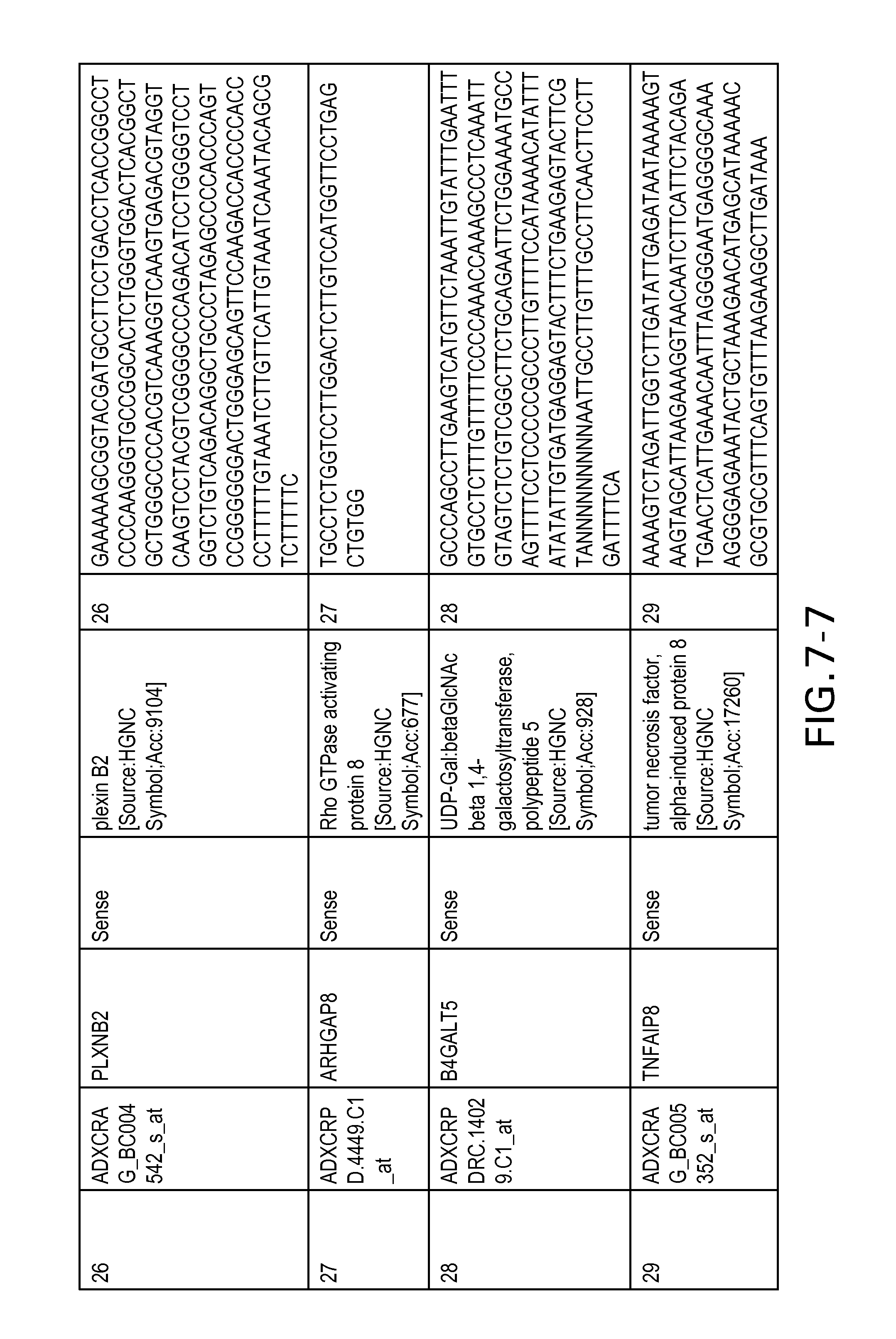
D00014

D00015
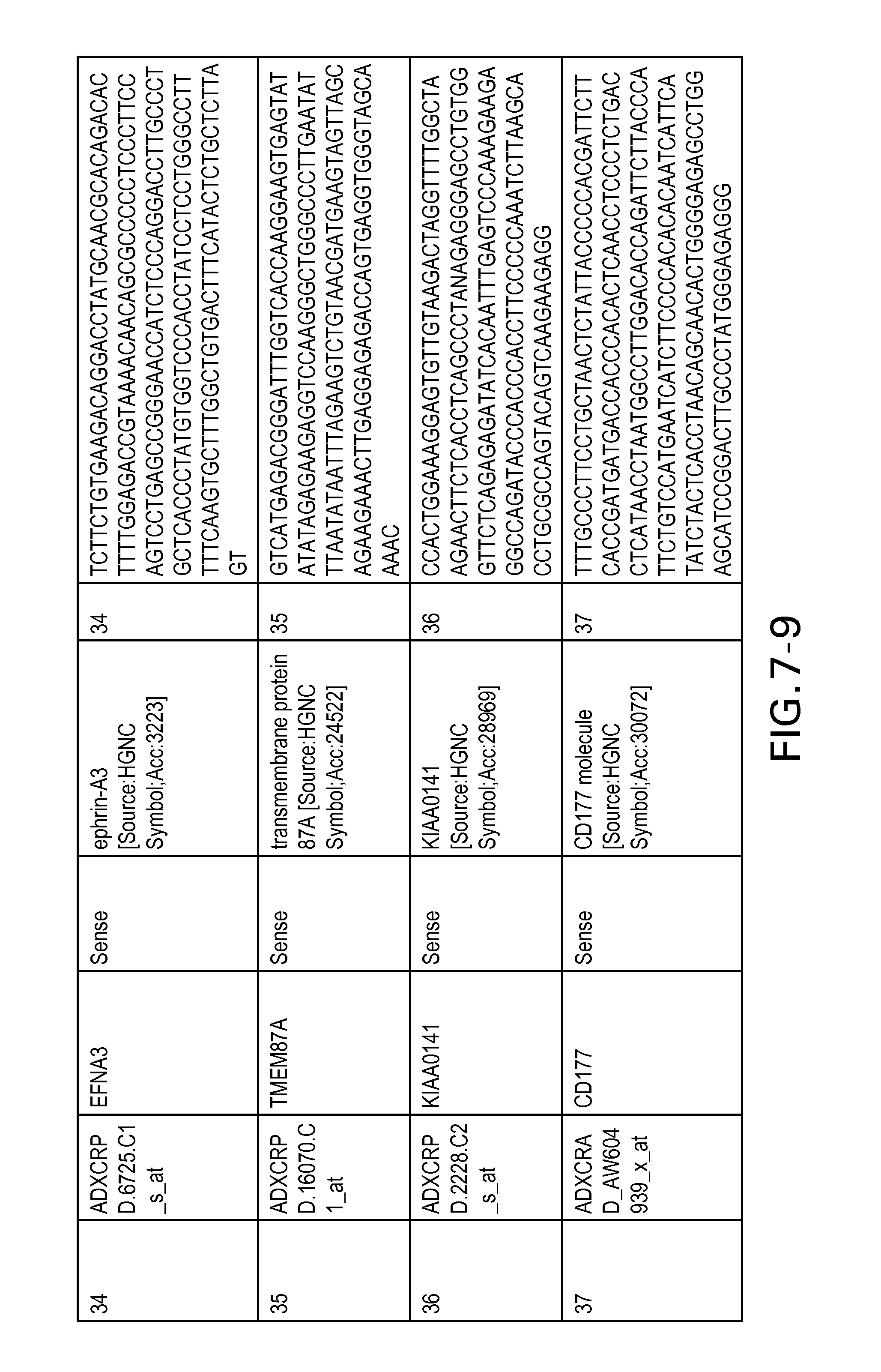
D00016
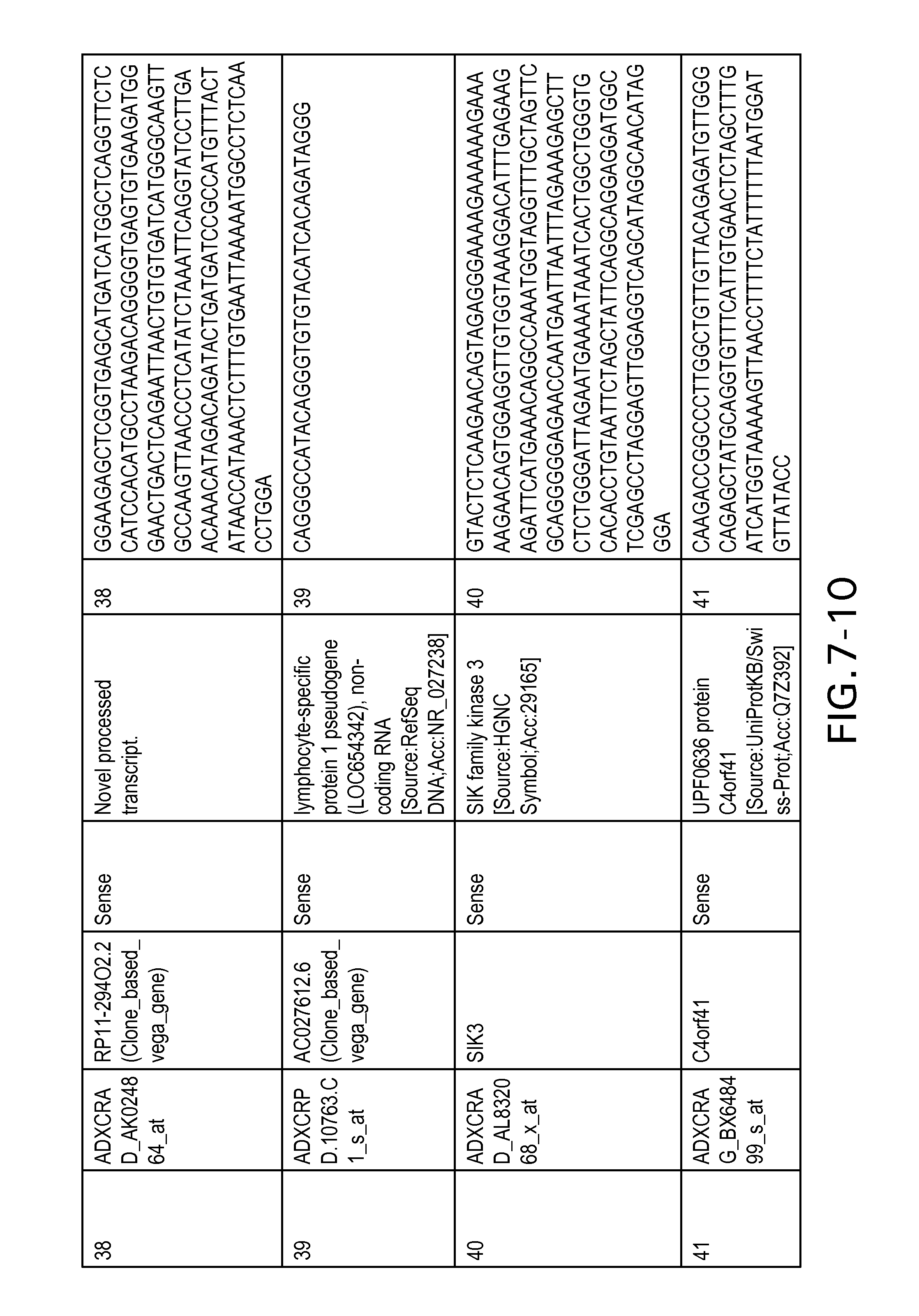
D00017
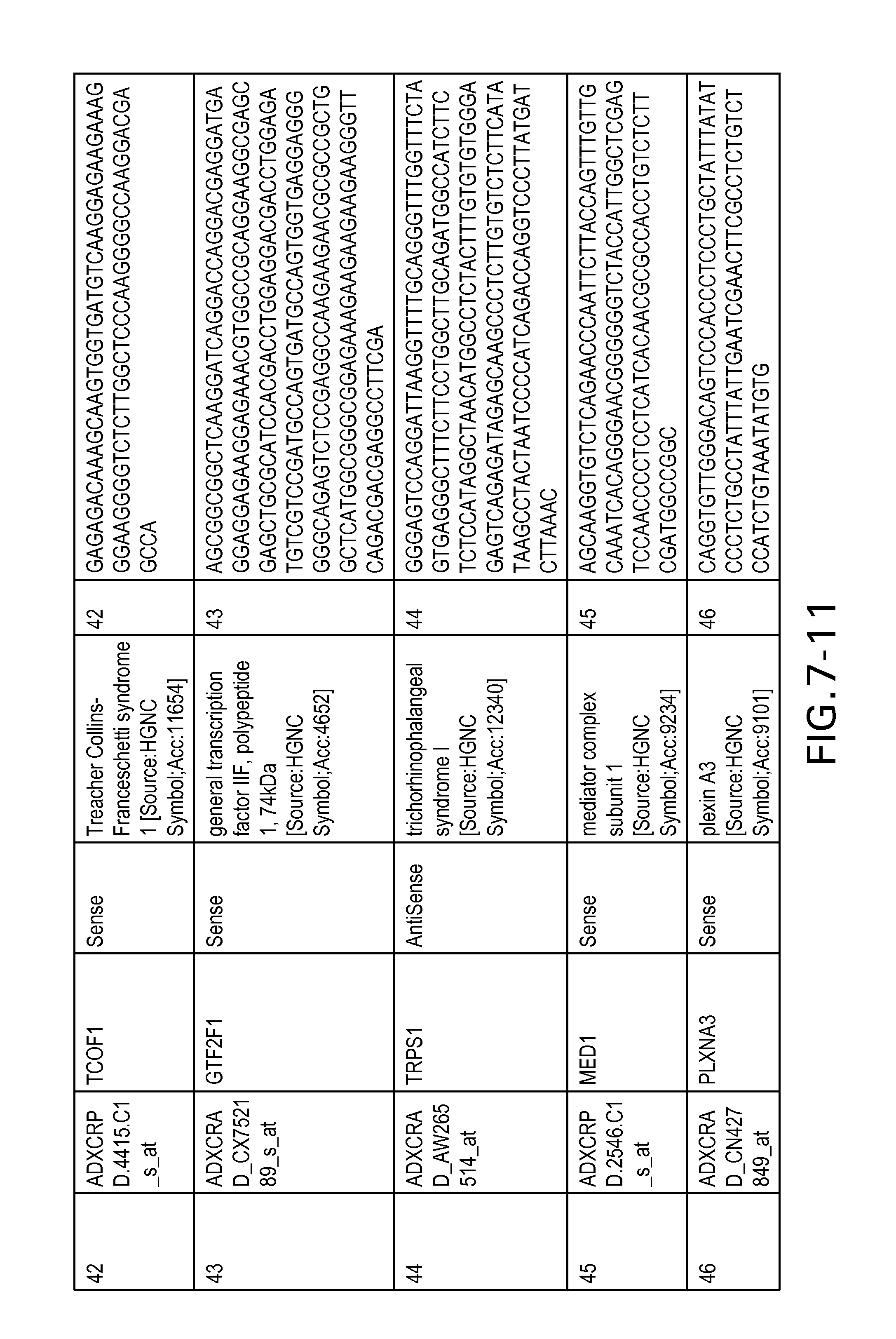
D00018
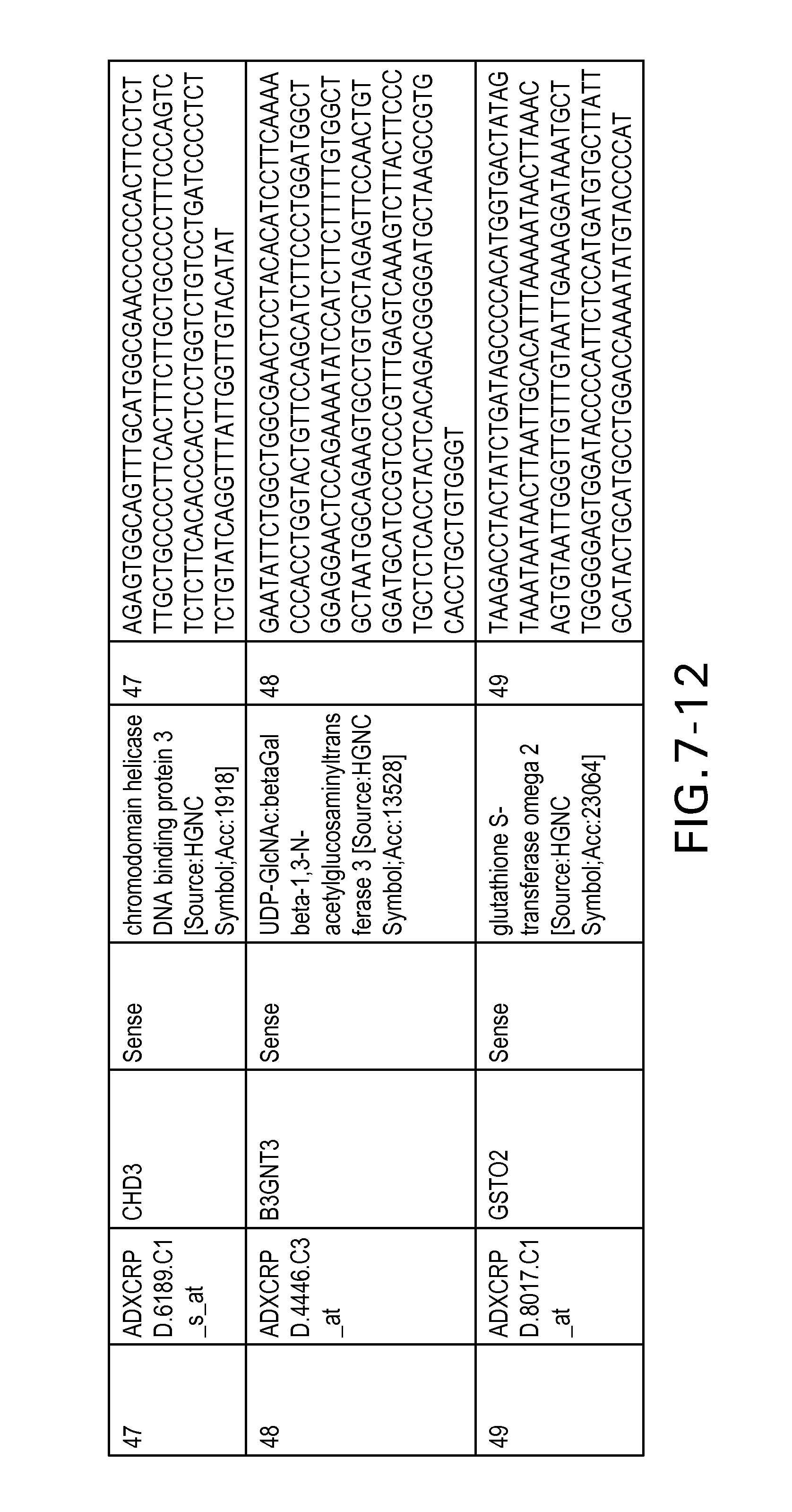
D00019
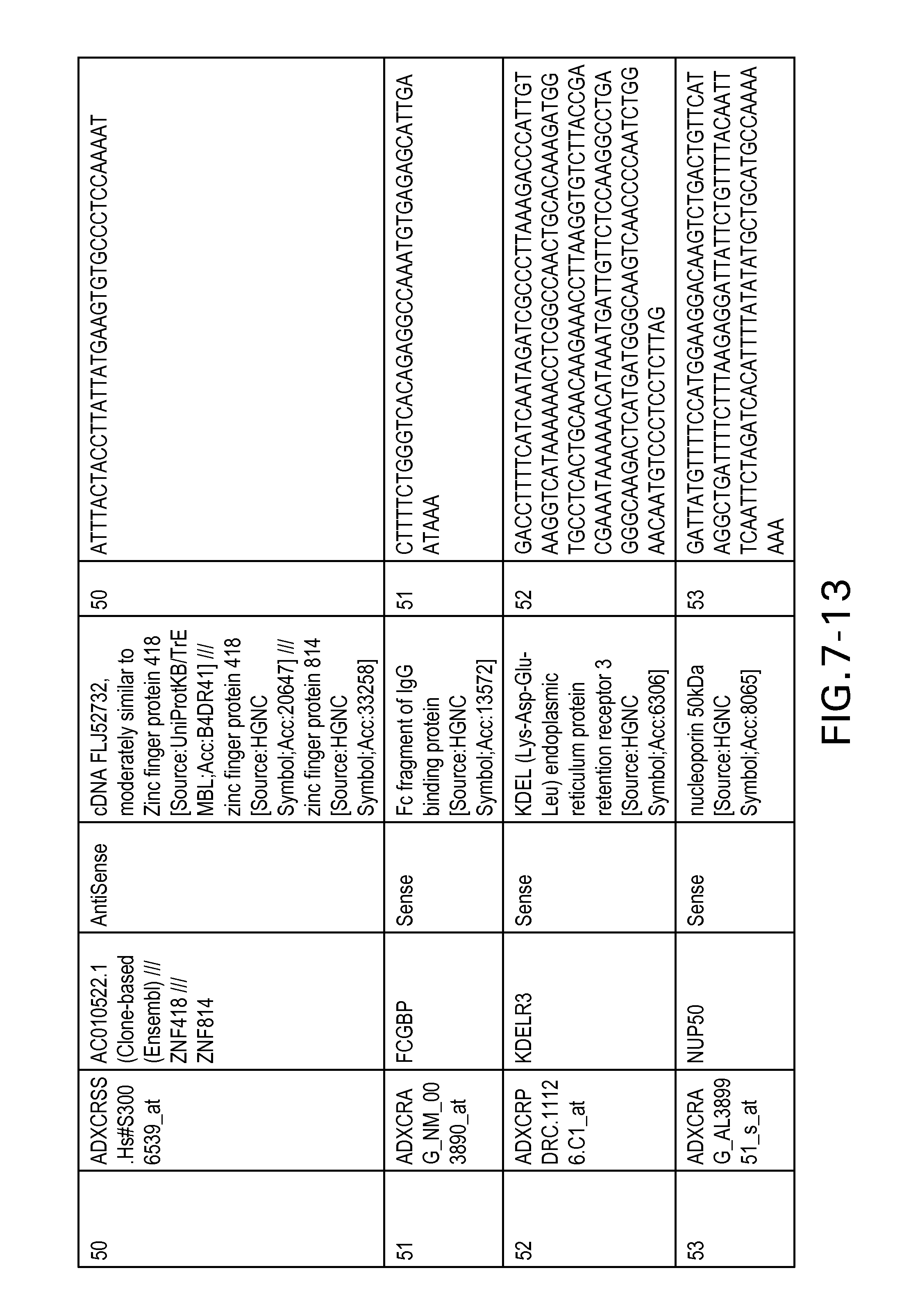
D00020
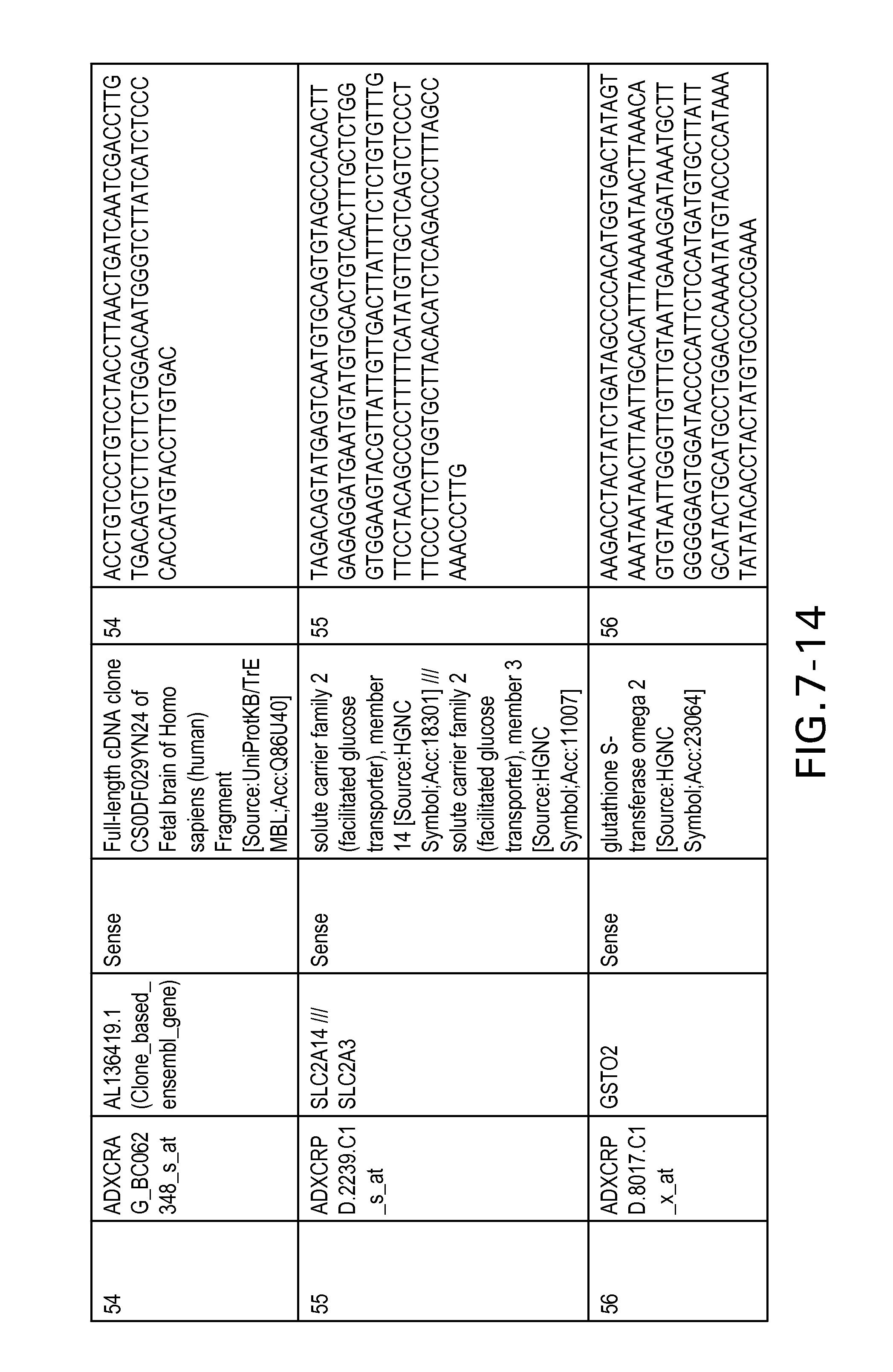
D00021
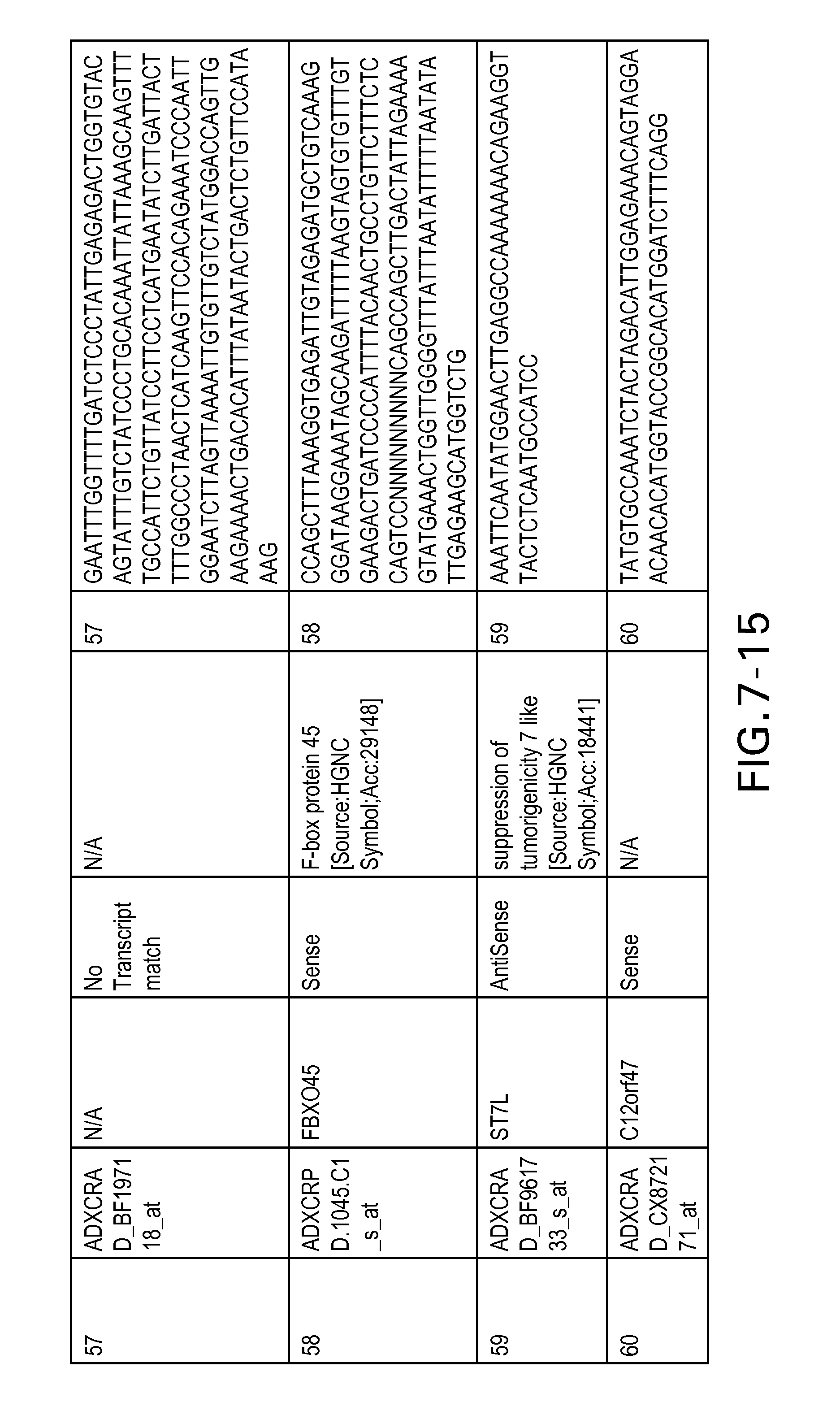
D00022
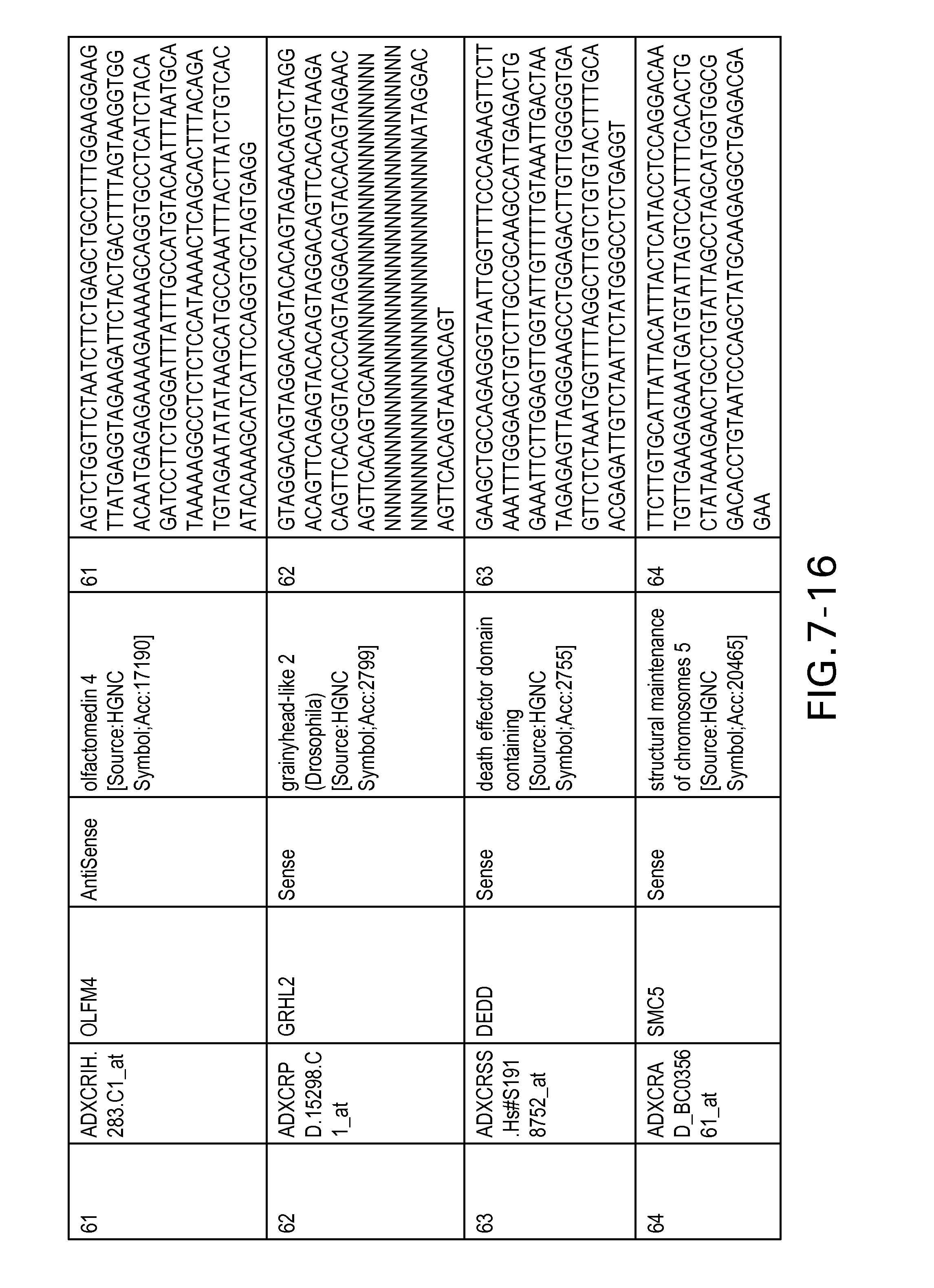
D00023
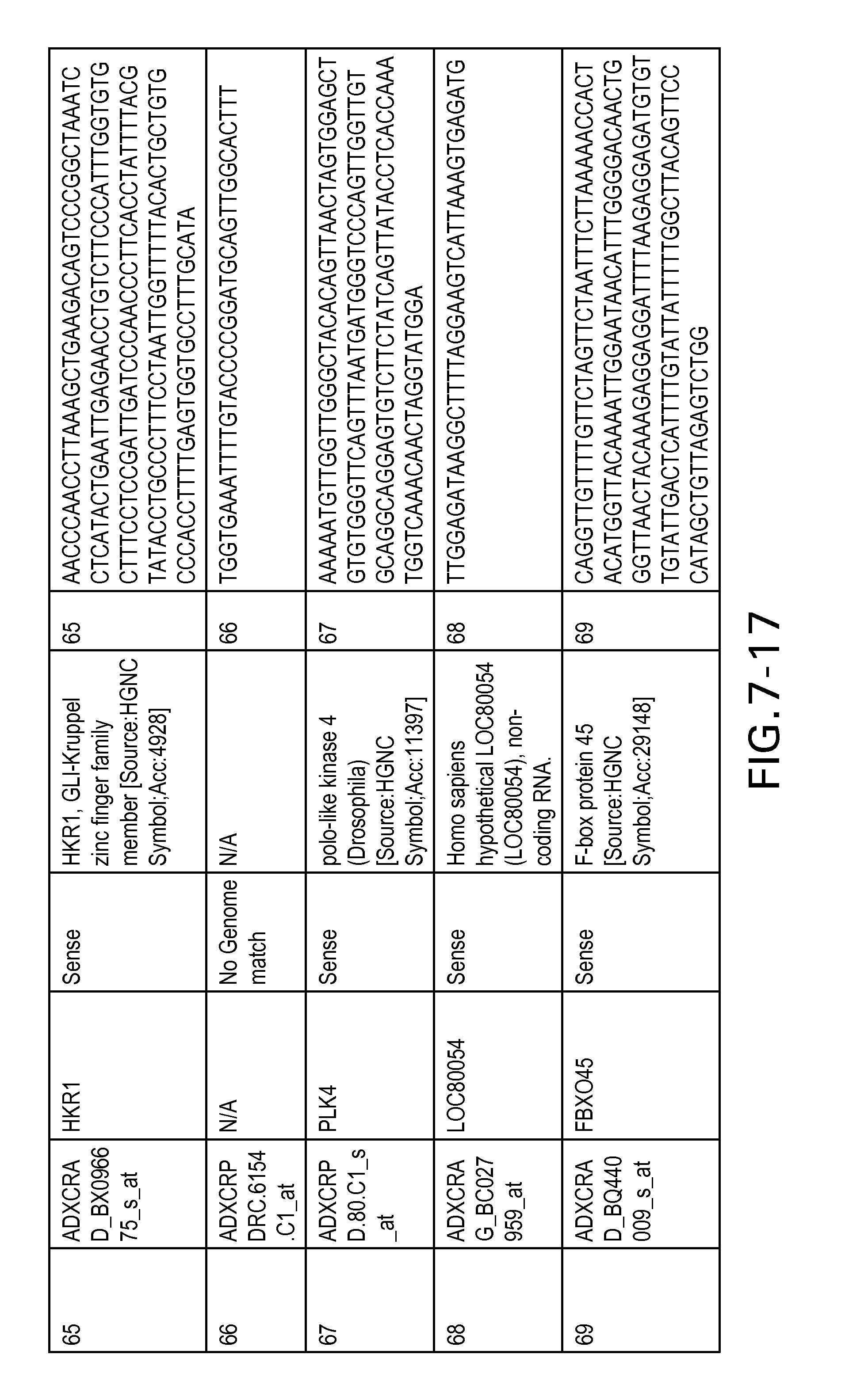
D00024
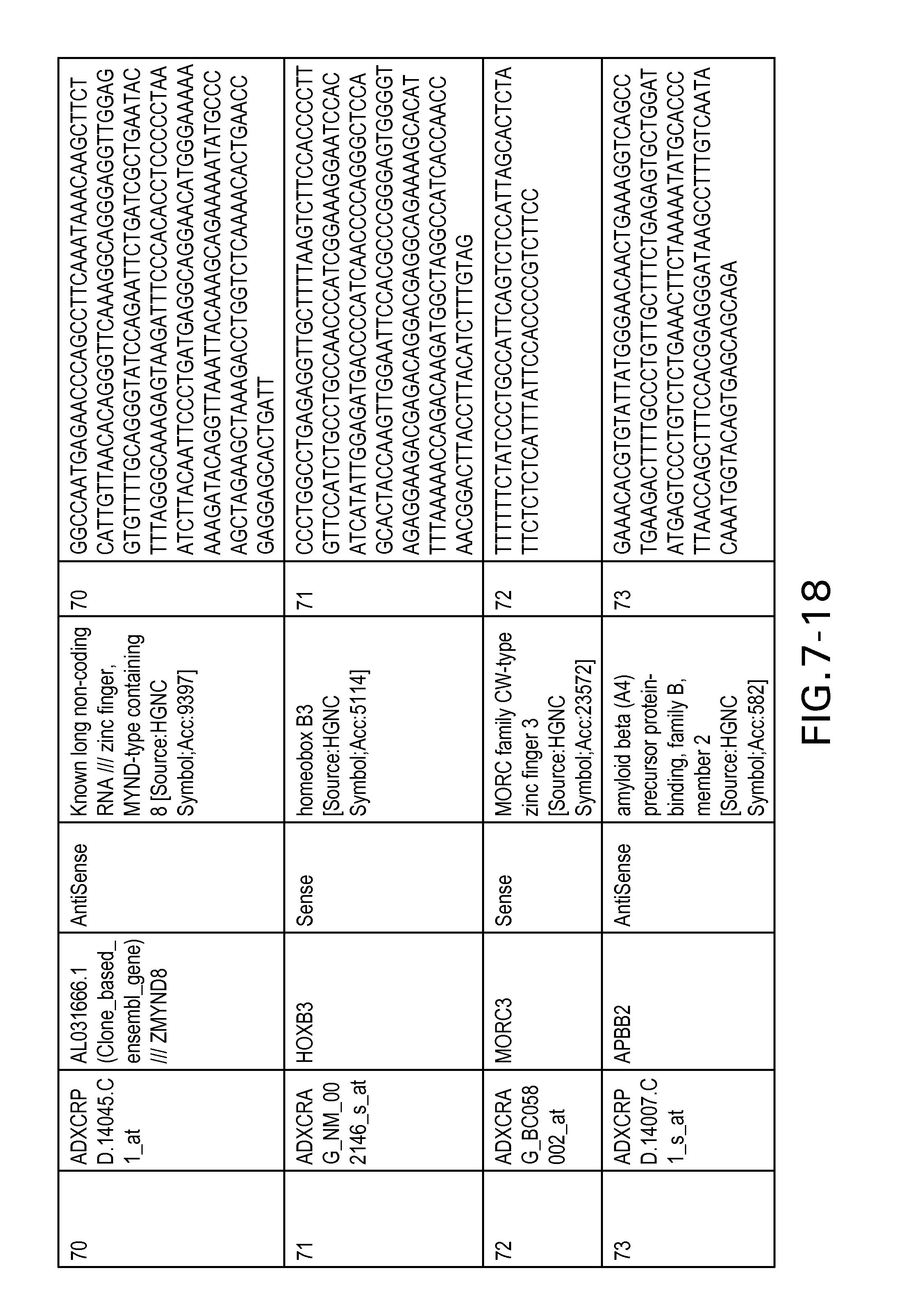
D00025

D00026
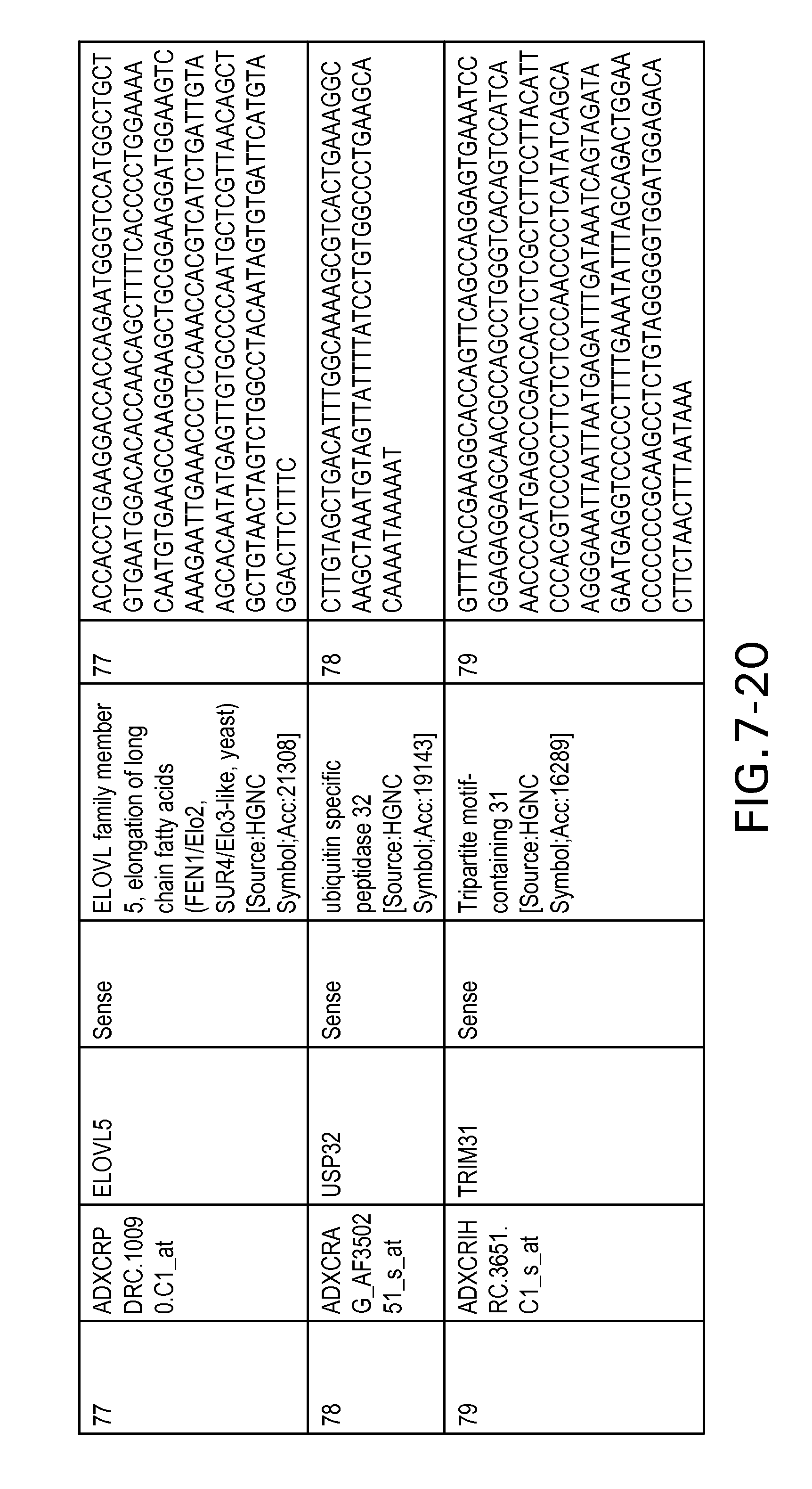
D00027
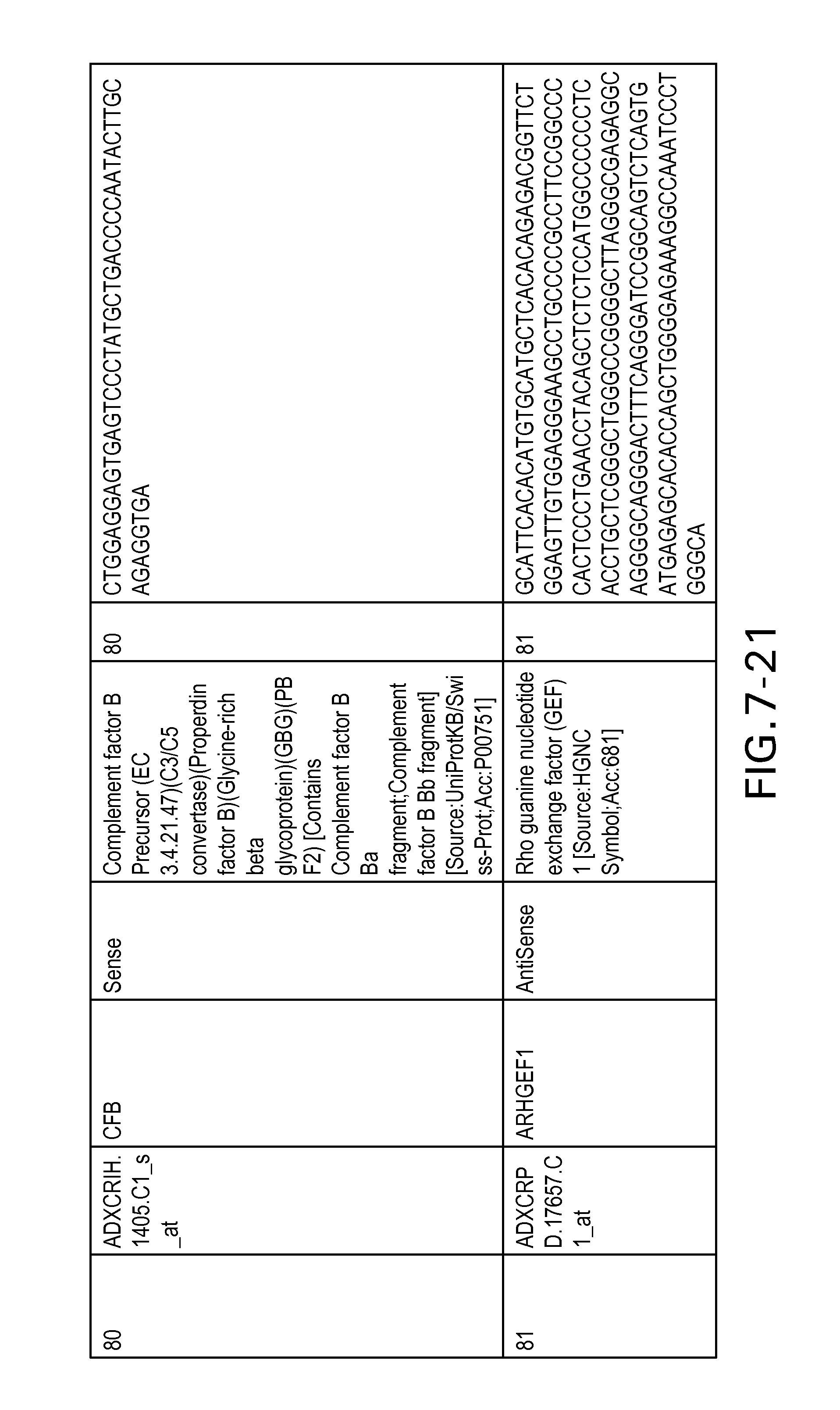
D00028
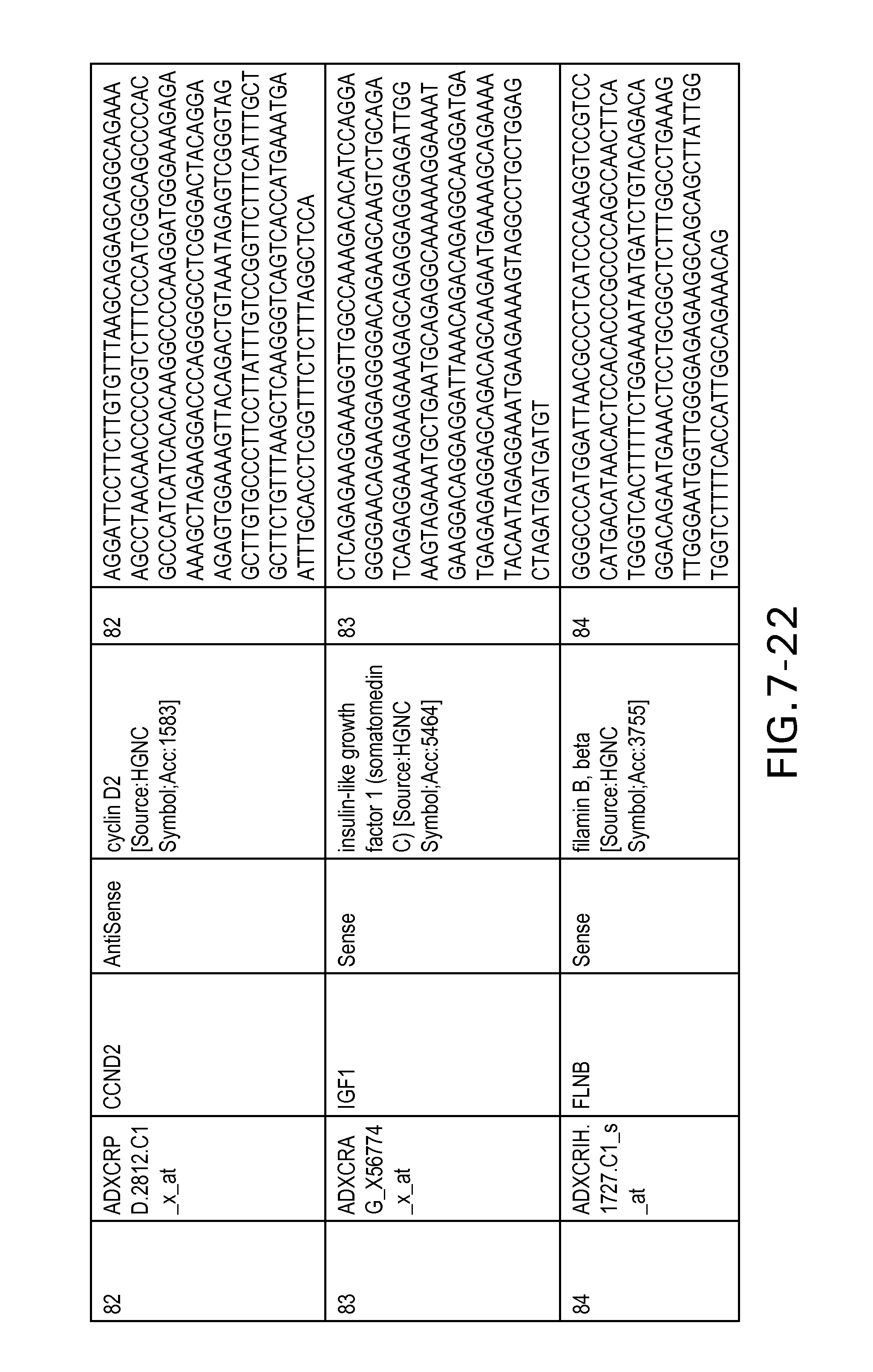
D00029
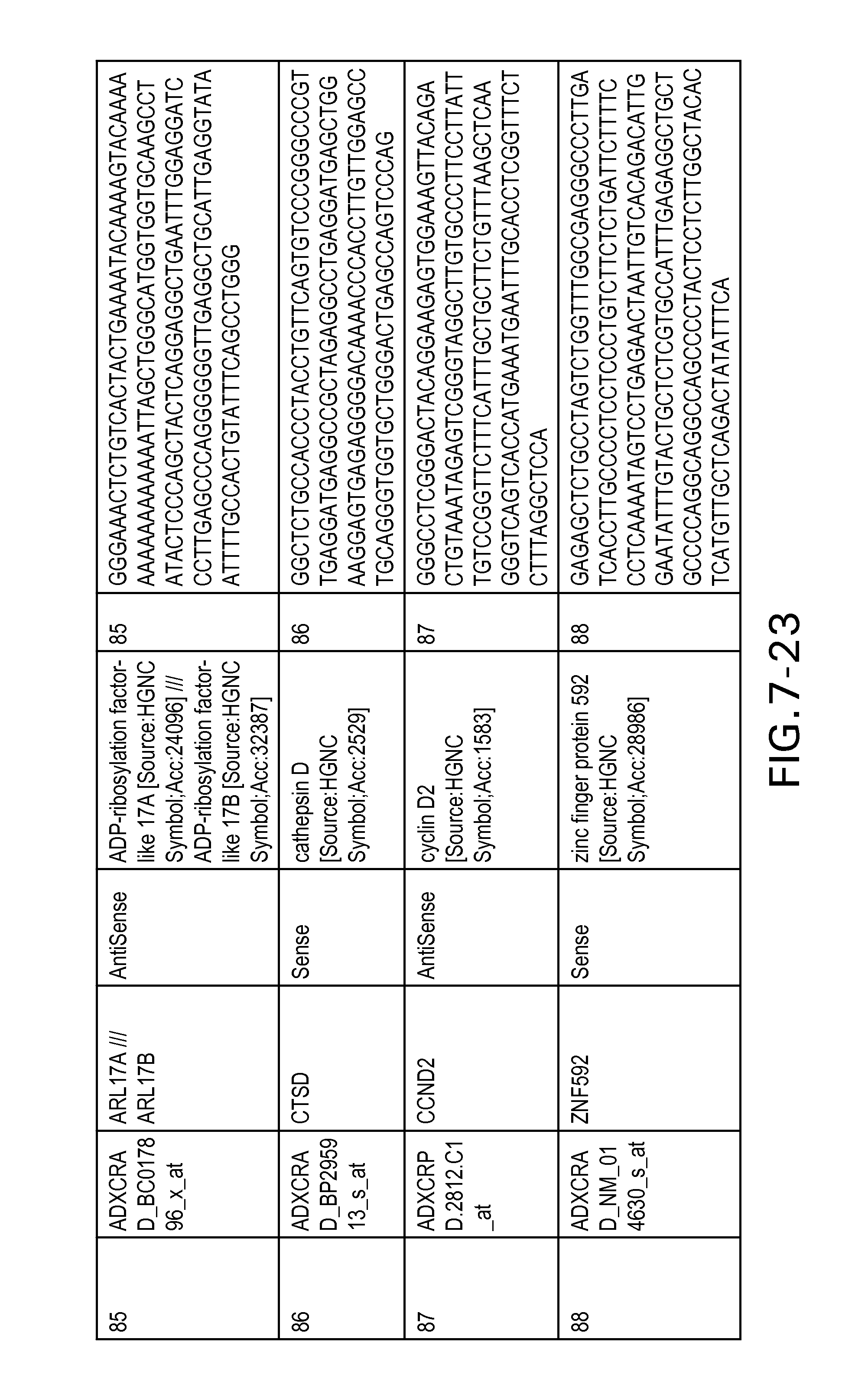
D00030
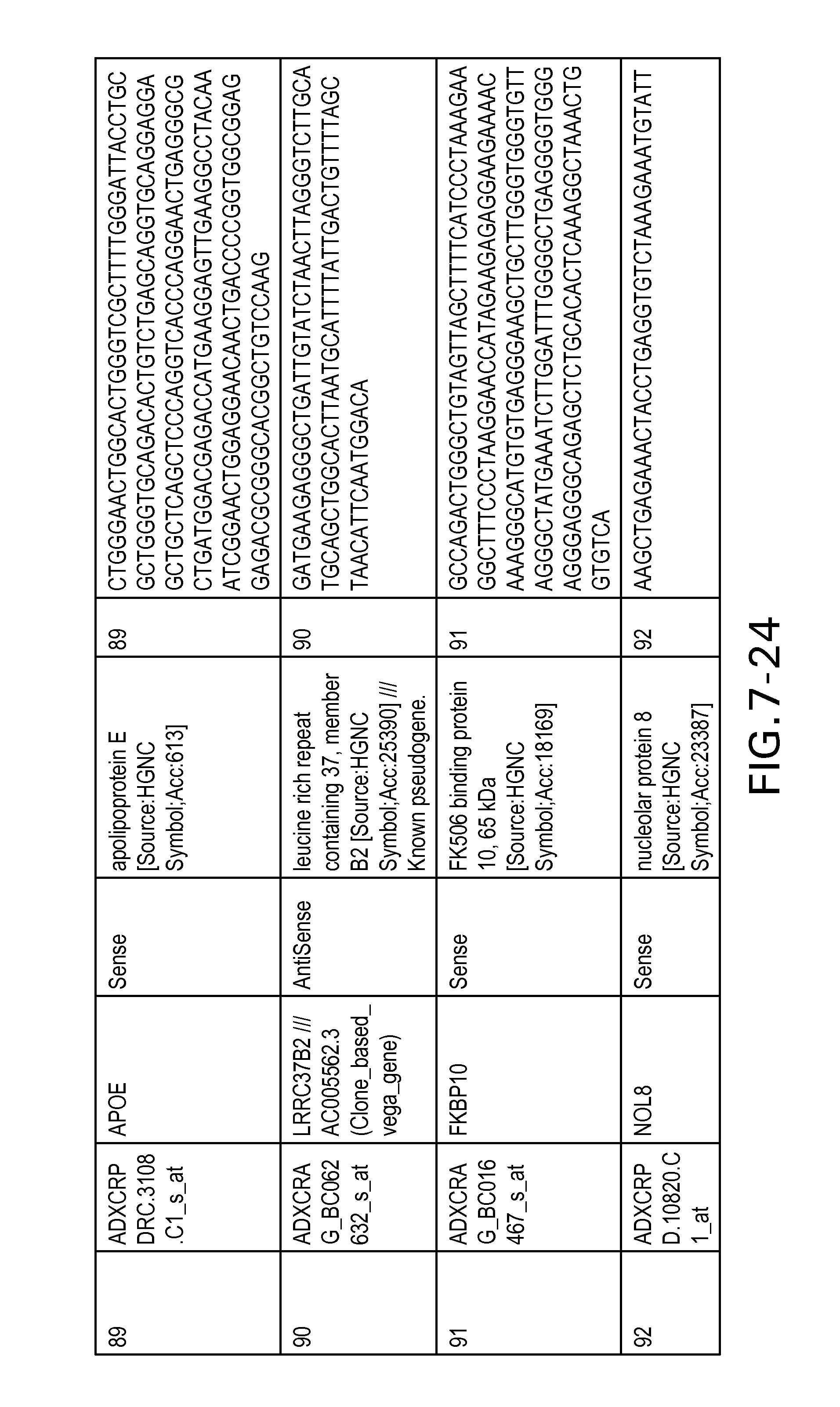
D00031
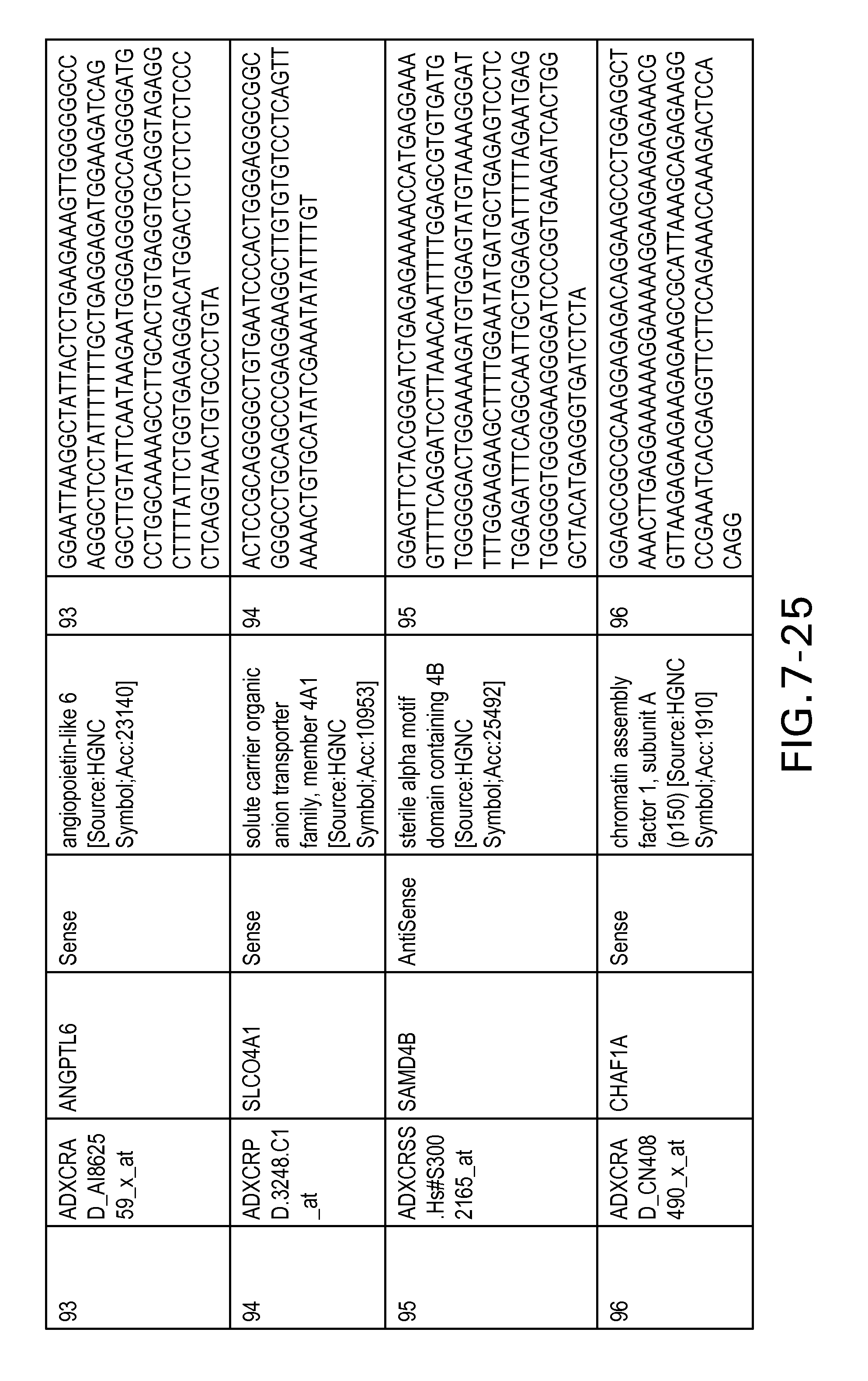
D00032

D00033
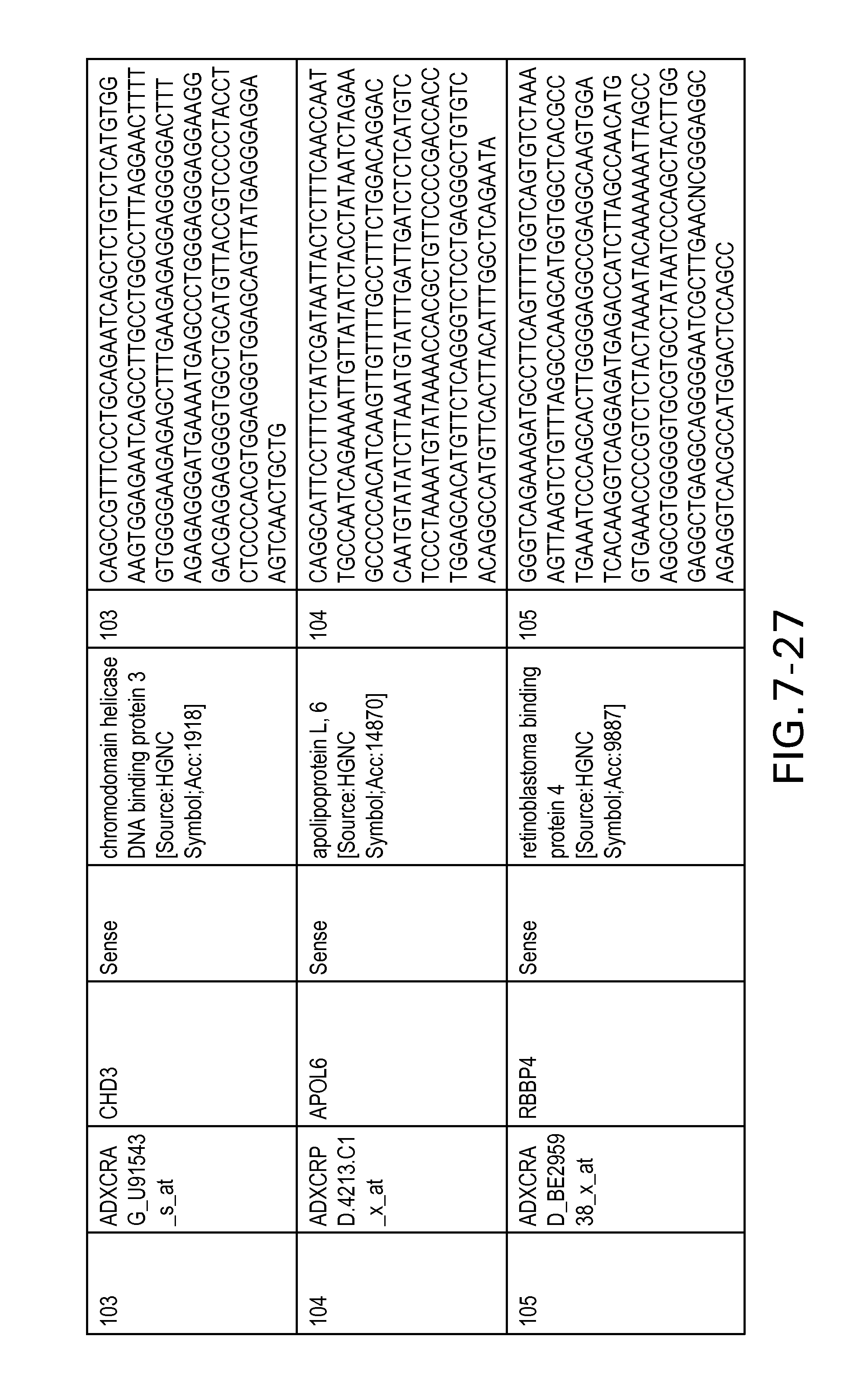
D00034
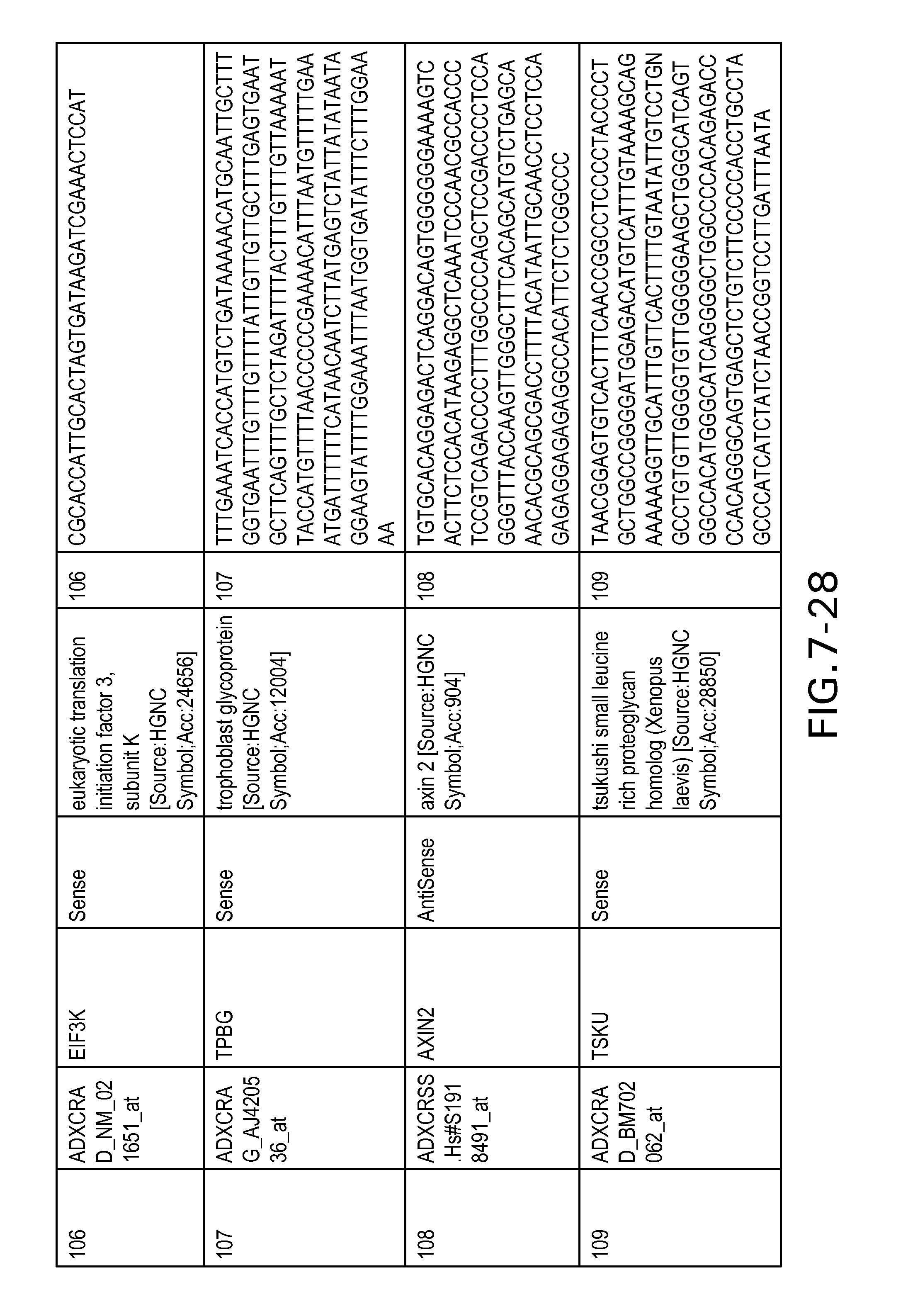
D00035
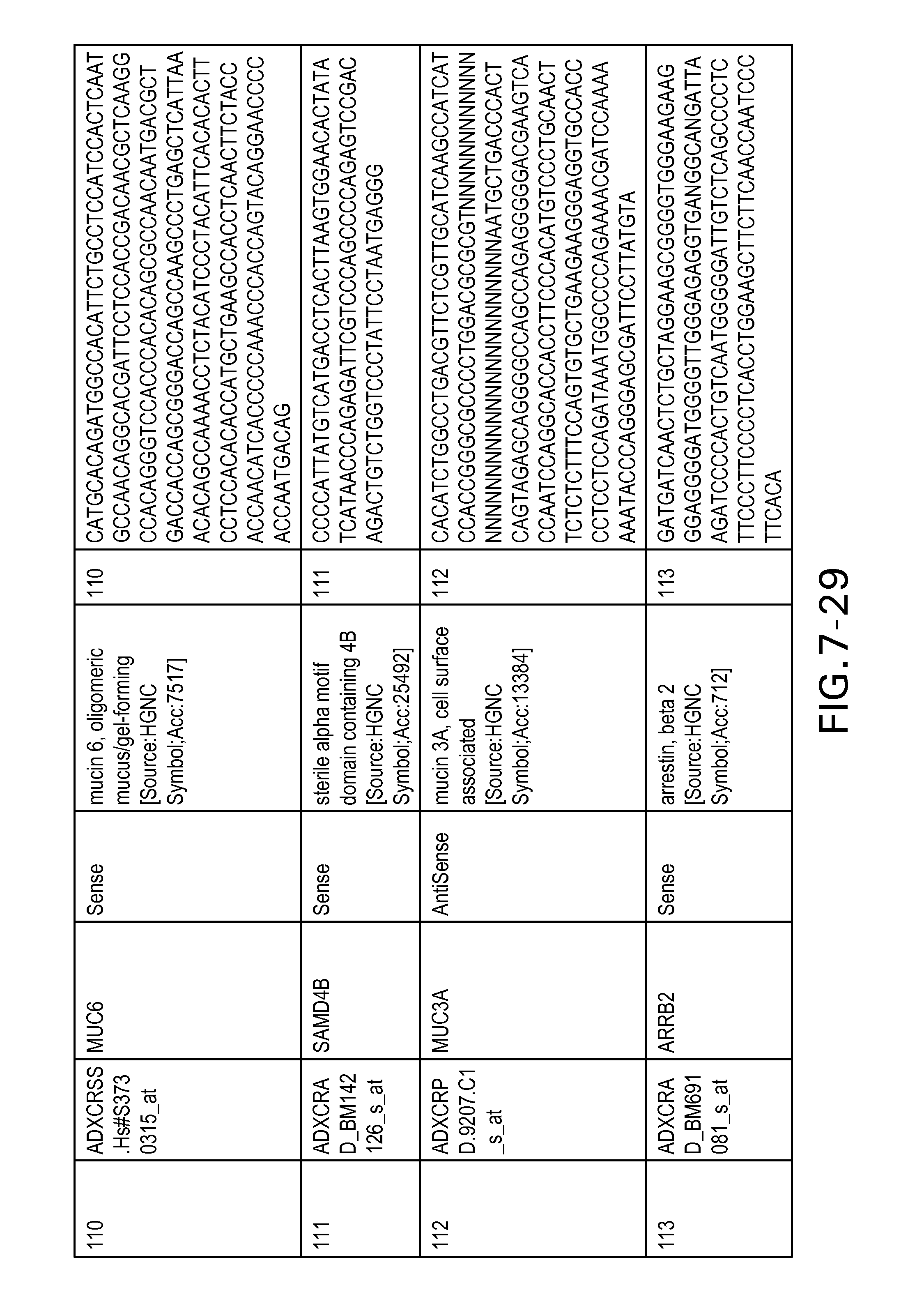
D00036
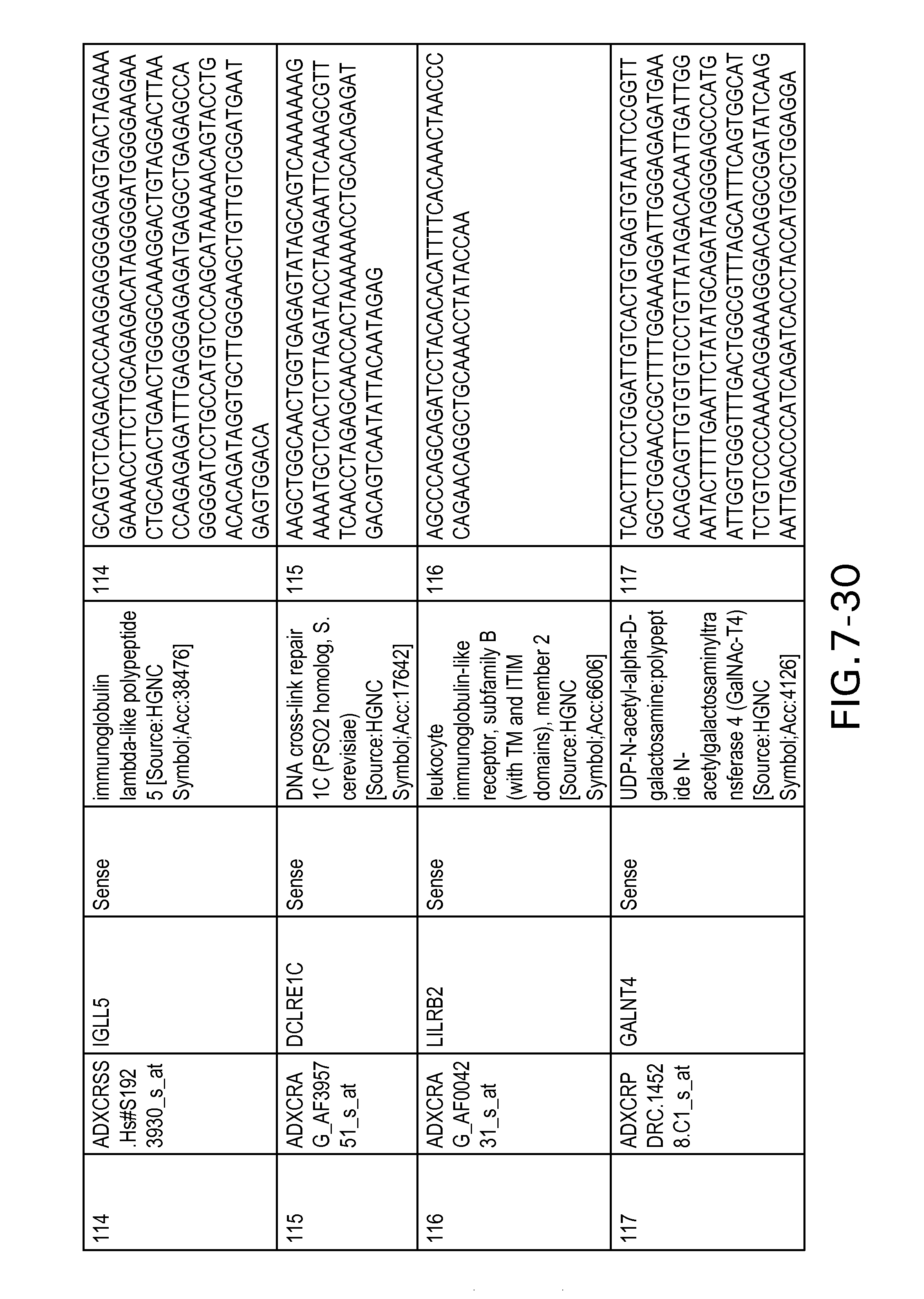
D00037
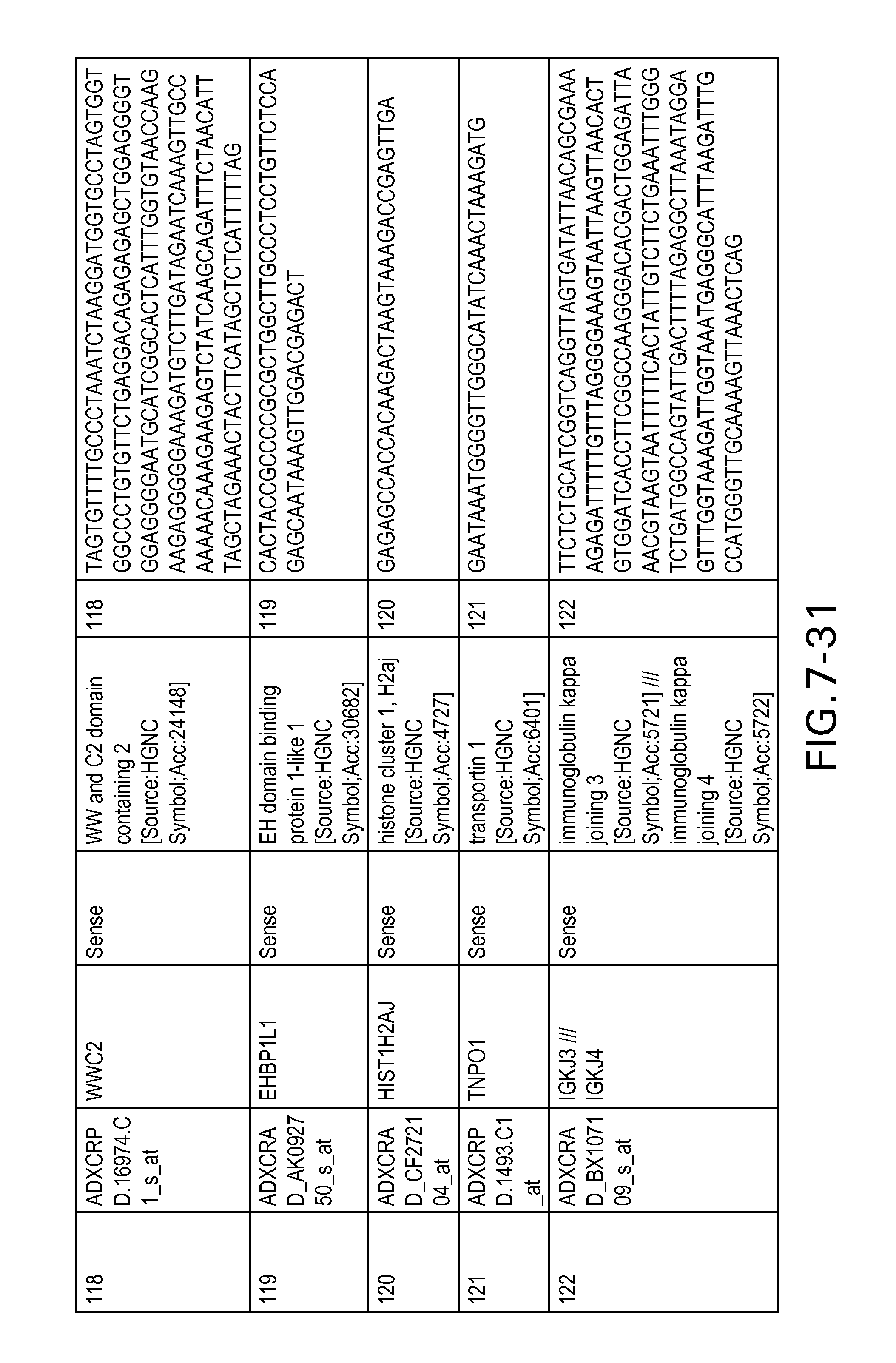
D00038
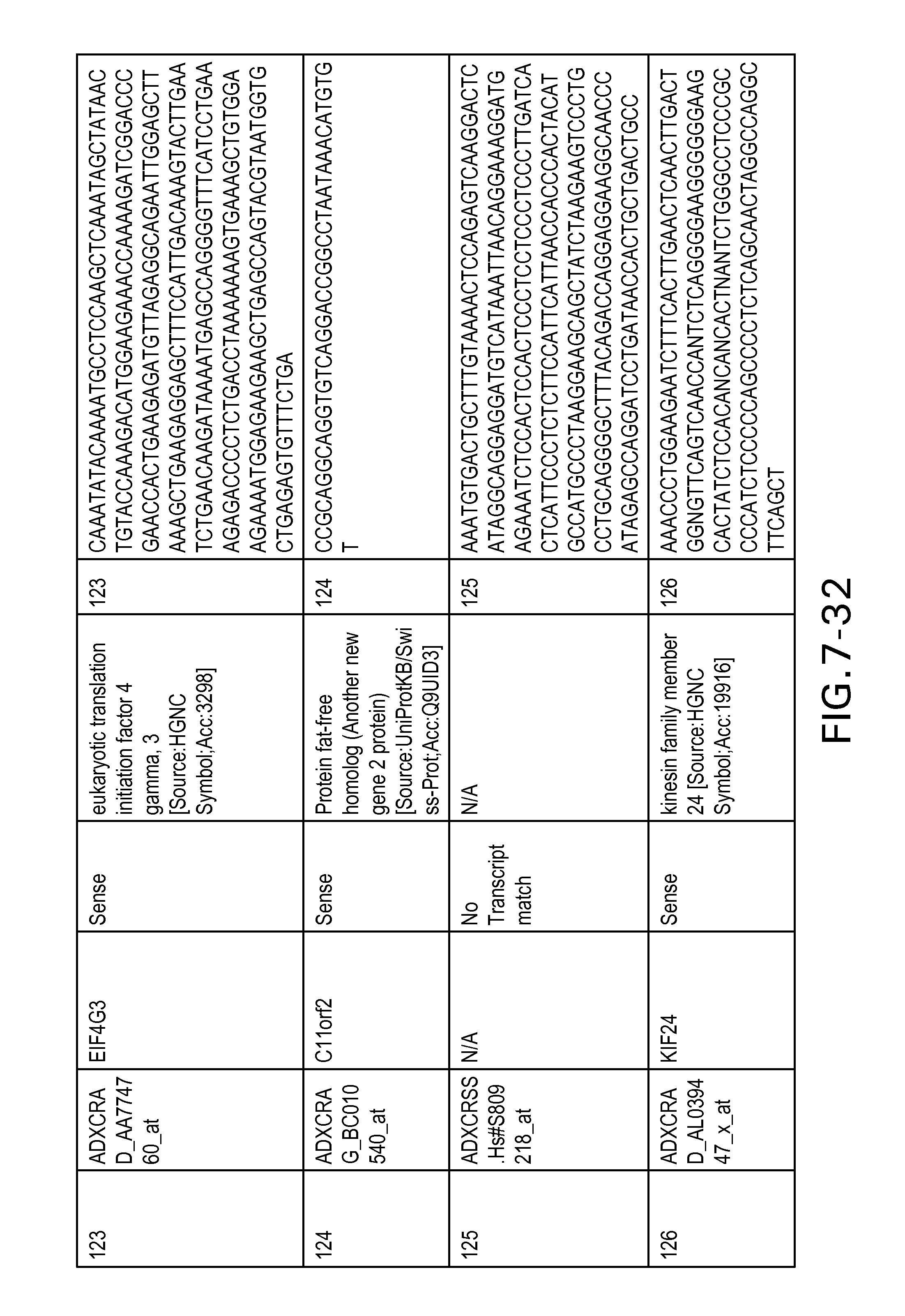
D00039
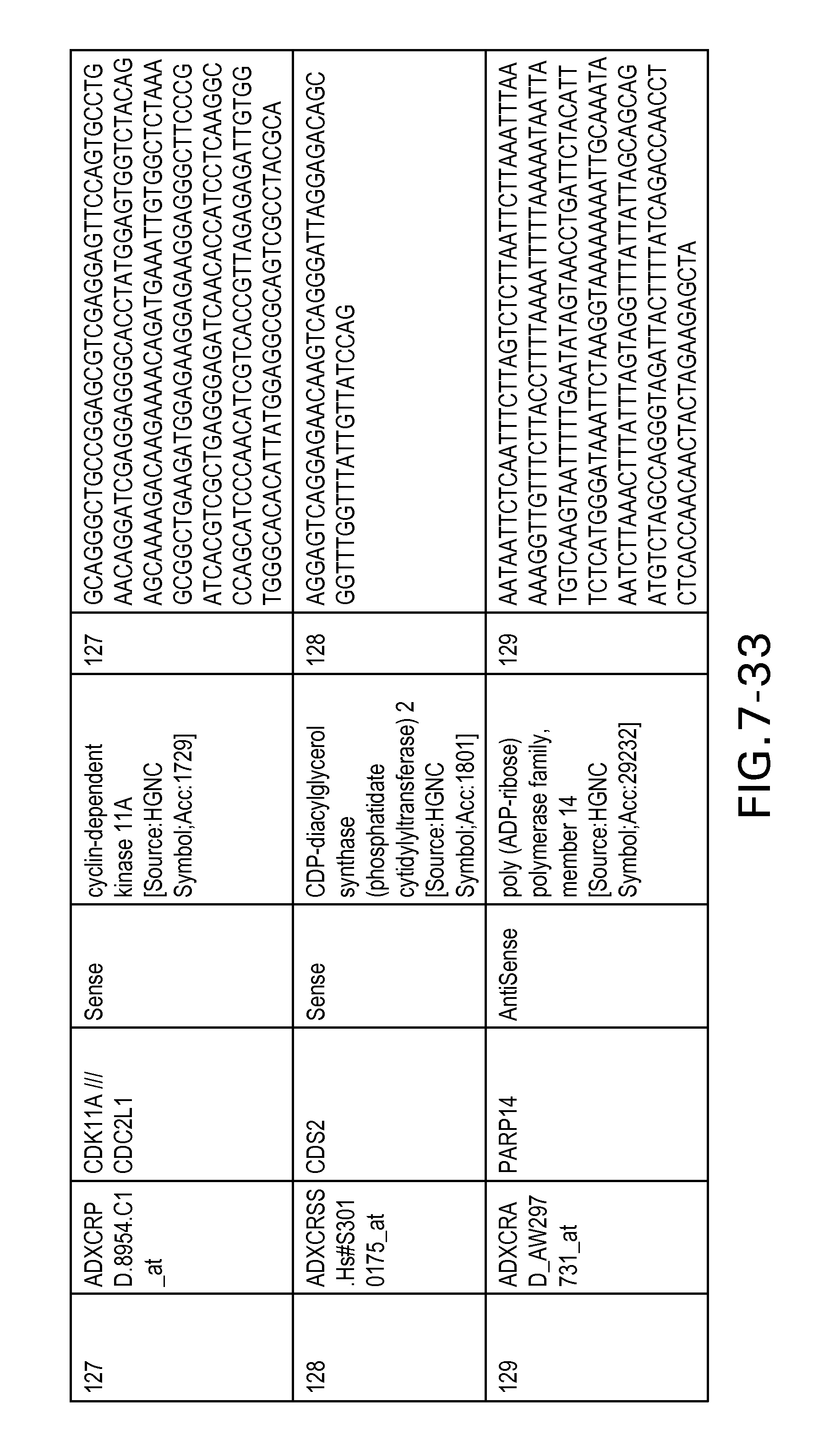
D00040
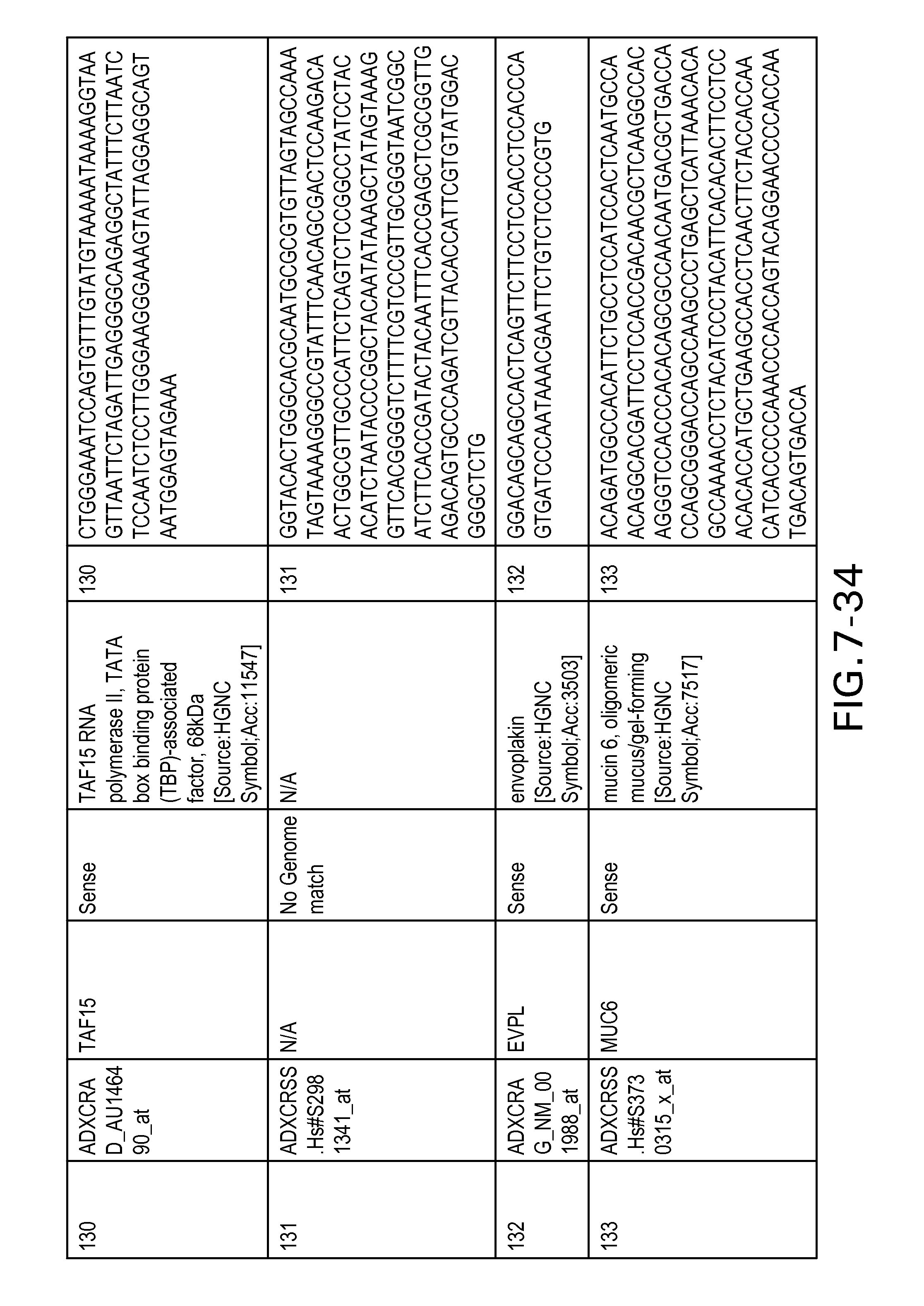
D00041
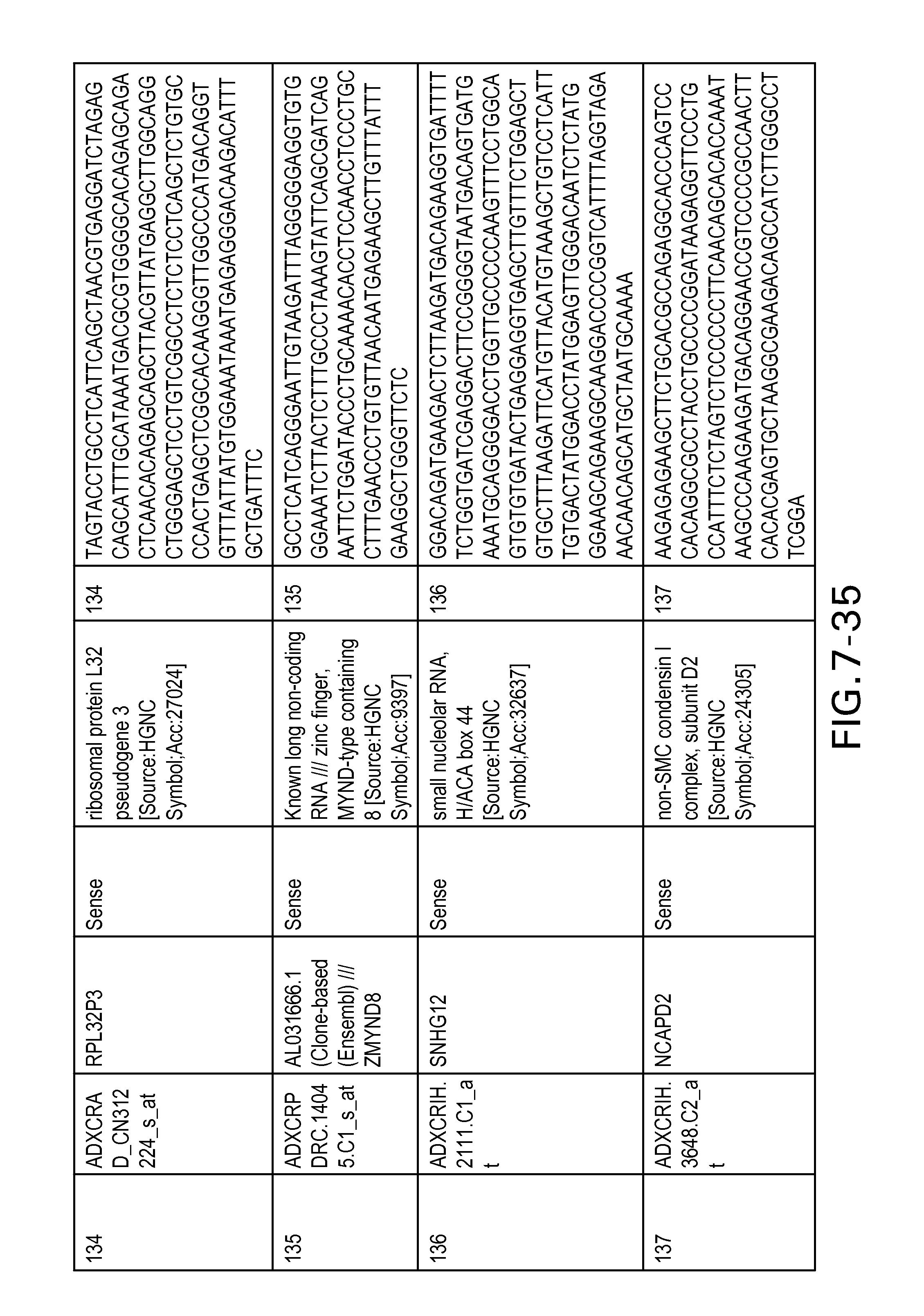
D00042
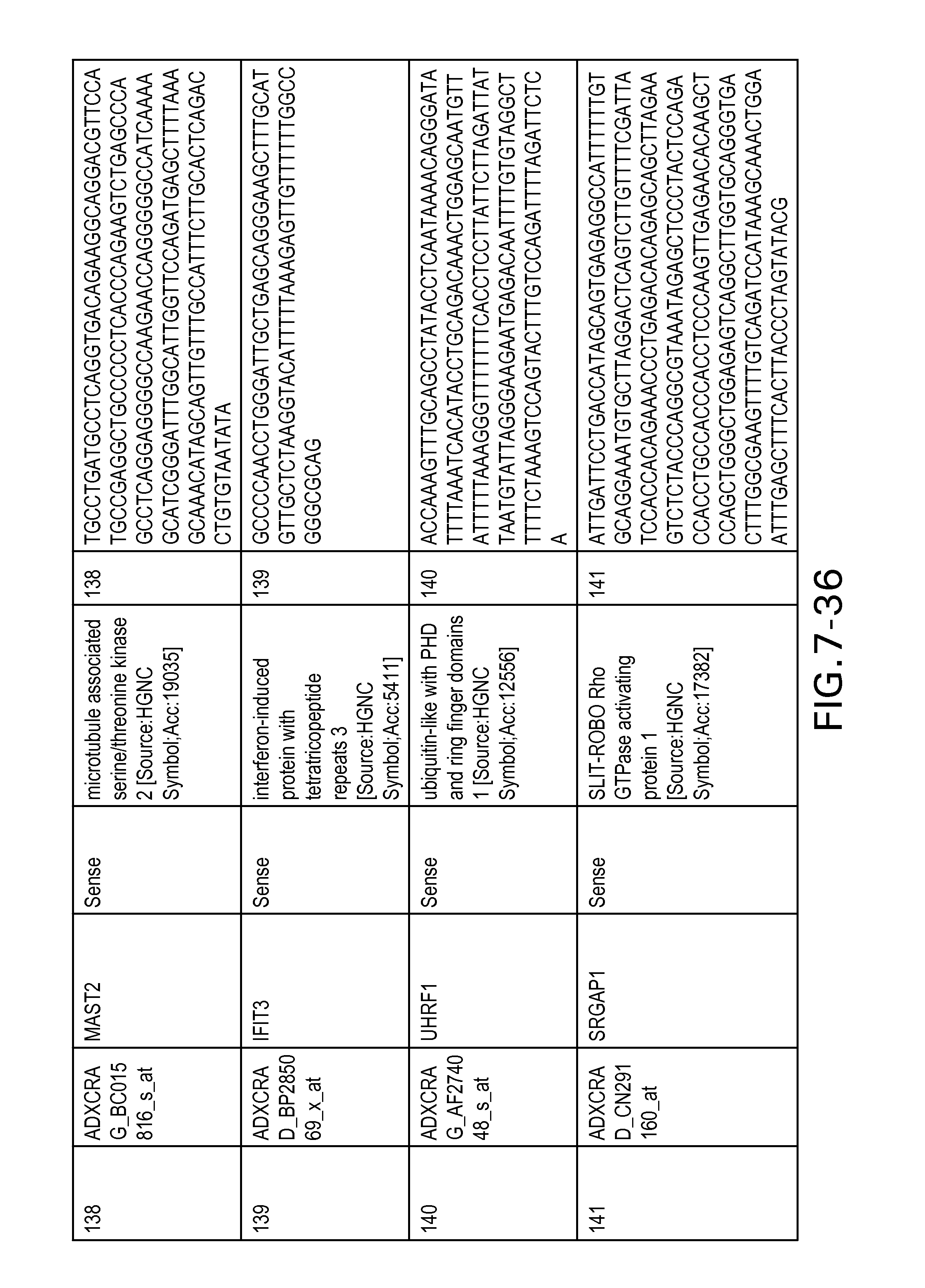
D00043
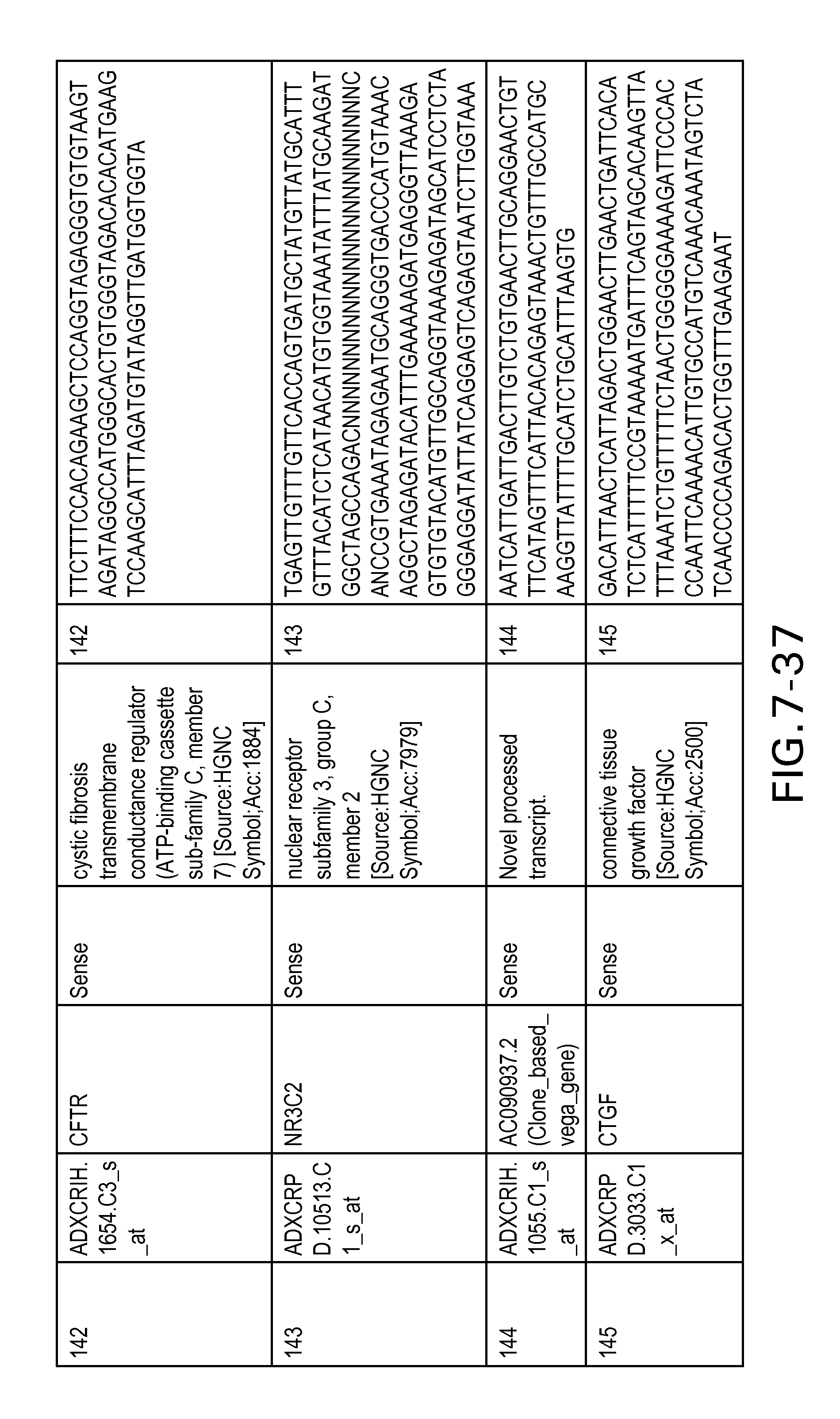
D00044
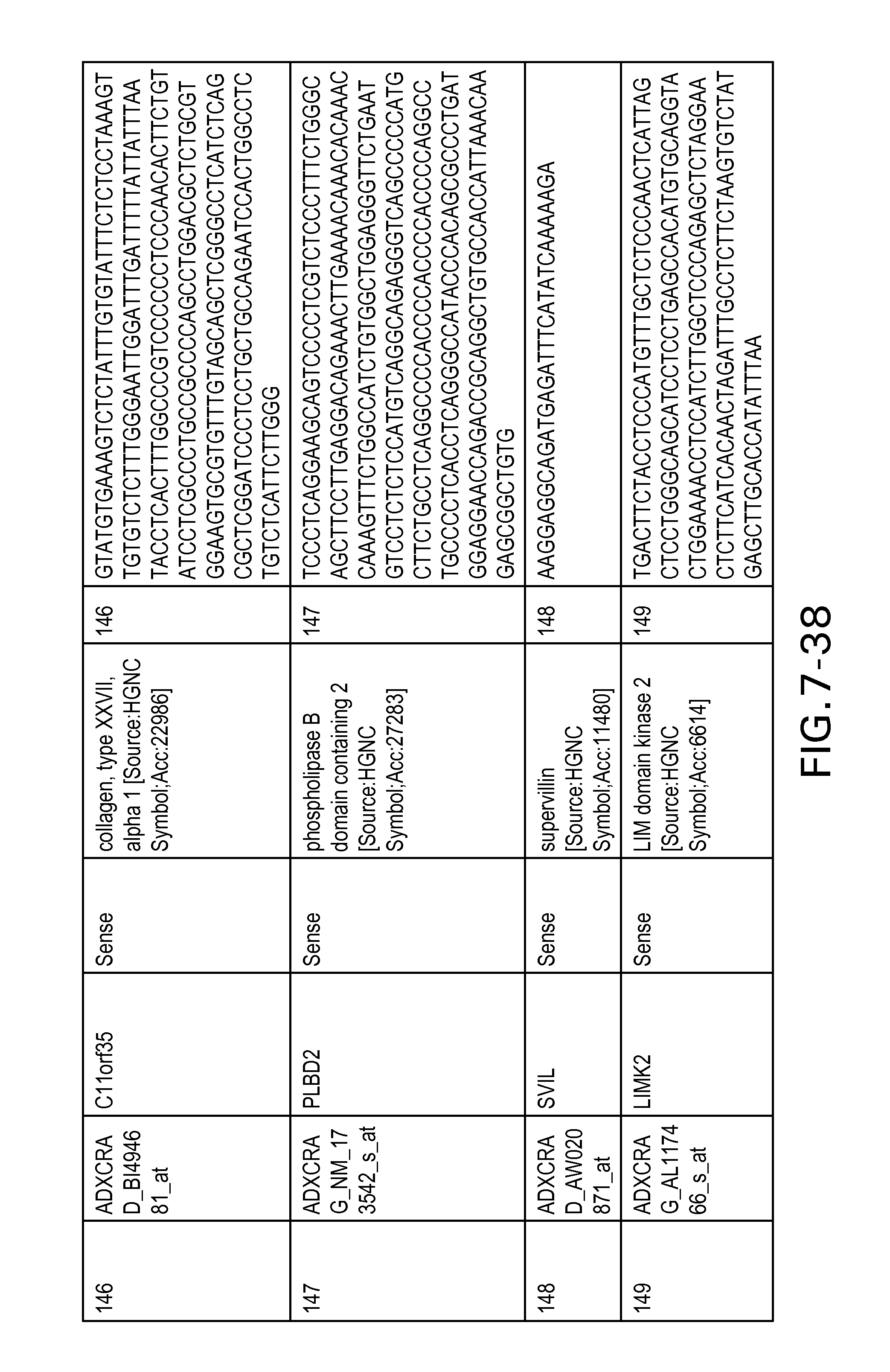
D00045
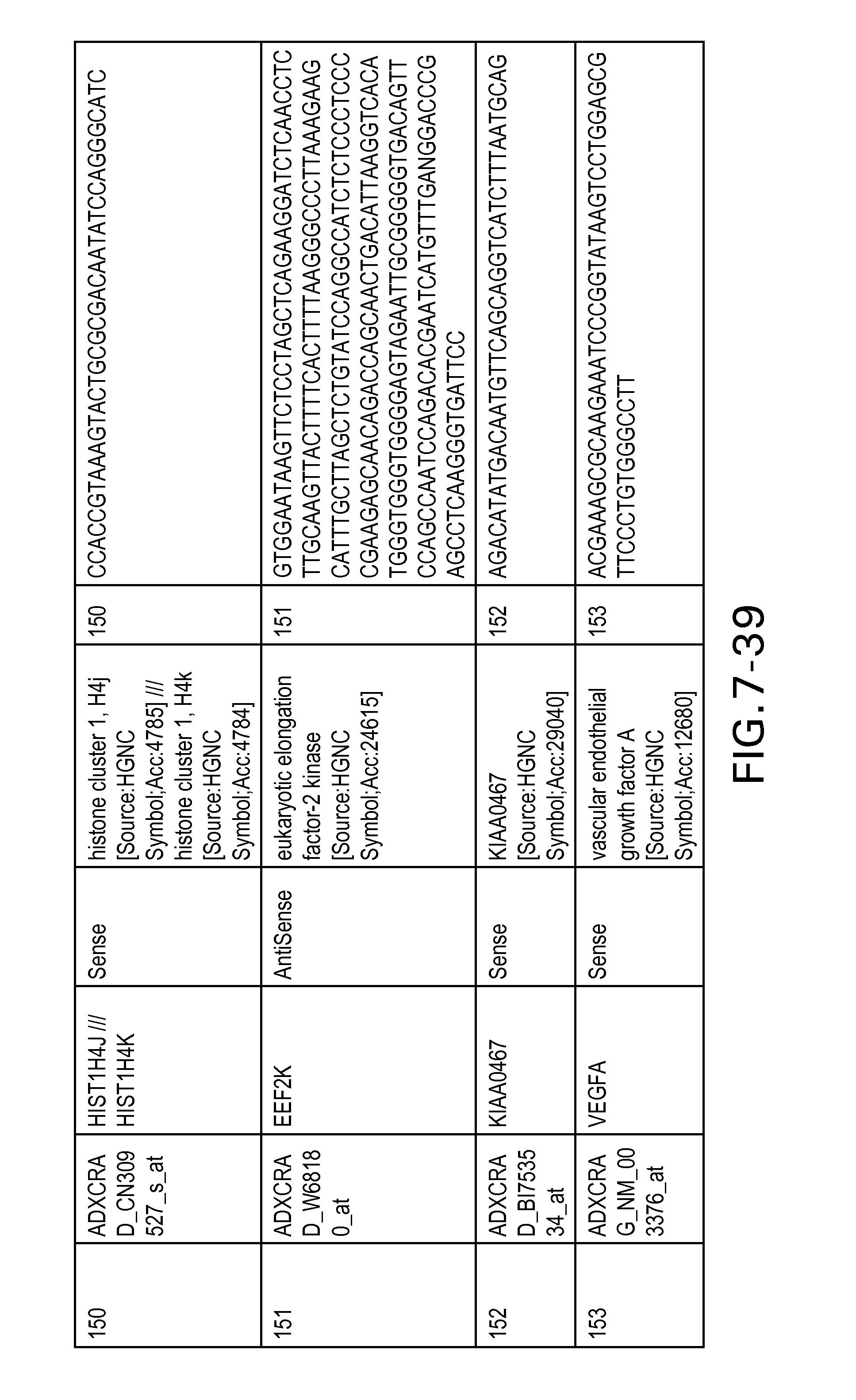
D00046
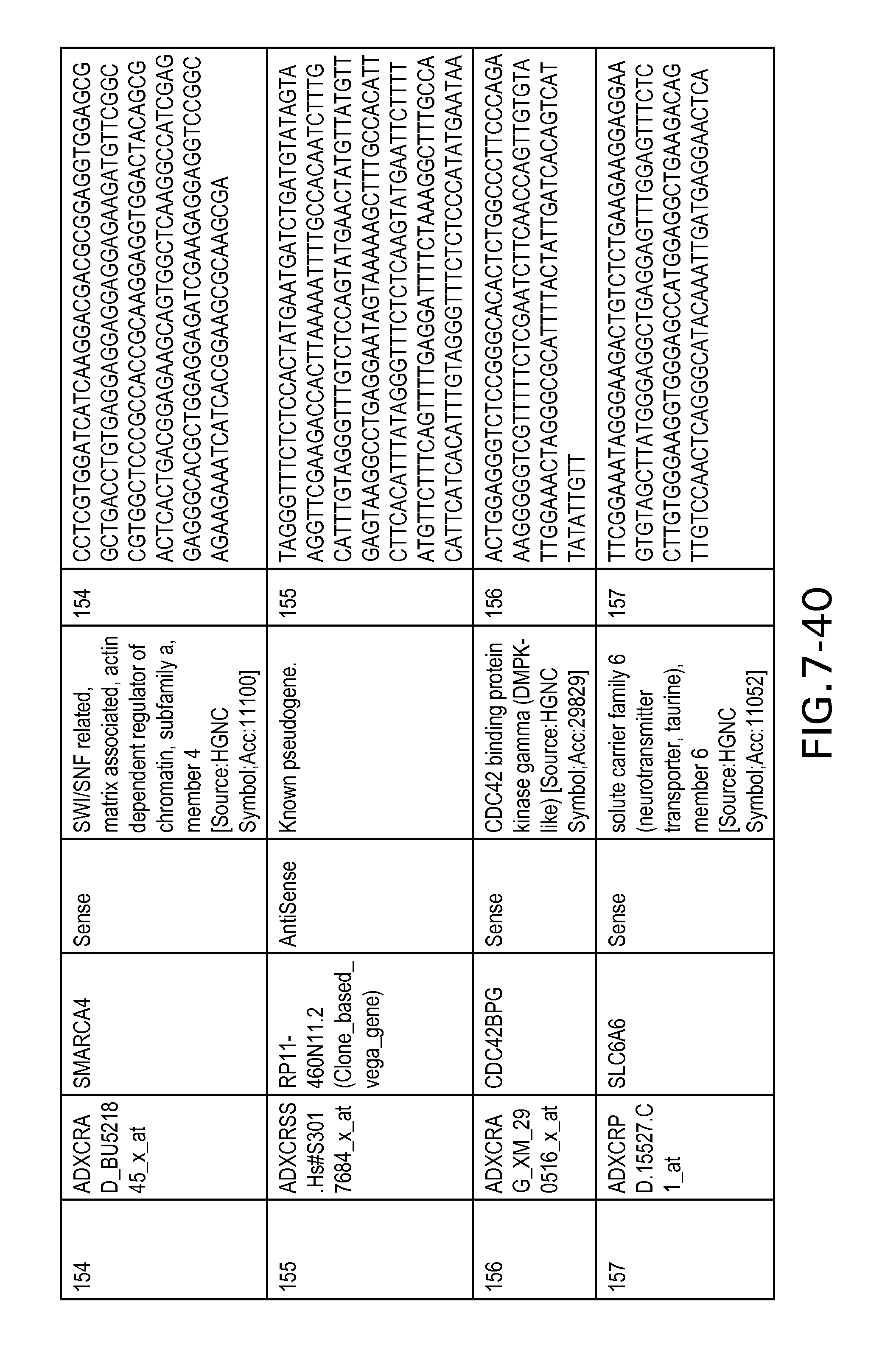
D00047
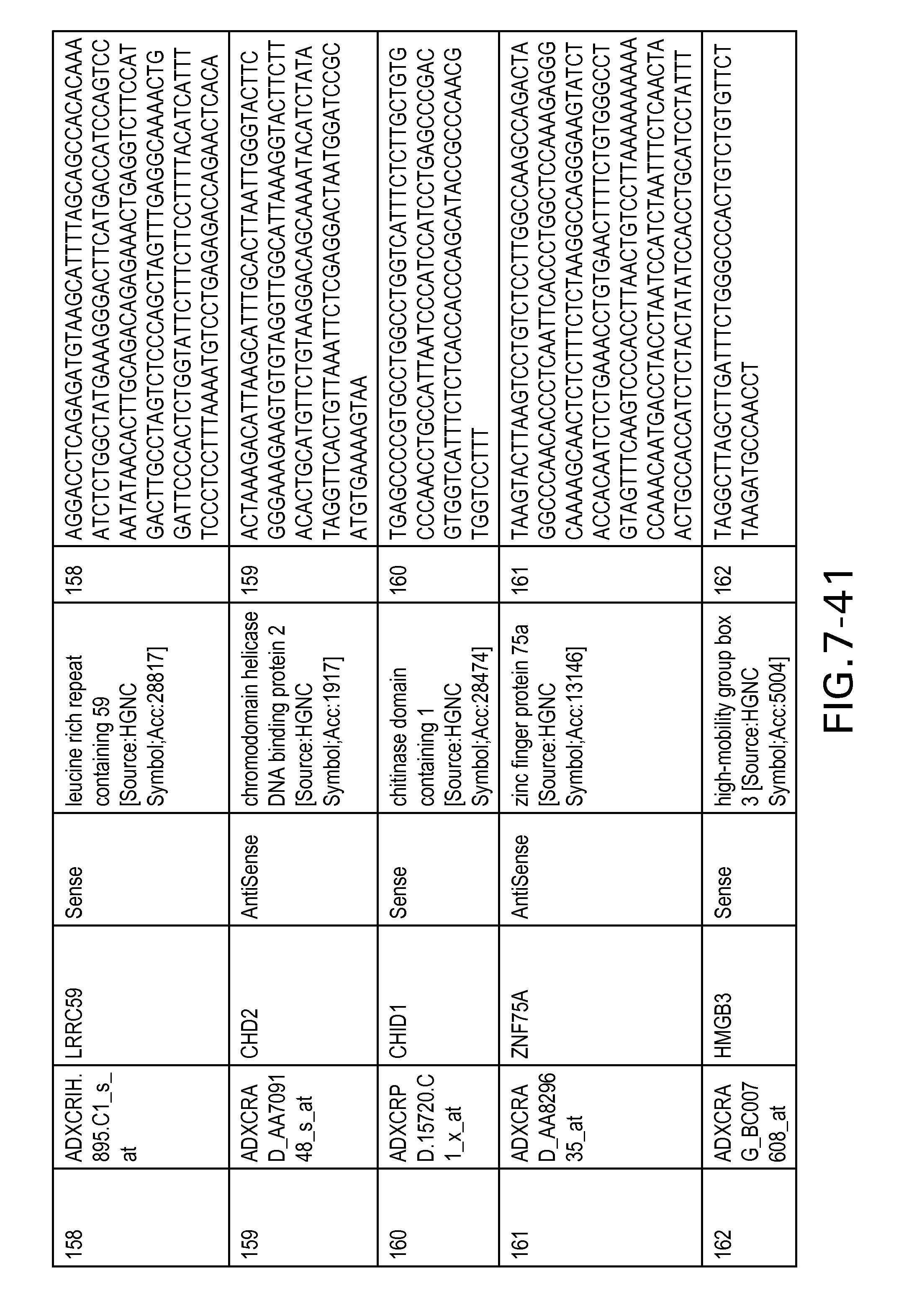
D00048
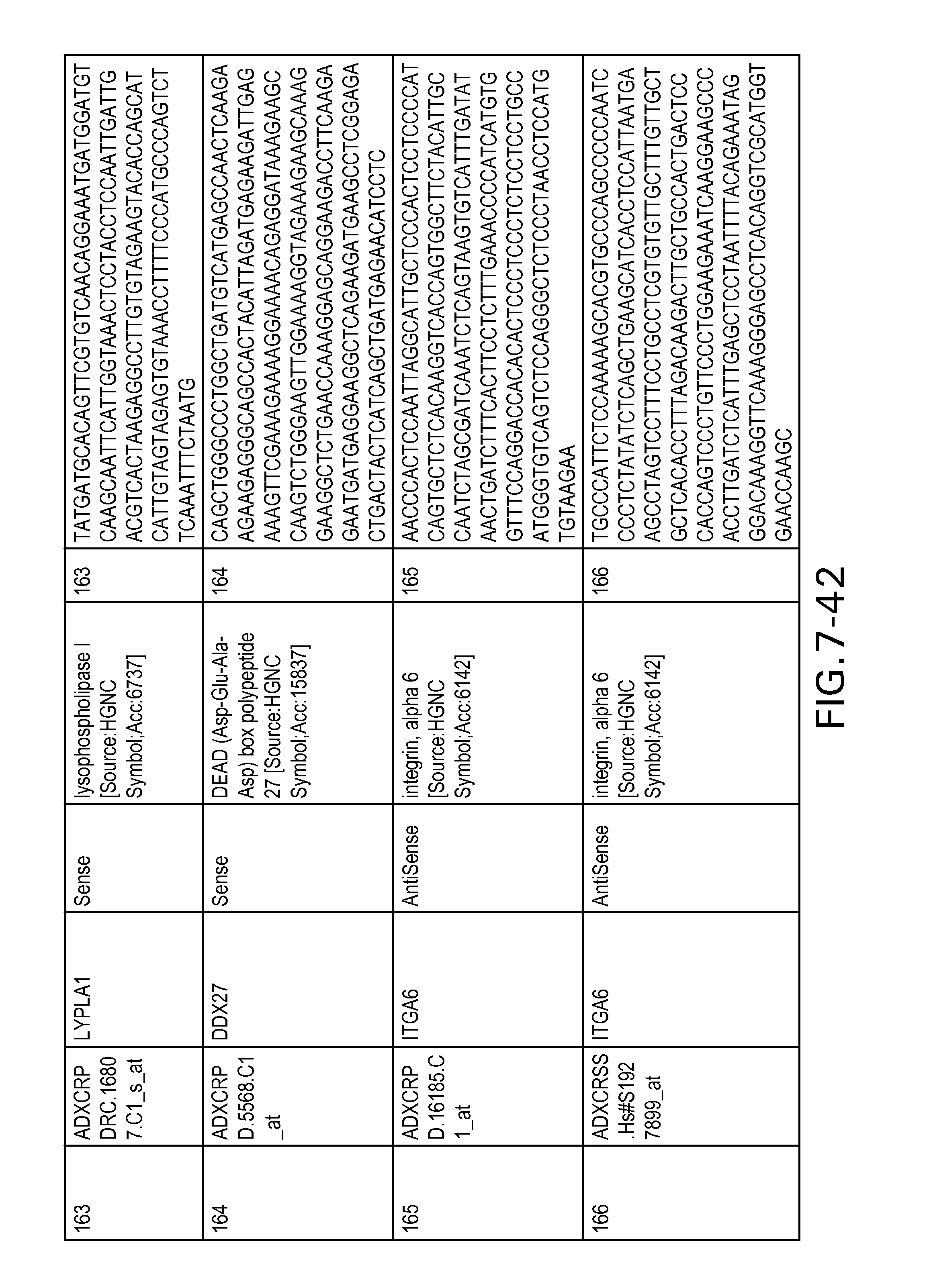
D00049
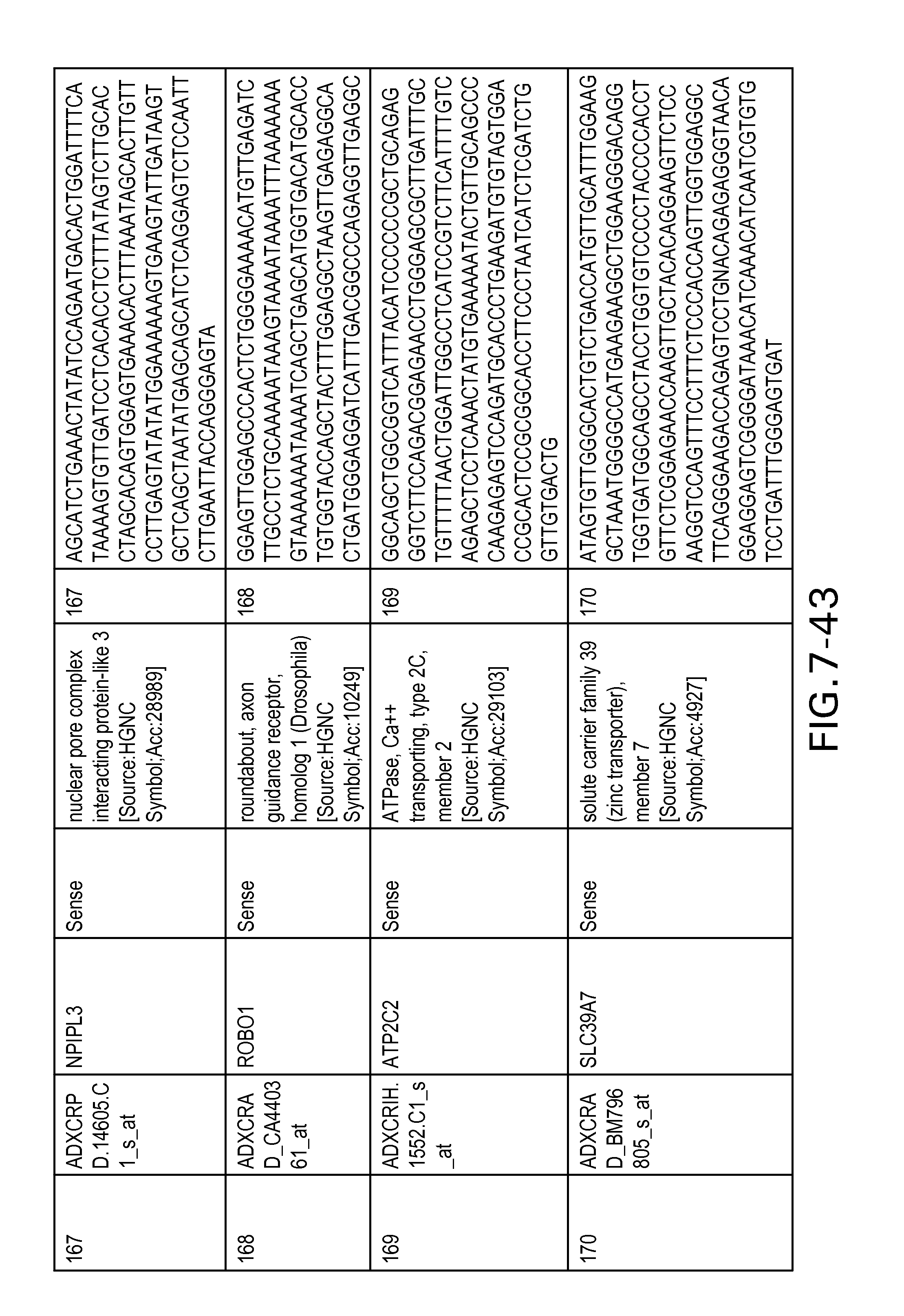
D00050
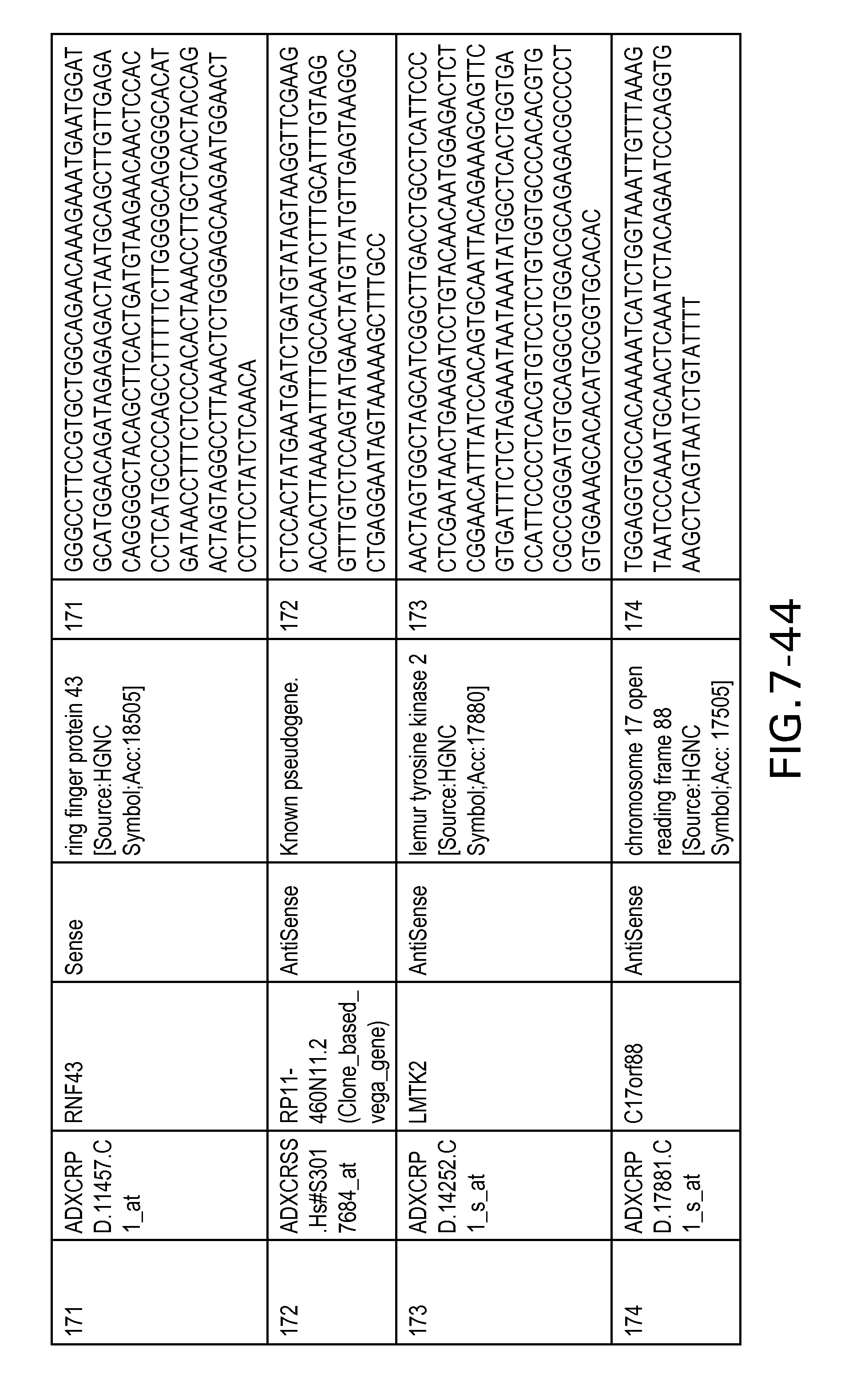
D00051
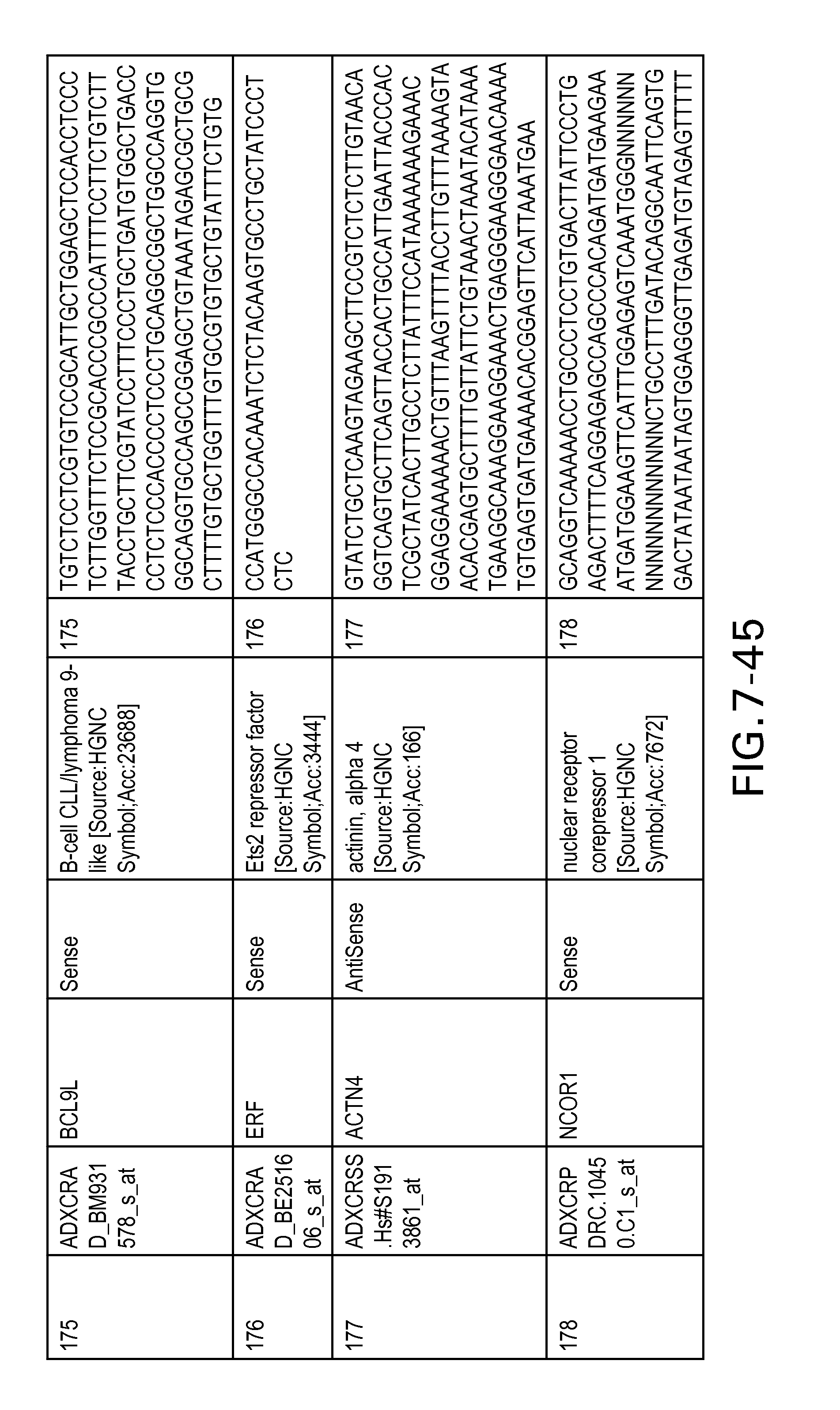
D00052
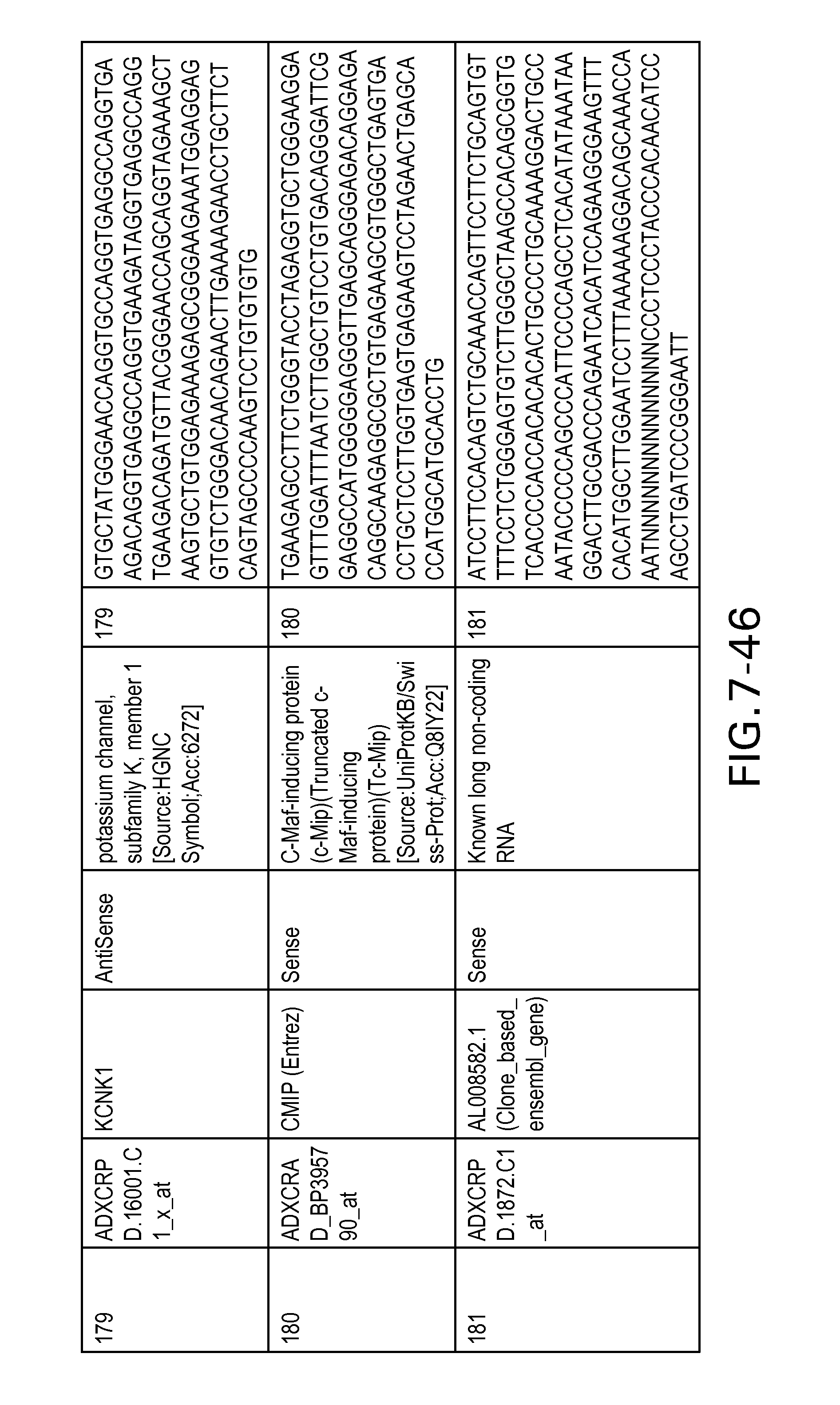
D00053
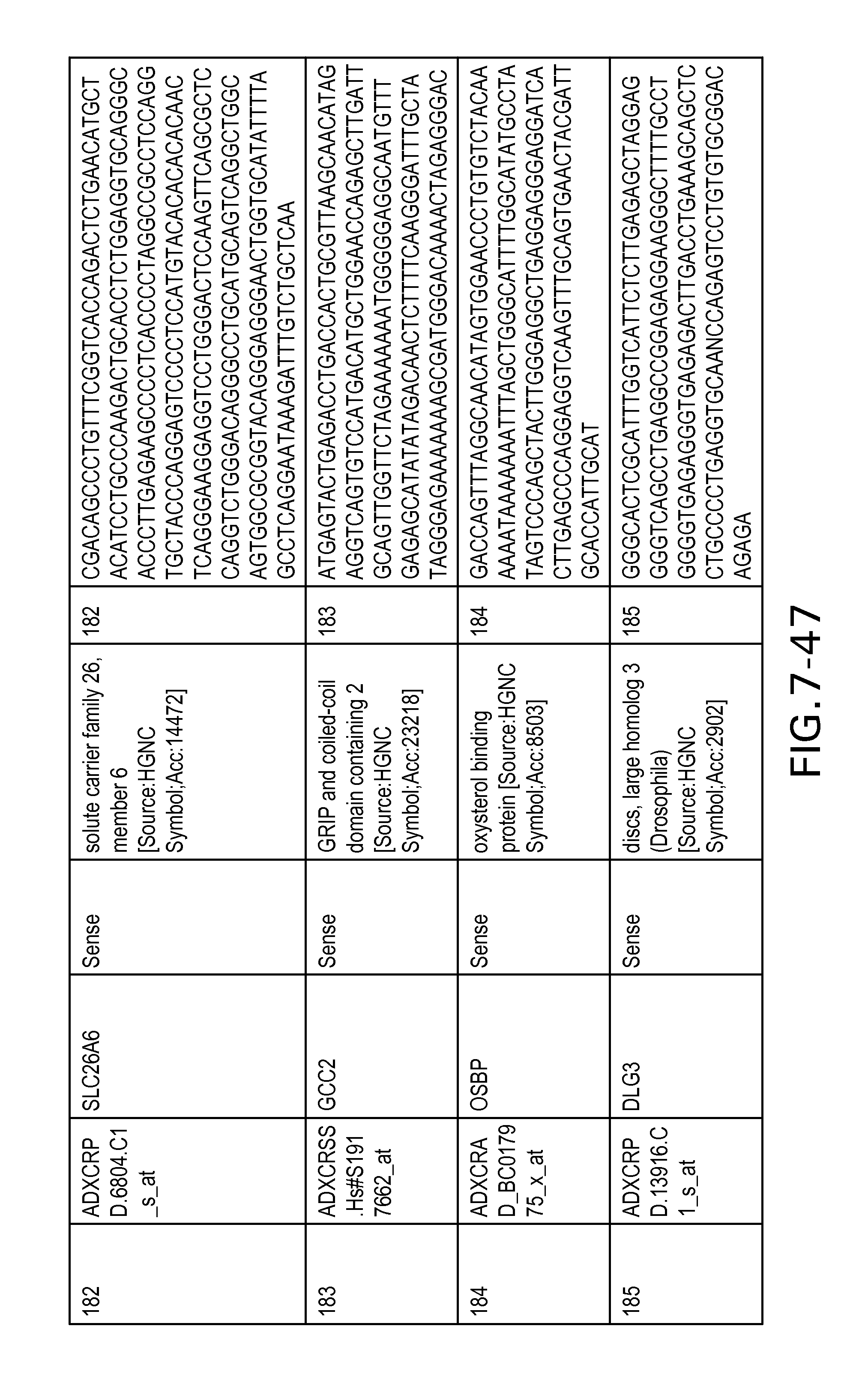
D00054
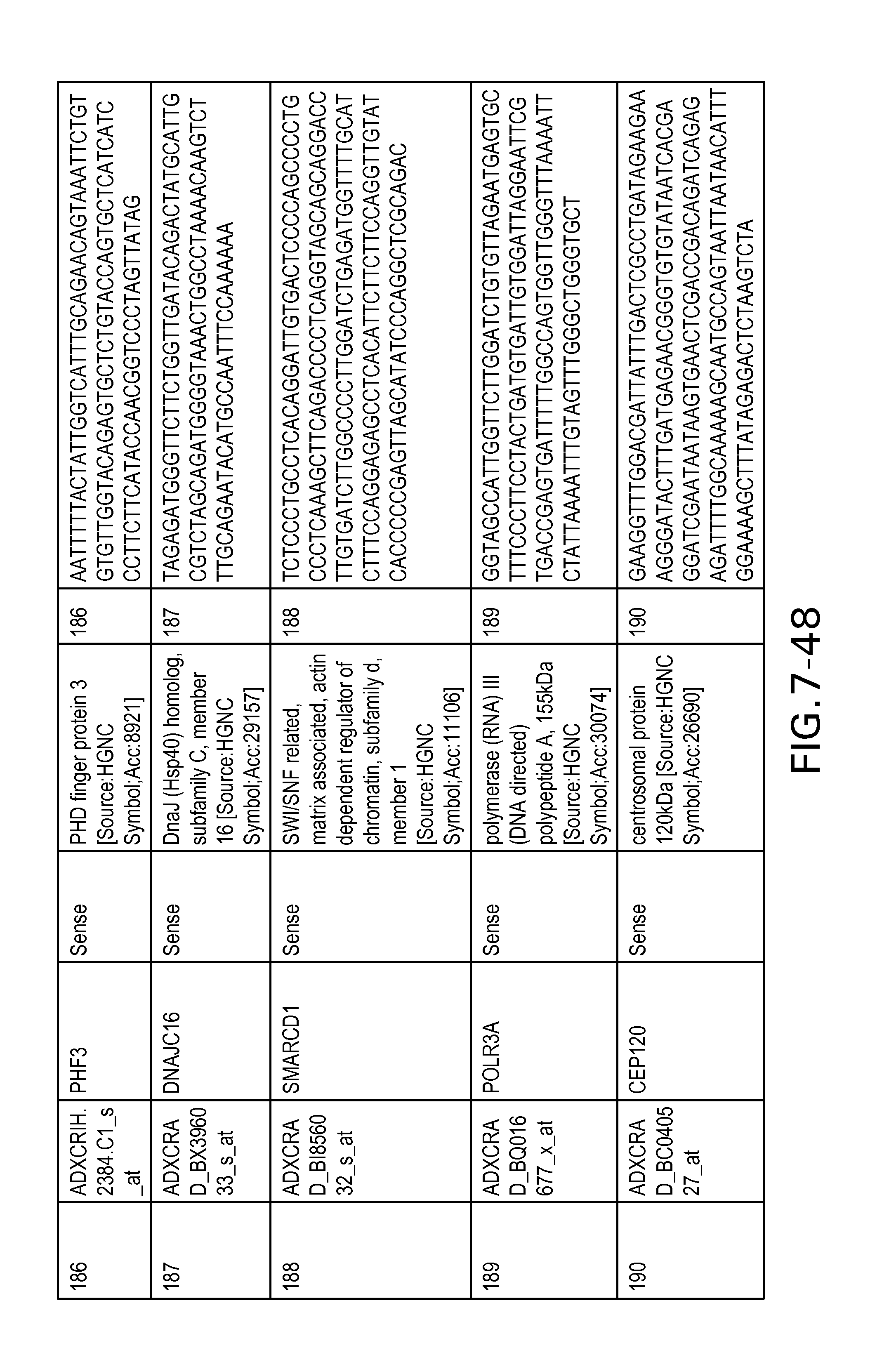
D00055
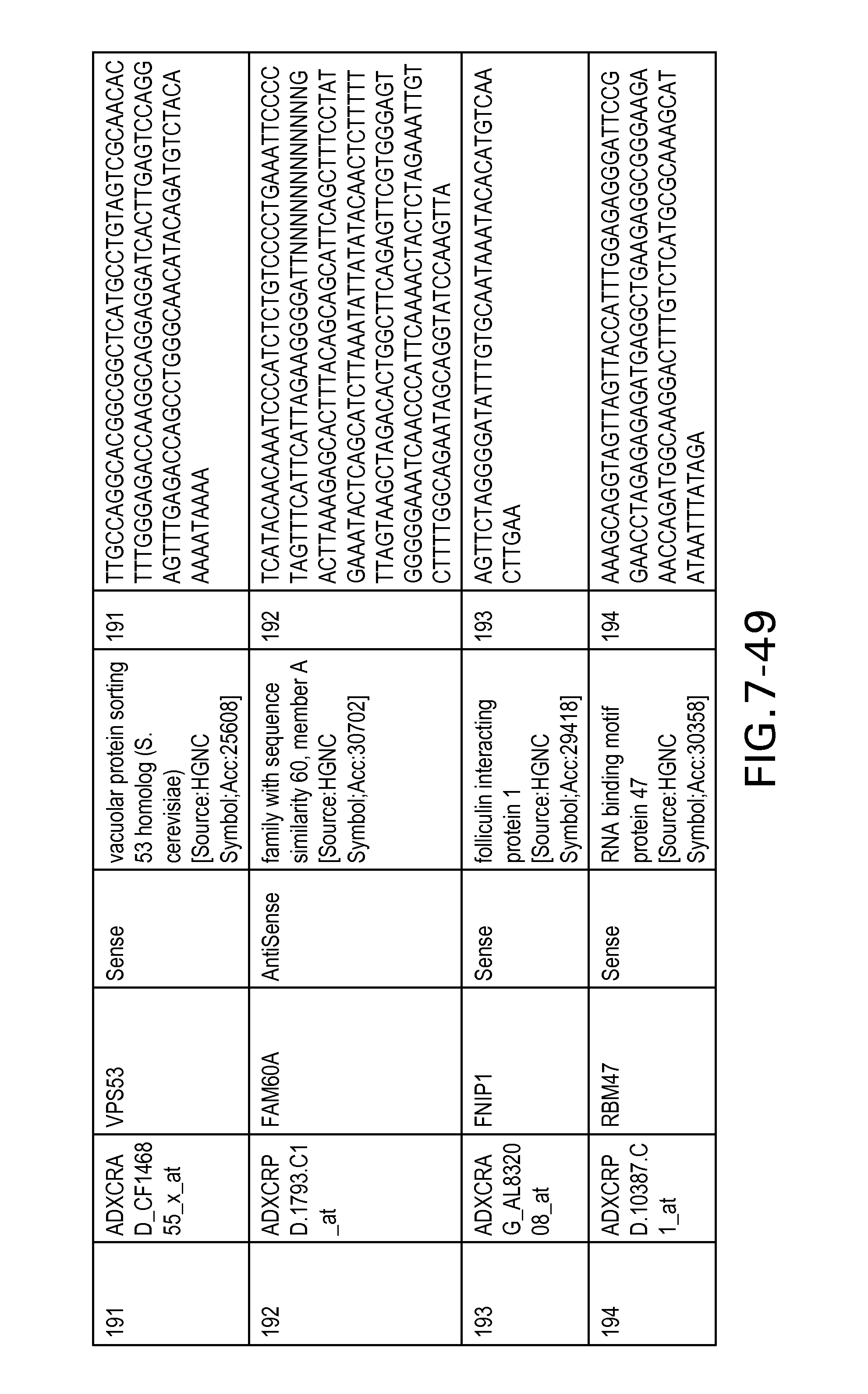
D00056
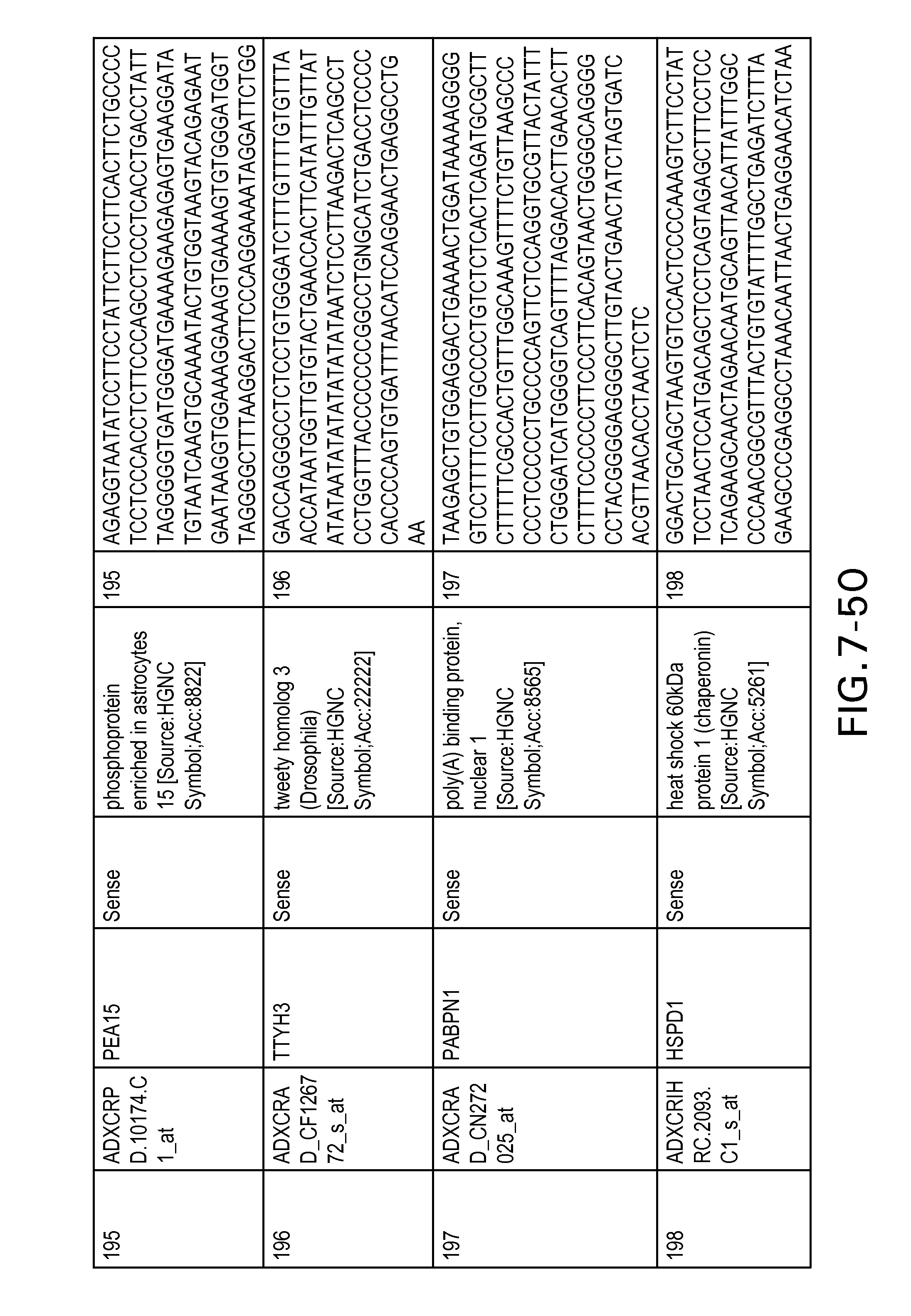
D00057
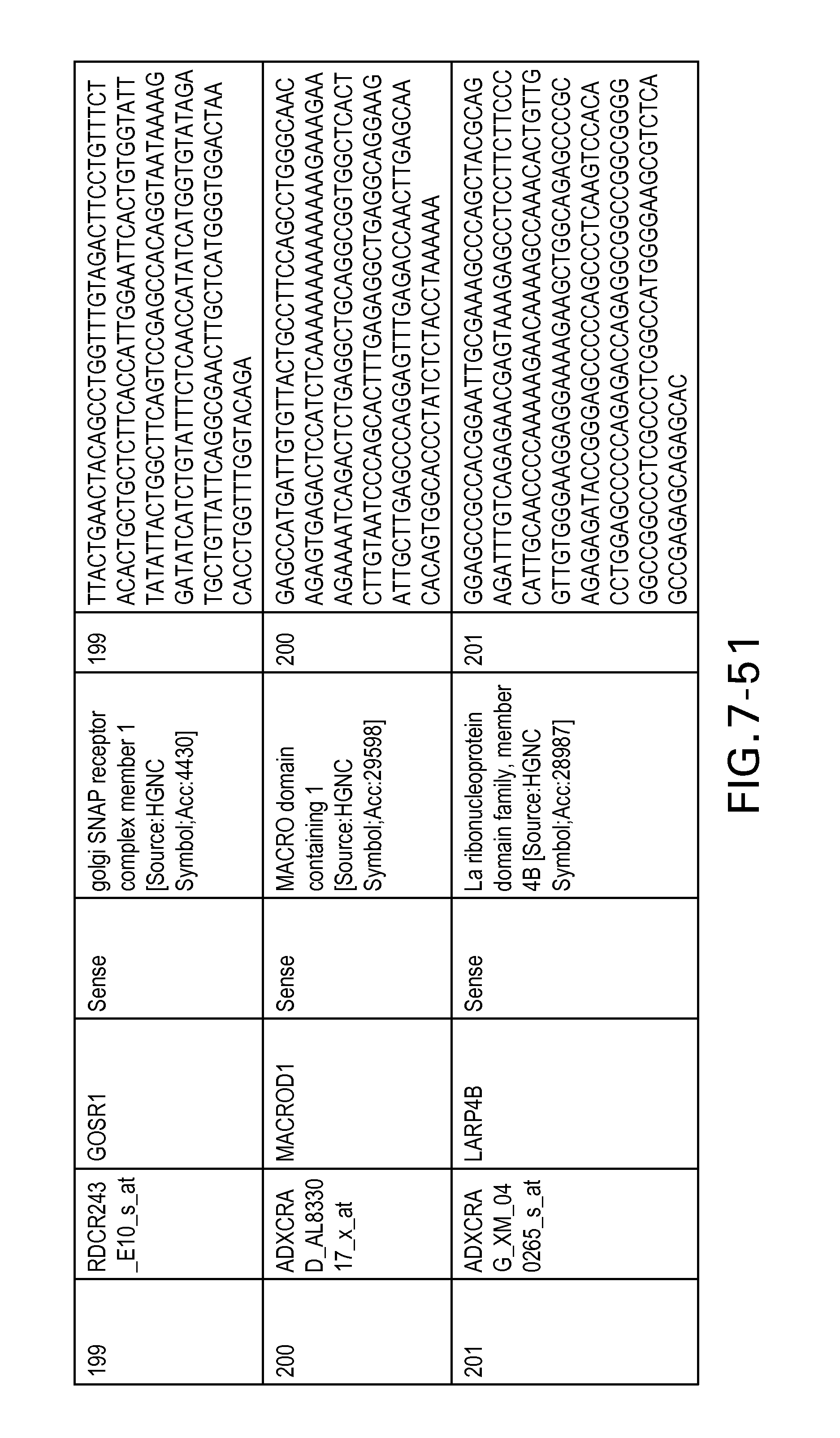
D00058
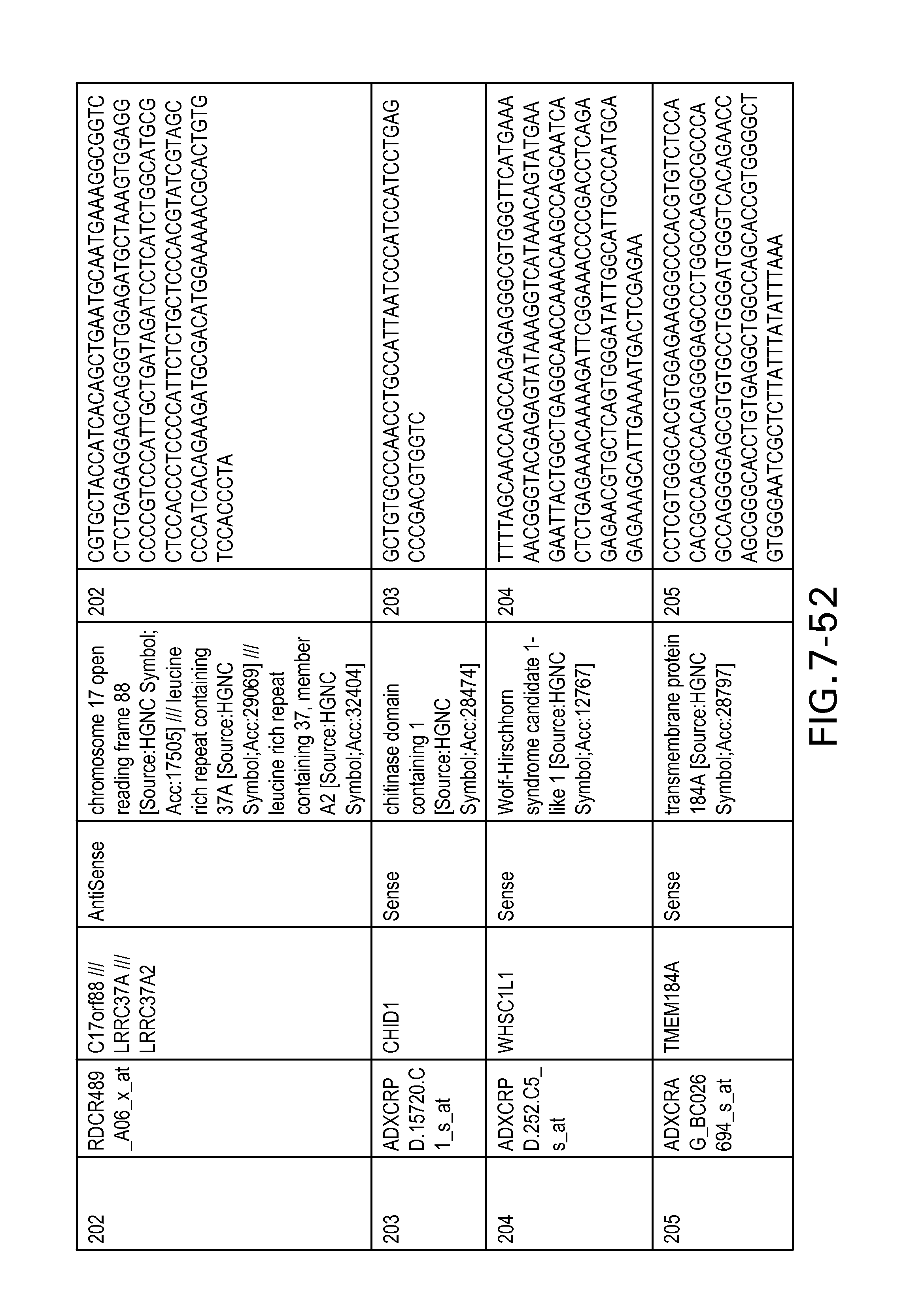
D00059
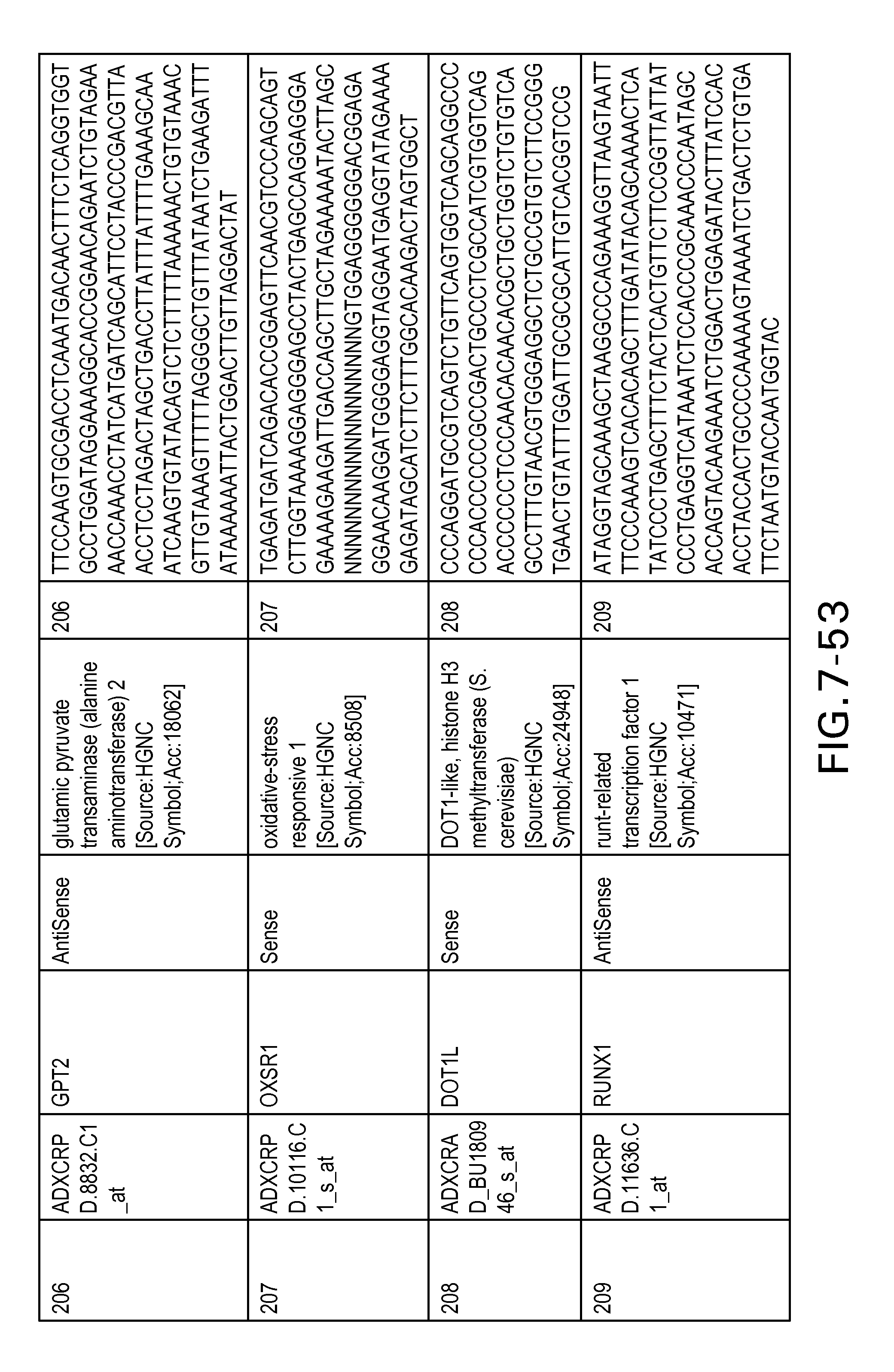
D00060
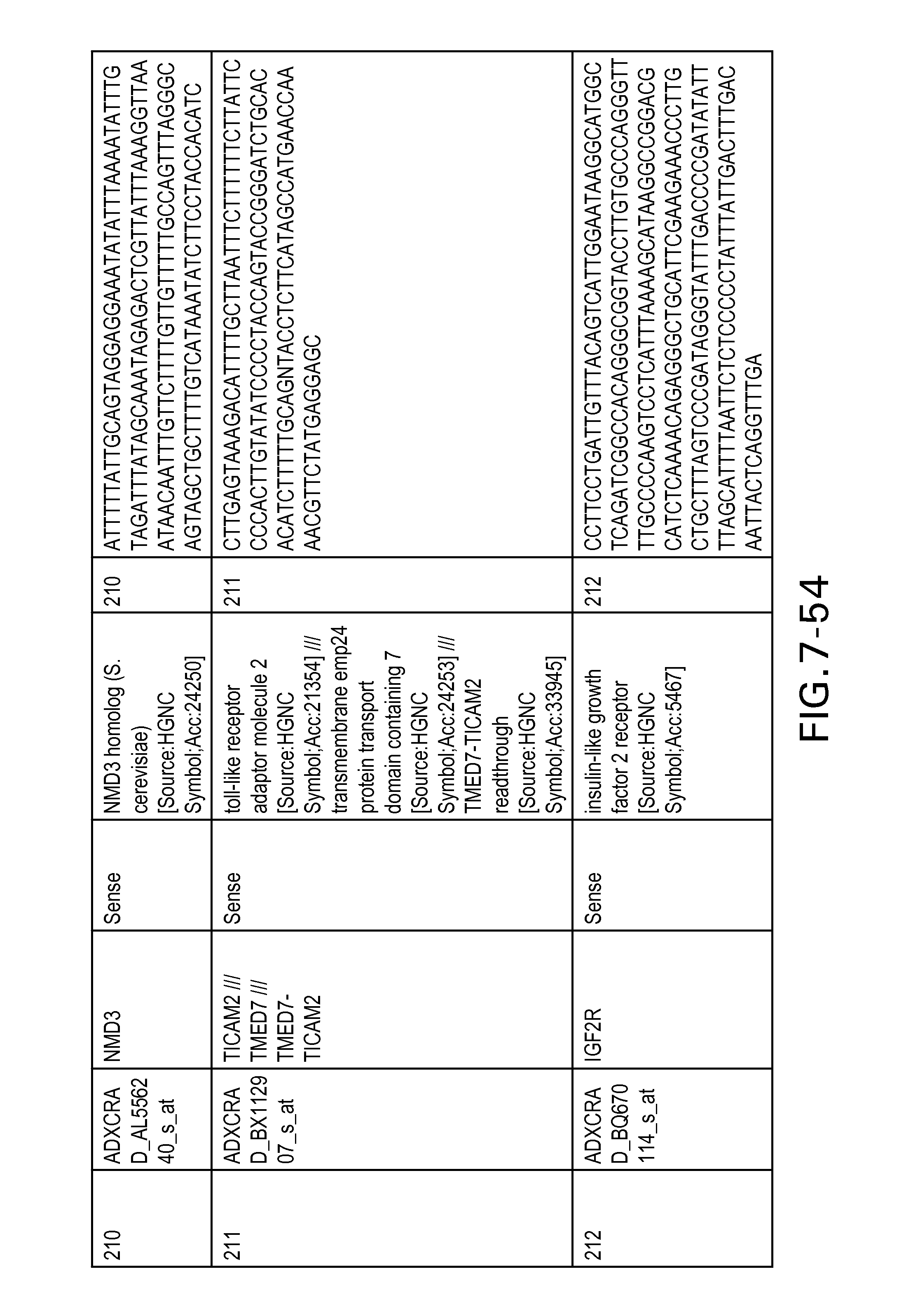
D00061

D00062
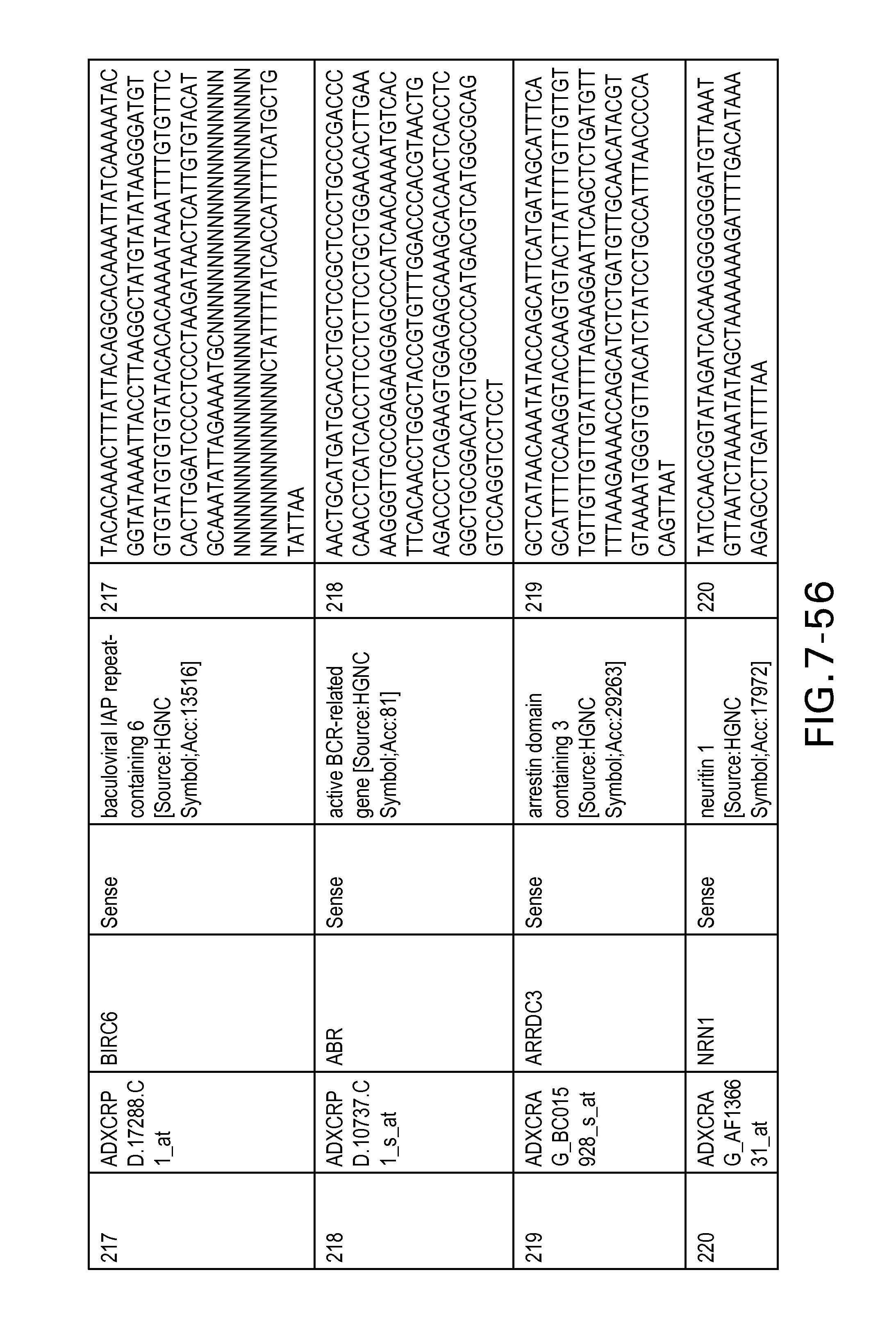
D00063

D00064
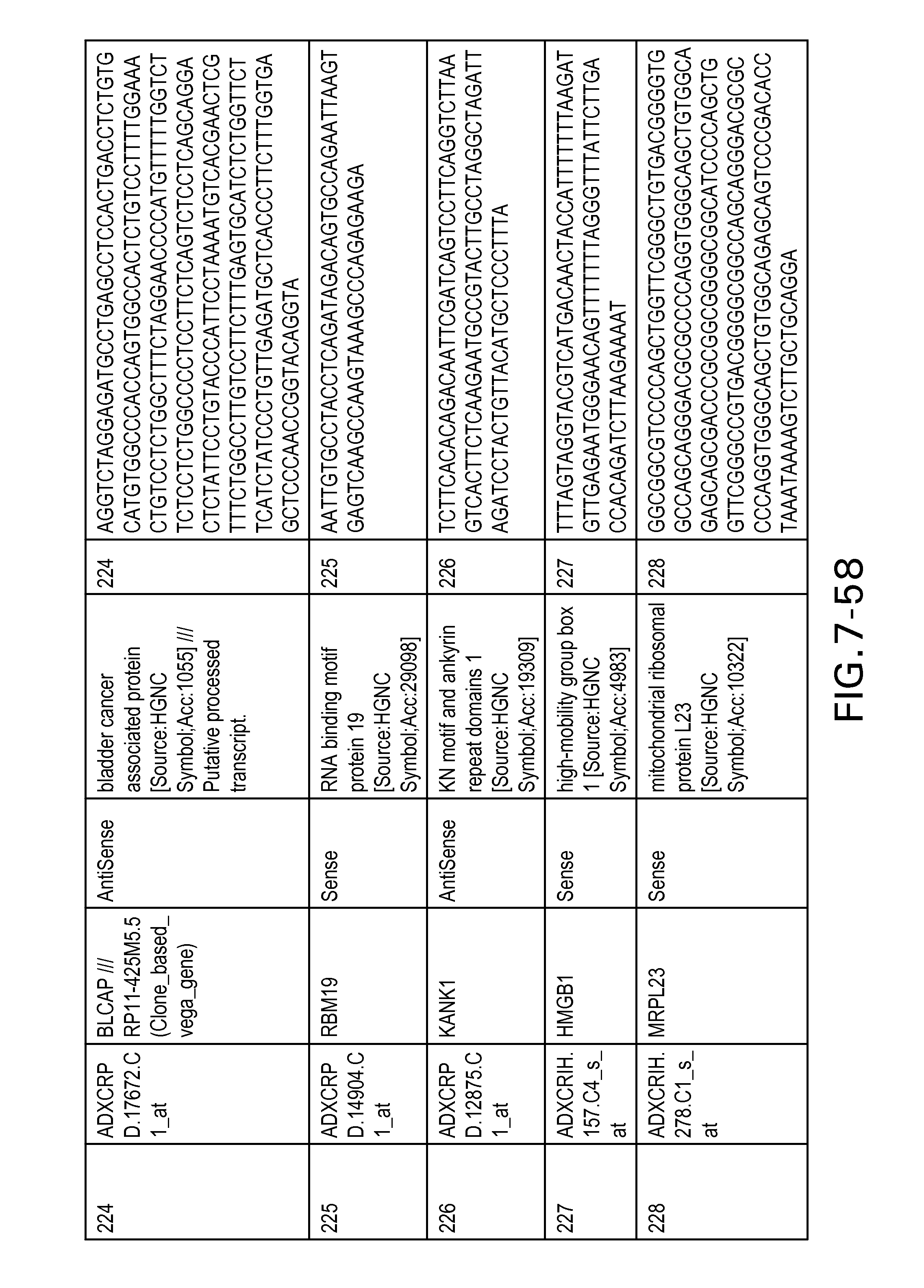
D00065
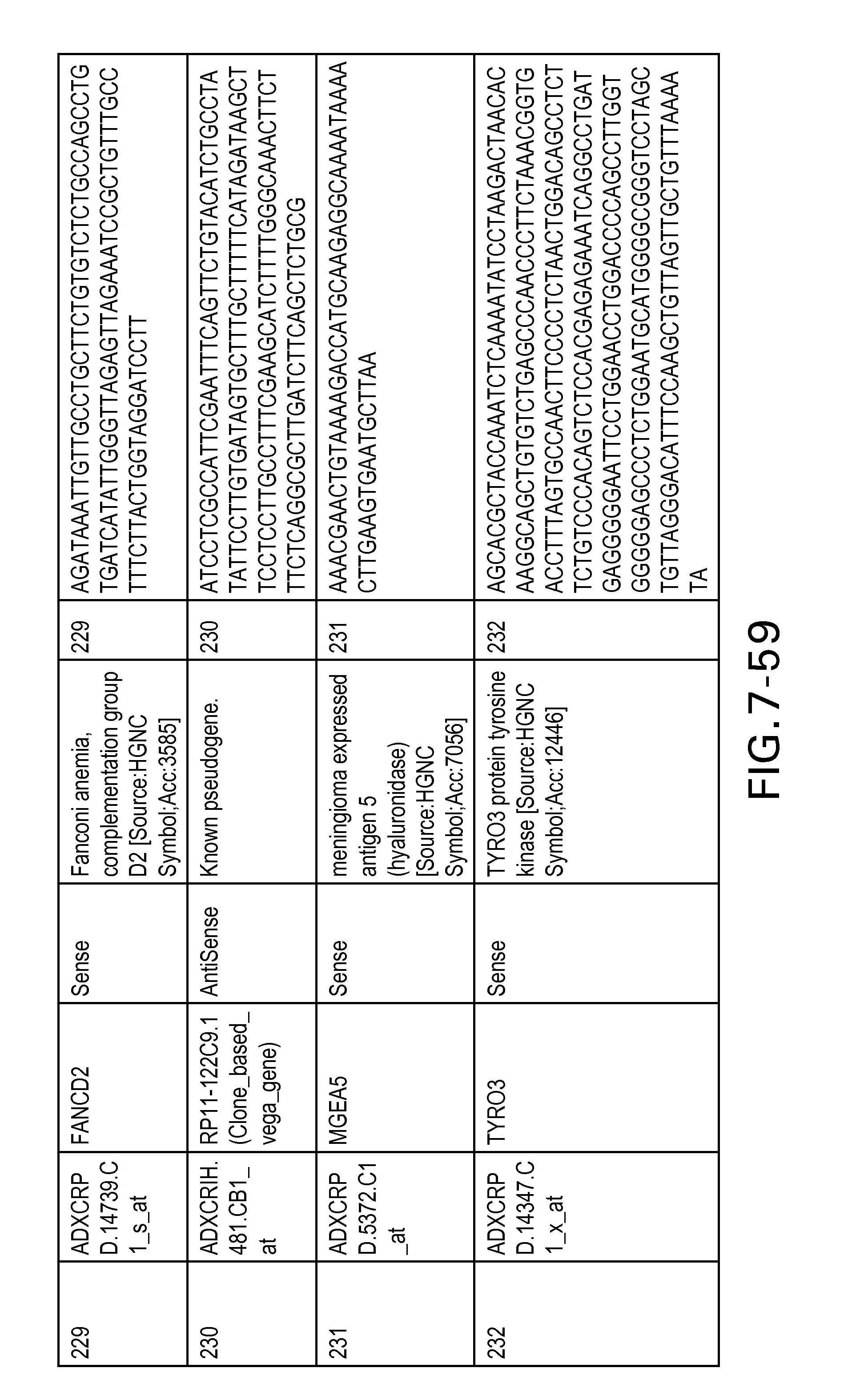
D00066
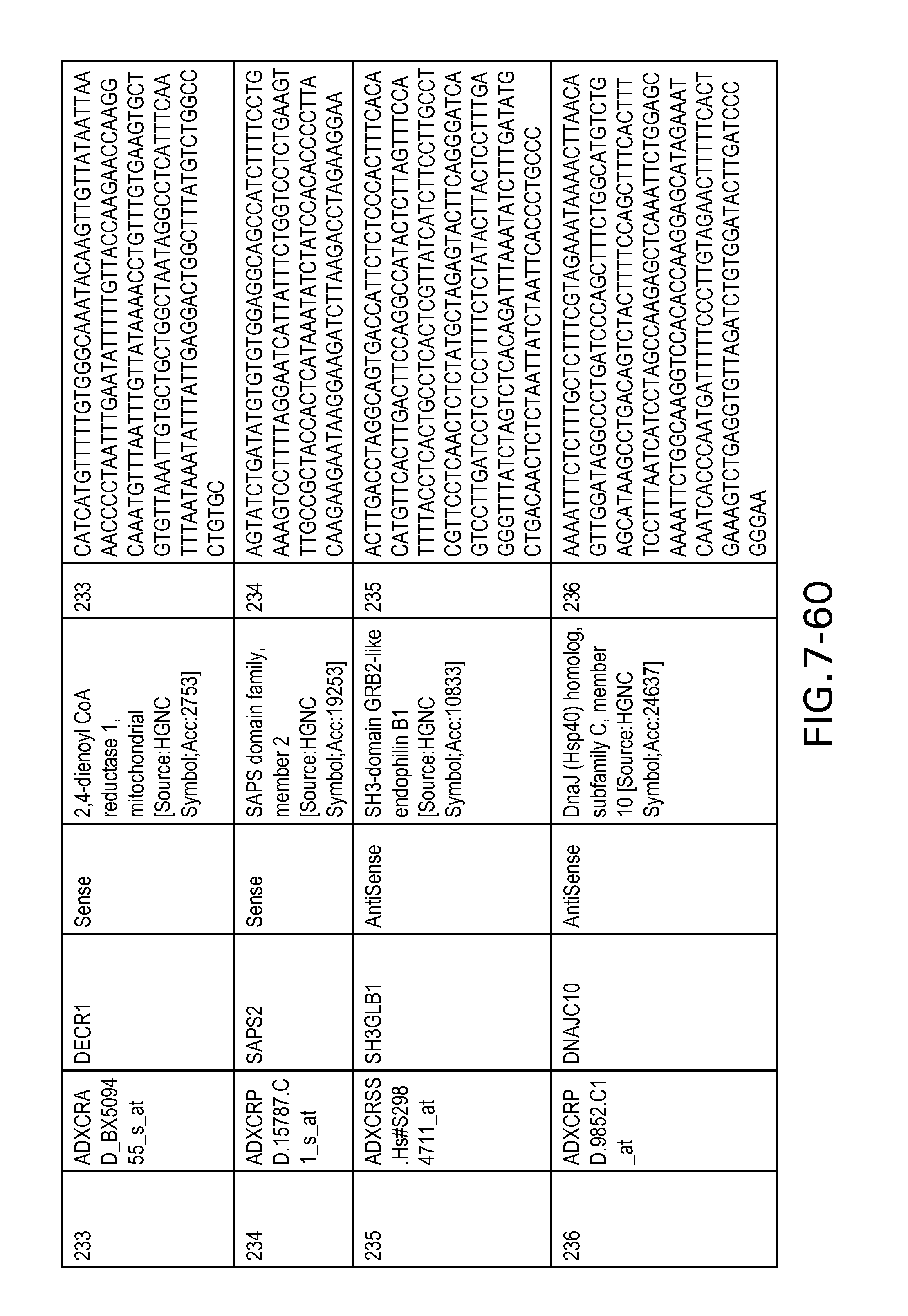
D00067
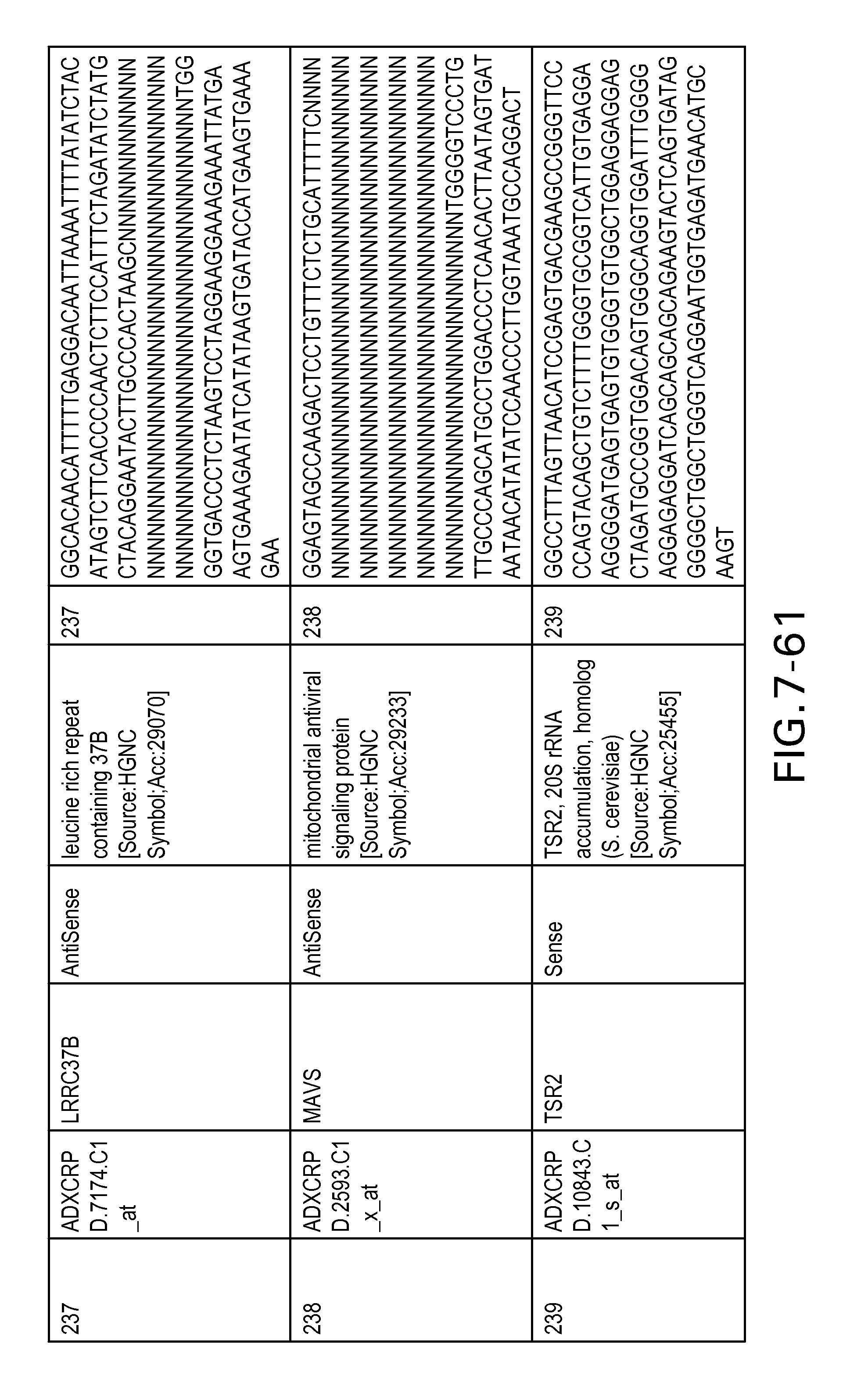
D00068
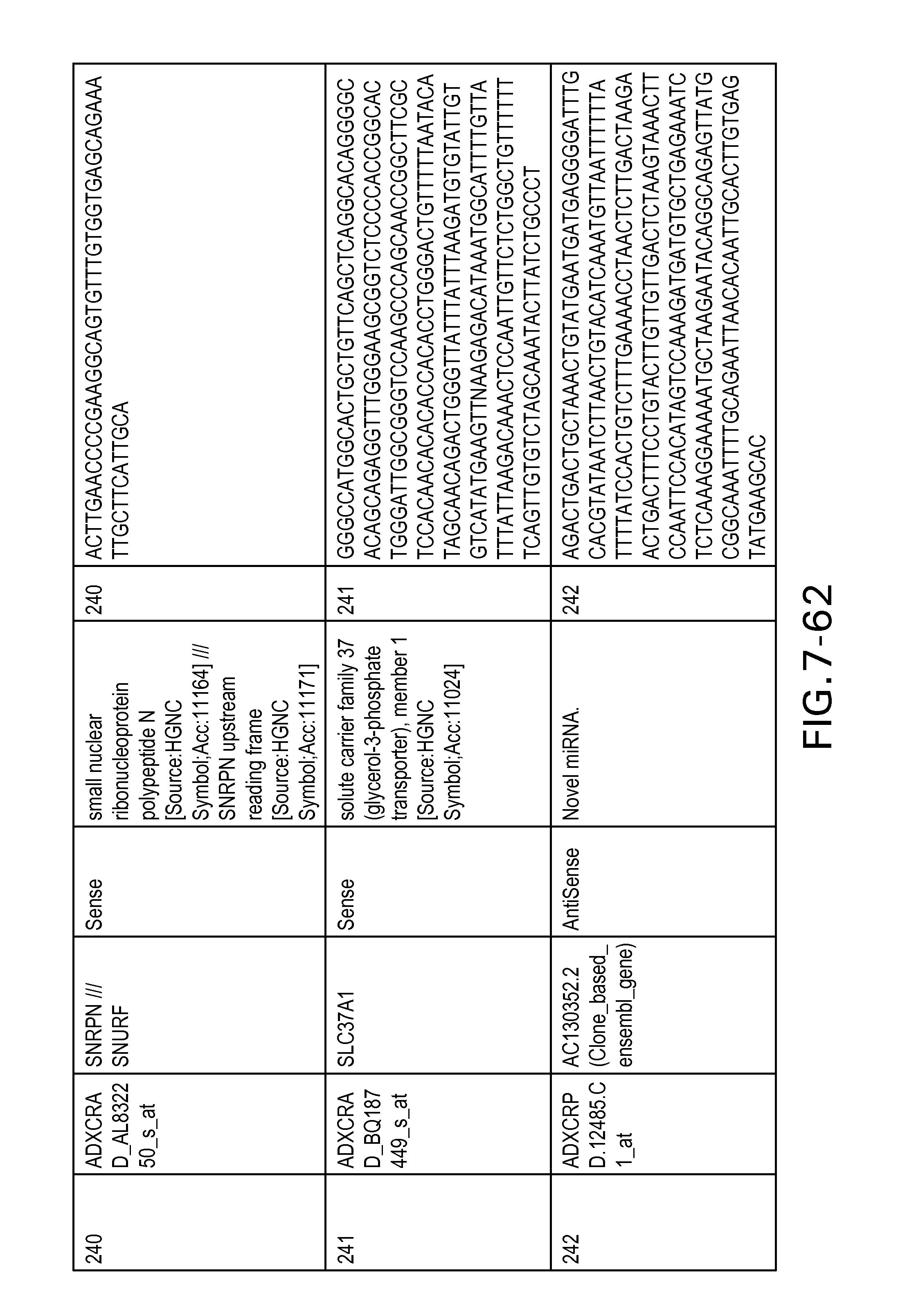
D00069
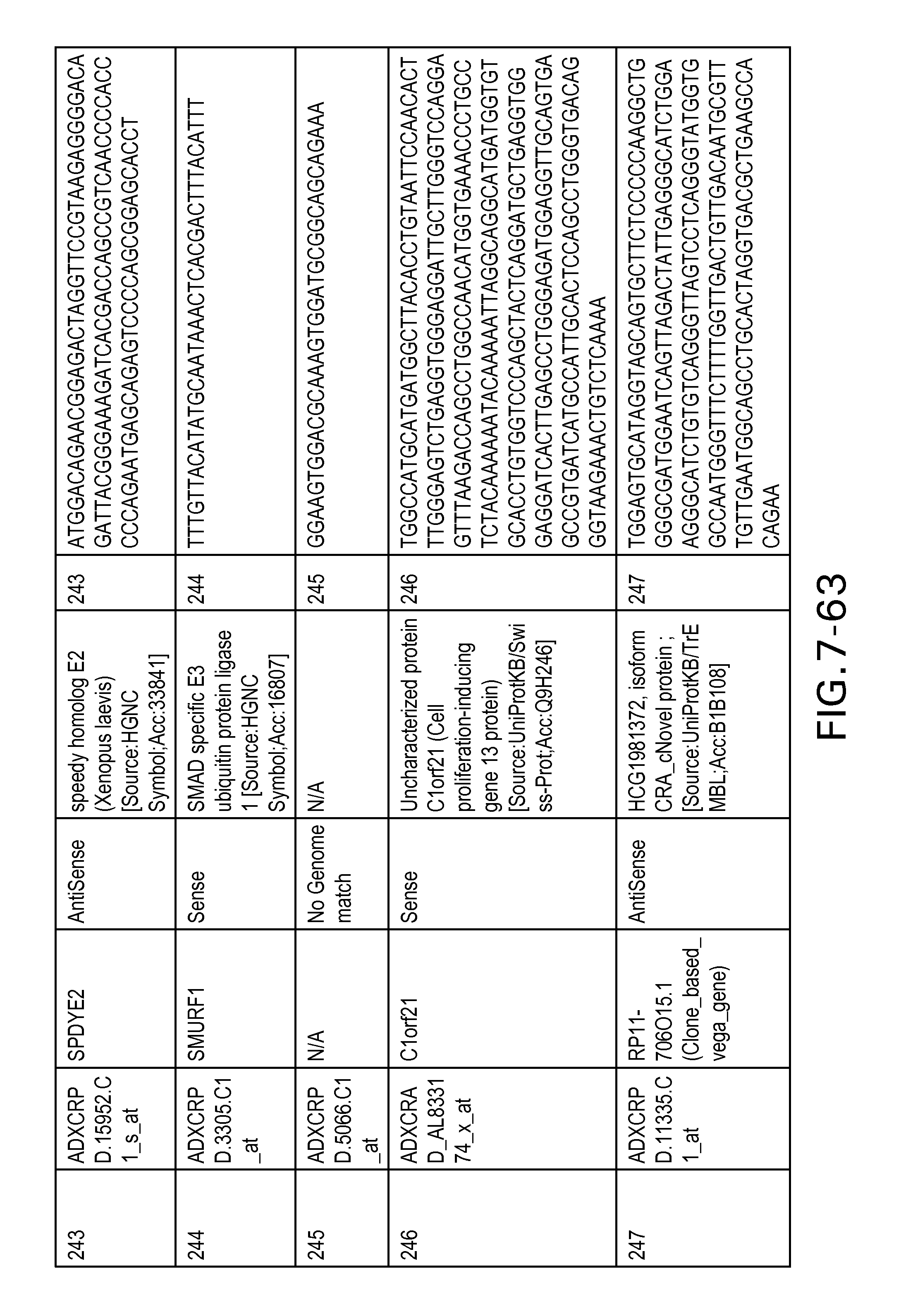
D00070
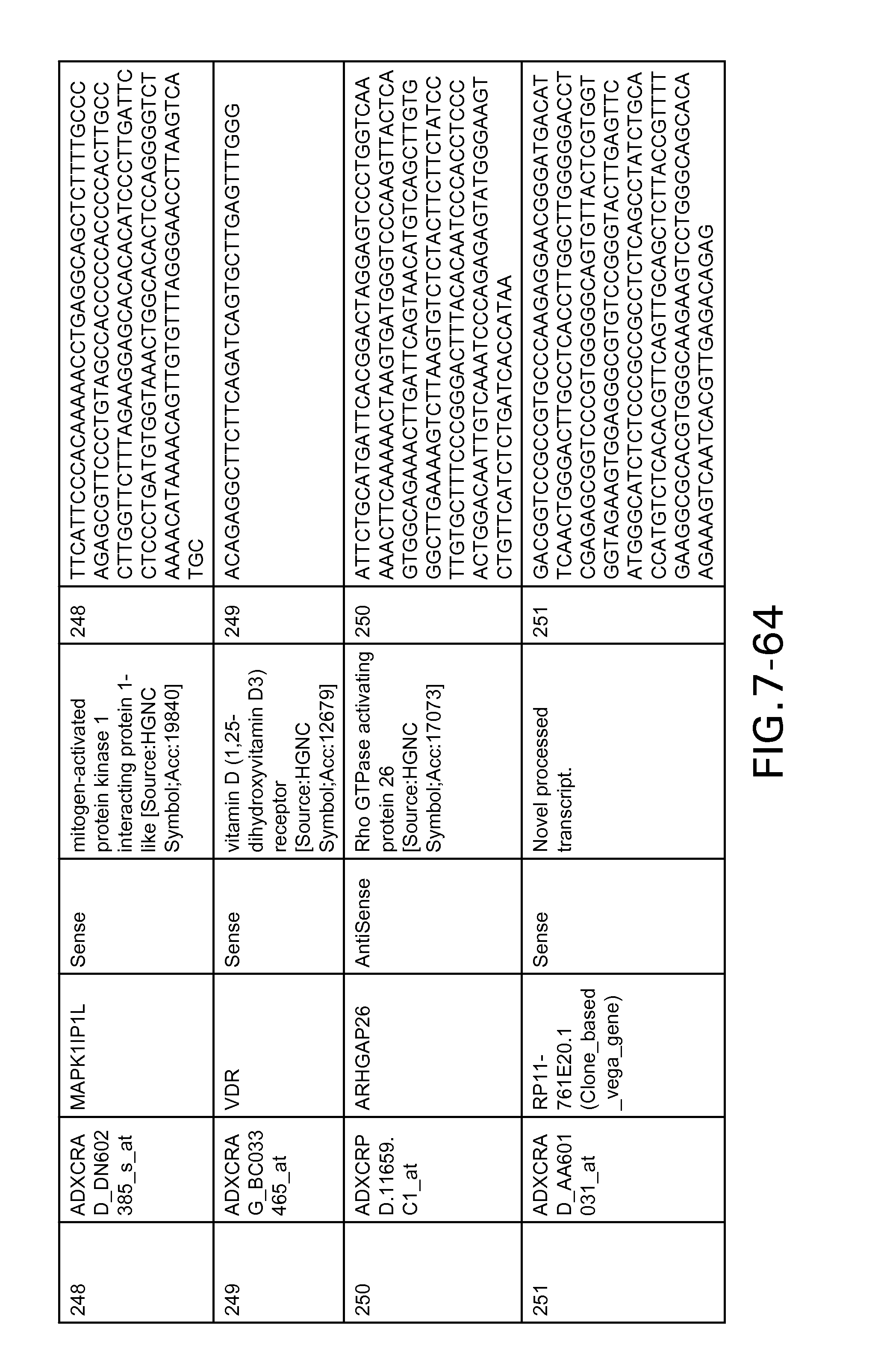
D00071
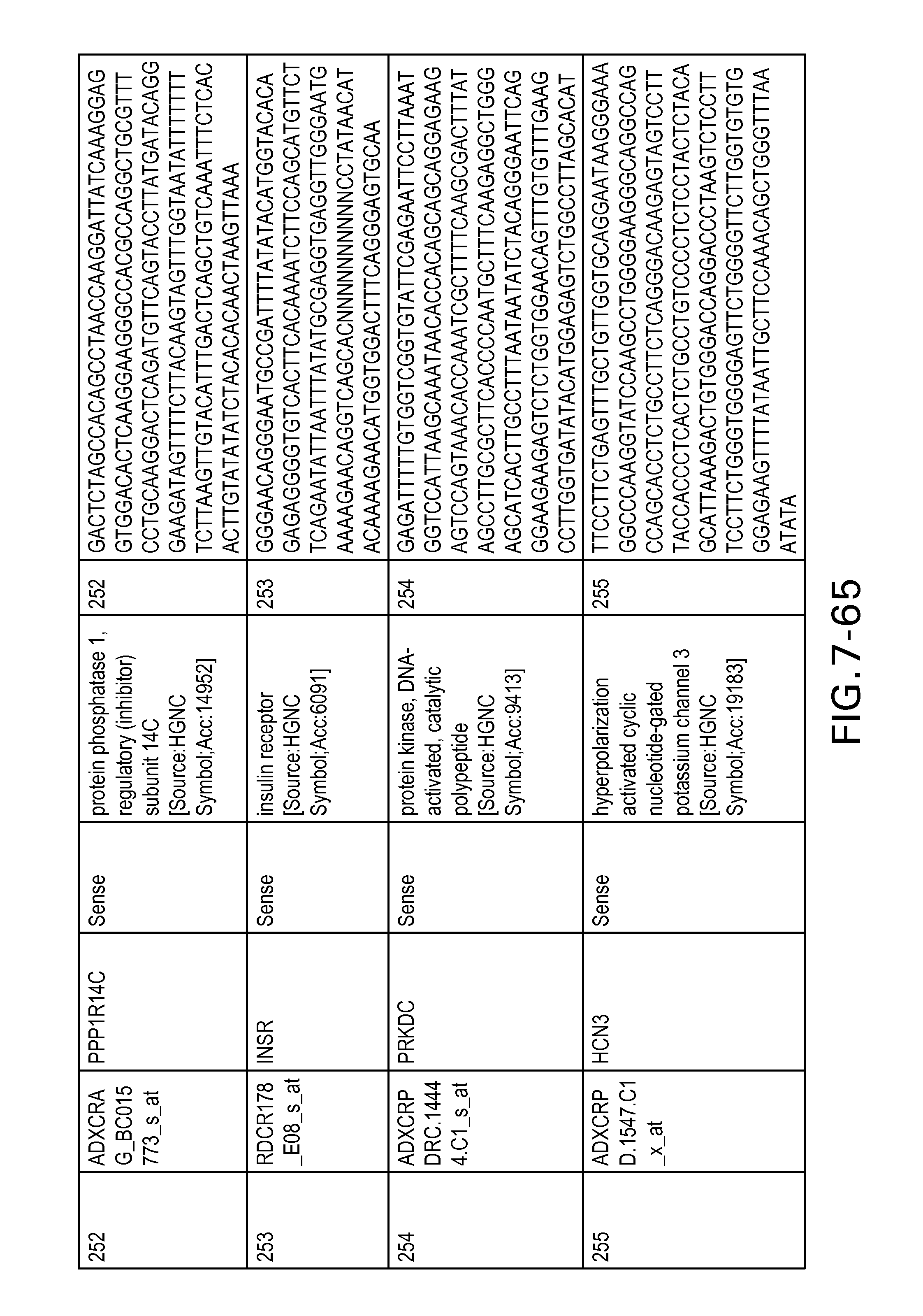
D00072
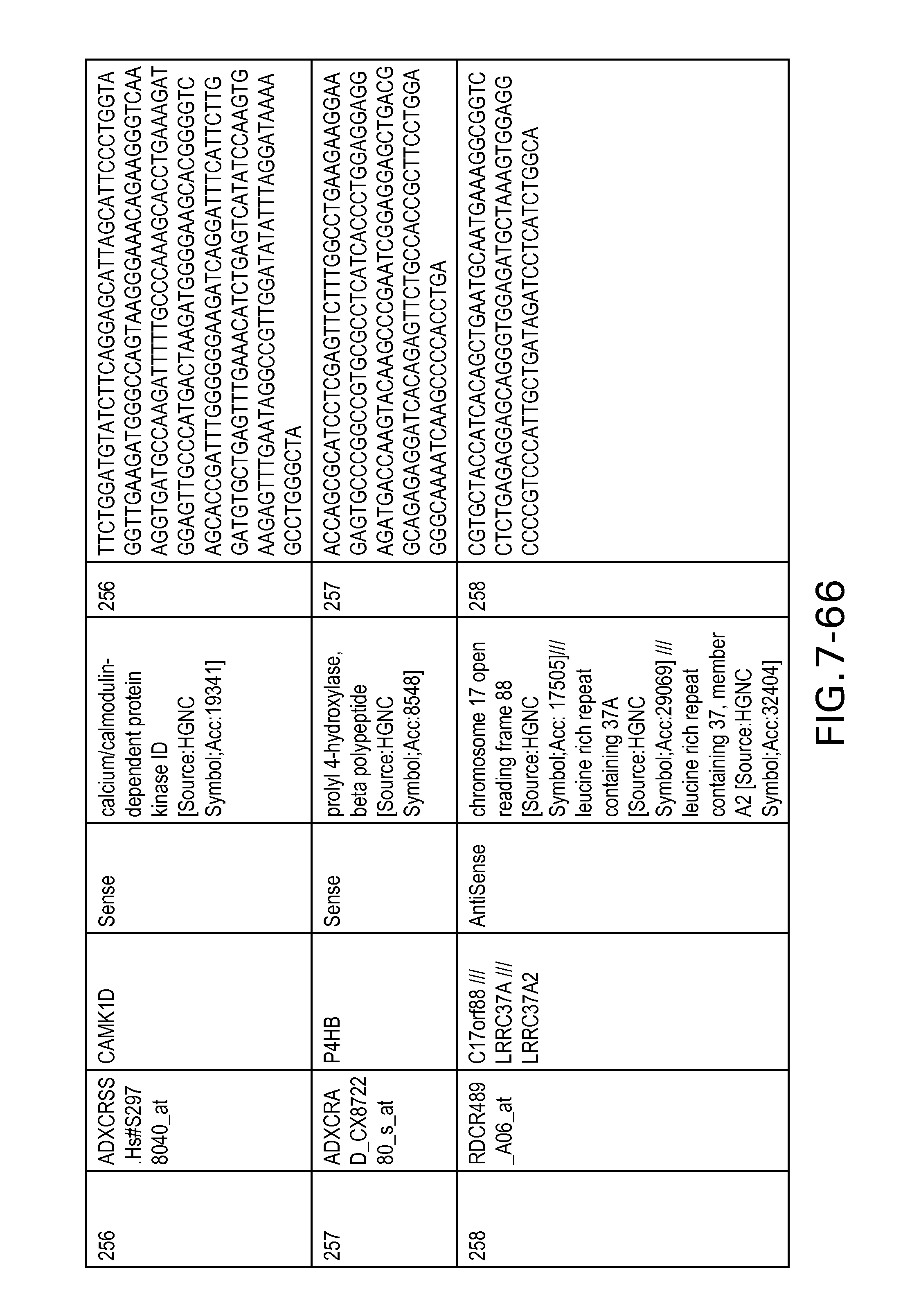
D00073
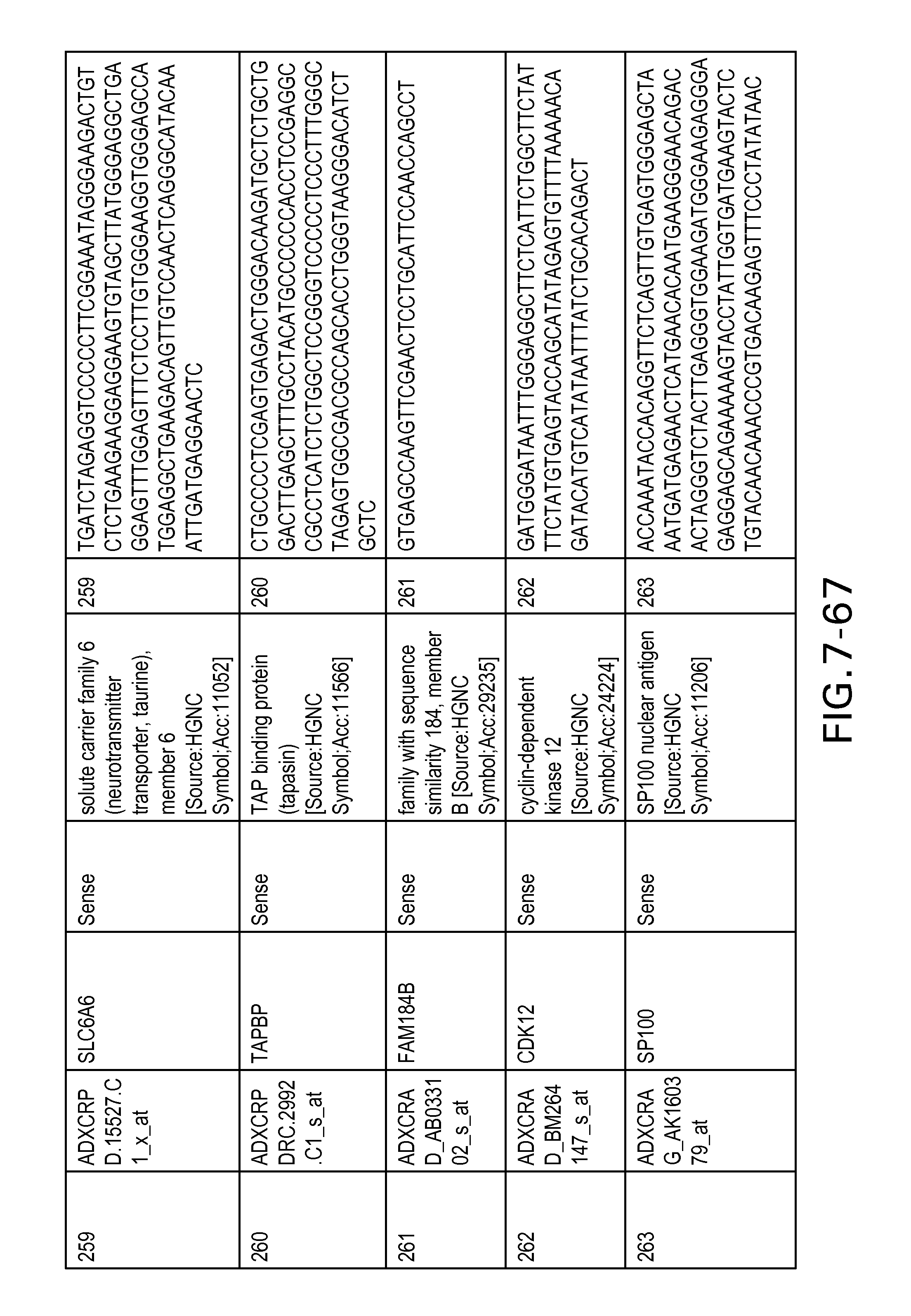
D00074
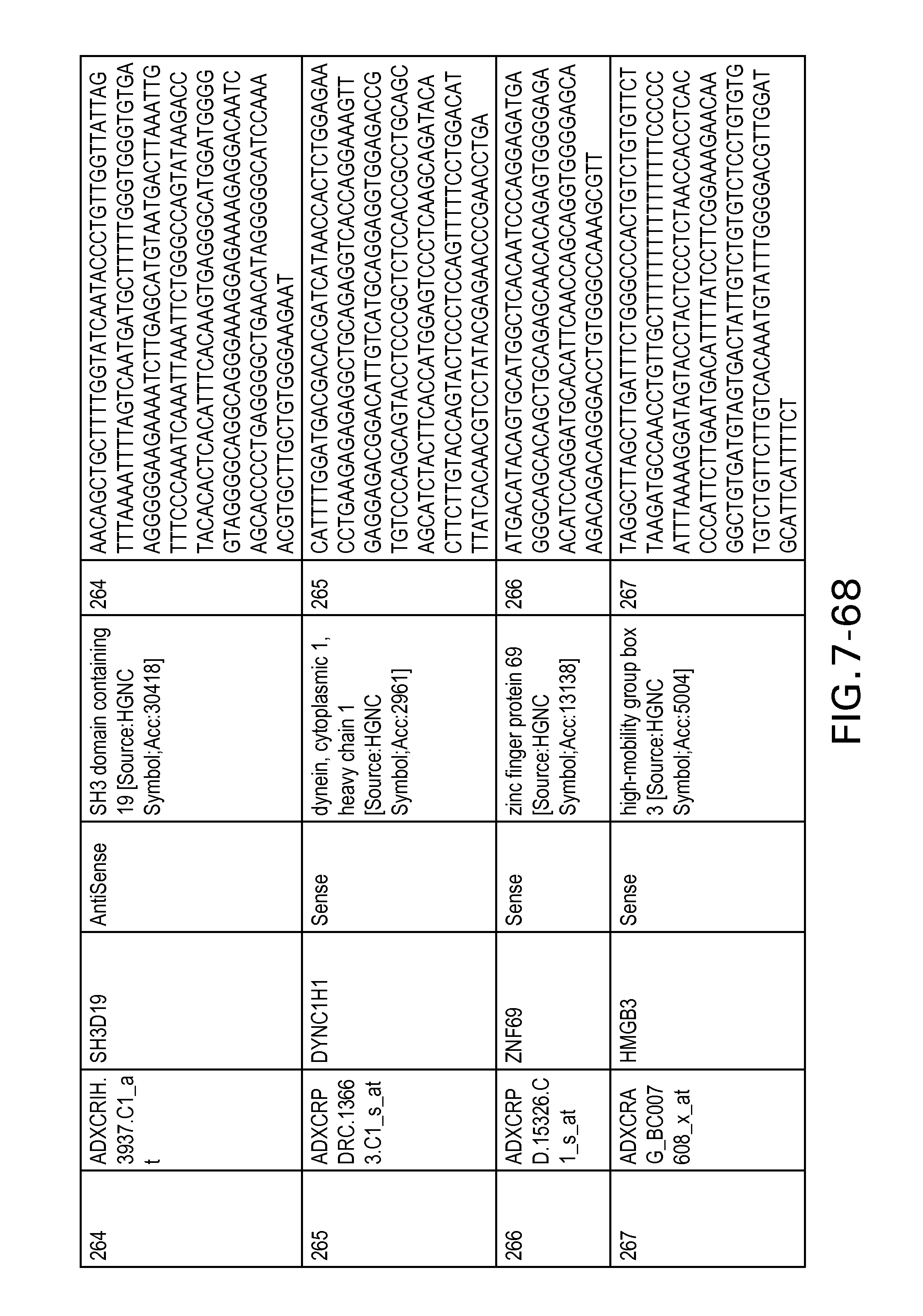
D00075
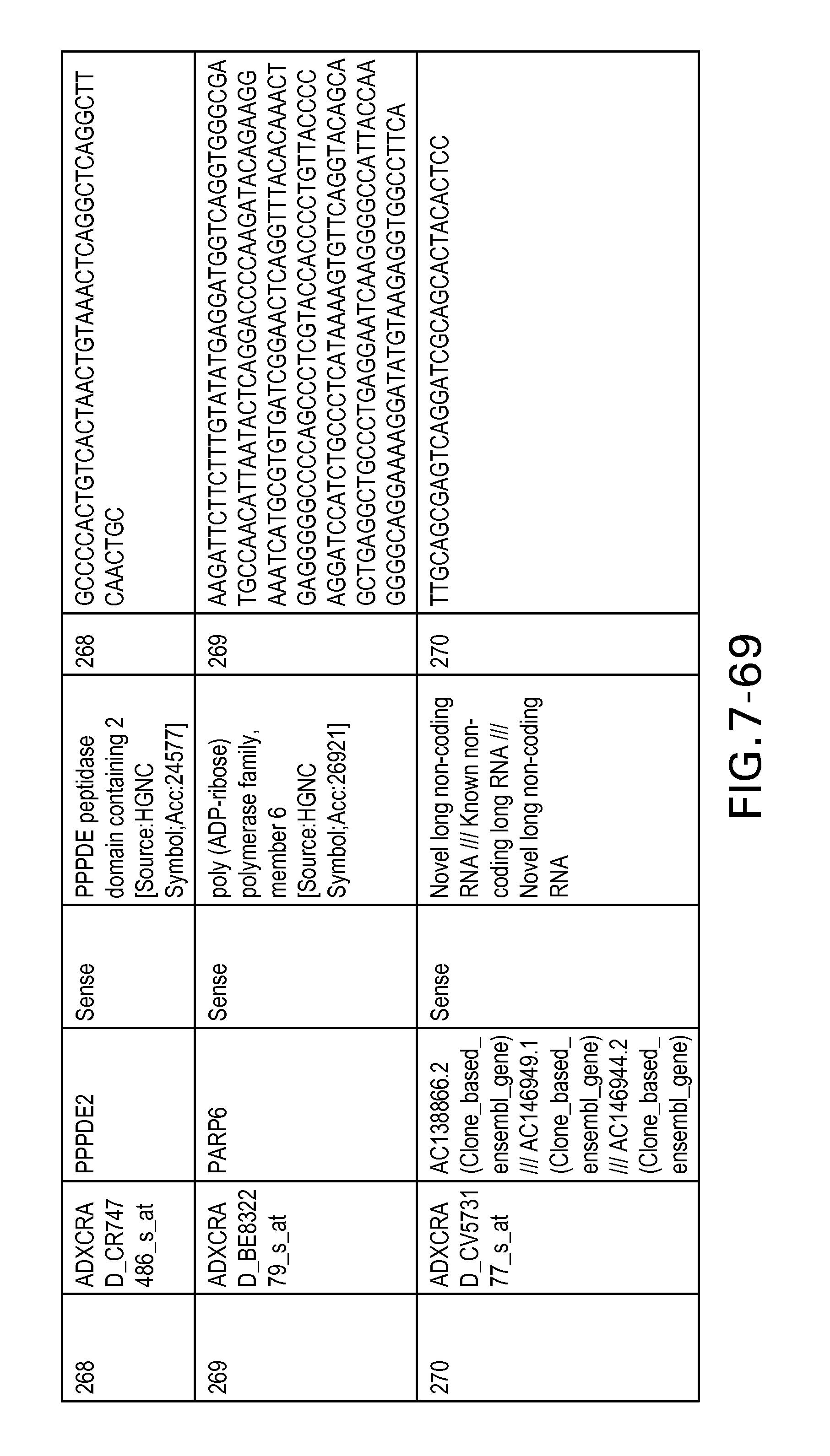
D00076
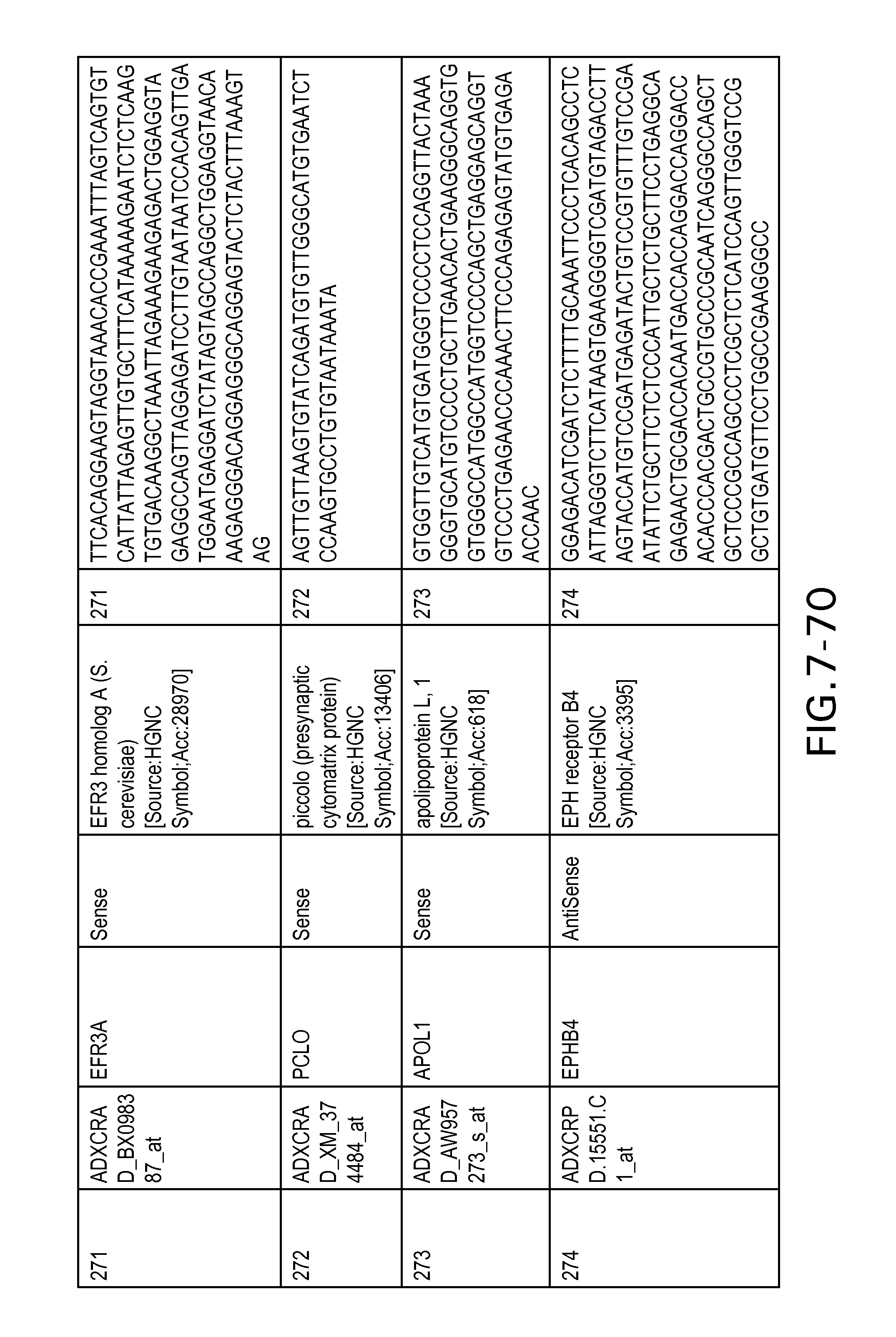
D00077
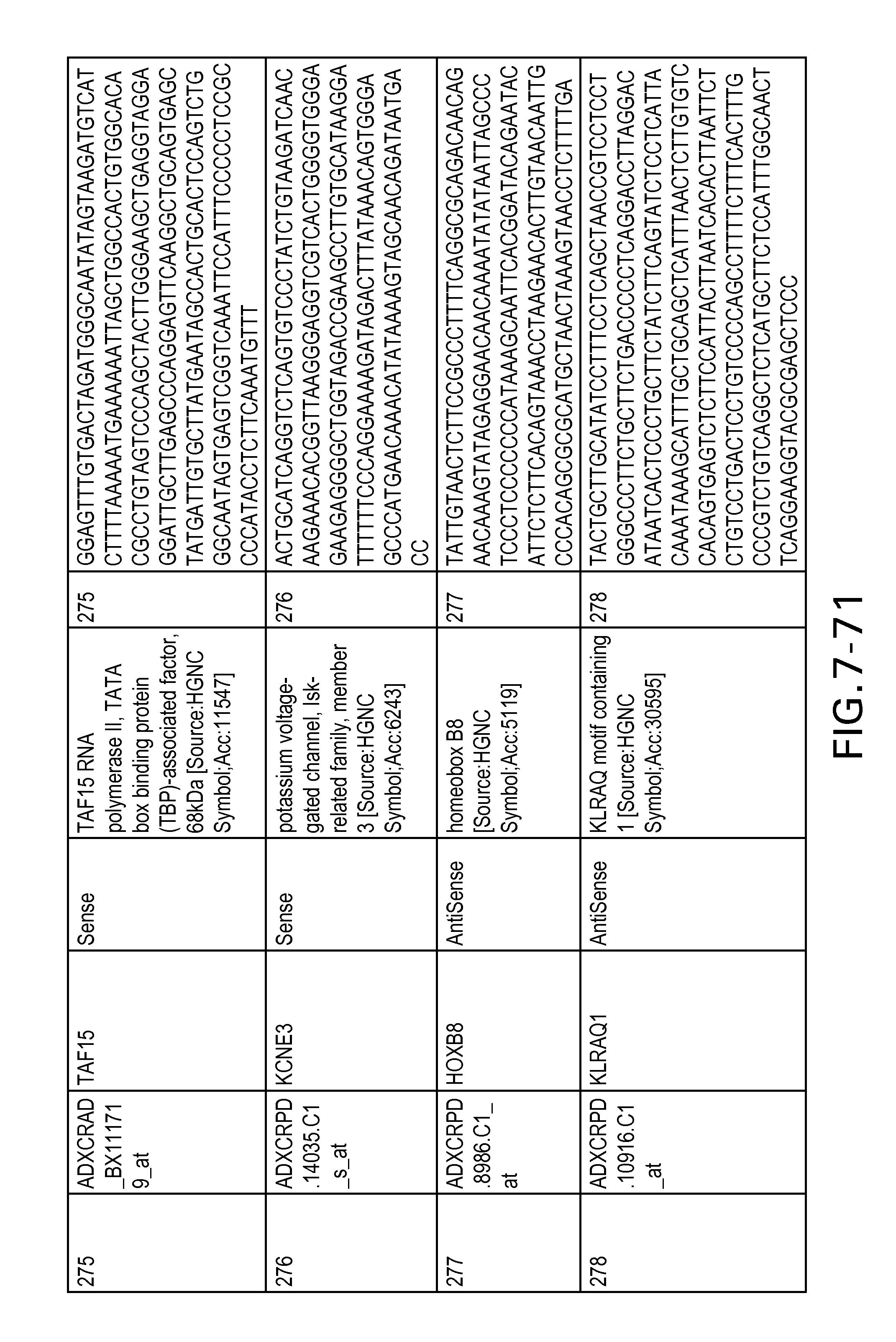
D00078

D00079

D00080
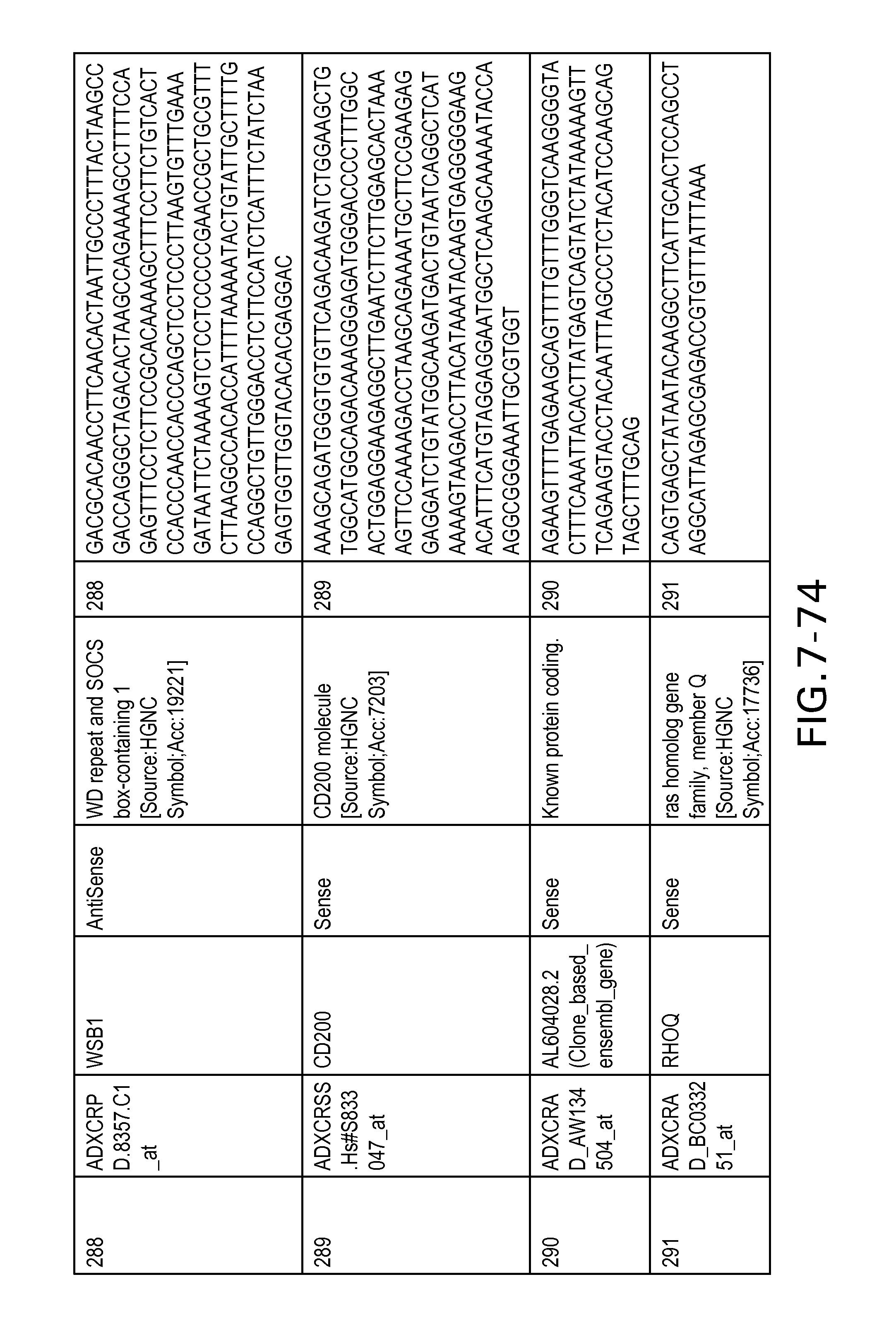
D00081
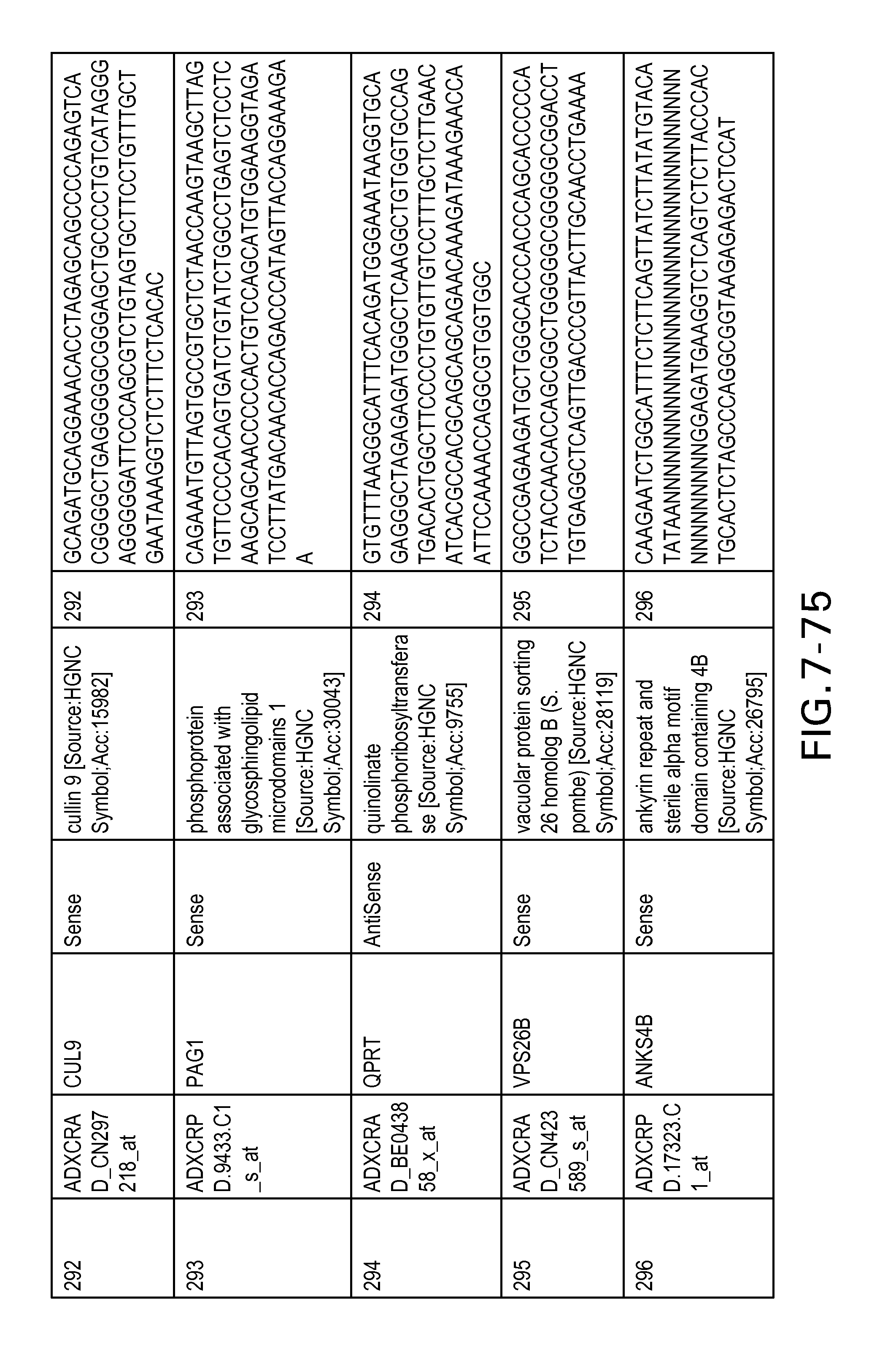
D00082
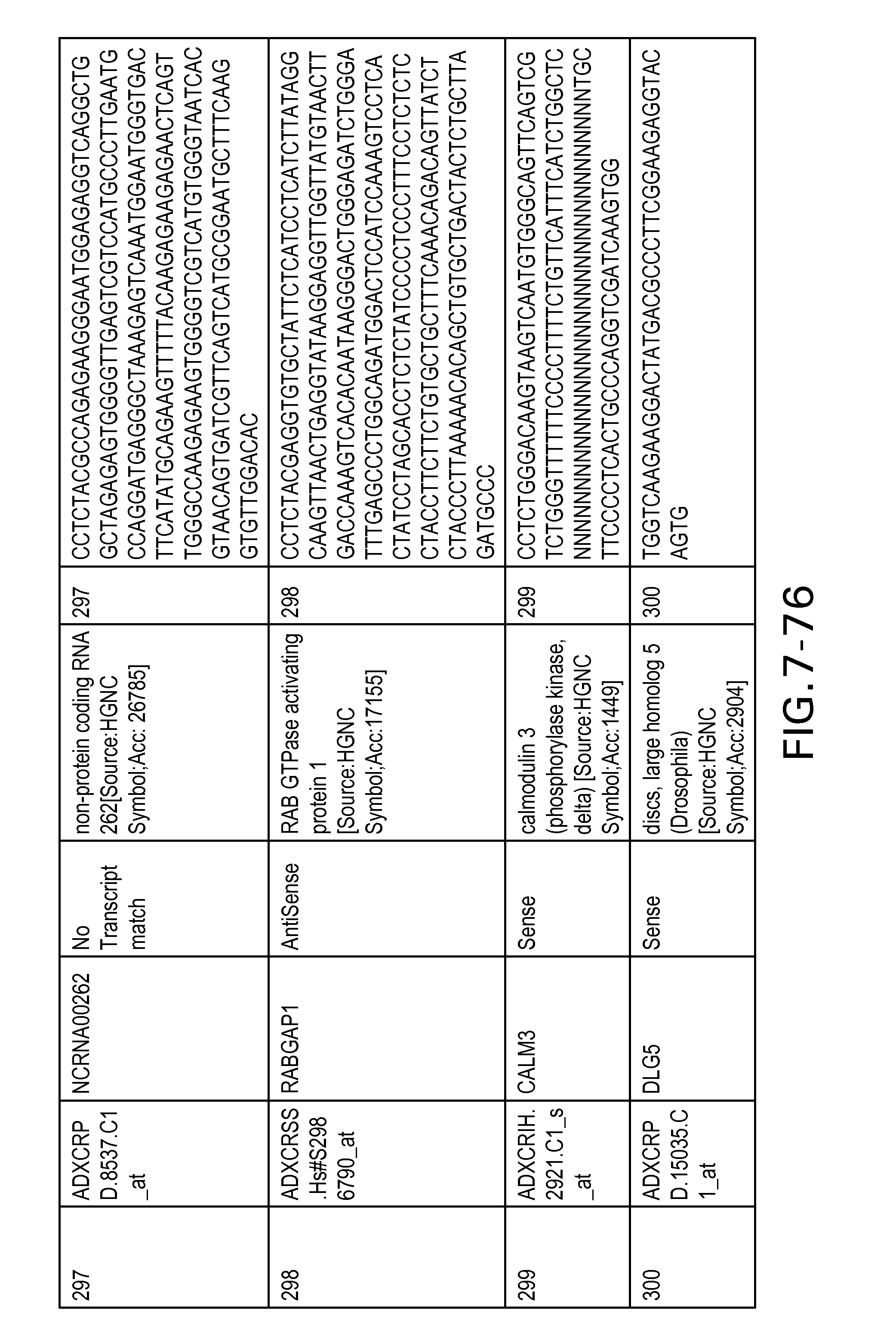
D00083
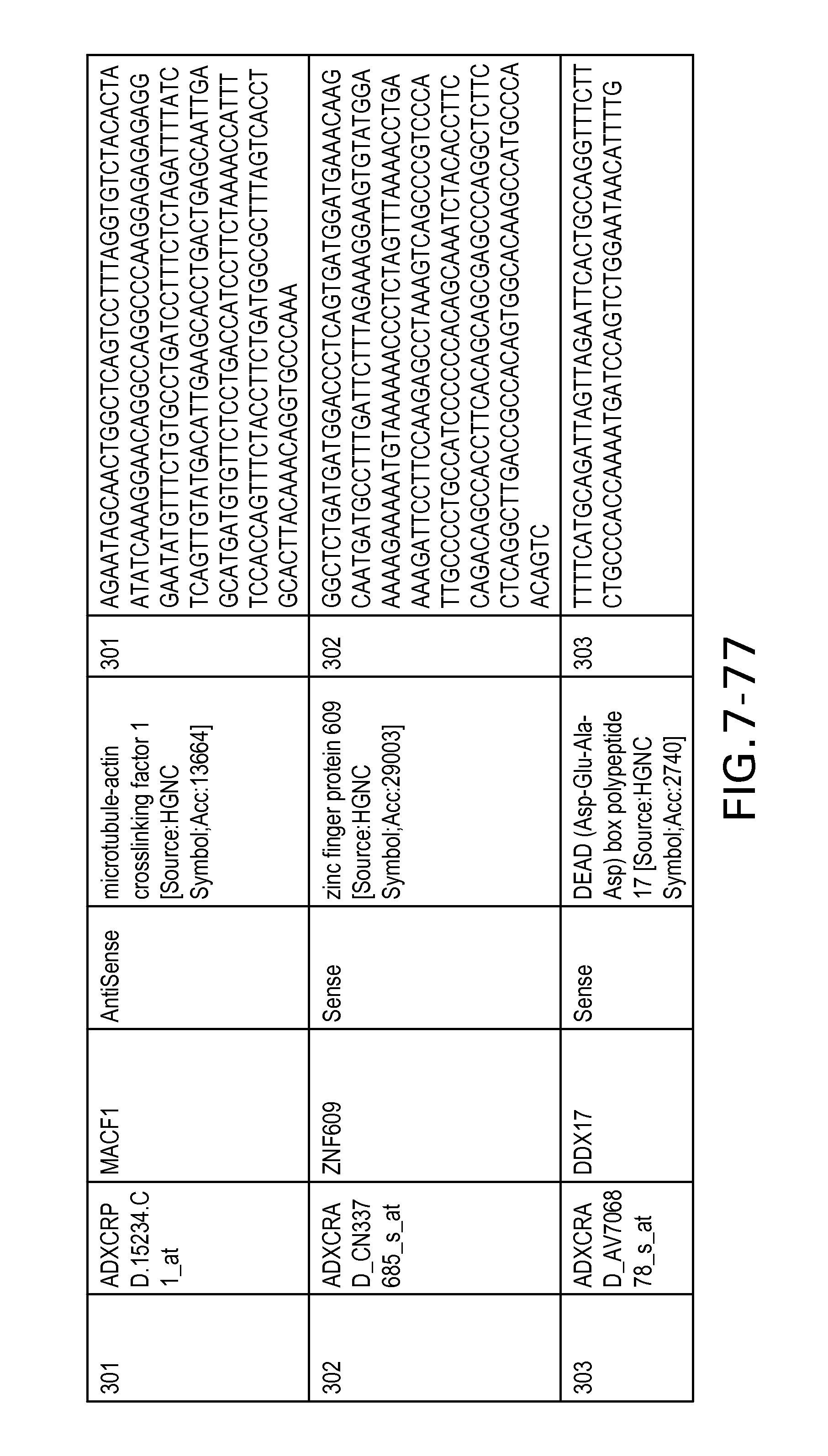
D00084
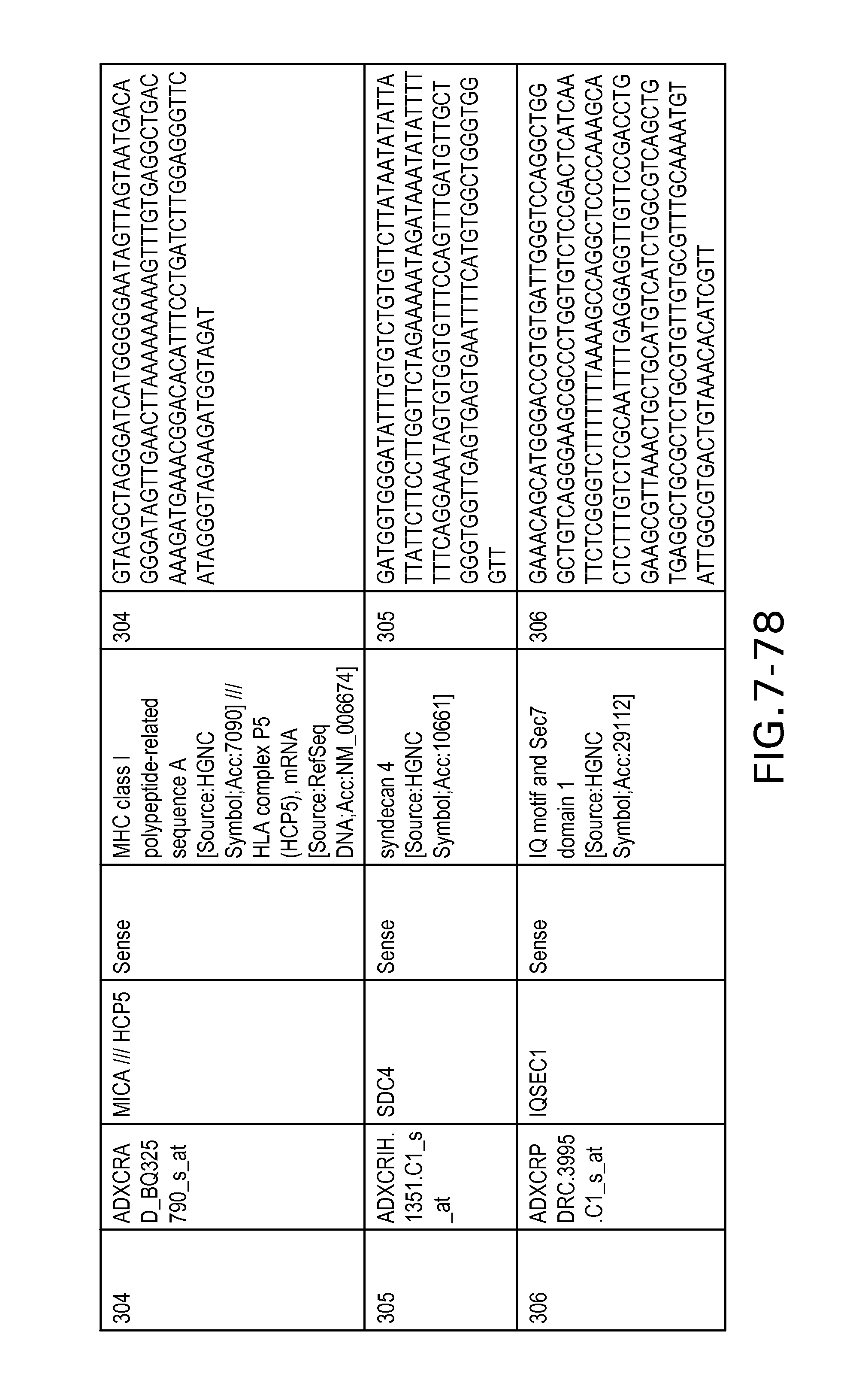
D00085
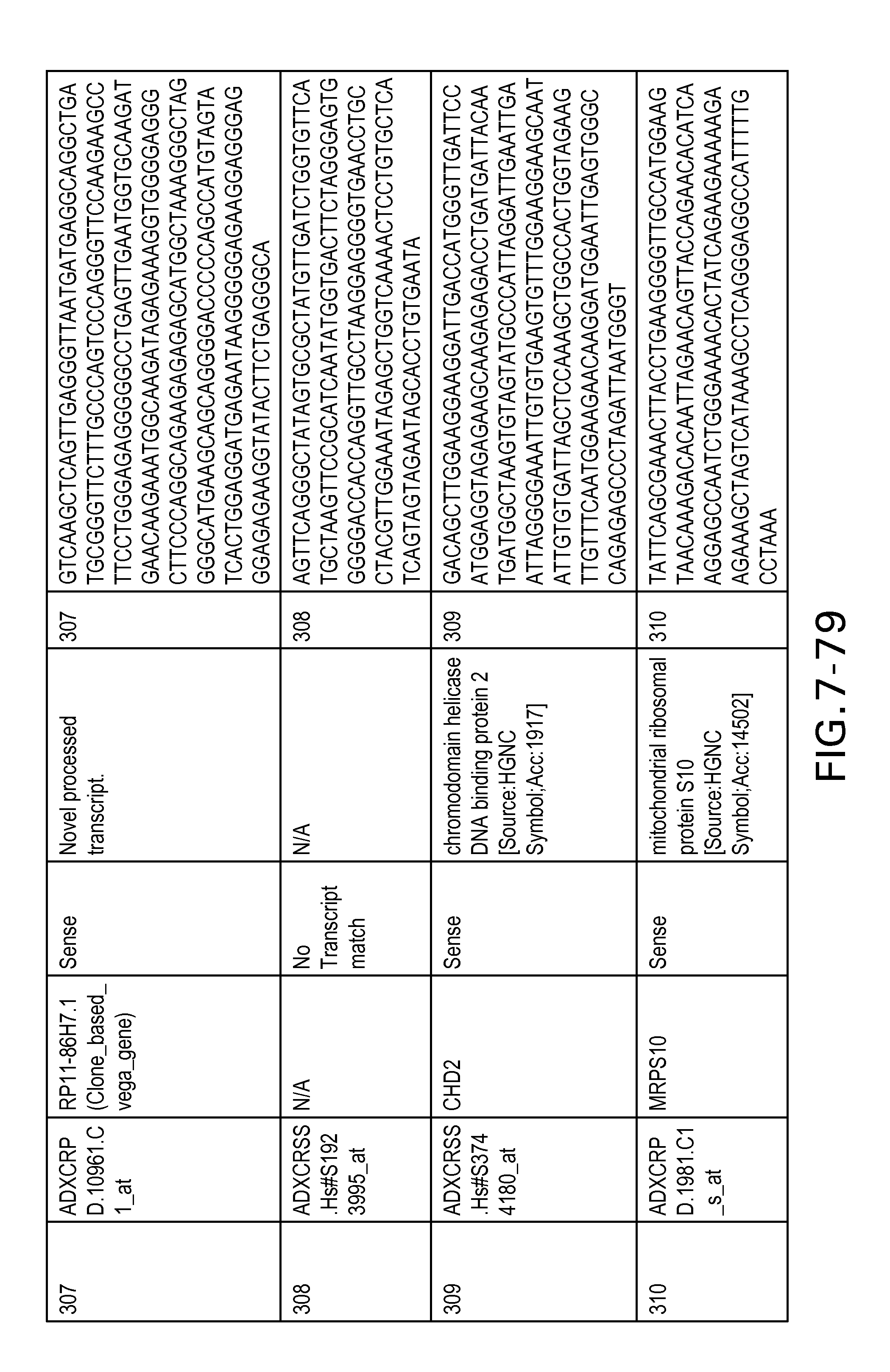
D00086

D00087
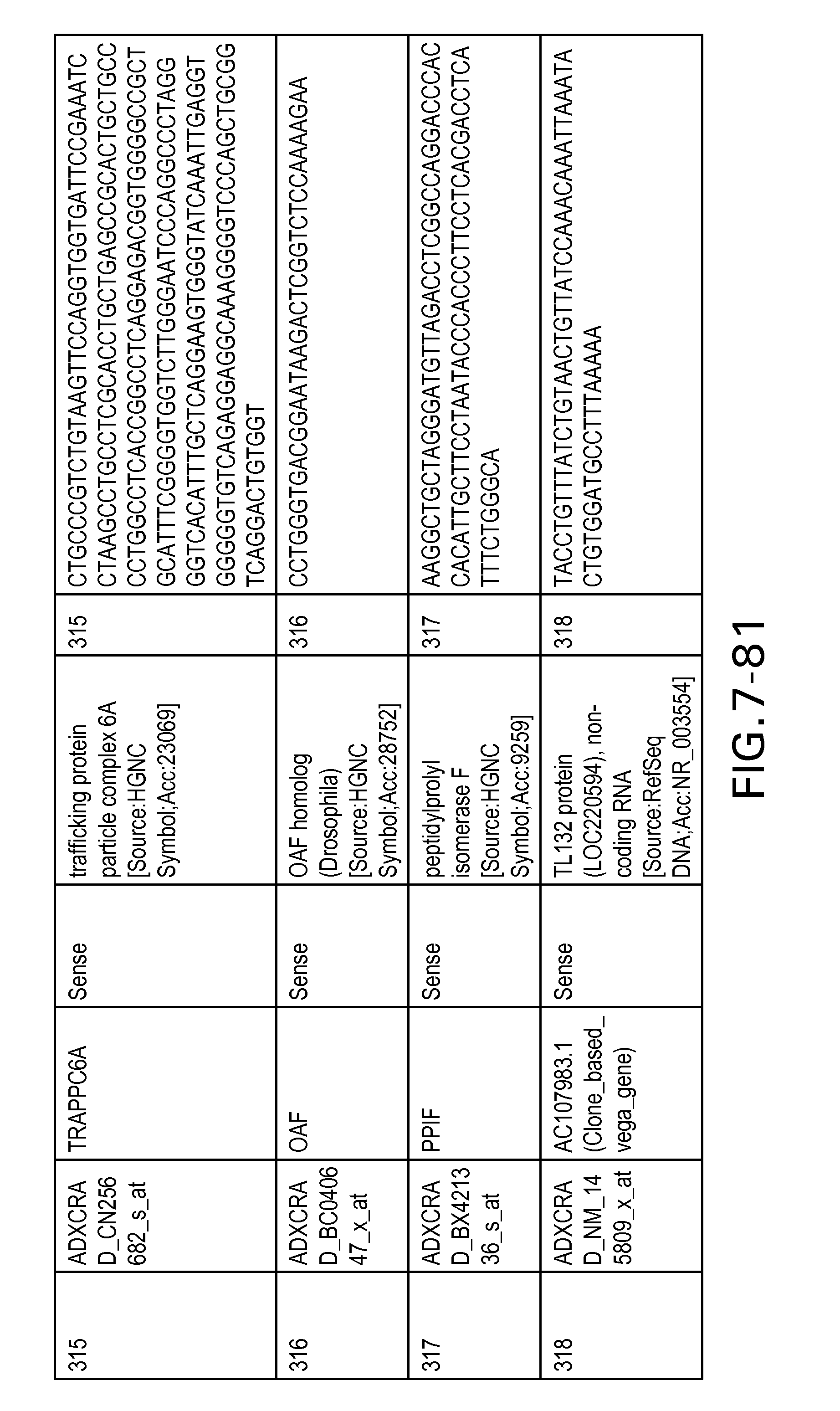
D00088
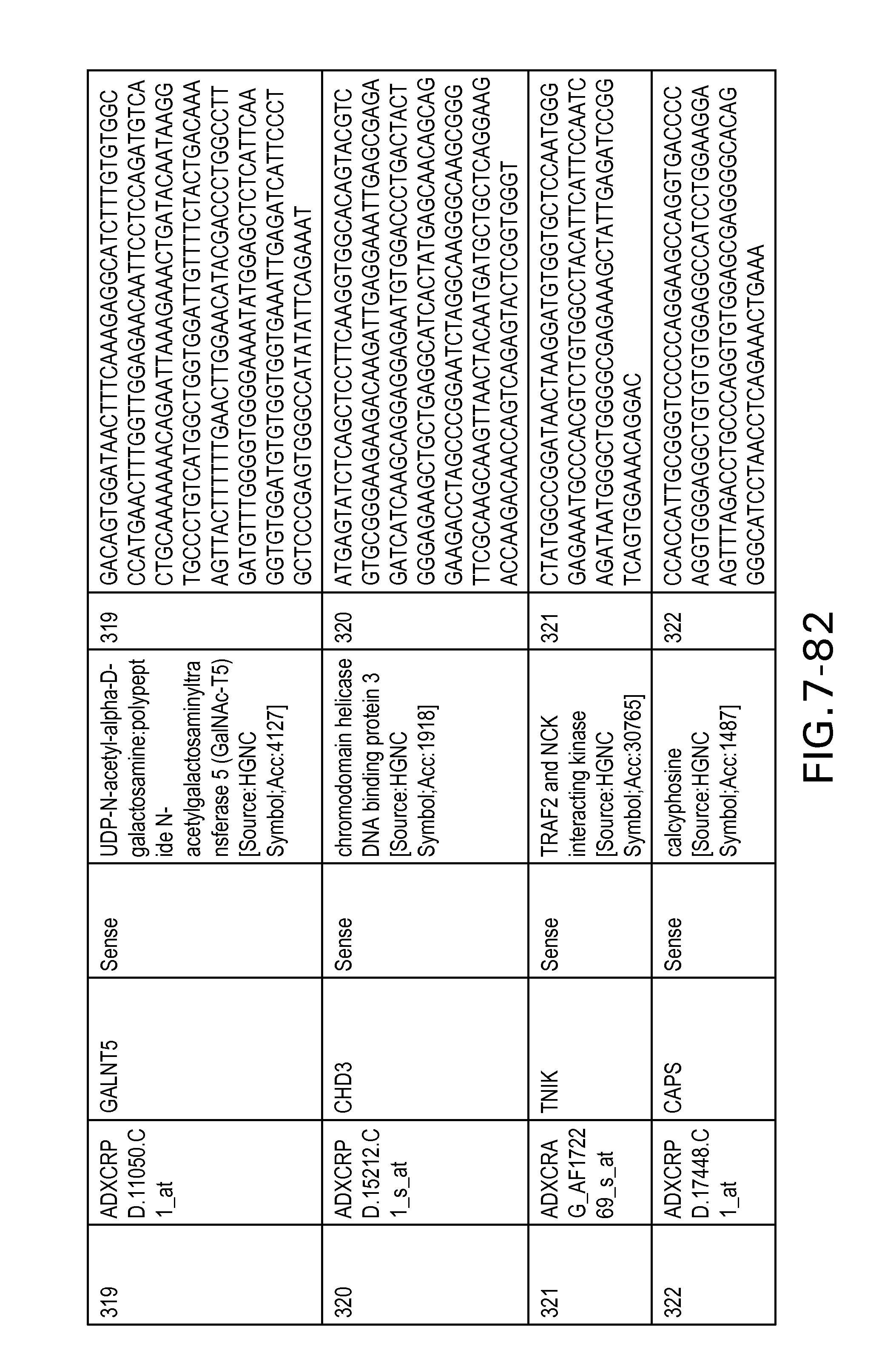
D00089
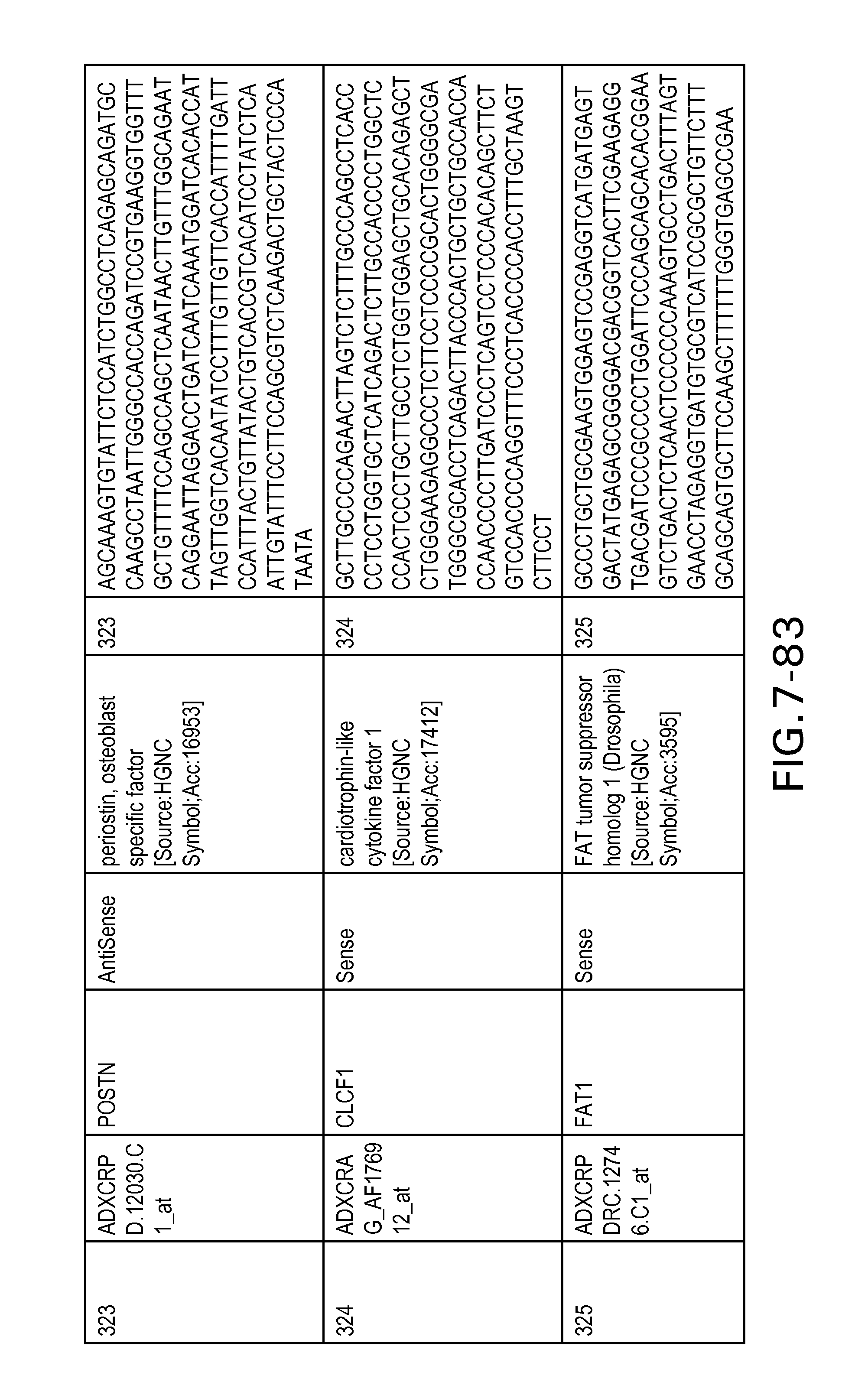
D00090
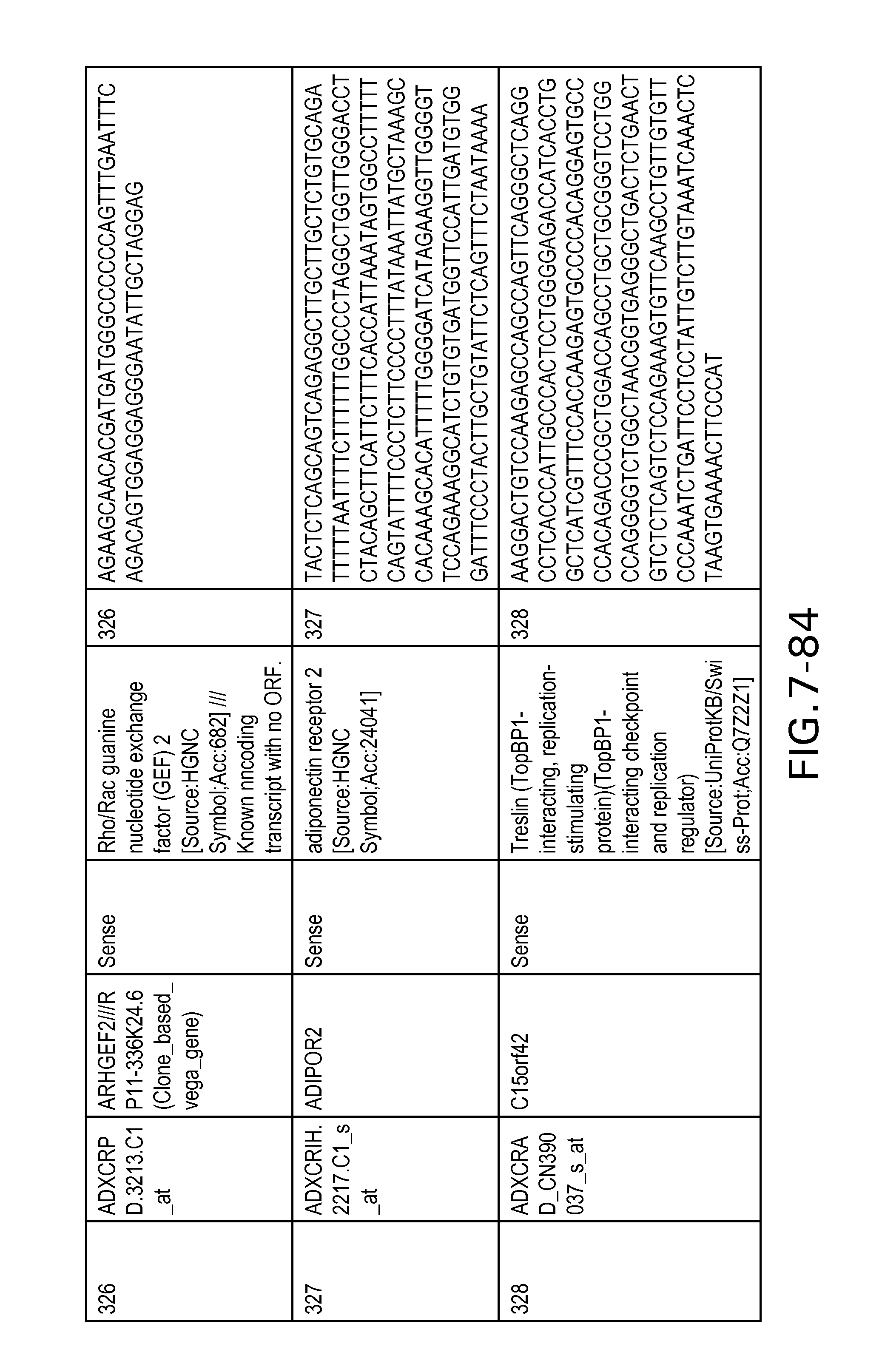
D00091
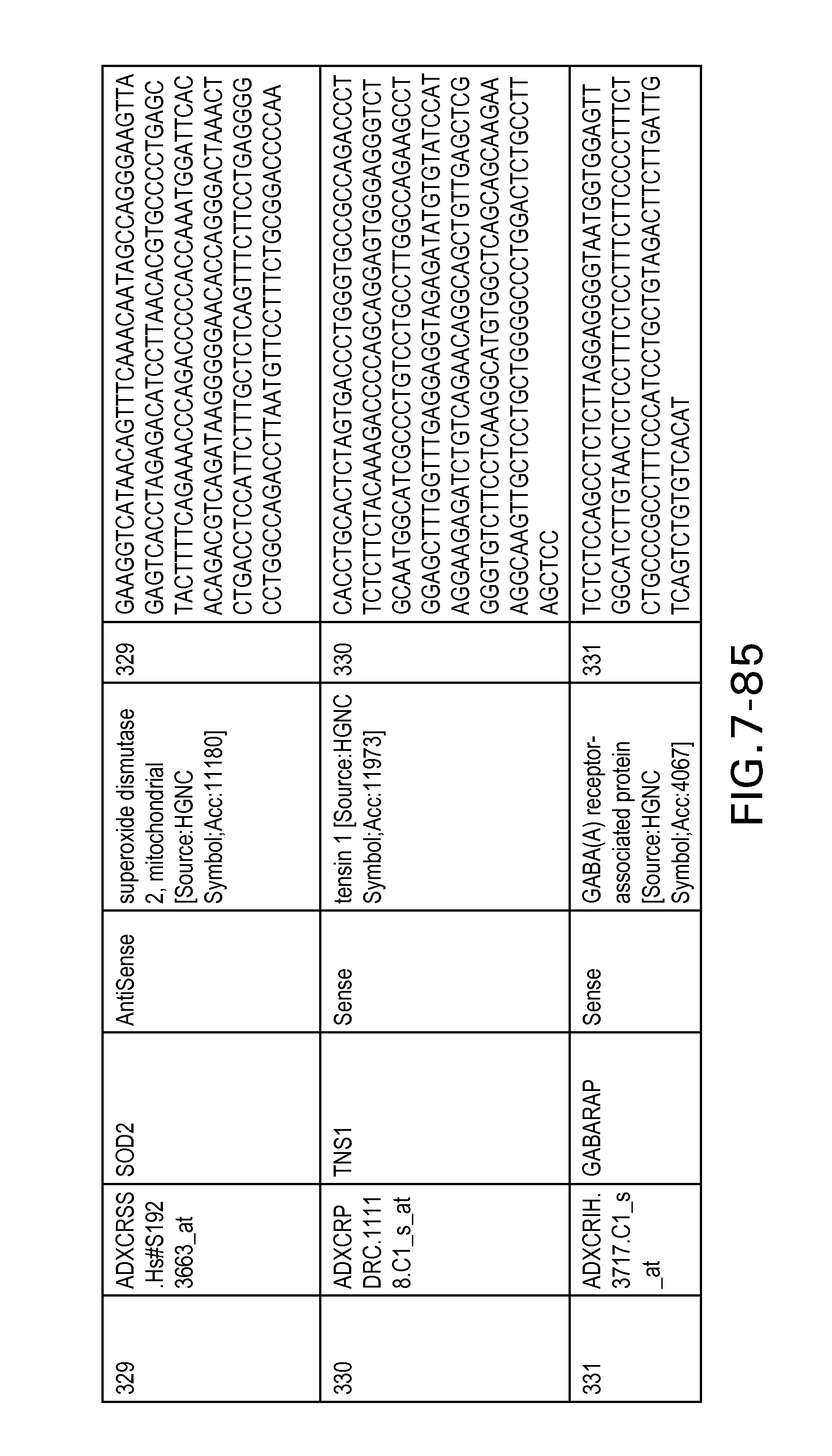
D00092
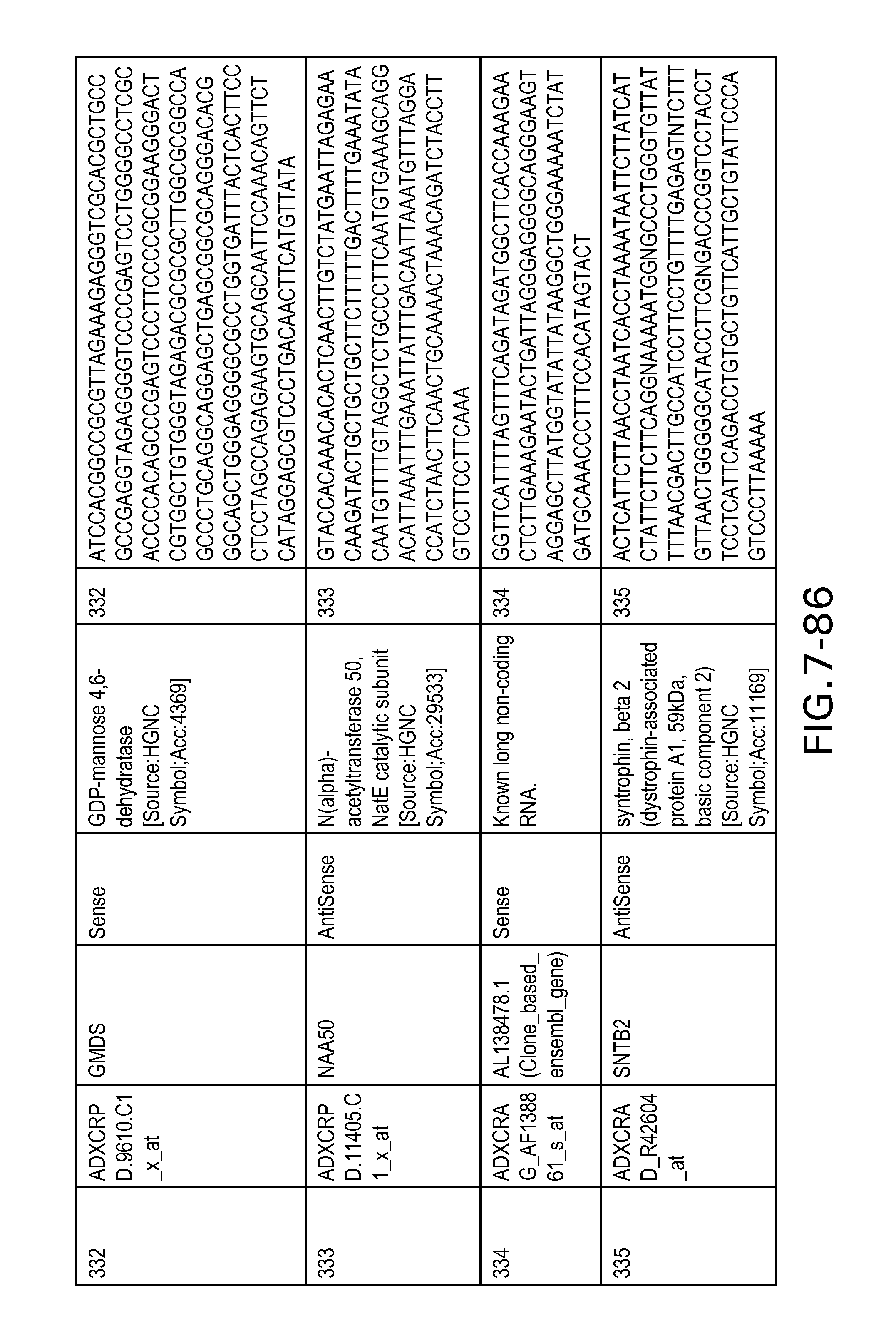
D00093
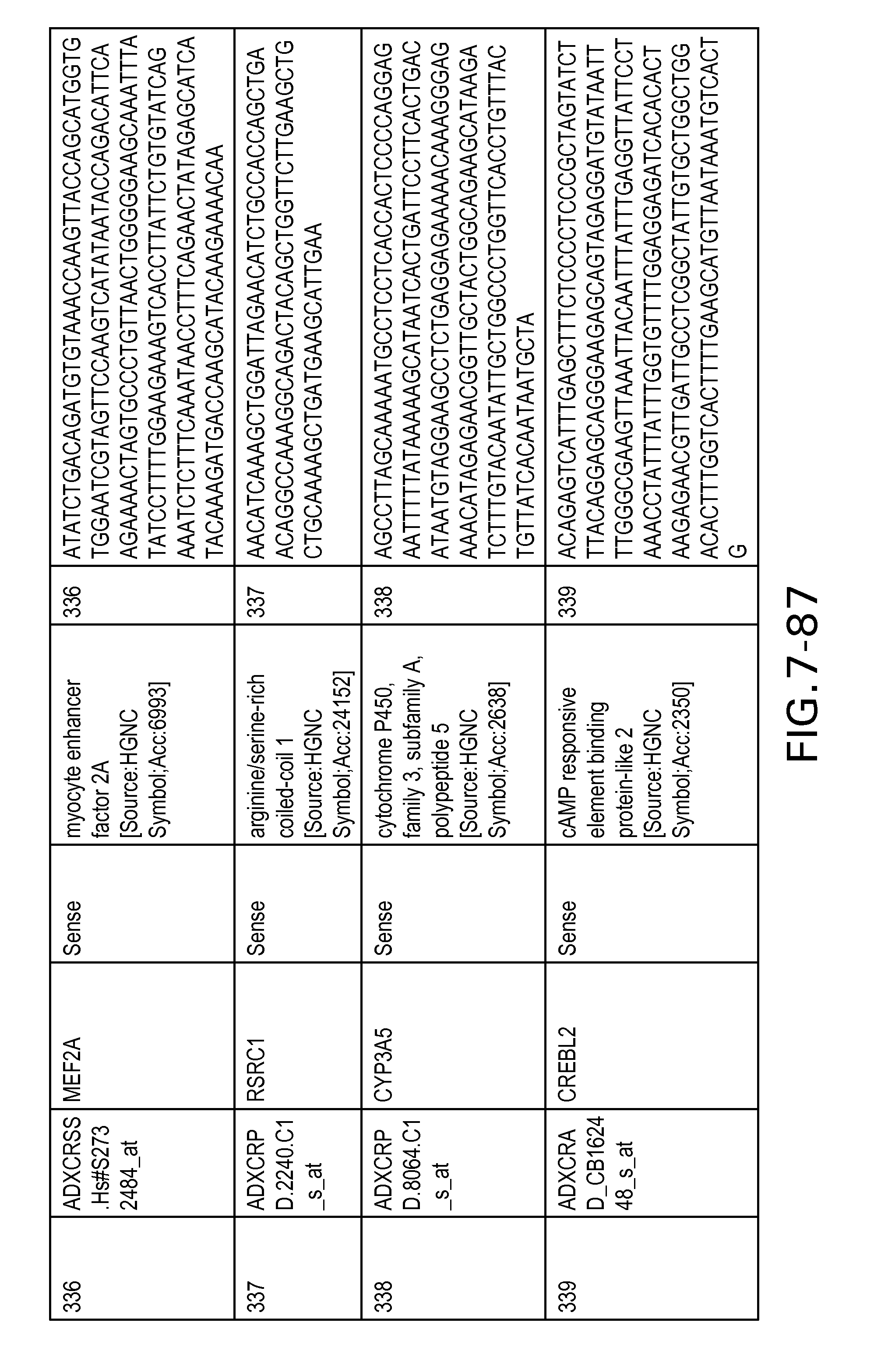
D00094
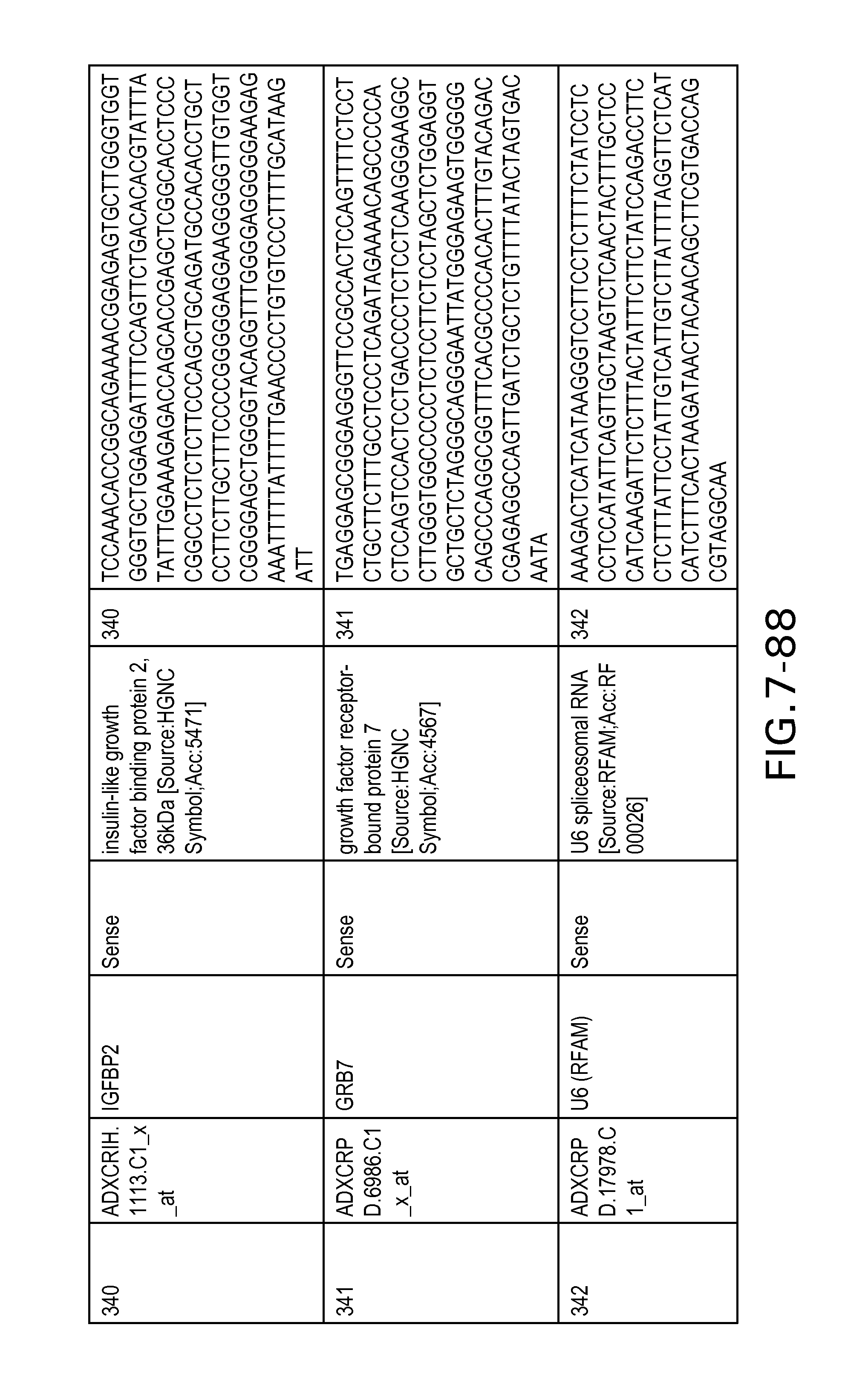
D00095
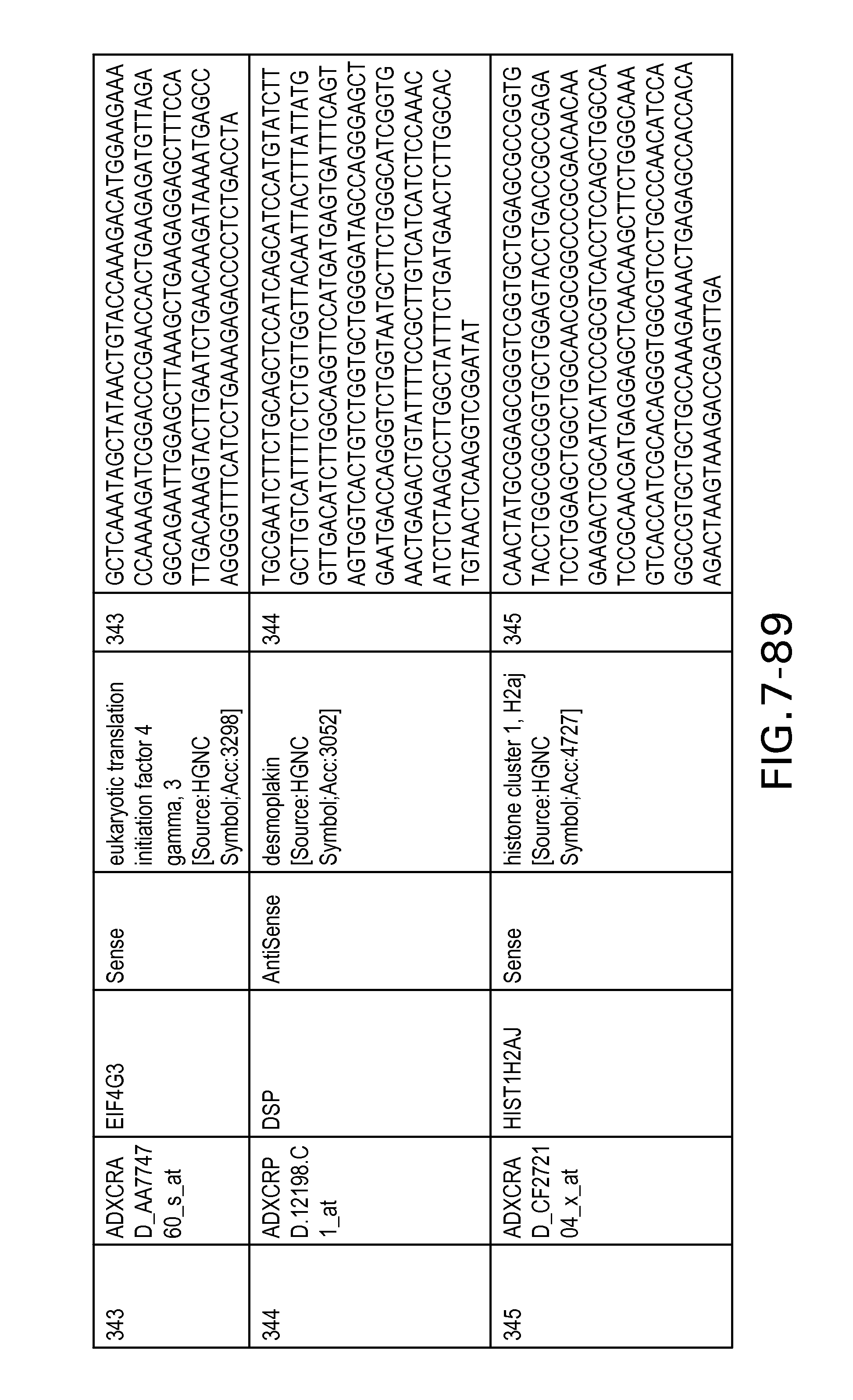
D00096
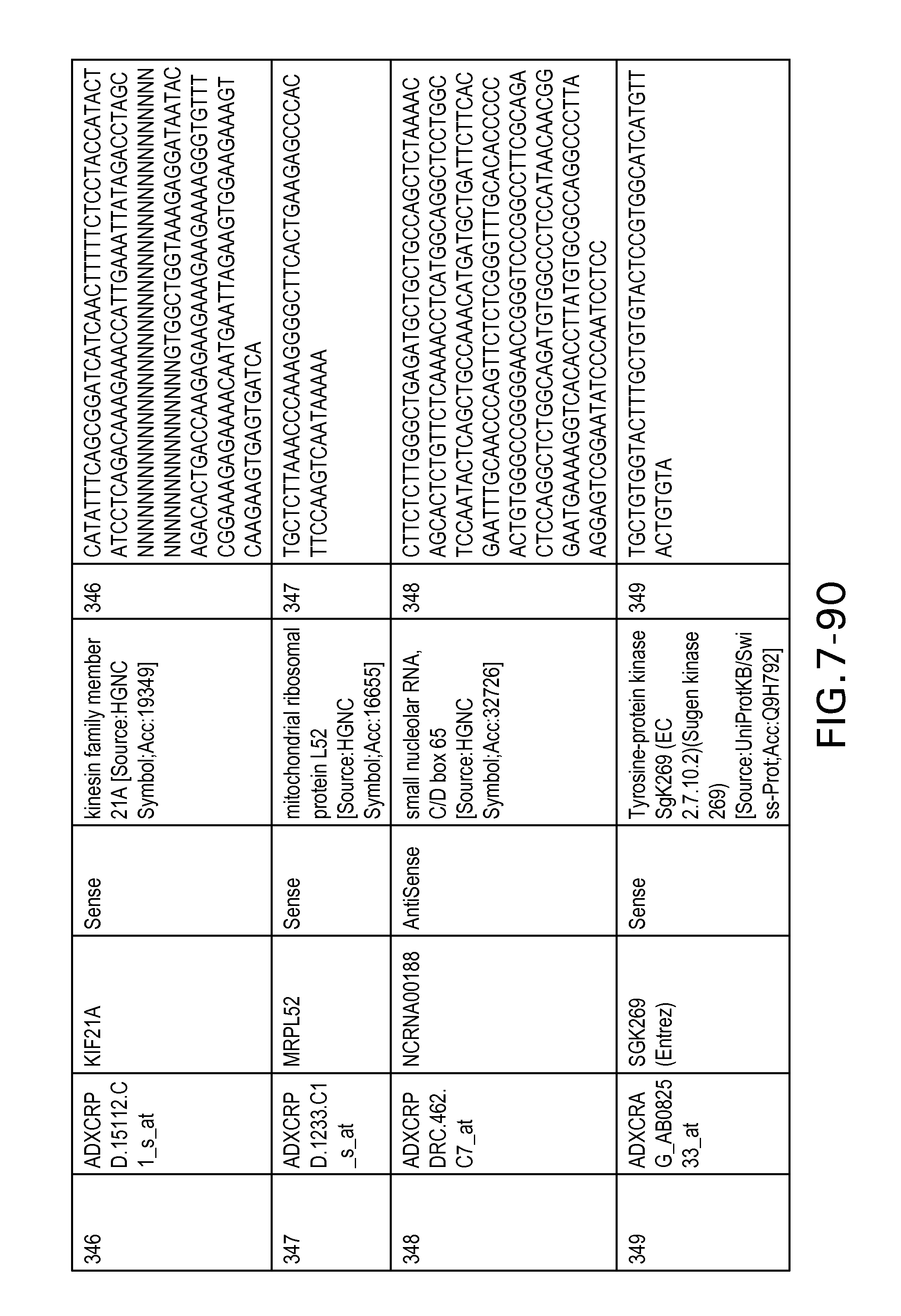
D00097
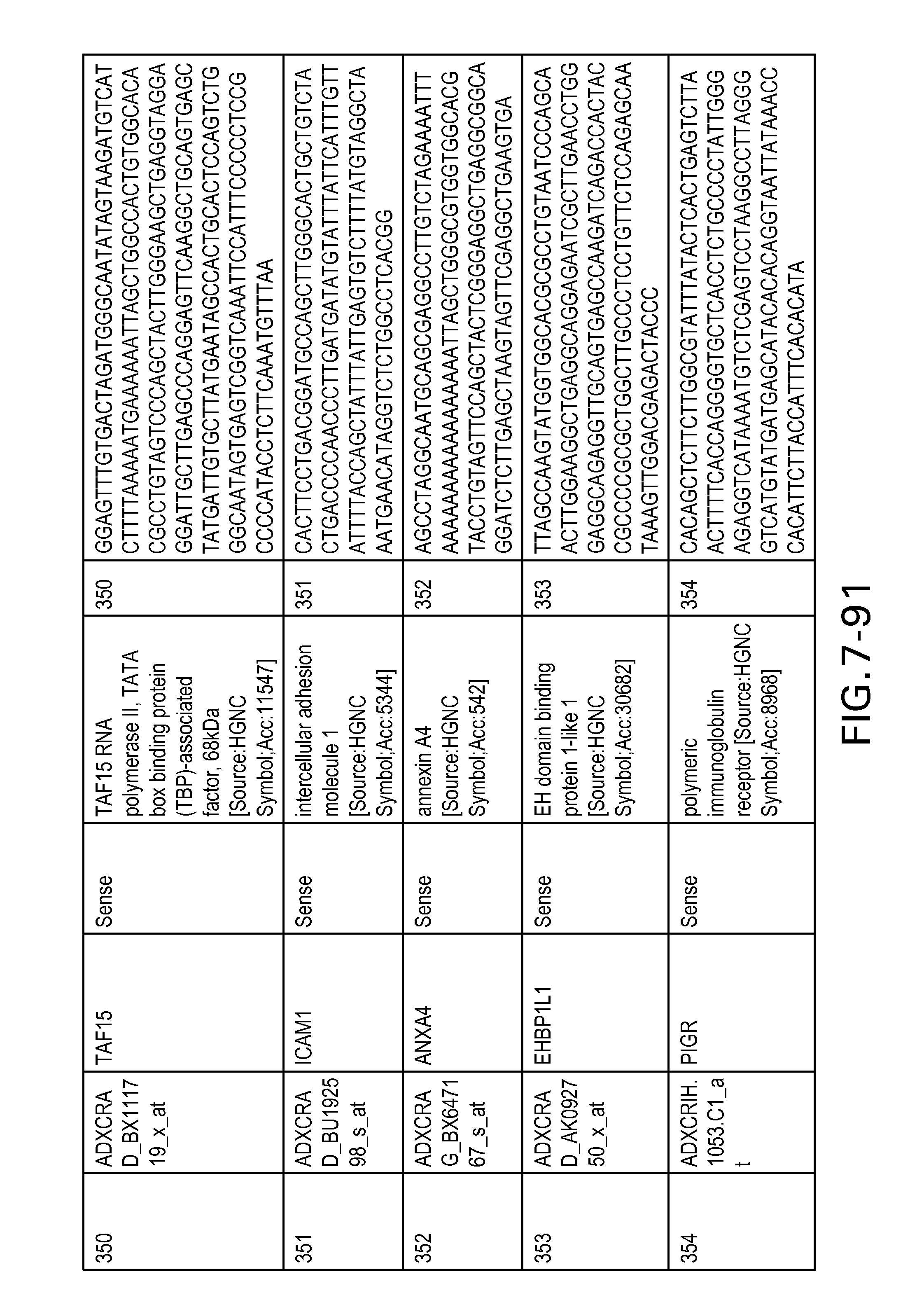
D00098

D00099
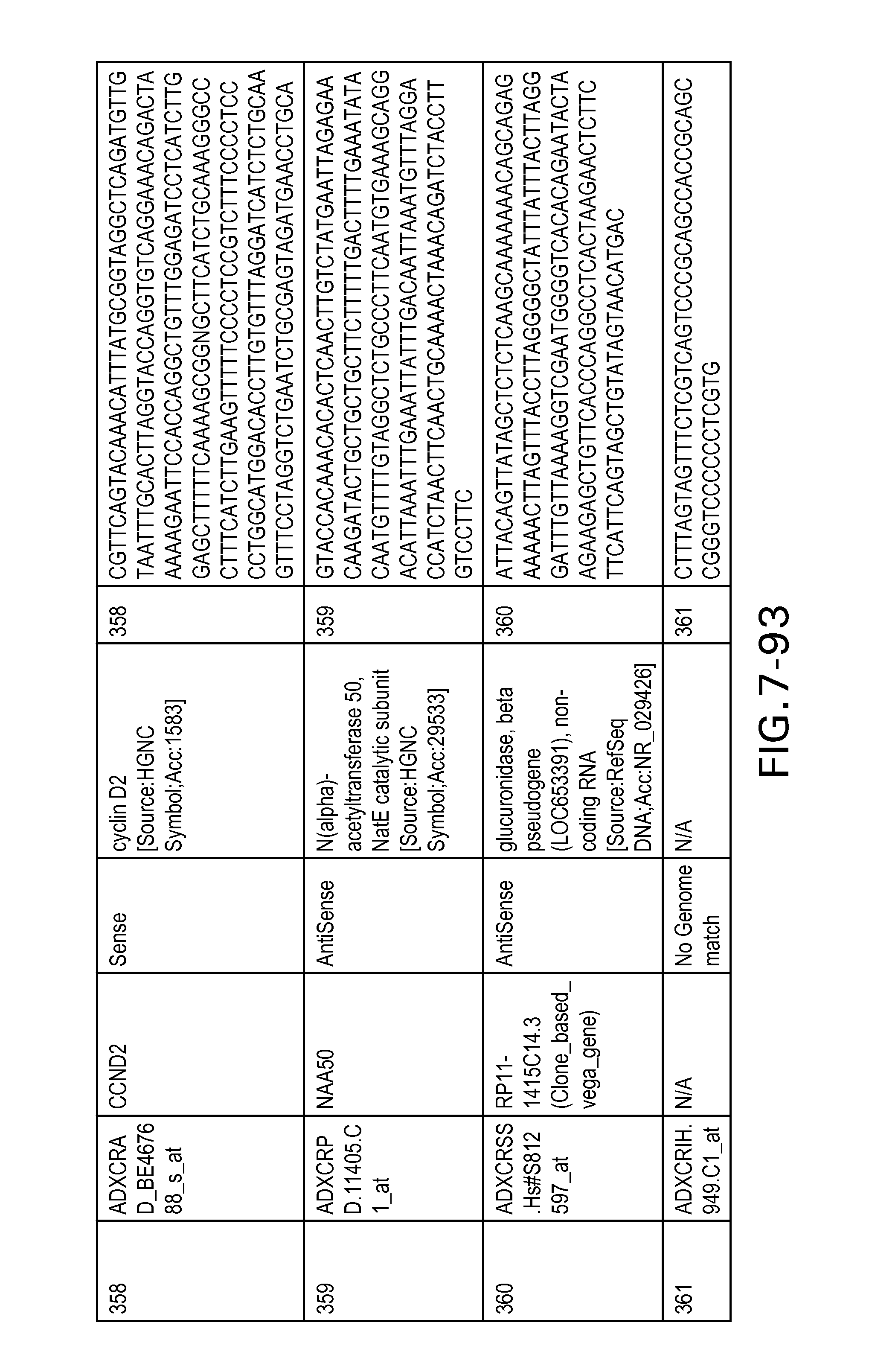
D00100
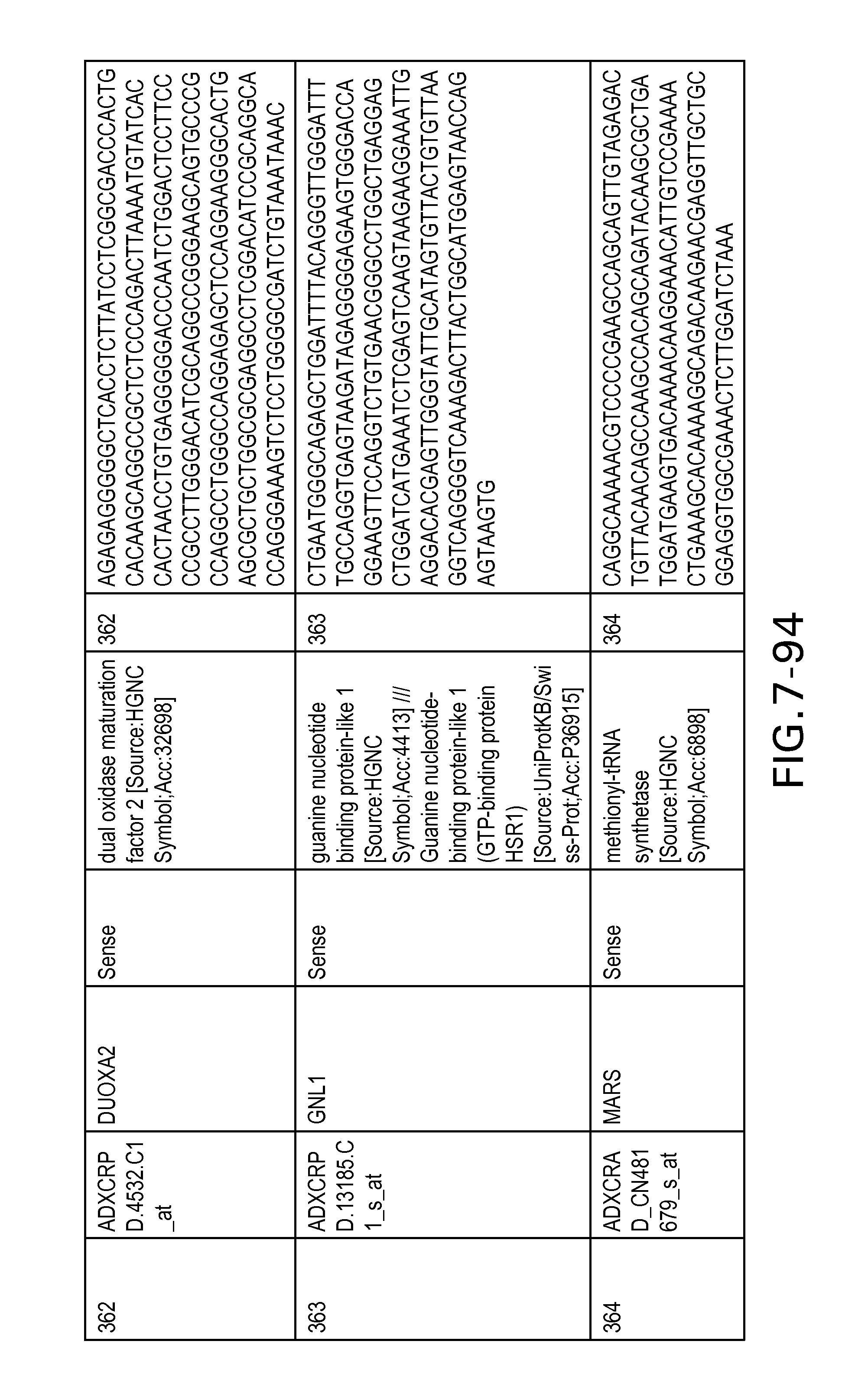
D00101

D00102
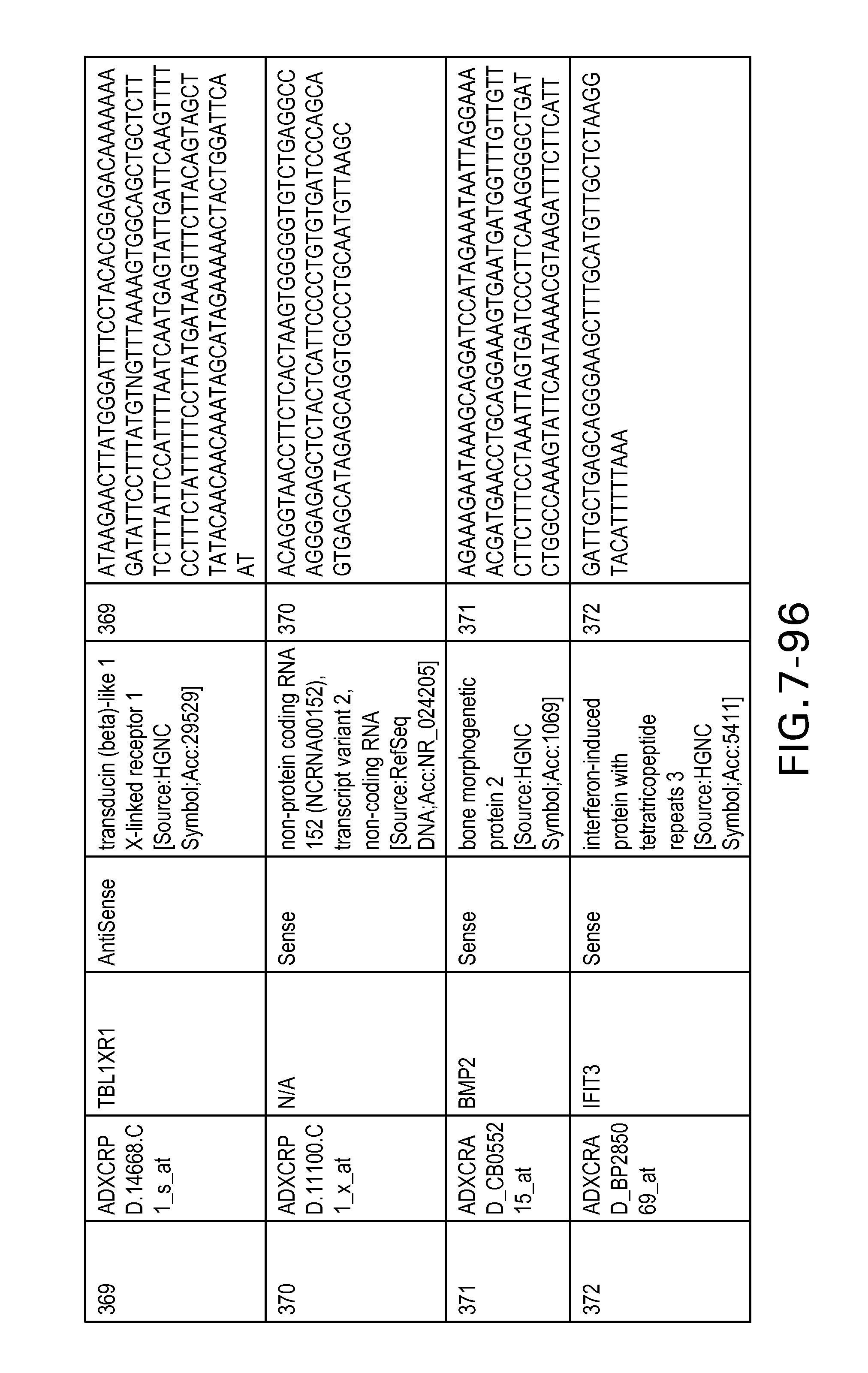
D00103
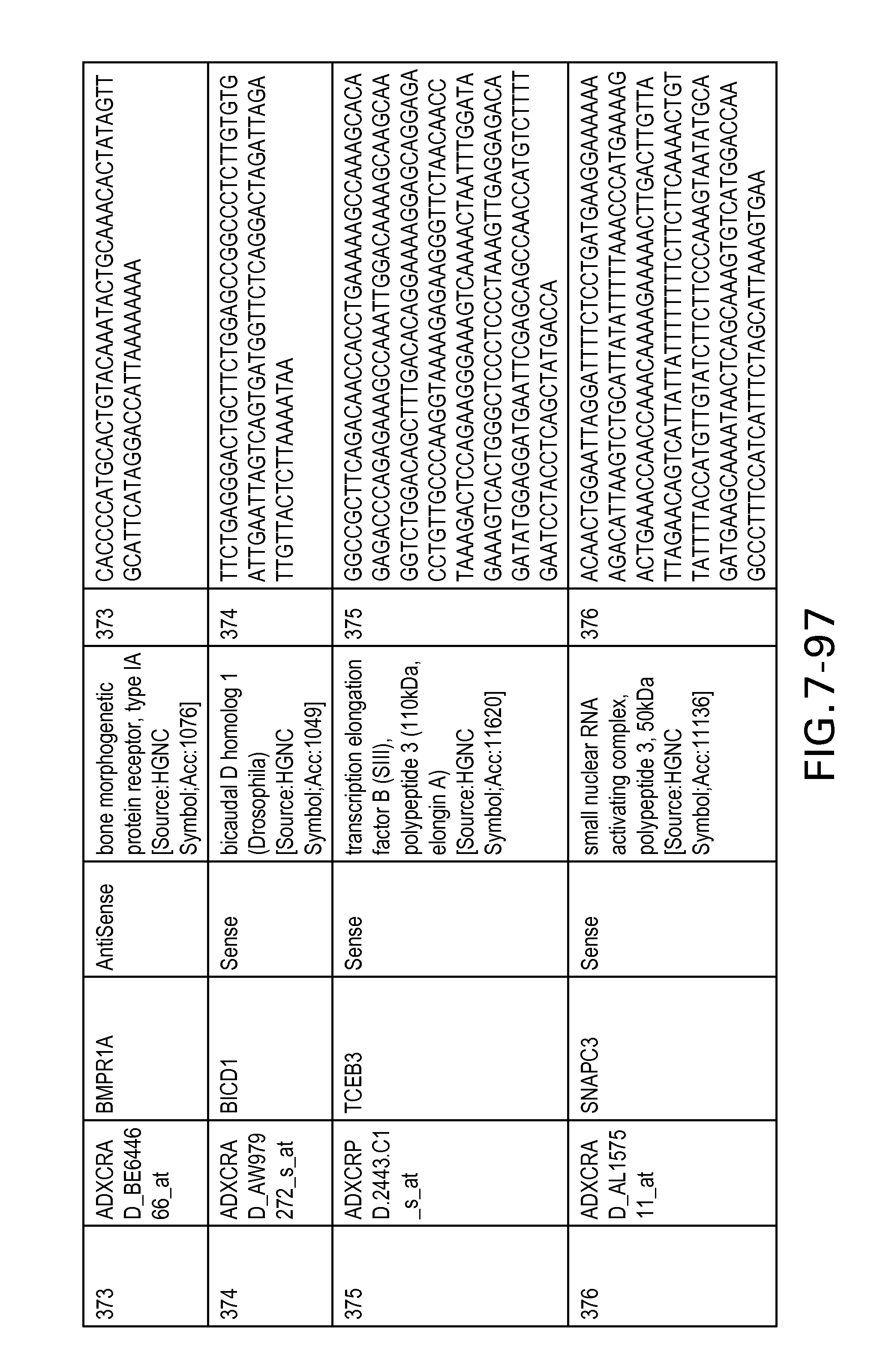
D00104
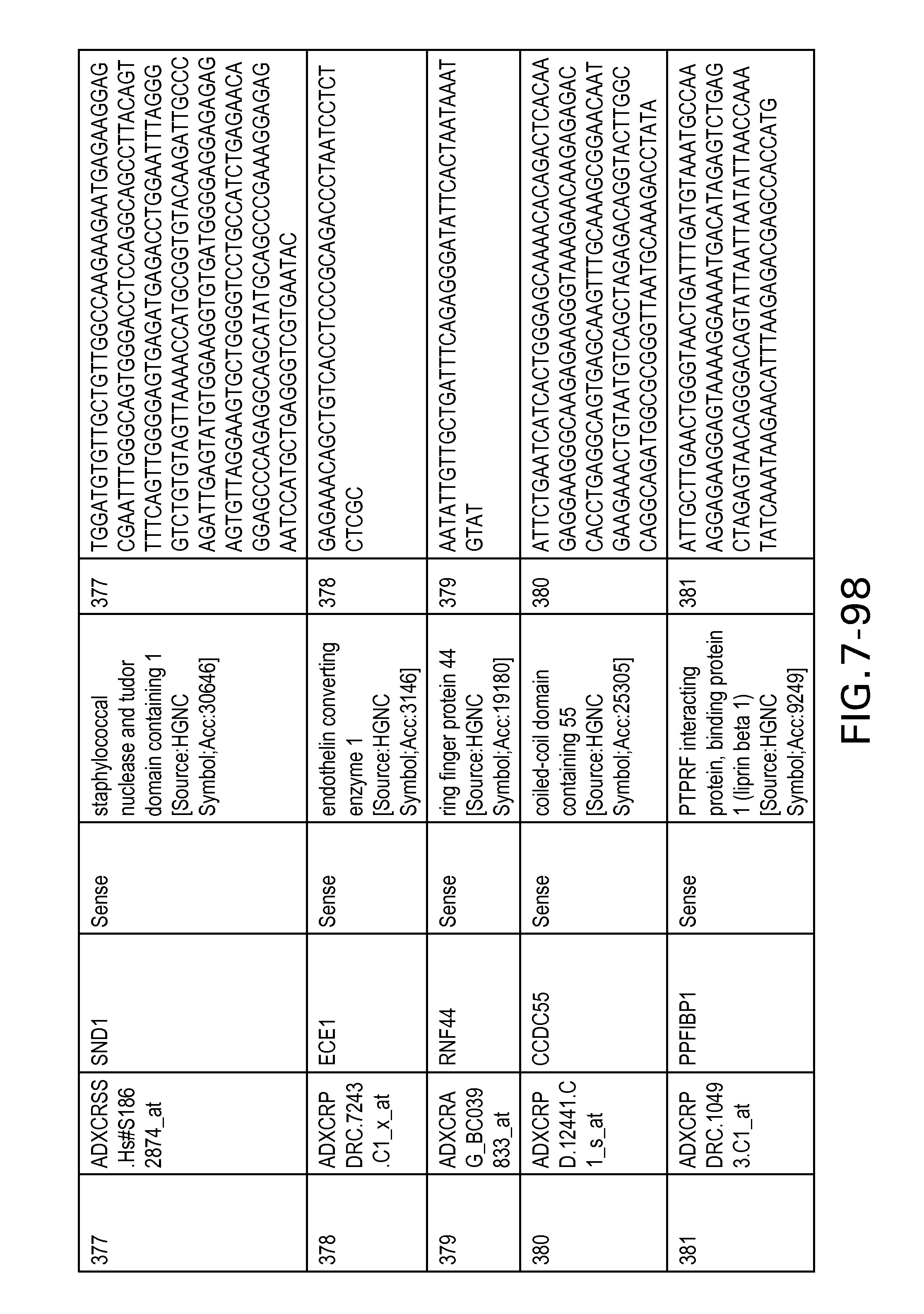
D00105
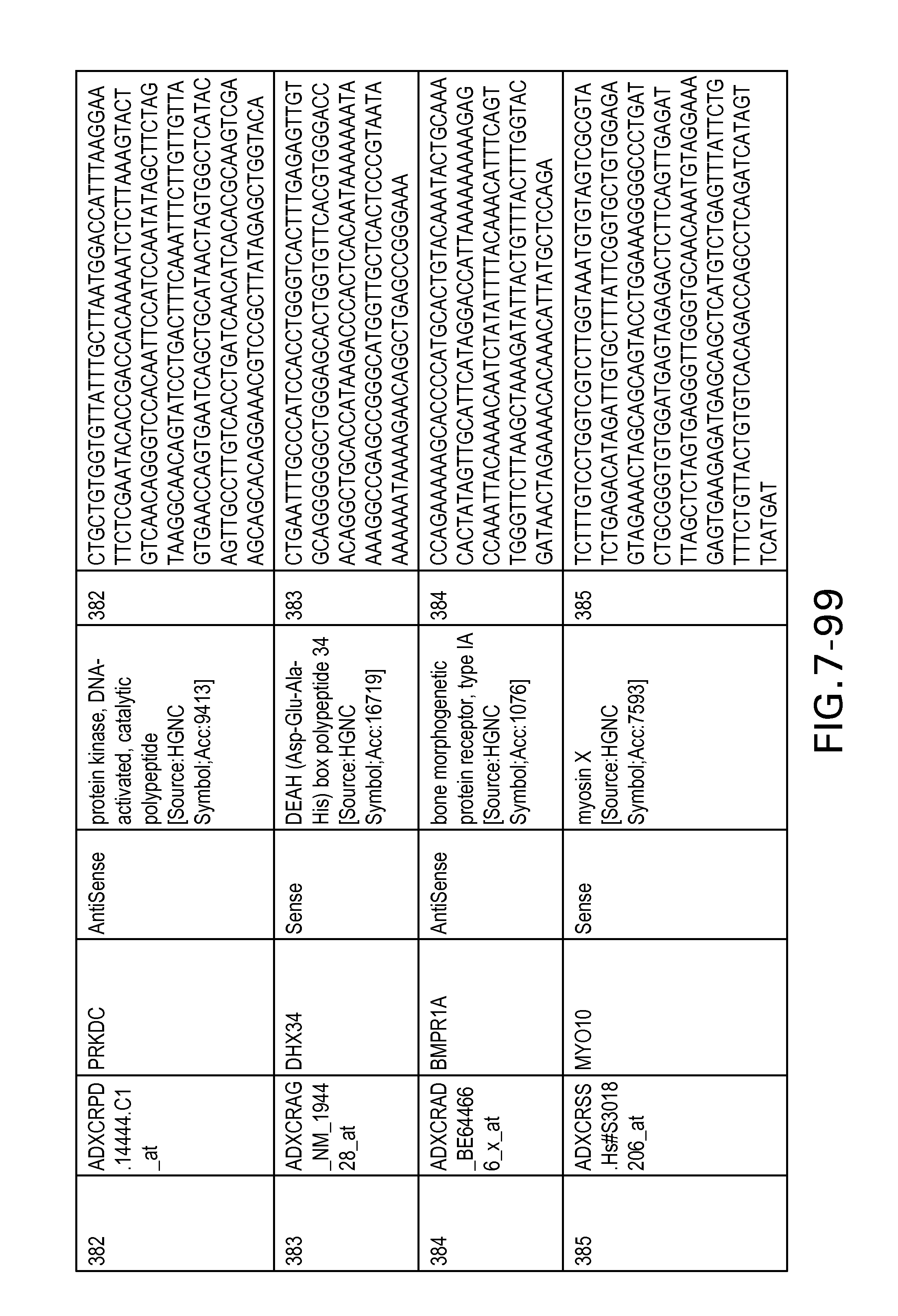
D00106
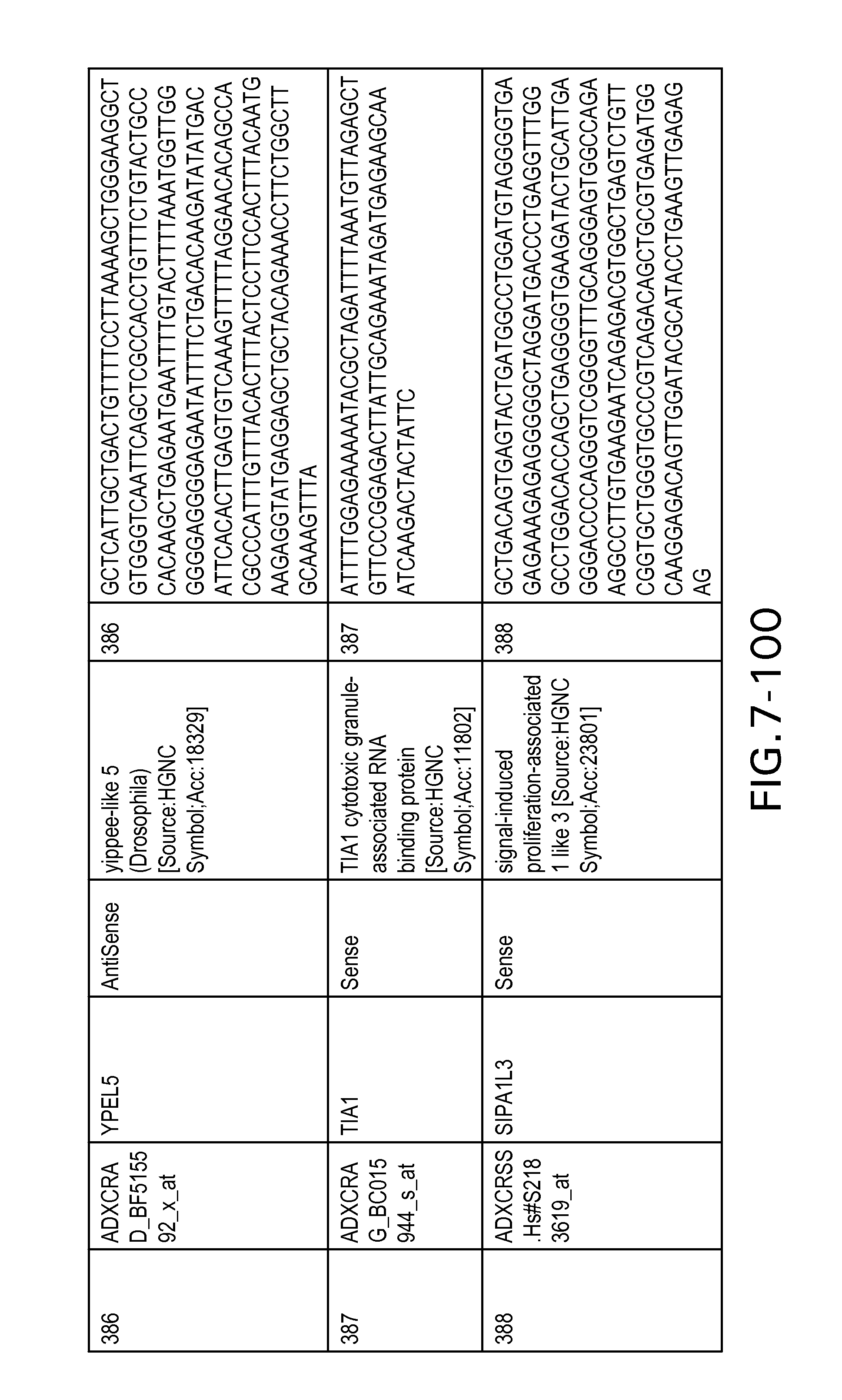
D00107
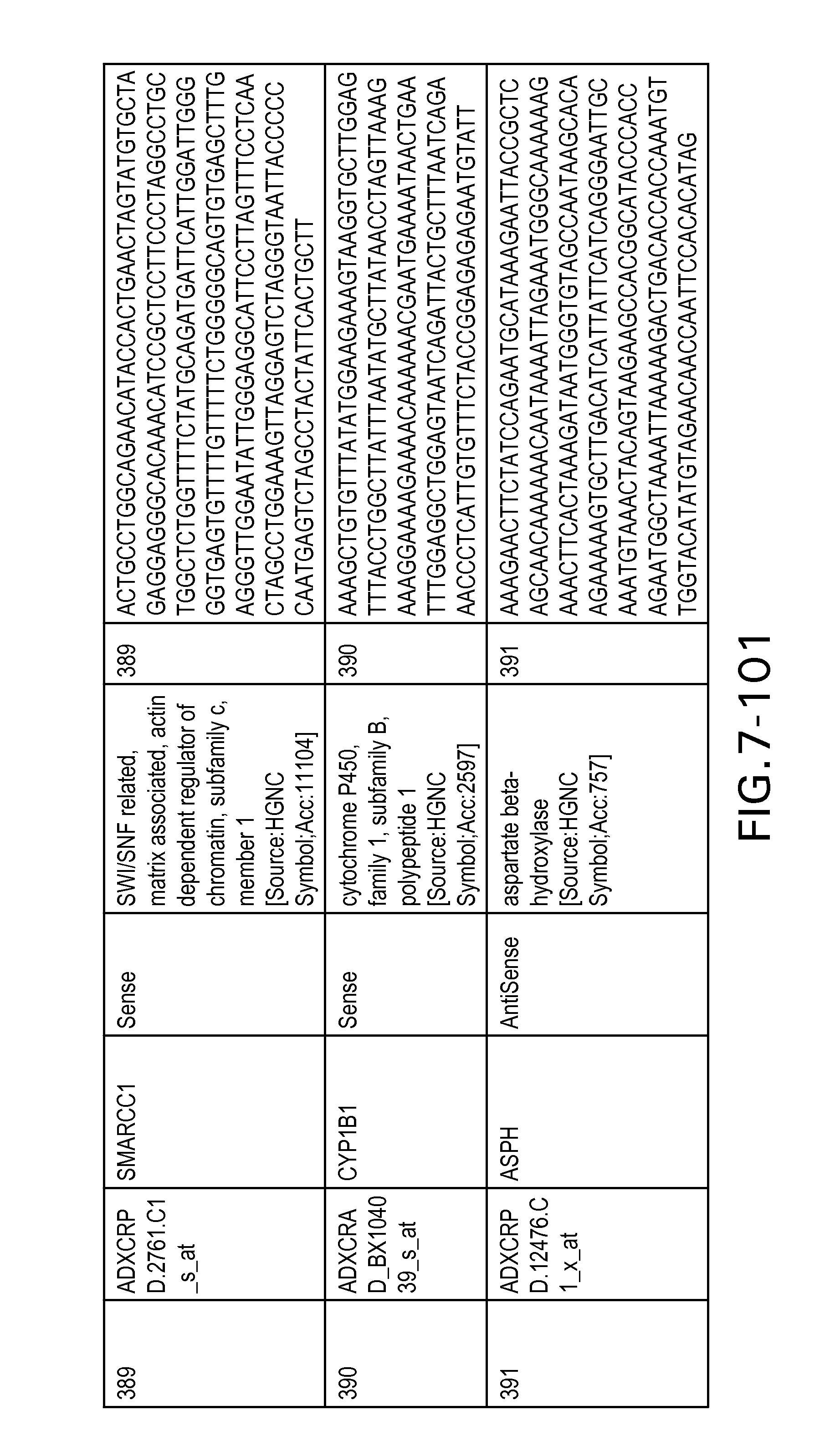
D00108
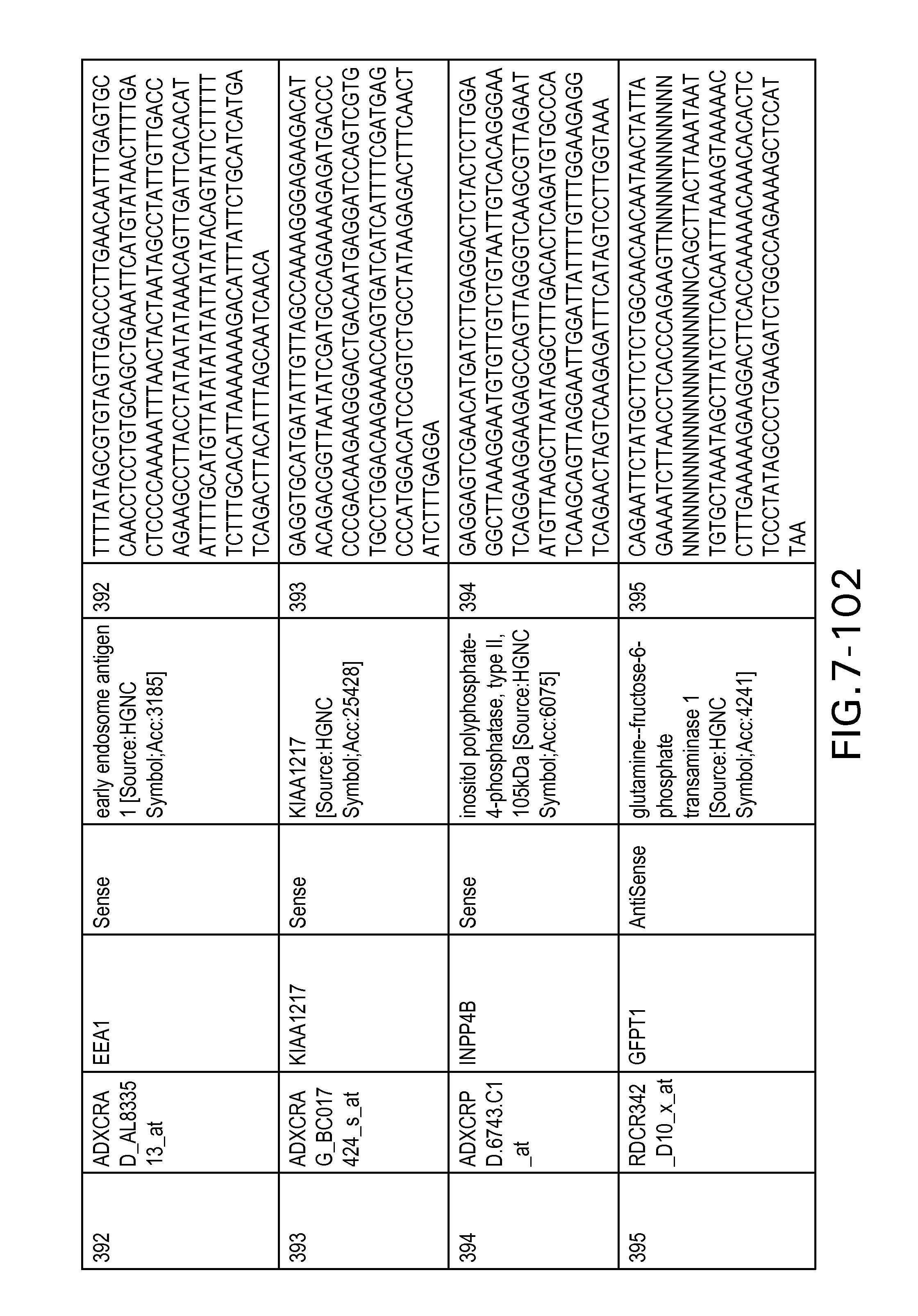
D00109

D00110
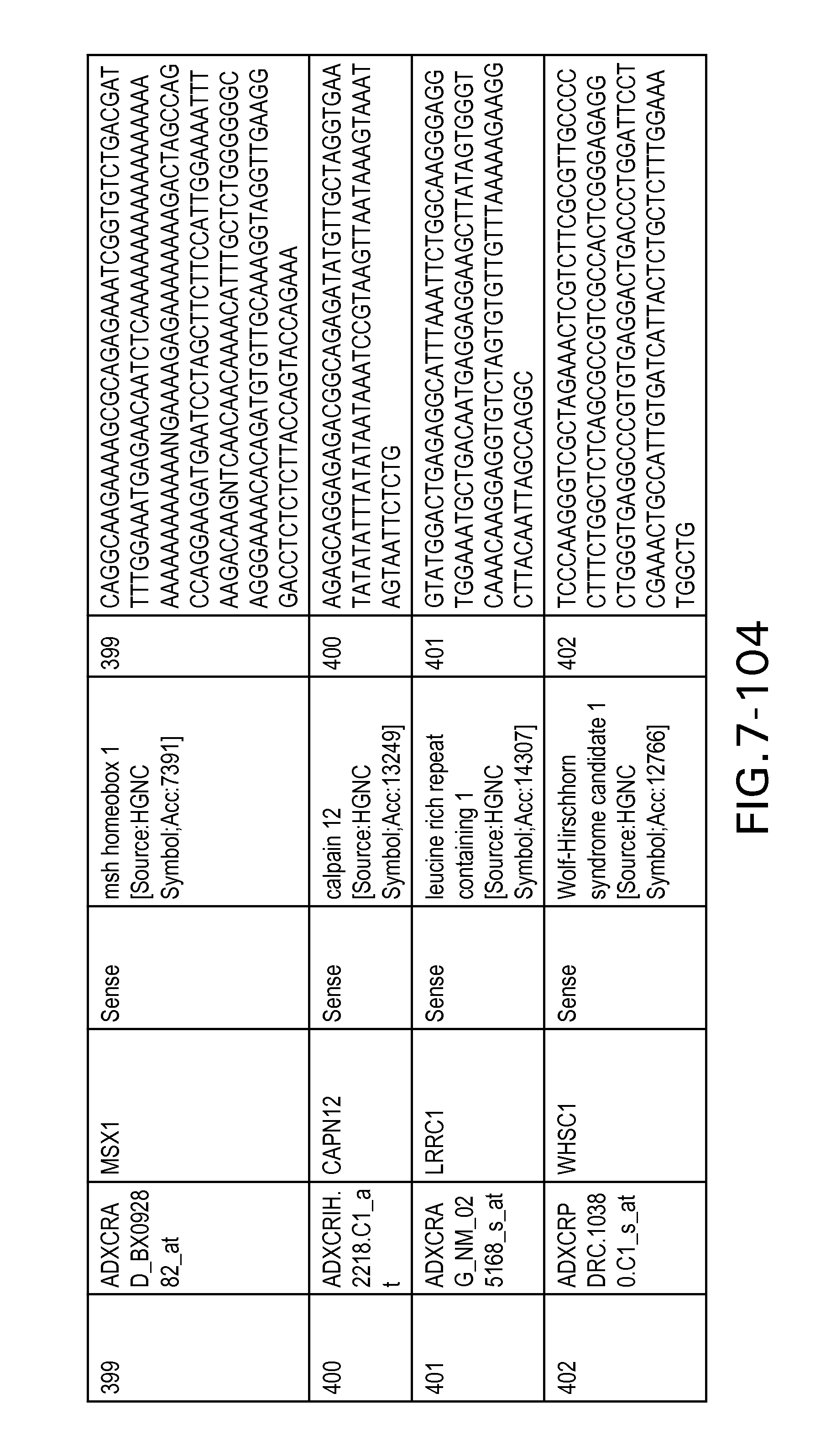
D00111
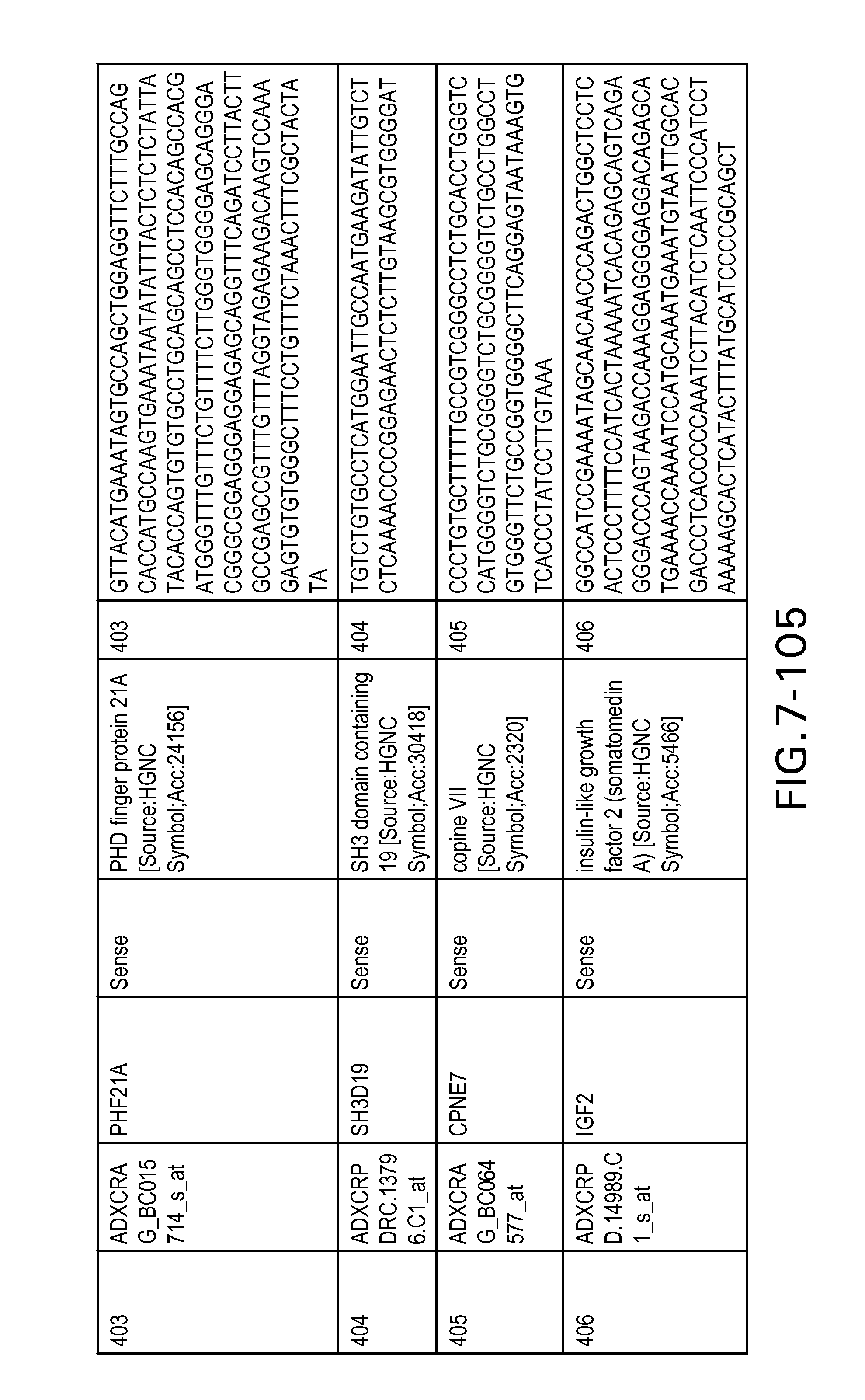
D00112
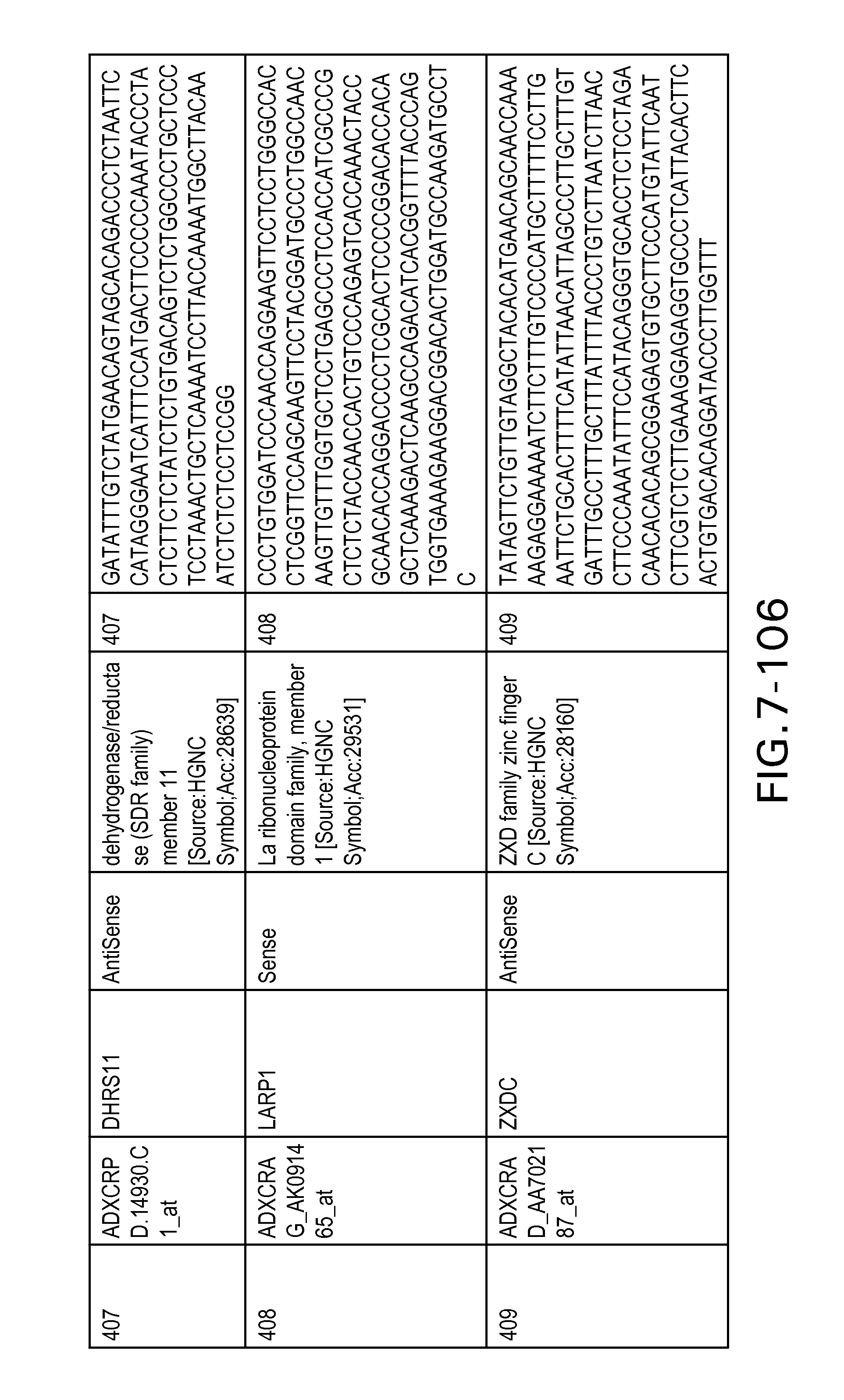
D00113

D00114

D00115
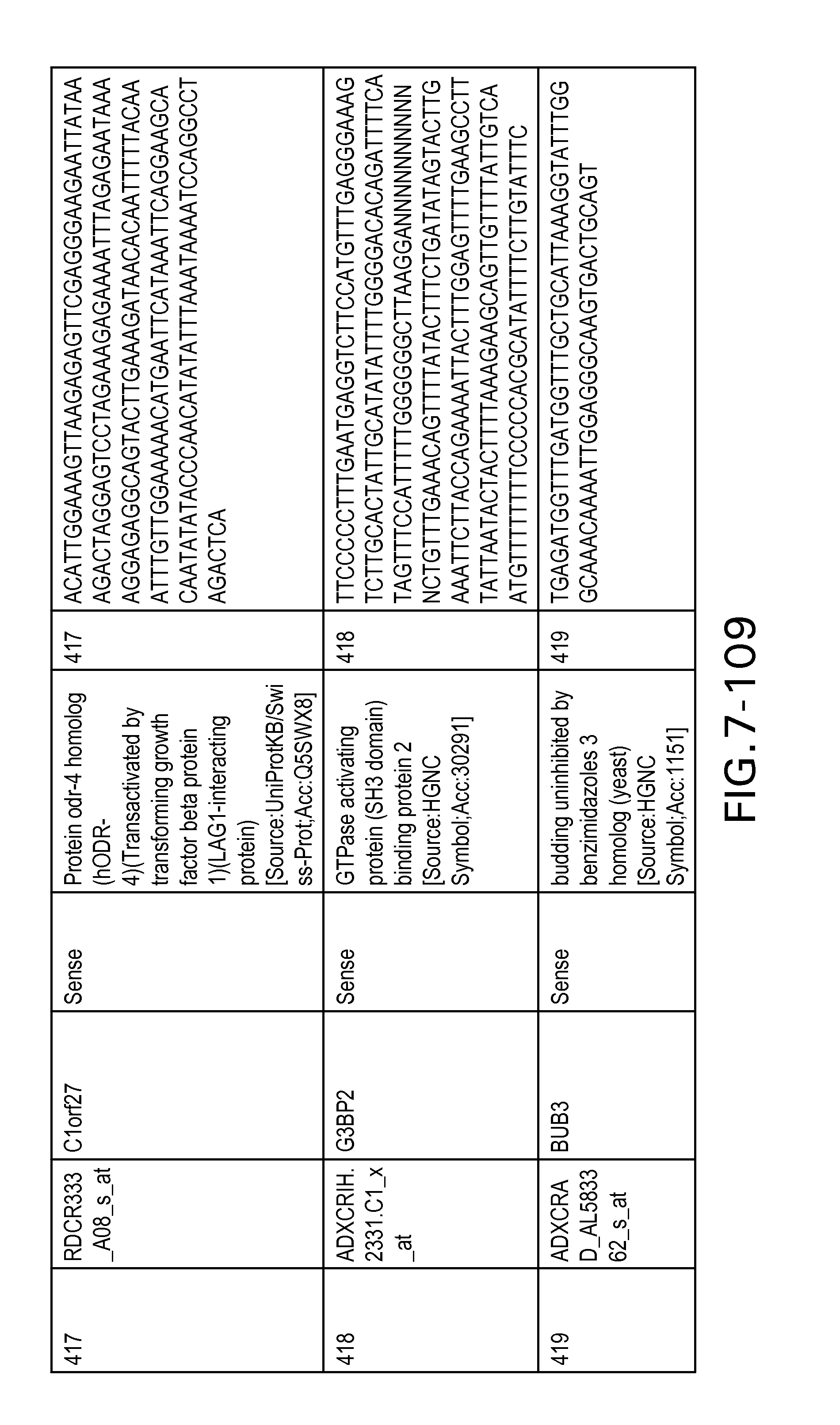
D00116
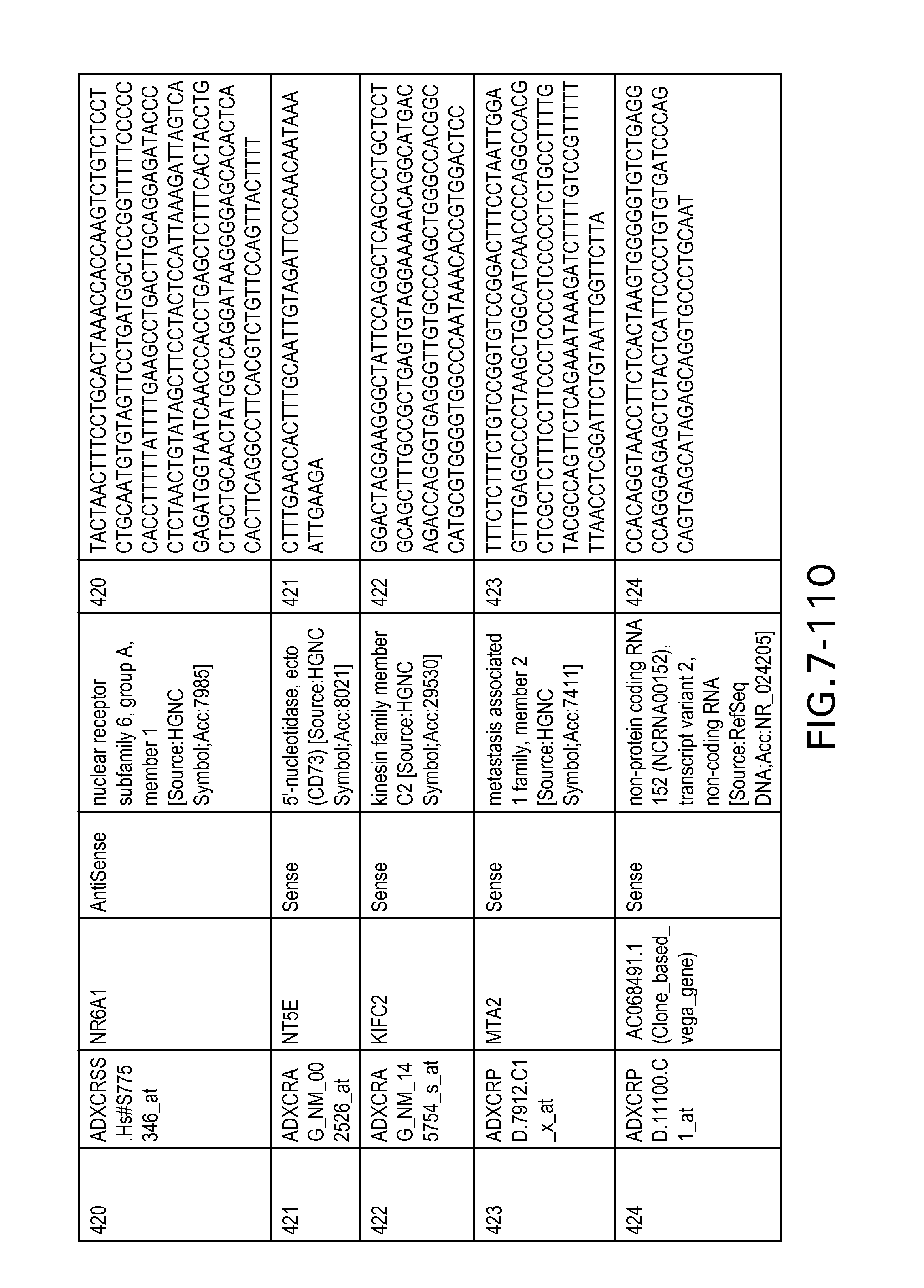
D00117
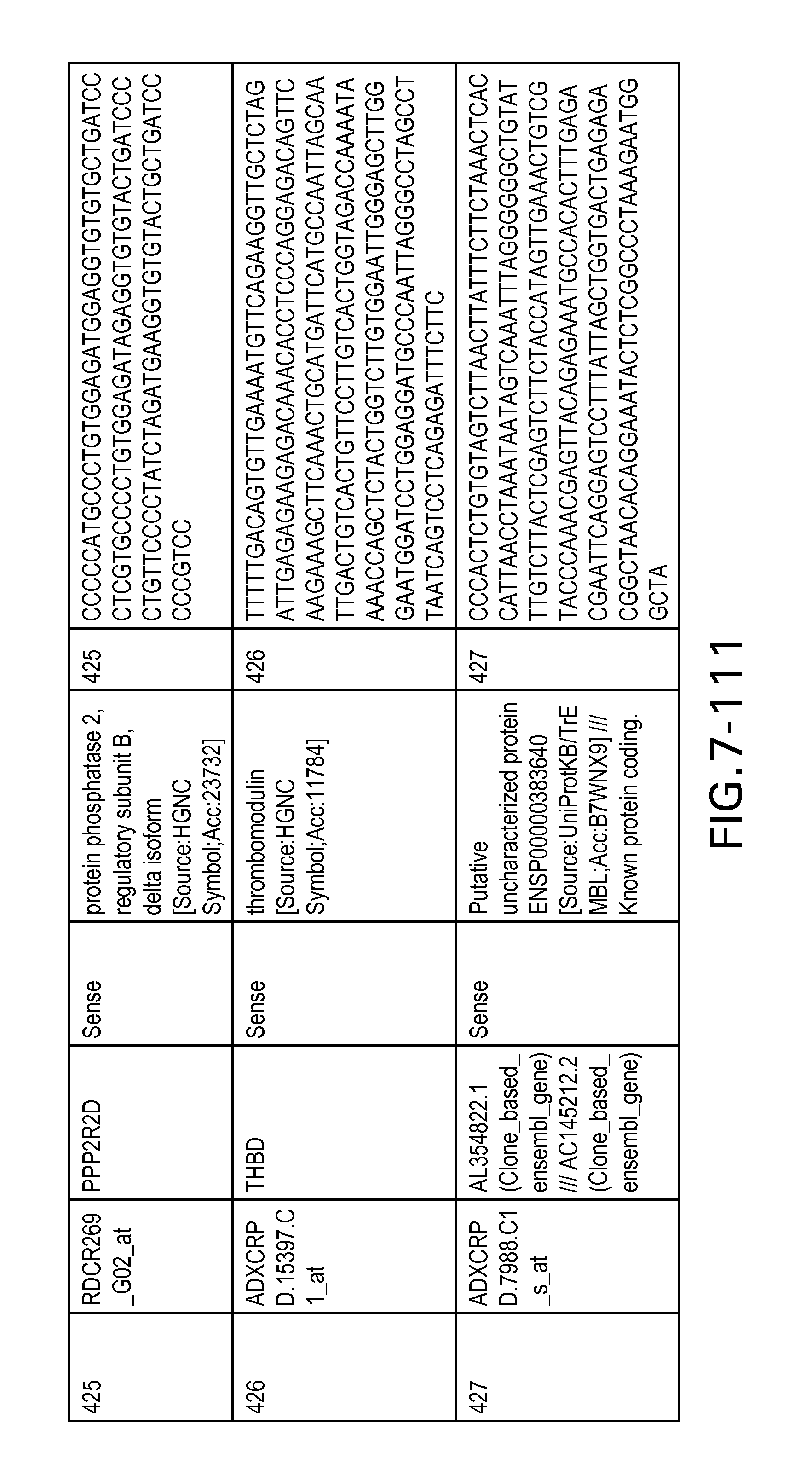
D00118
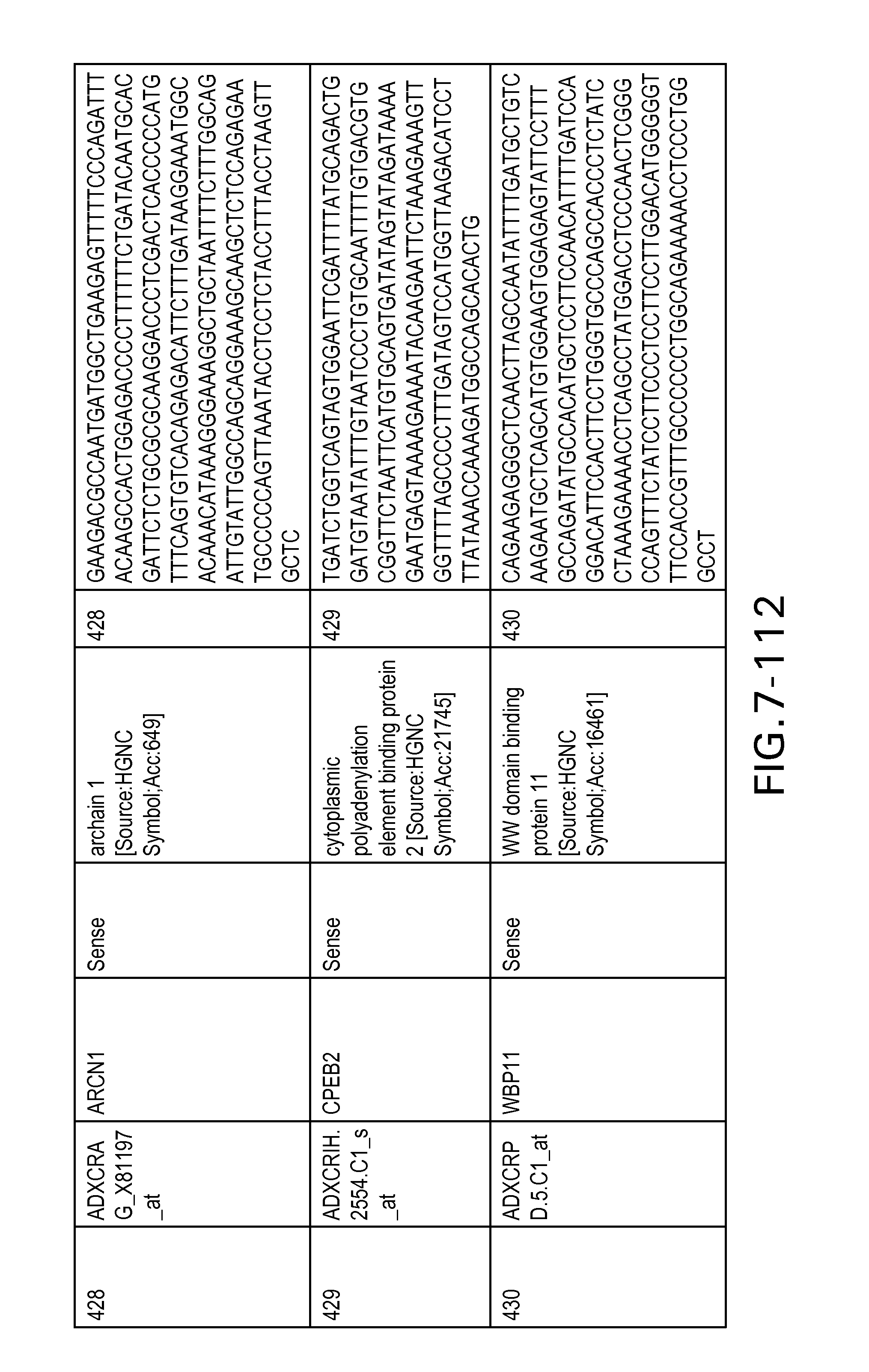
D00119
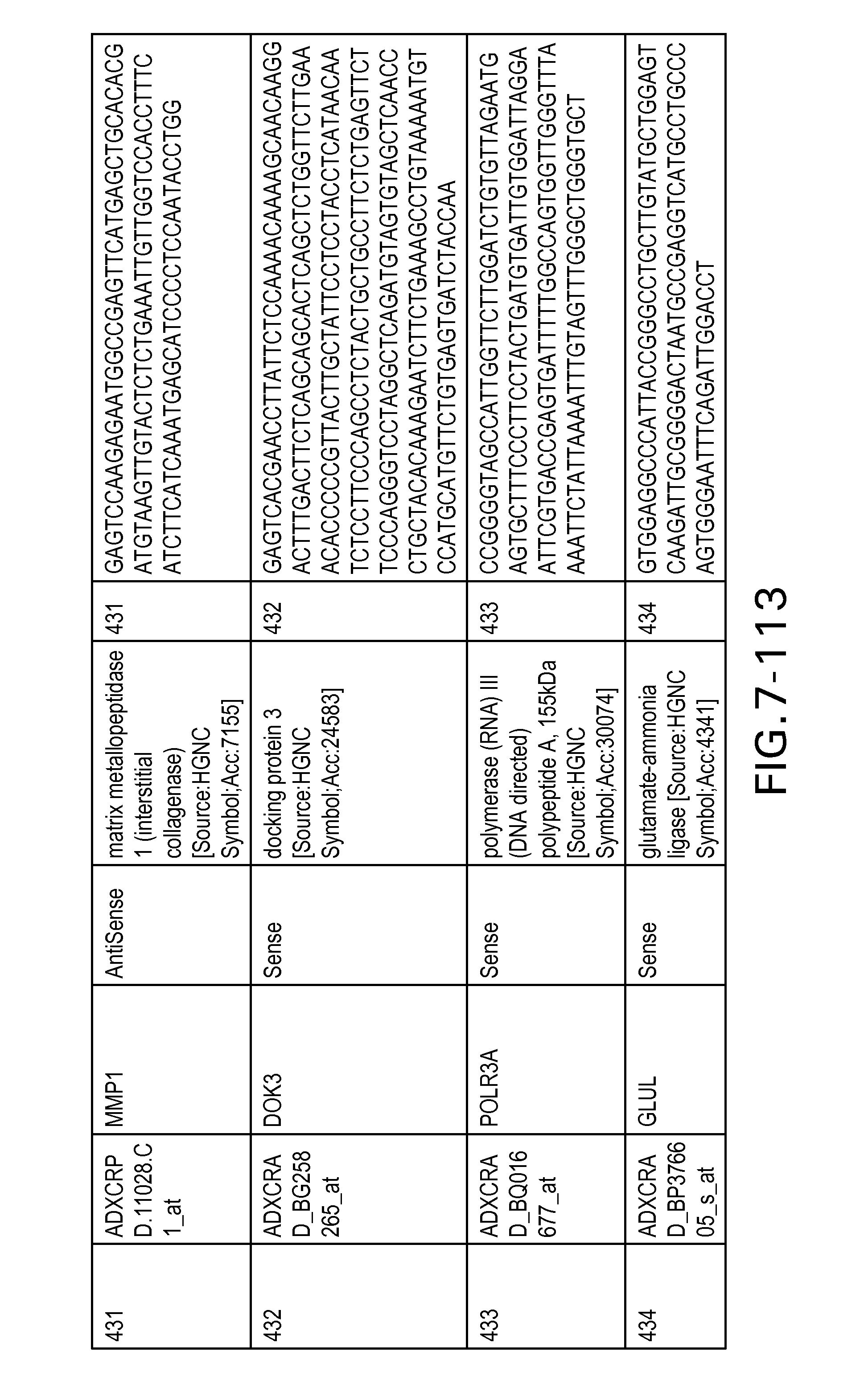
D00120
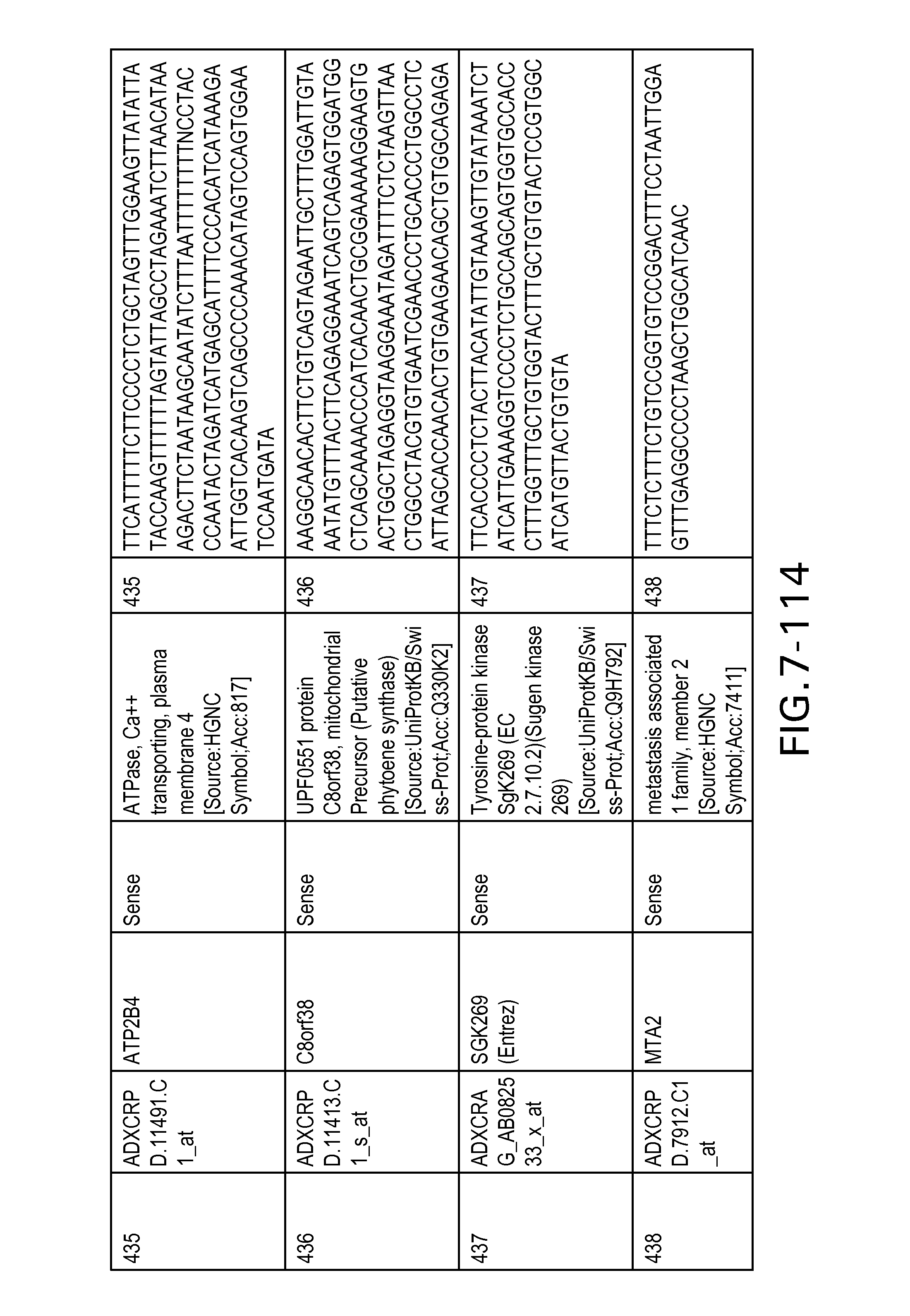
D00121
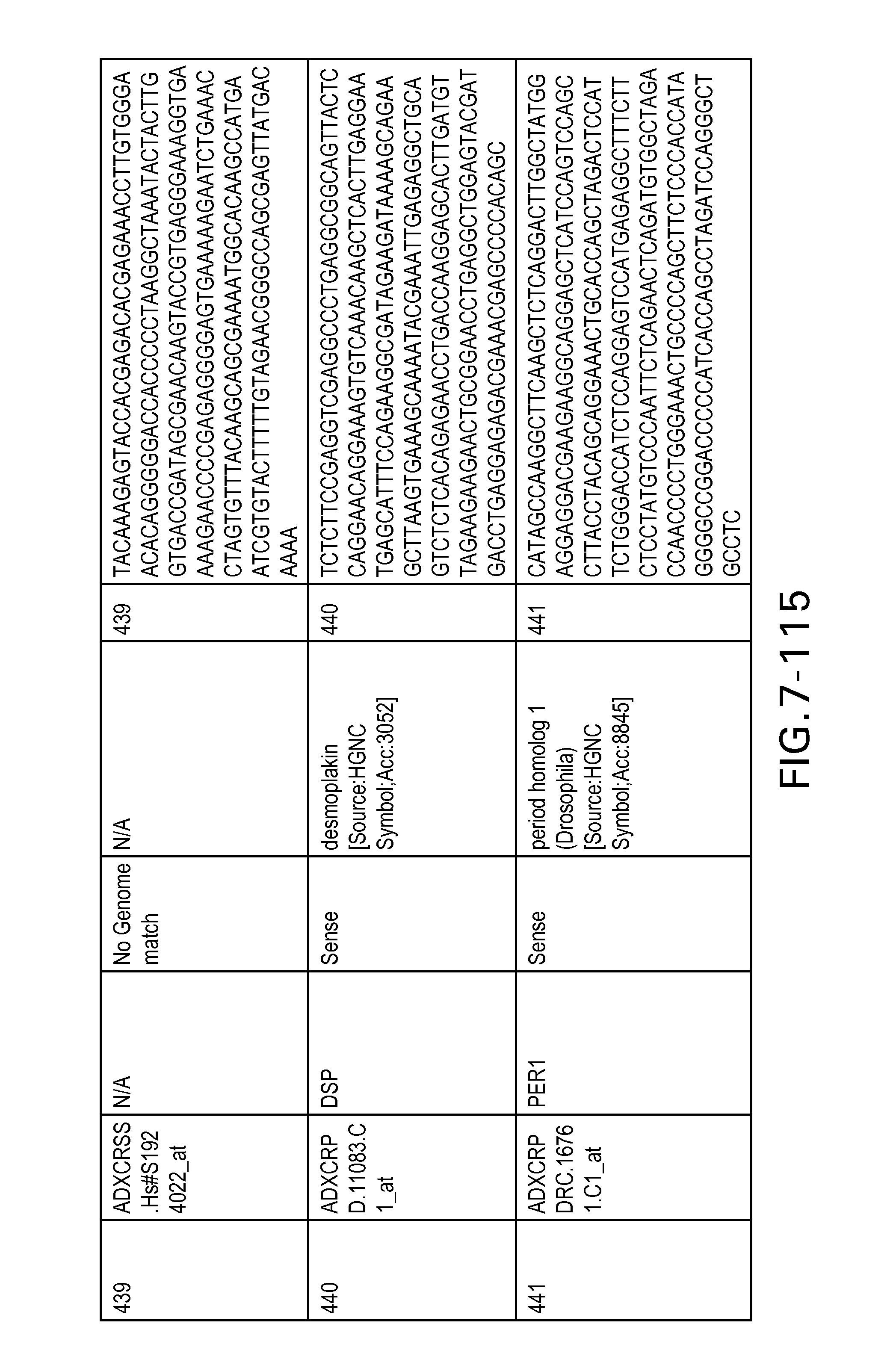
D00122
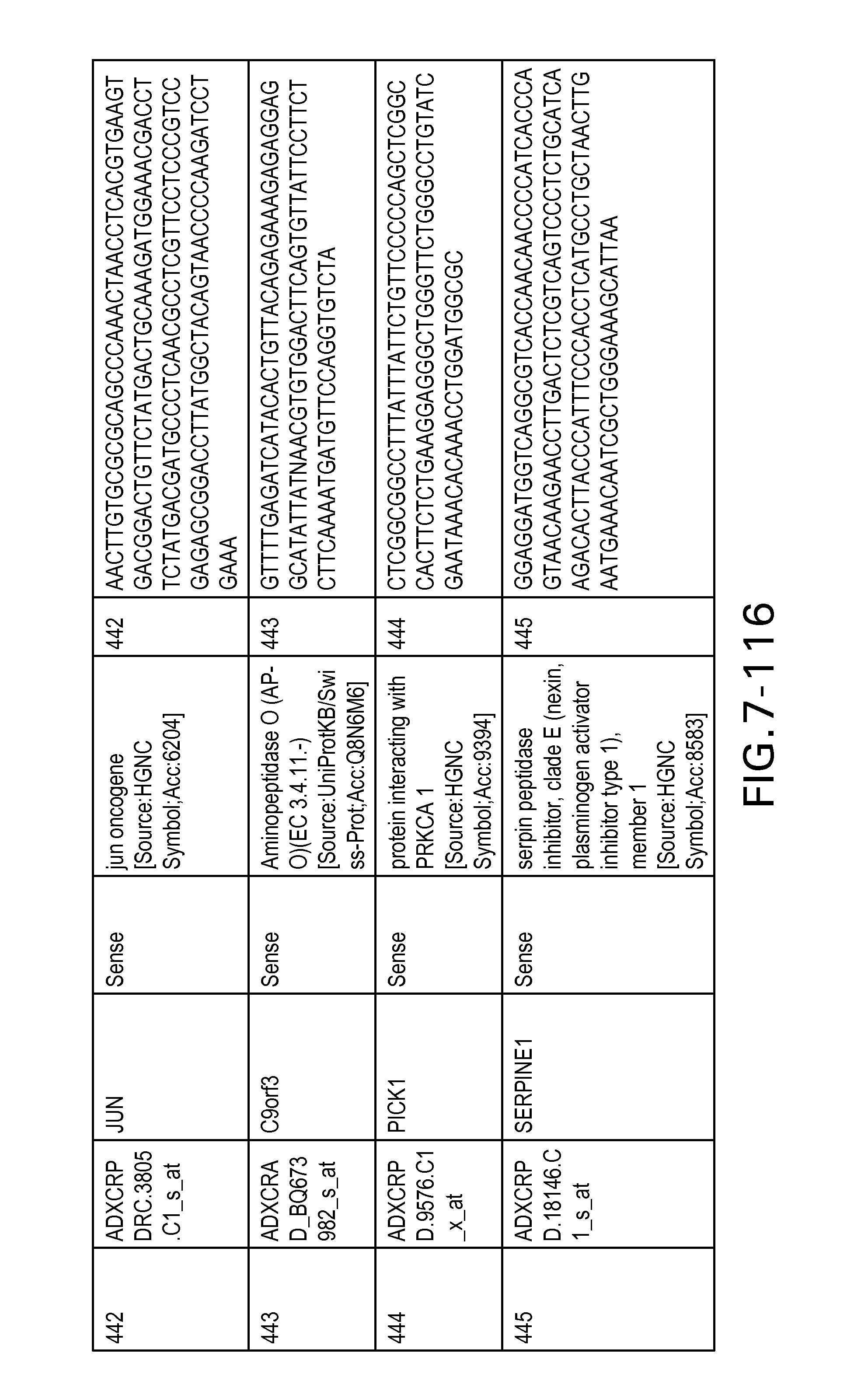
D00123
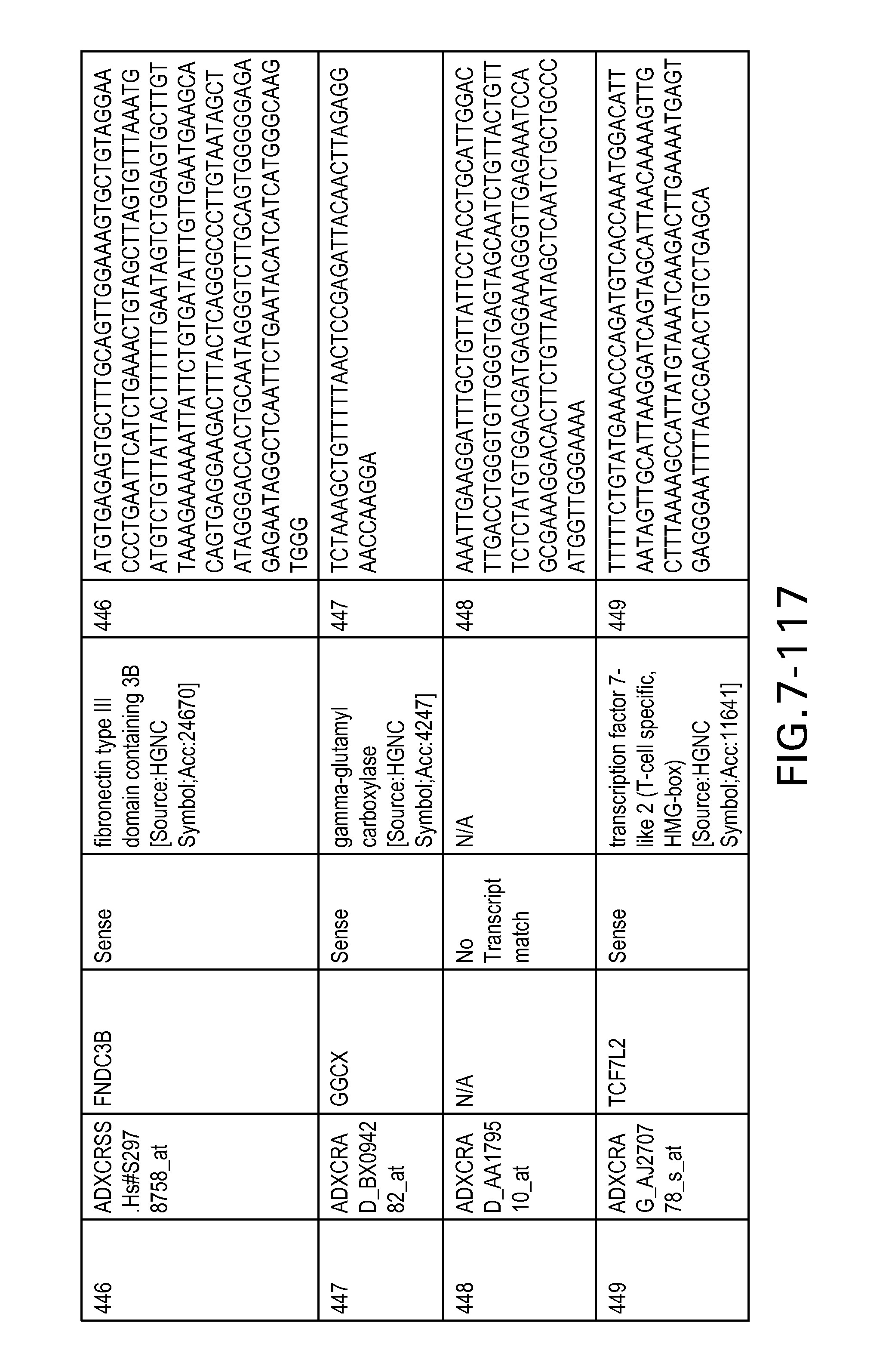
D00124
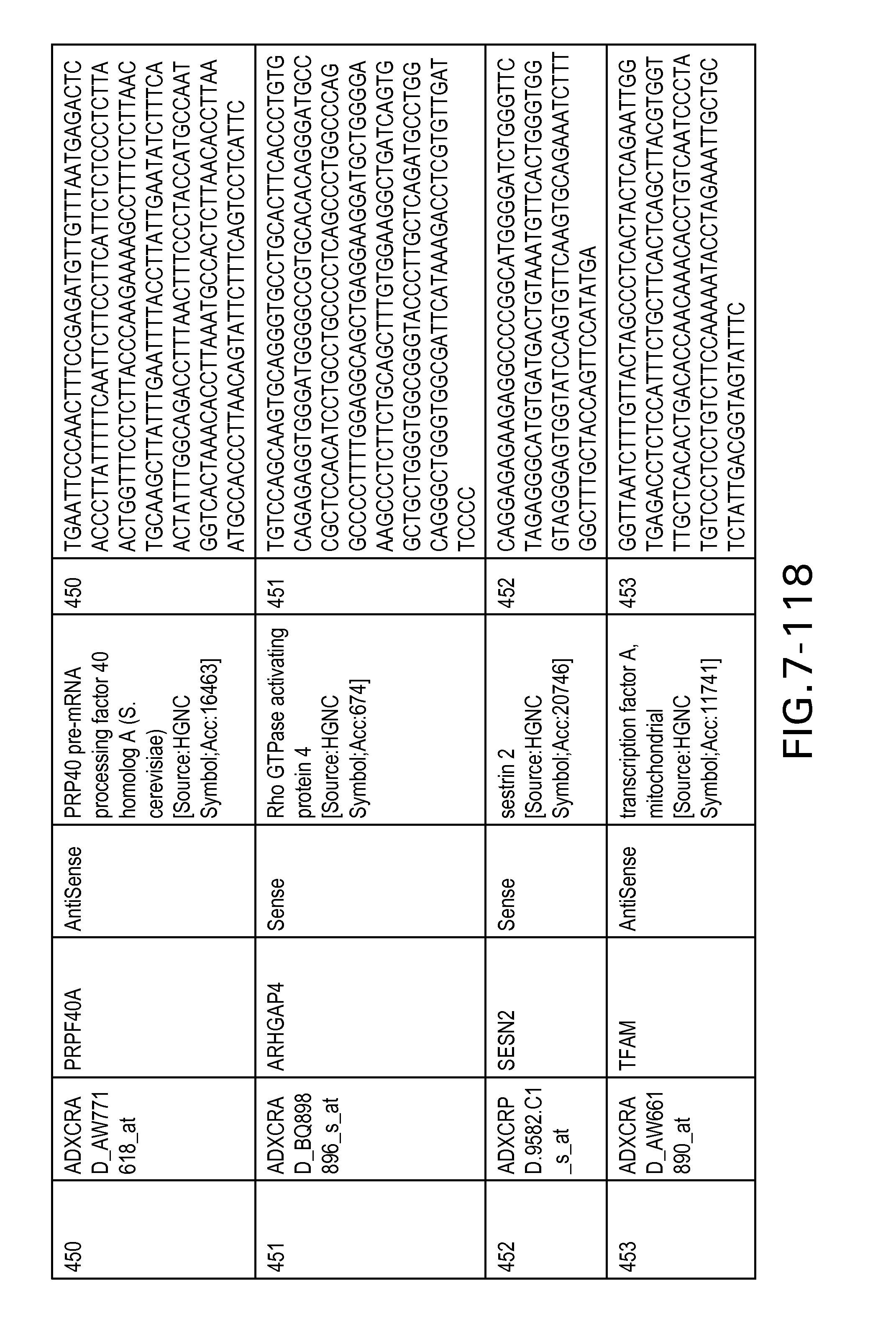
D00125
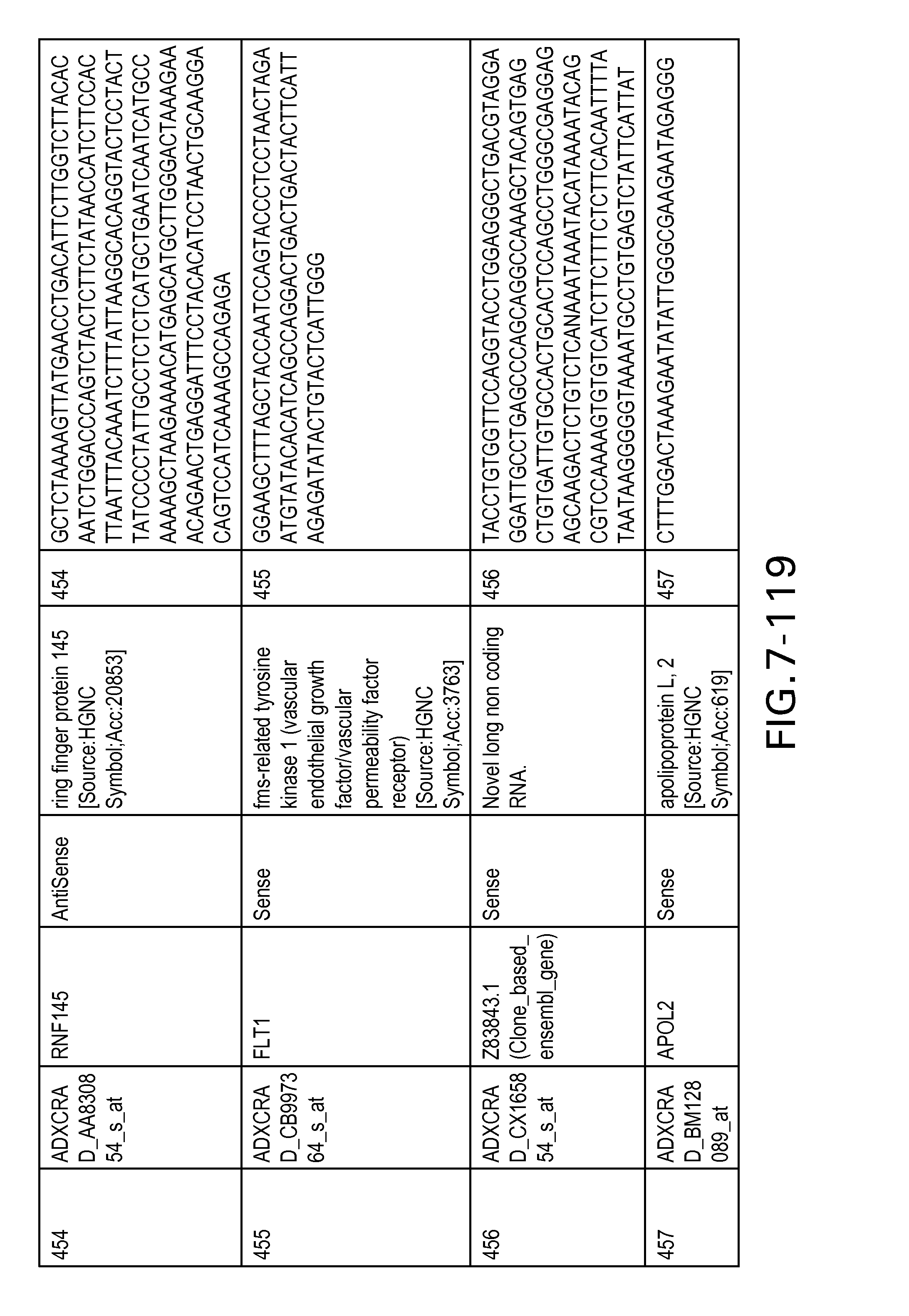
D00126
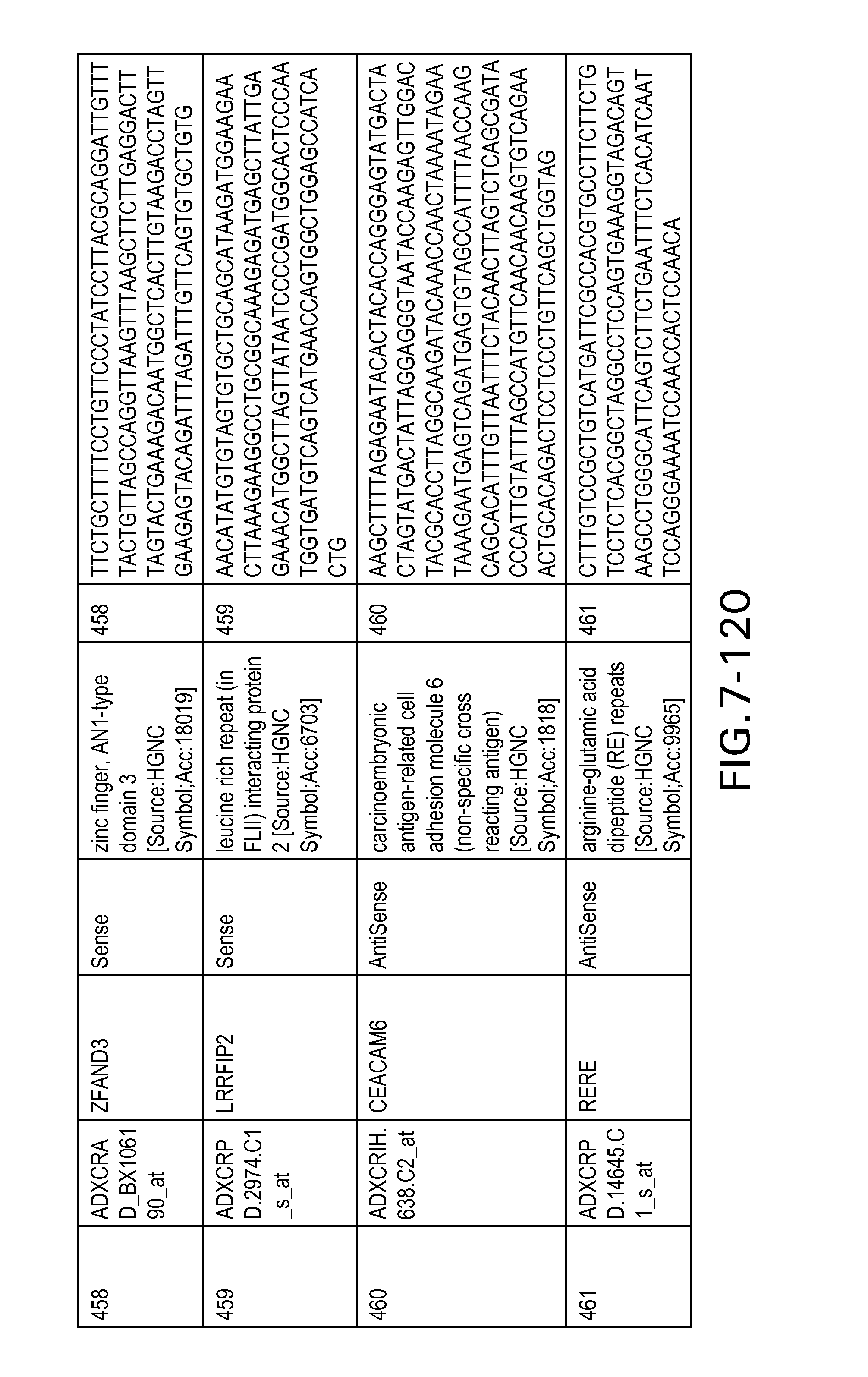
D00127
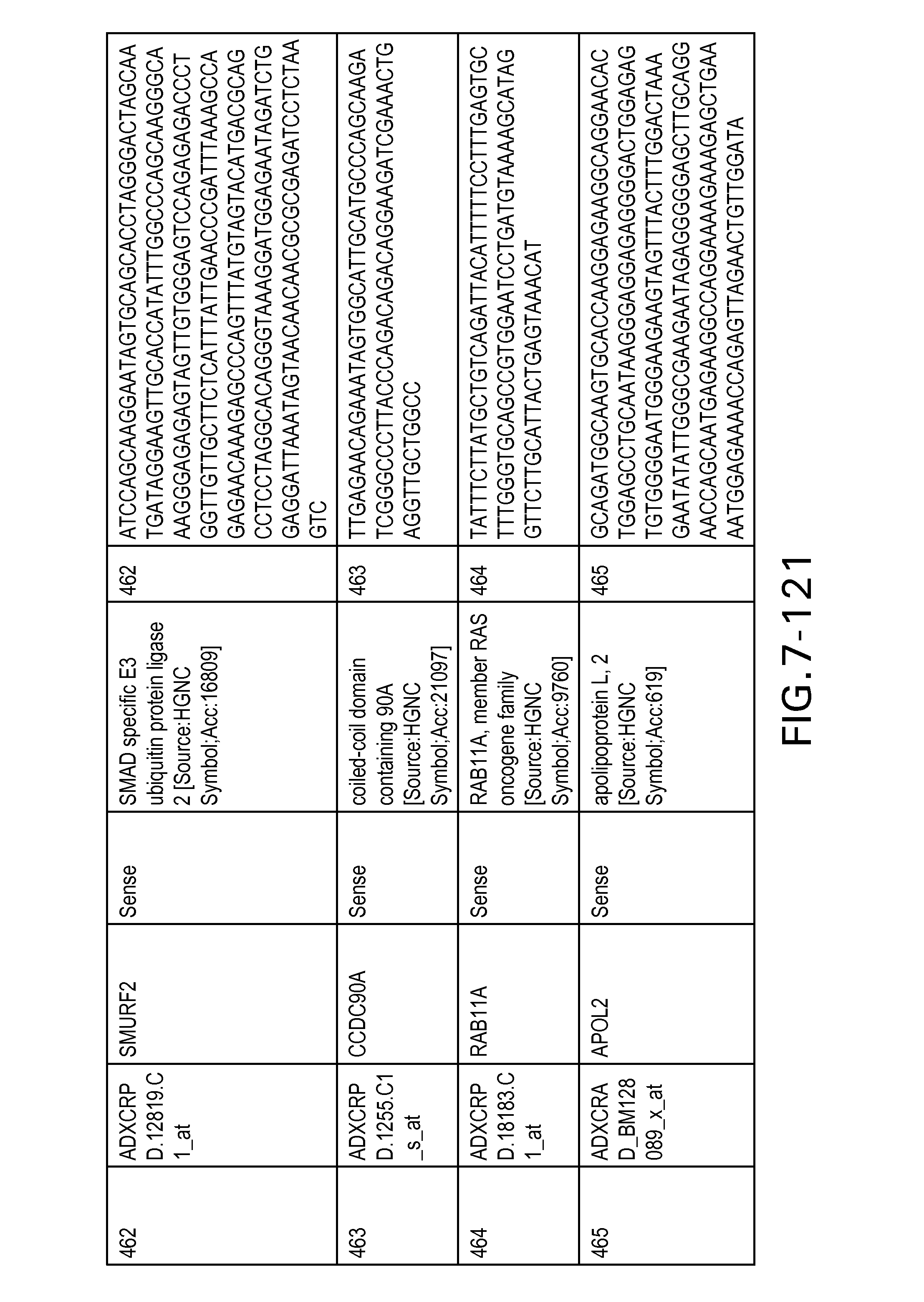
D00128
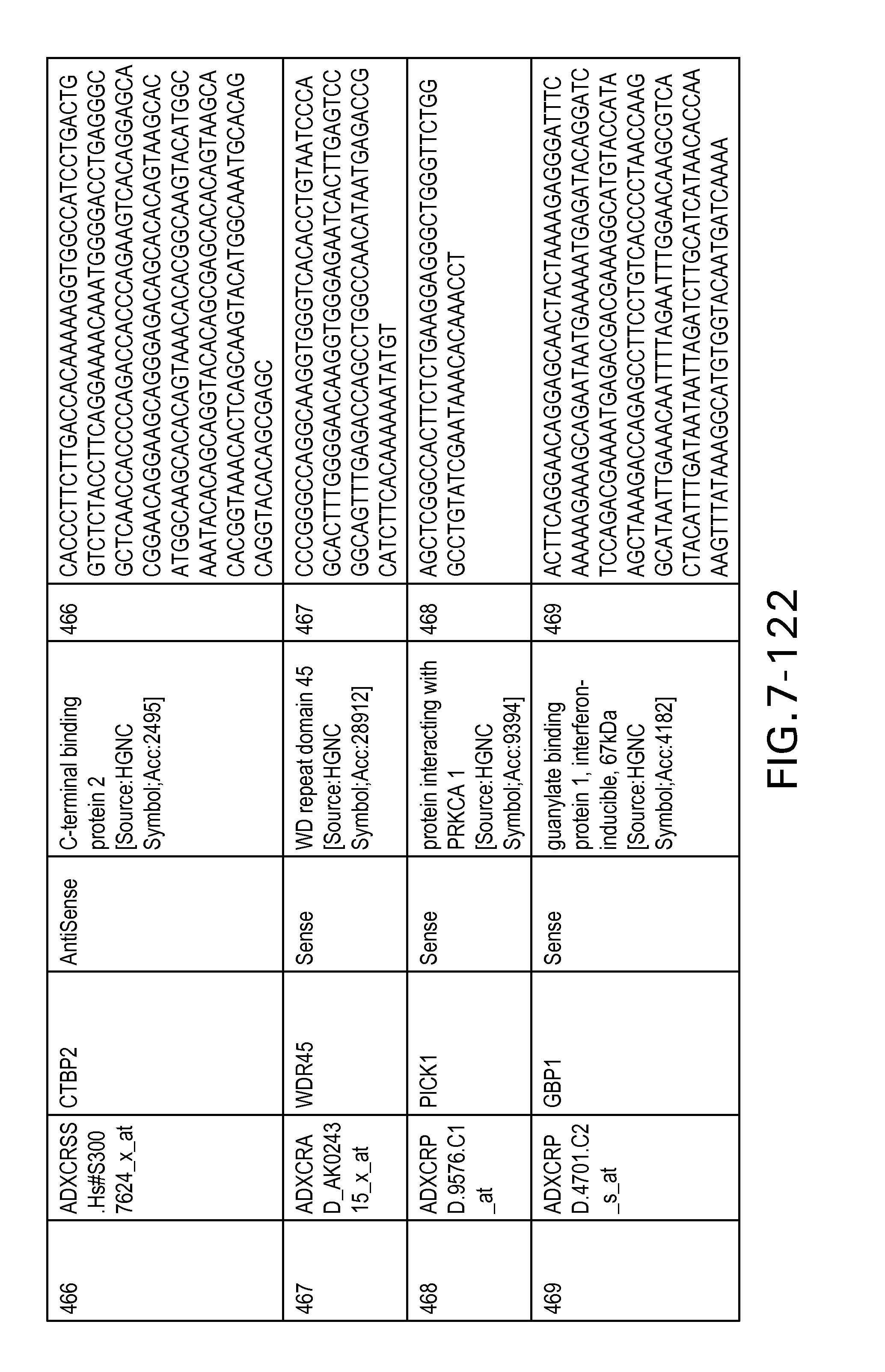
D00129

D00130
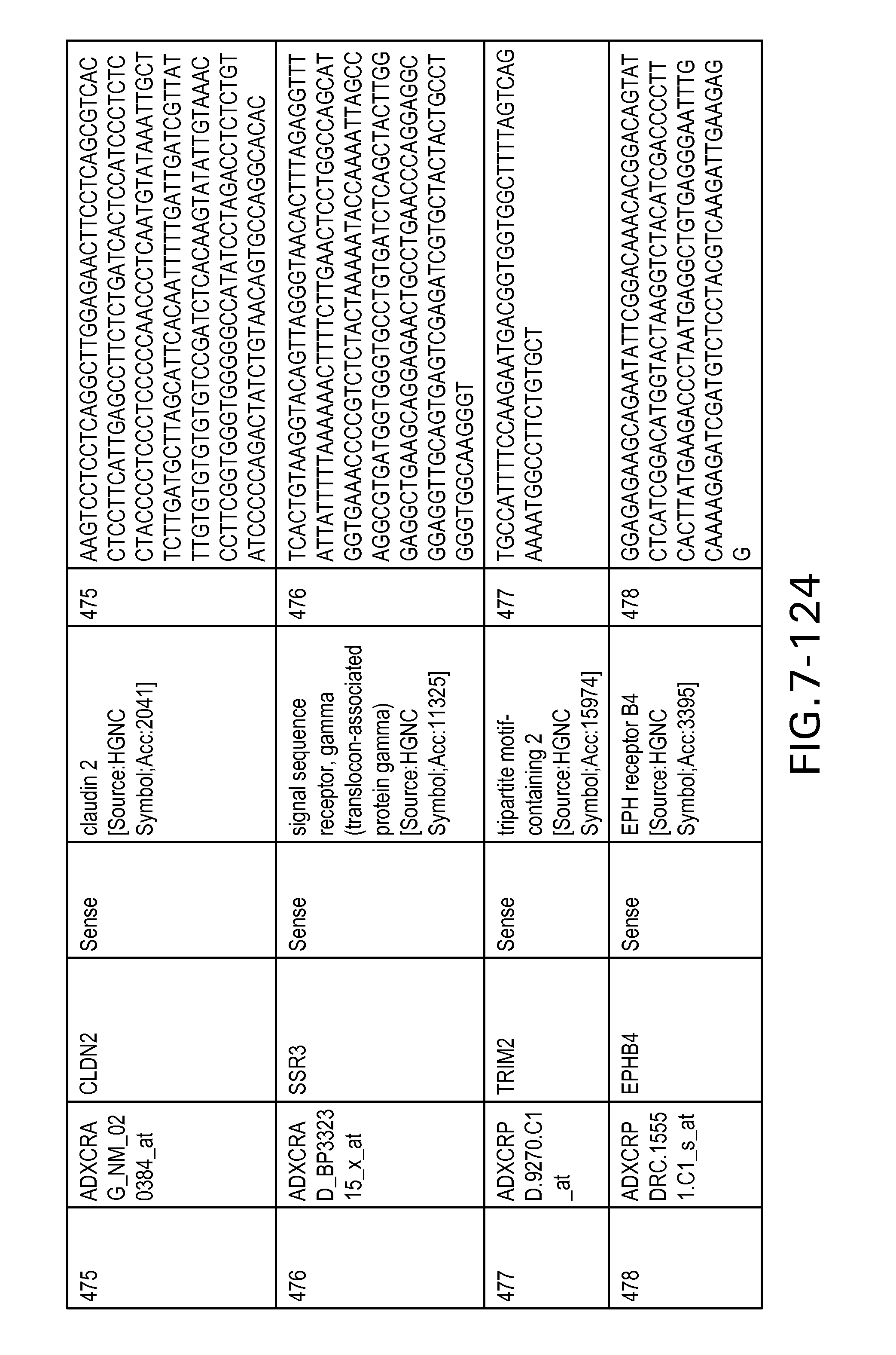
D00131
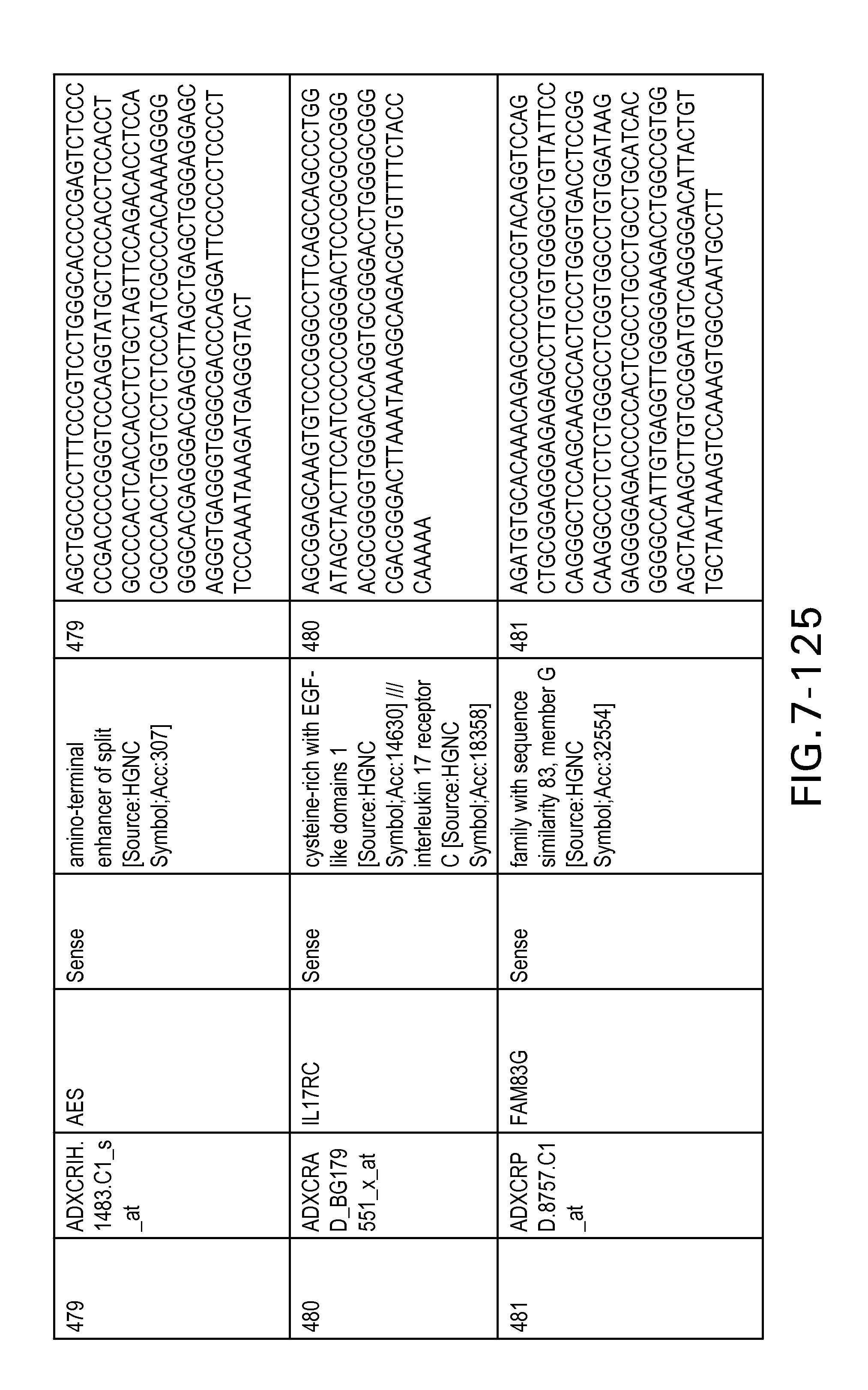
D00132
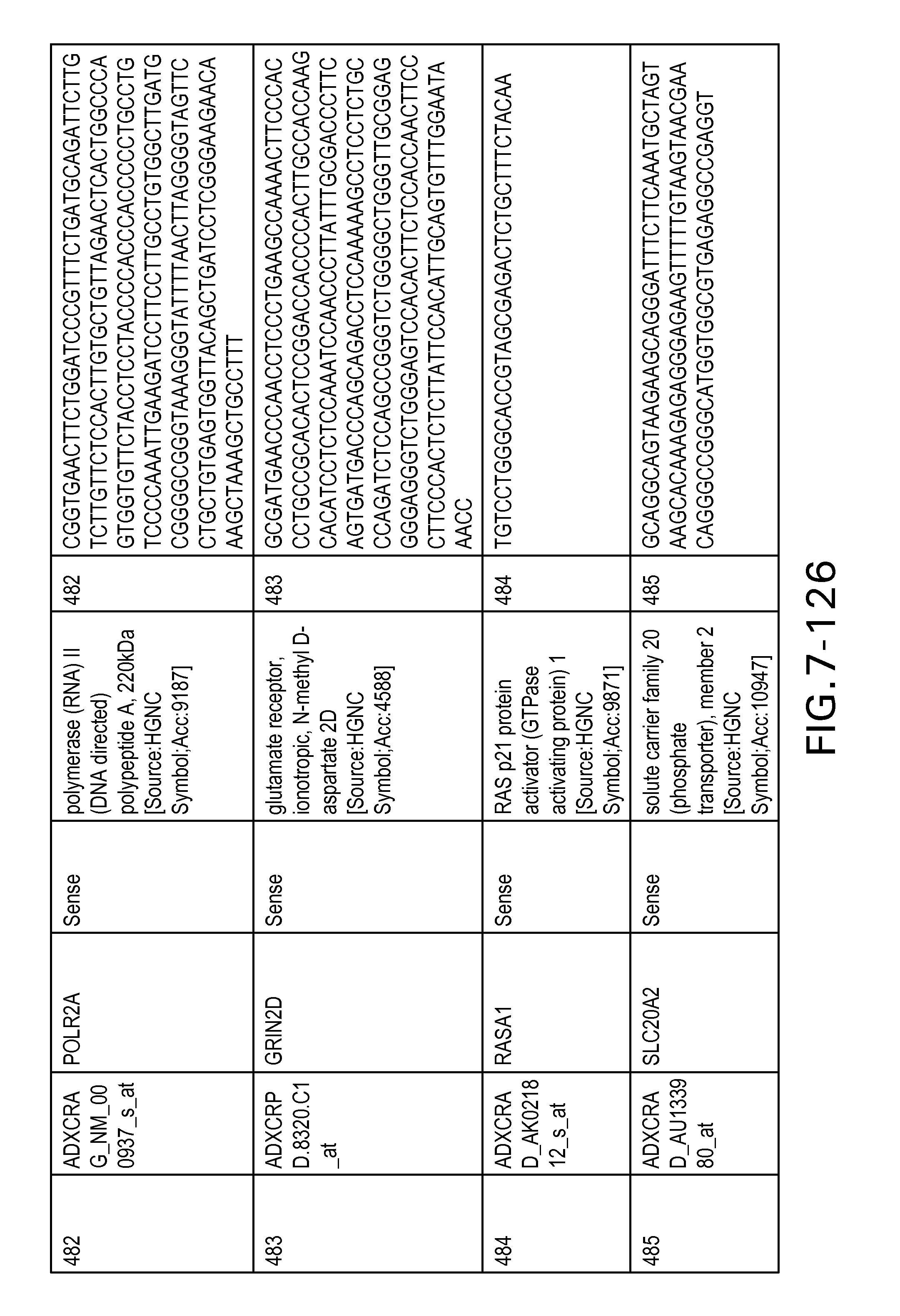
D00133
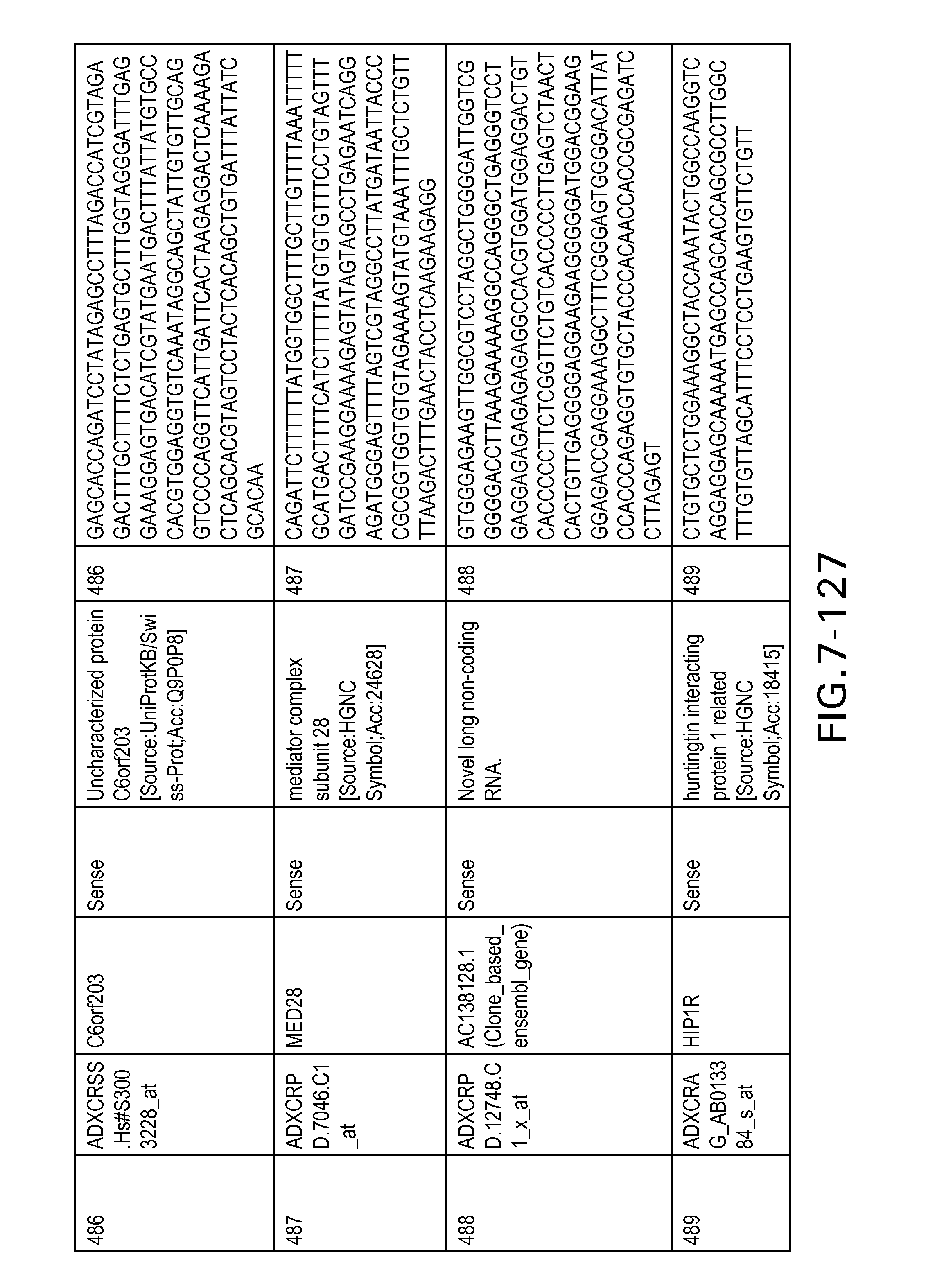
D00134
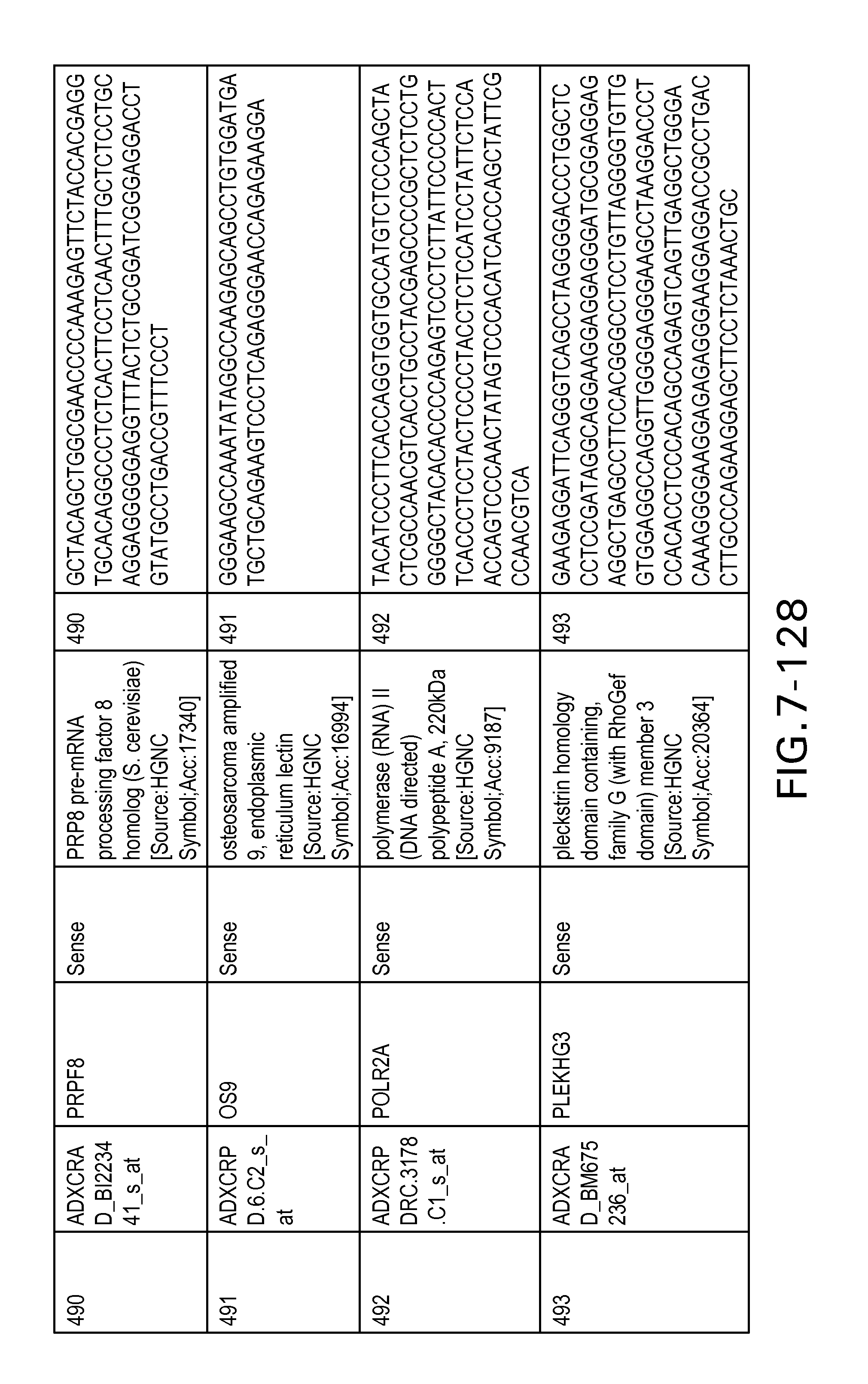
D00135
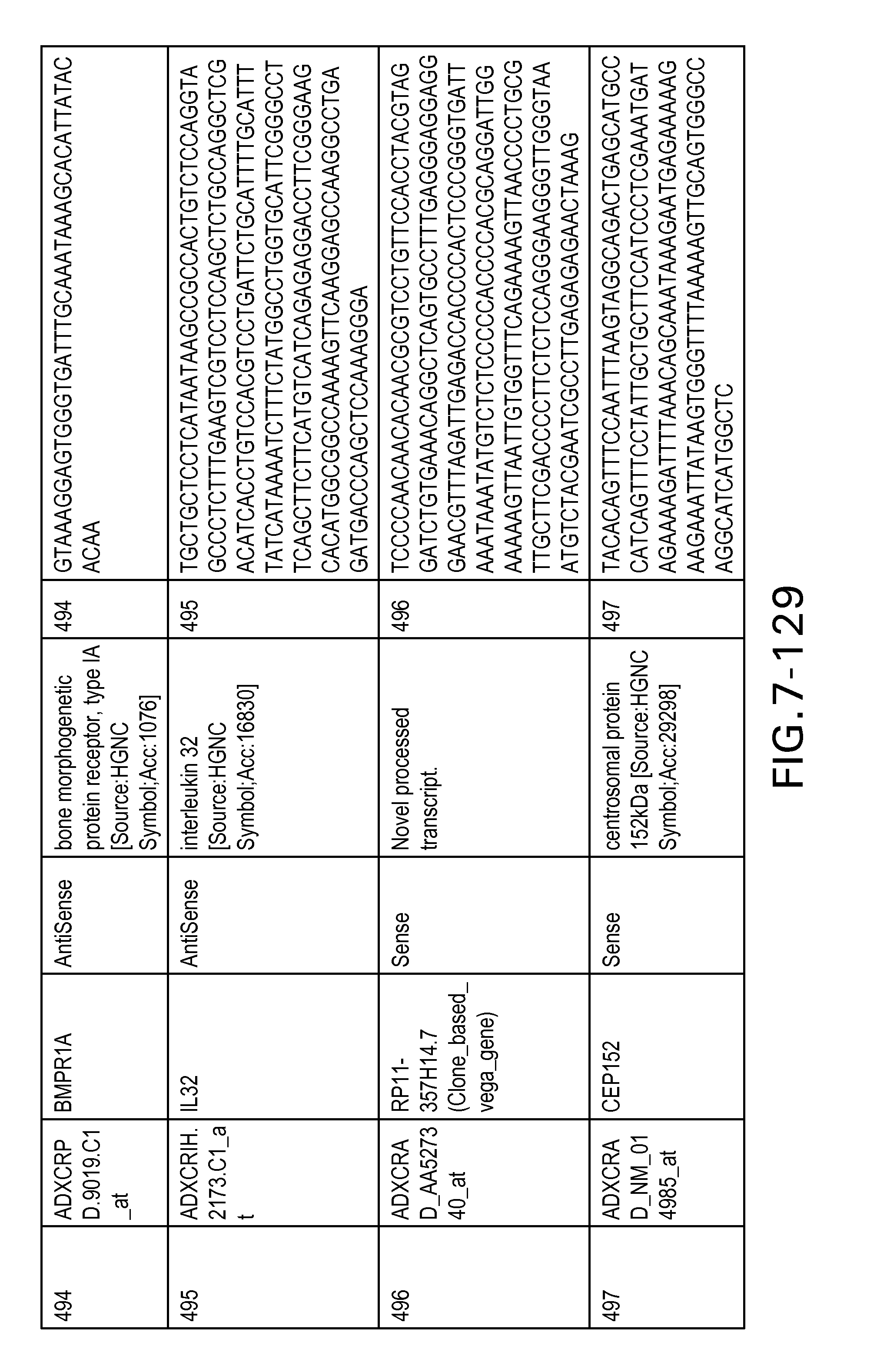
D00136
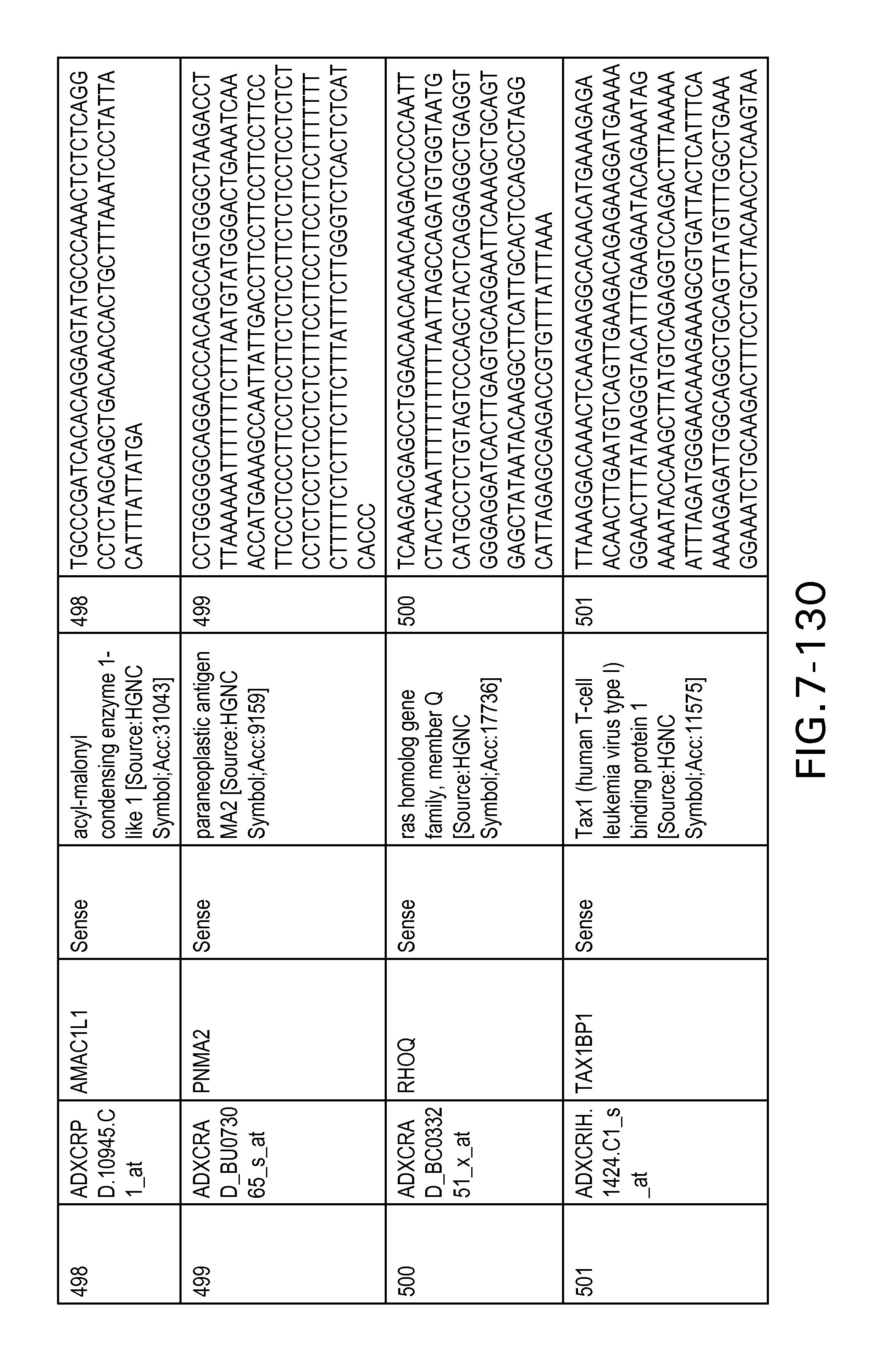
D00137
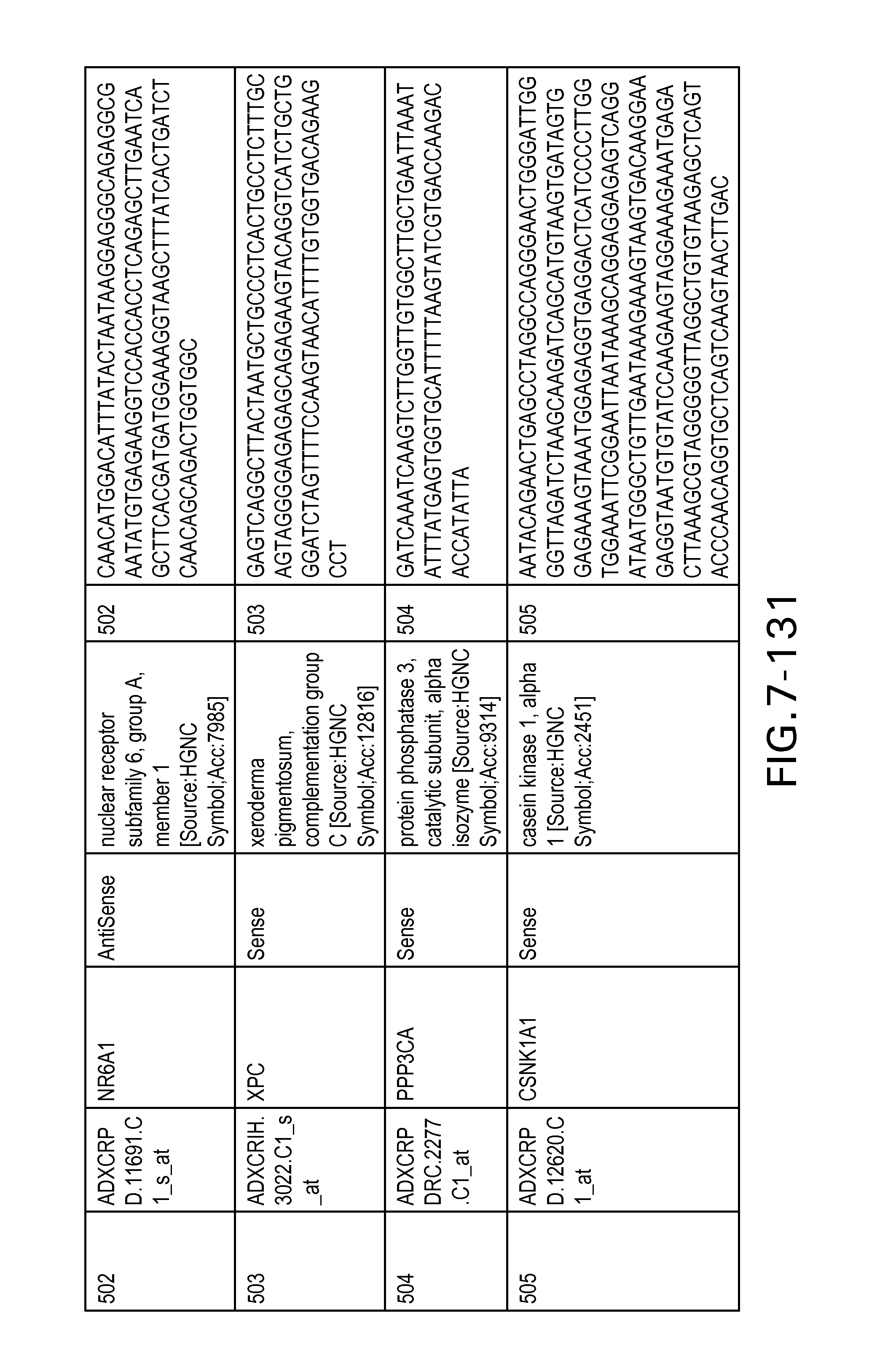
D00138
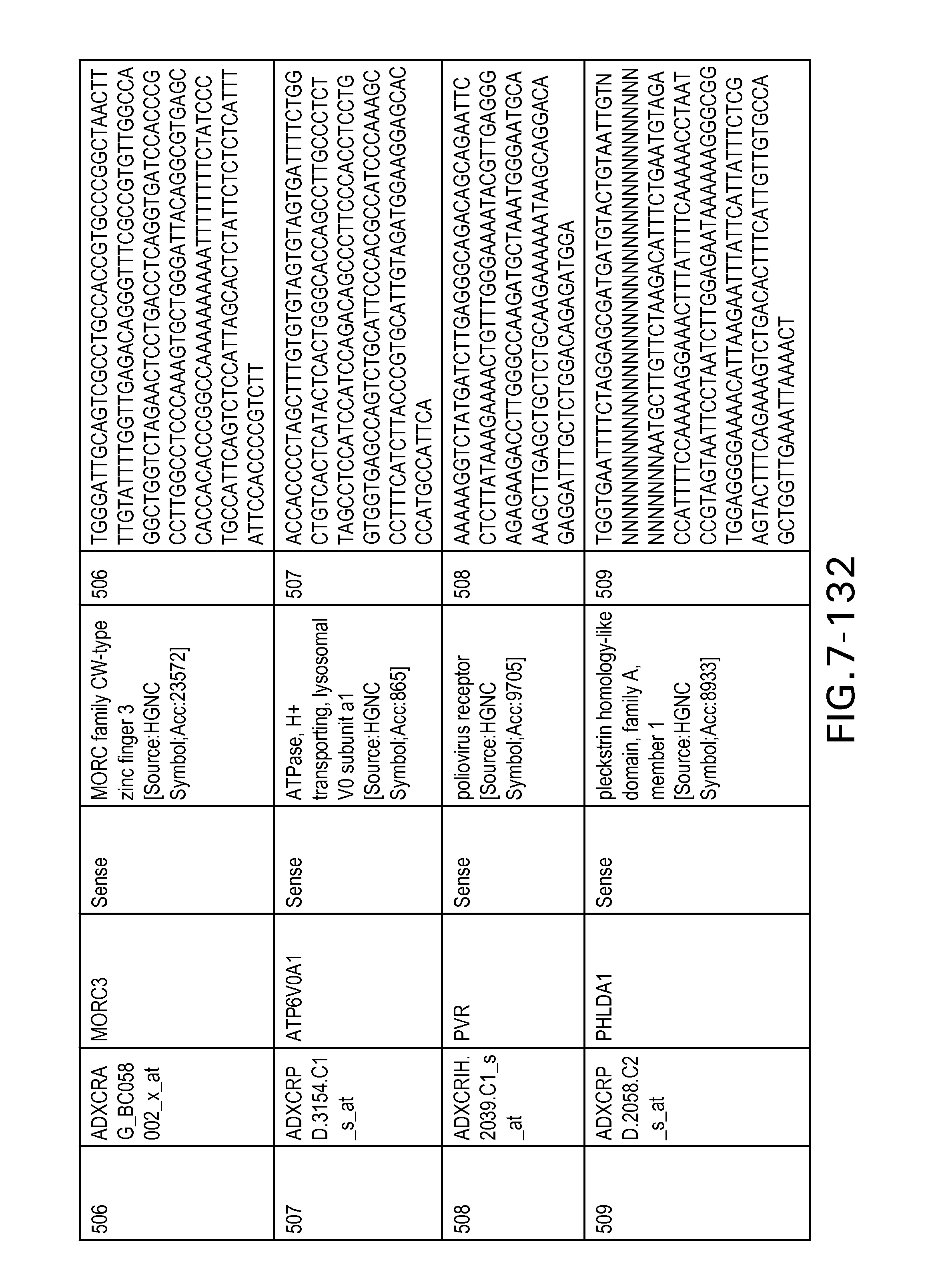
D00139
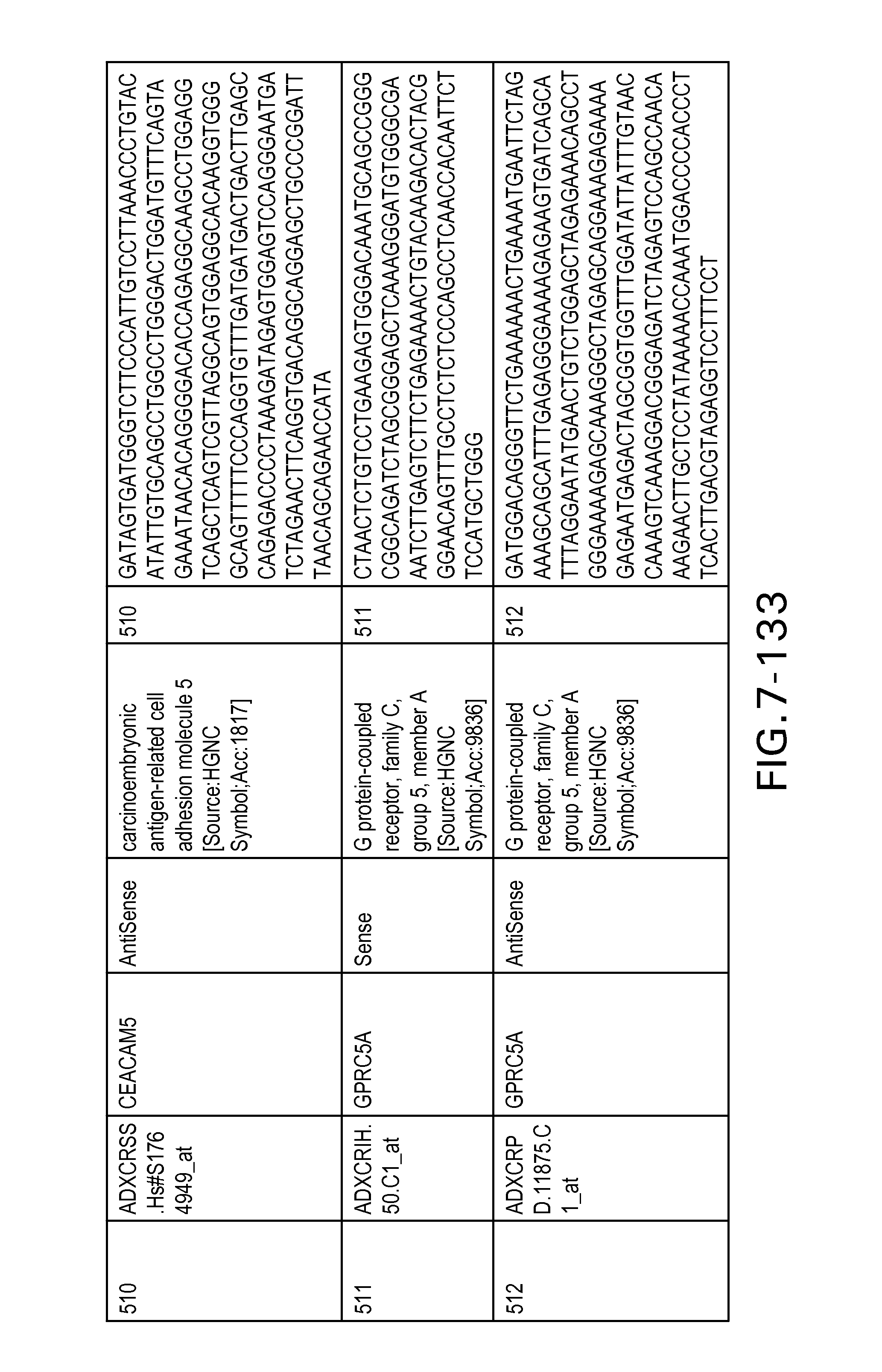
D00140
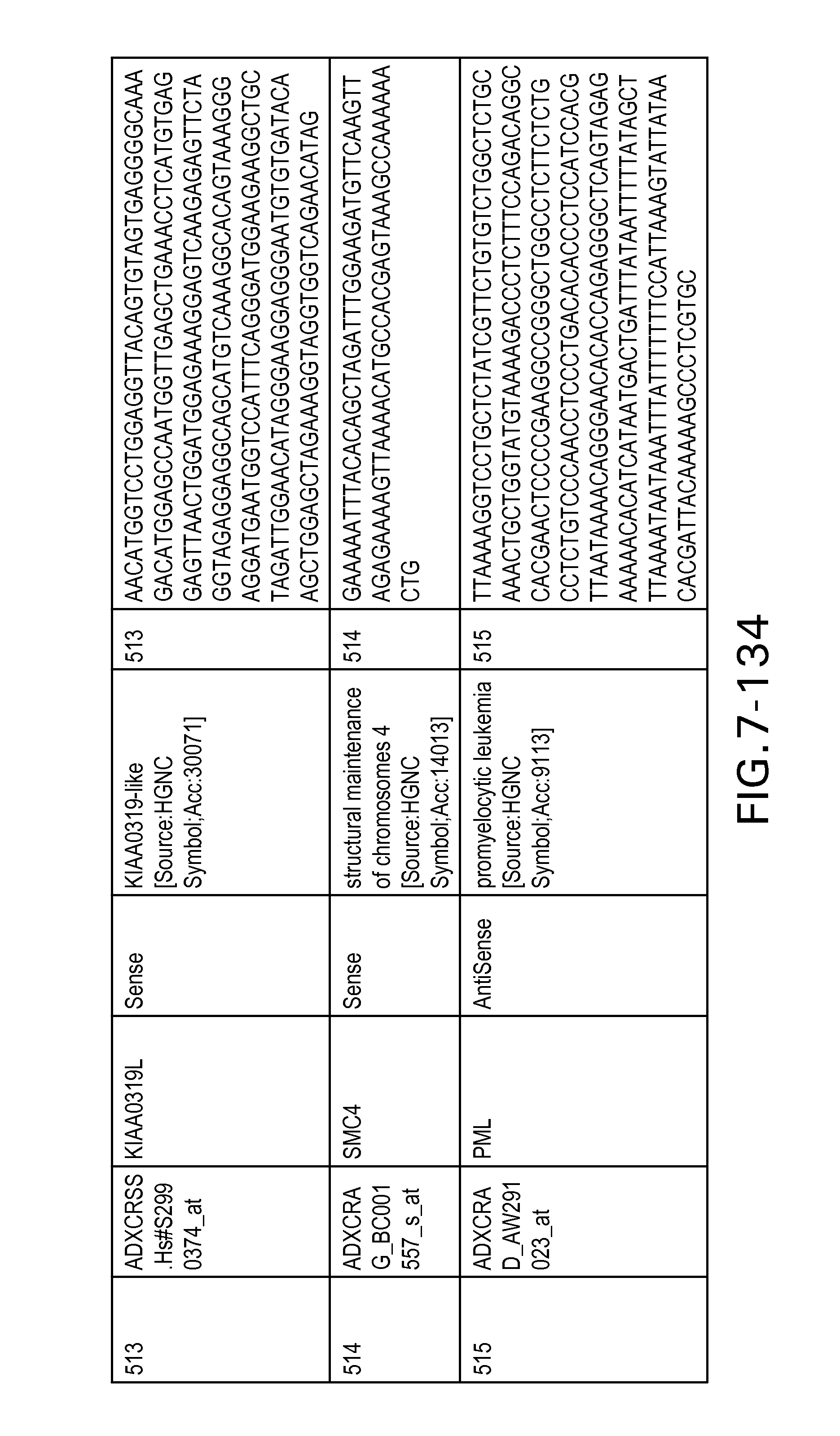
D00141
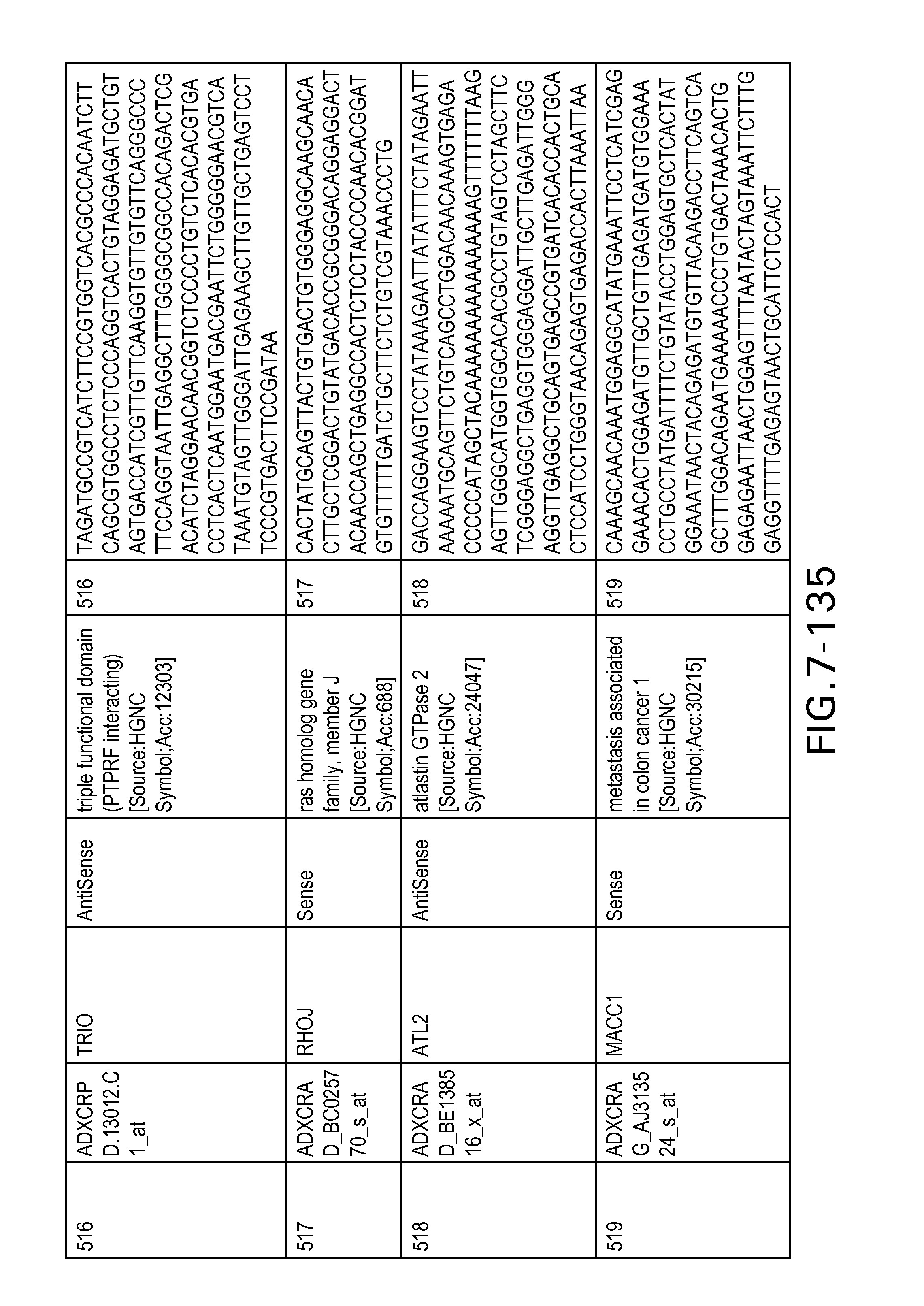
D00142
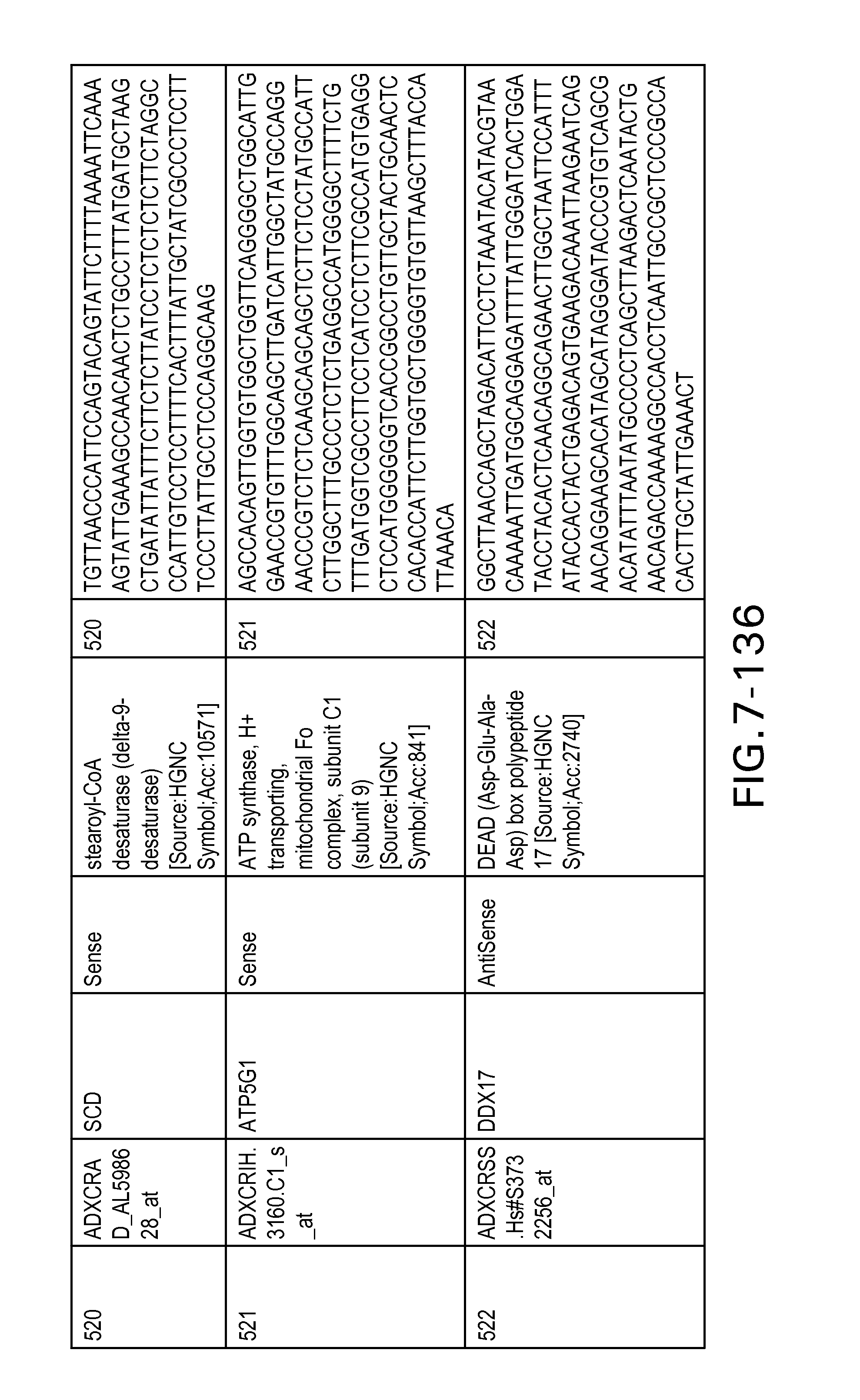
D00143

D00144
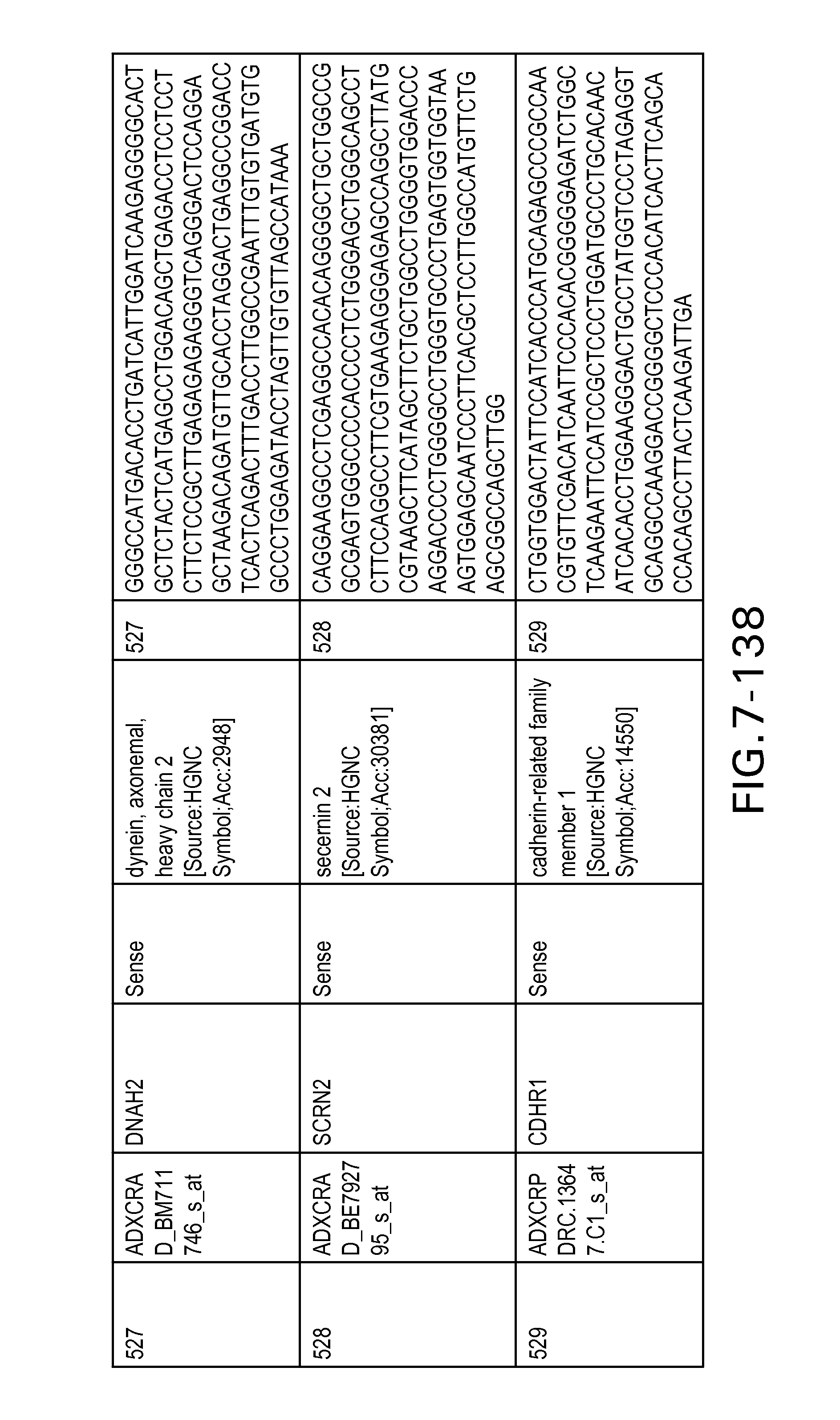
D00145
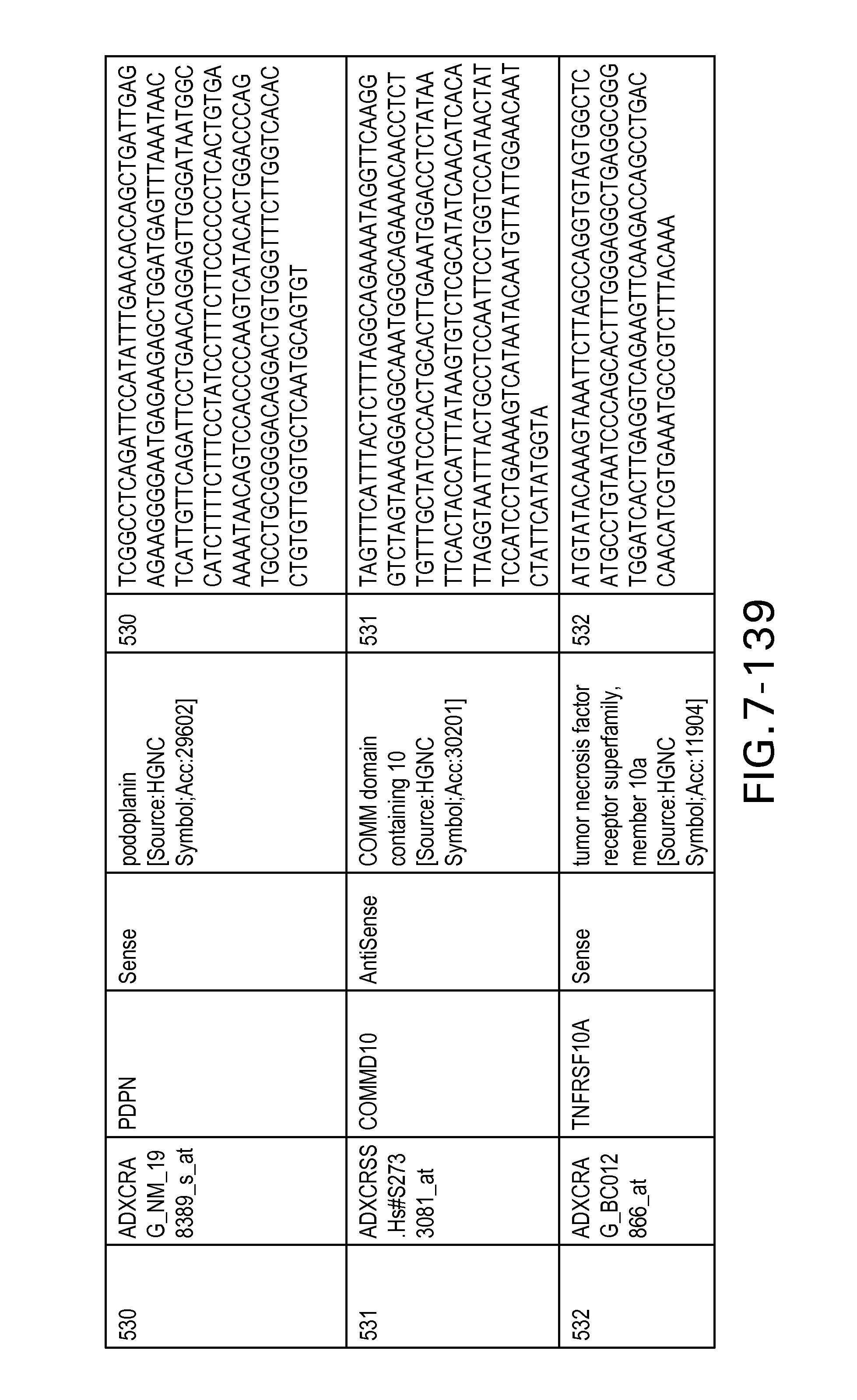
D00146
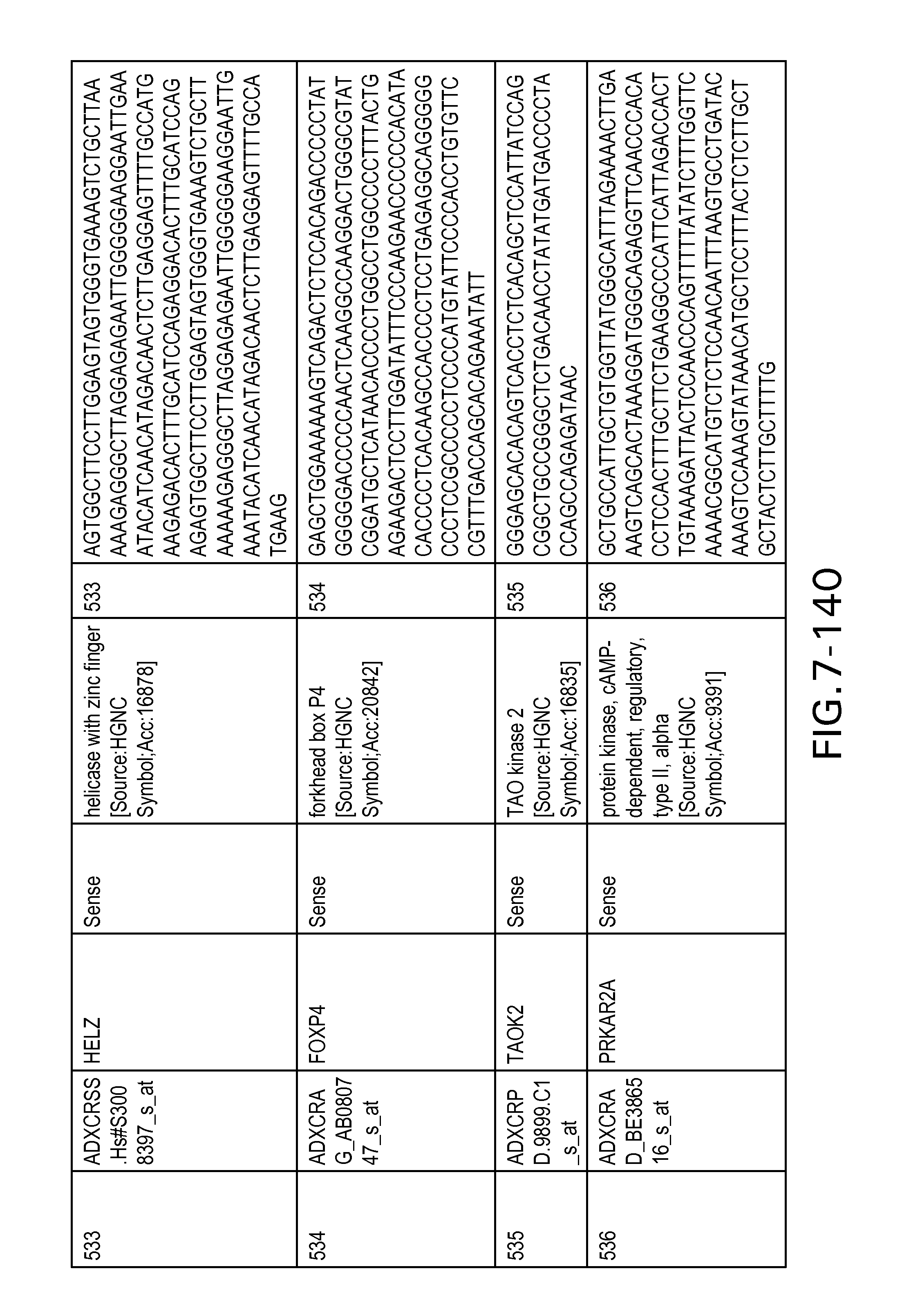
D00147
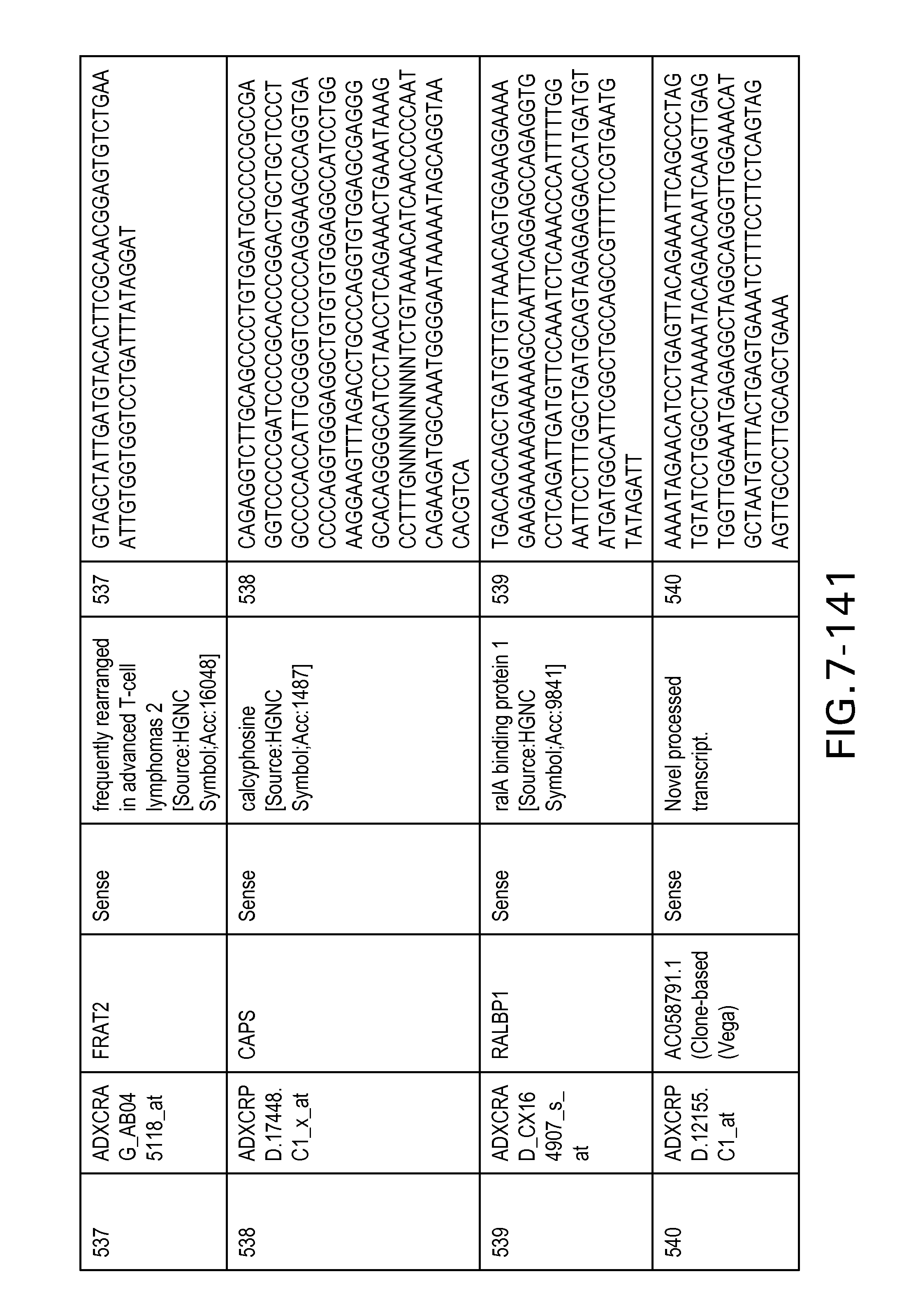
D00148
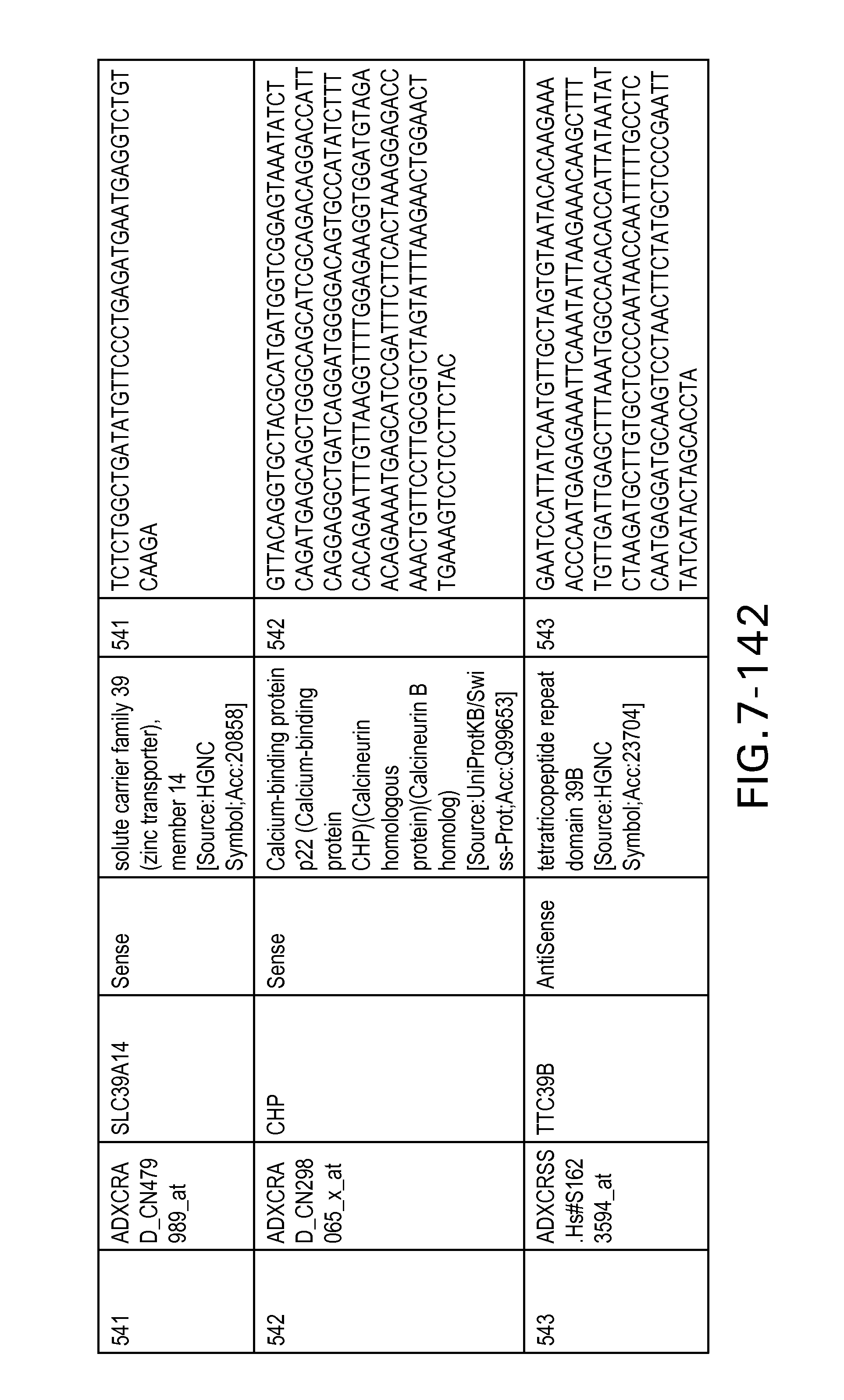
D00149
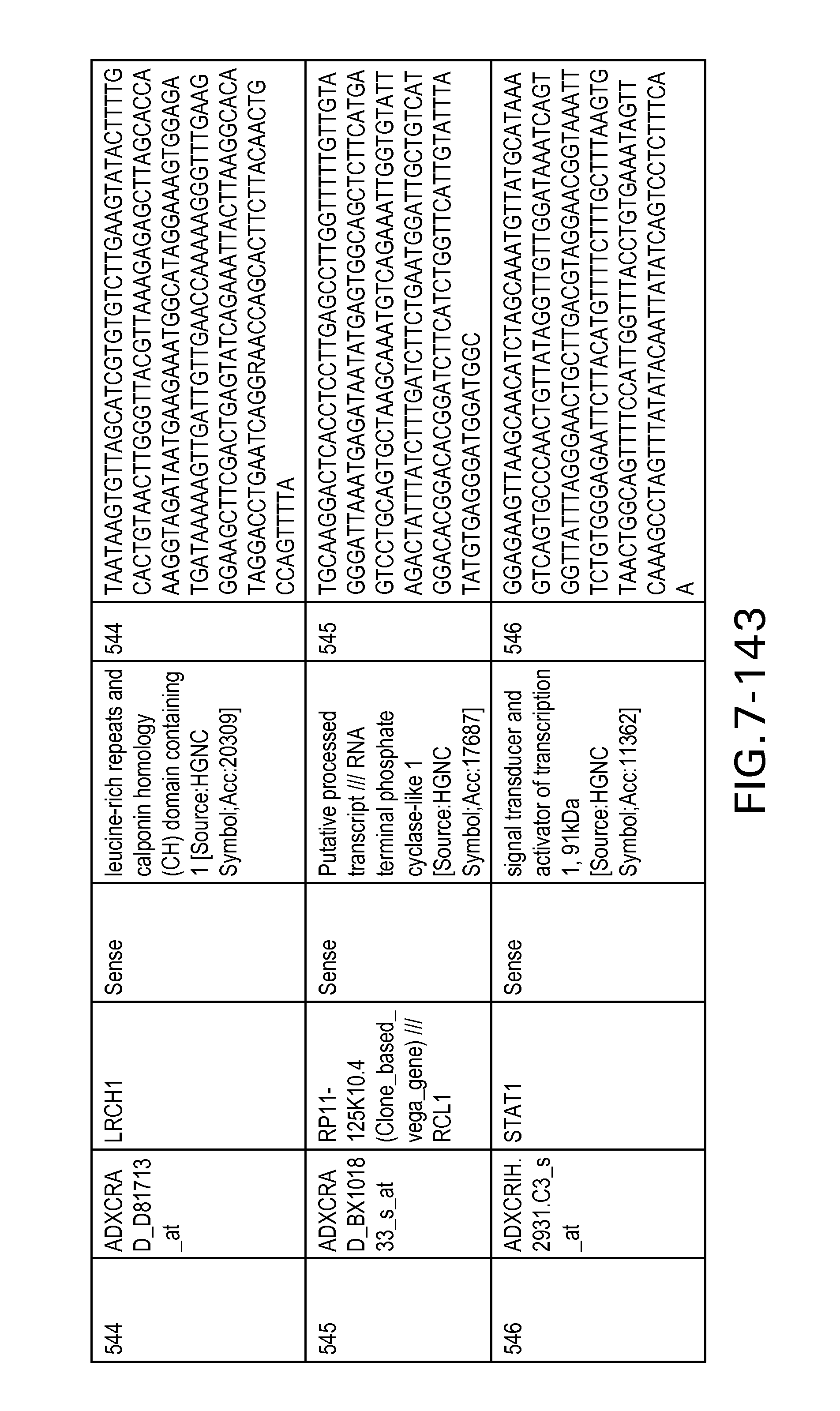
D00150
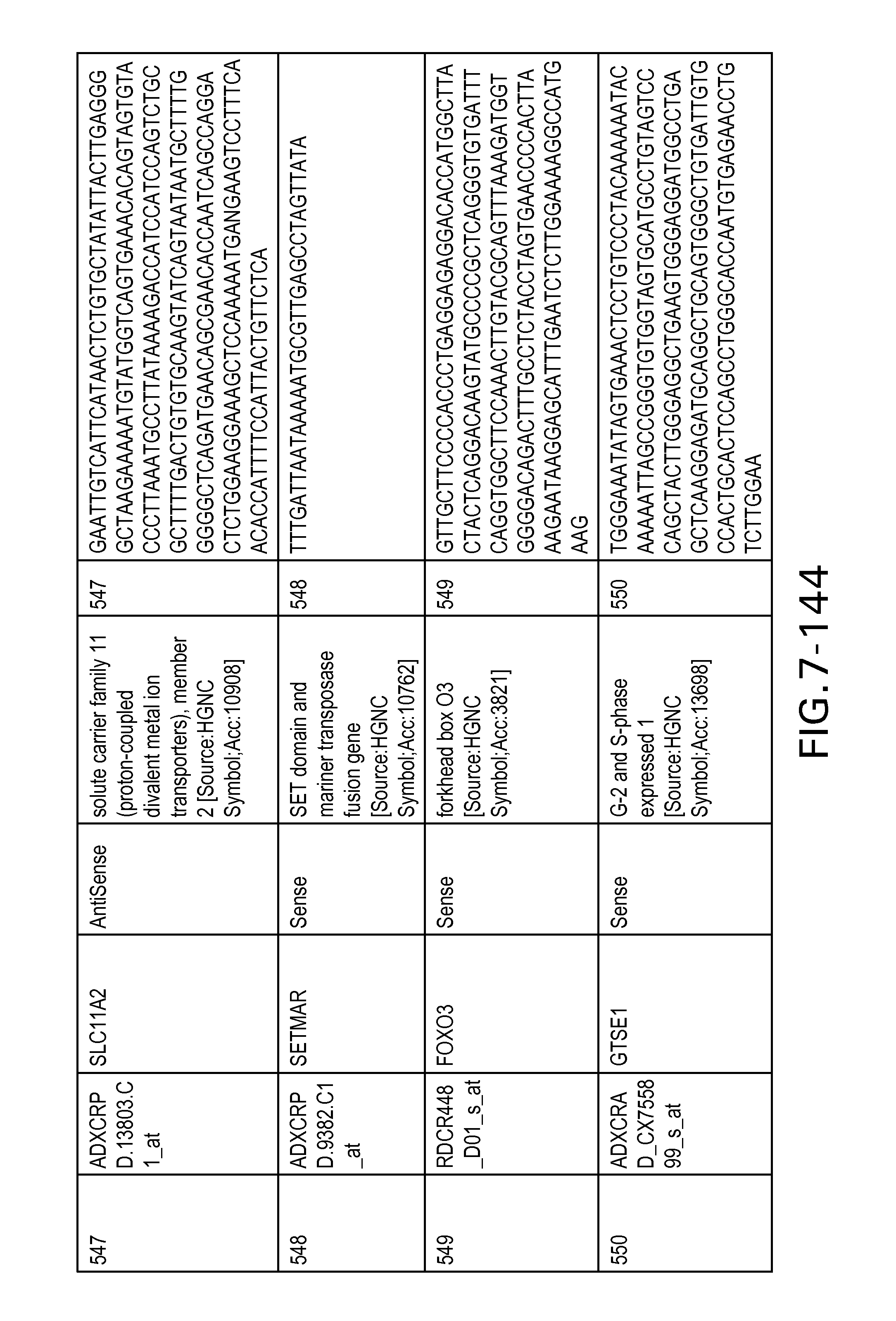
D00151
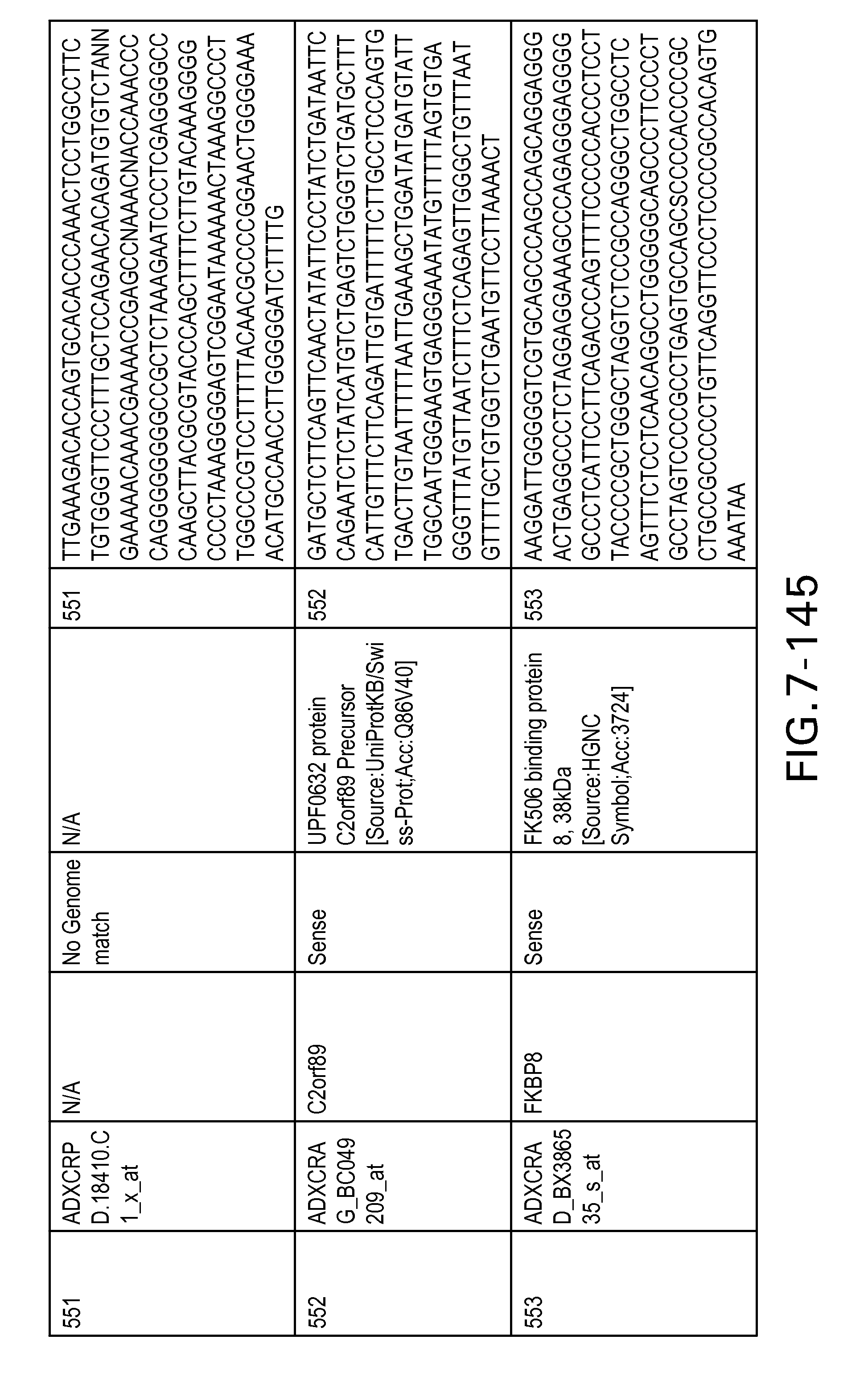
D00152
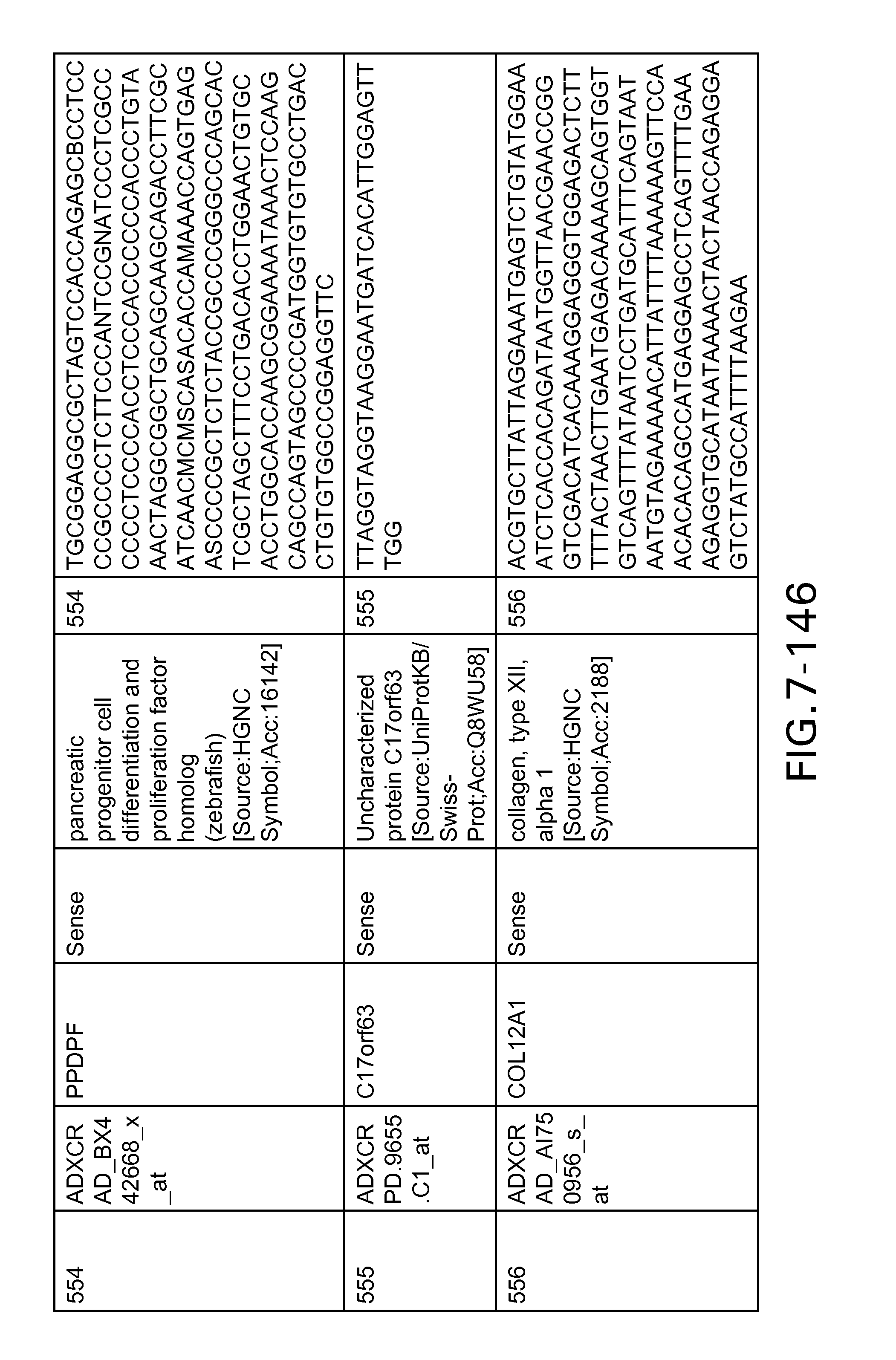
D00153
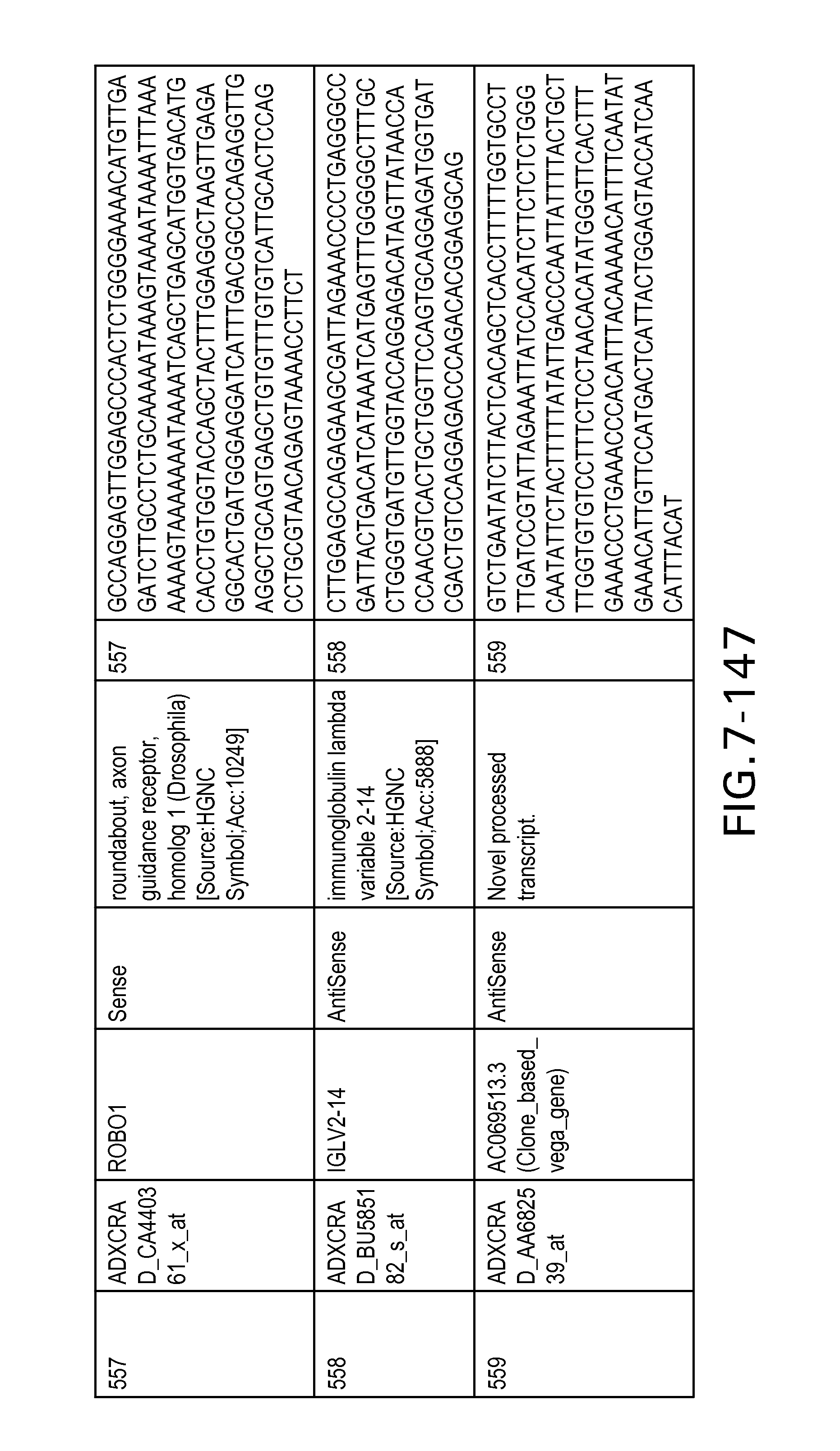
D00154
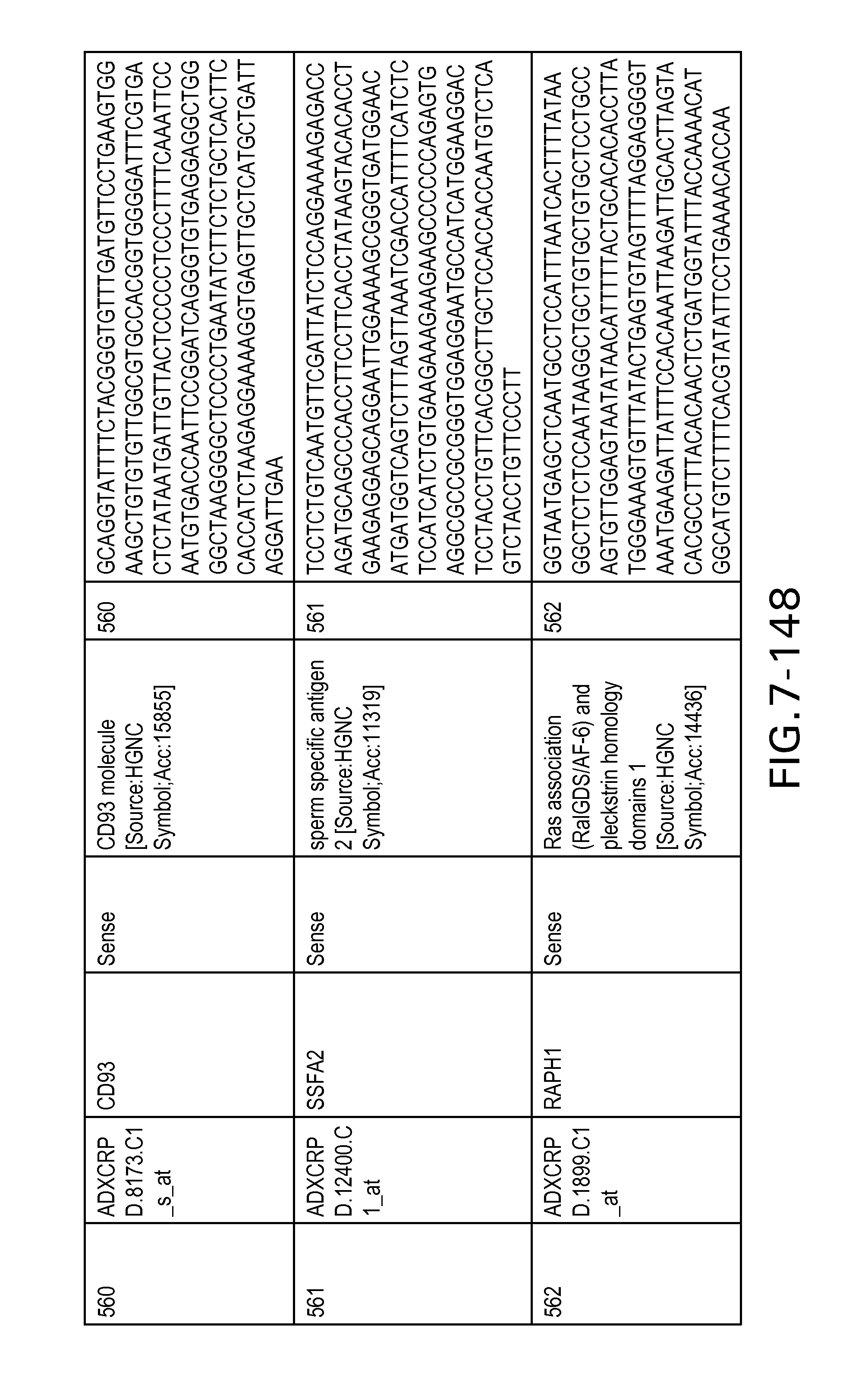
D00155
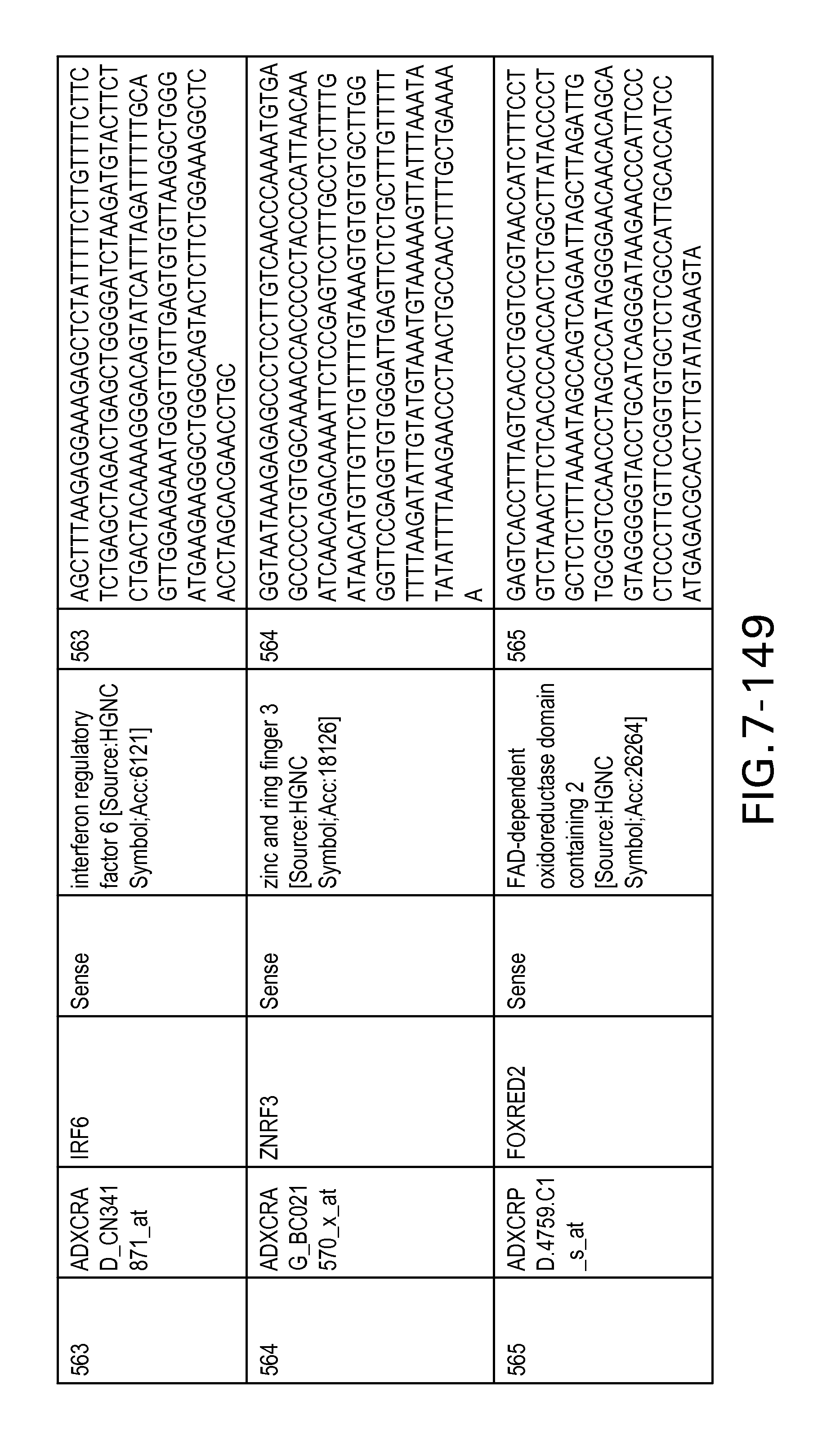
D00156
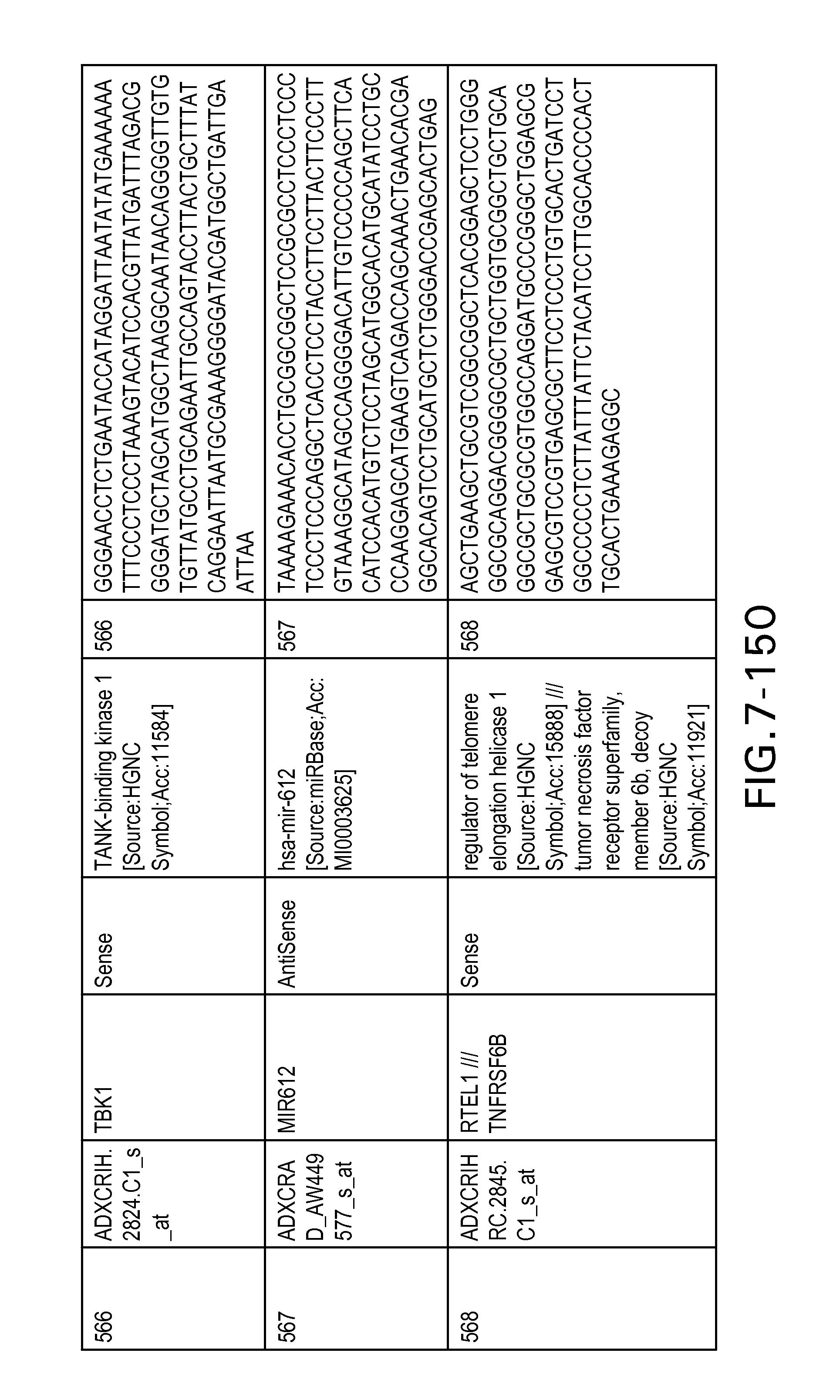
D00157
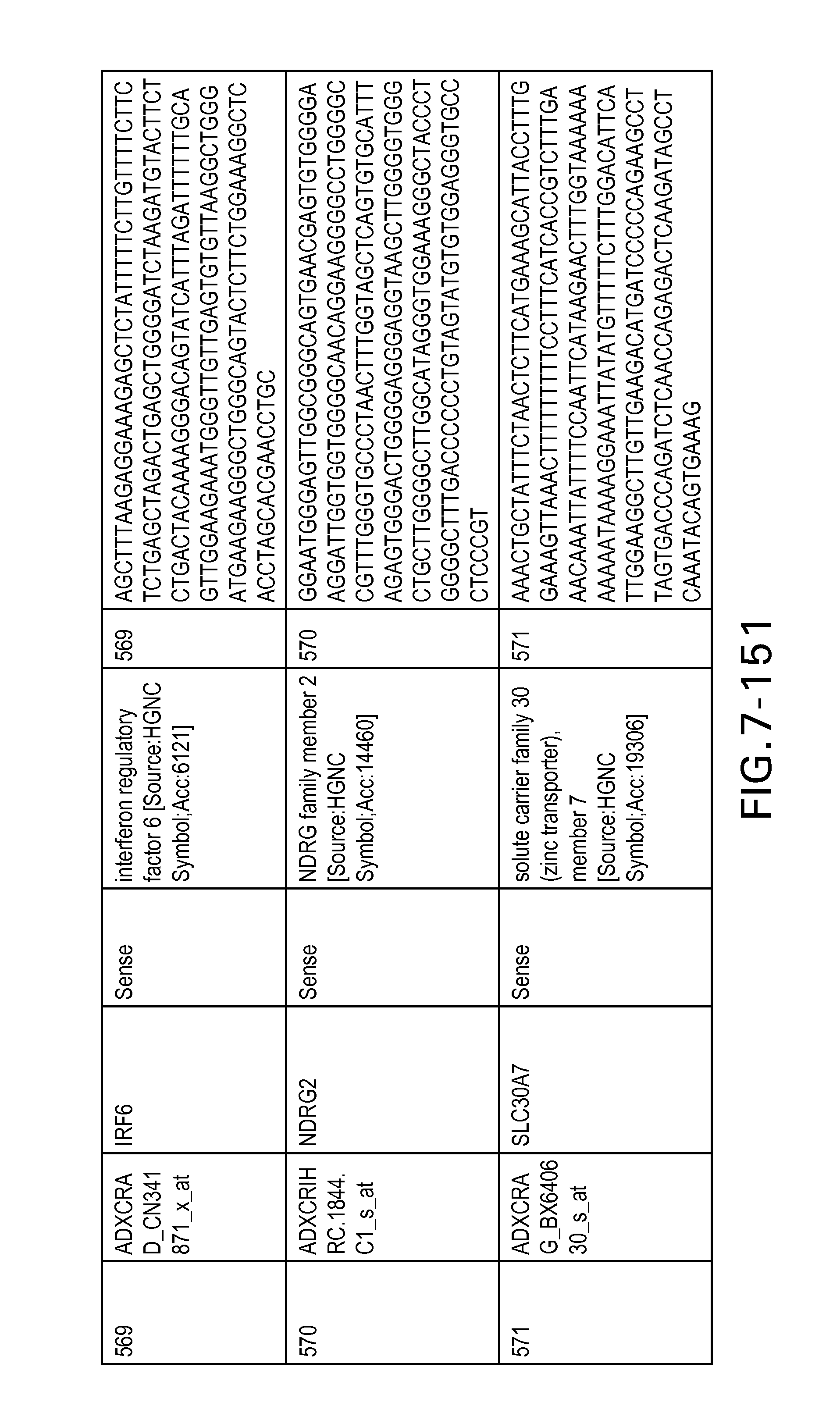
D00158

D00159
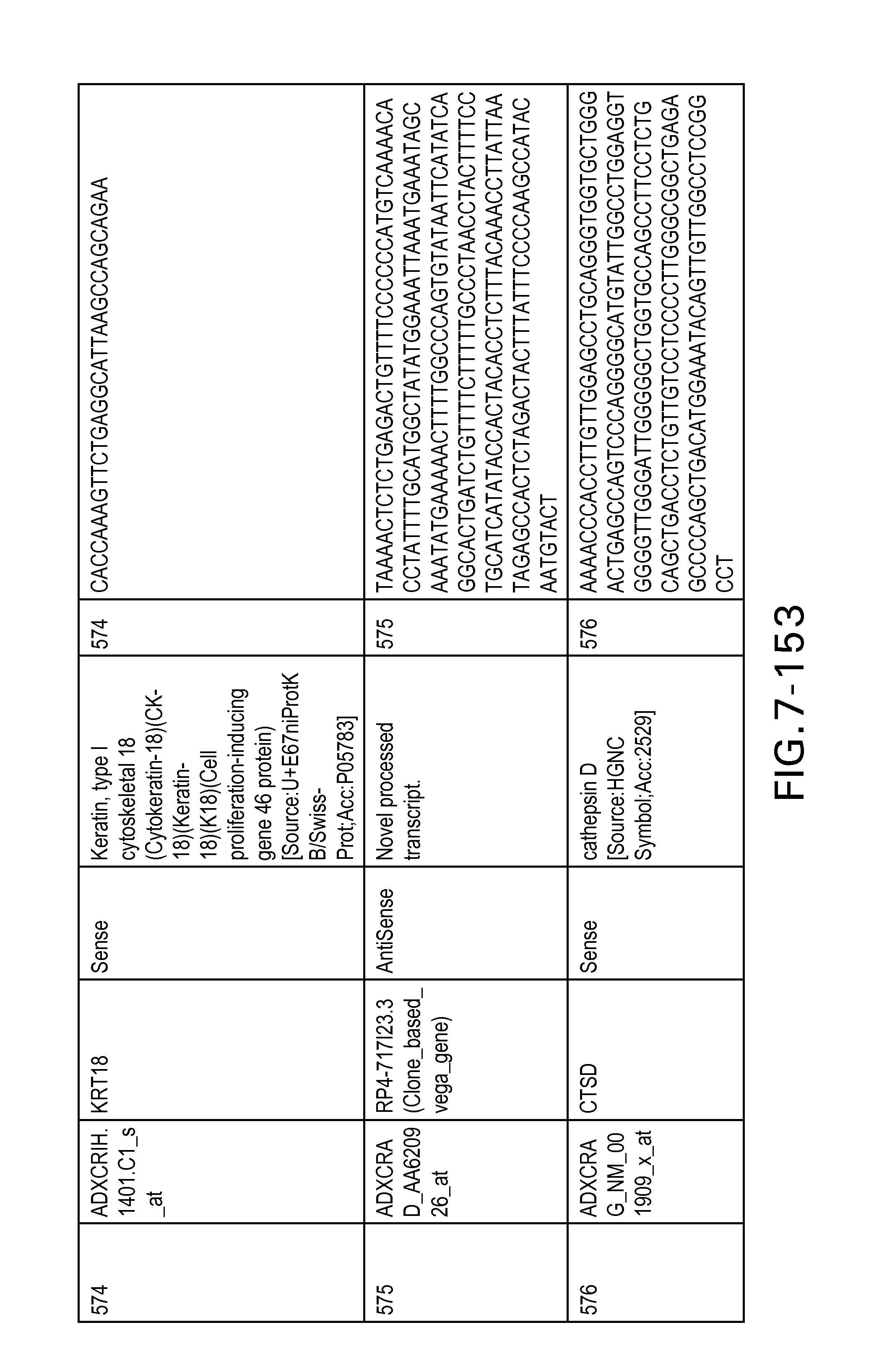
D00160

D00161
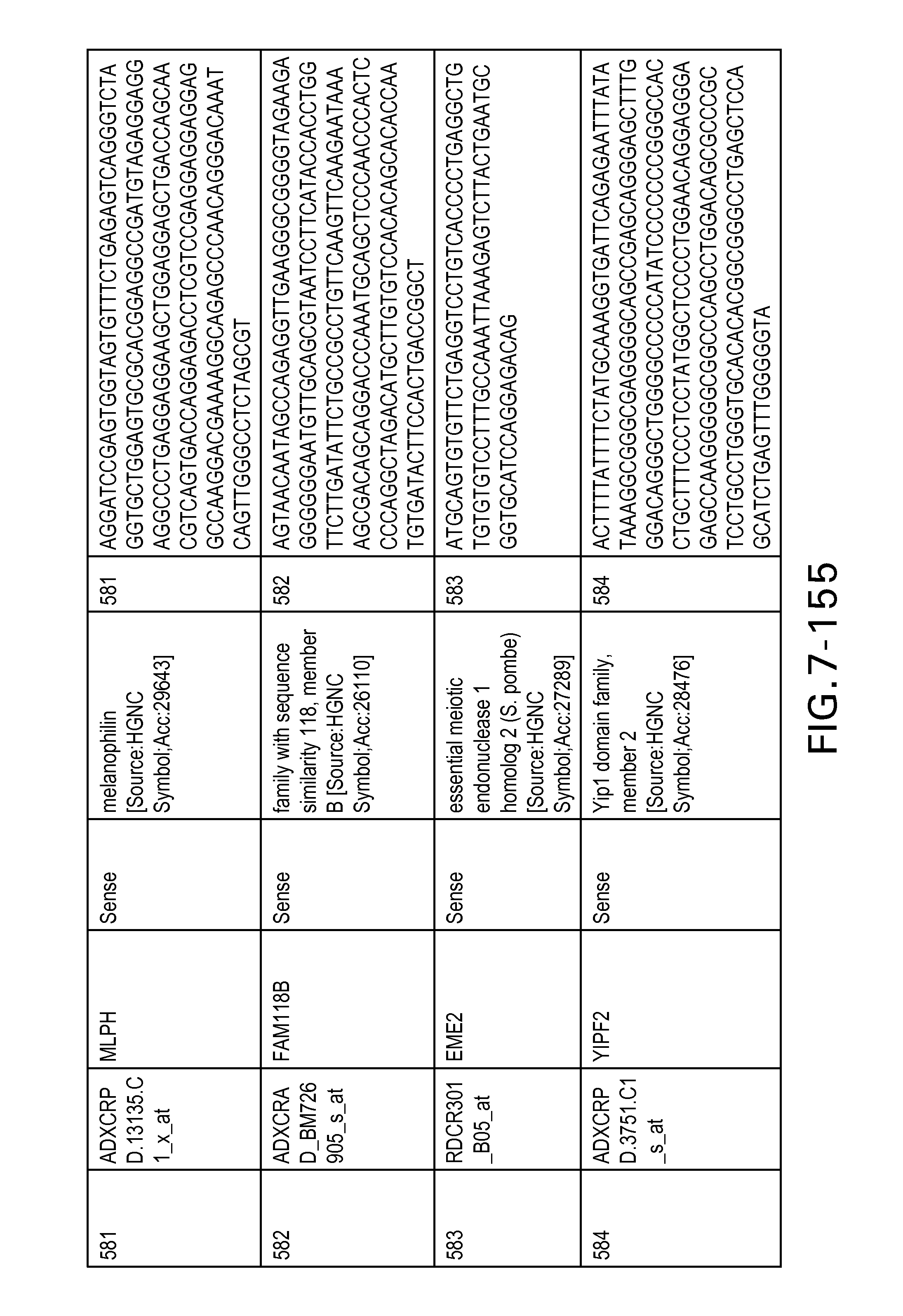
D00162
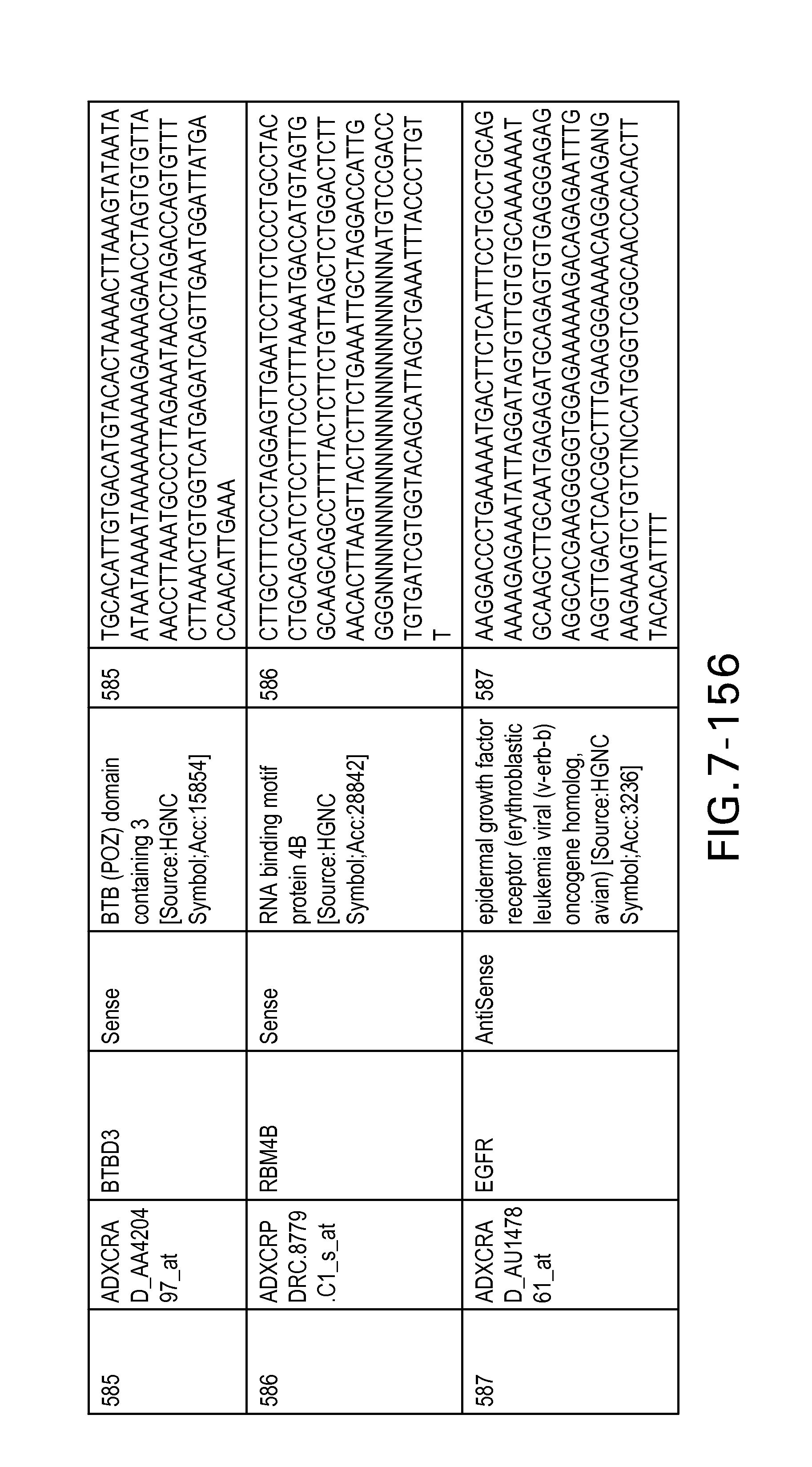
D00163
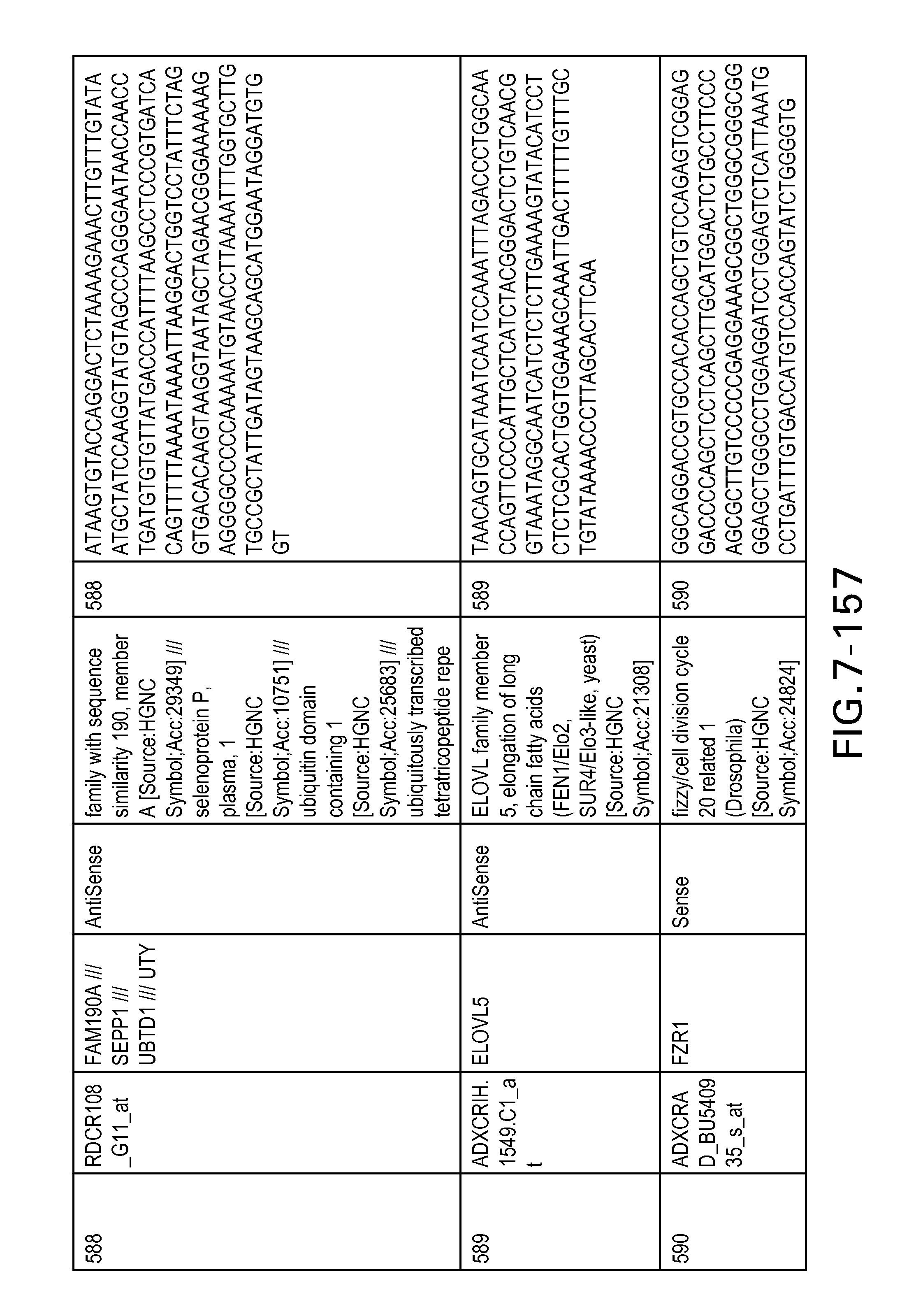
D00164
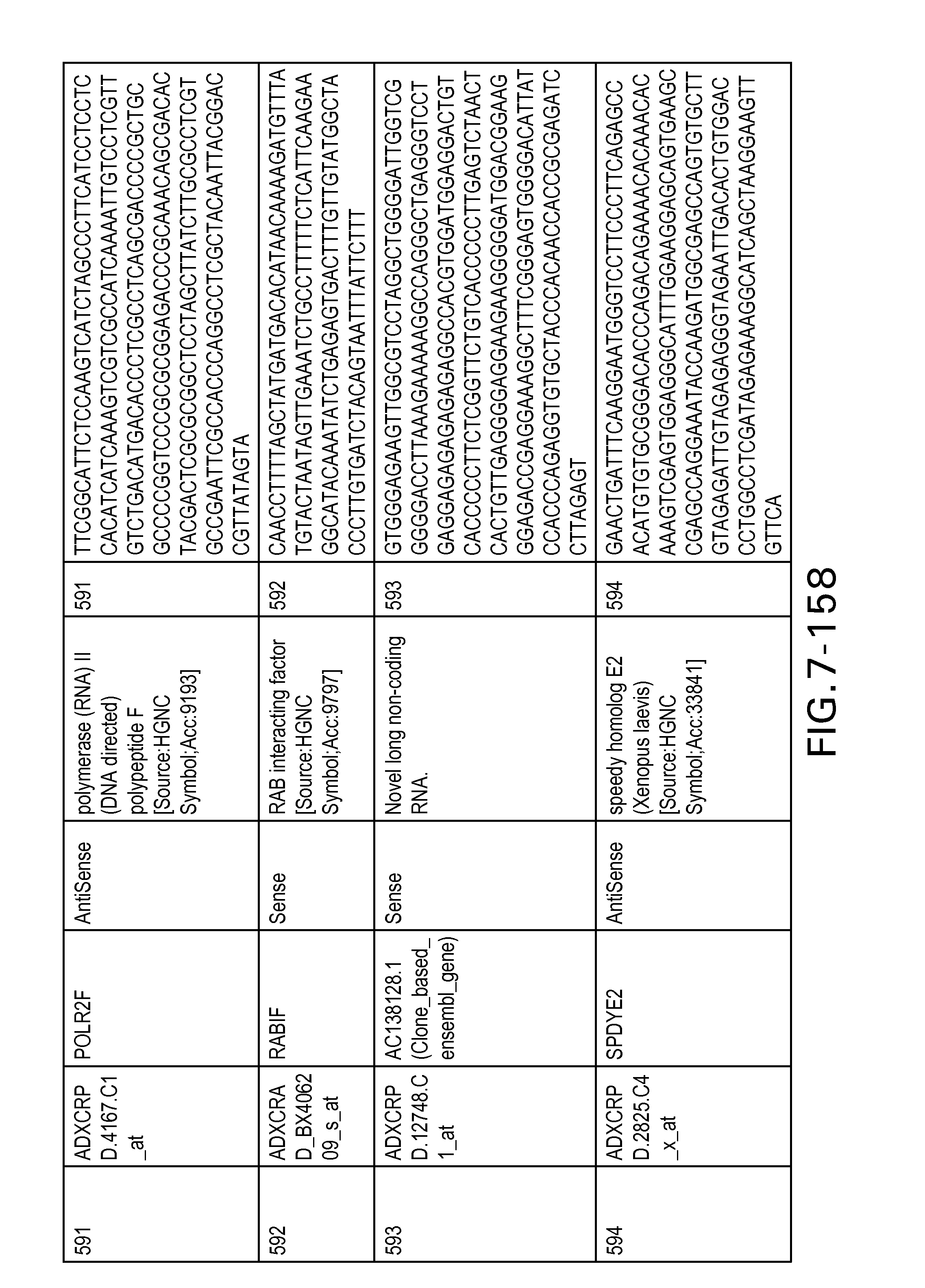
D00165
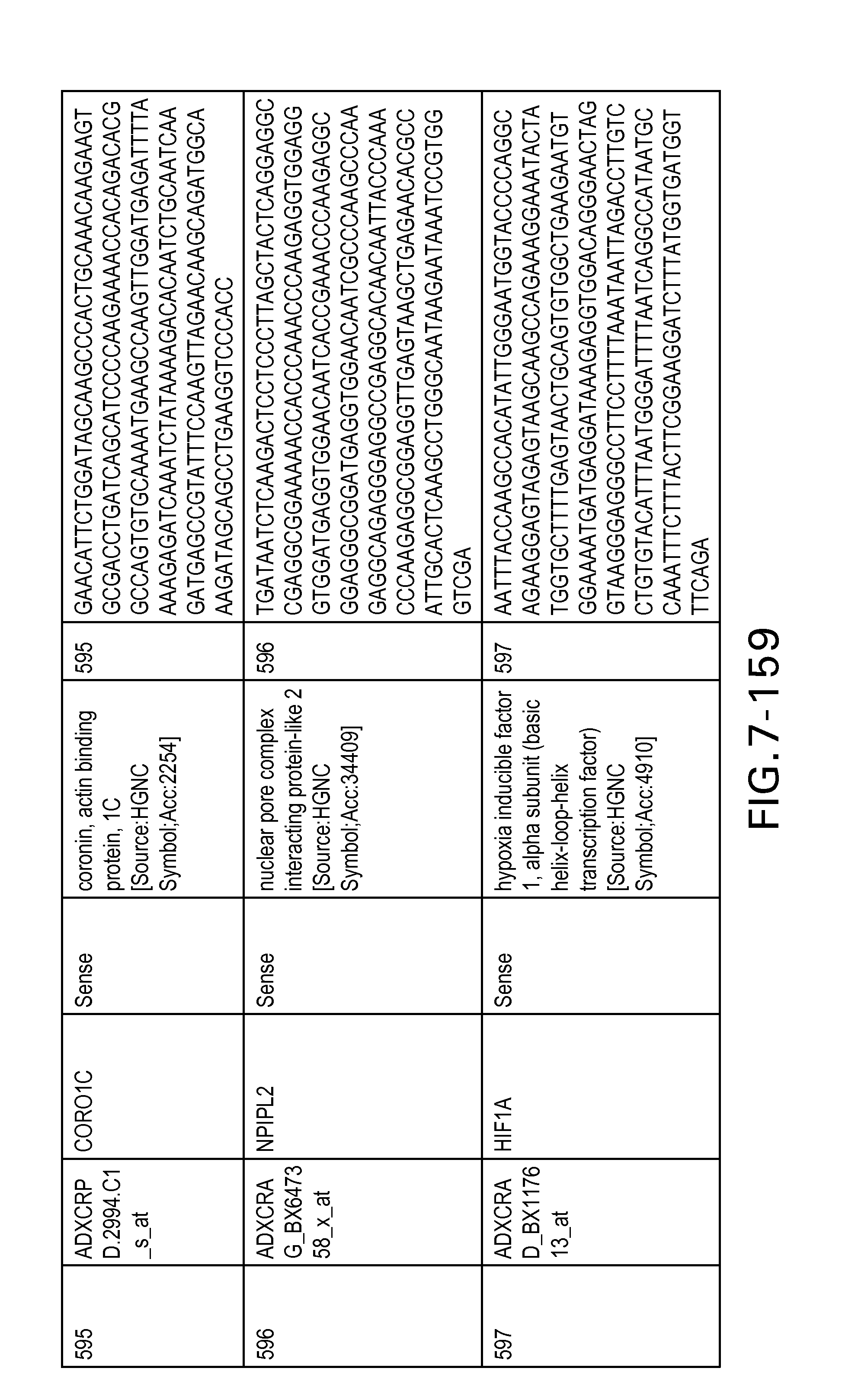
D00166
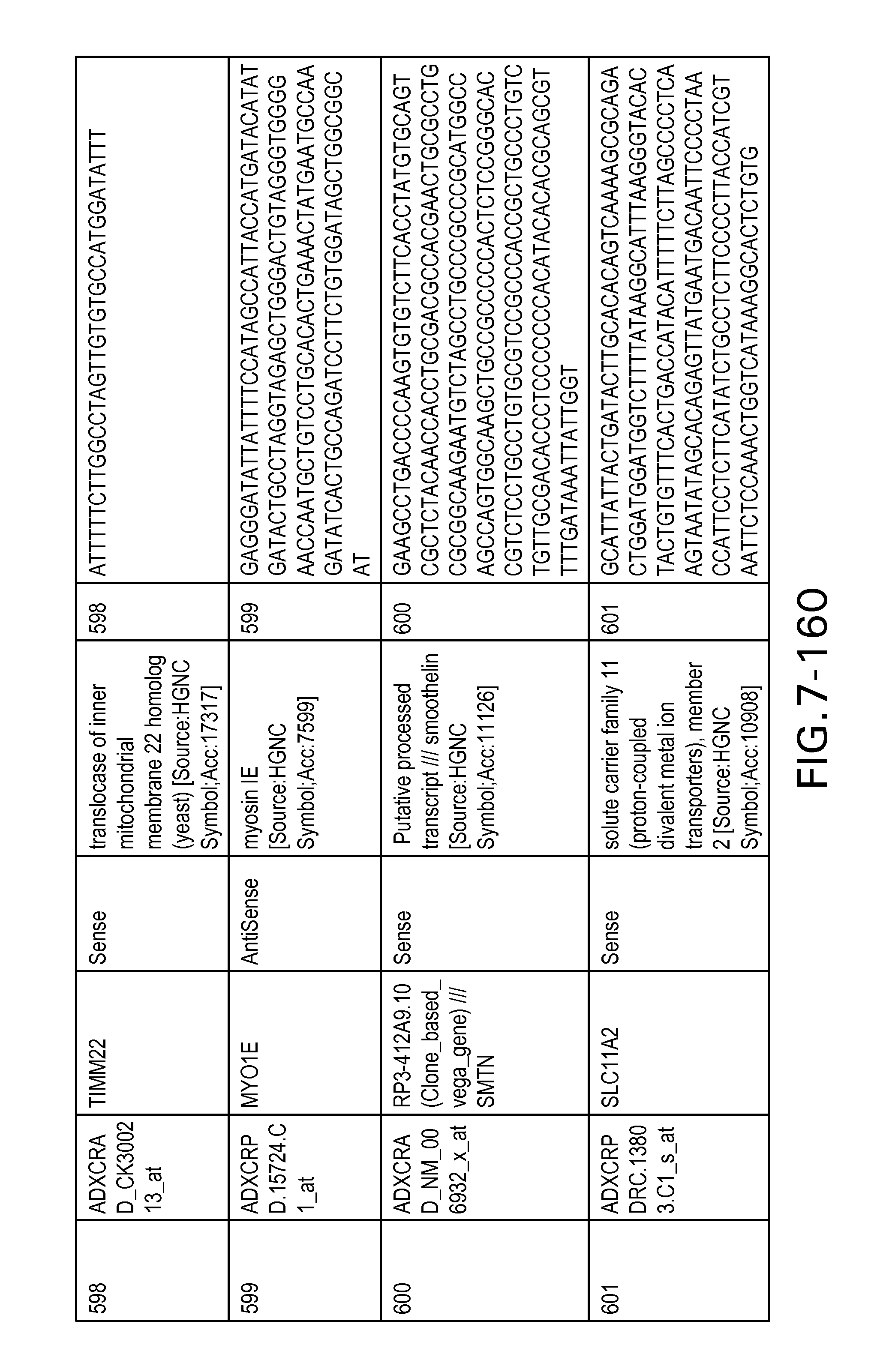
D00167
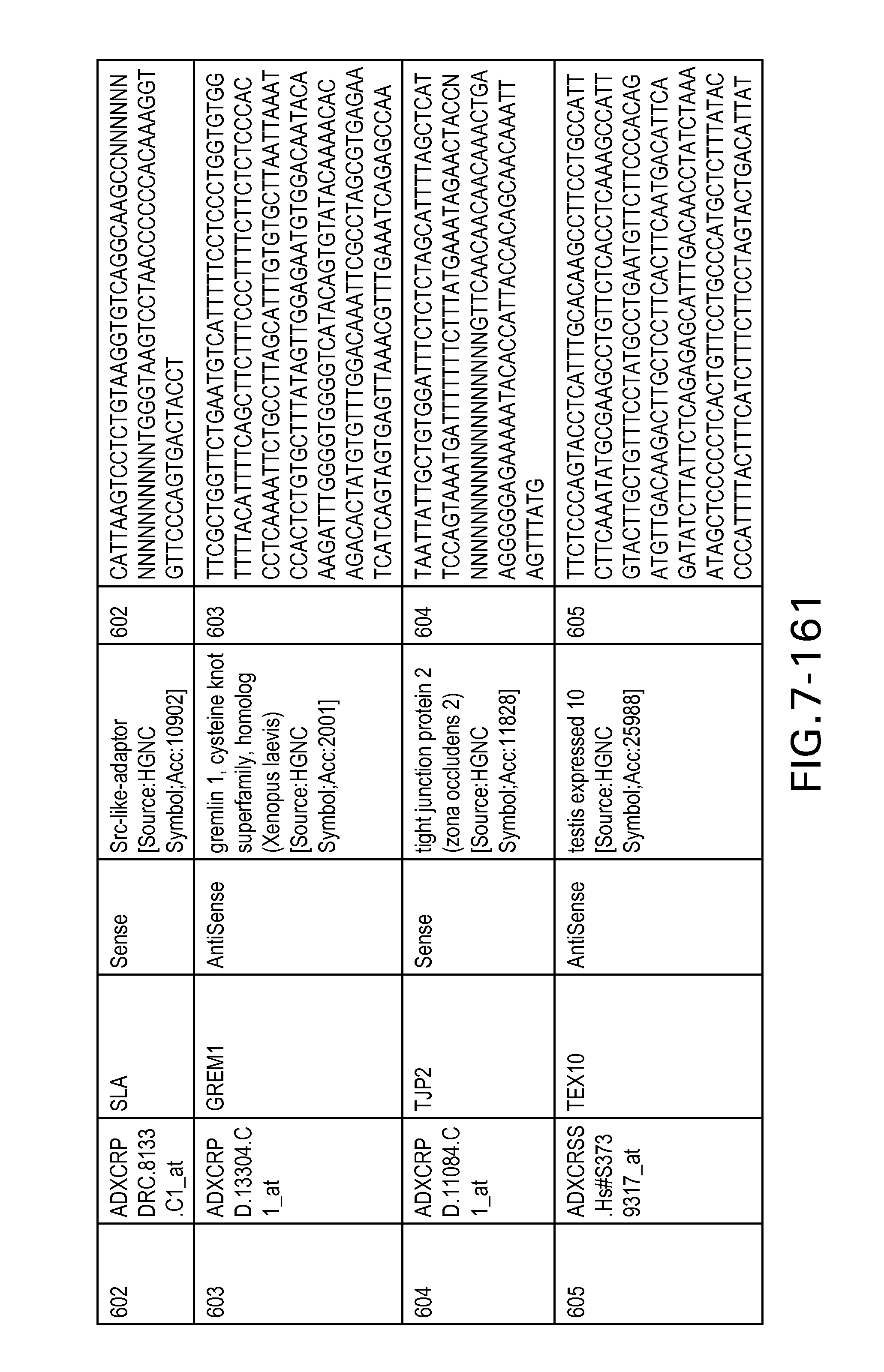
D00168
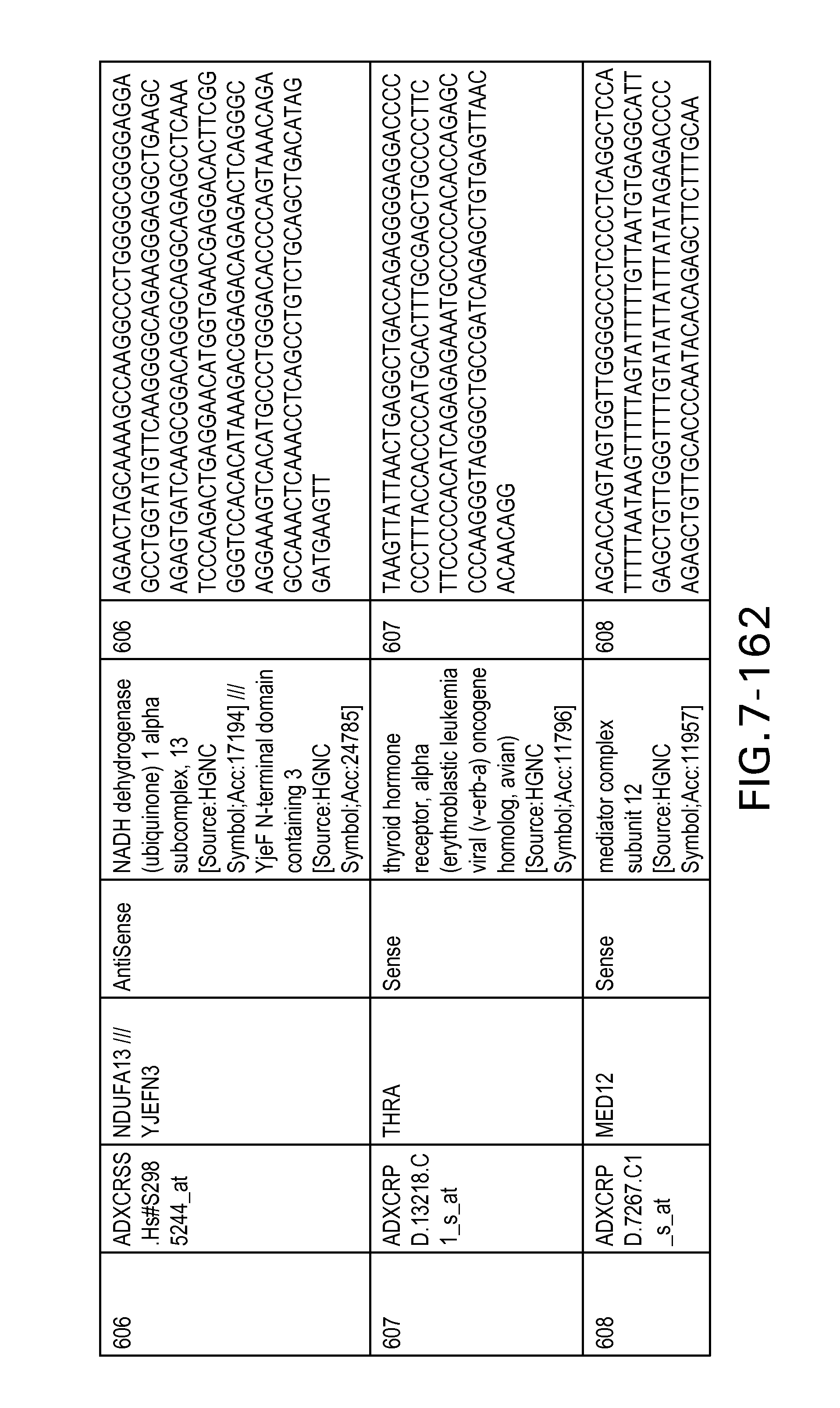
D00169
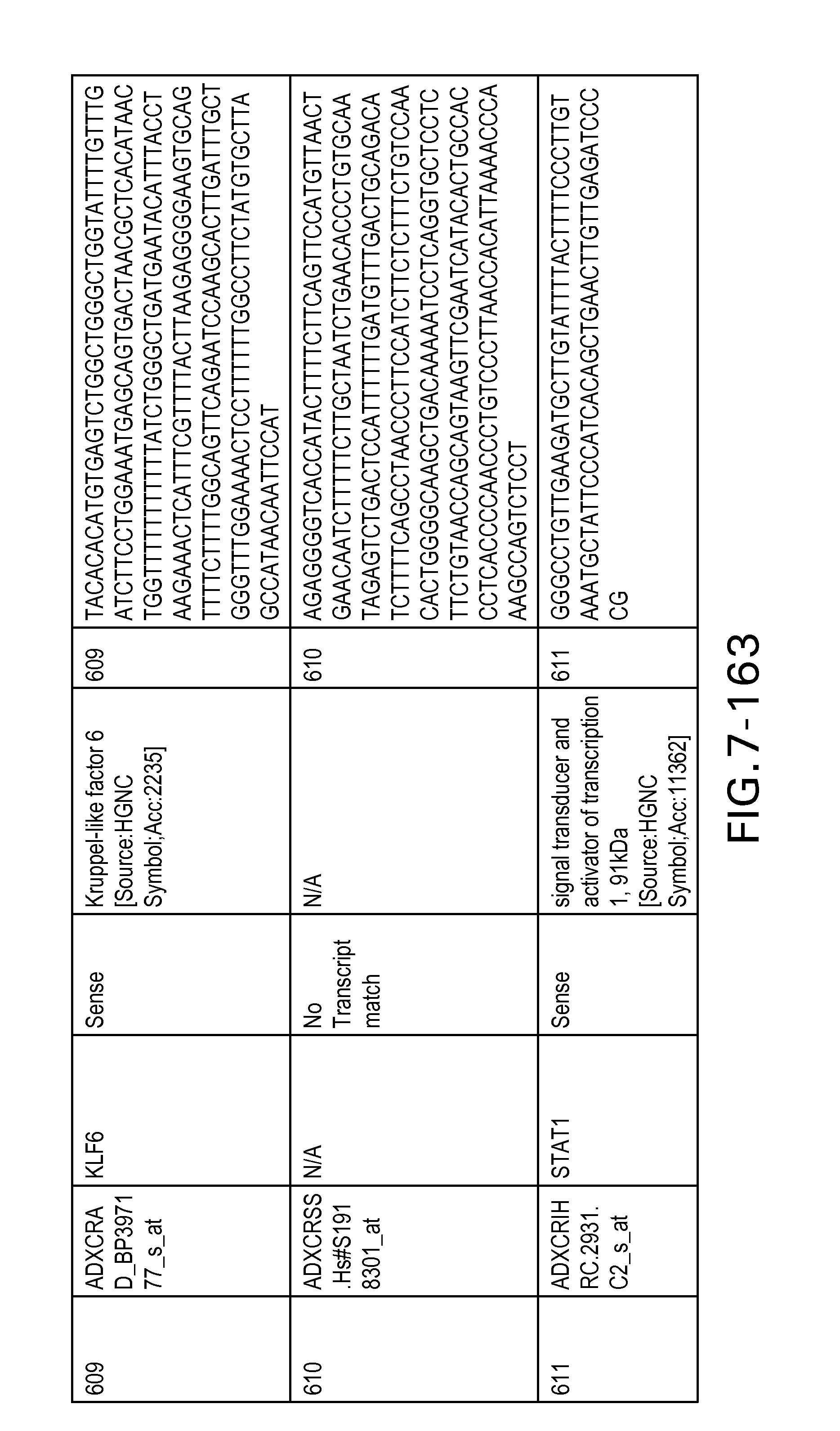
D00170
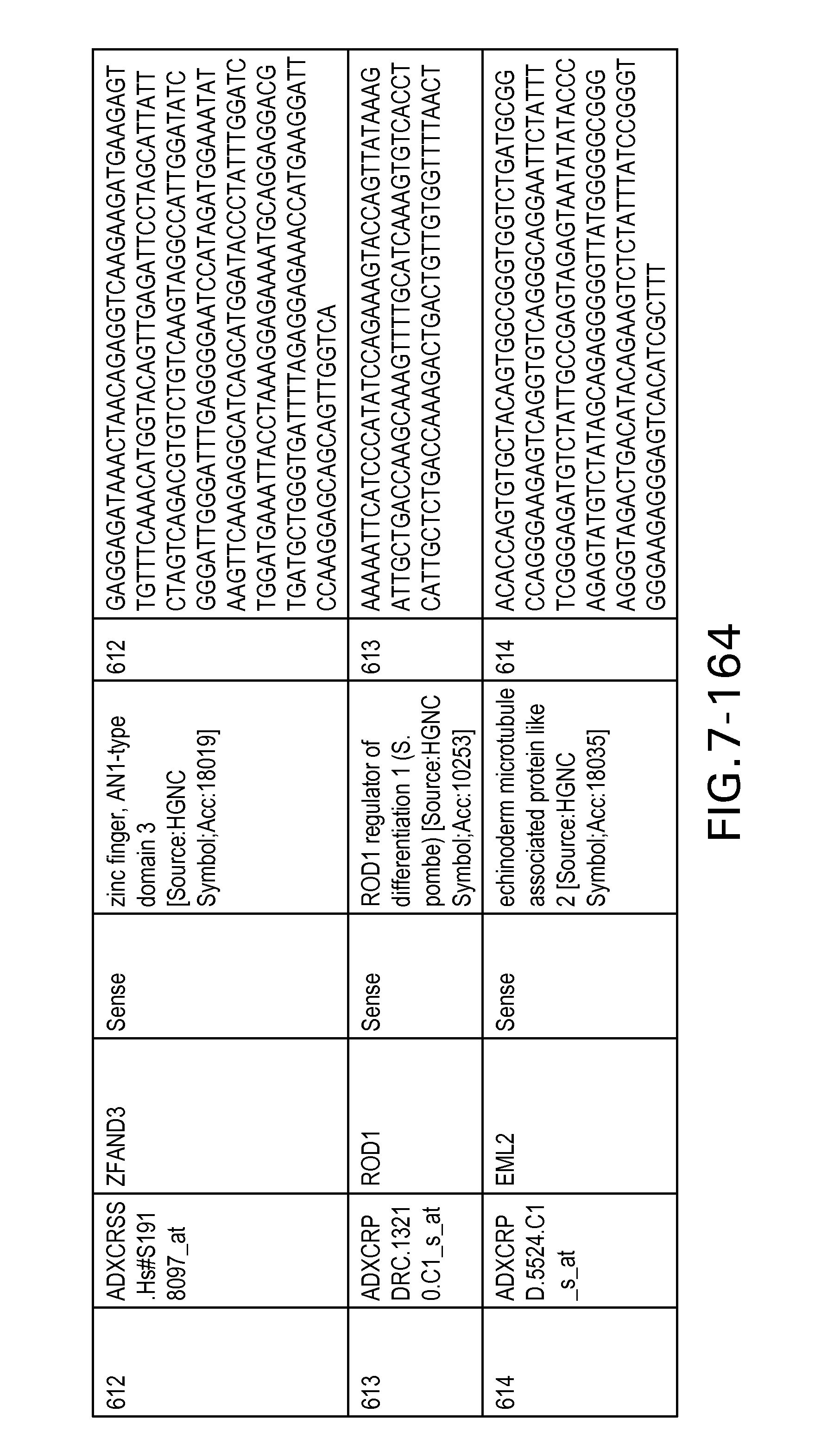
D00171

D00172
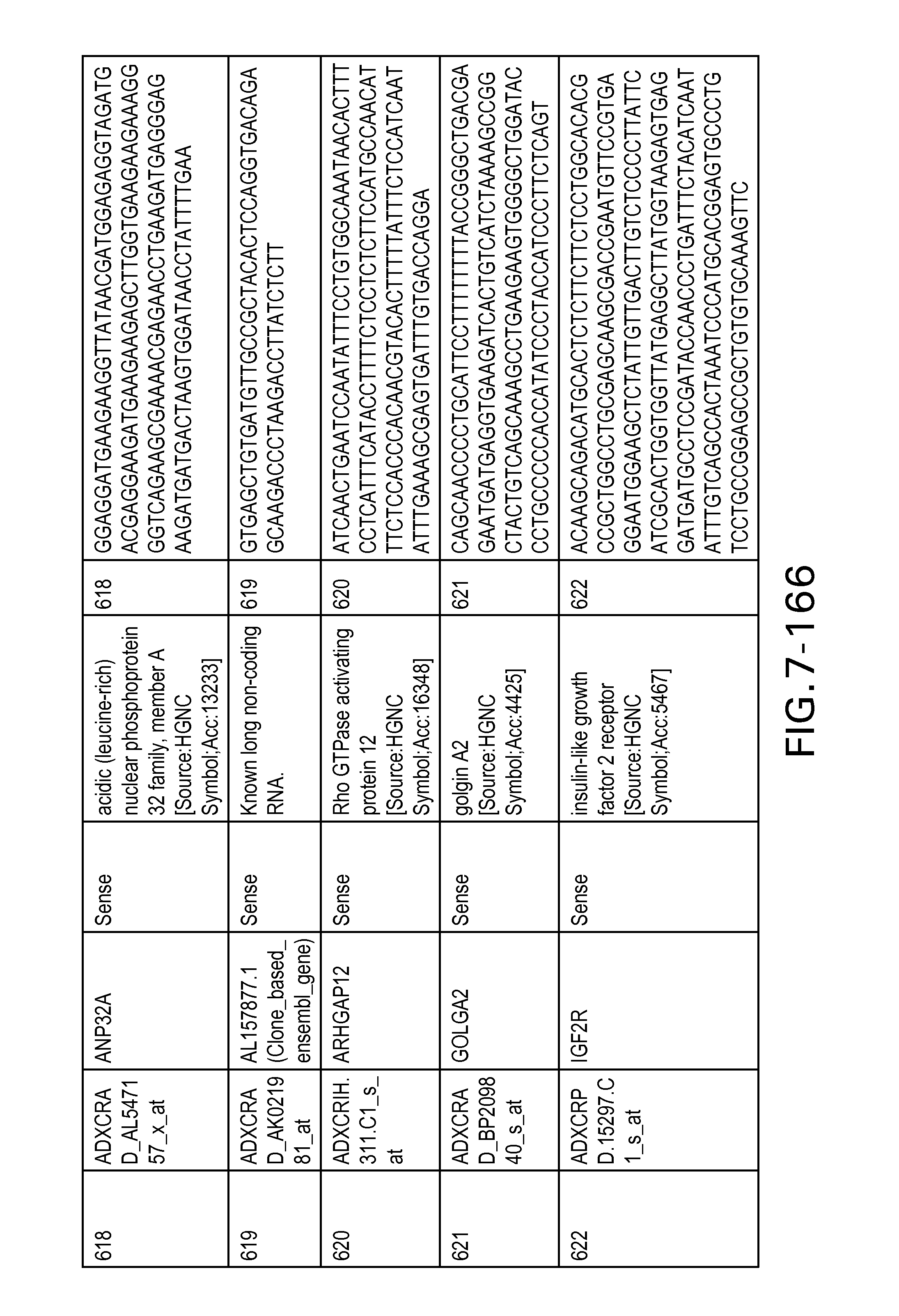
D00173
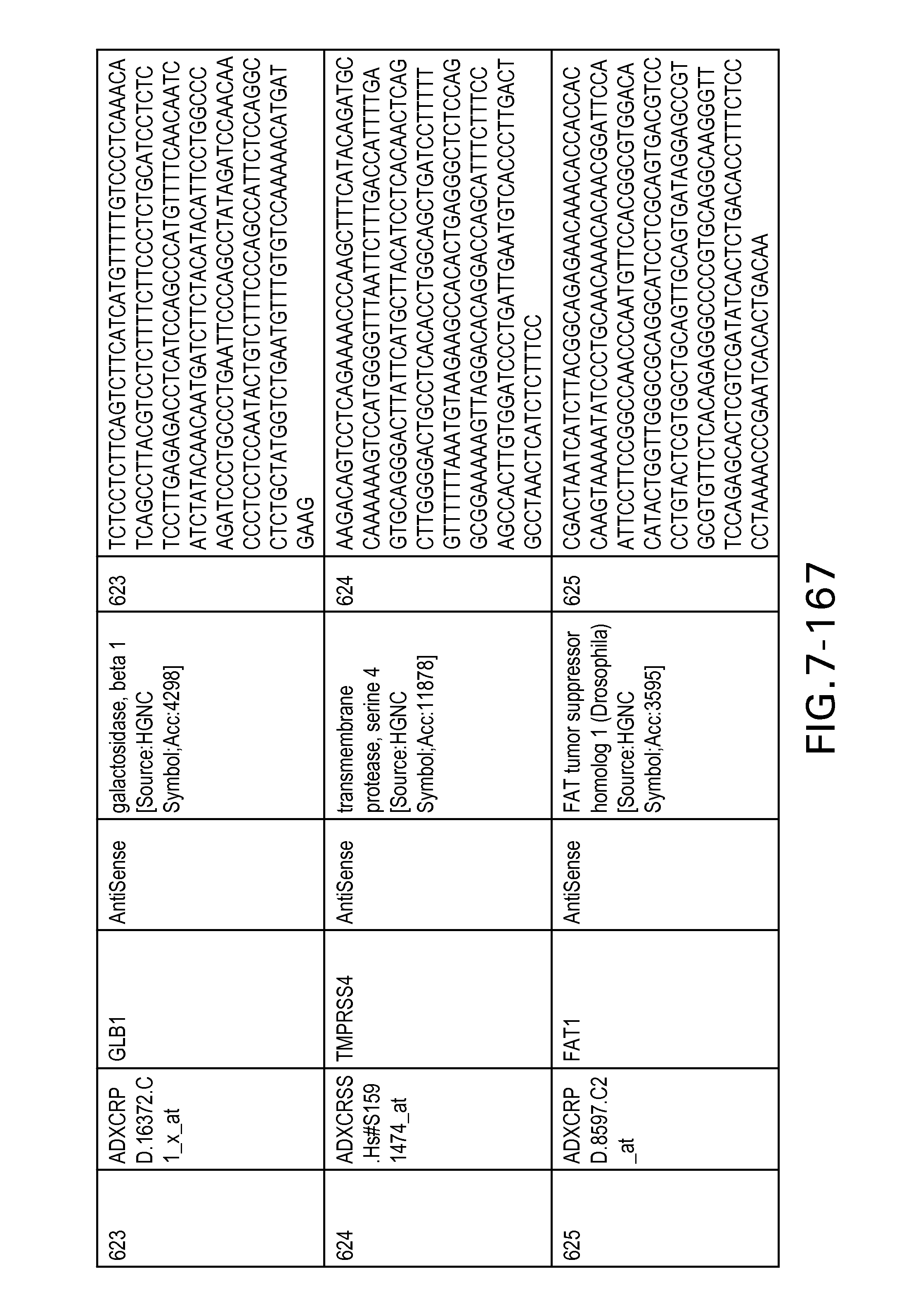
D00174
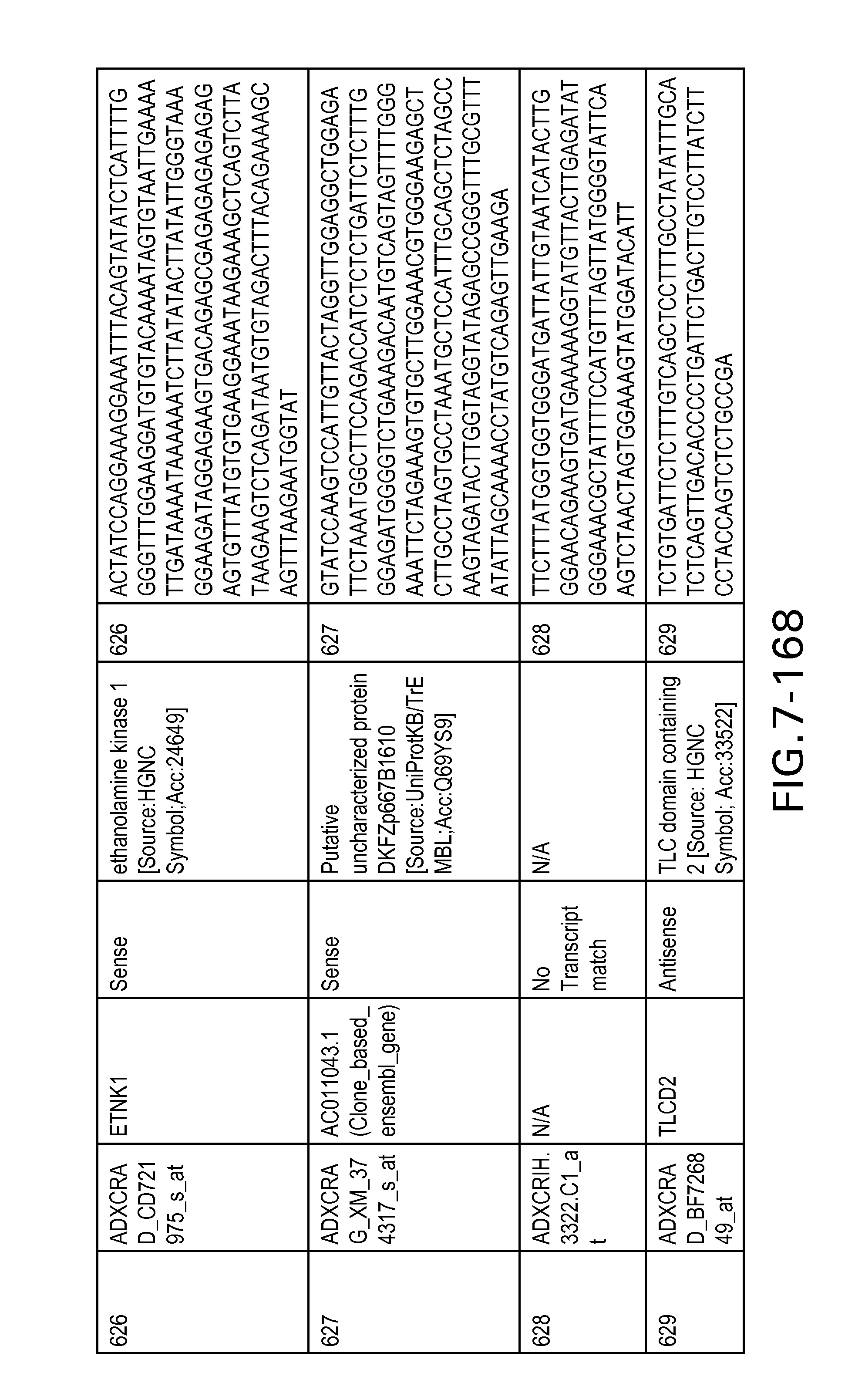
D00175
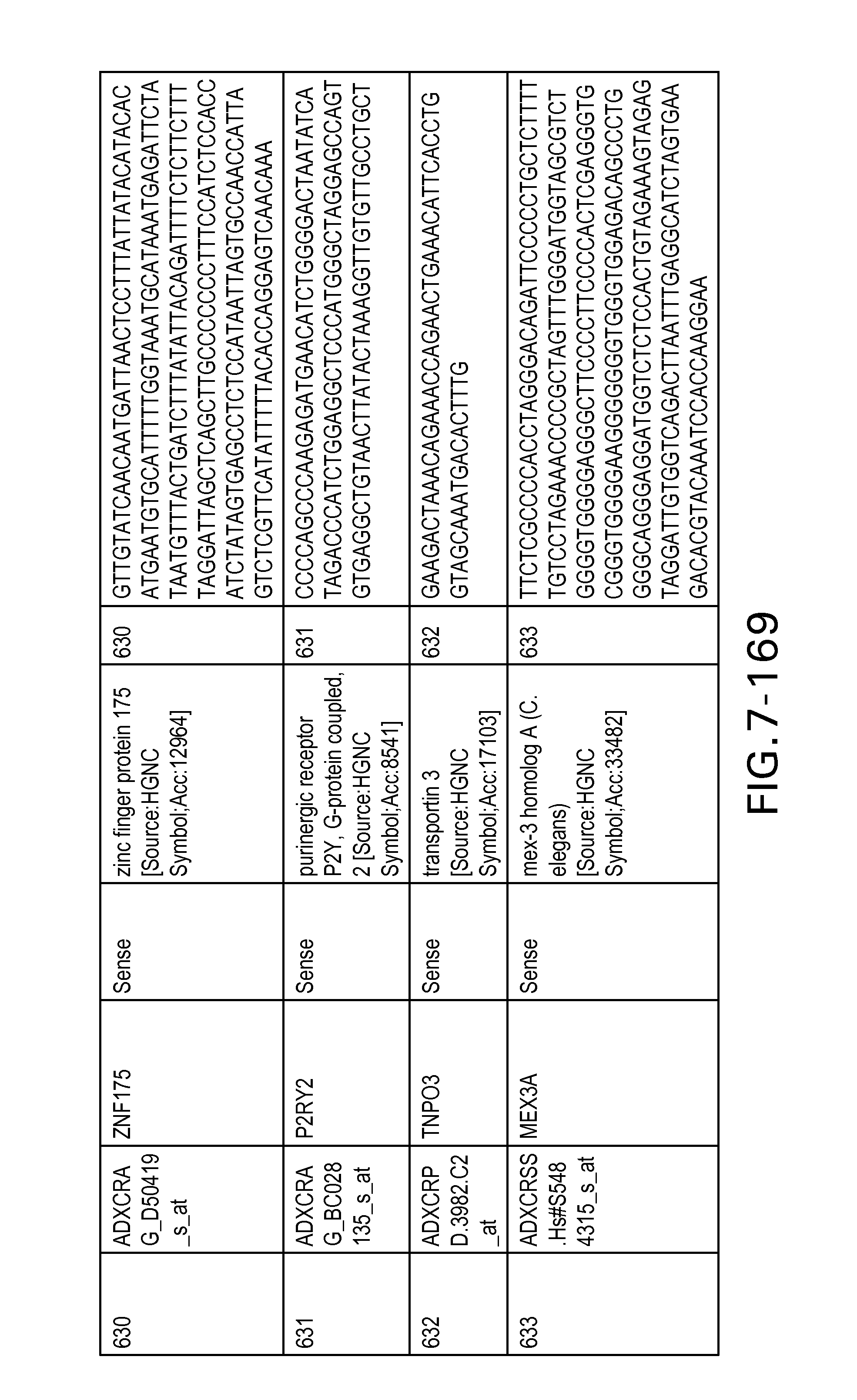
D00176
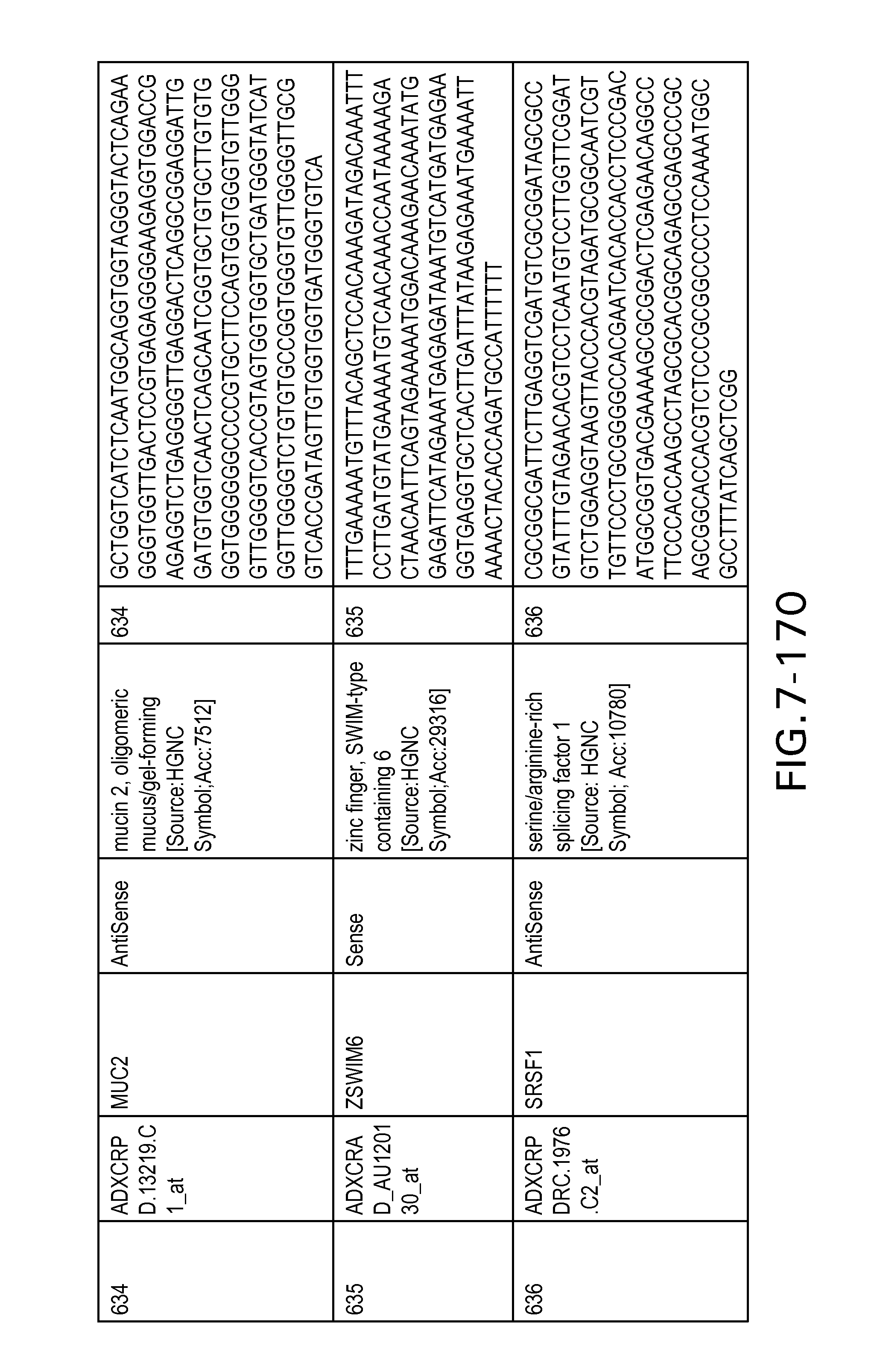
P00001

S00001
XML
uspto.report is an independent third-party trademark research tool that is not affiliated, endorsed, or sponsored by the United States Patent and Trademark Office (USPTO) or any other governmental organization. The information provided by uspto.report is based on publicly available data at the time of writing and is intended for informational purposes only.
While we strive to provide accurate and up-to-date information, we do not guarantee the accuracy, completeness, reliability, or suitability of the information displayed on this site. The use of this site is at your own risk. Any reliance you place on such information is therefore strictly at your own risk.
All official trademark data, including owner information, should be verified by visiting the official USPTO website at www.uspto.gov. This site is not intended to replace professional legal advice and should not be used as a substitute for consulting with a legal professional who is knowledgeable about trademark law.